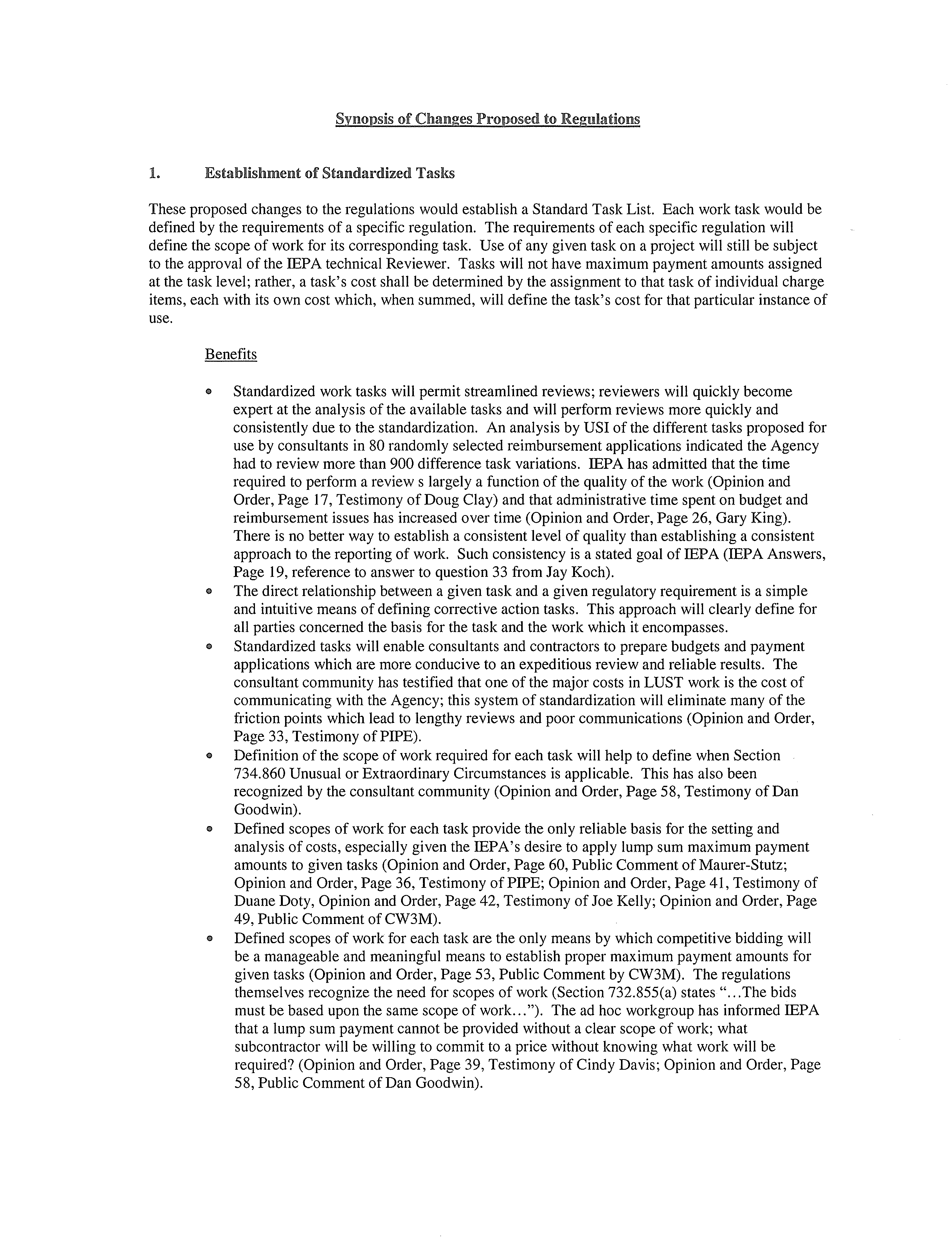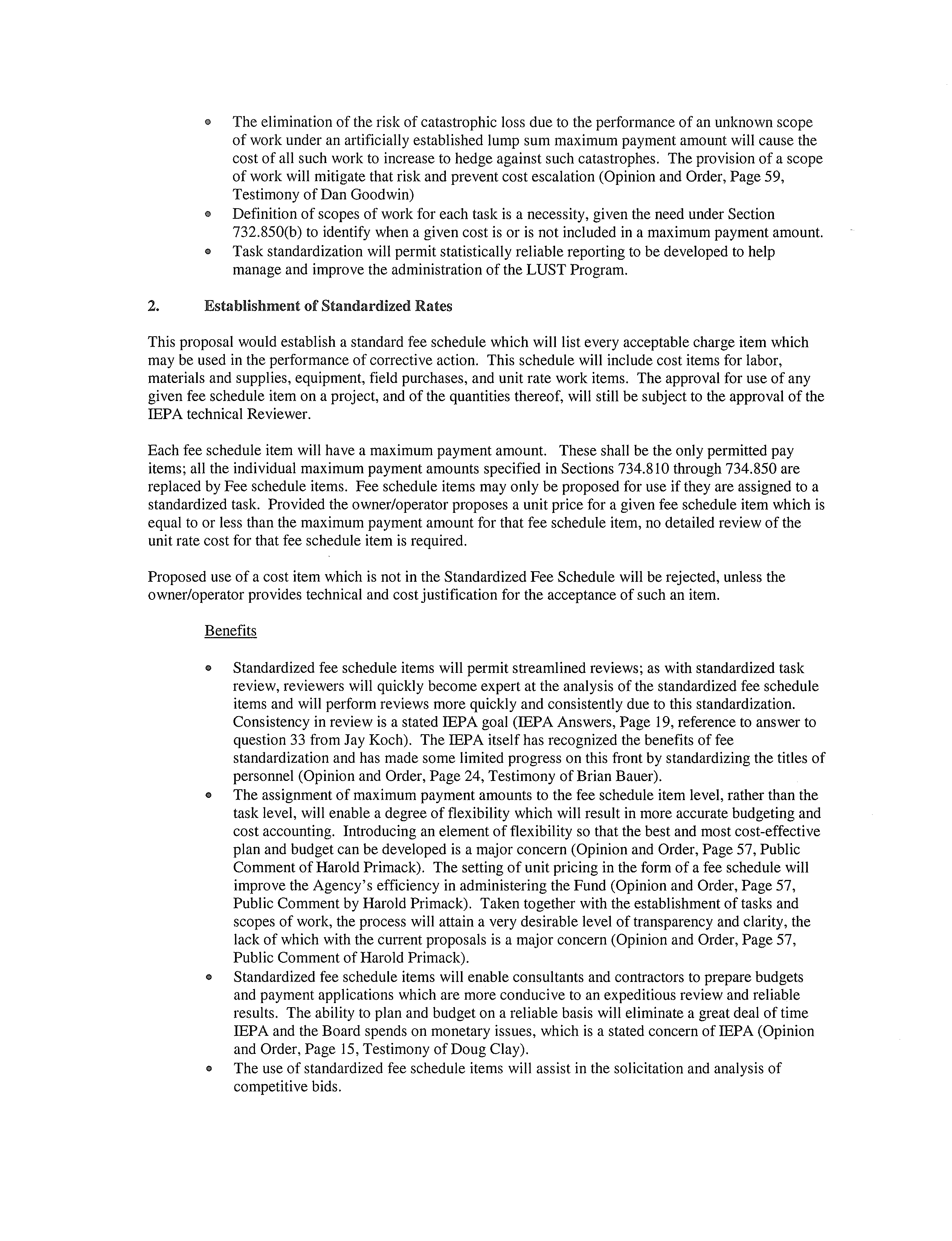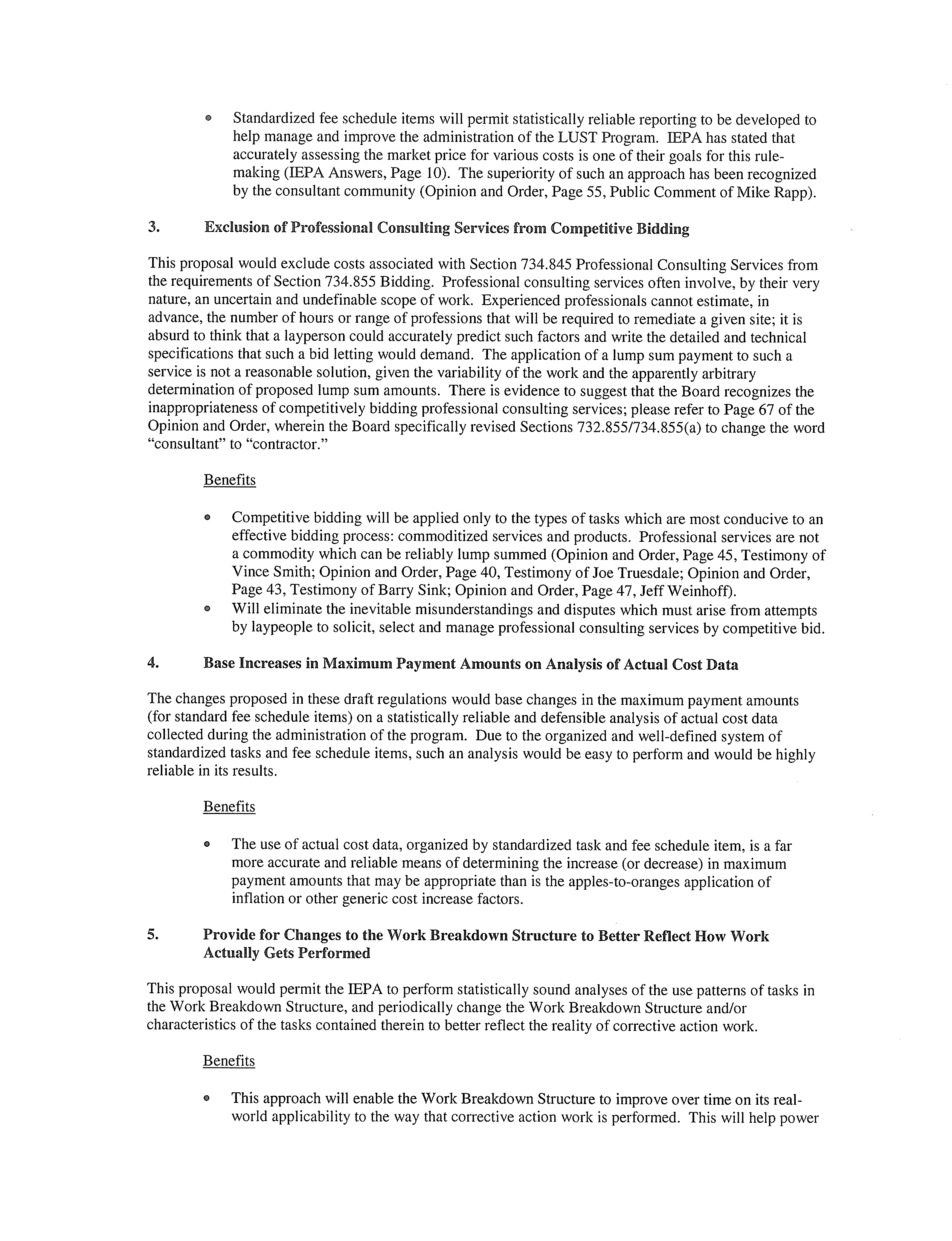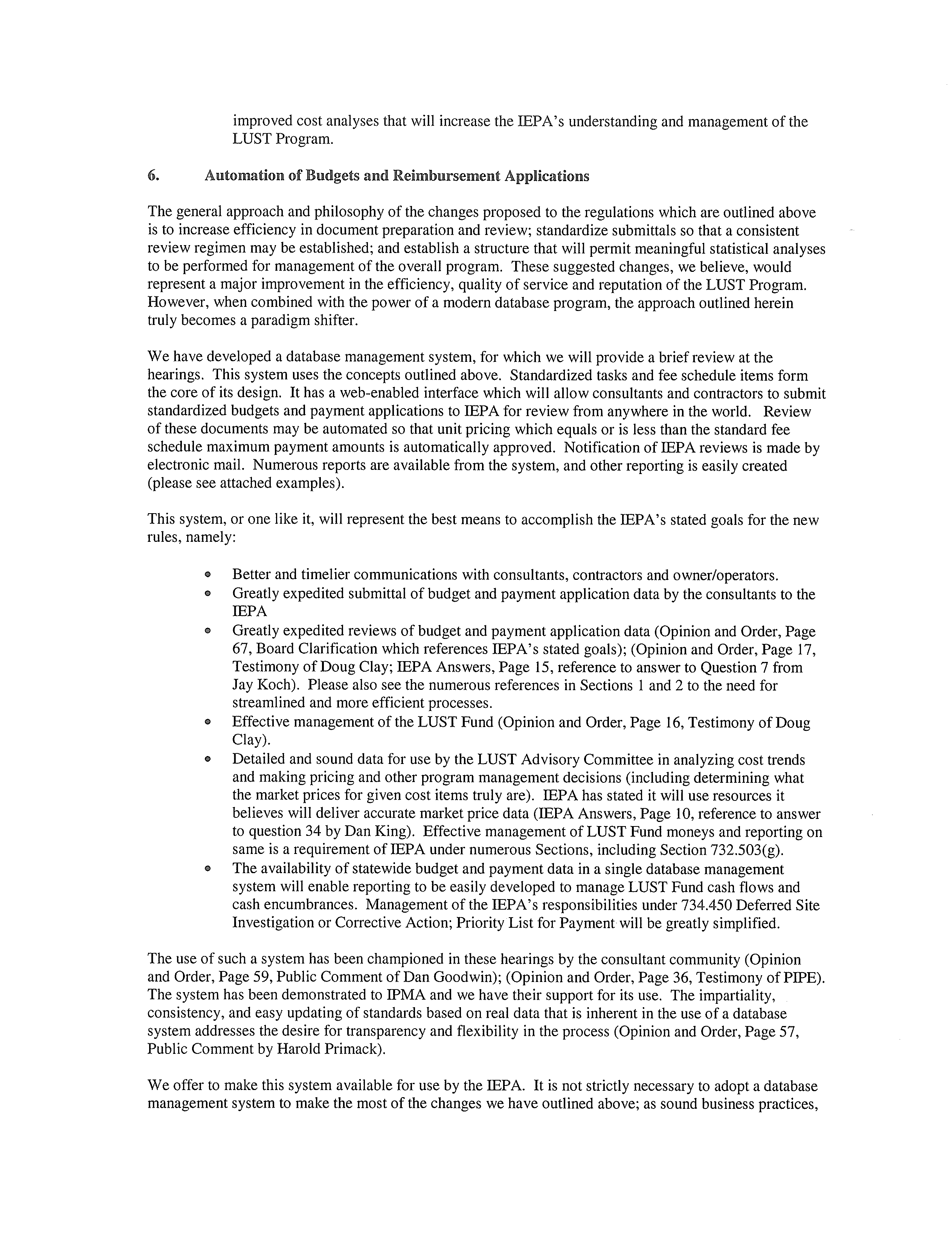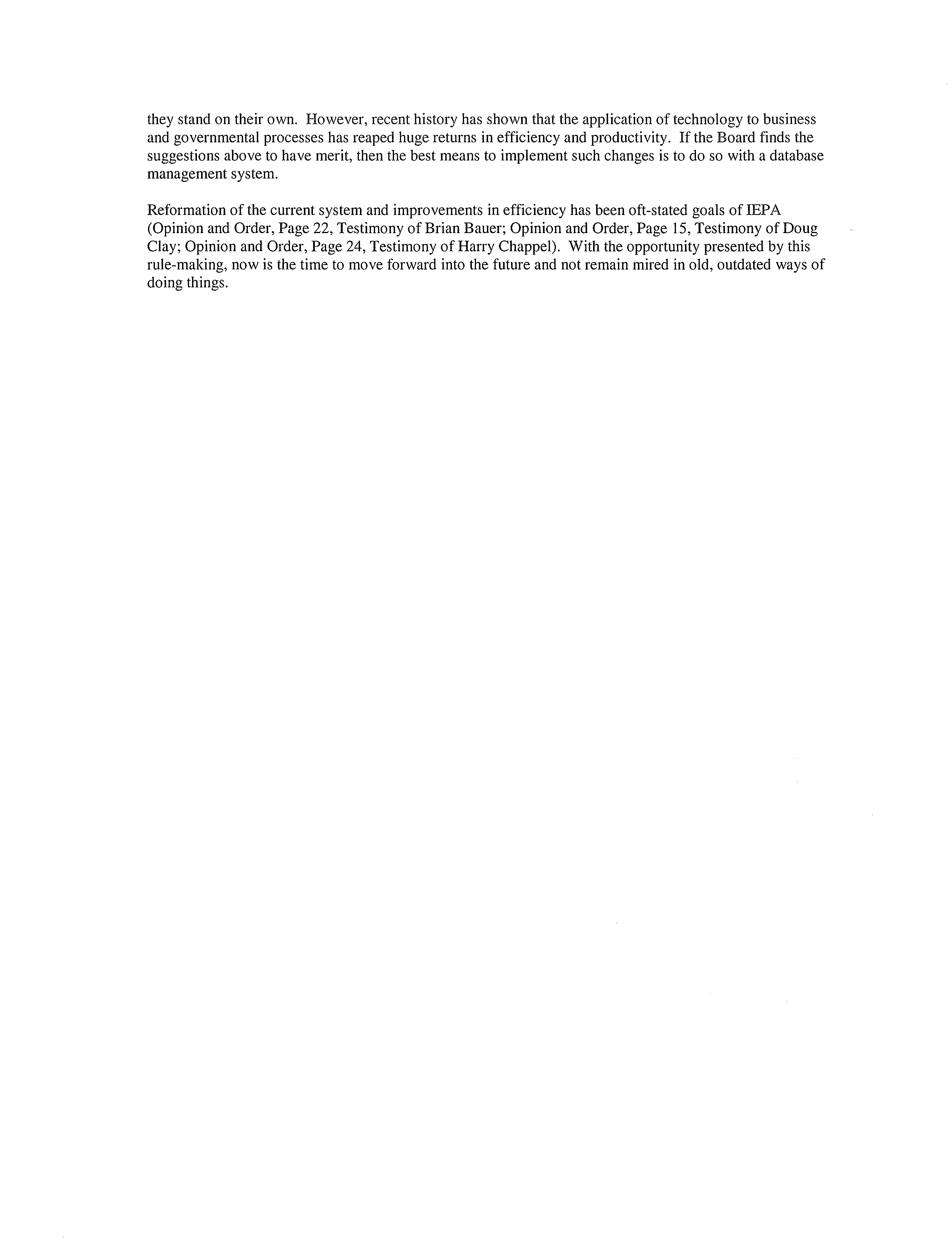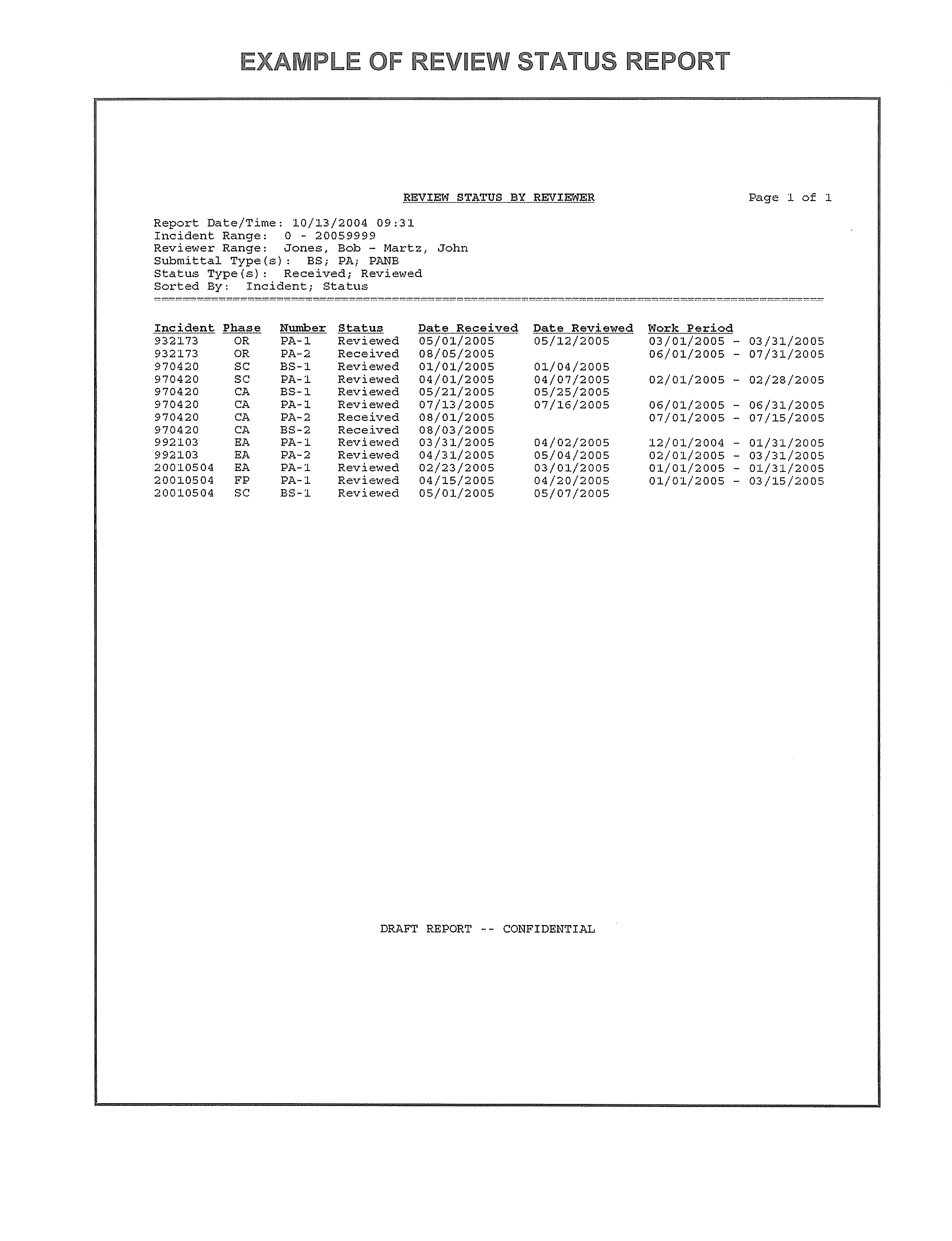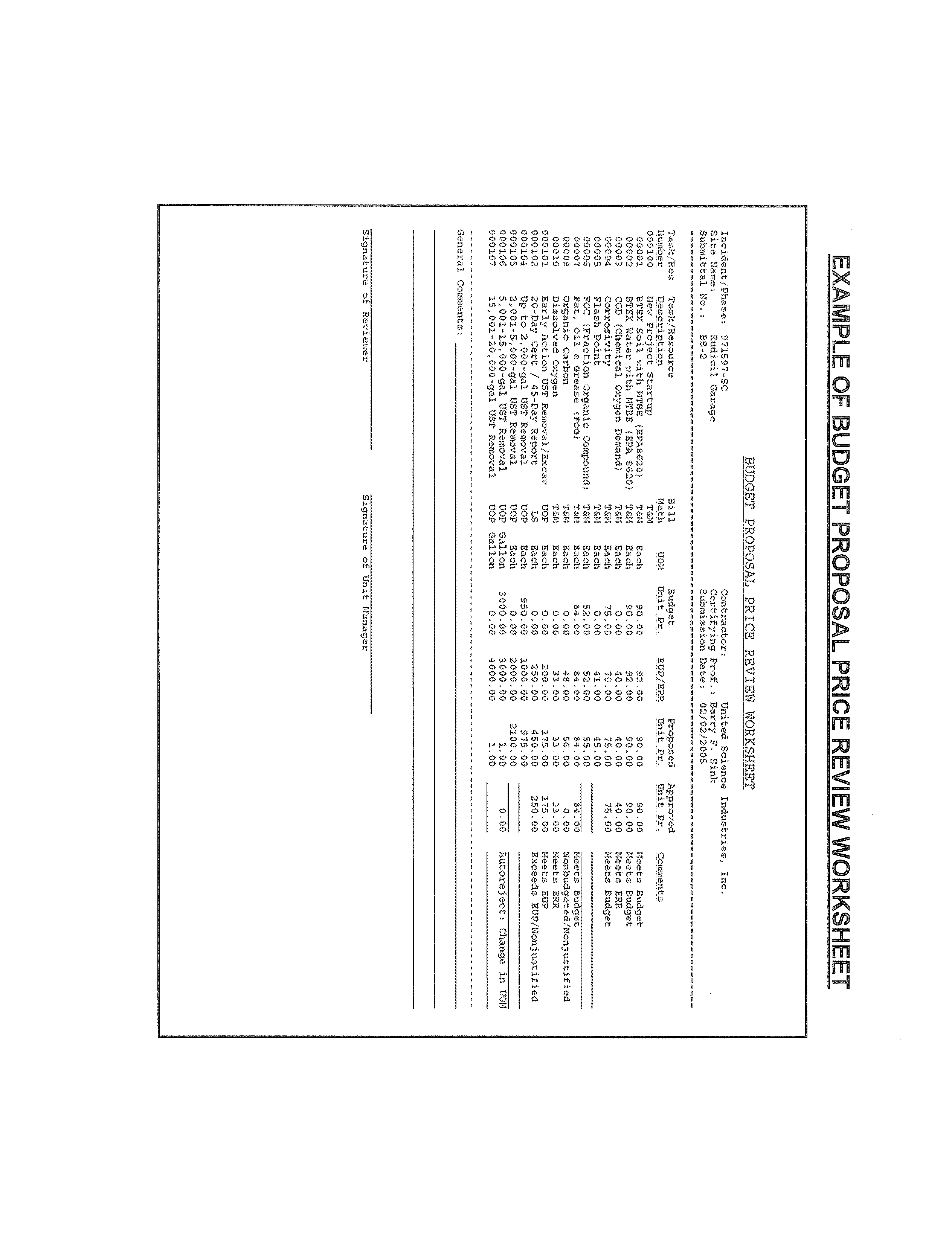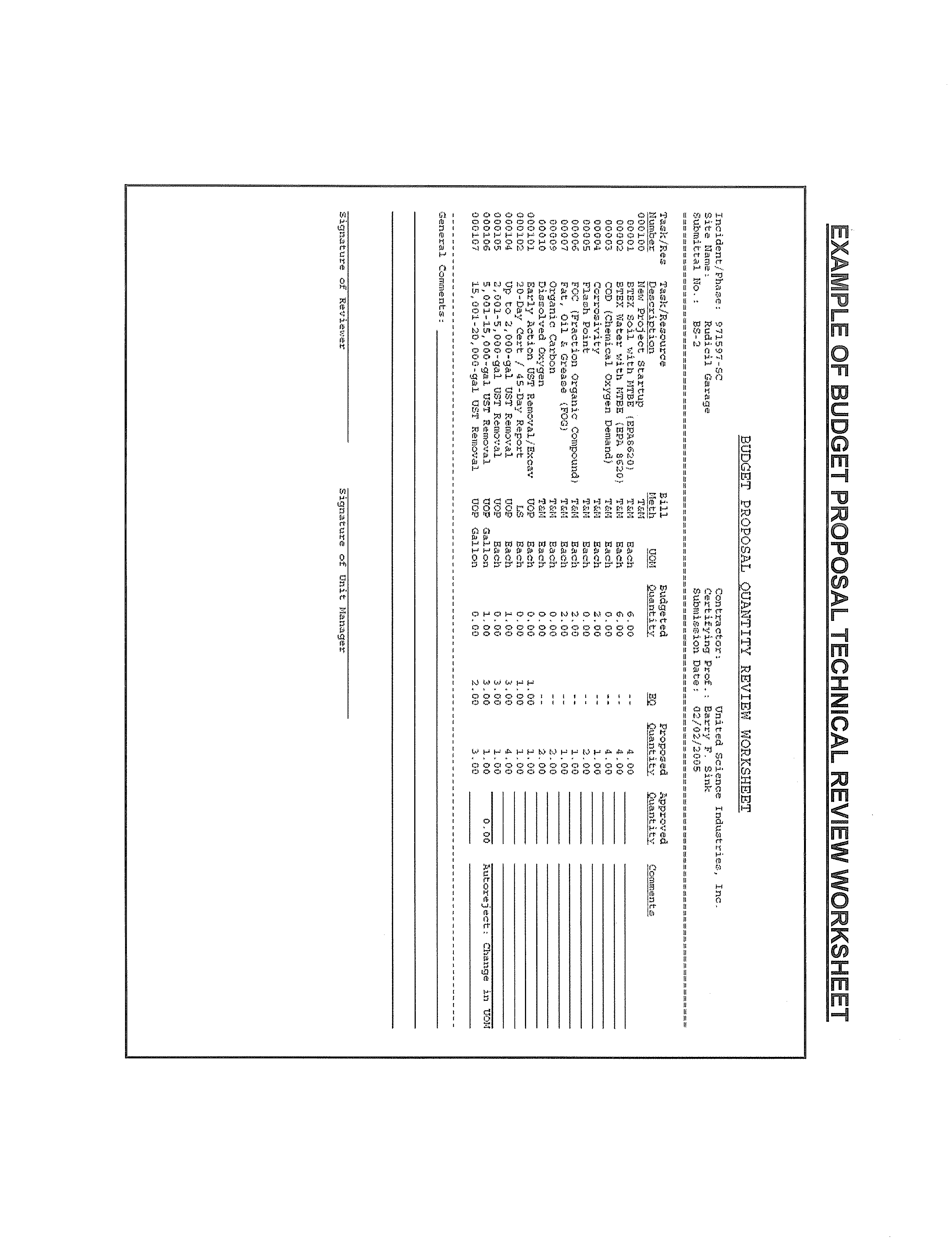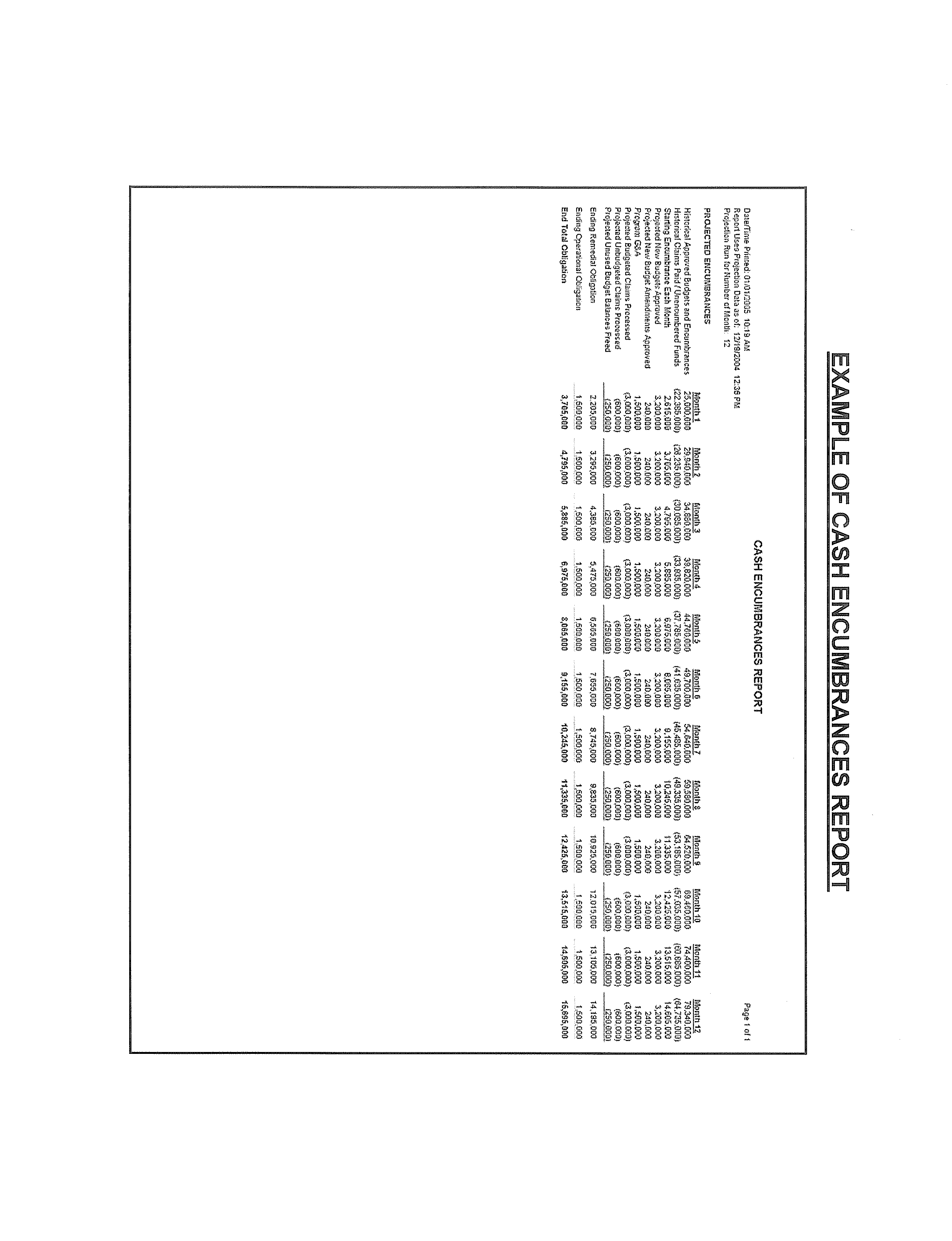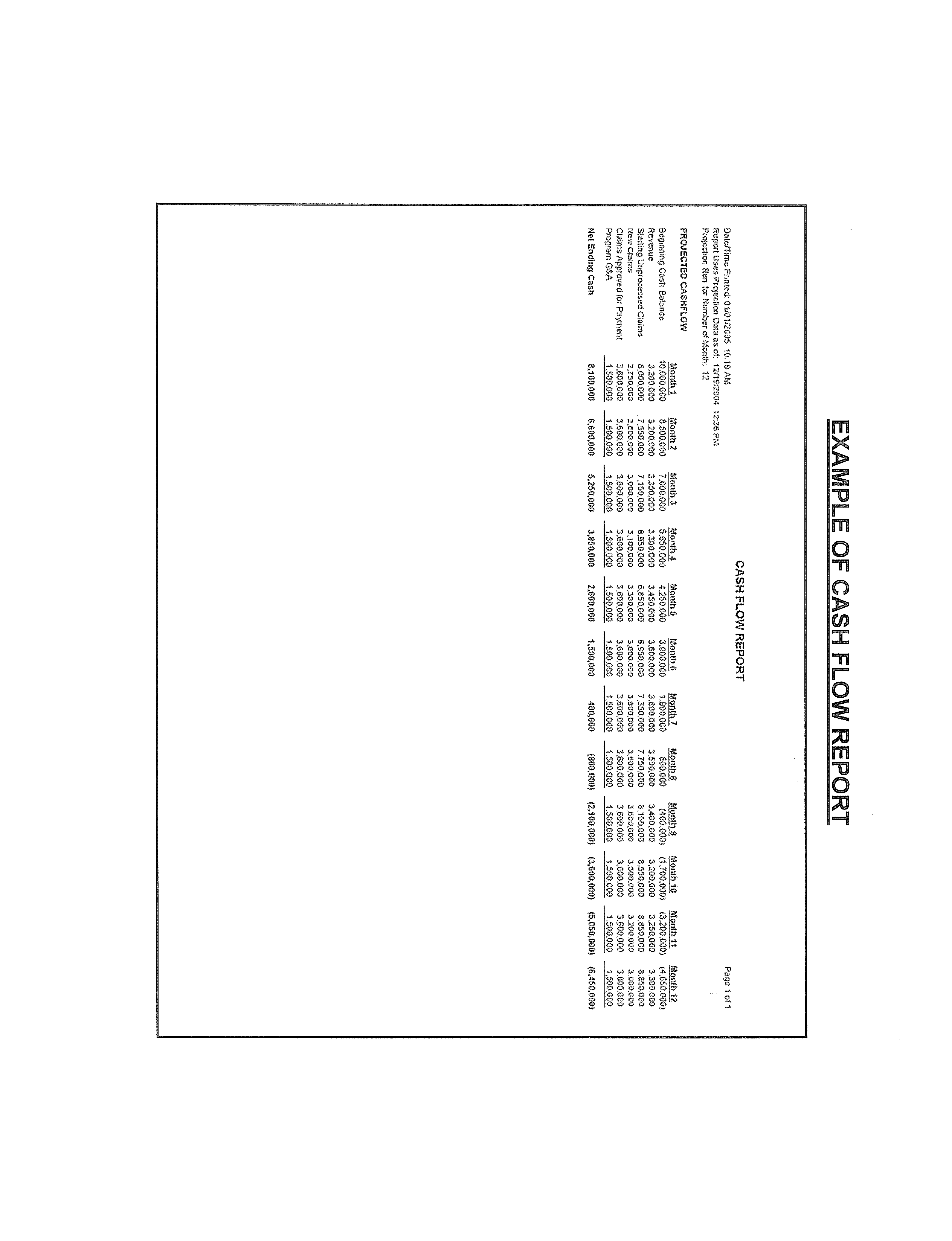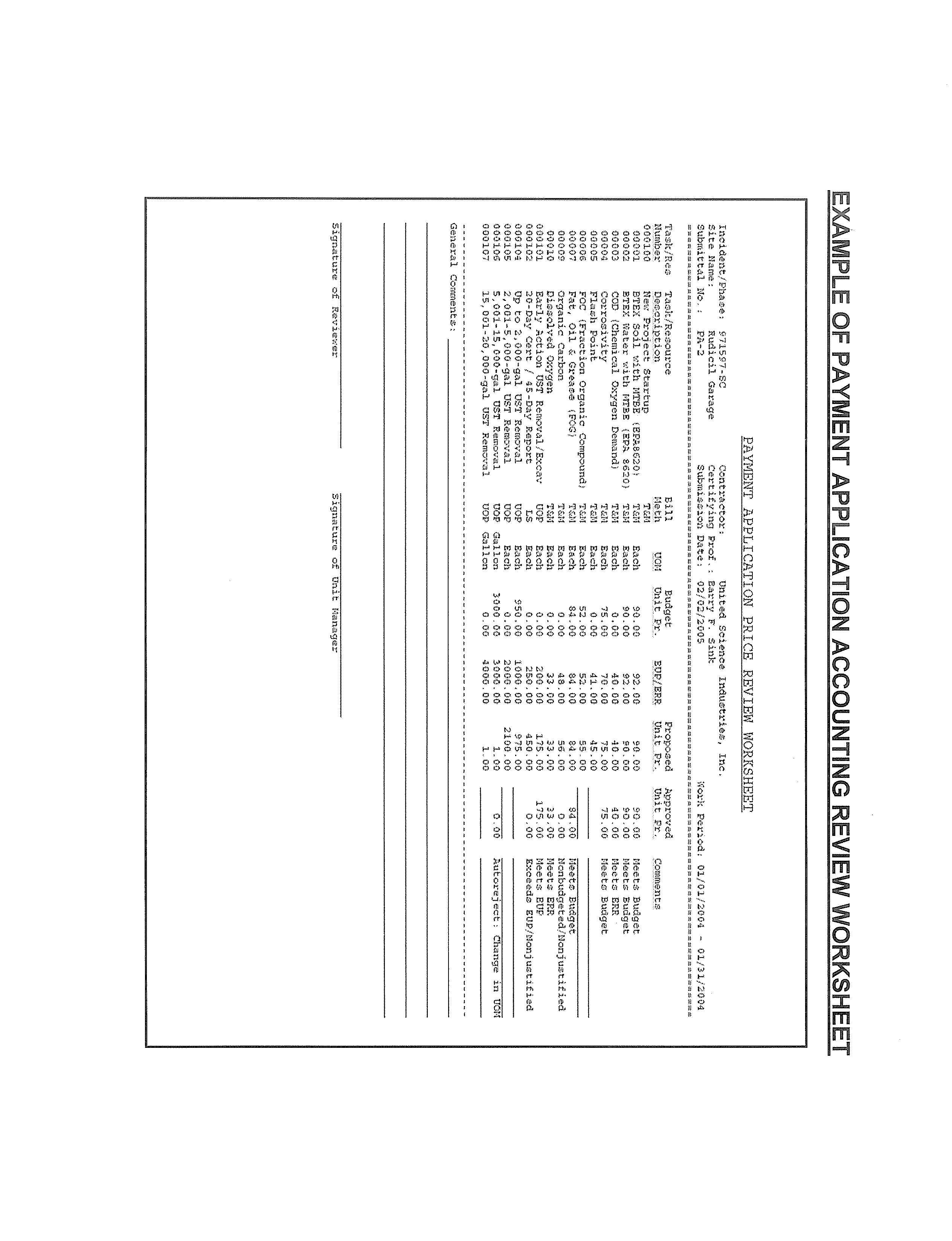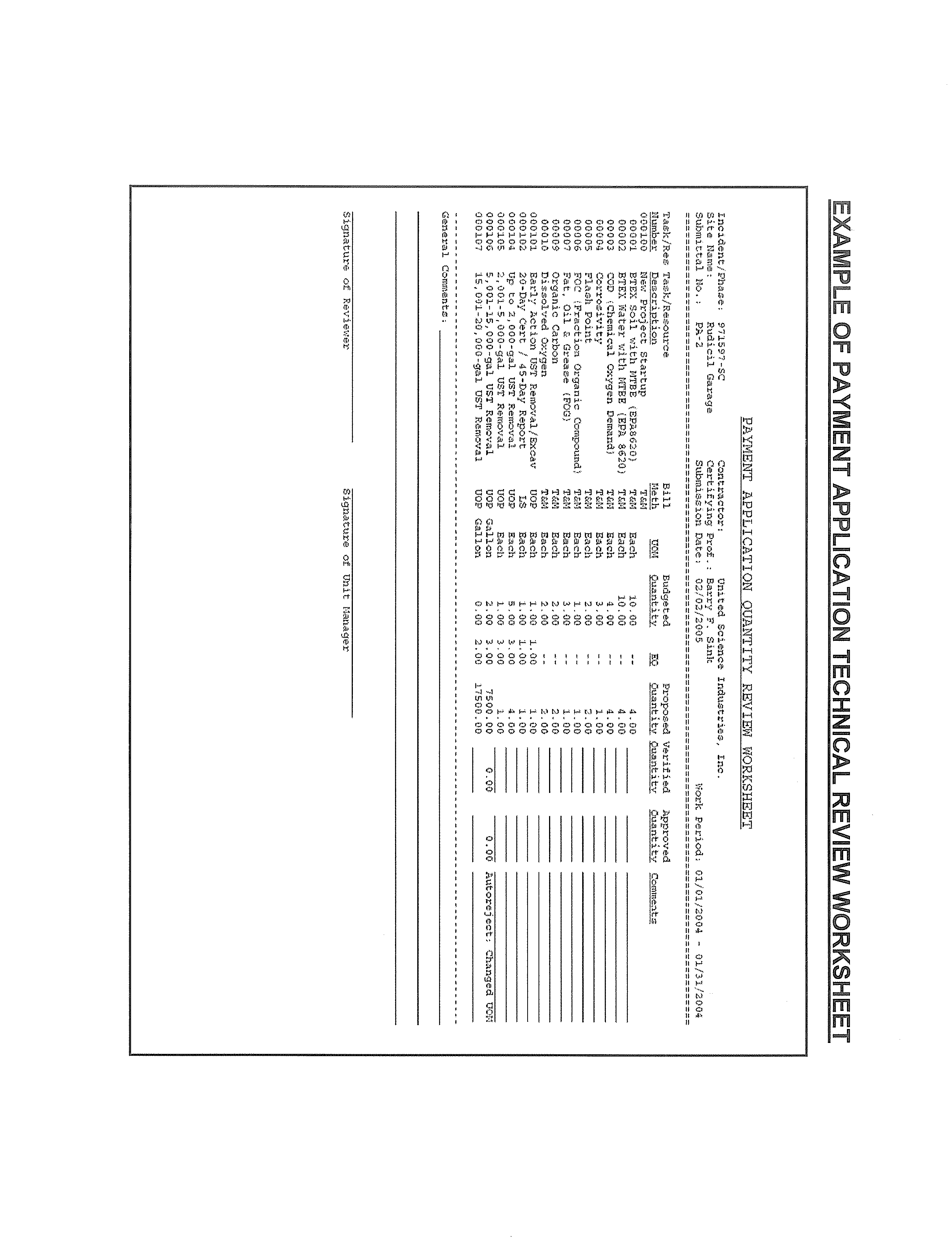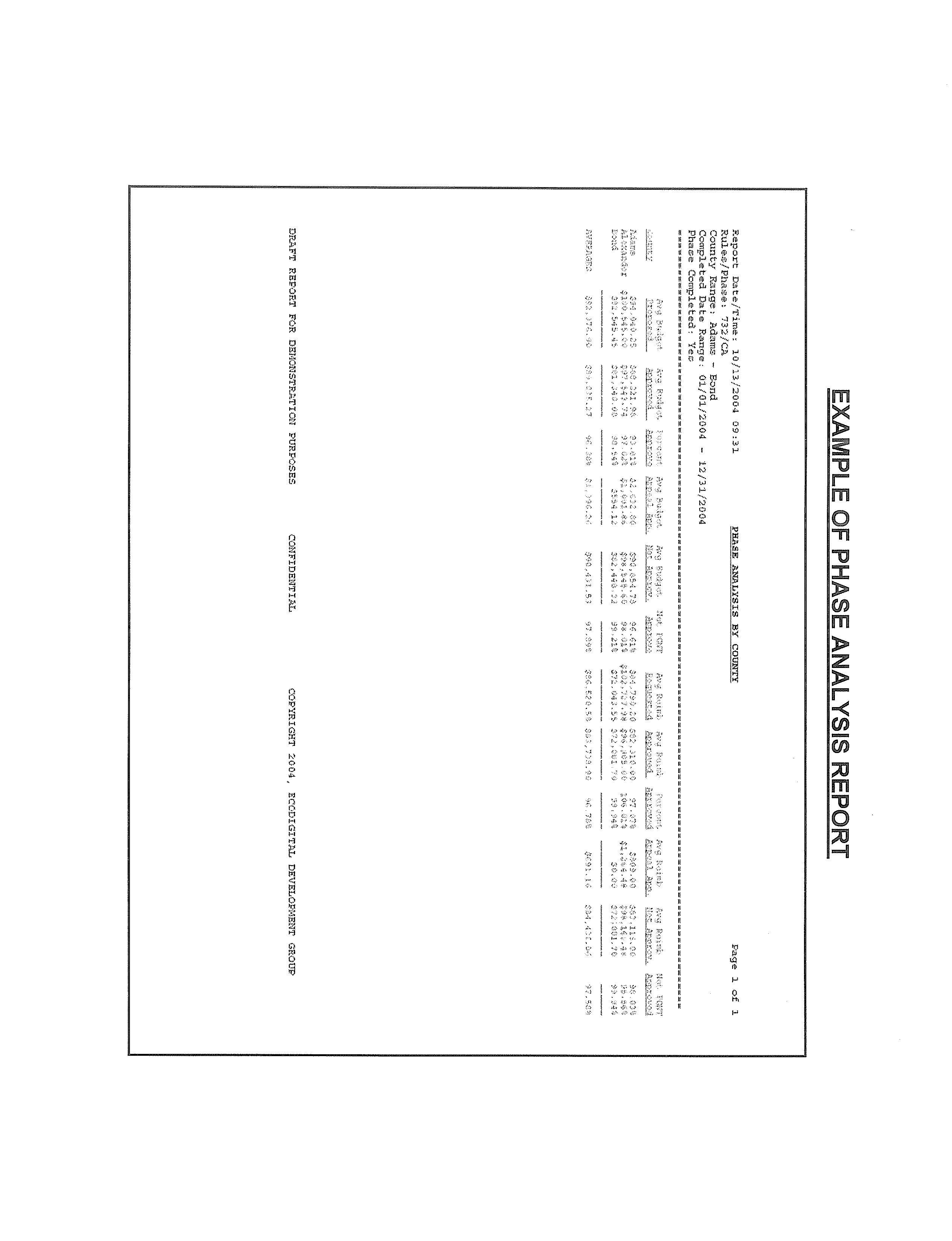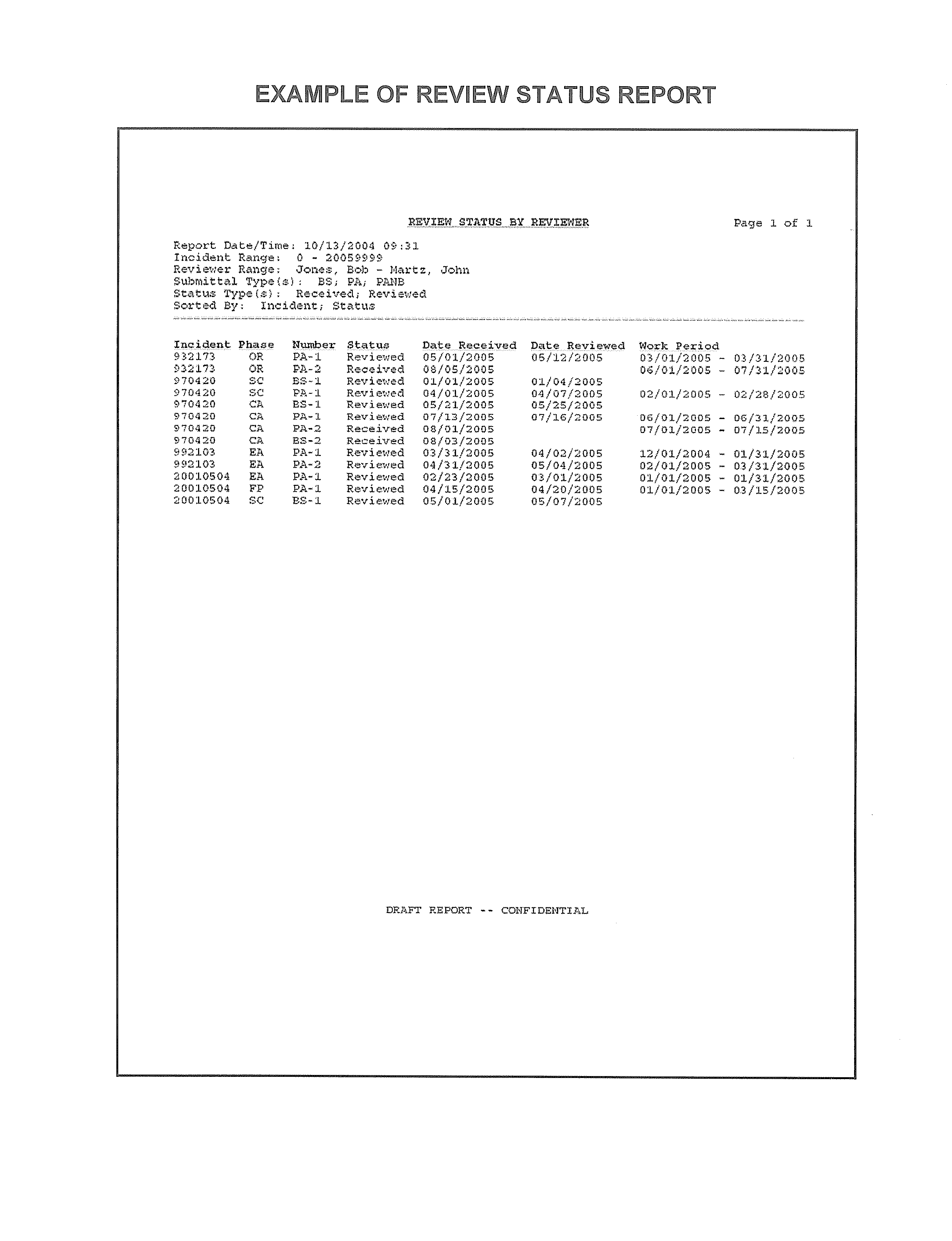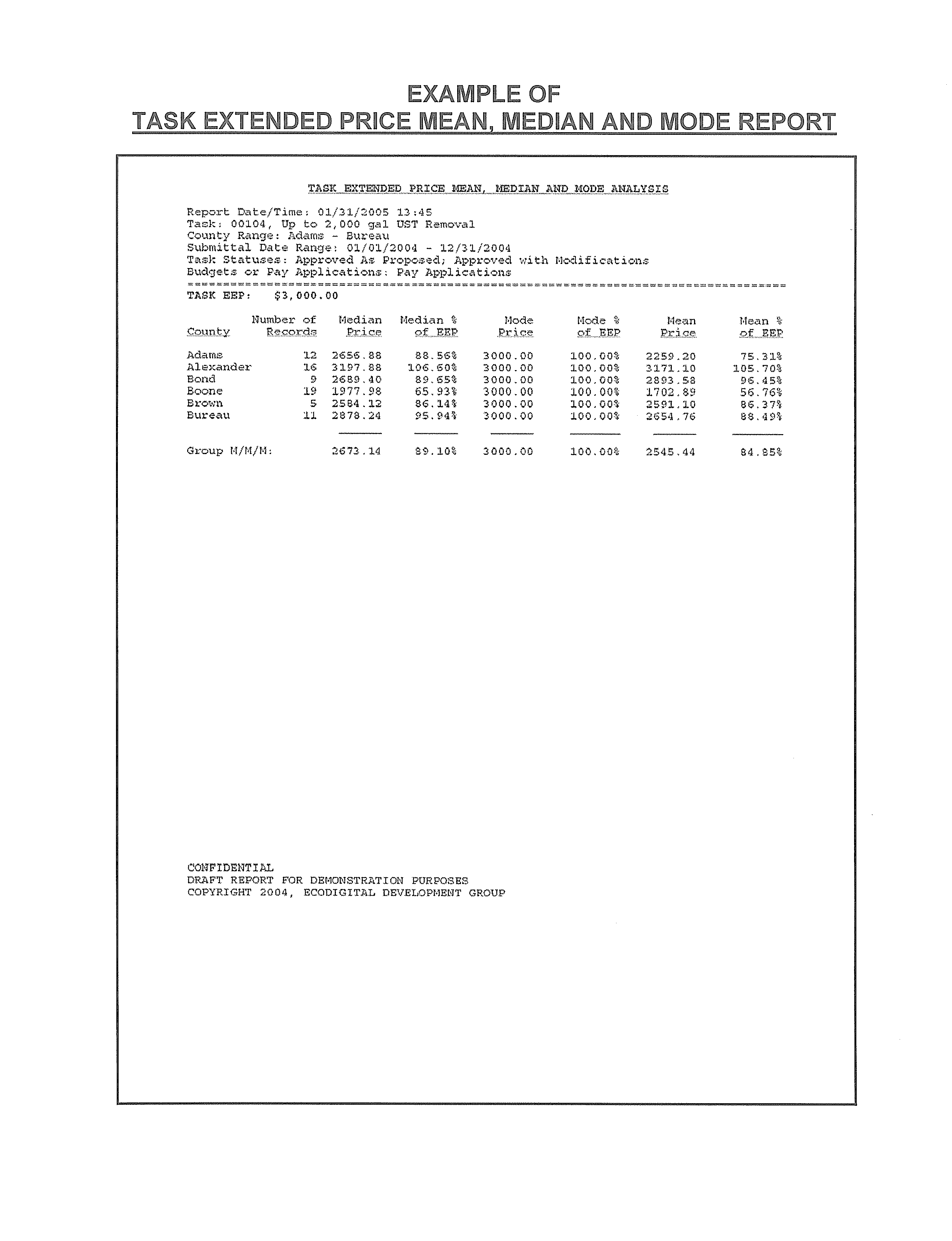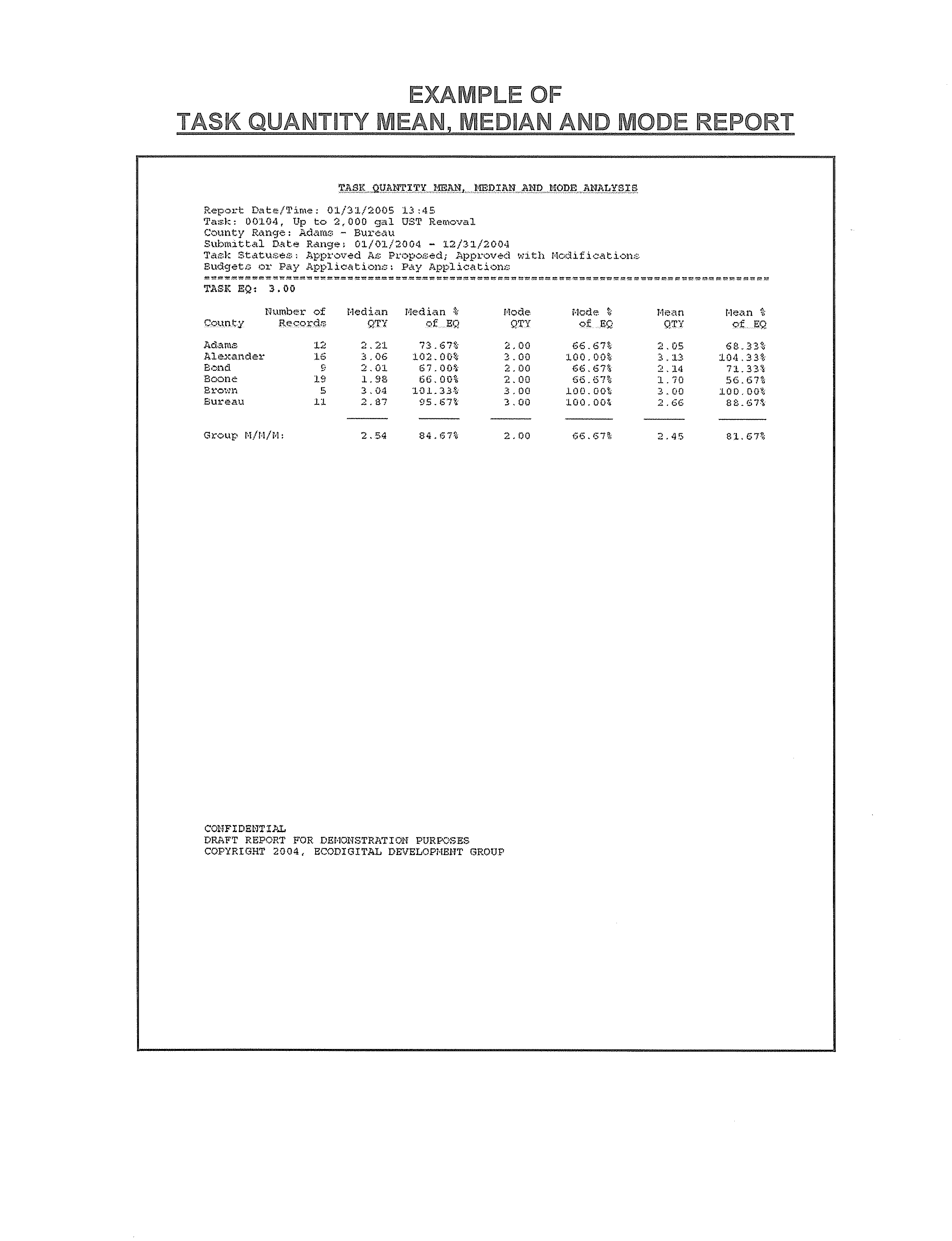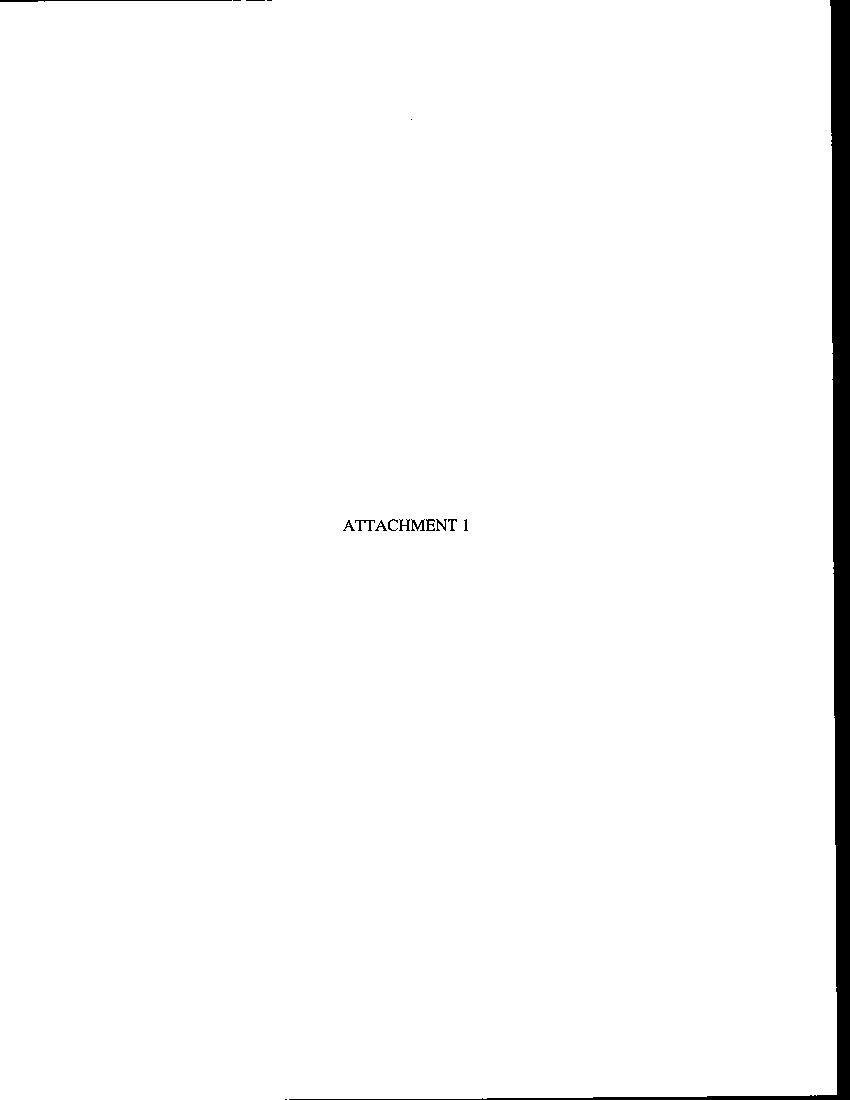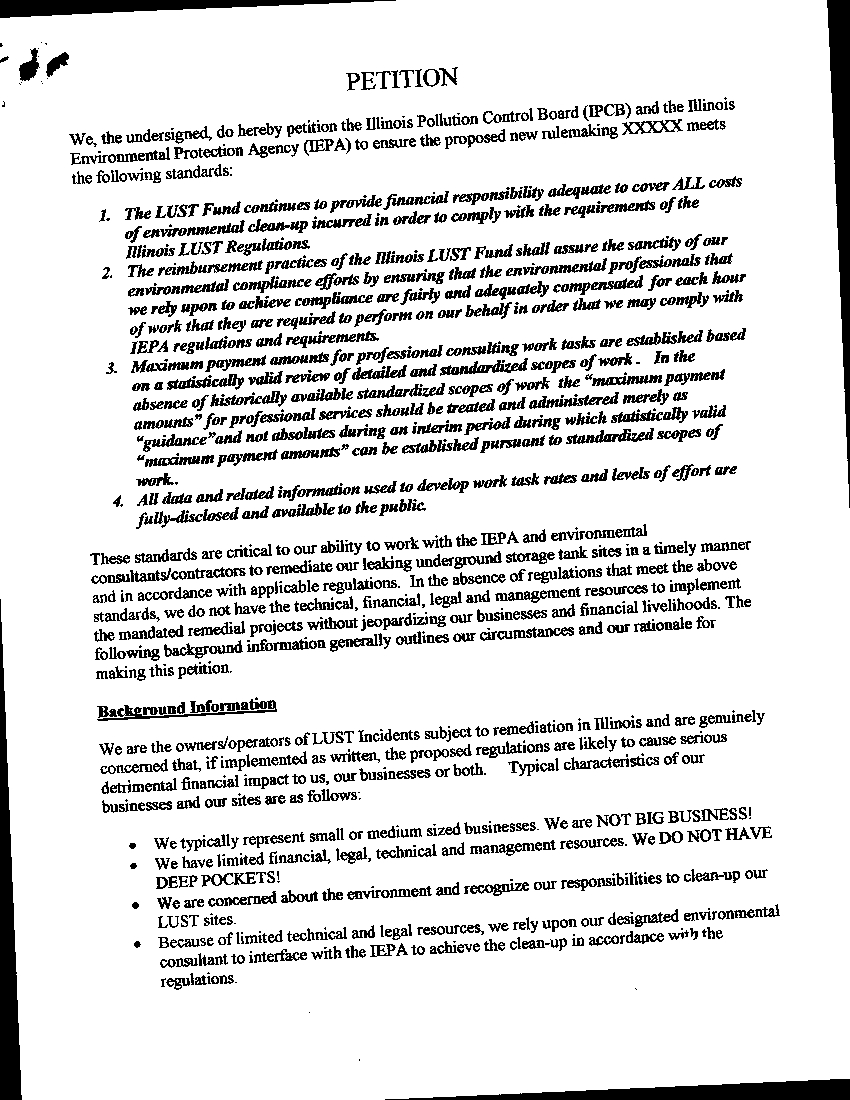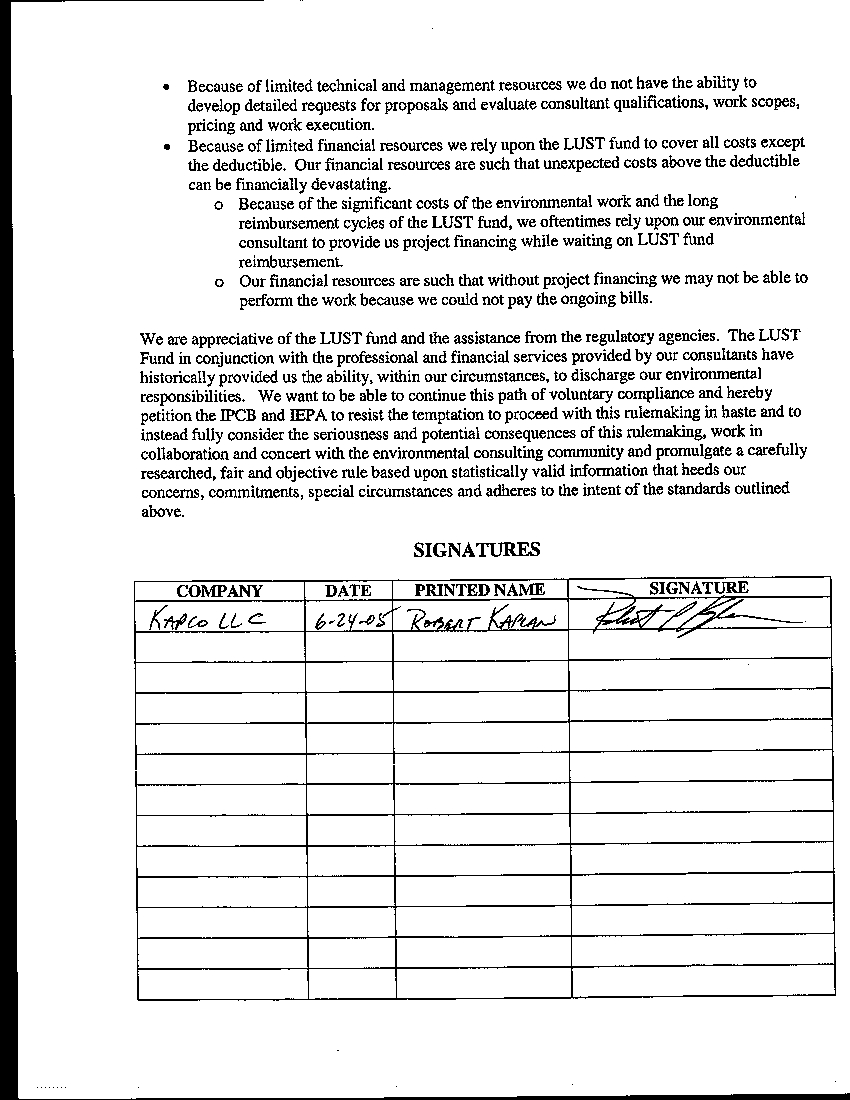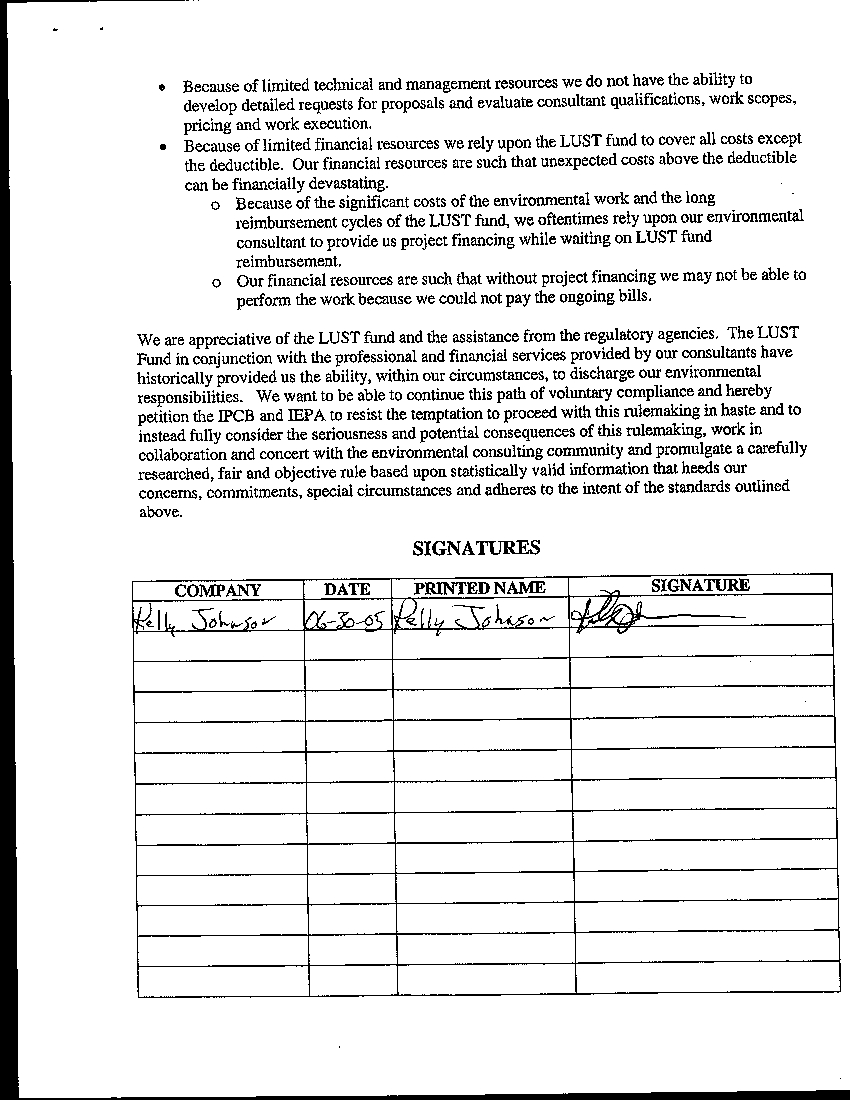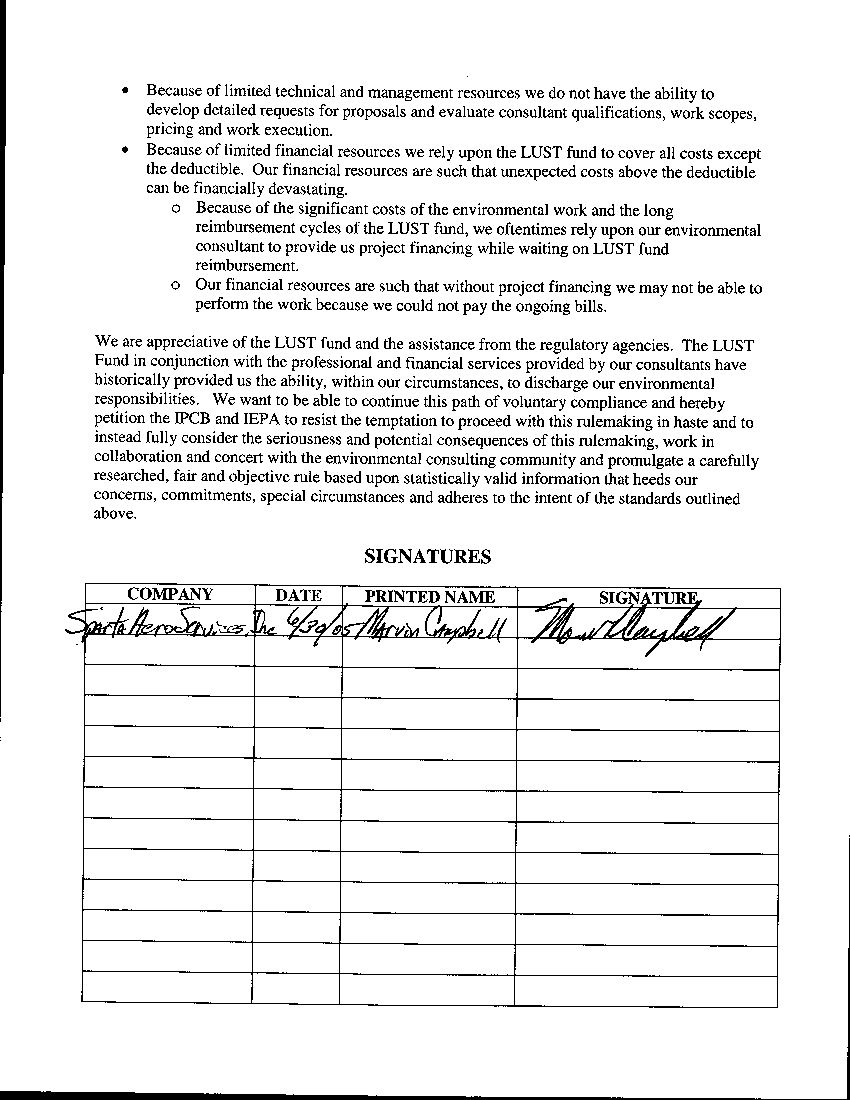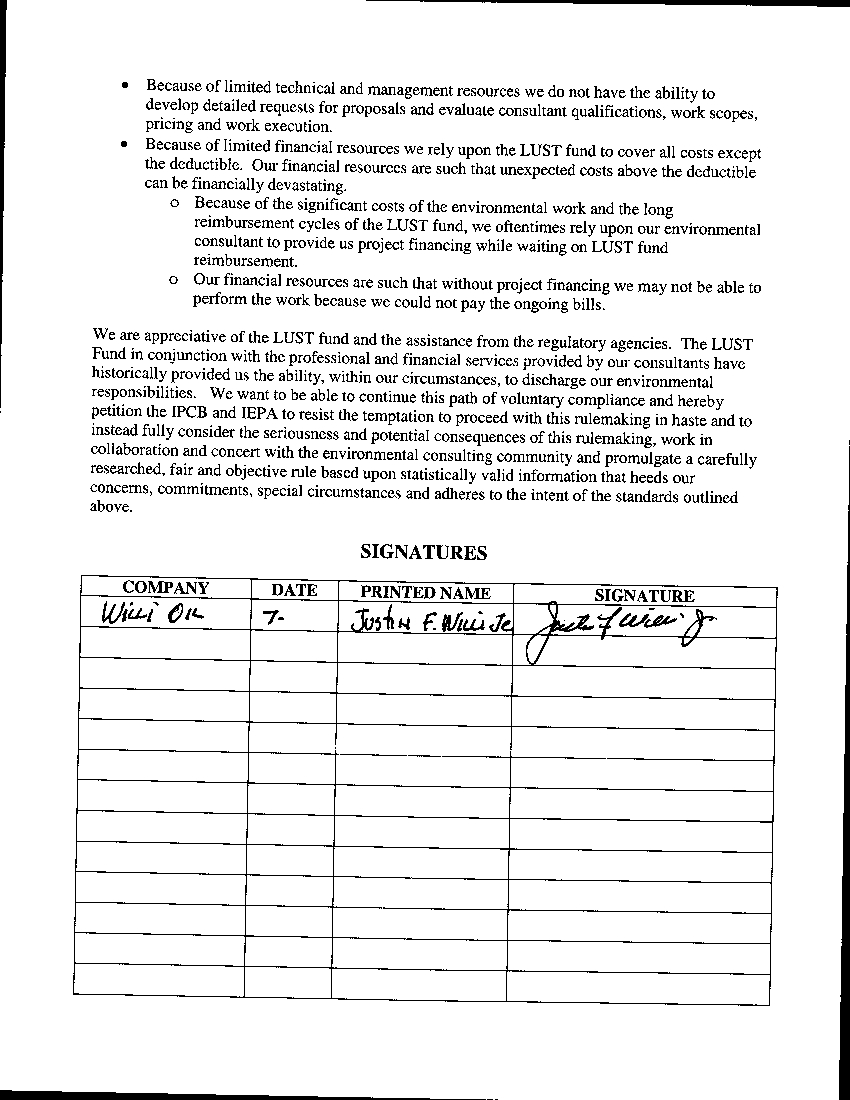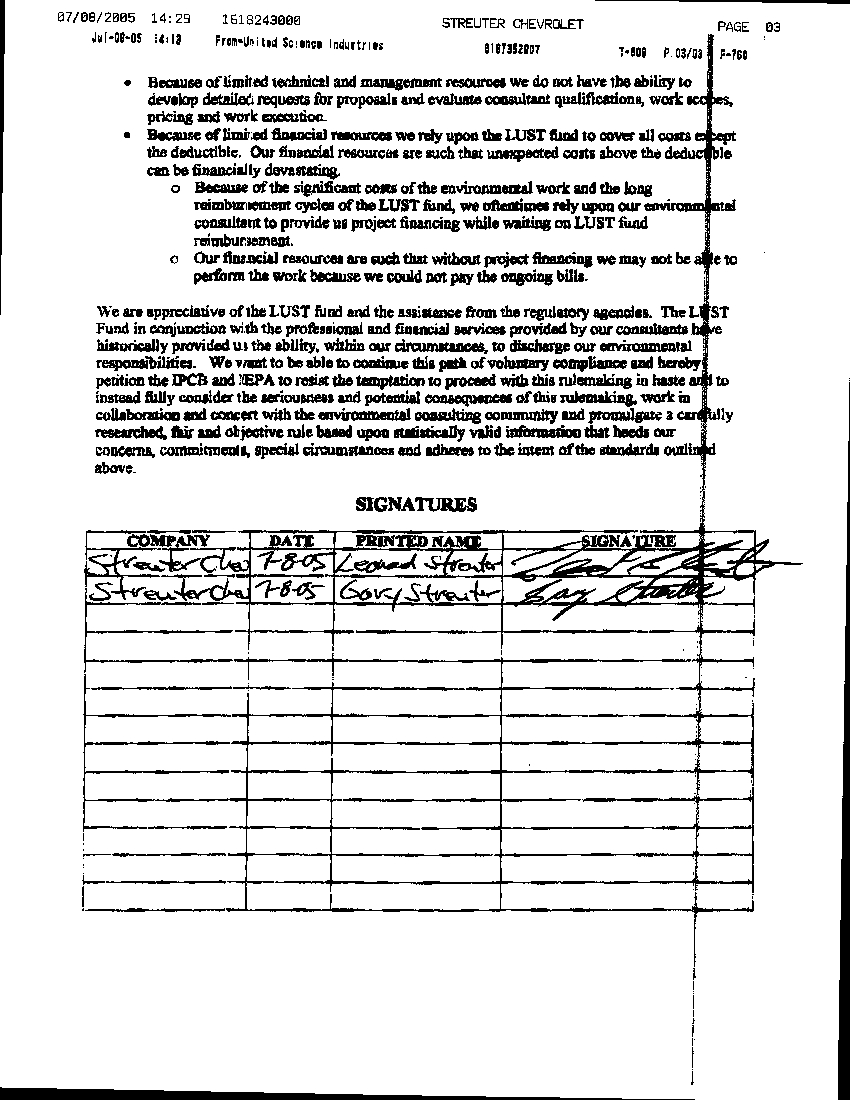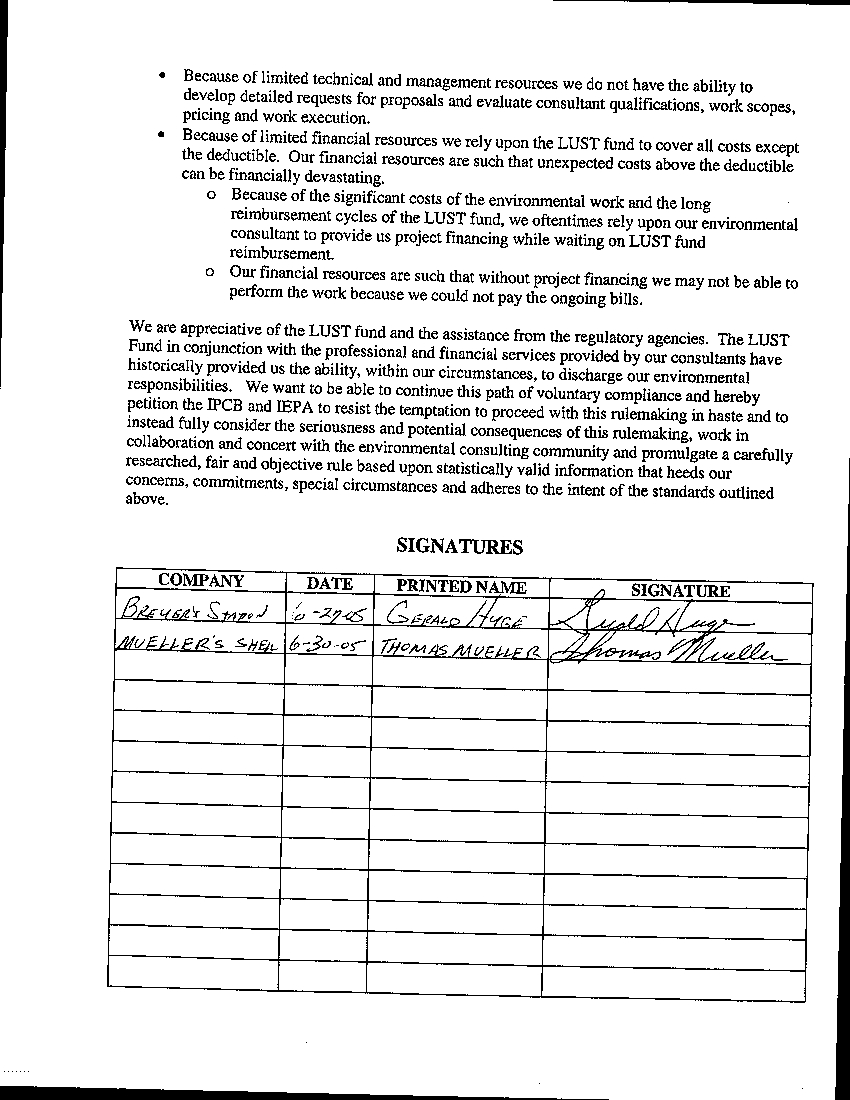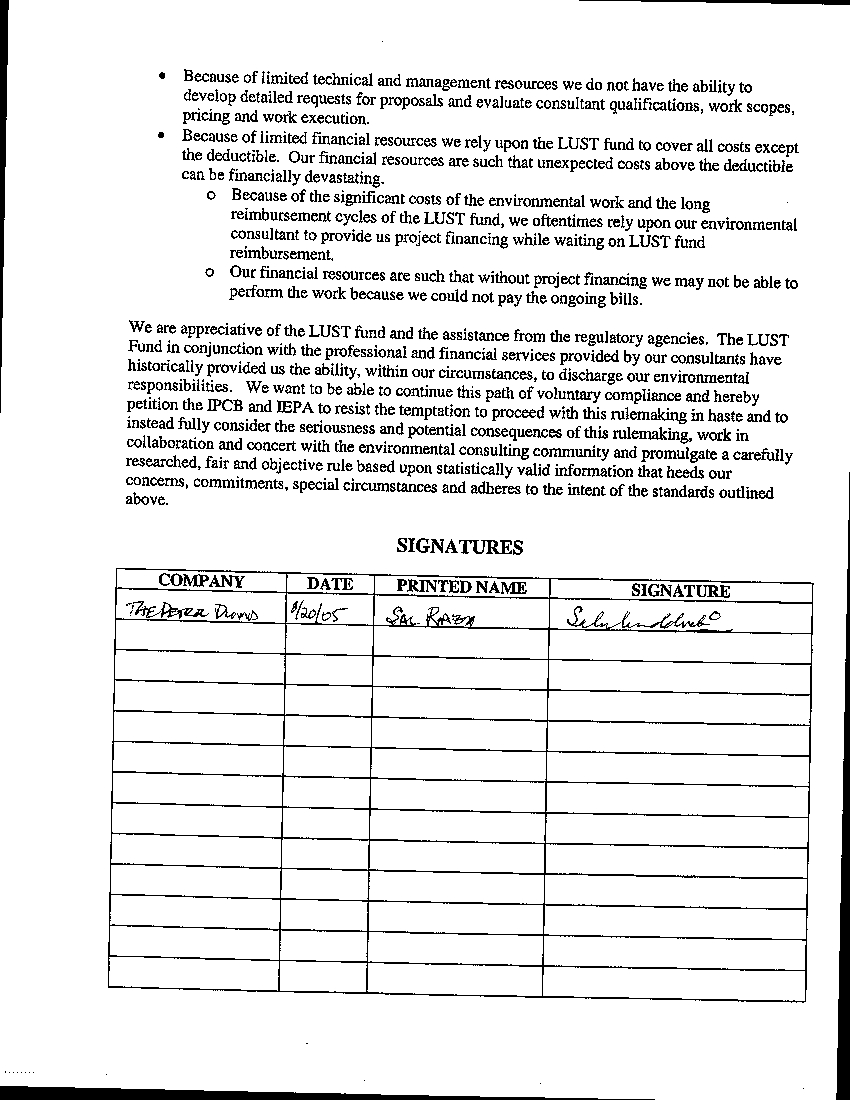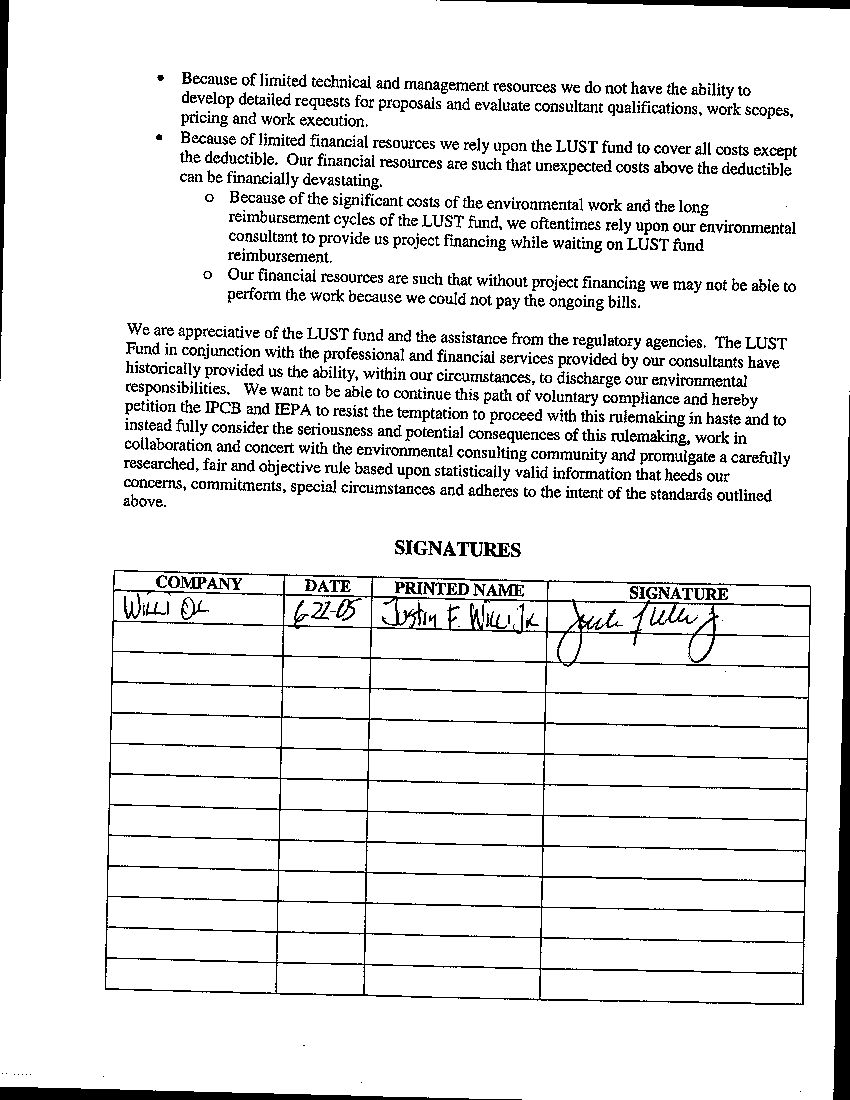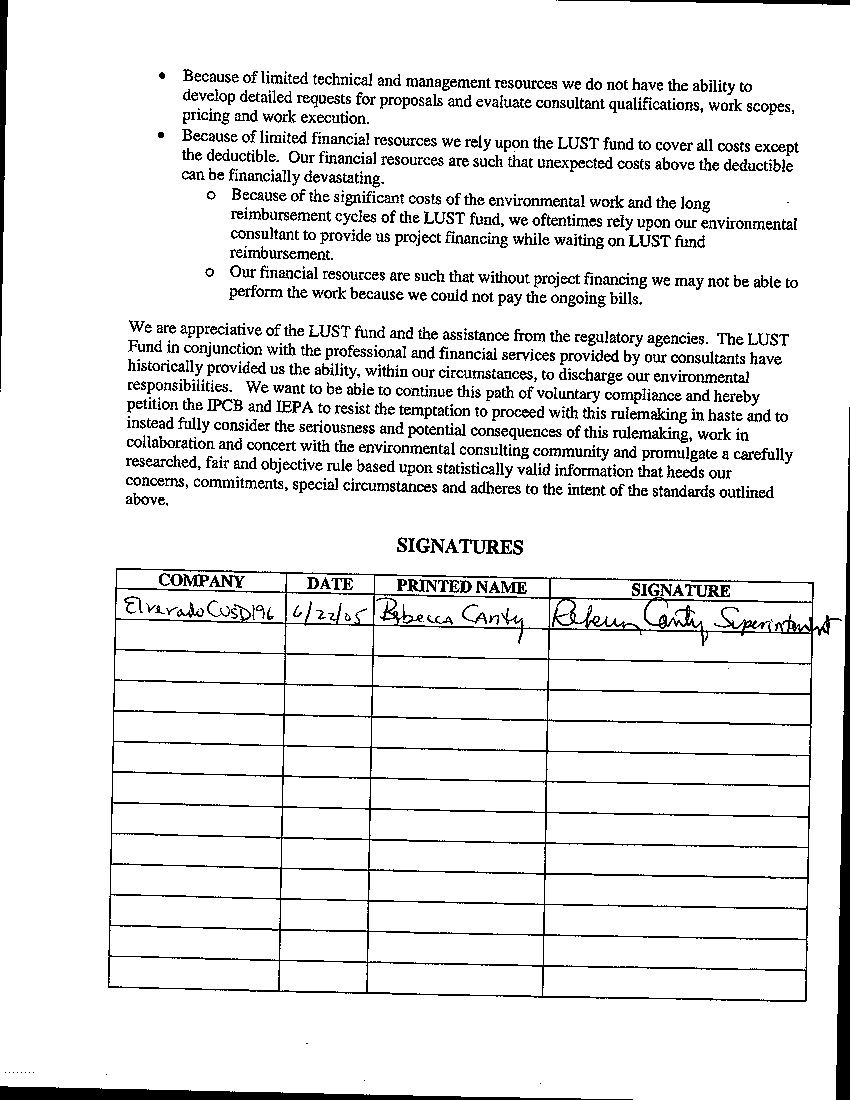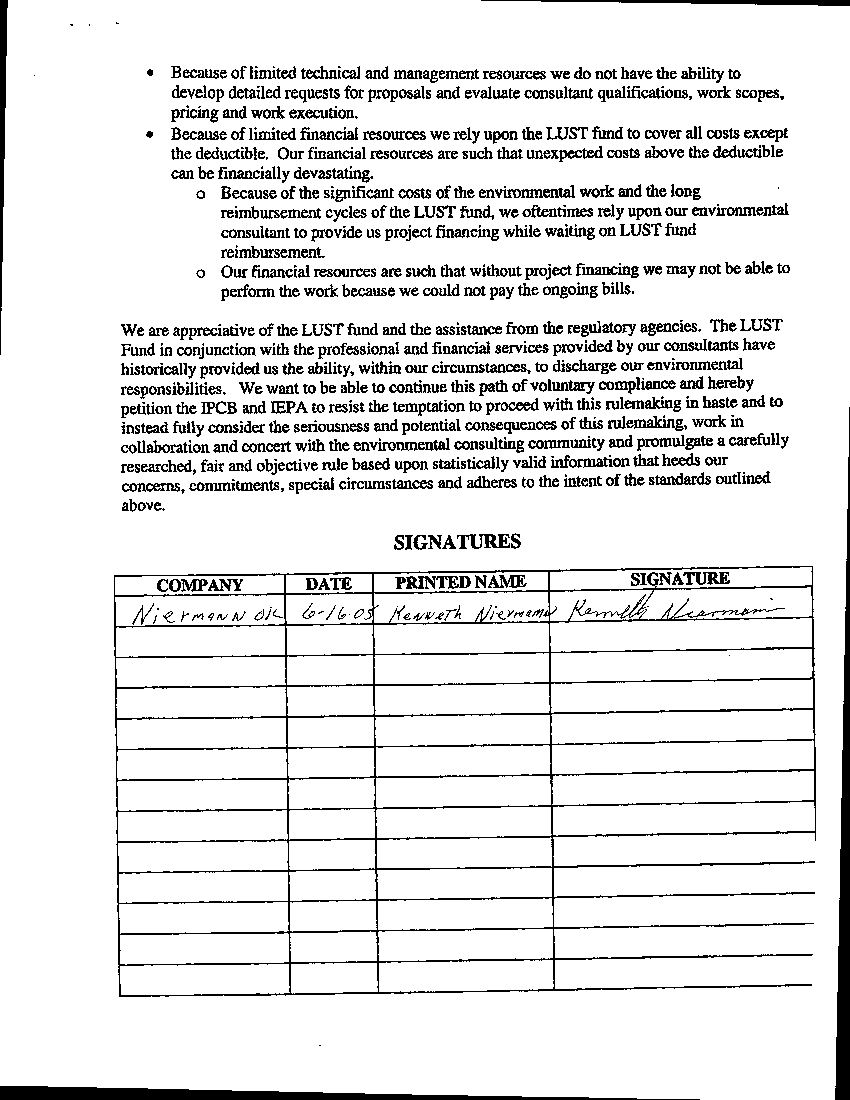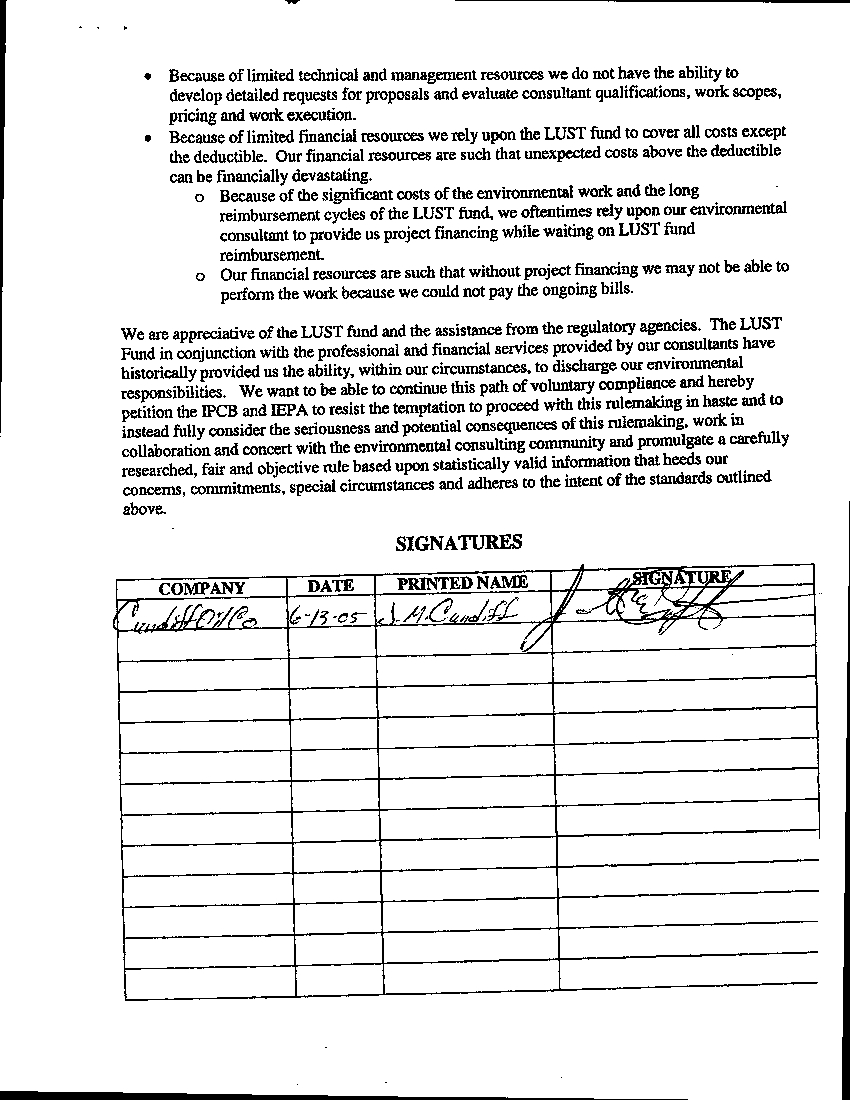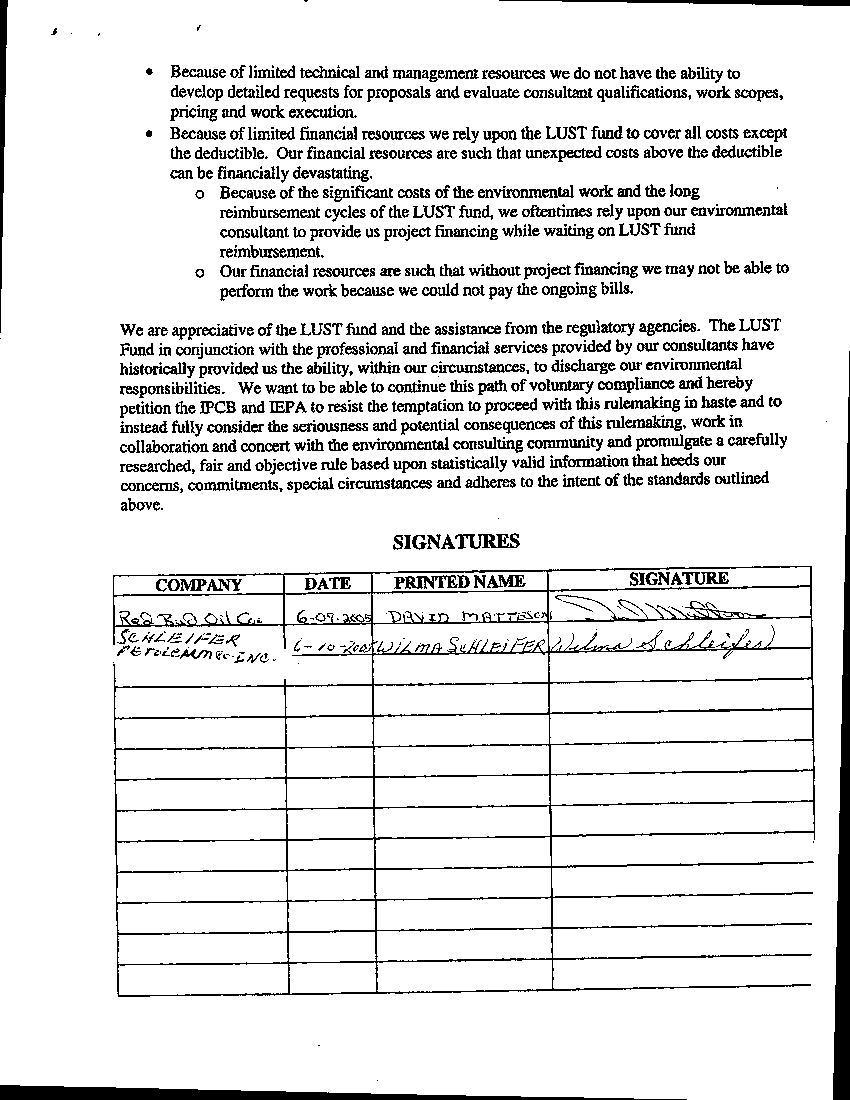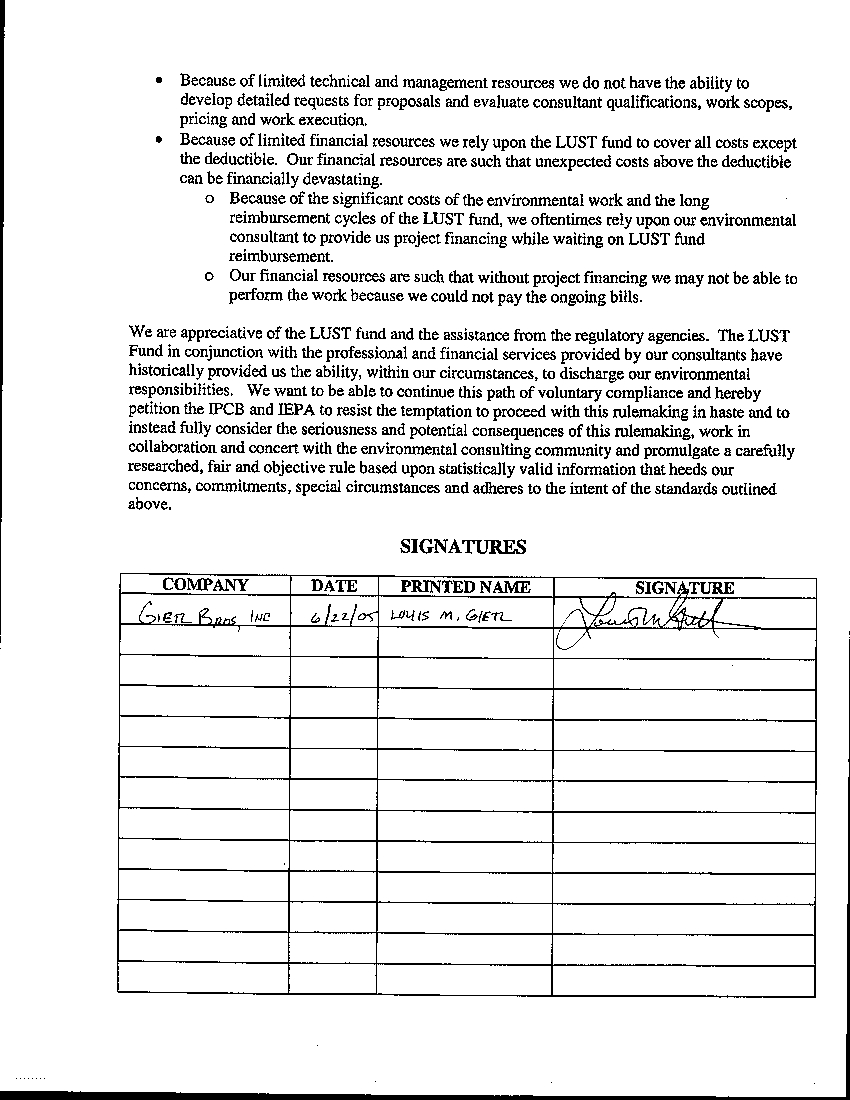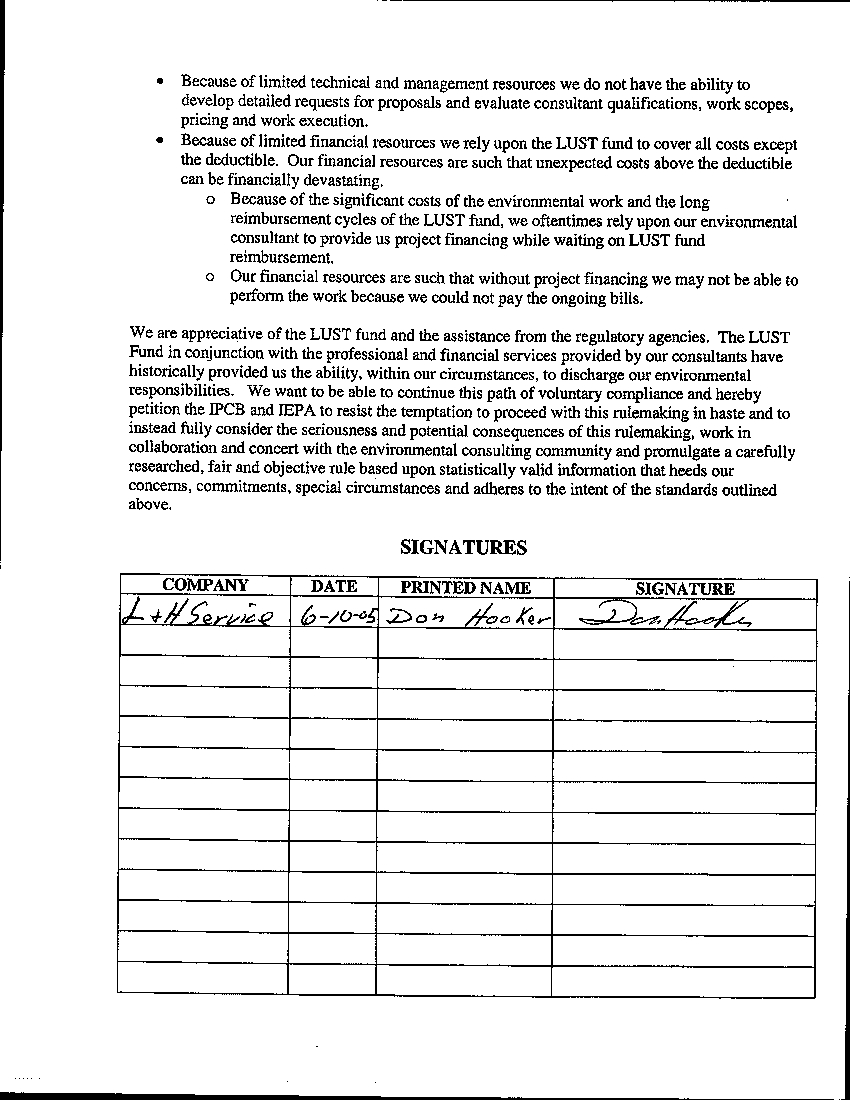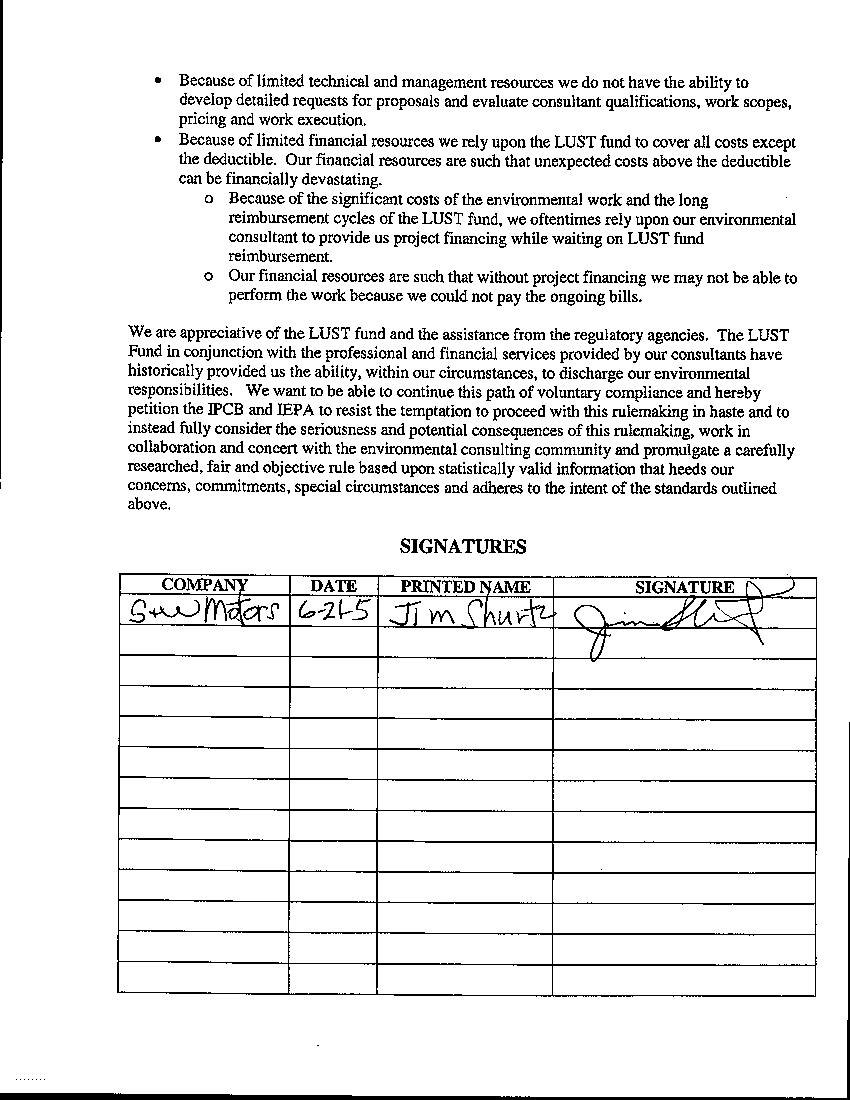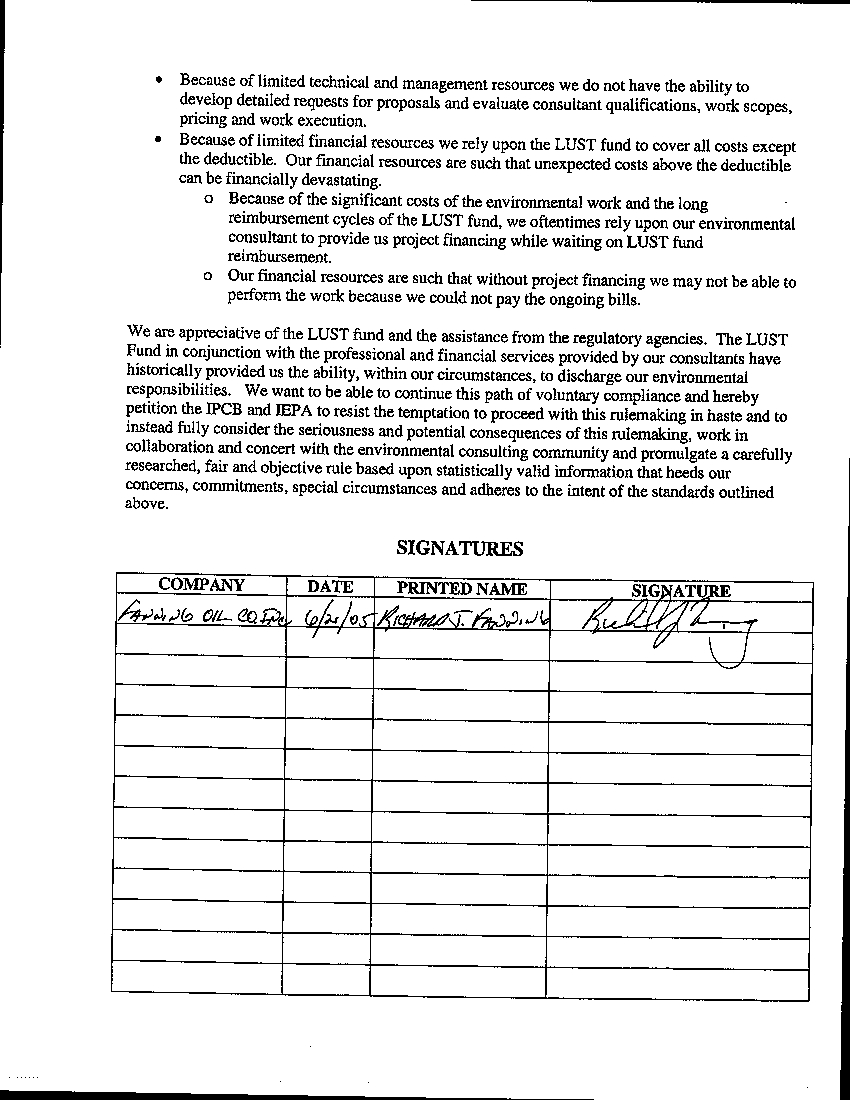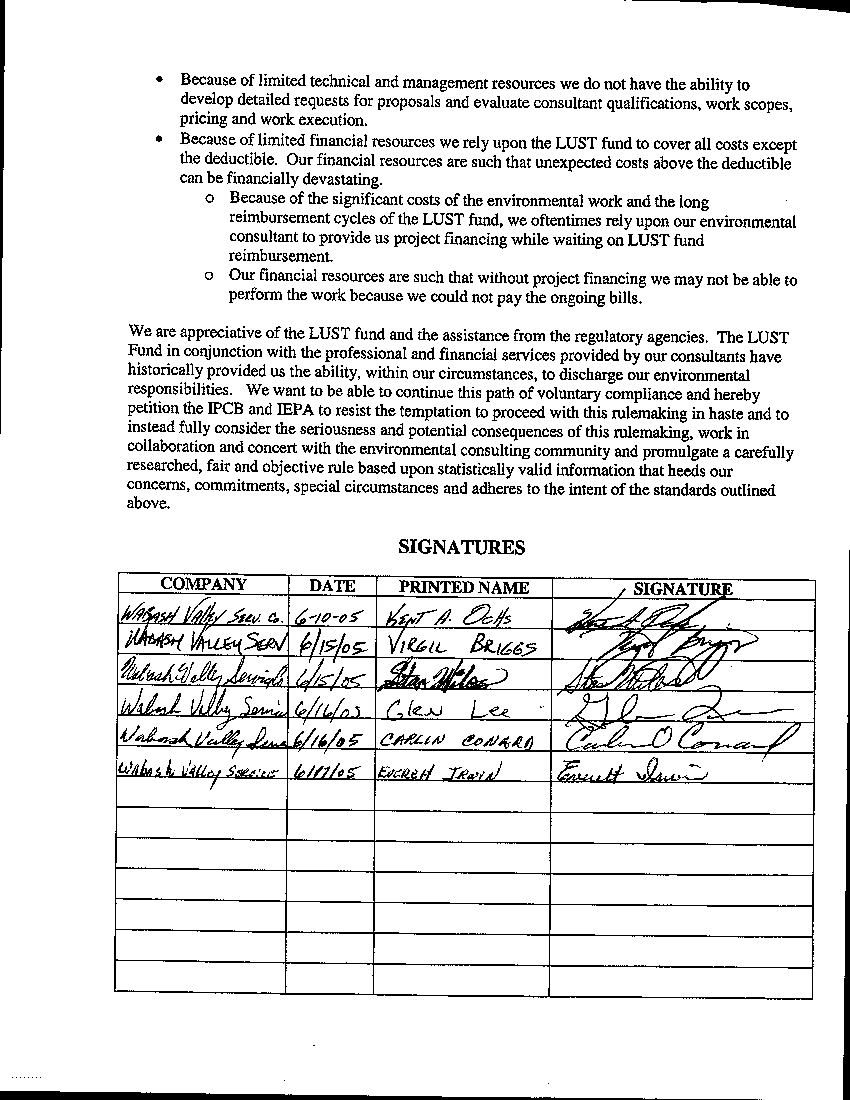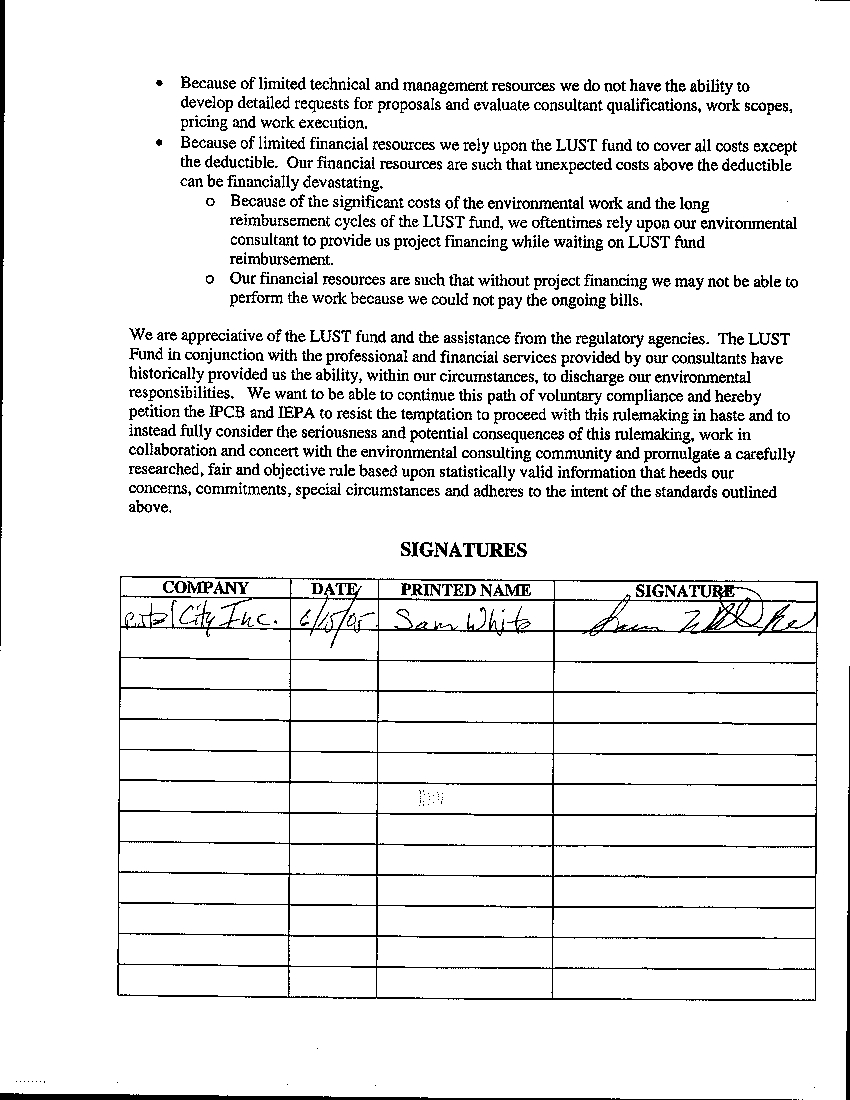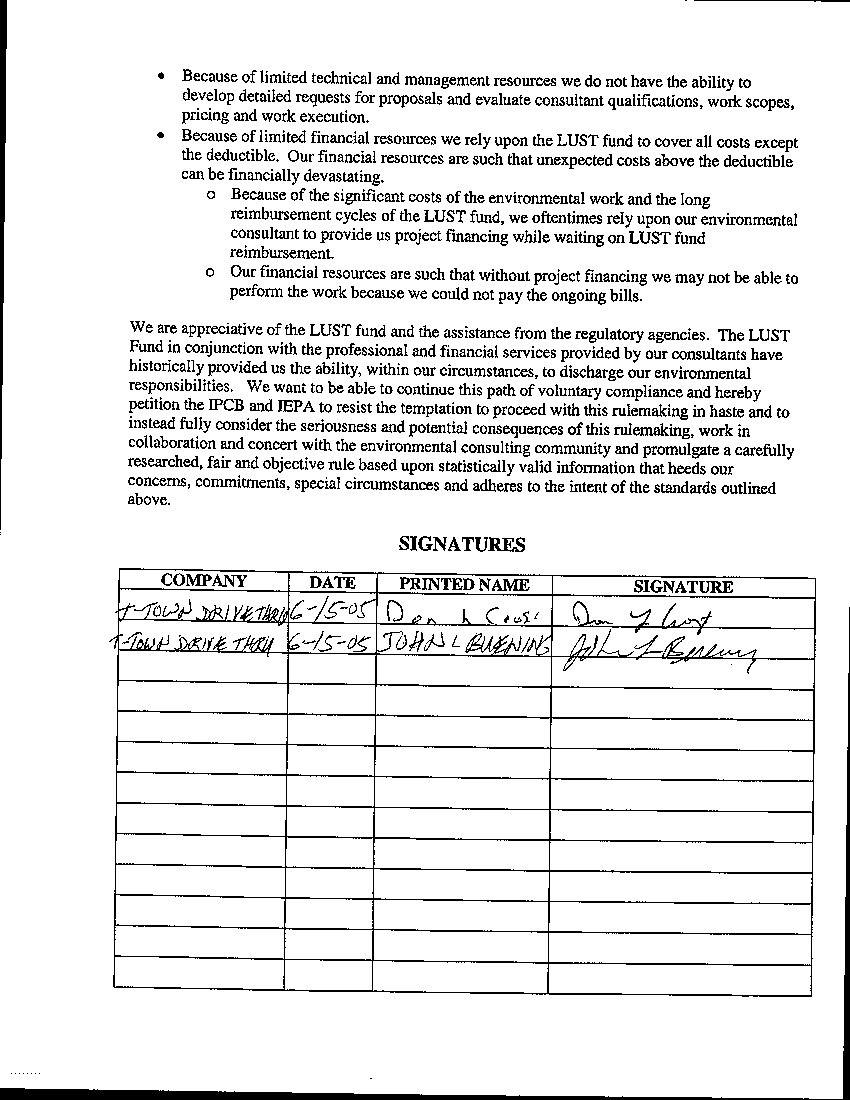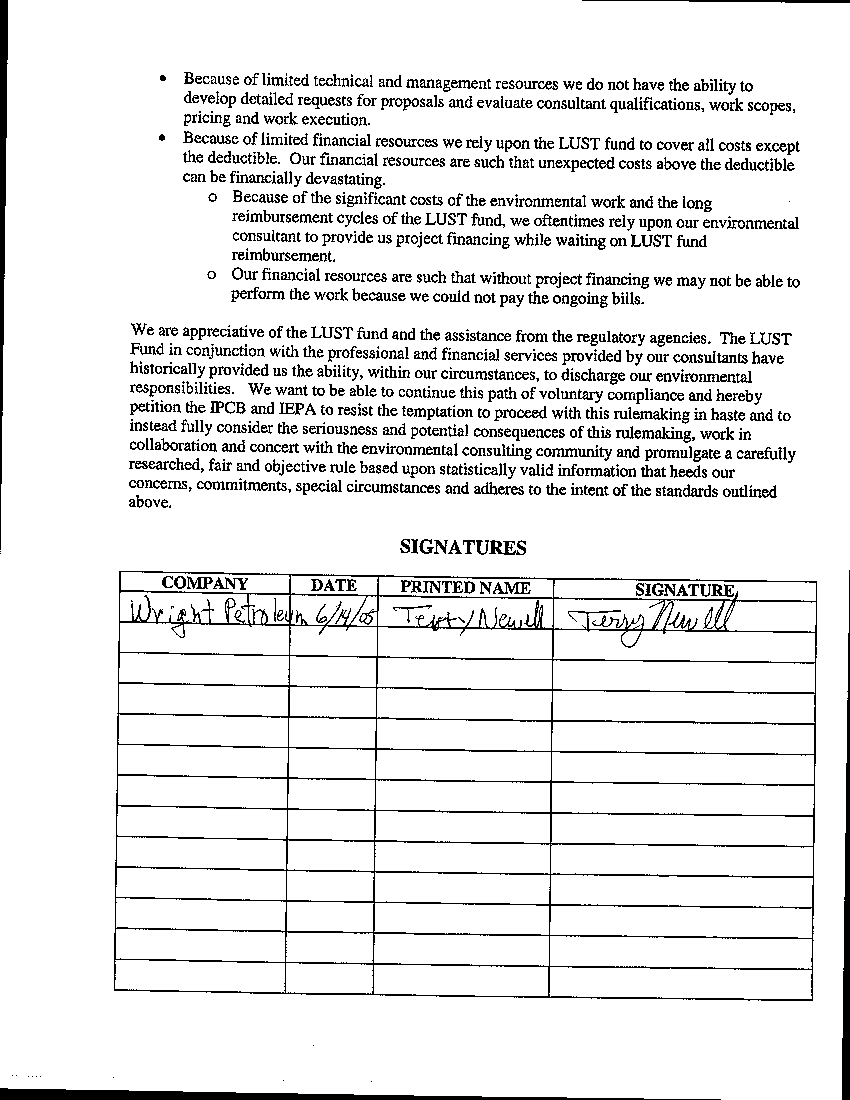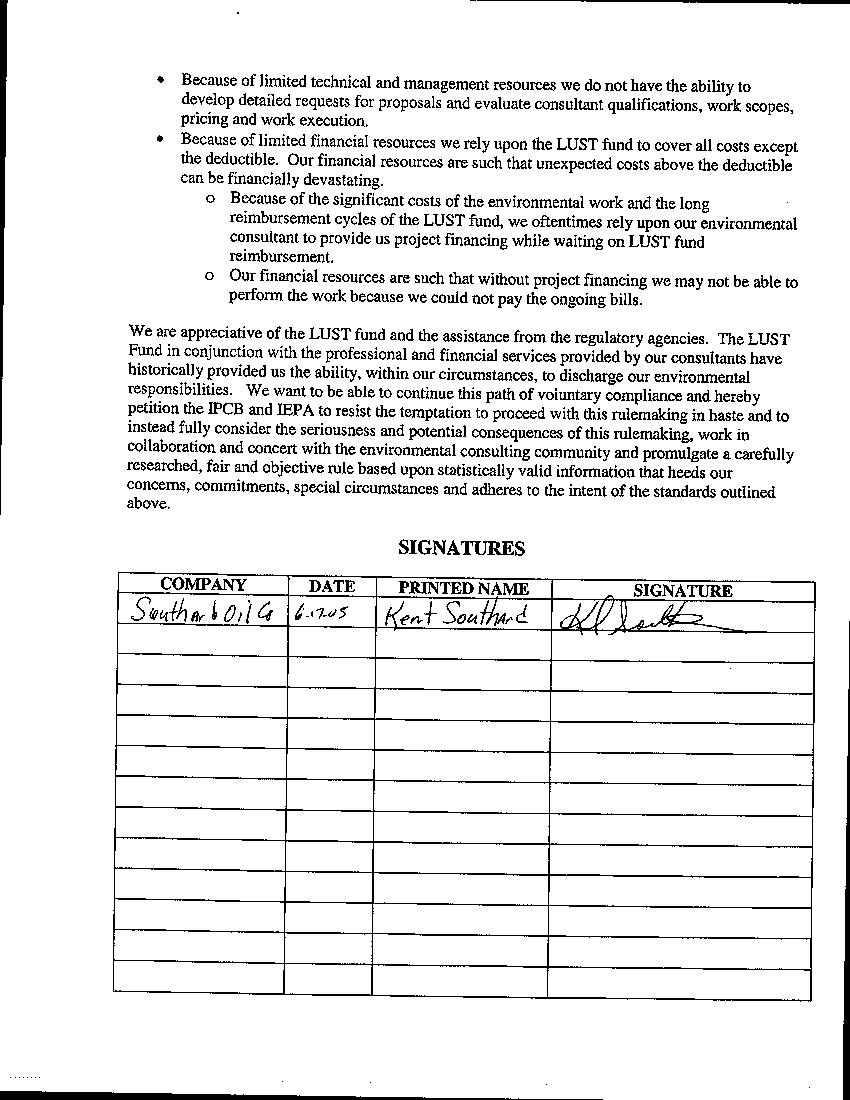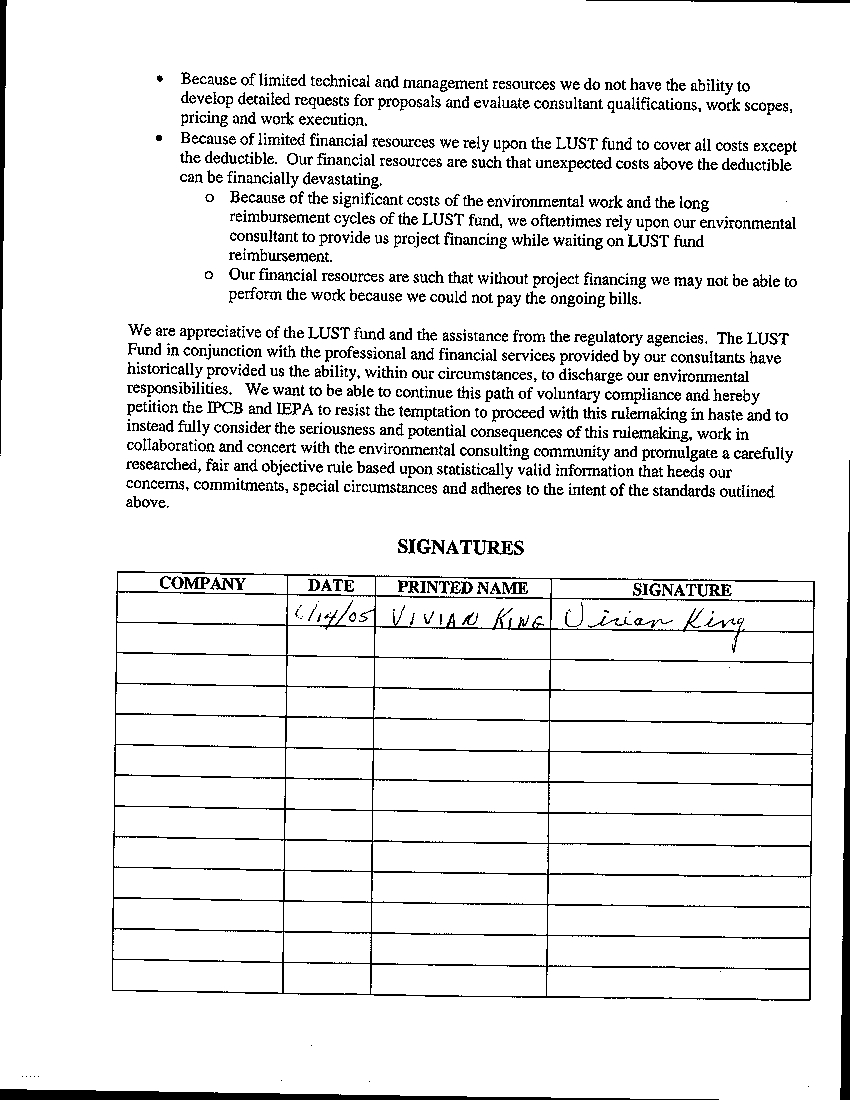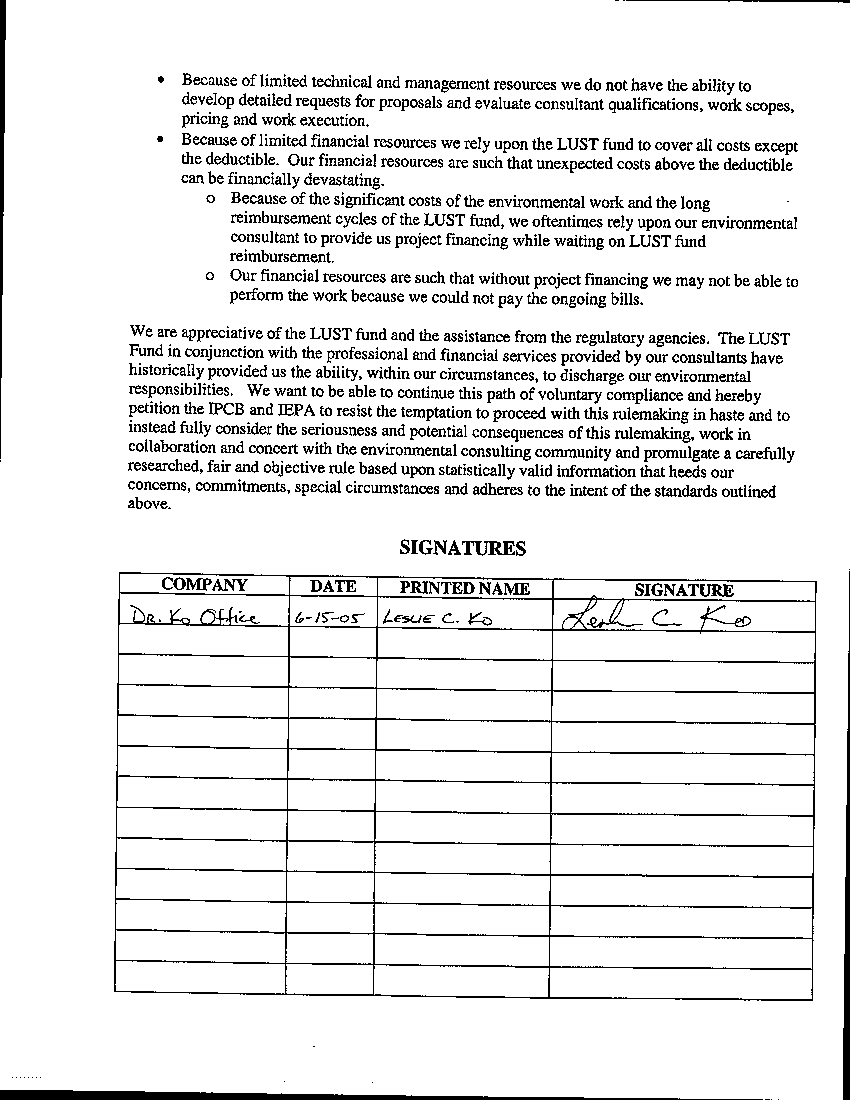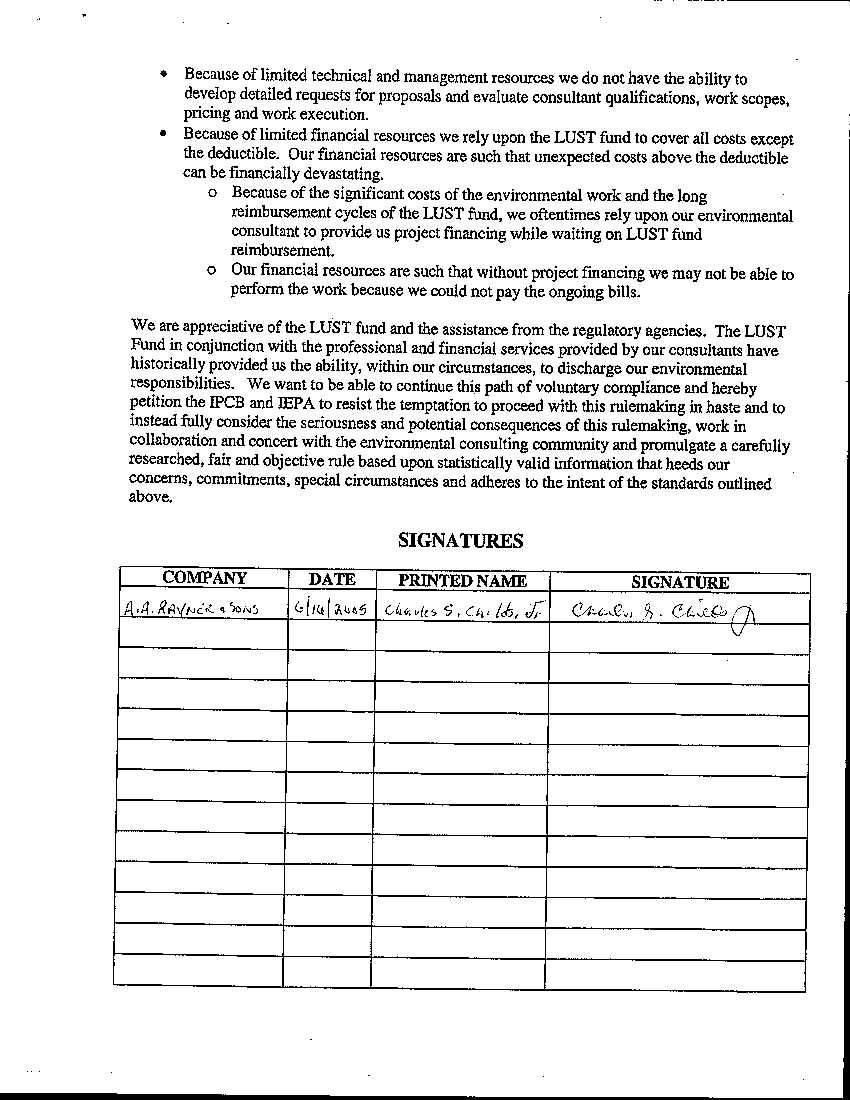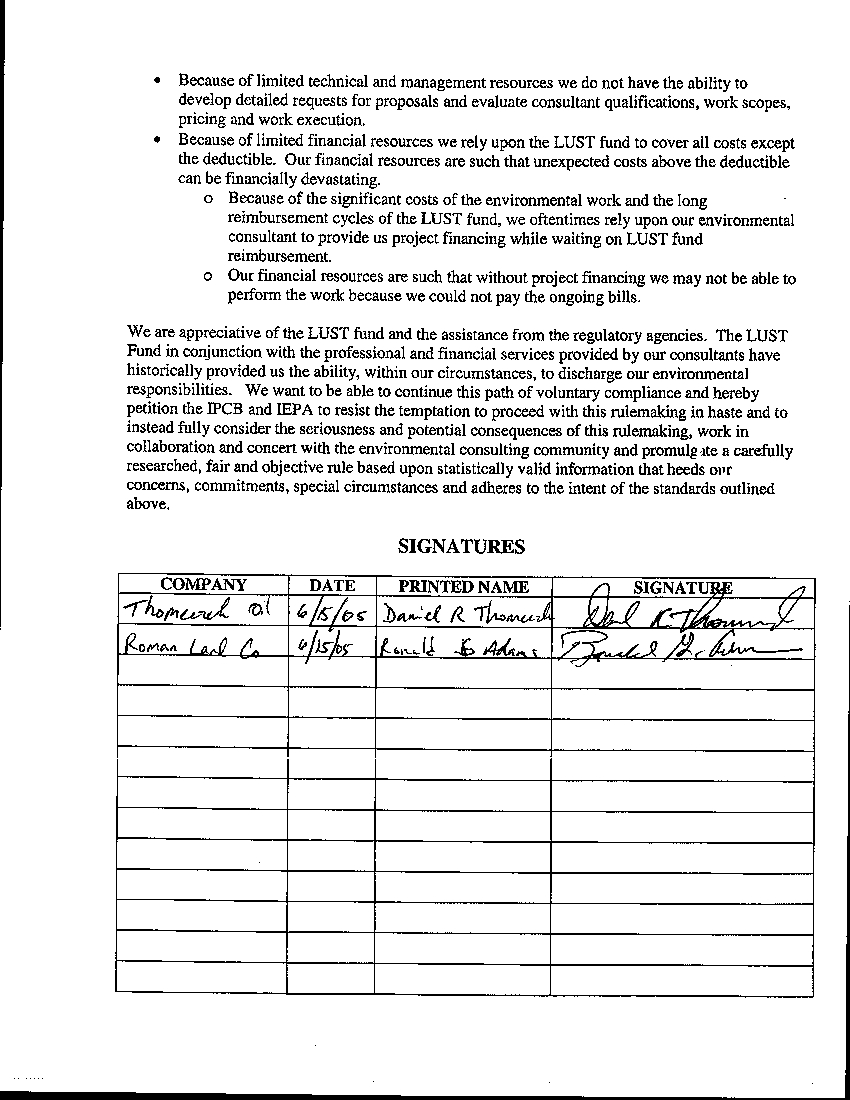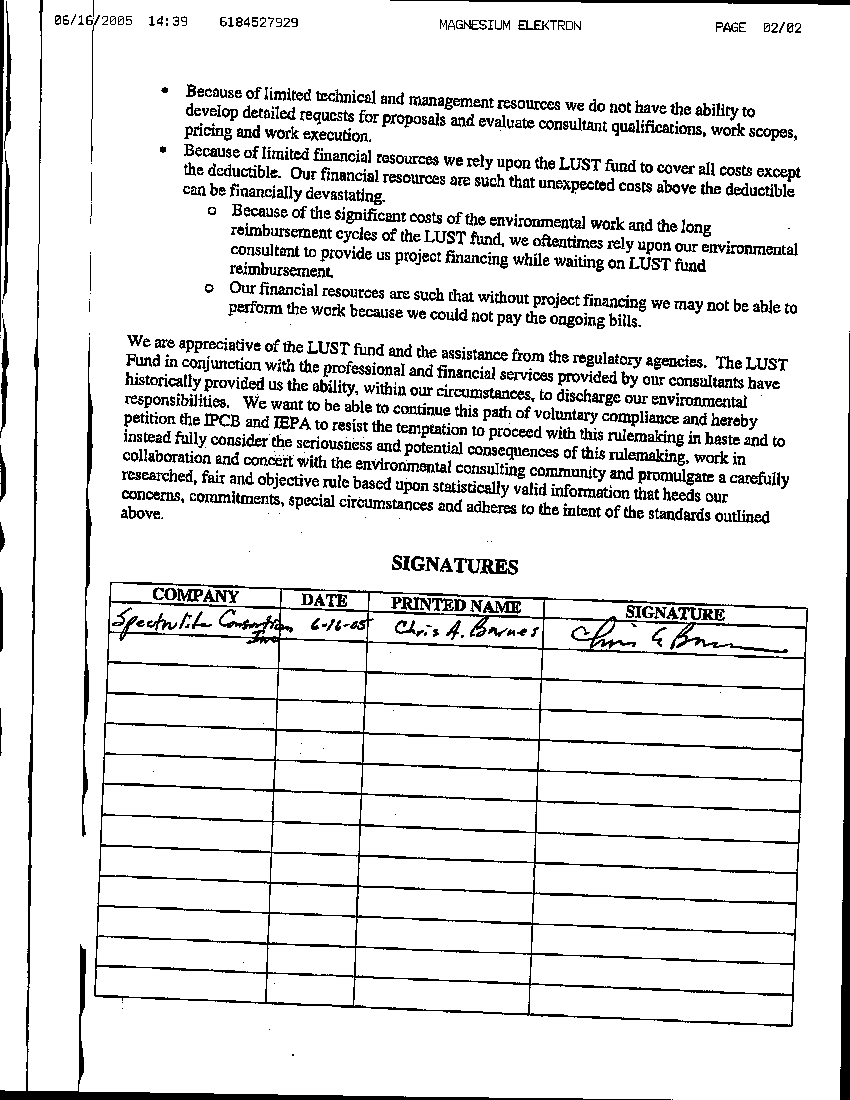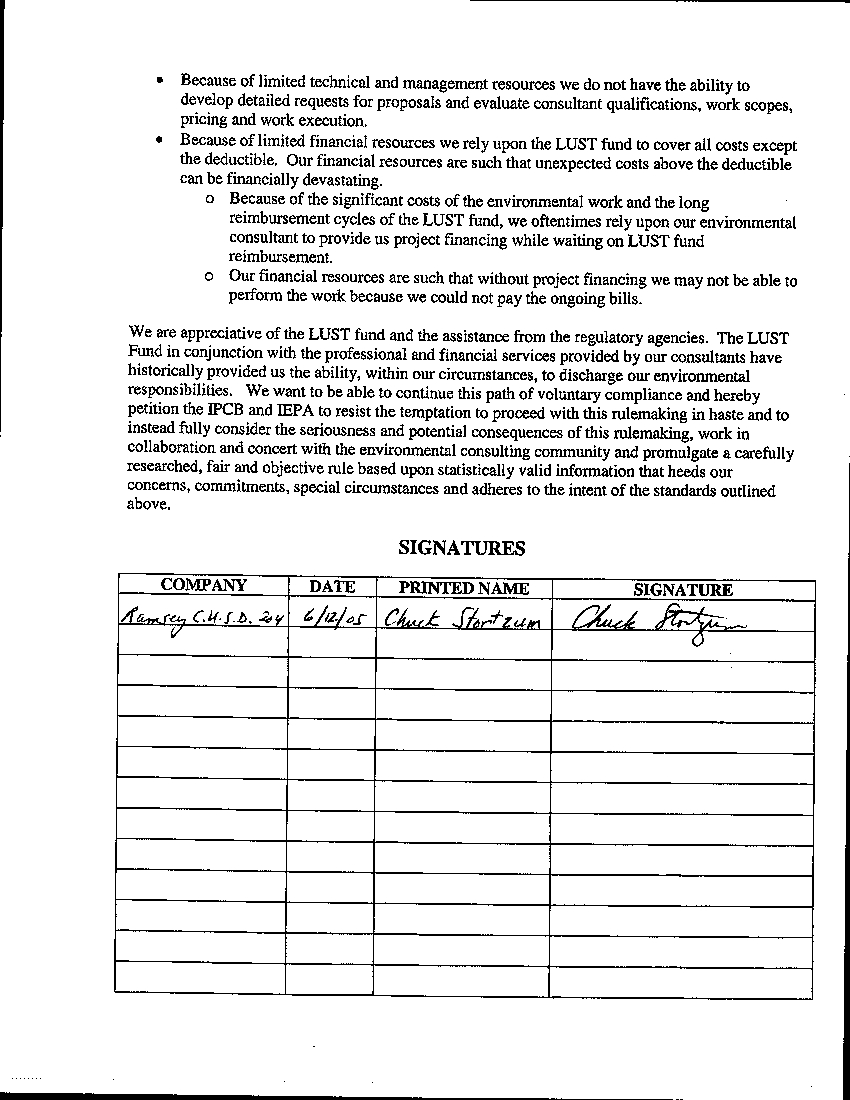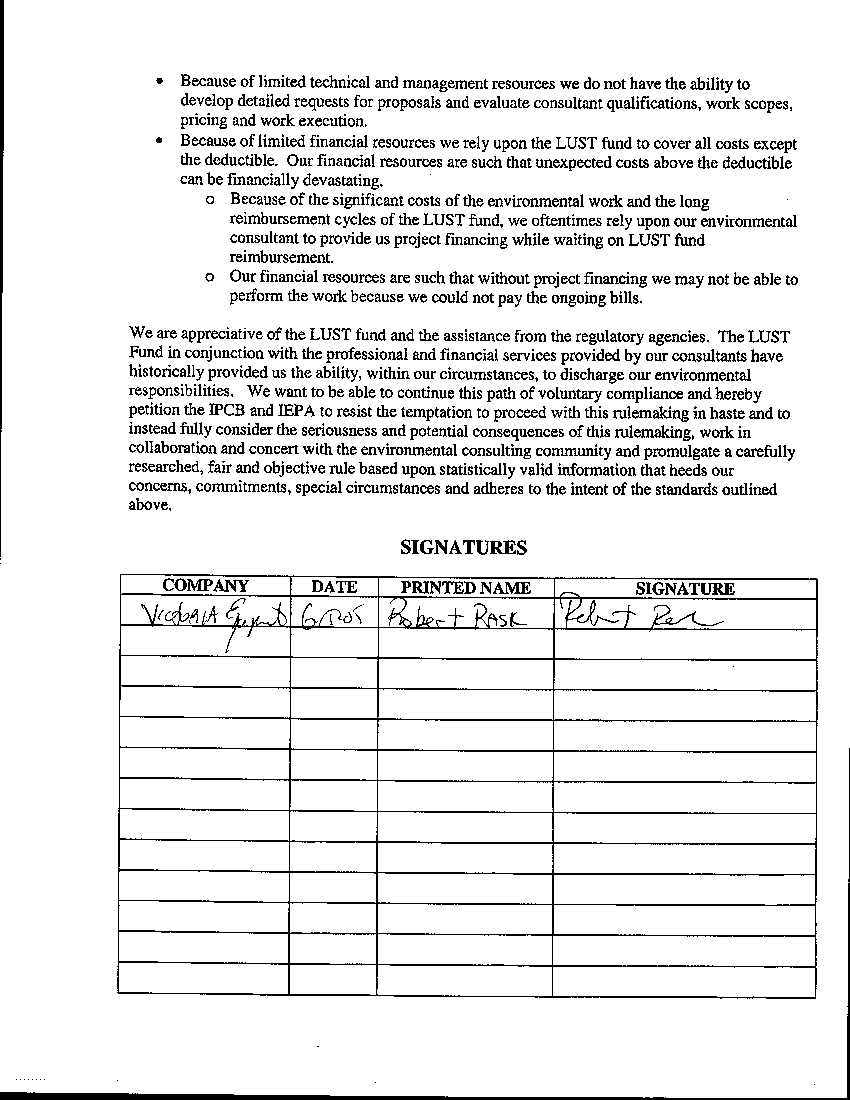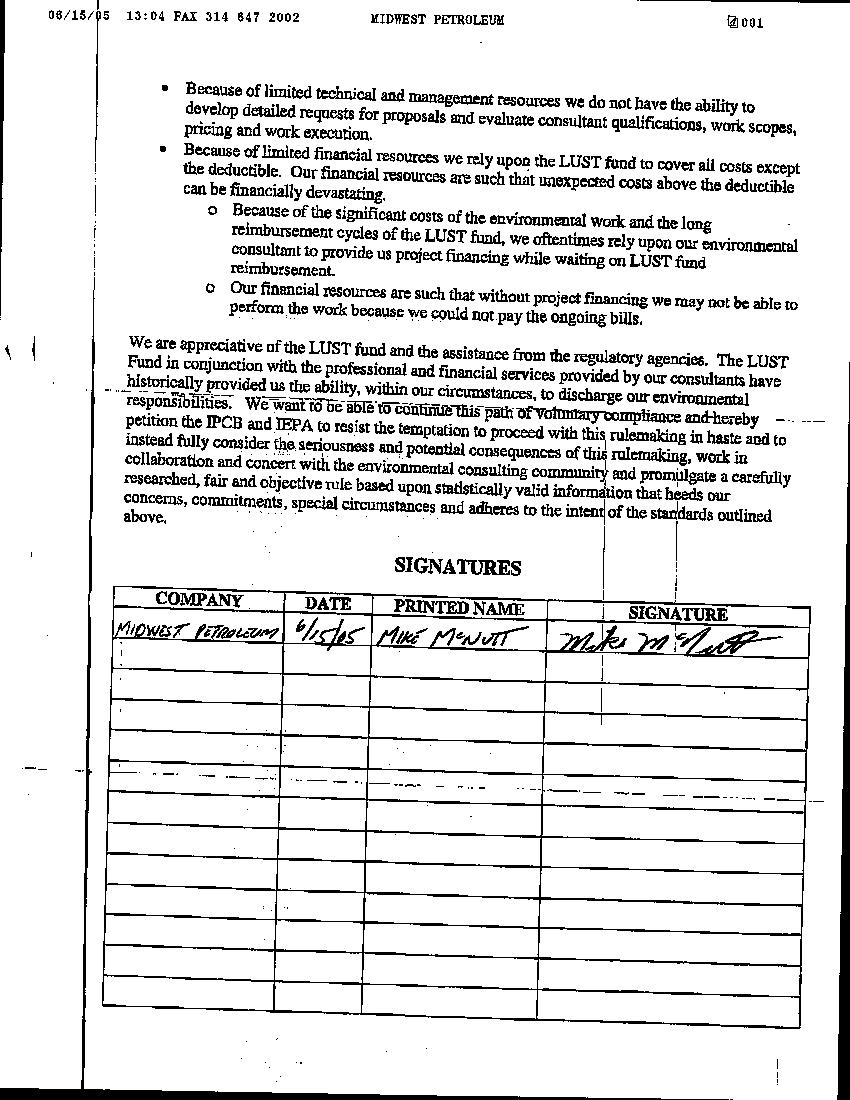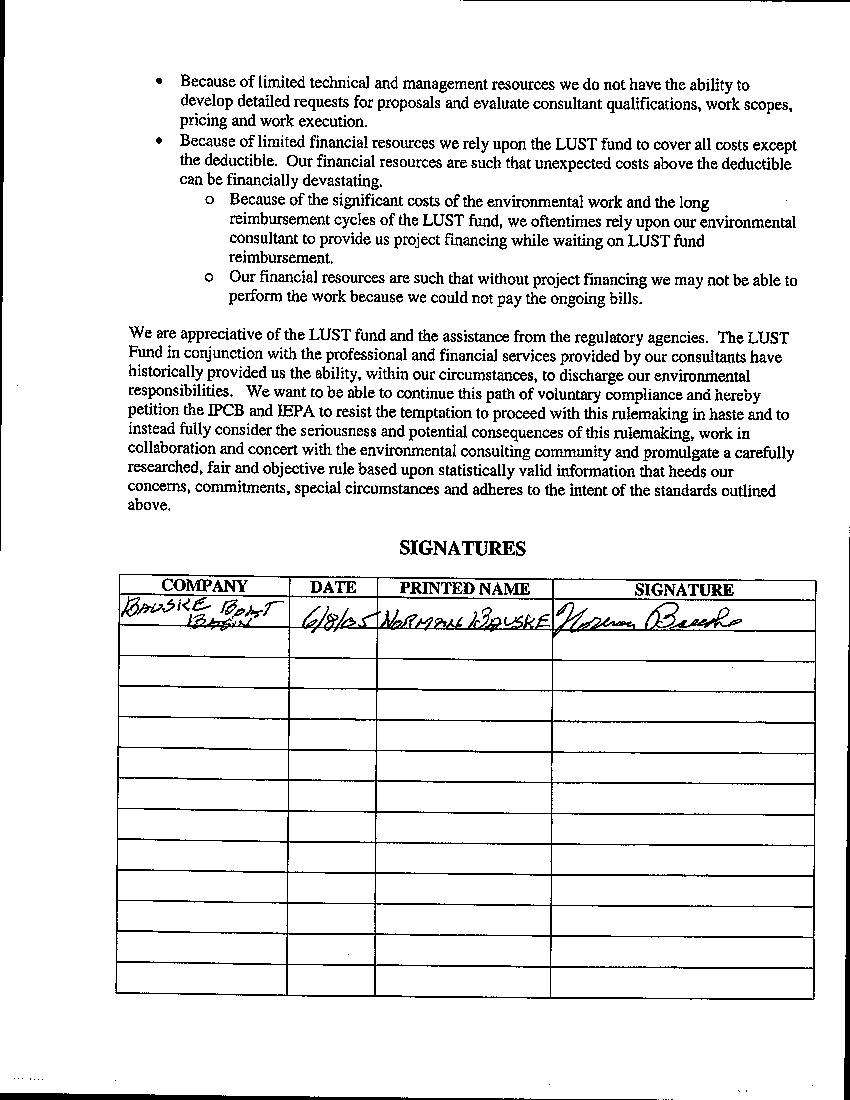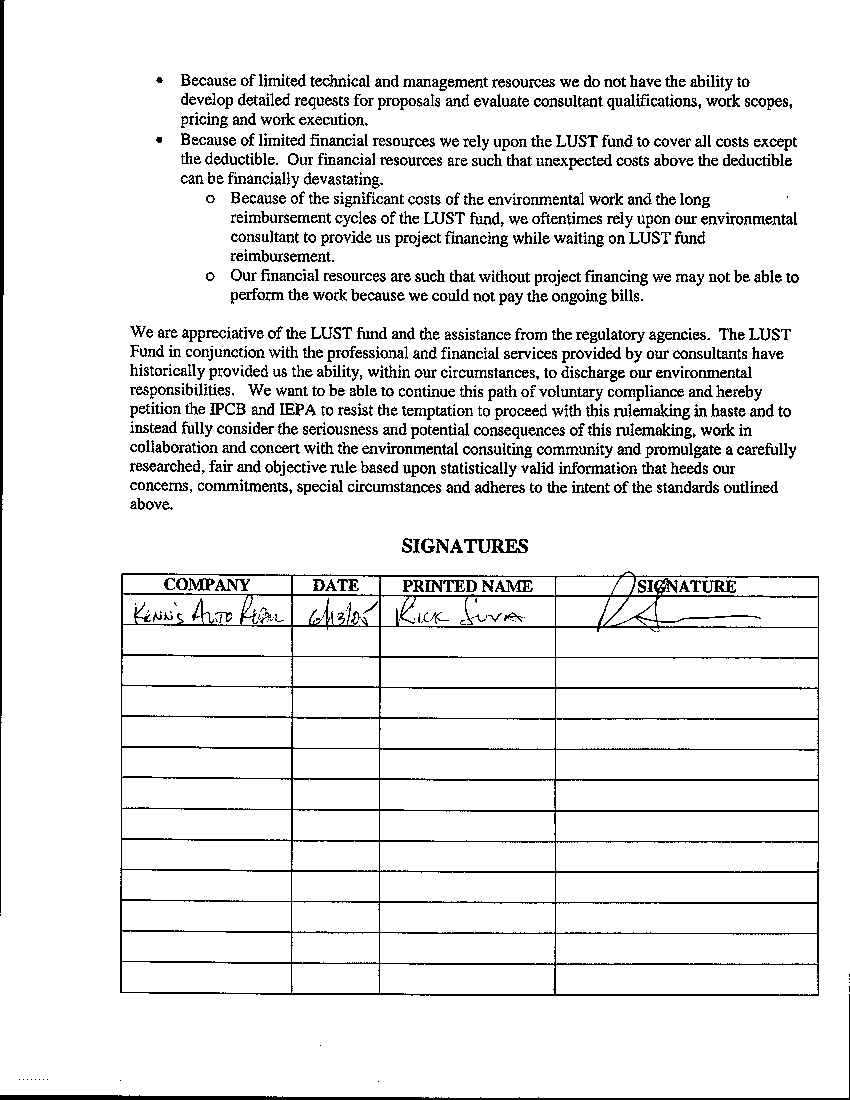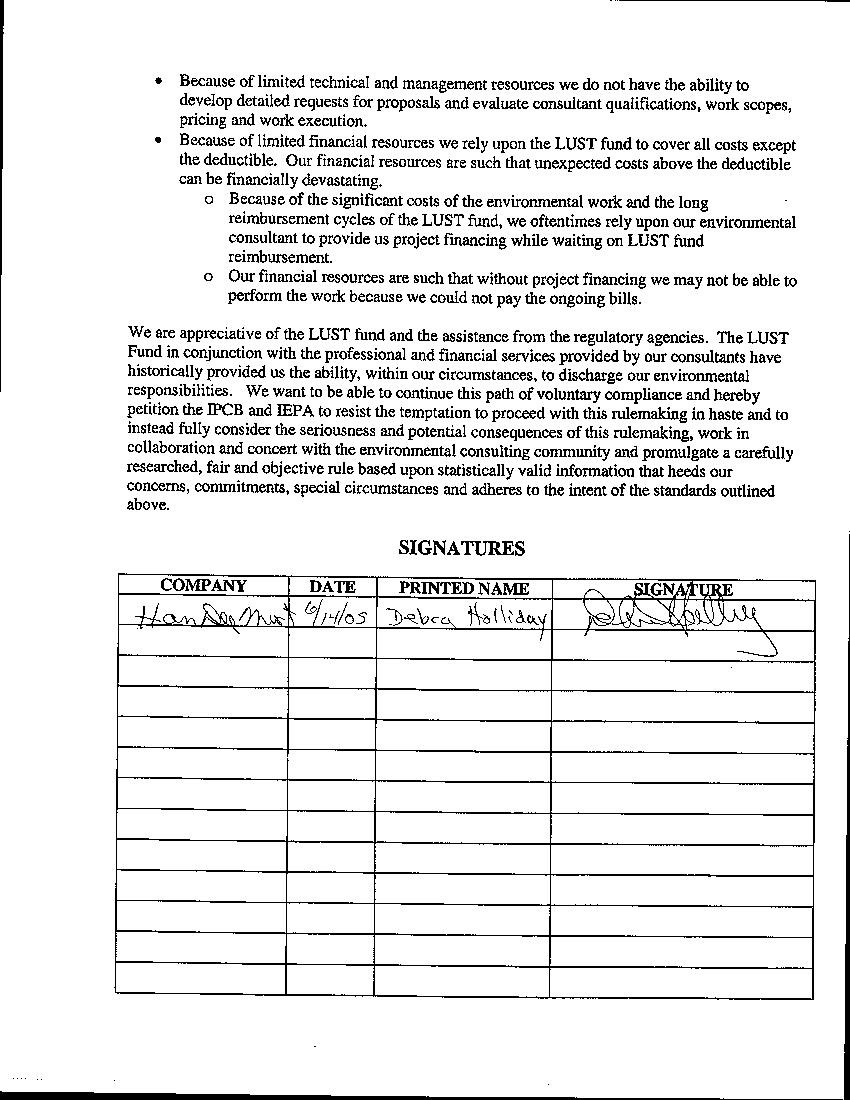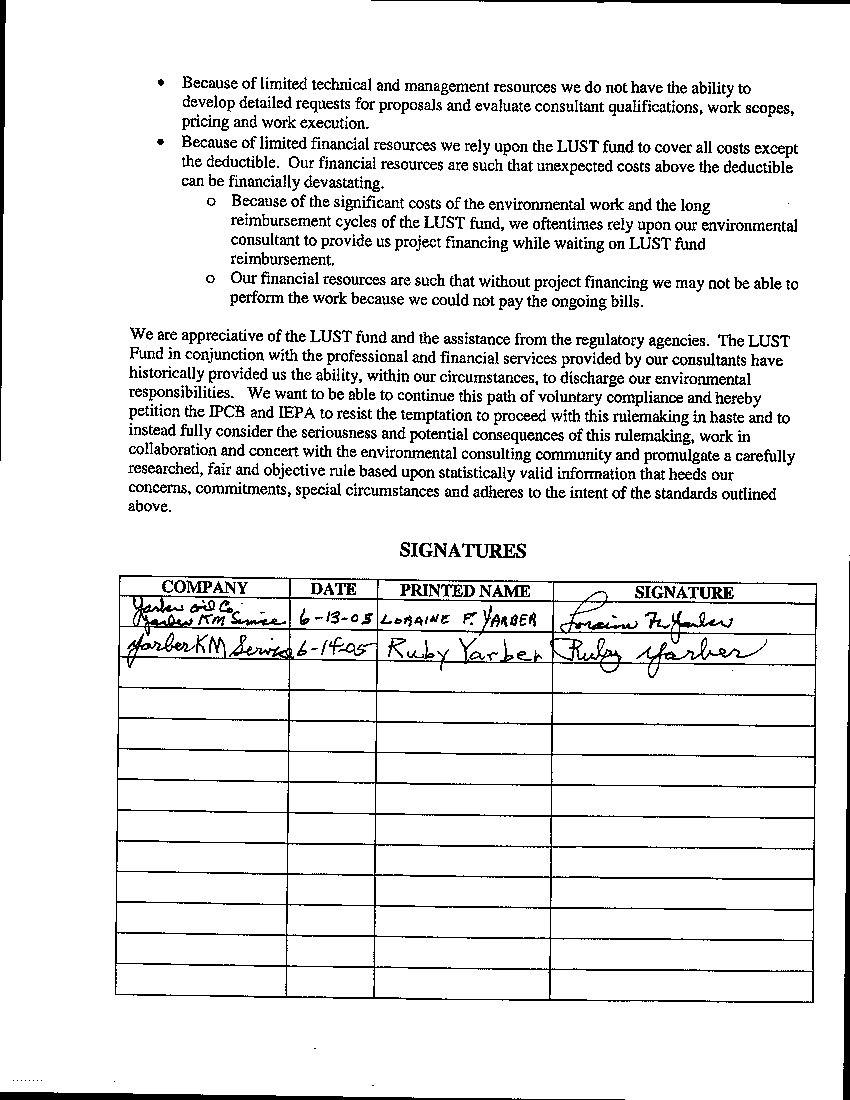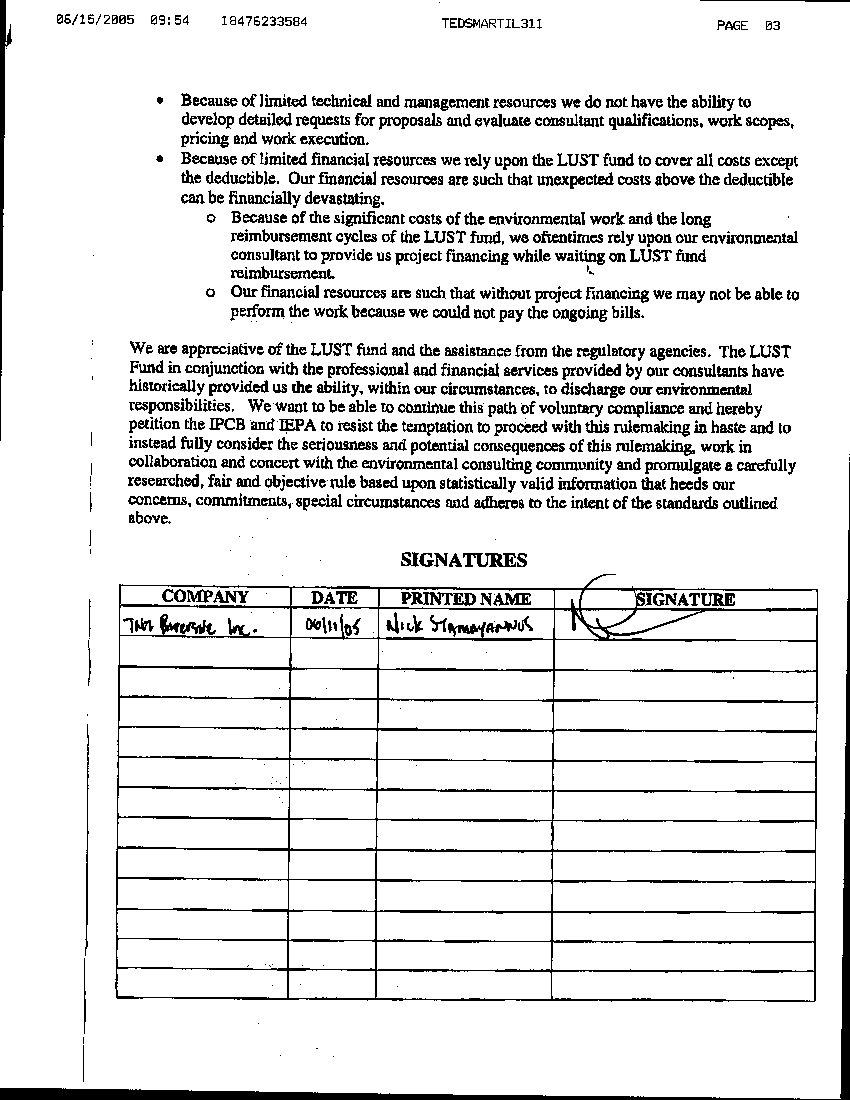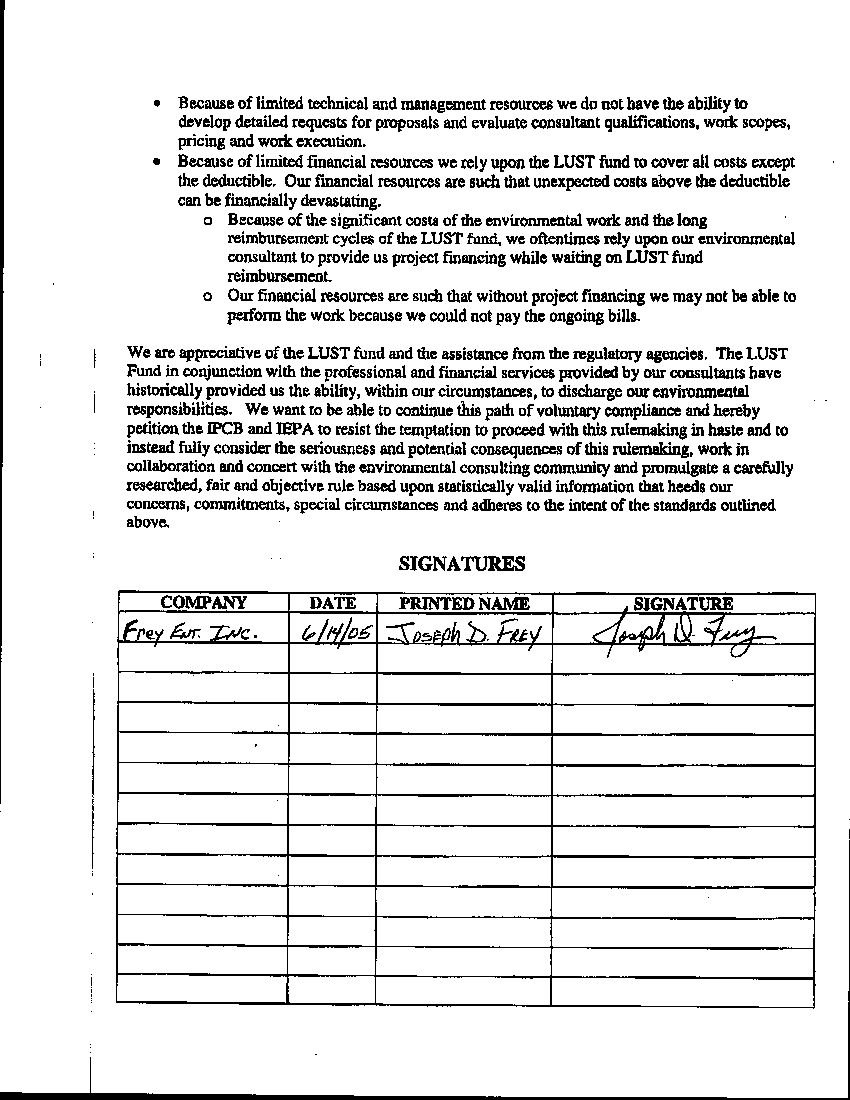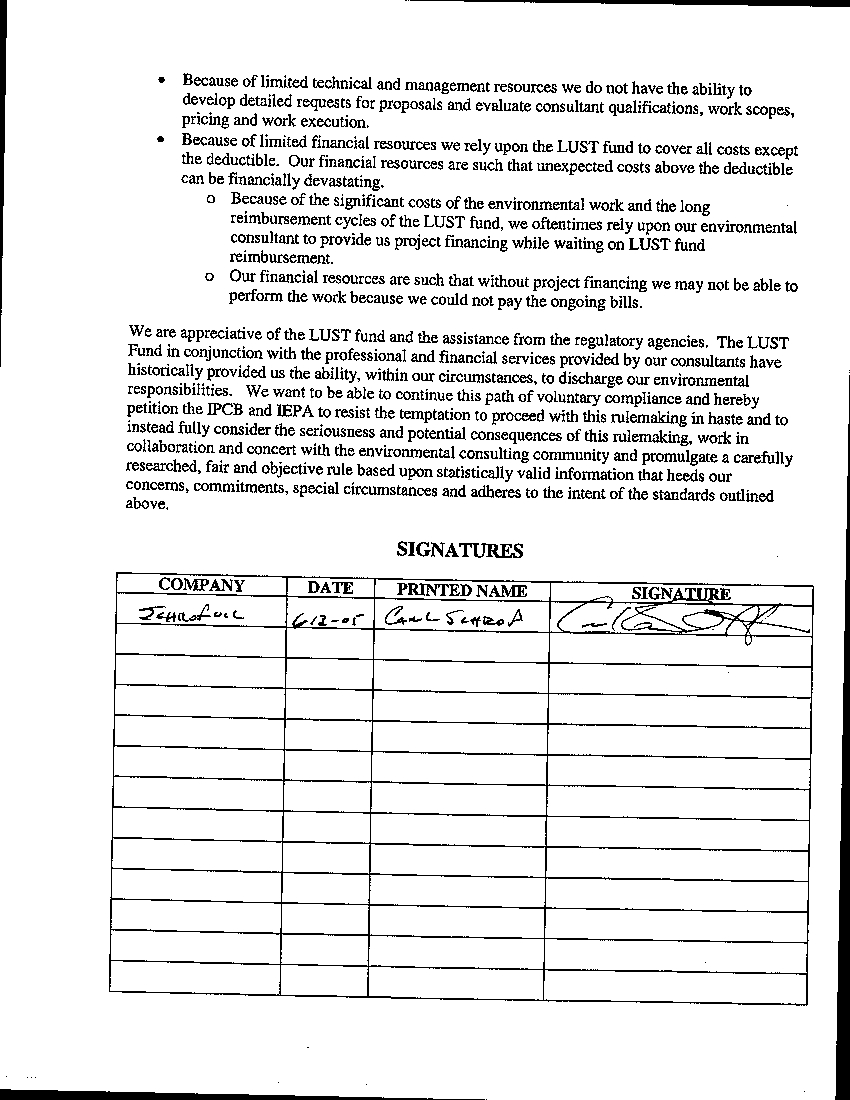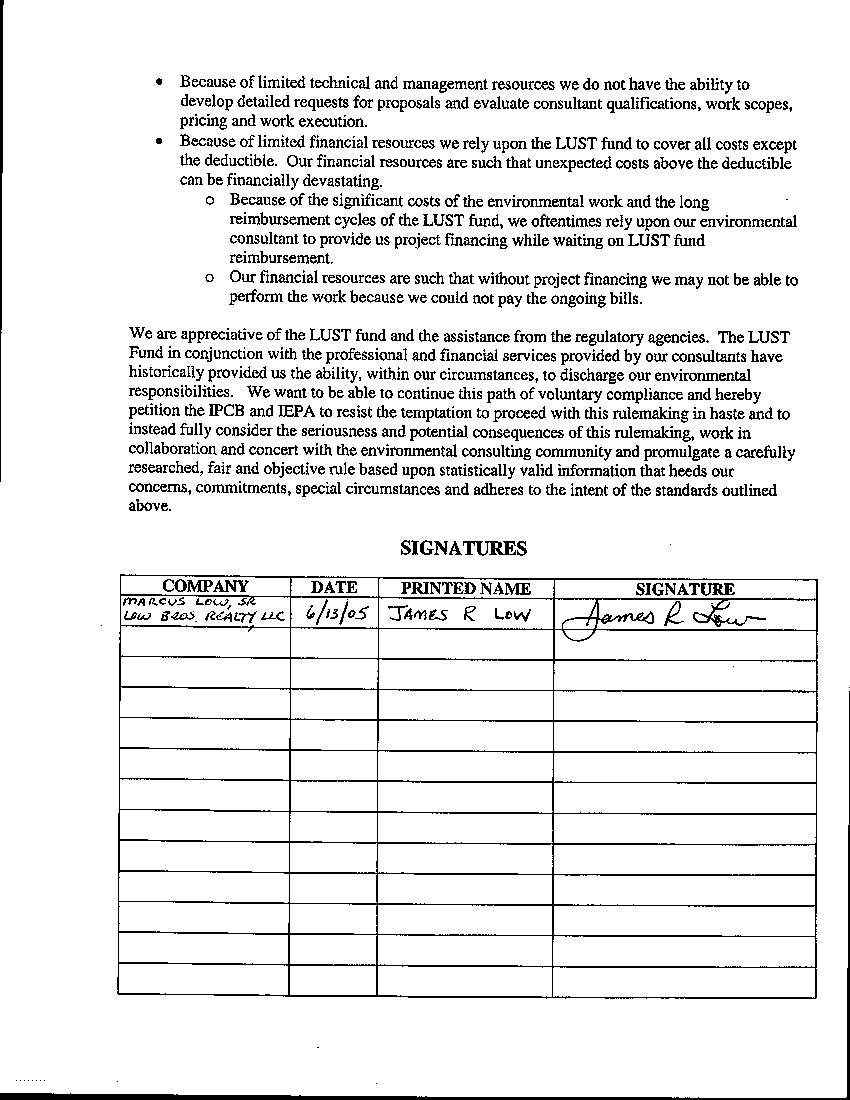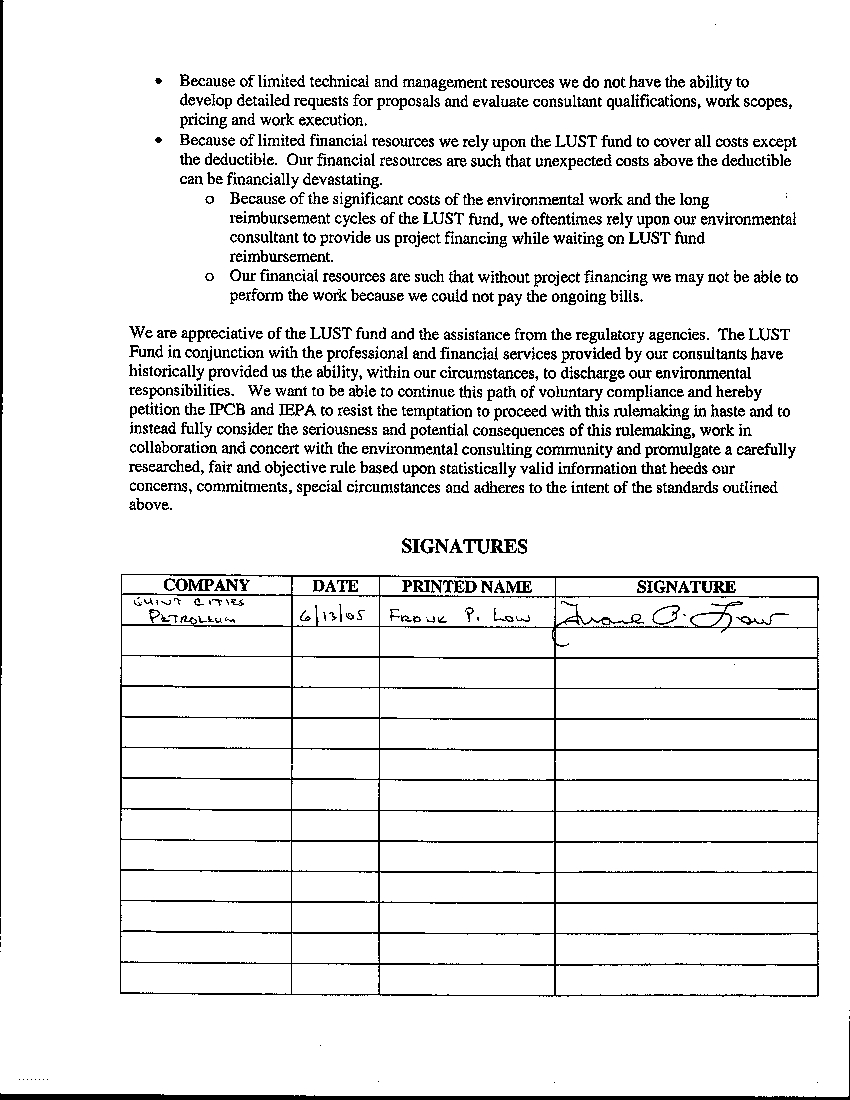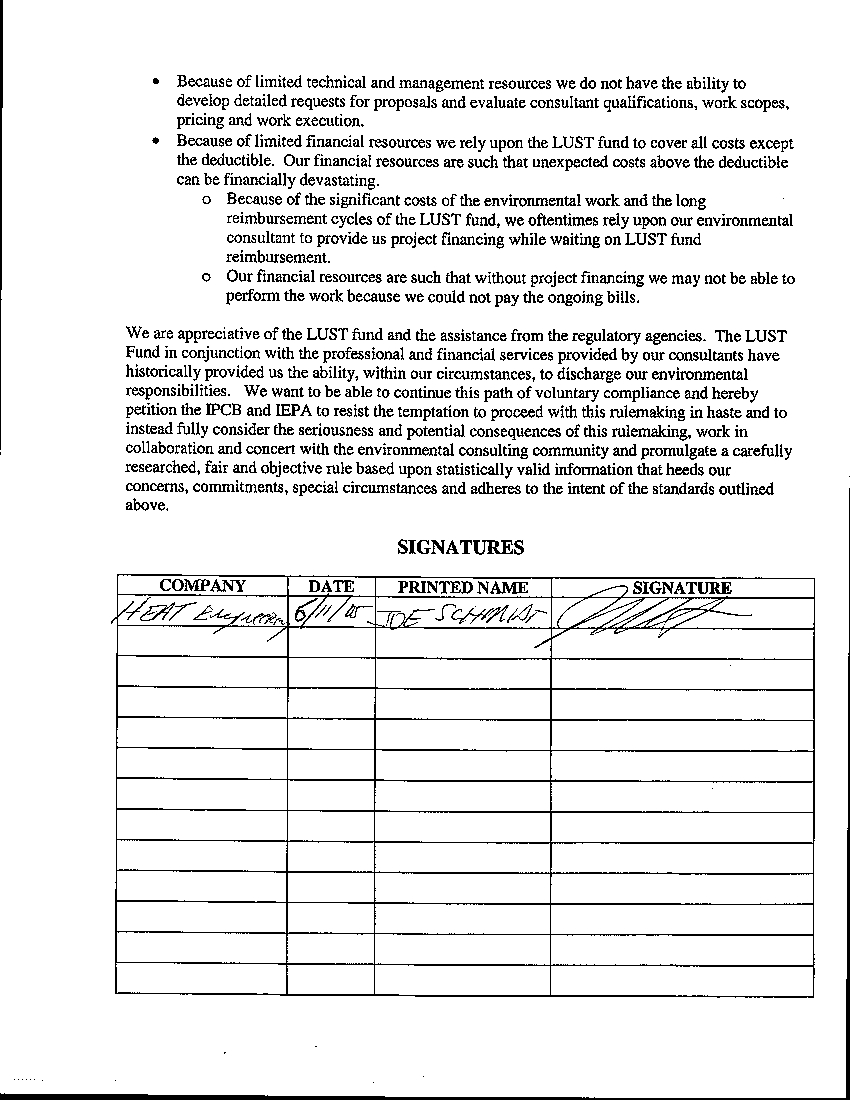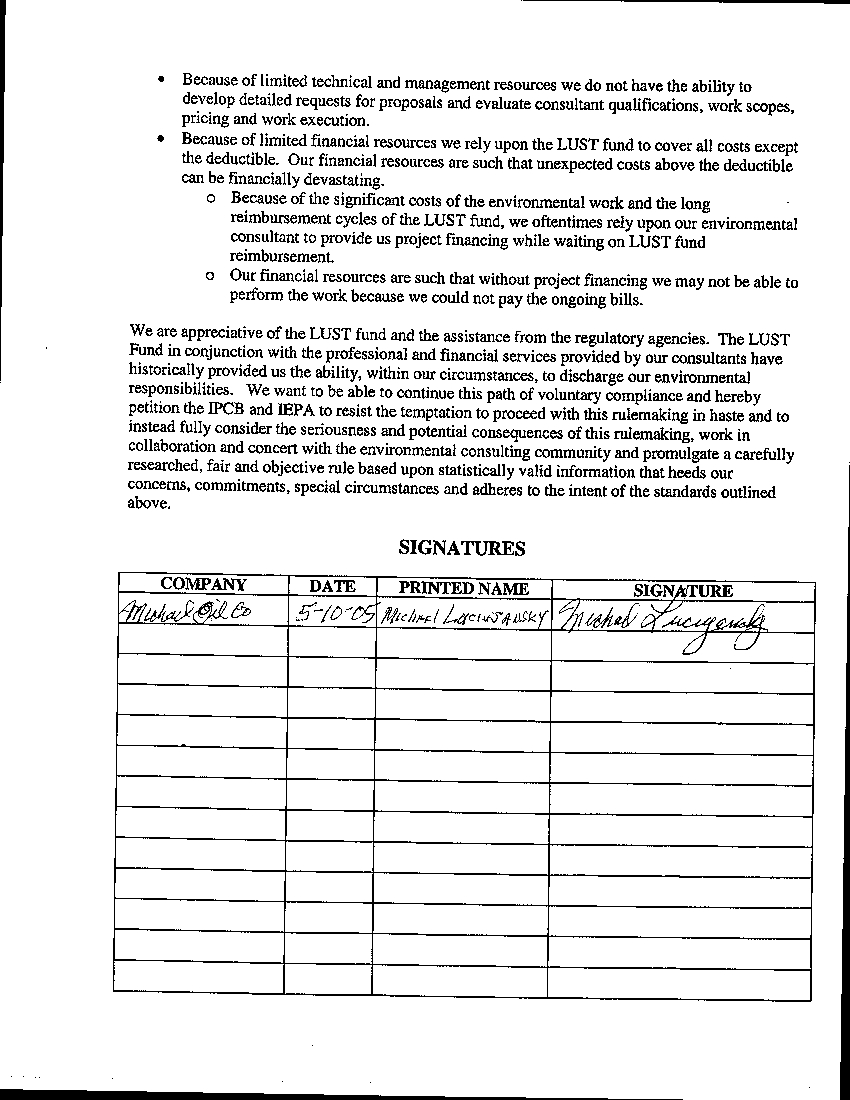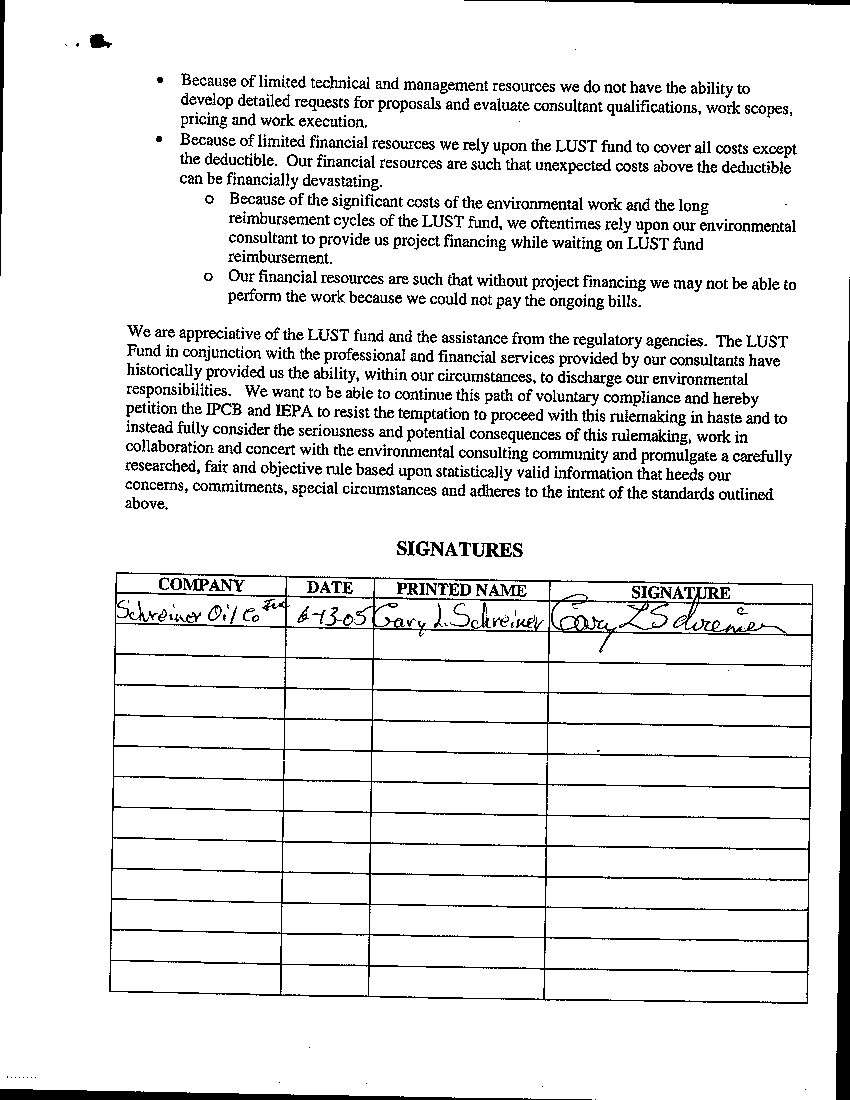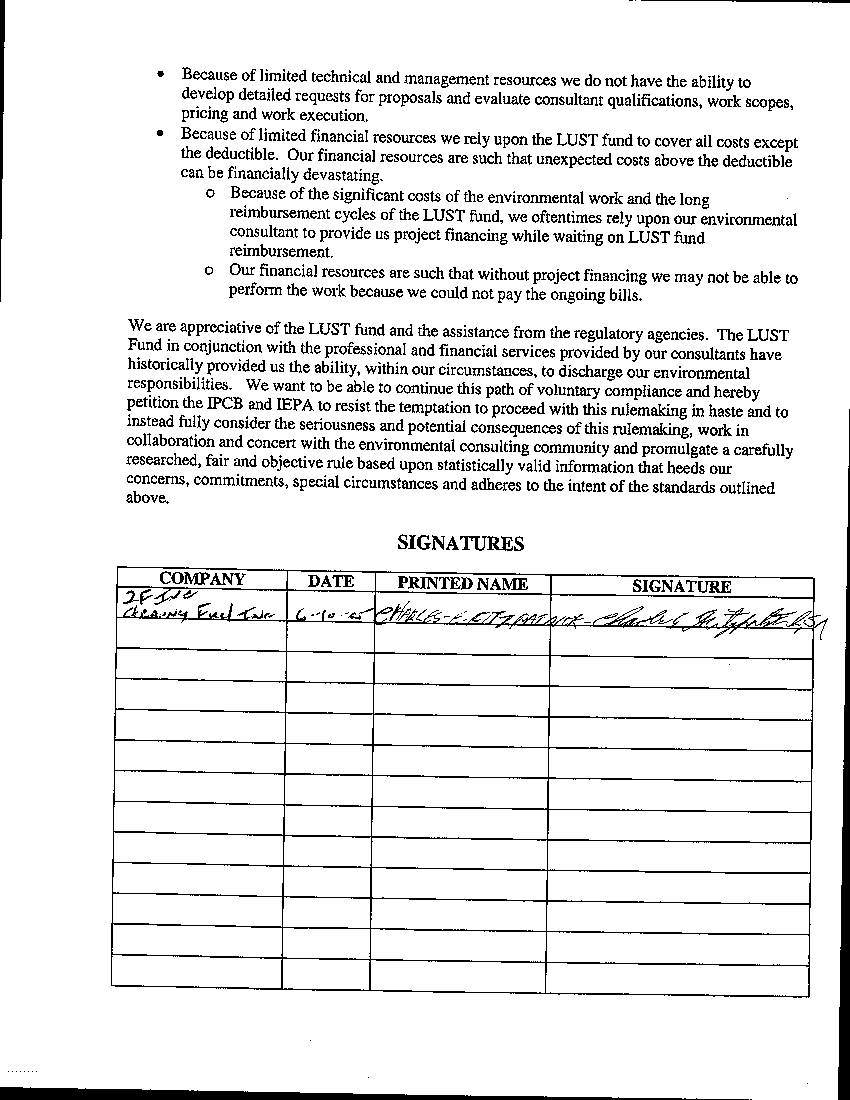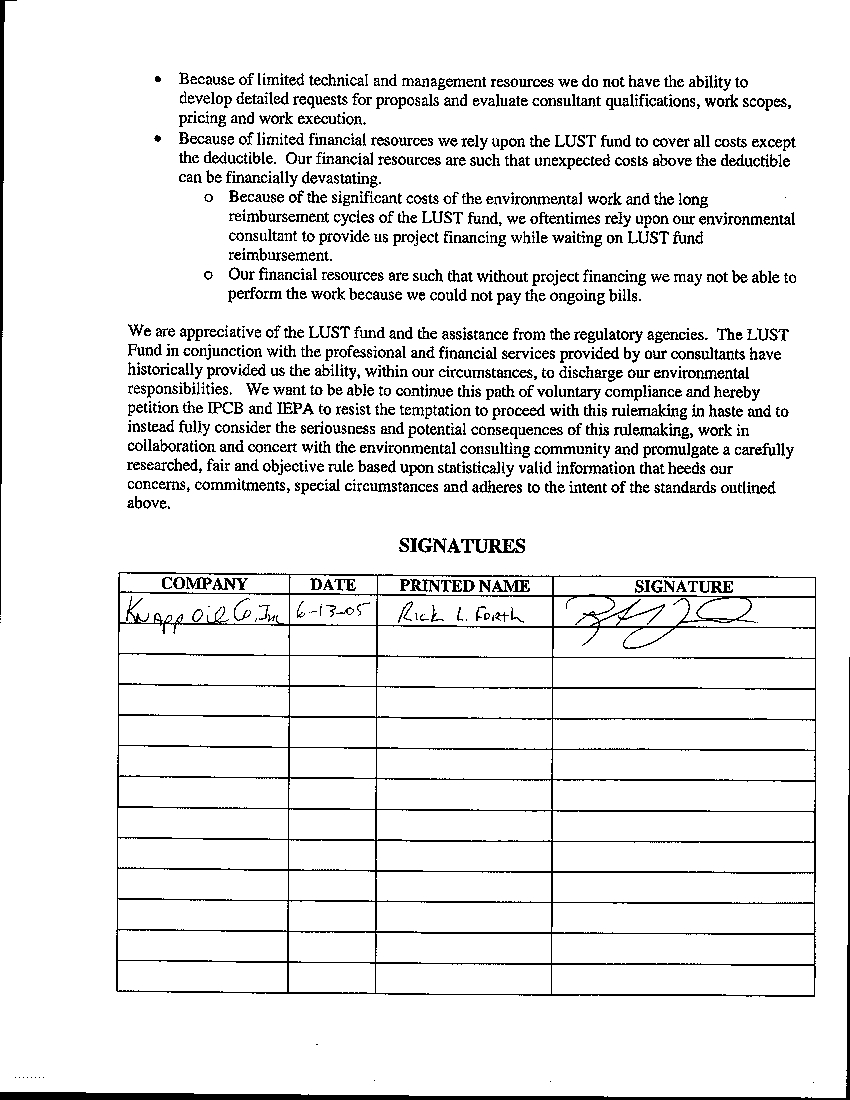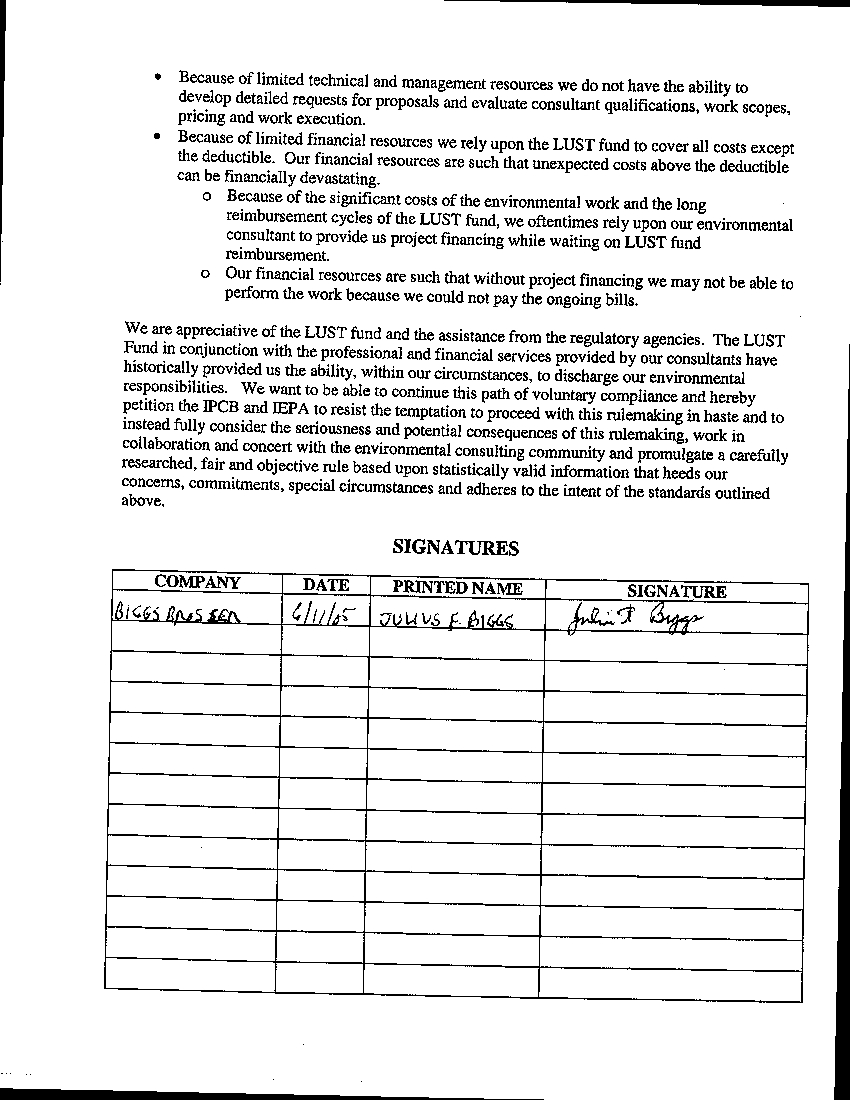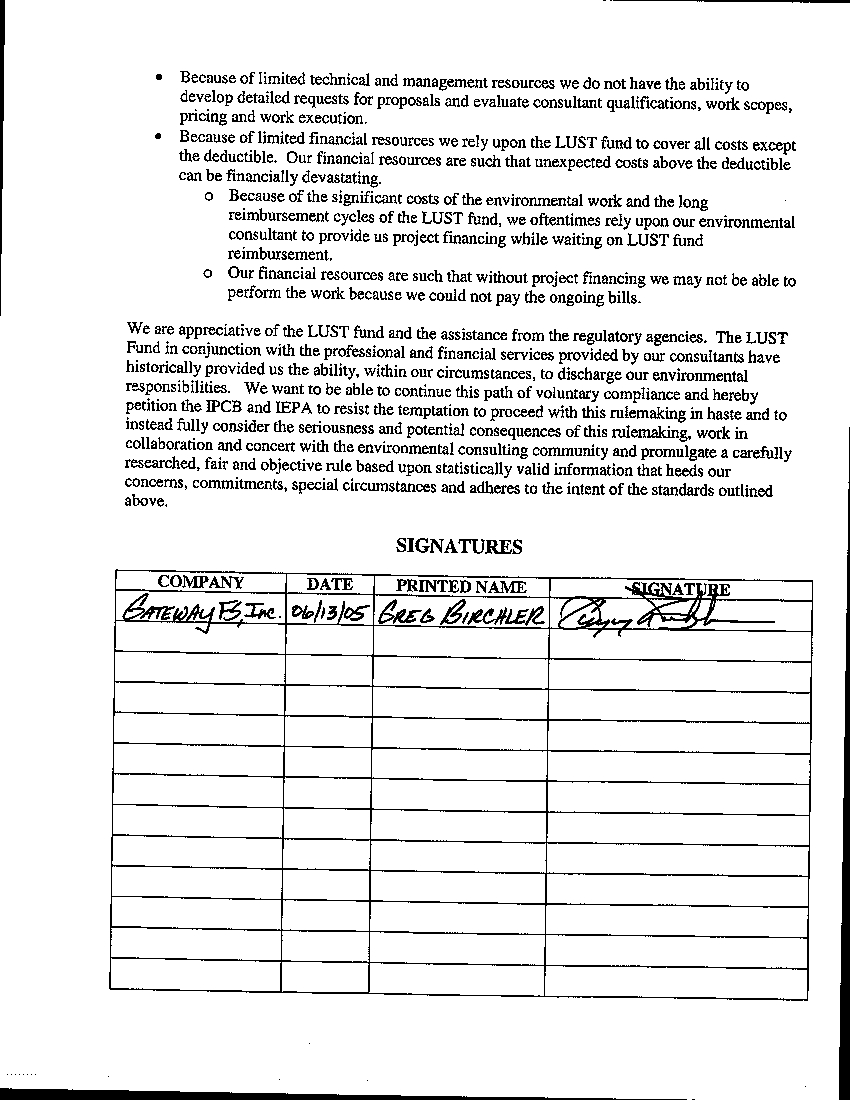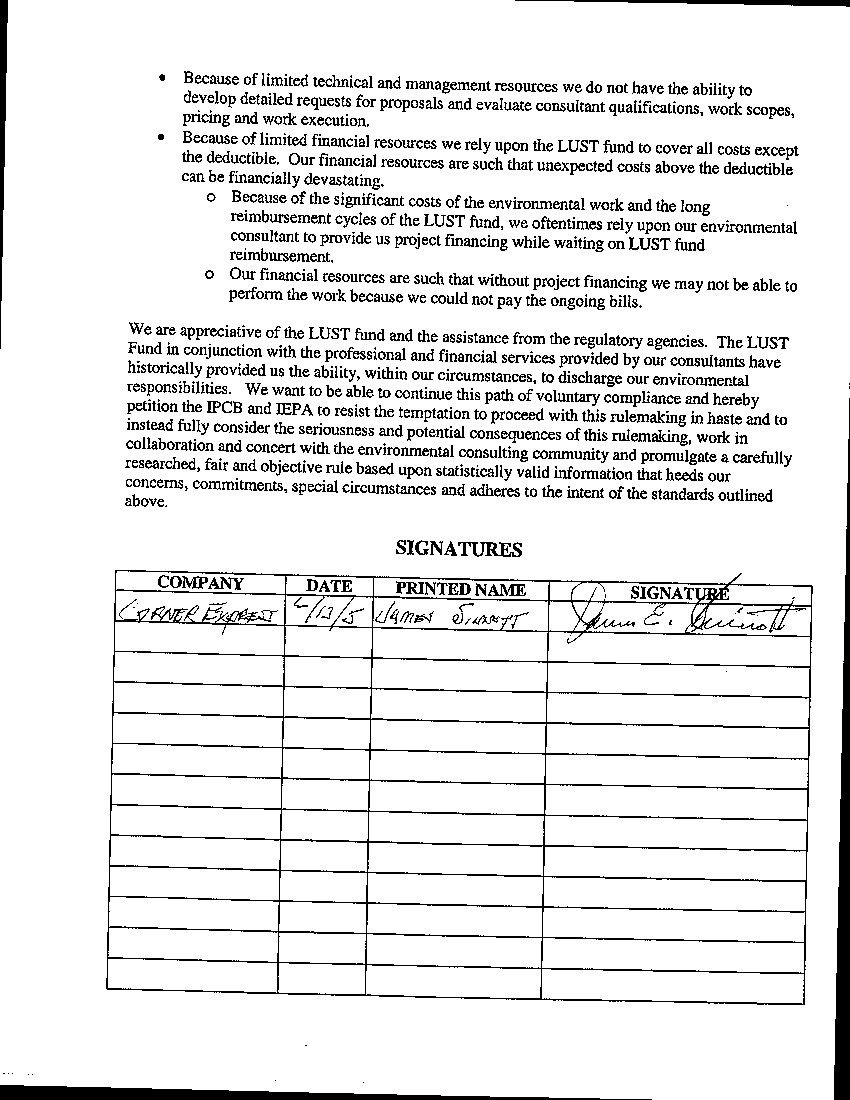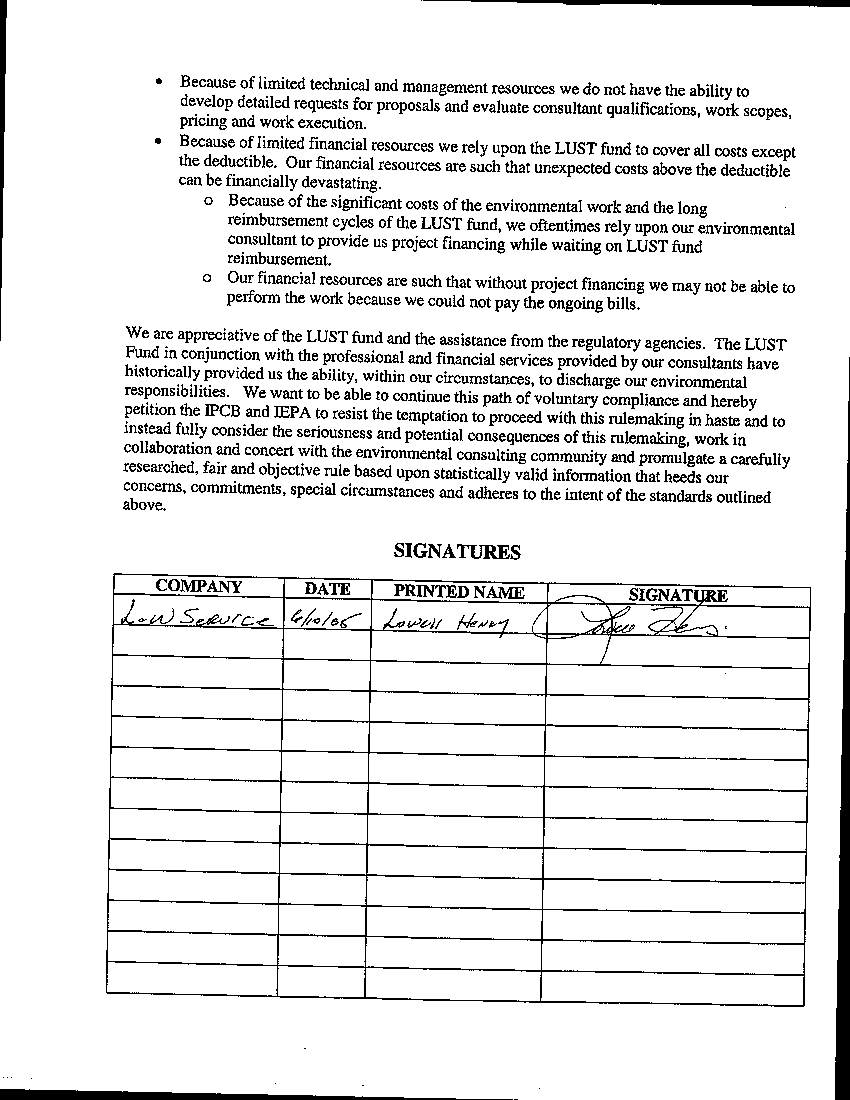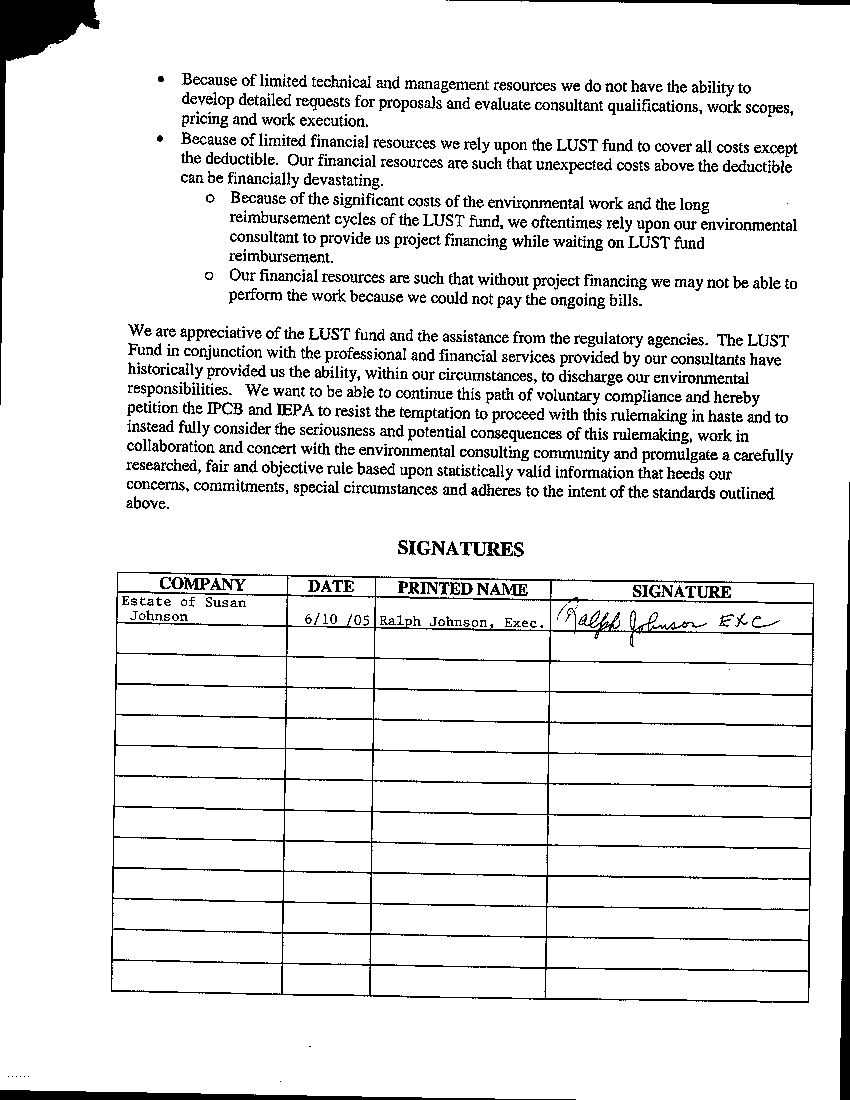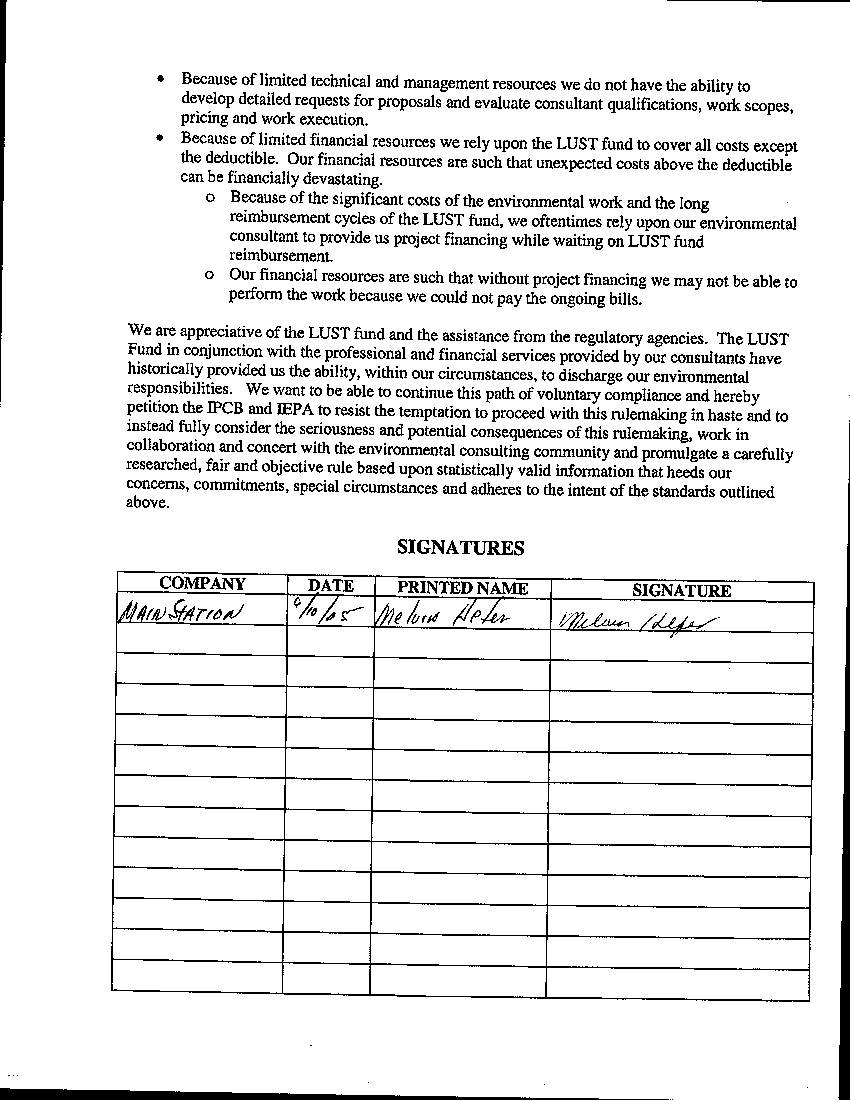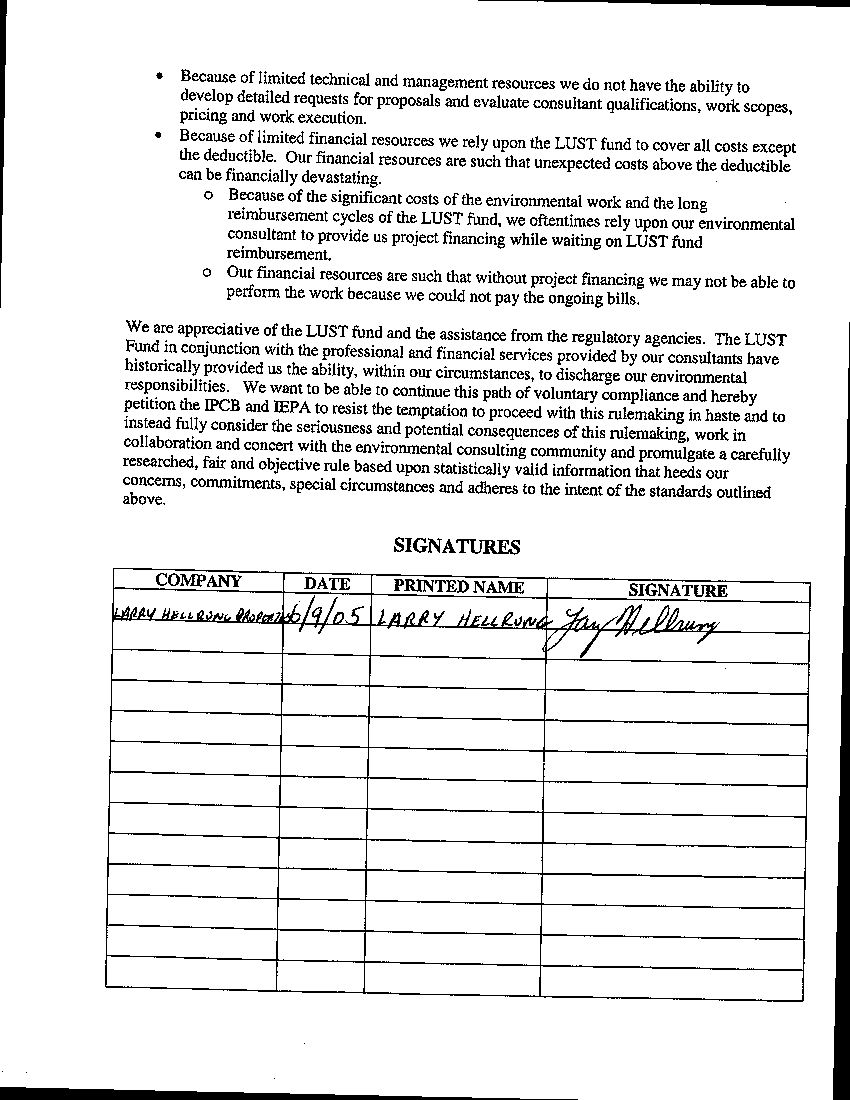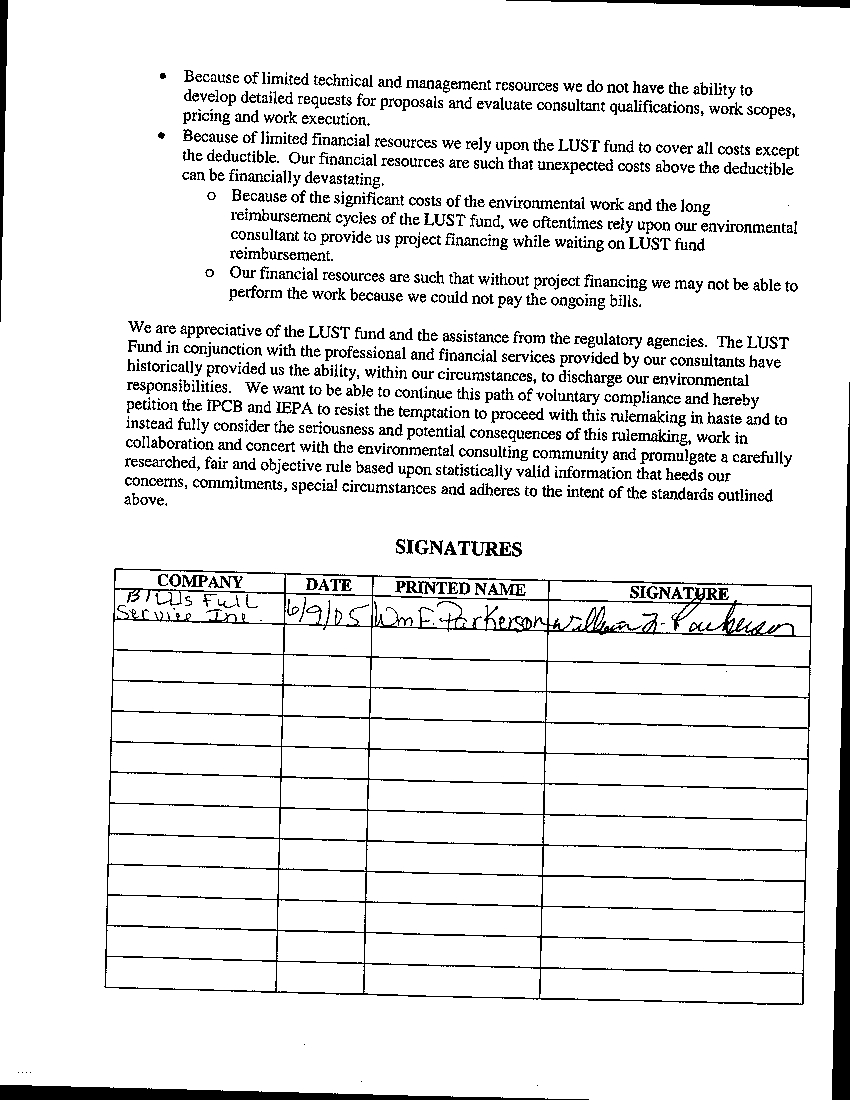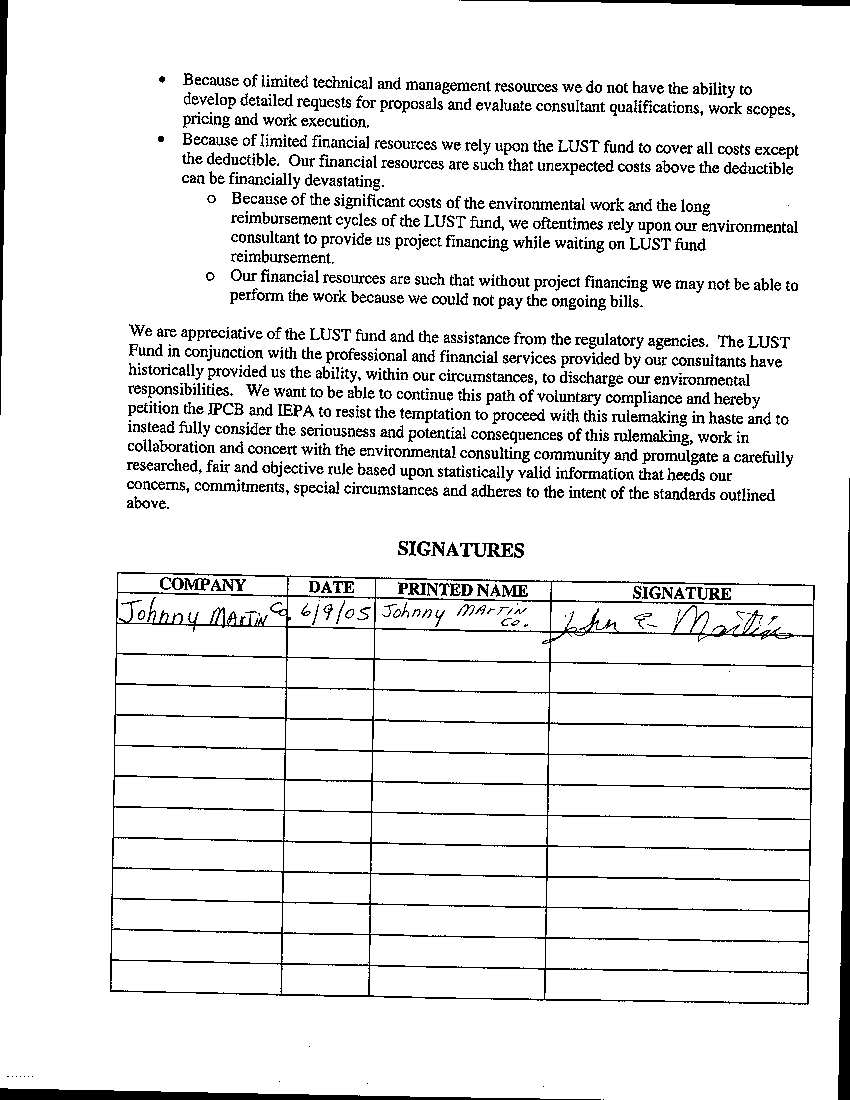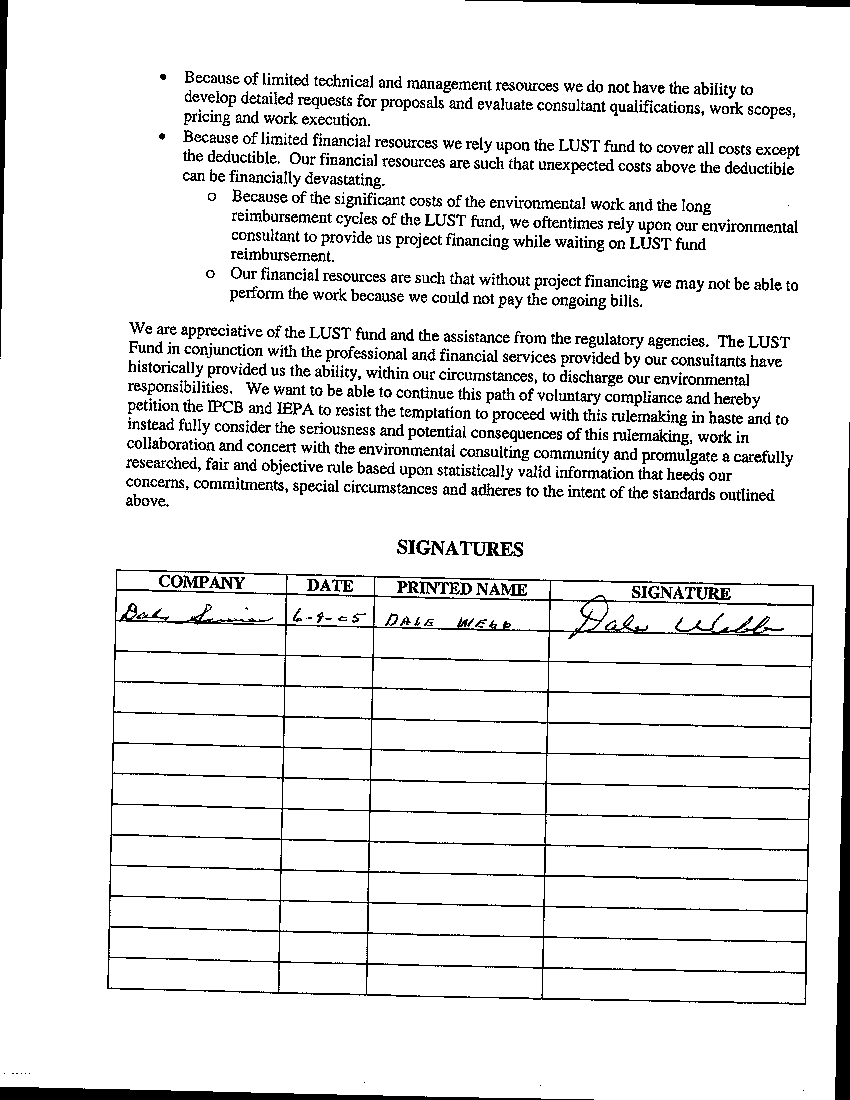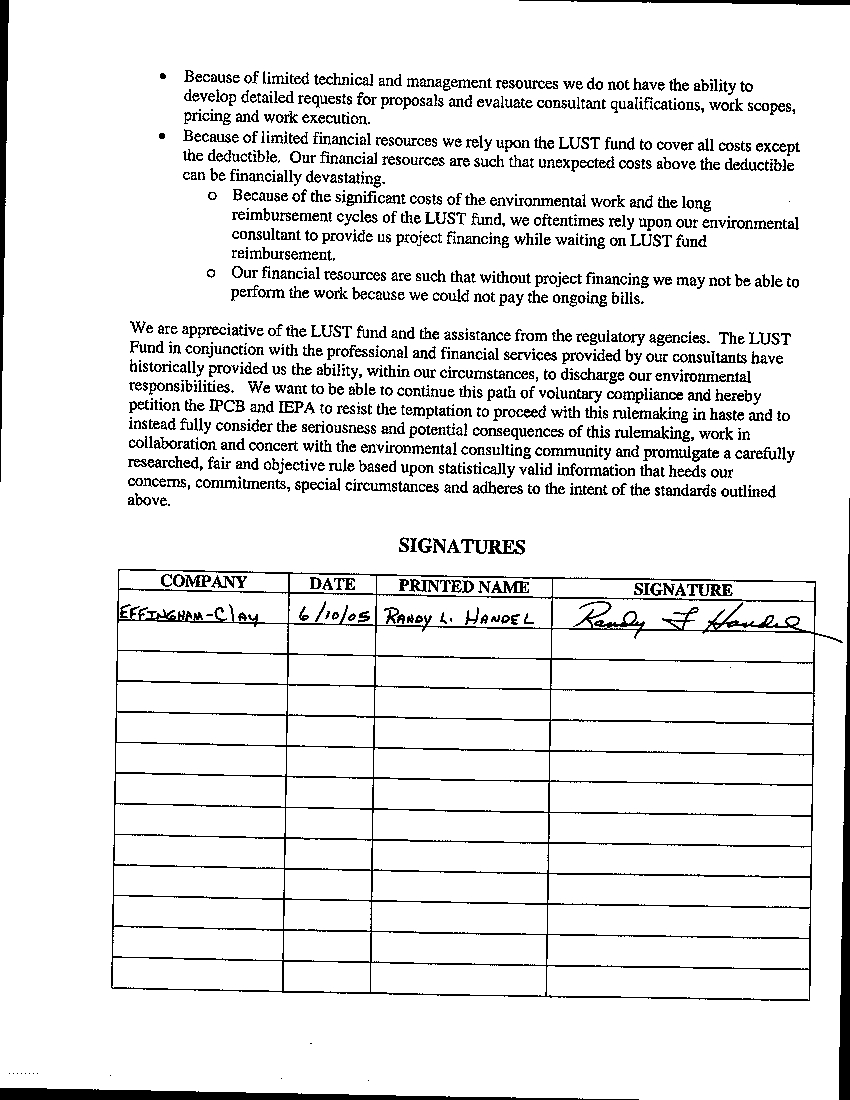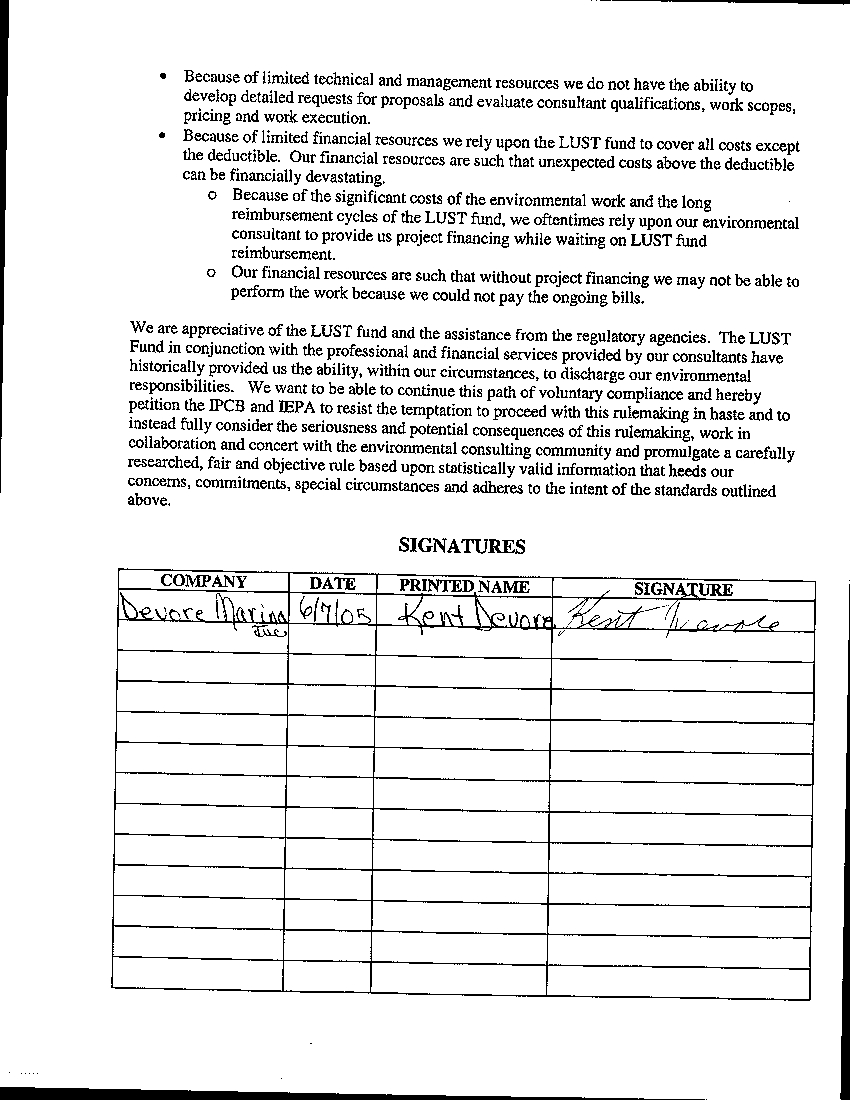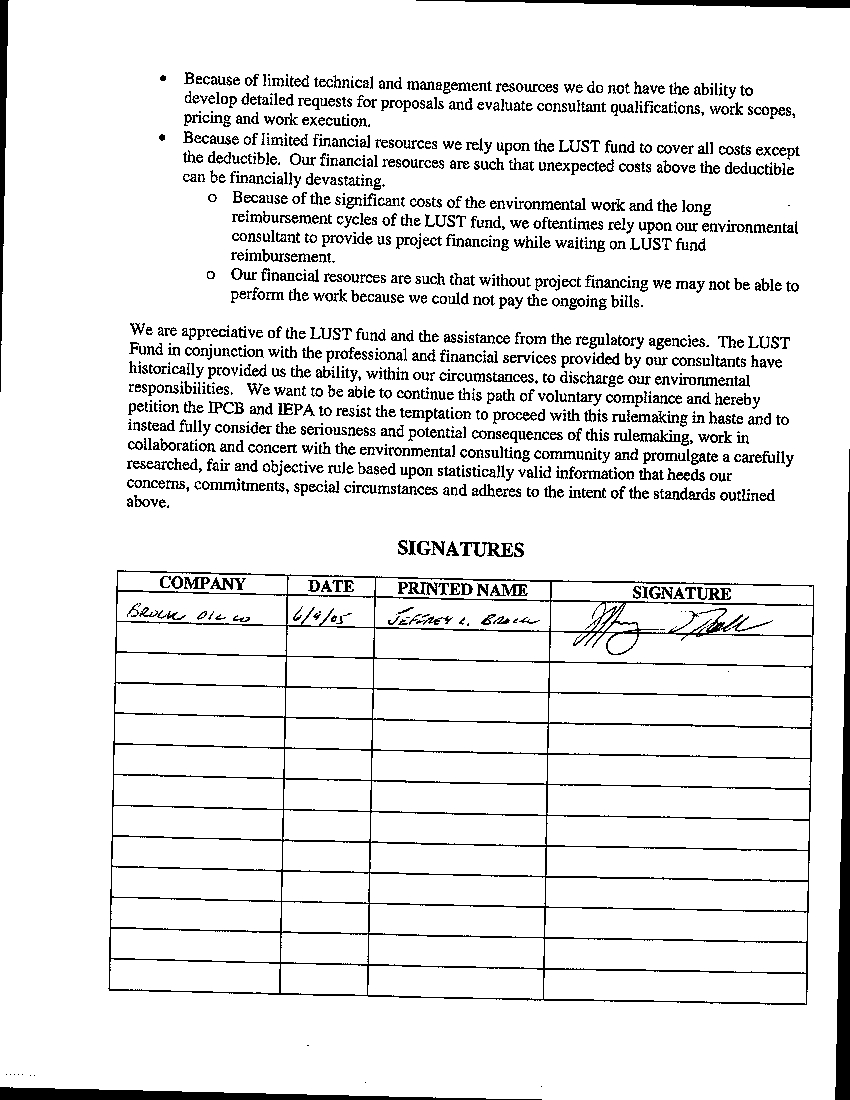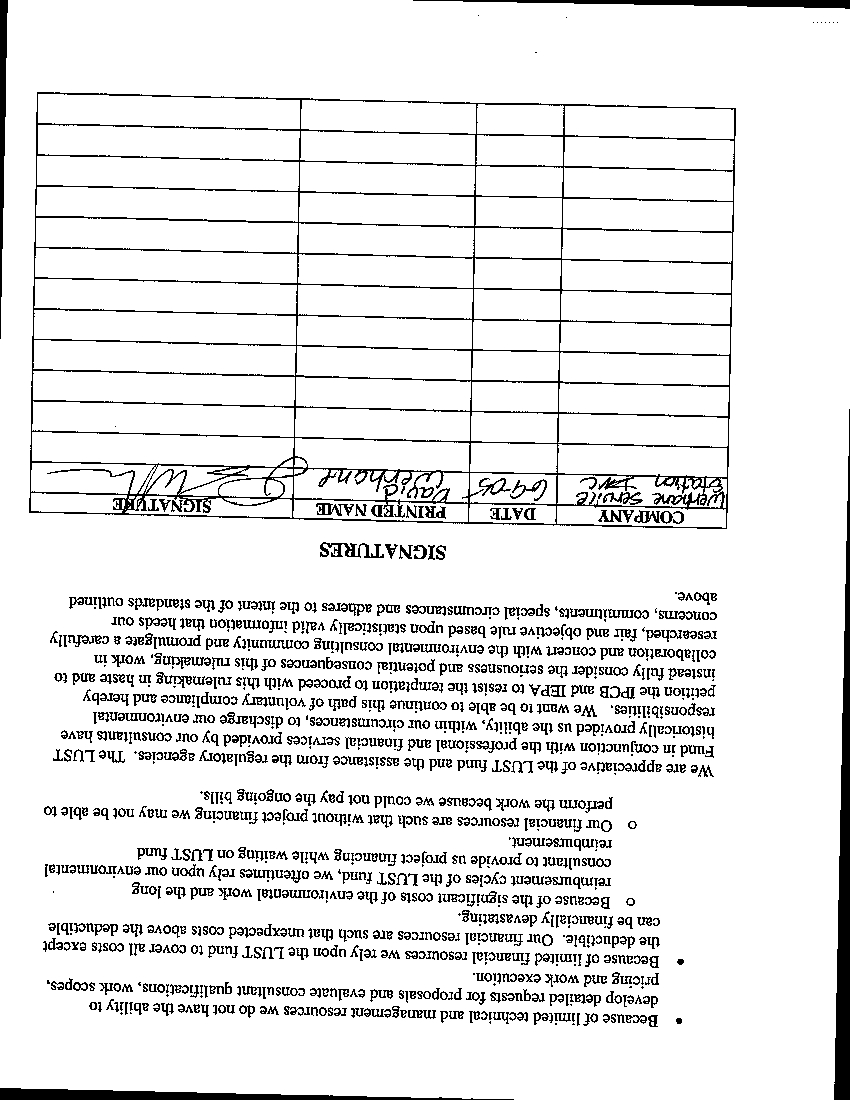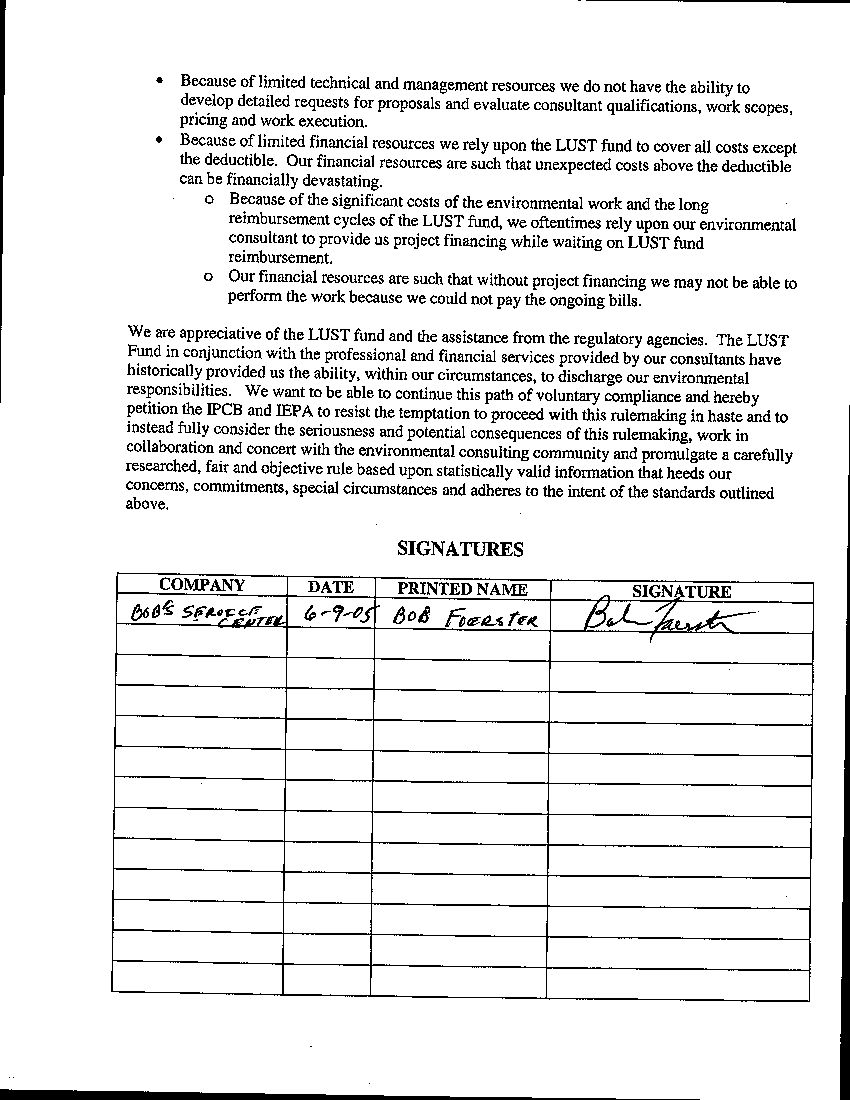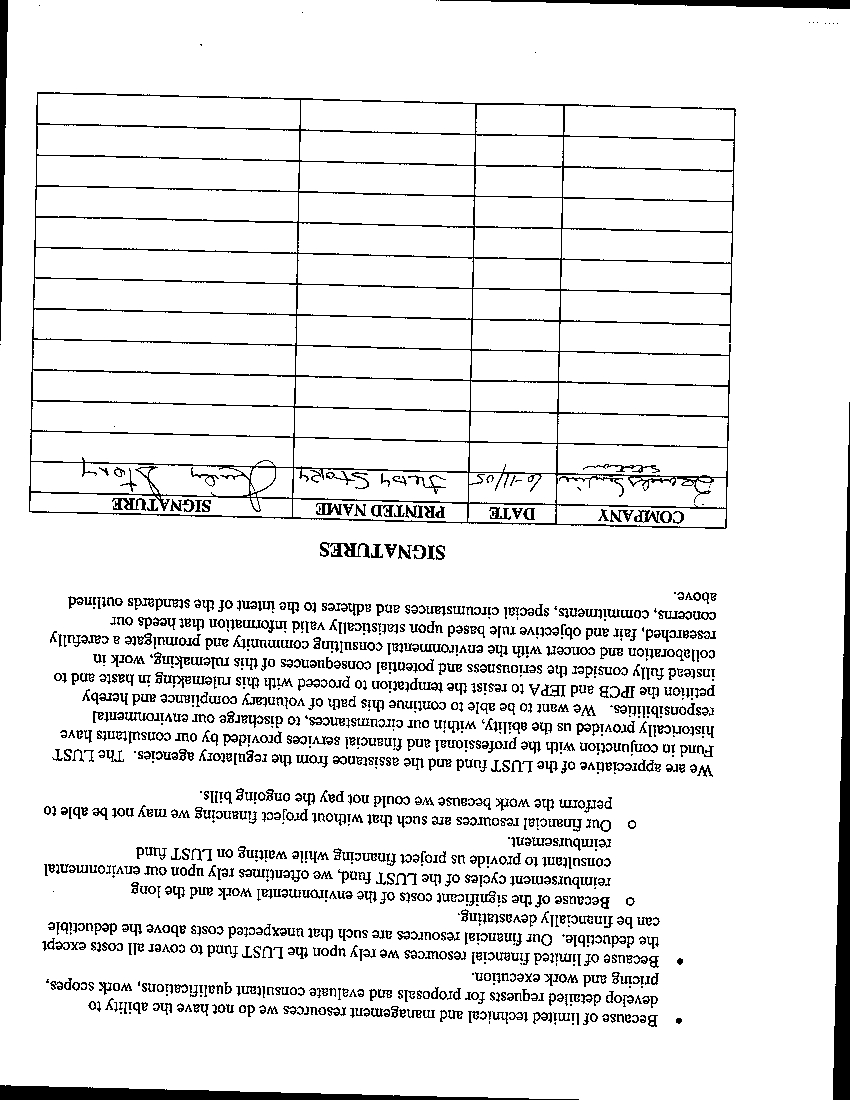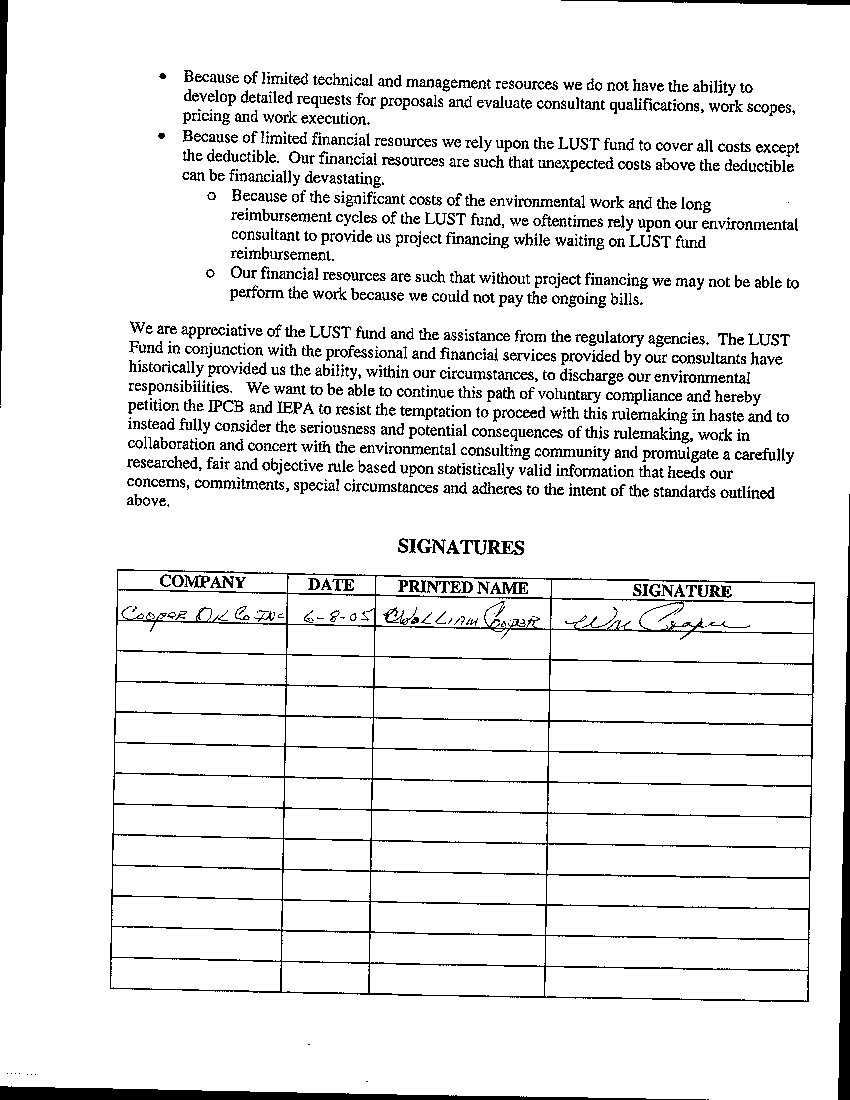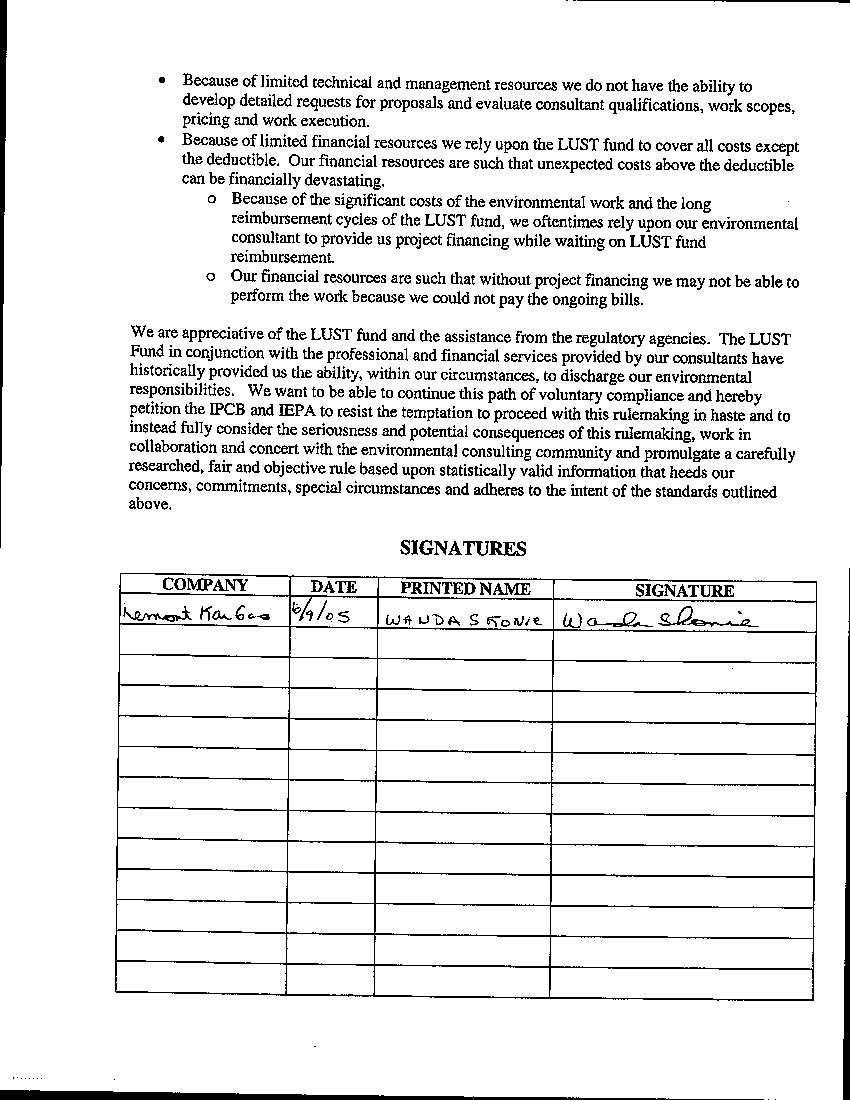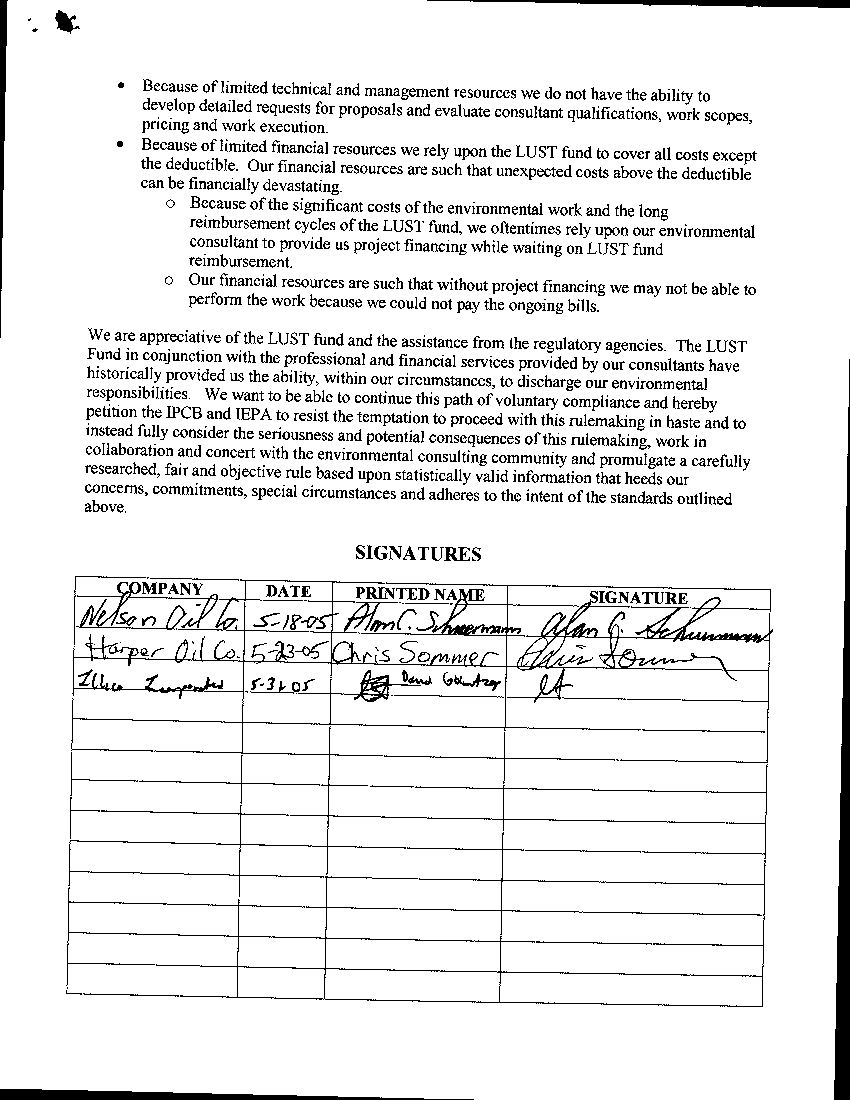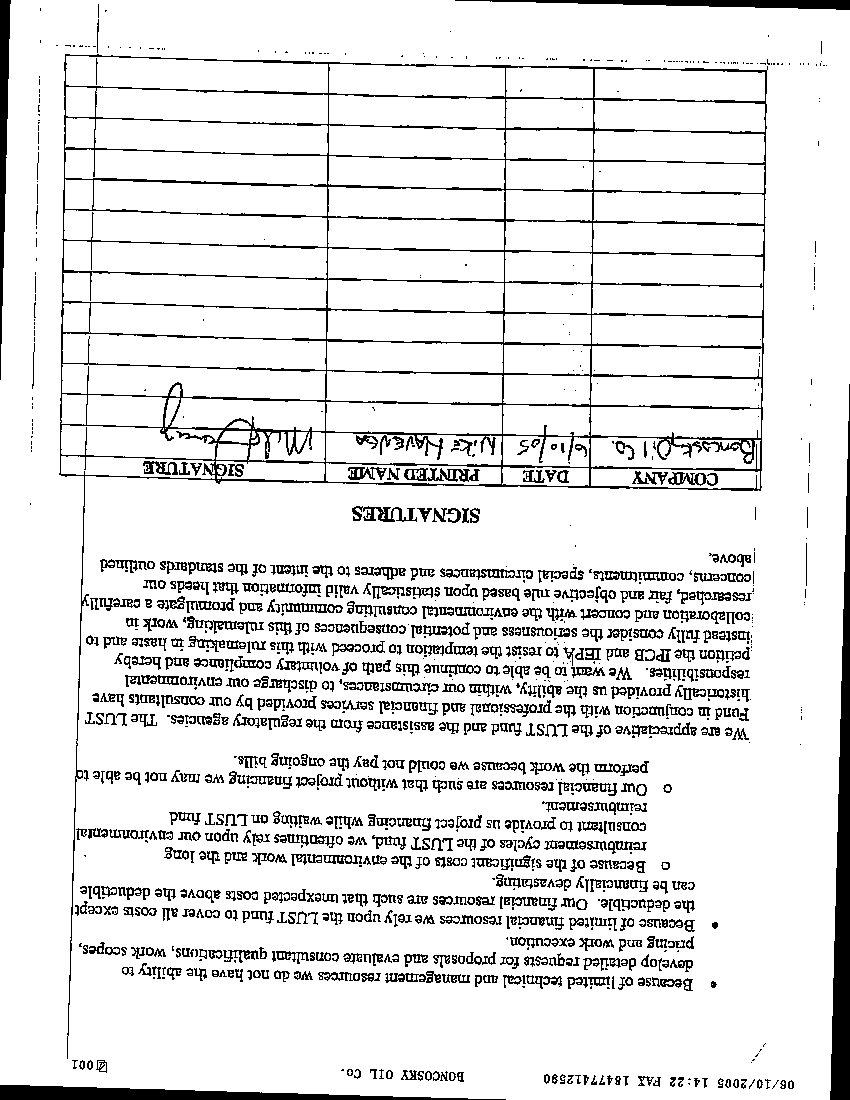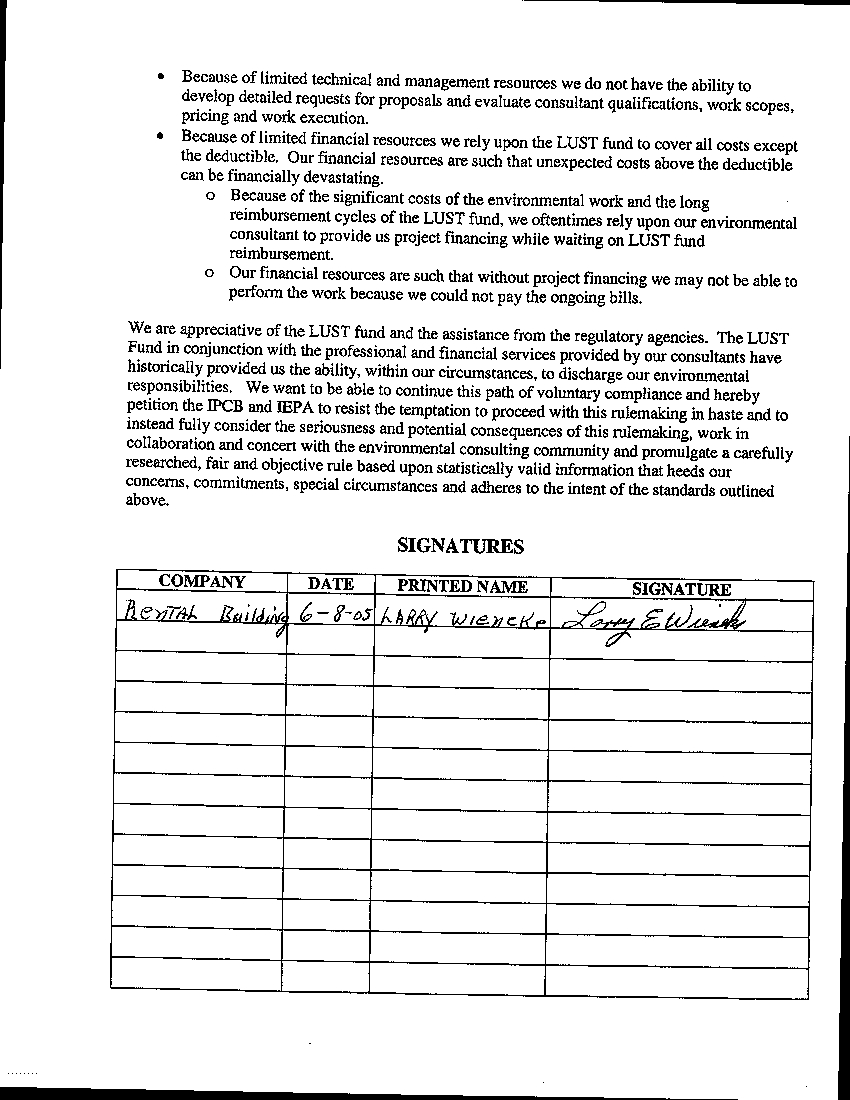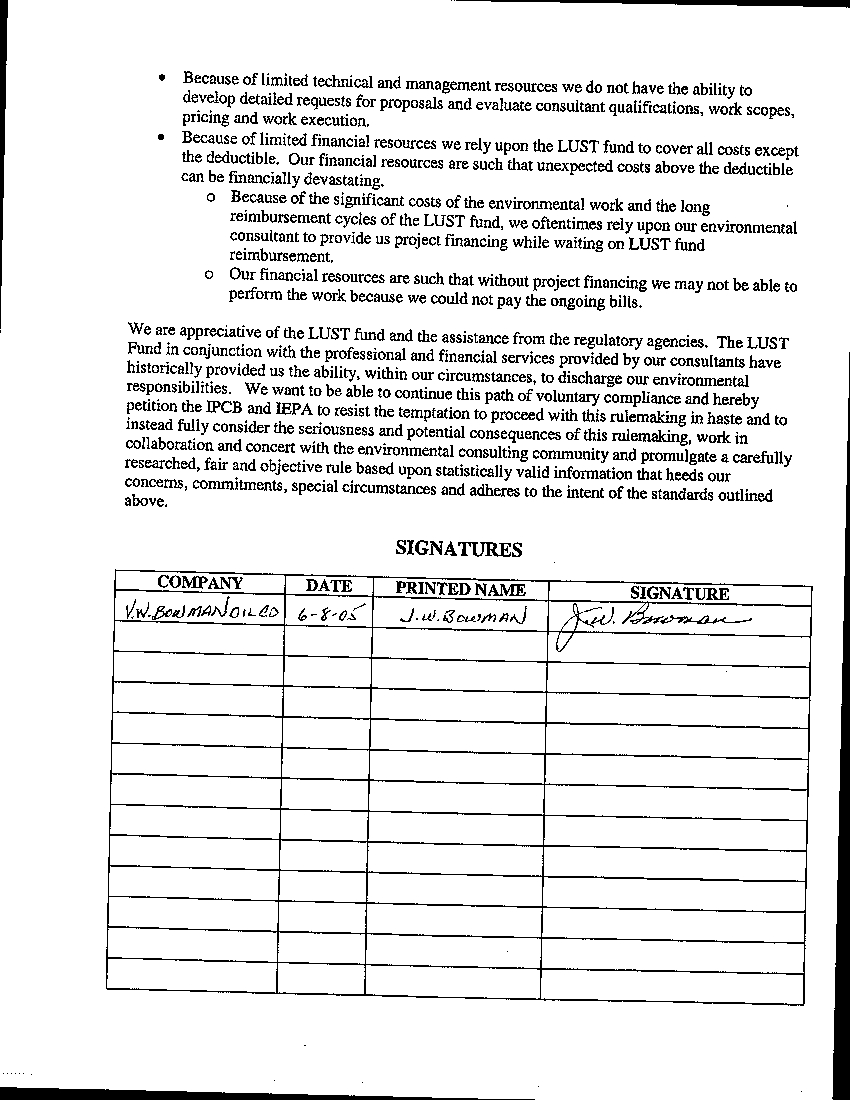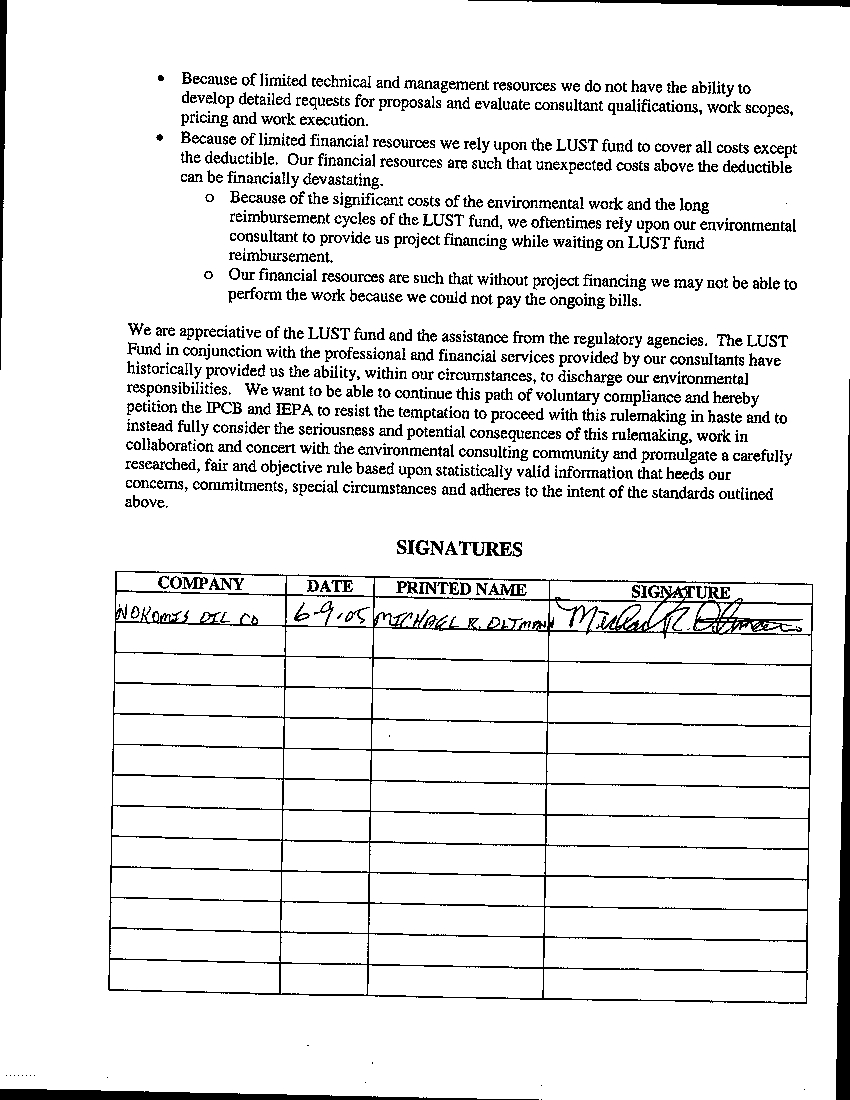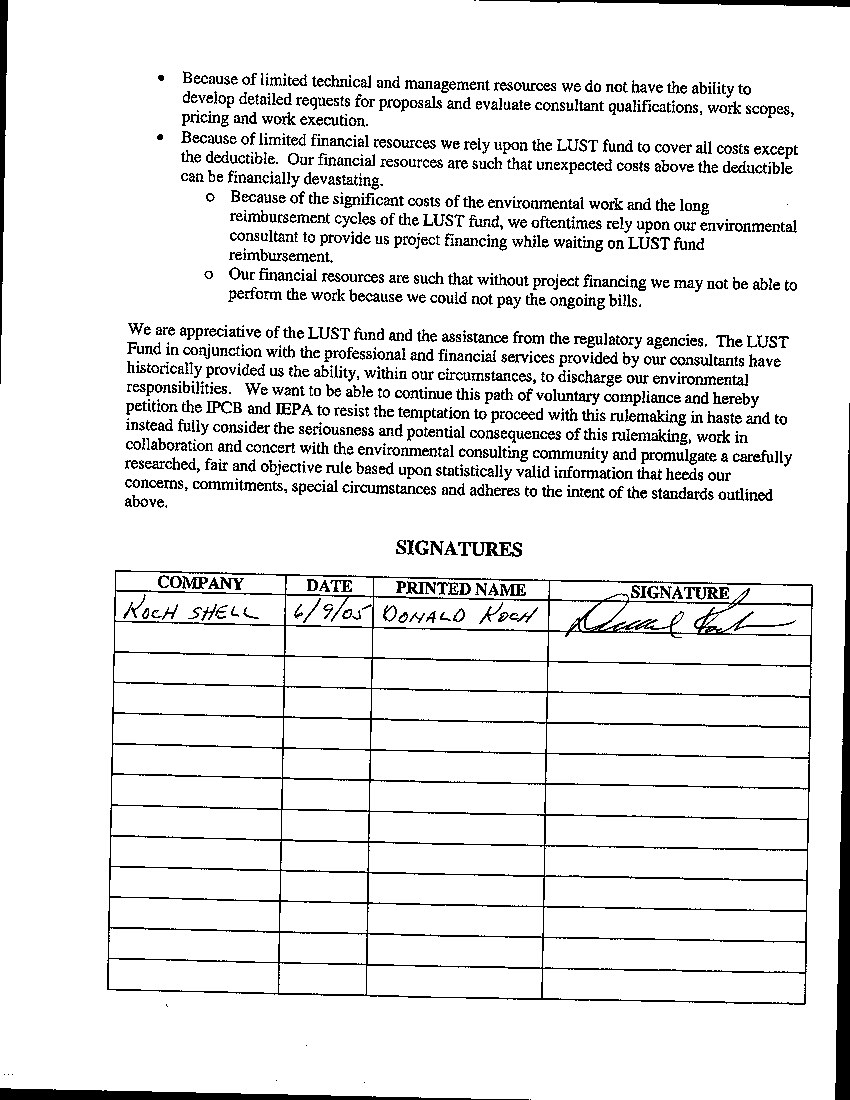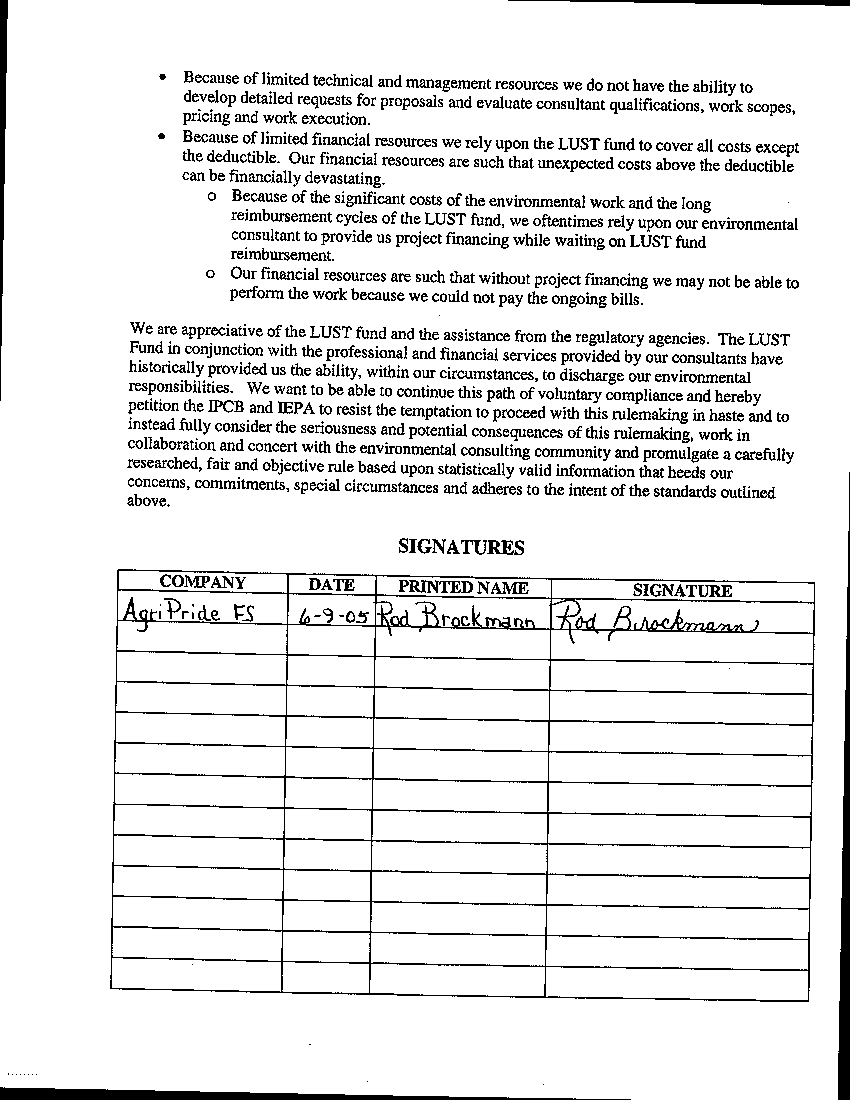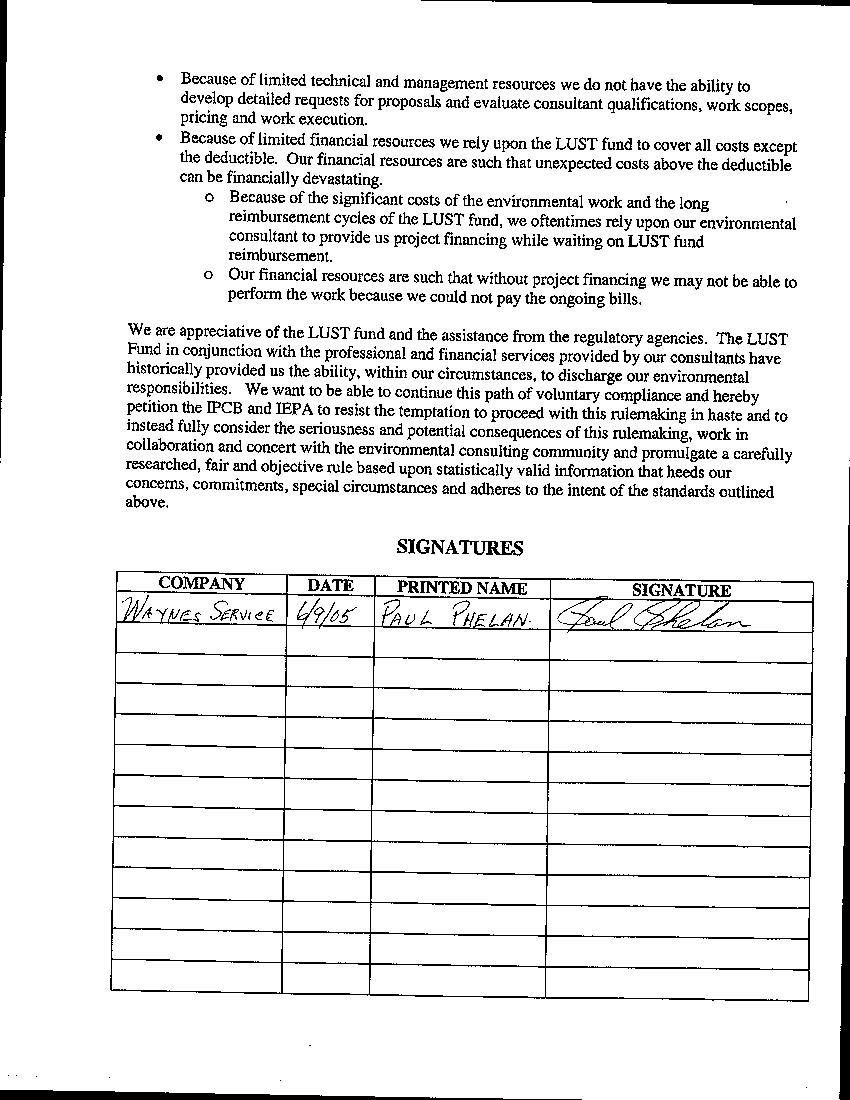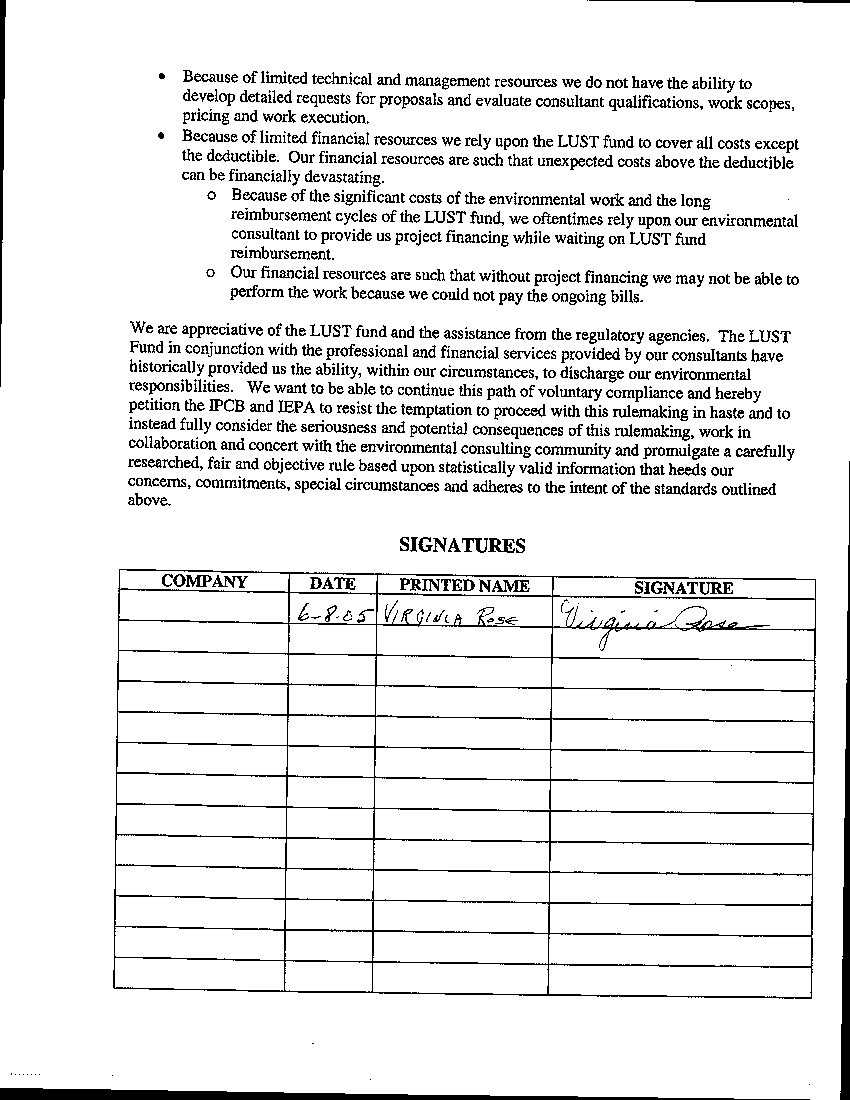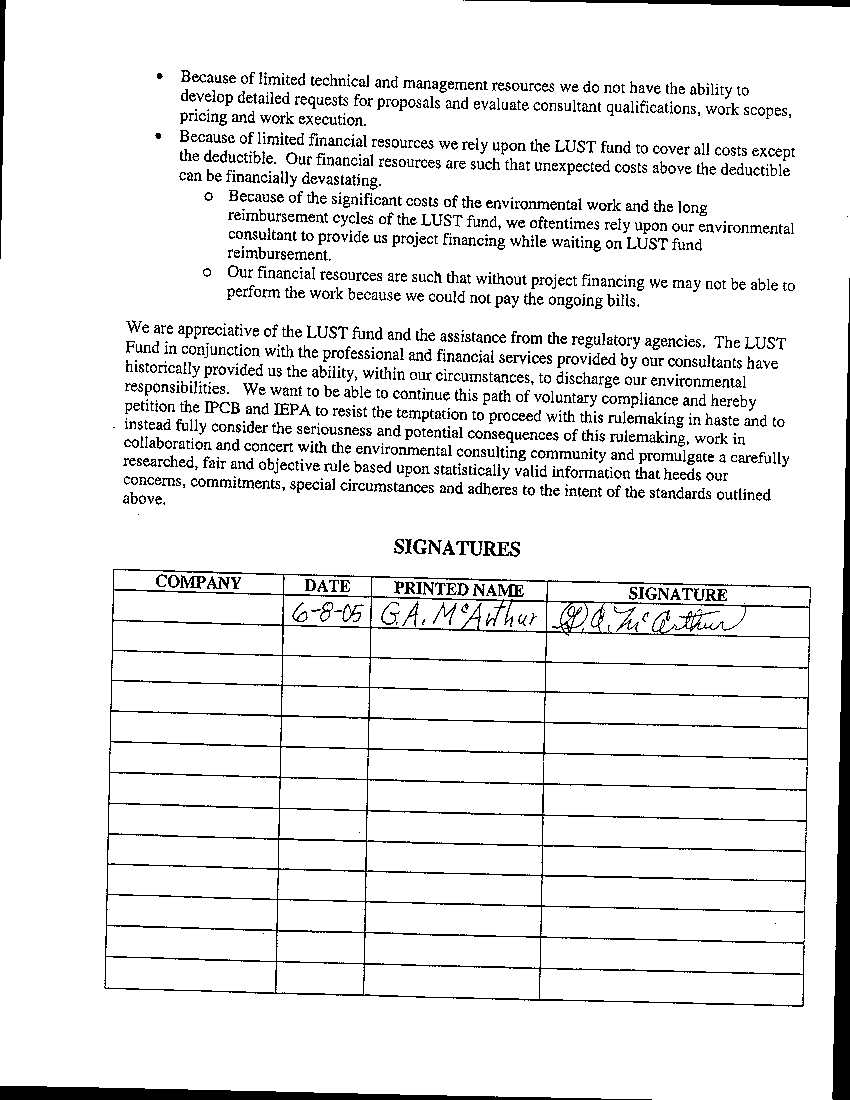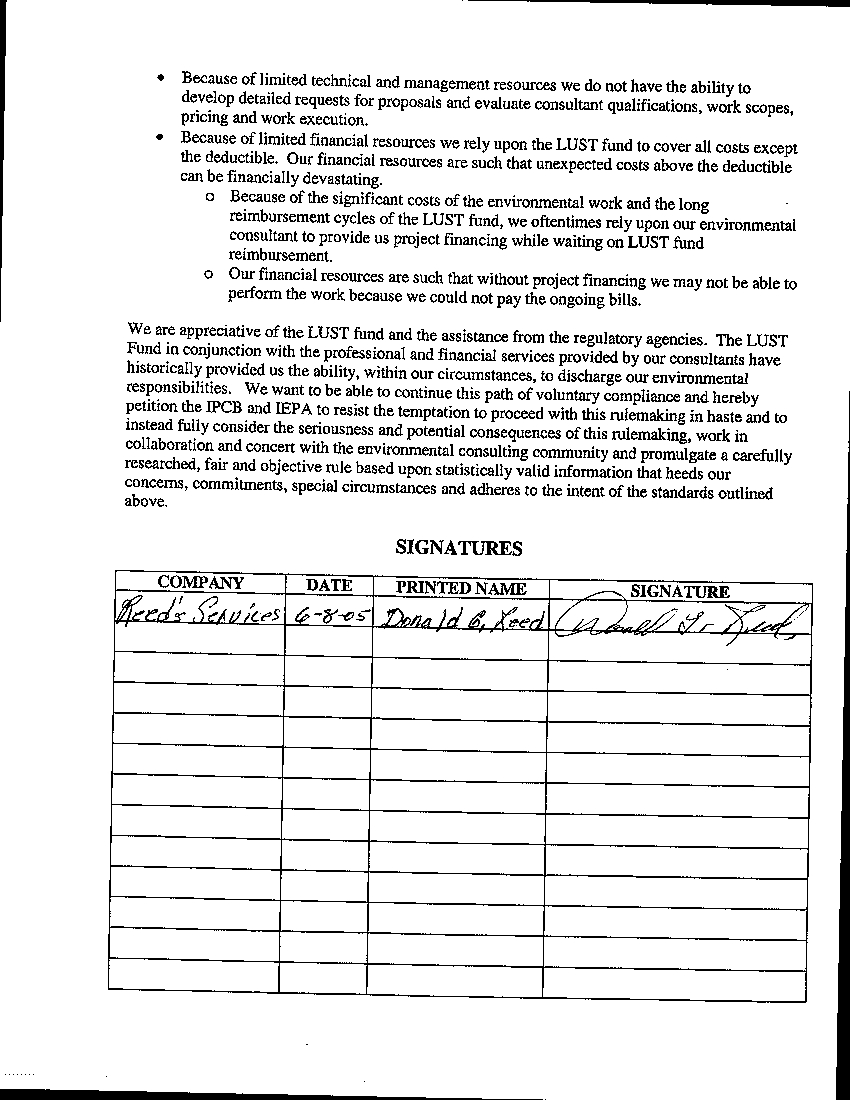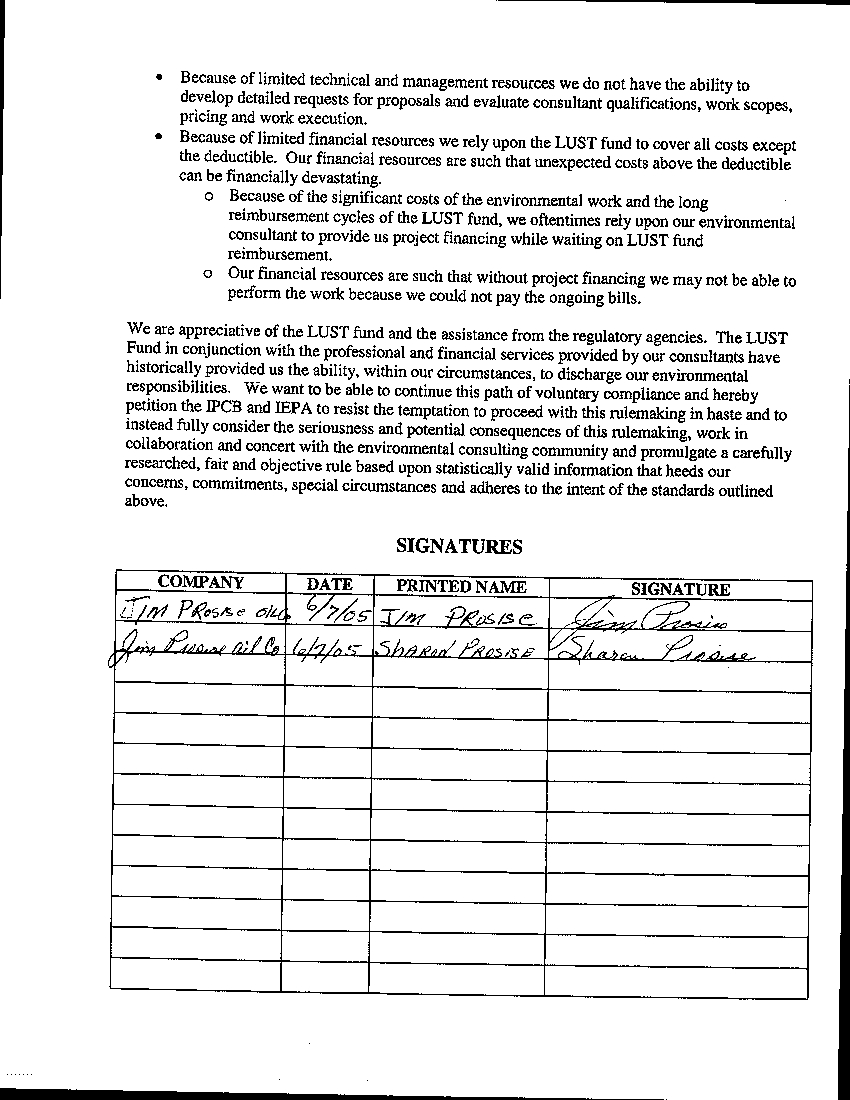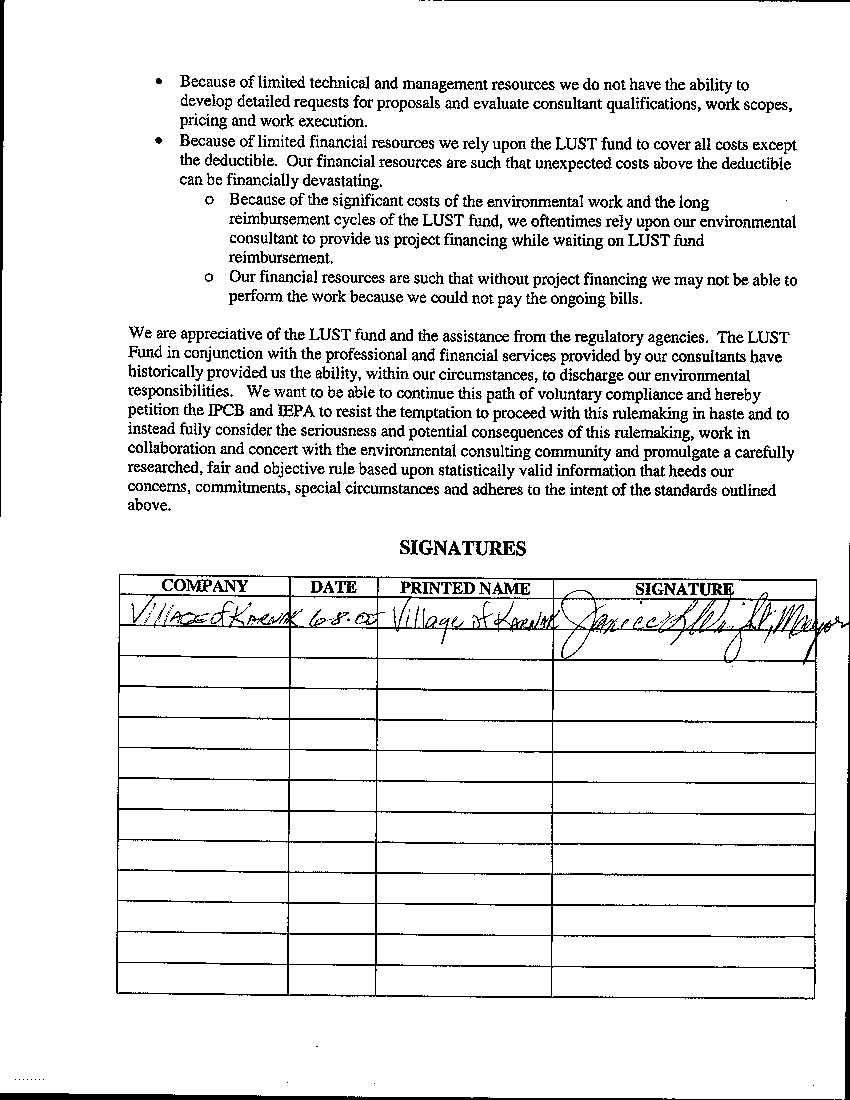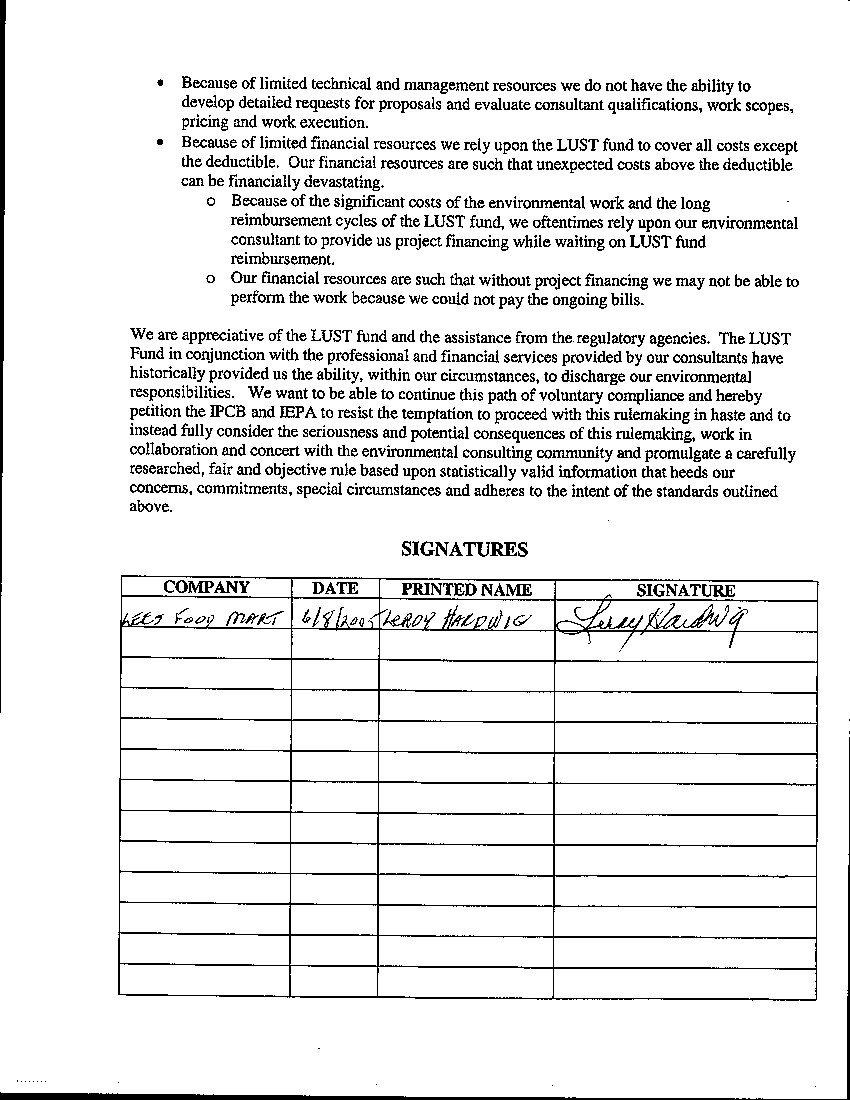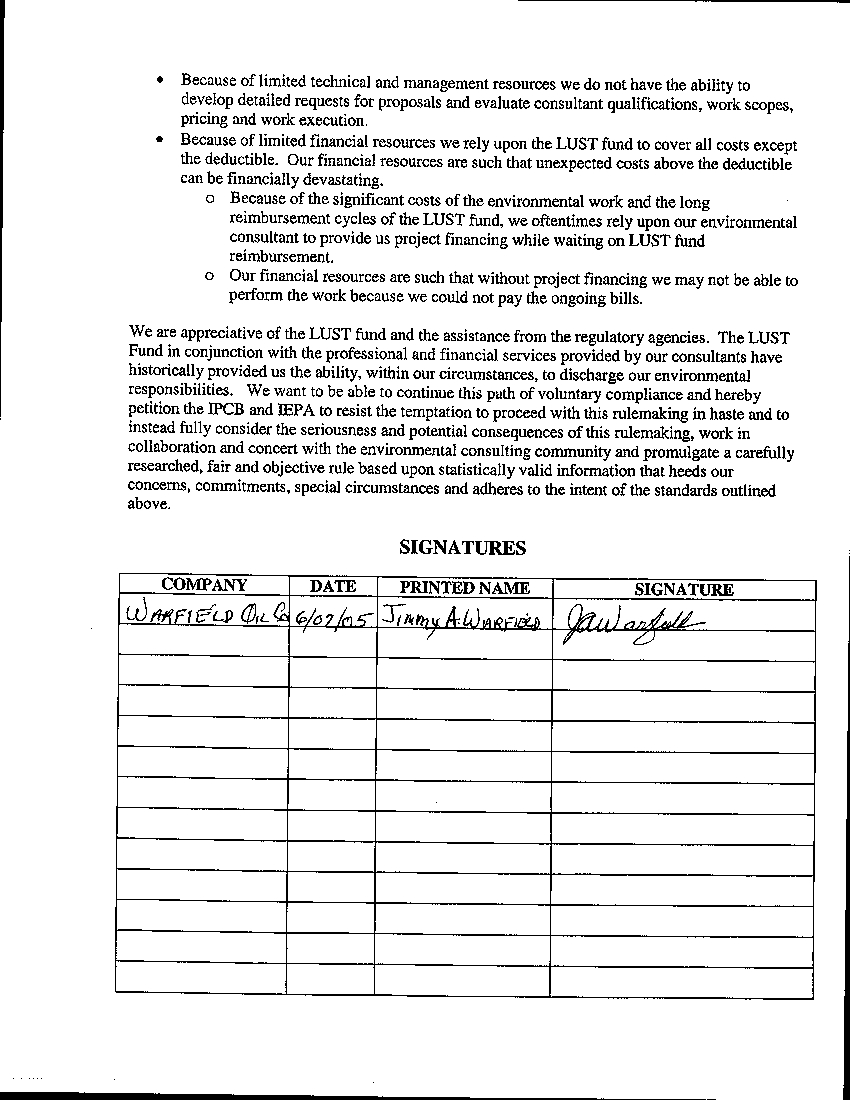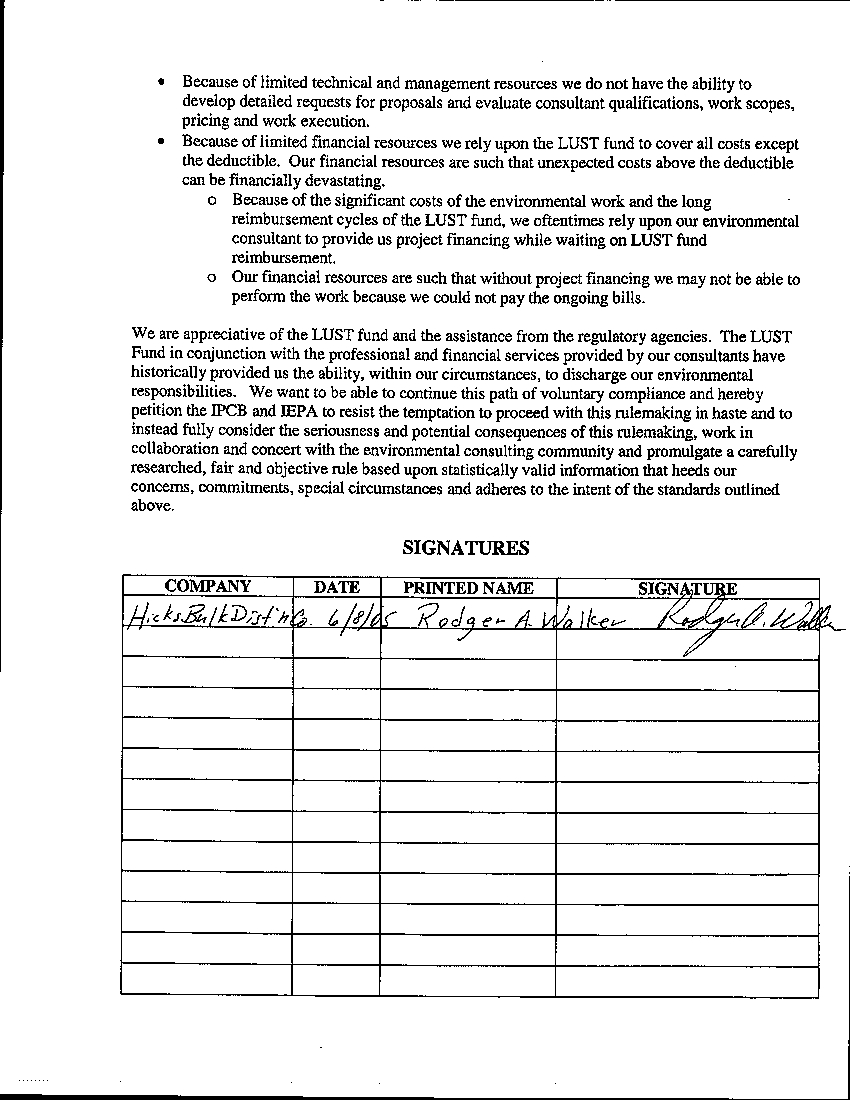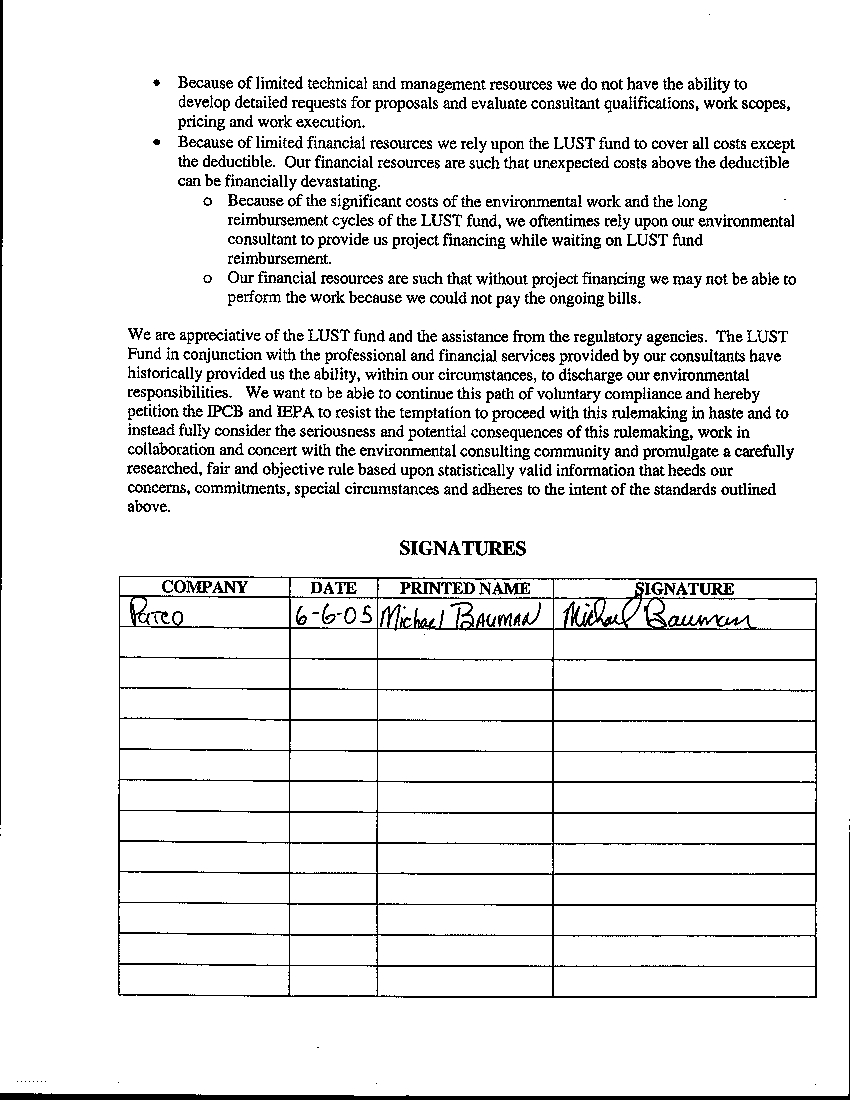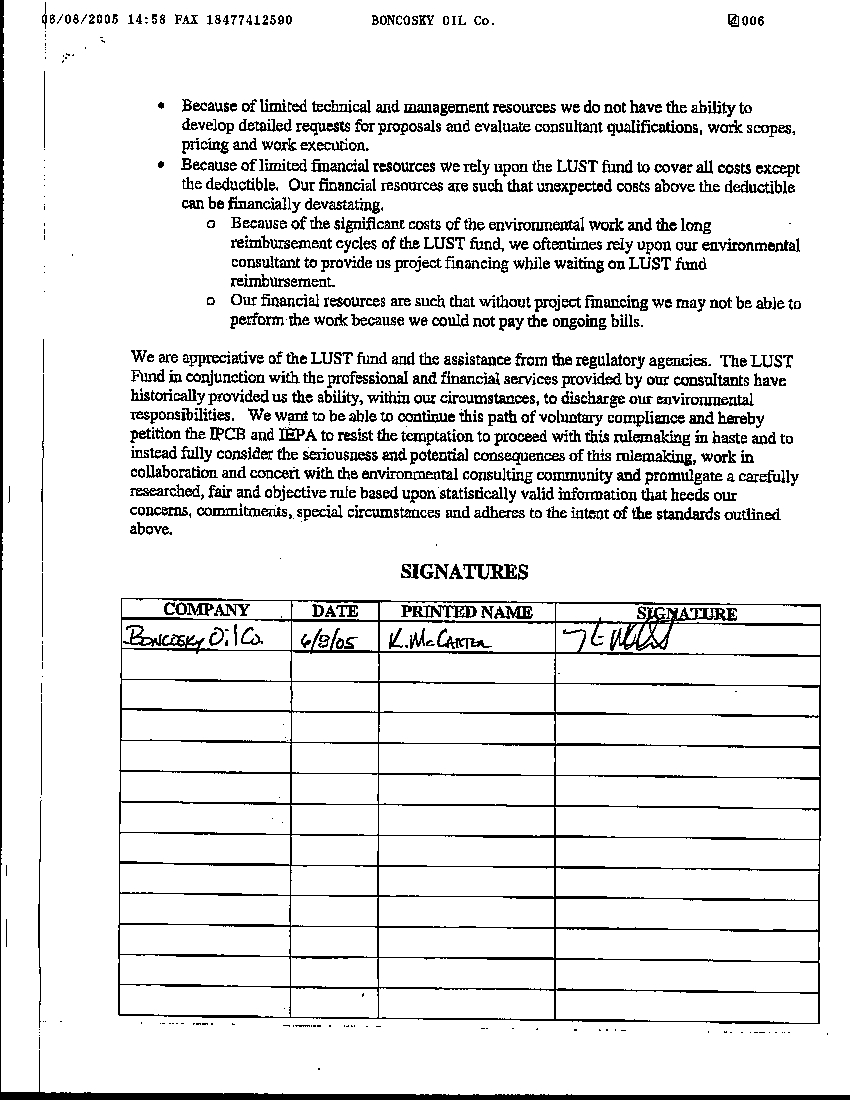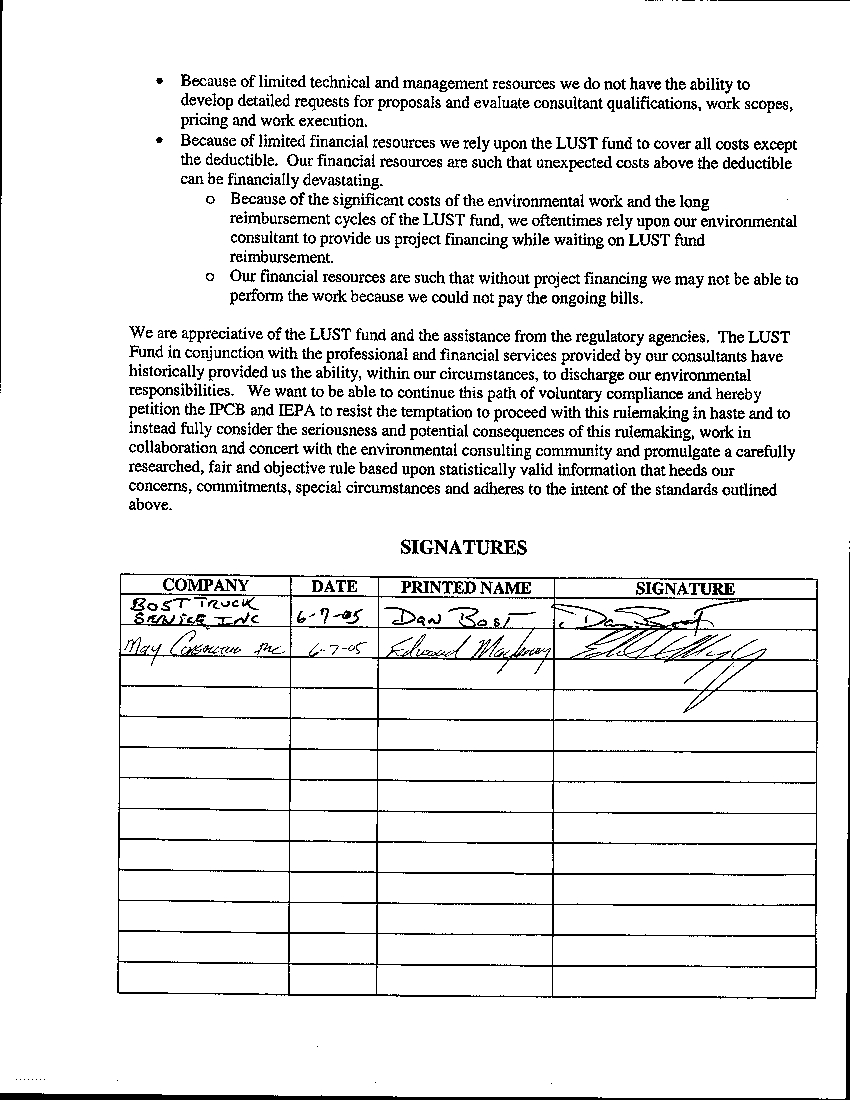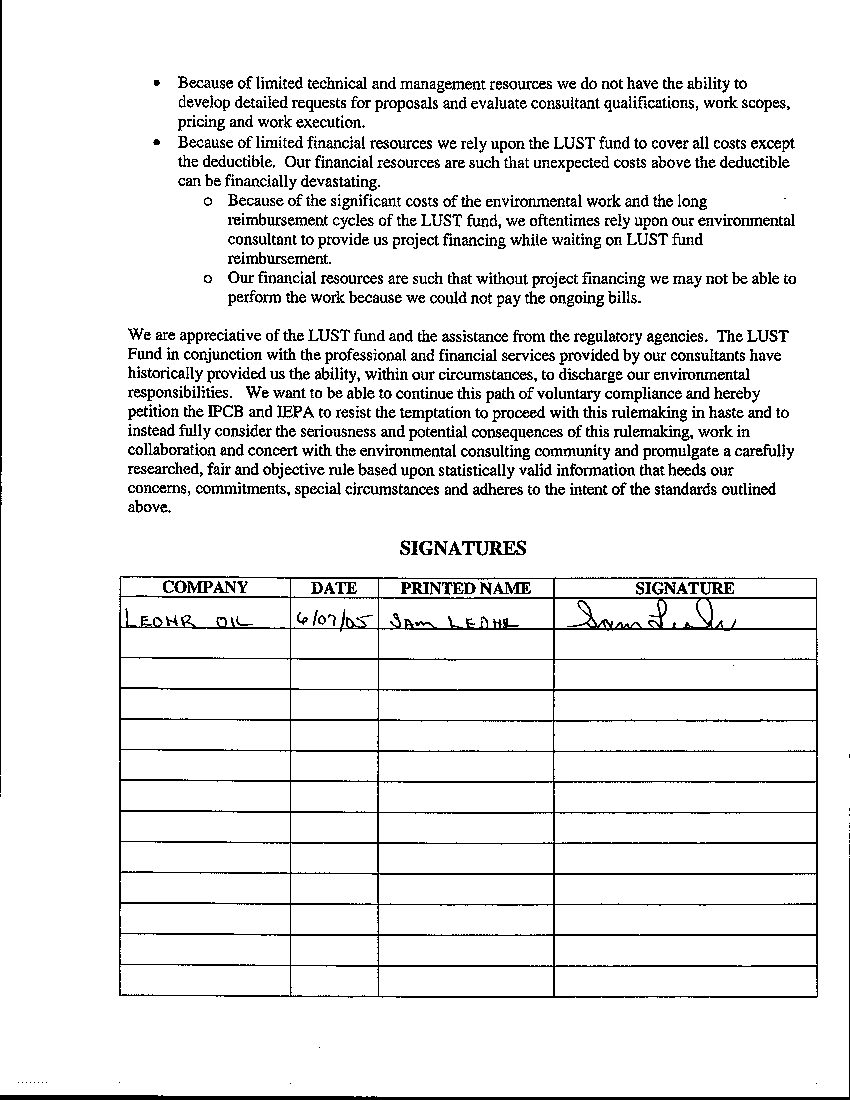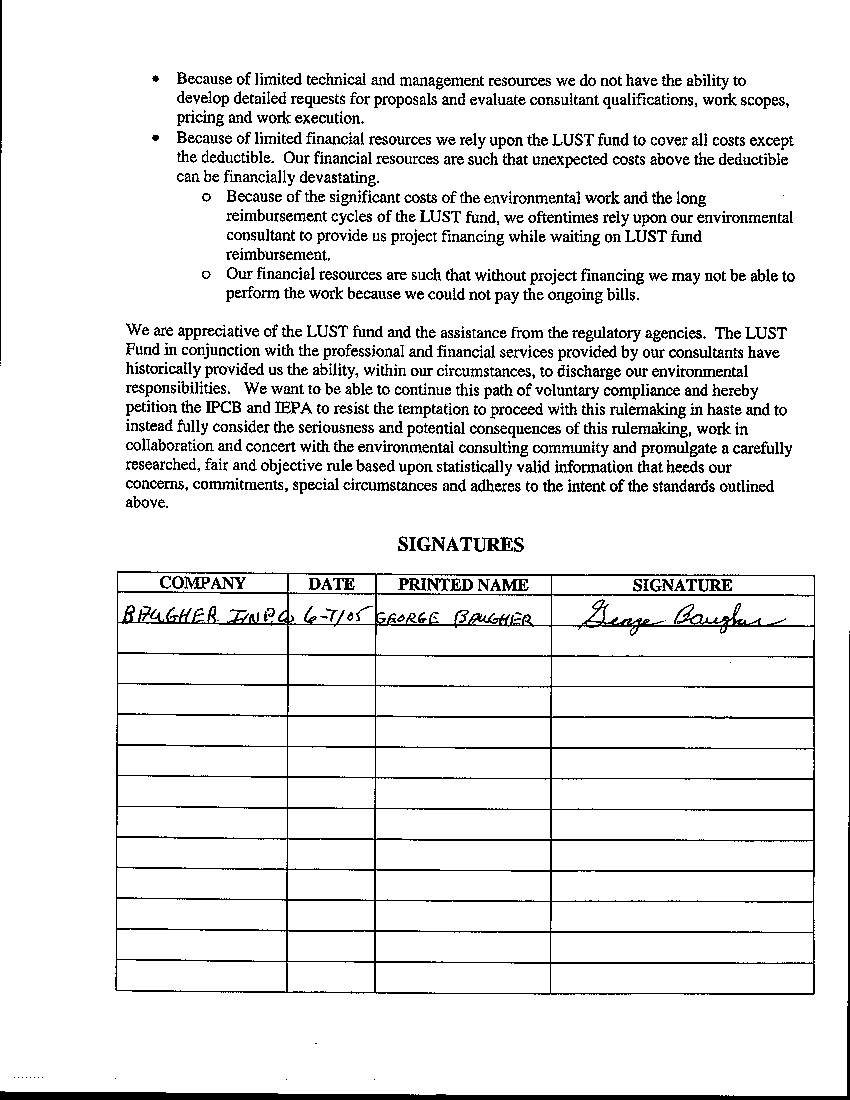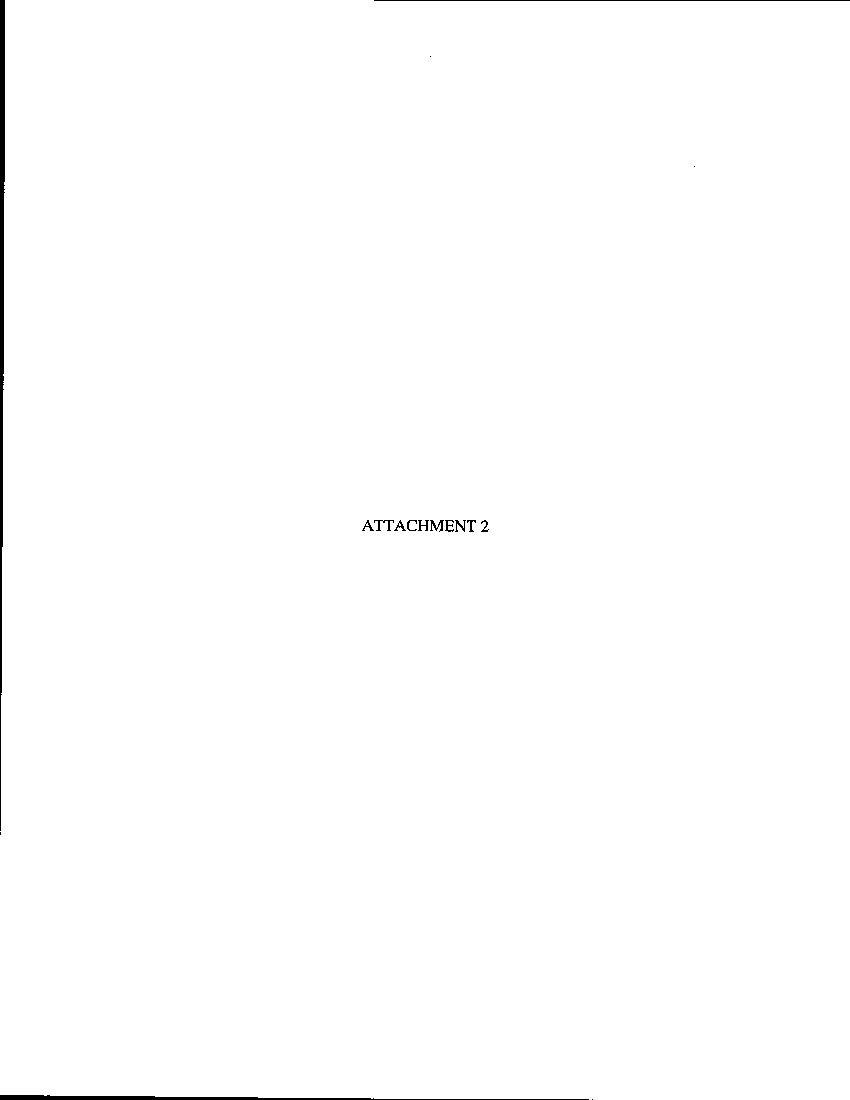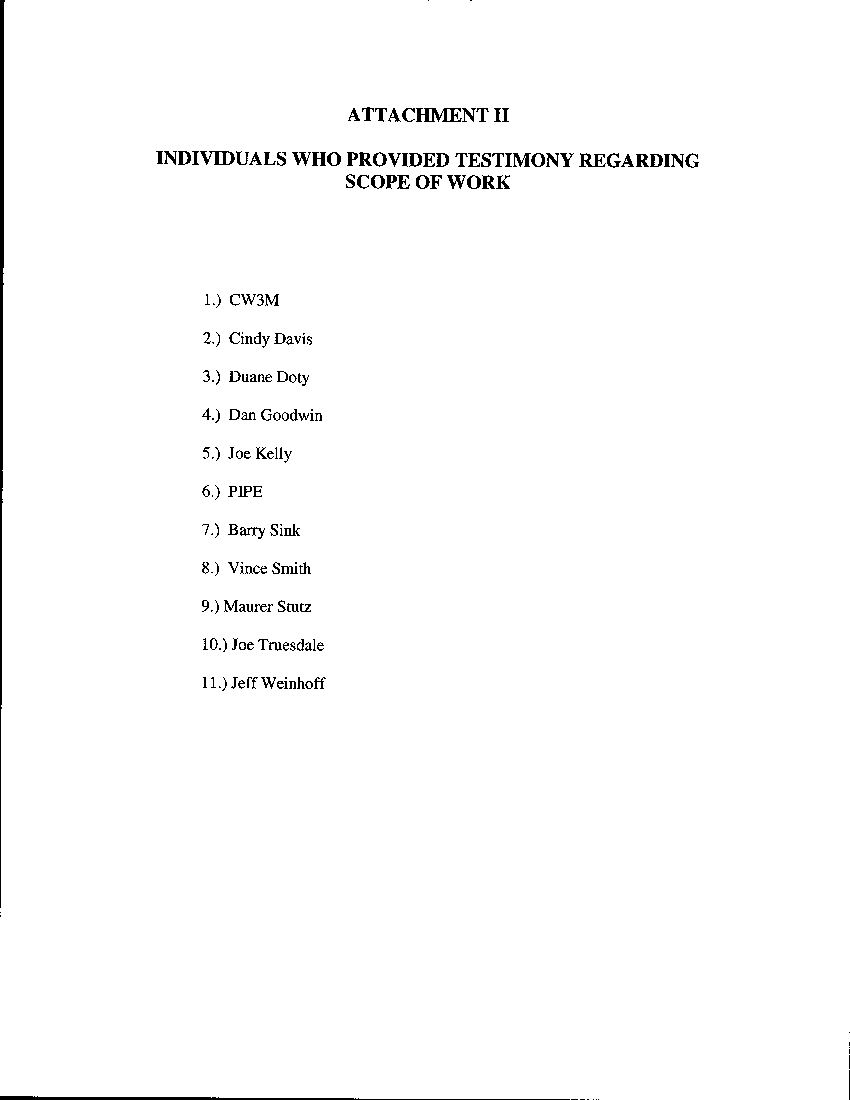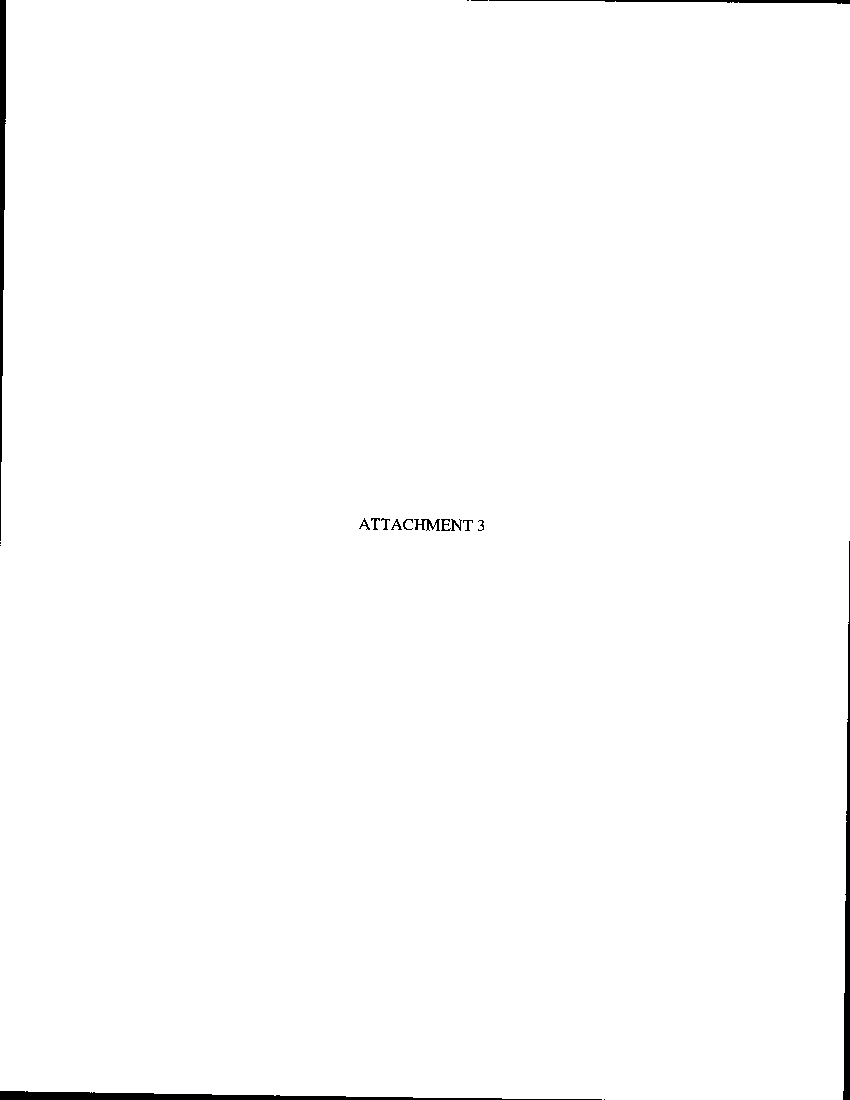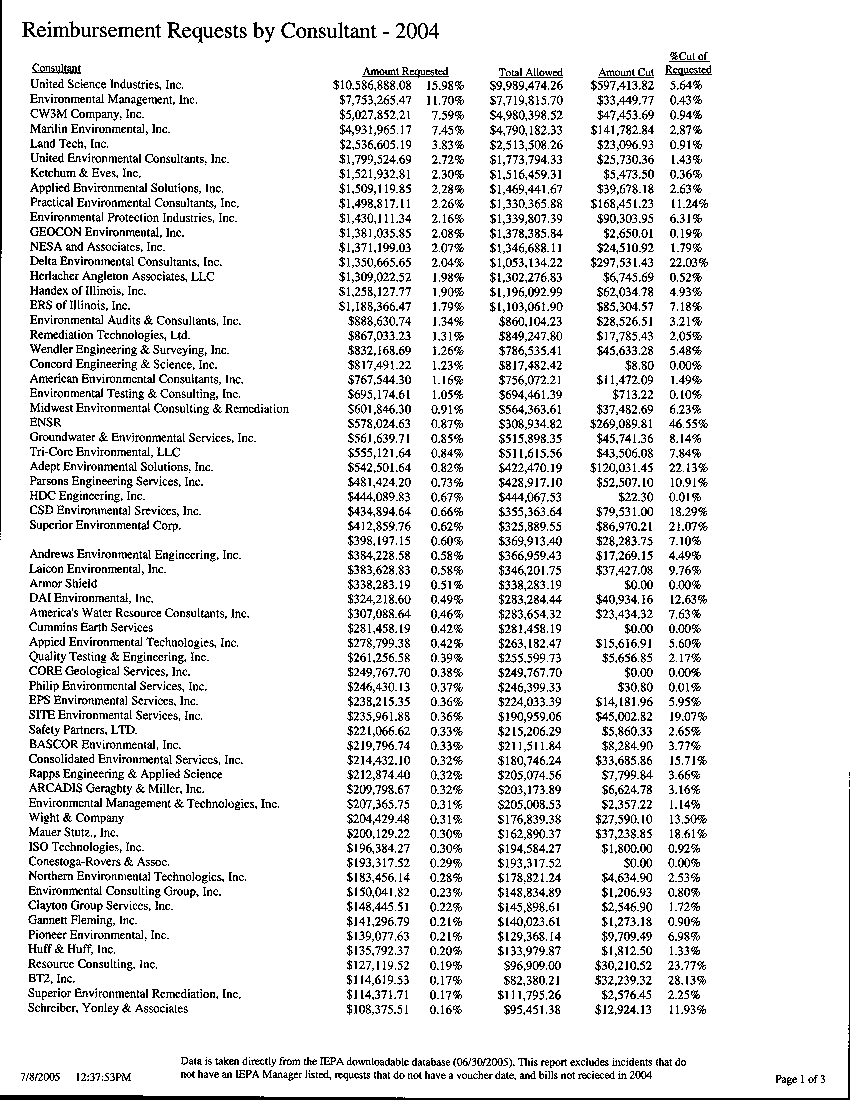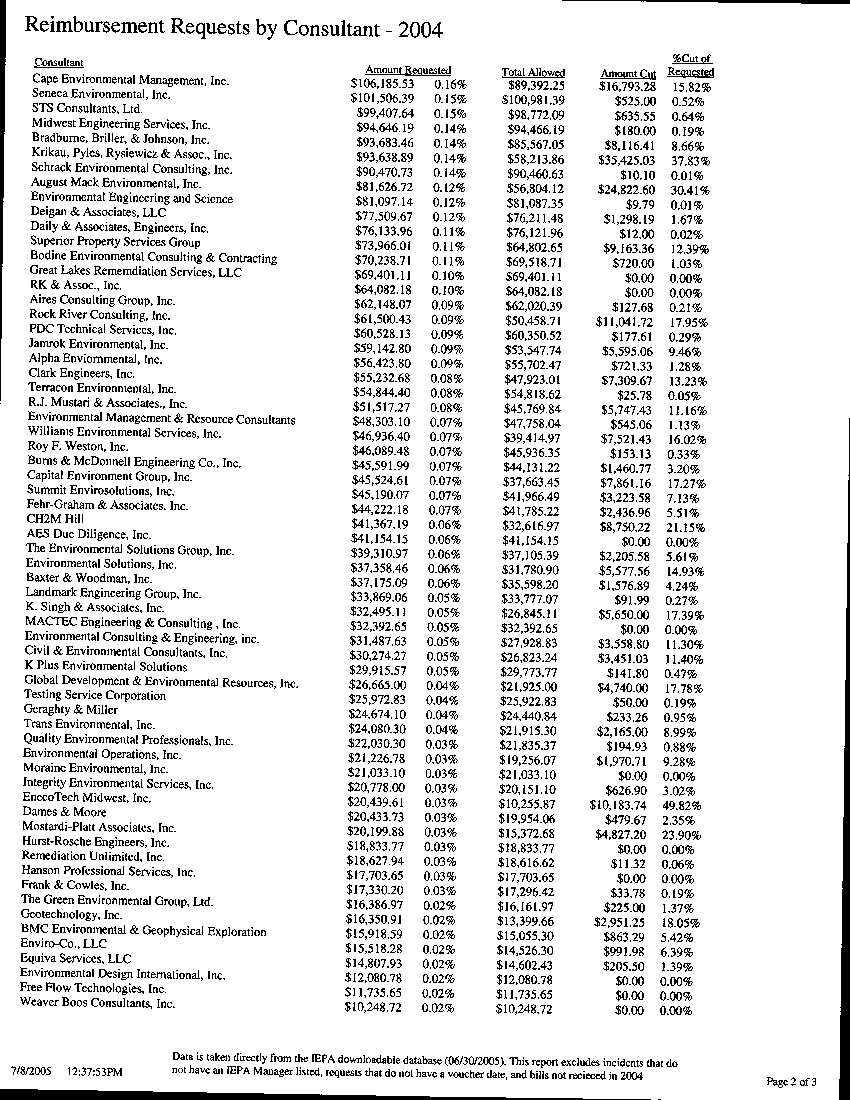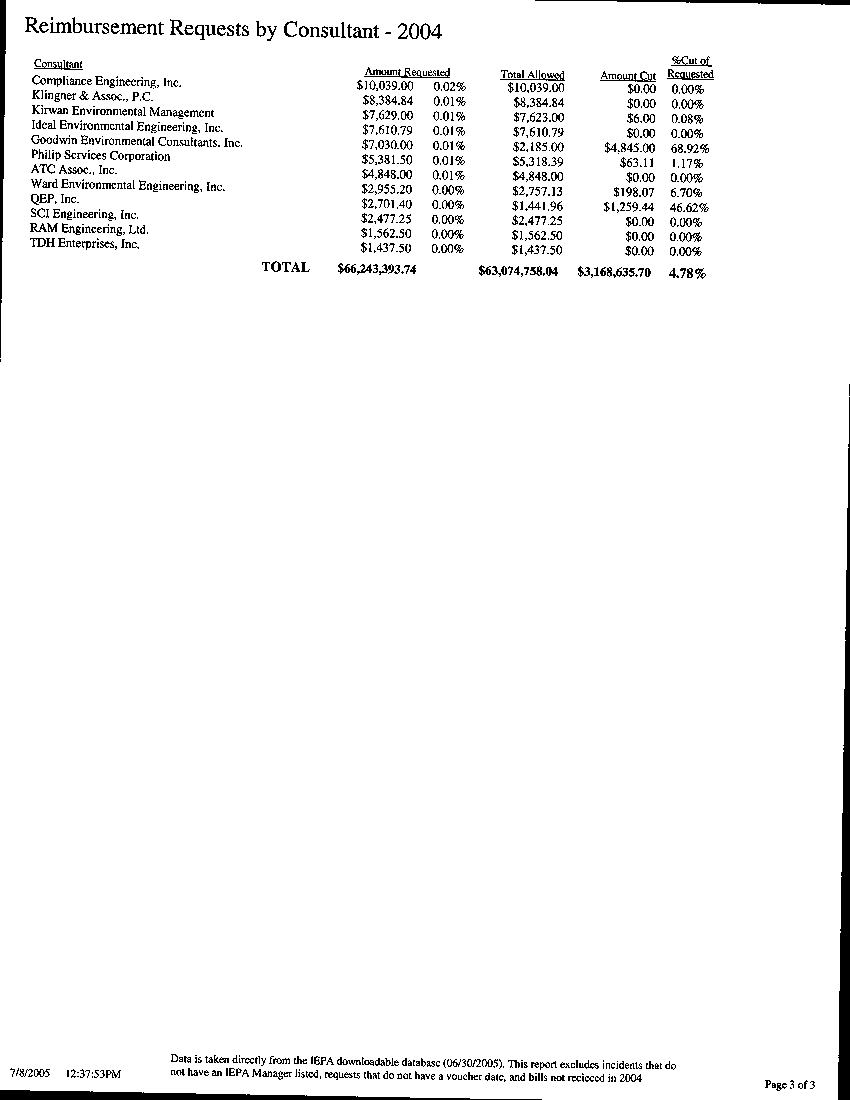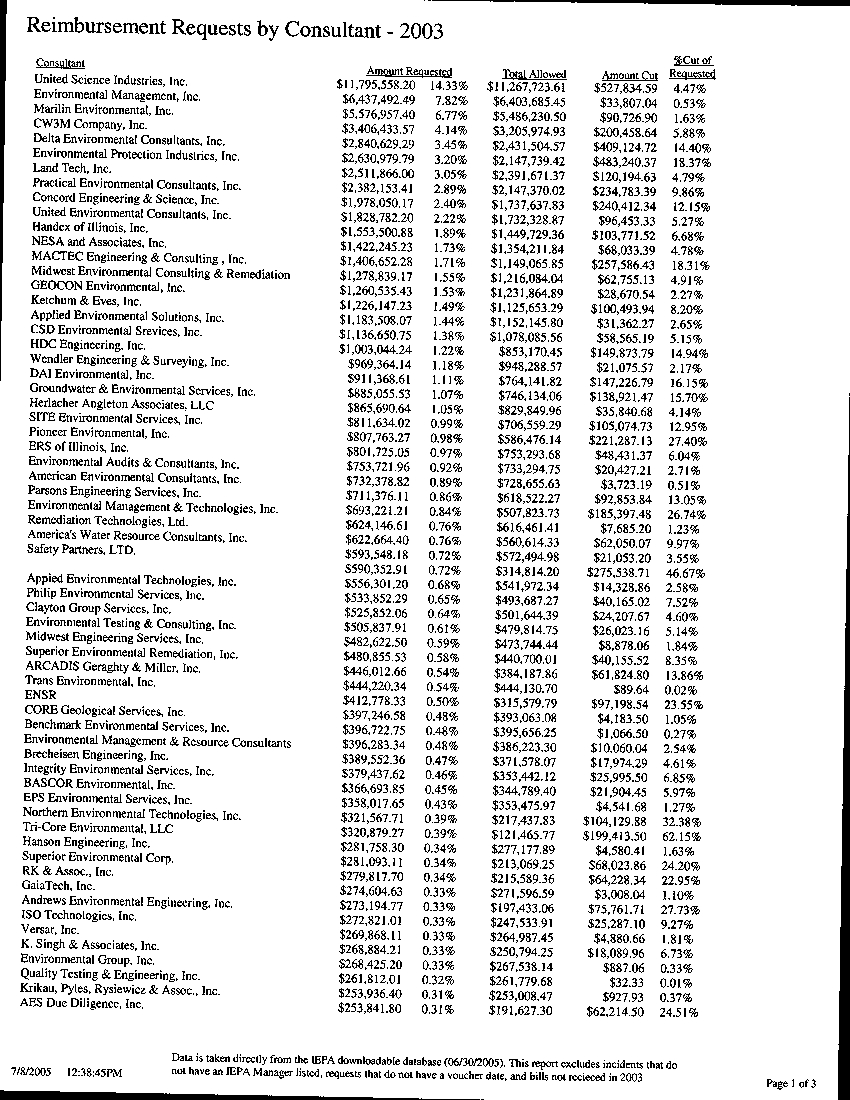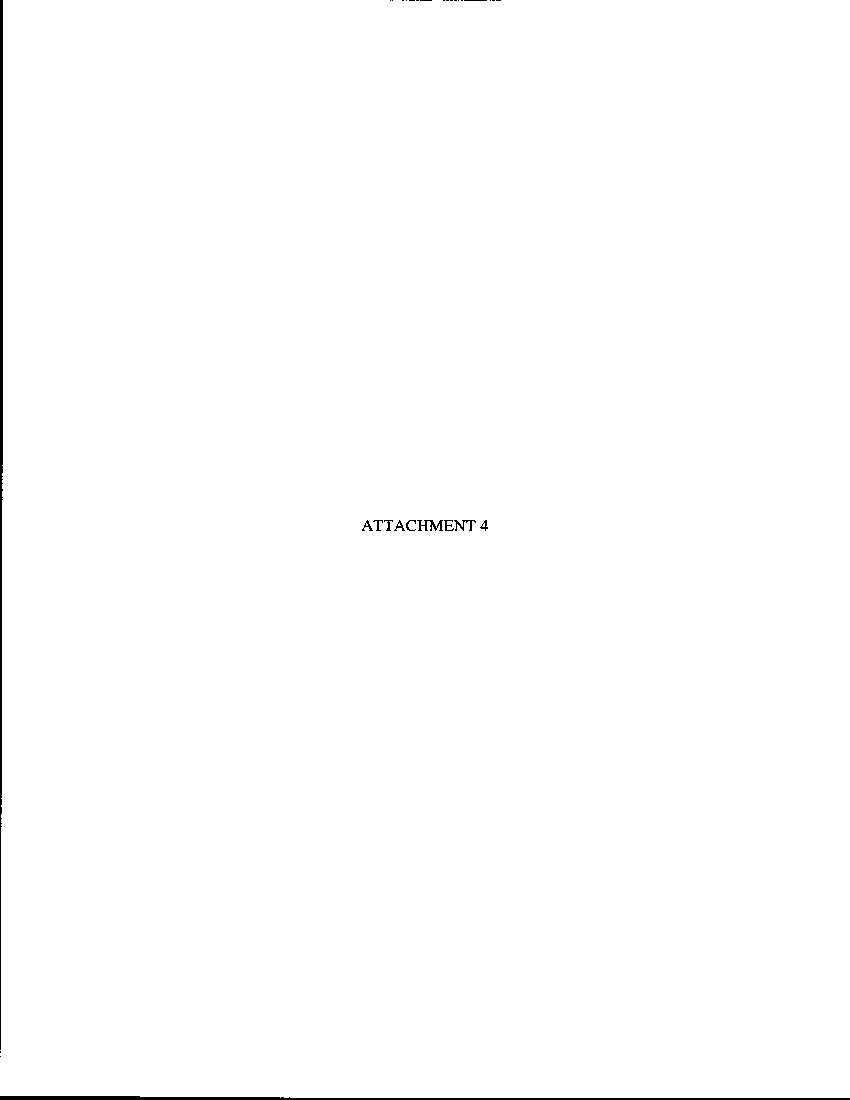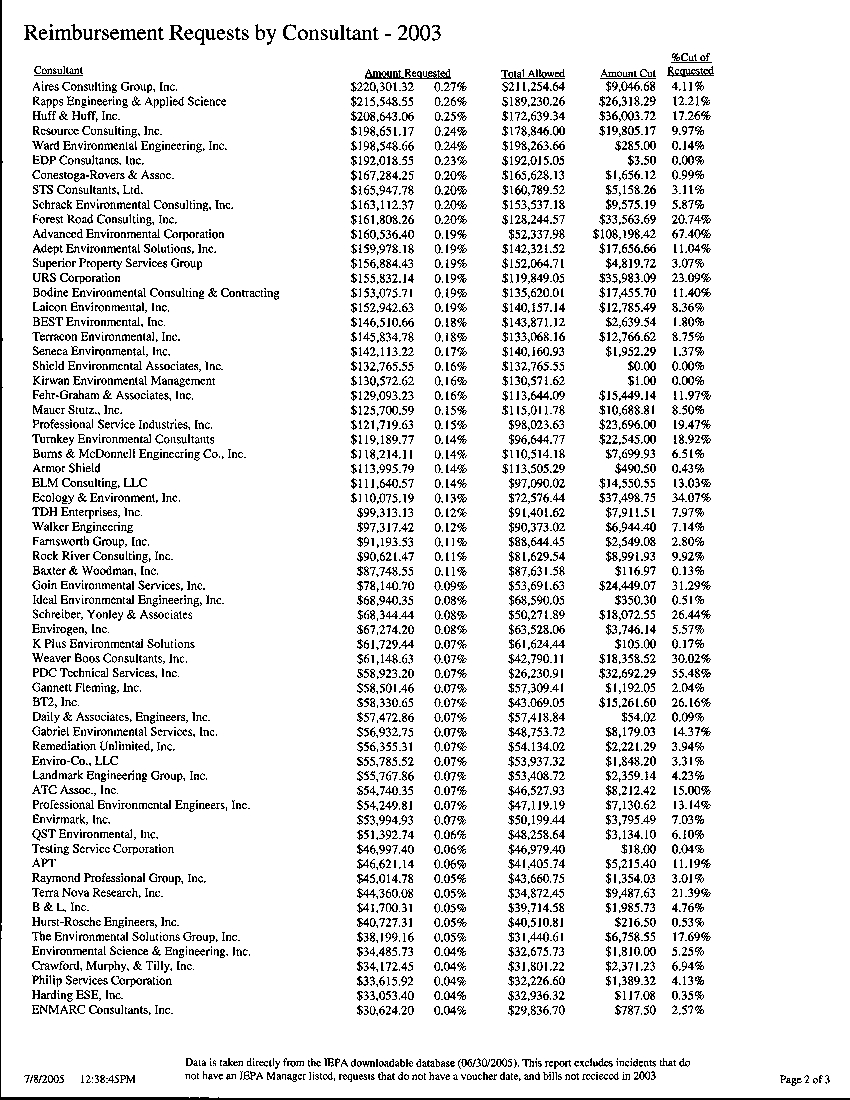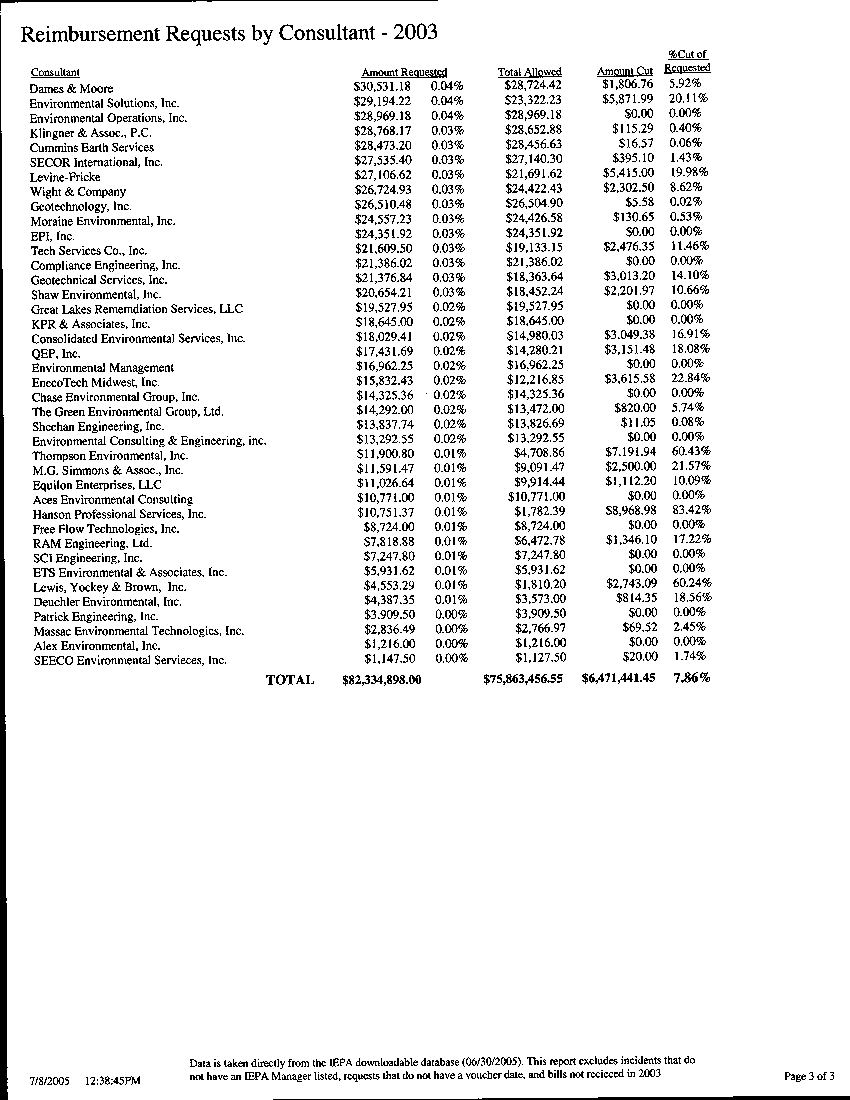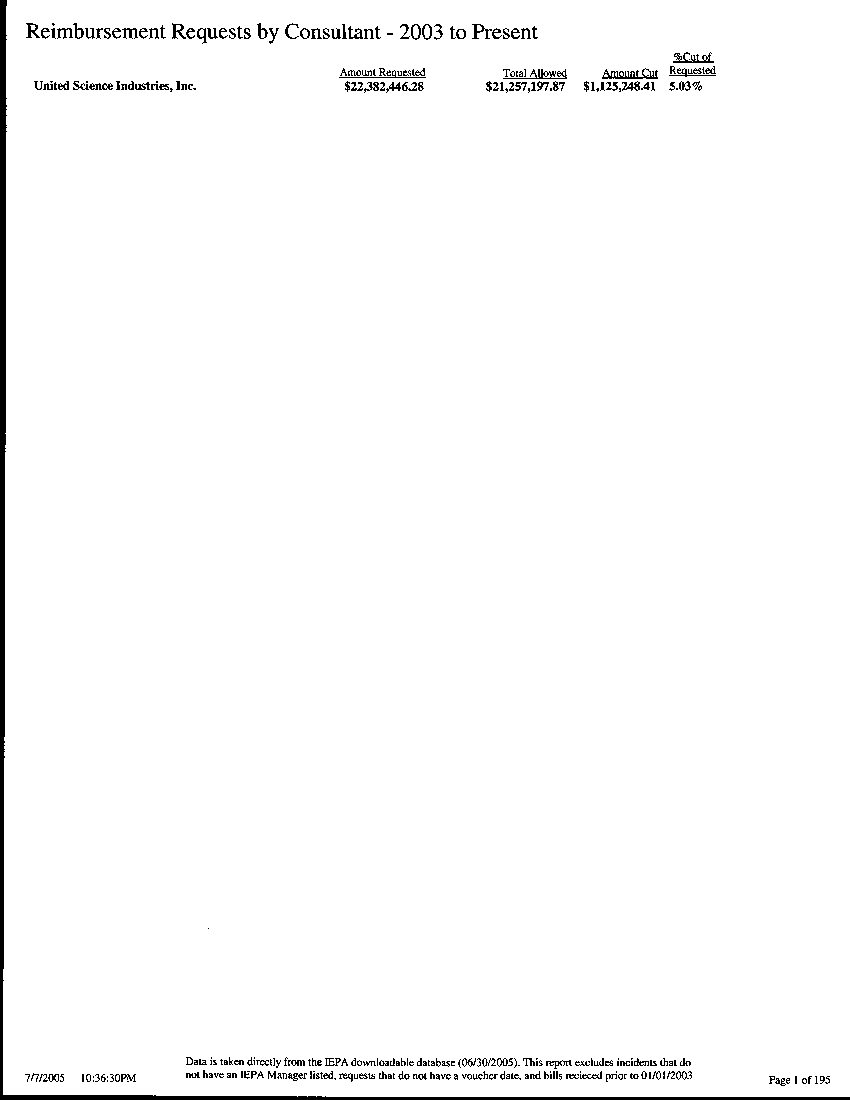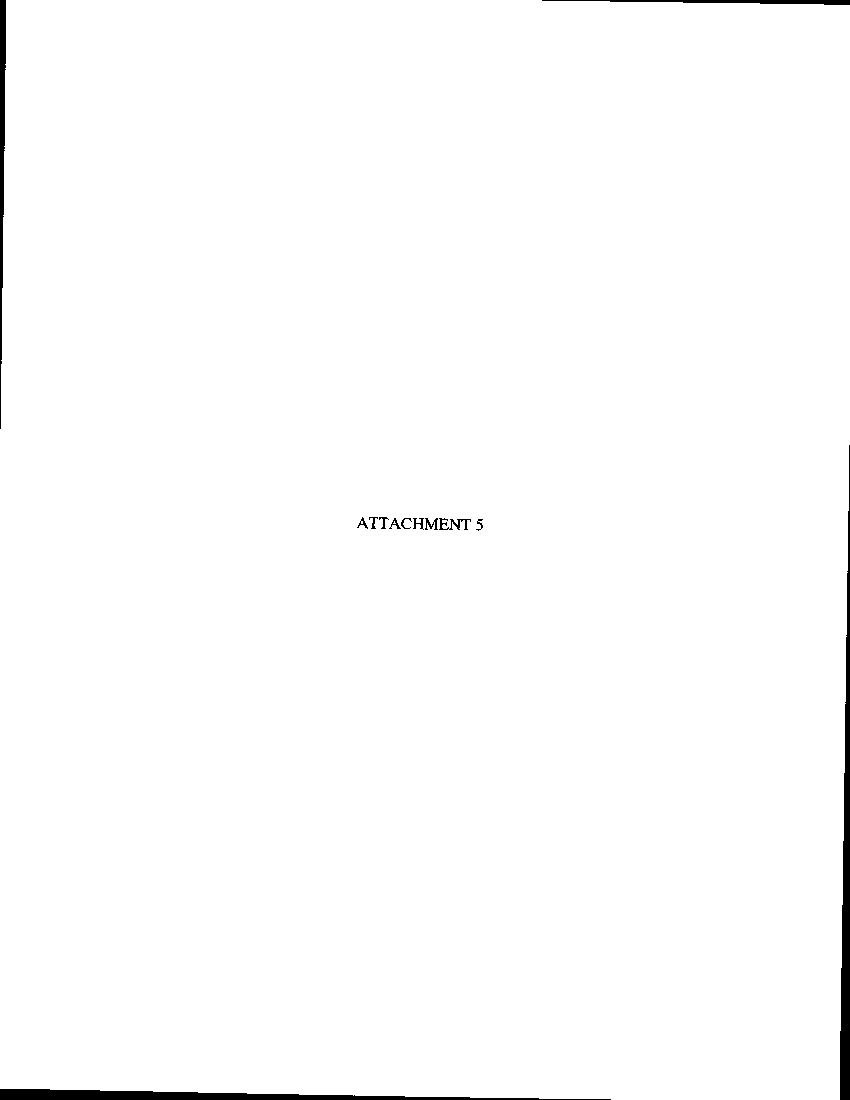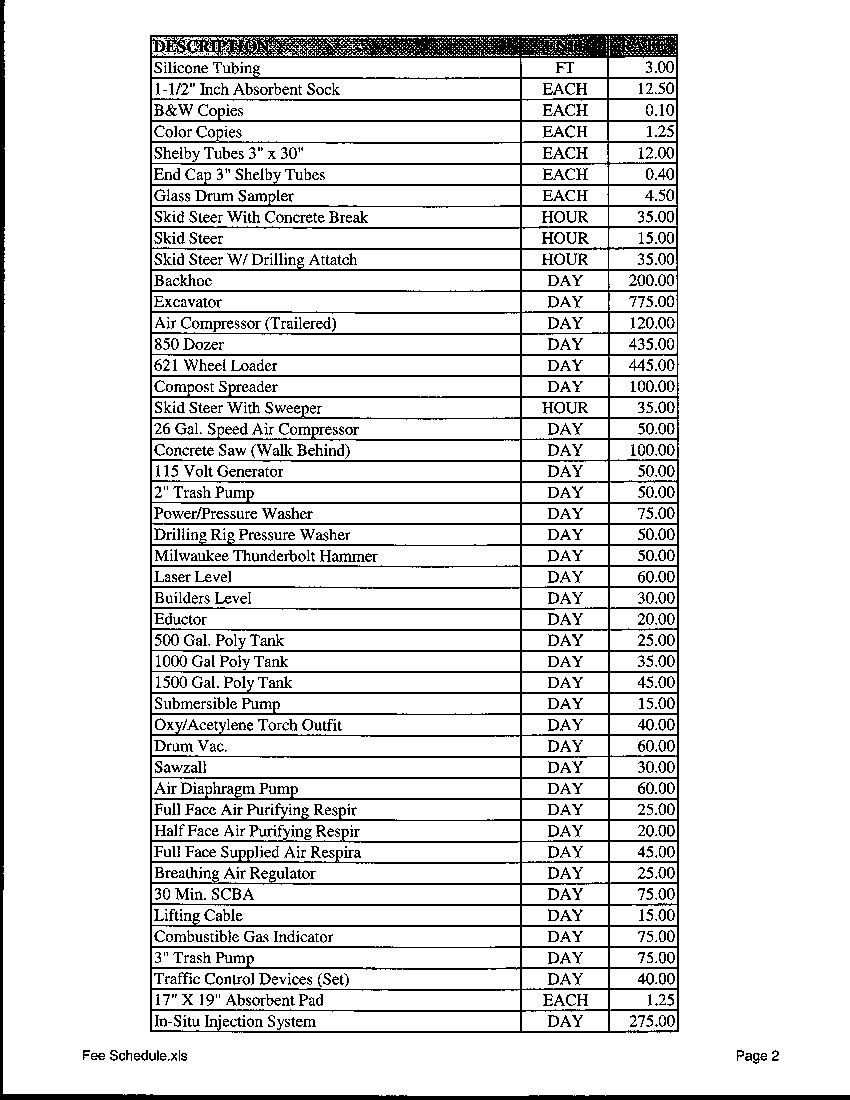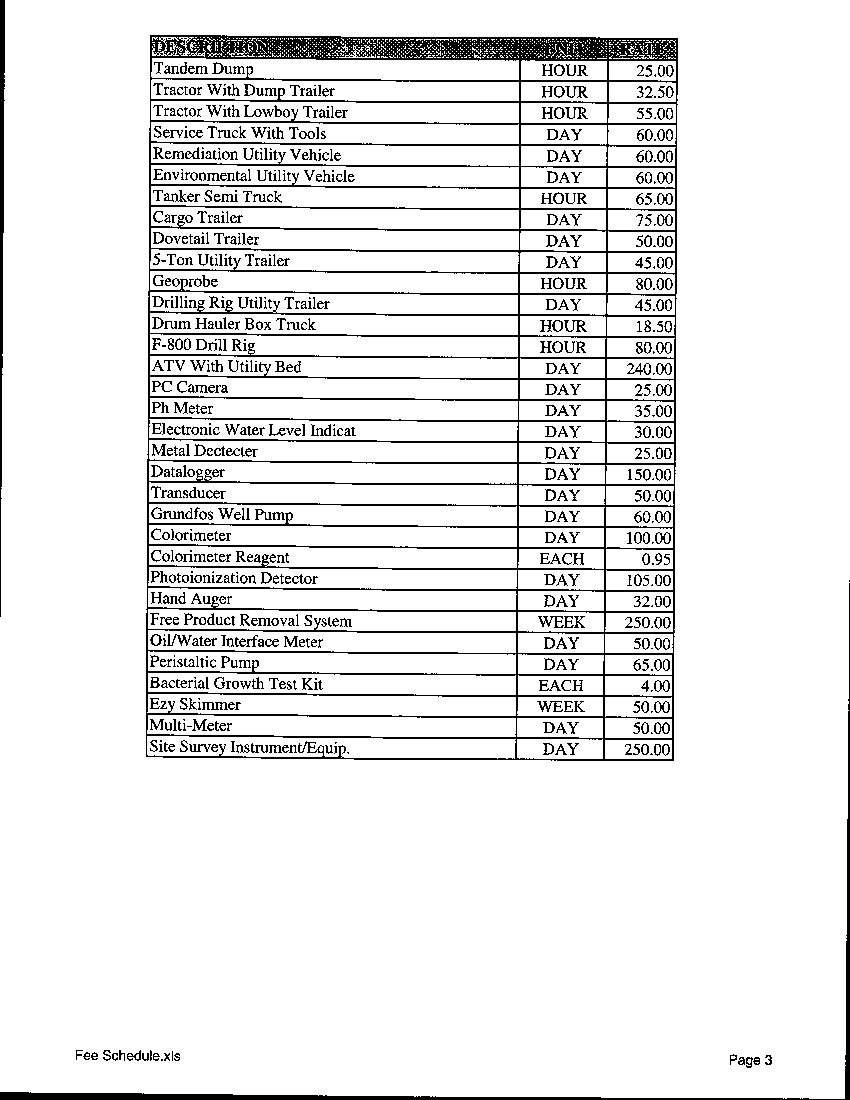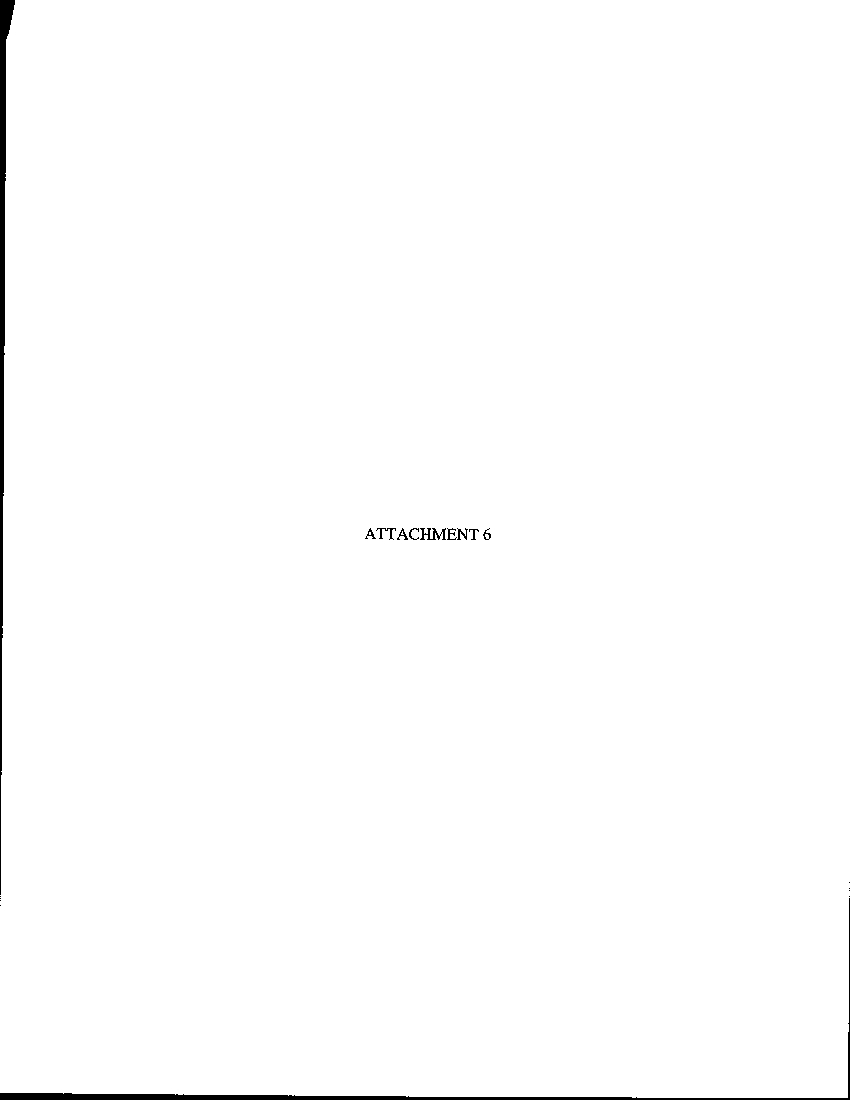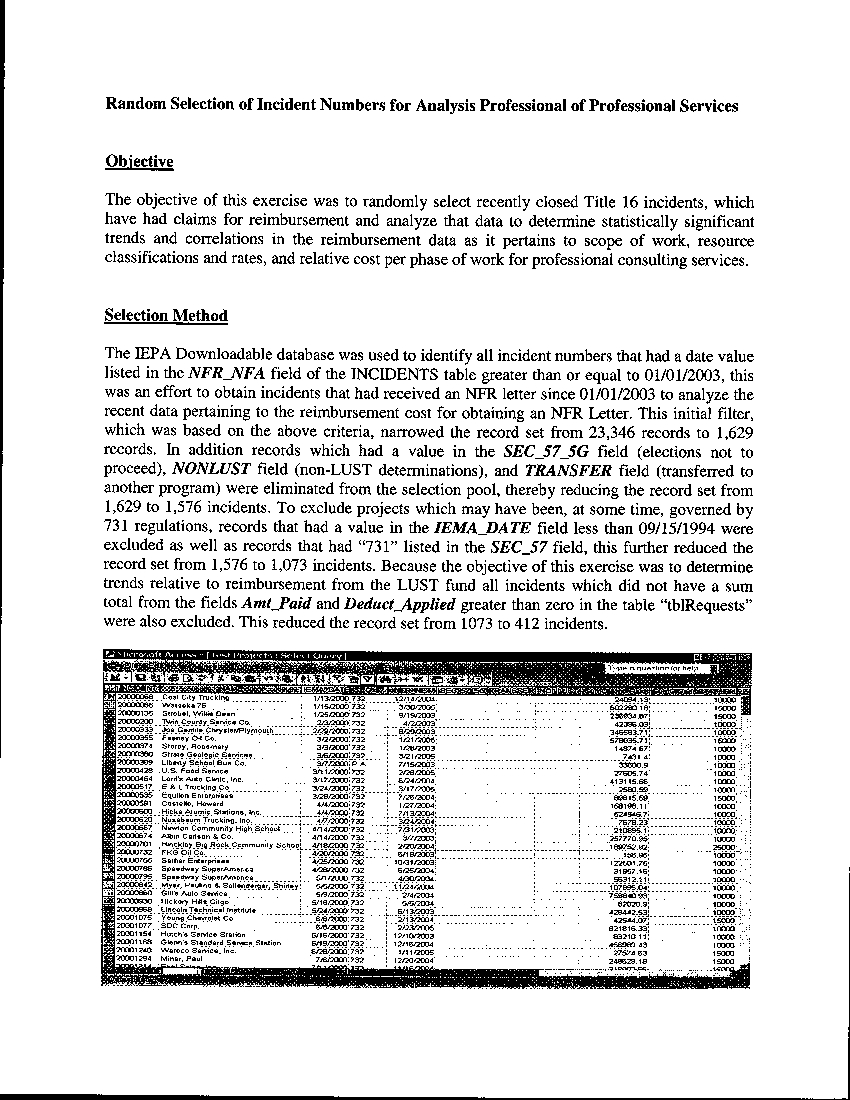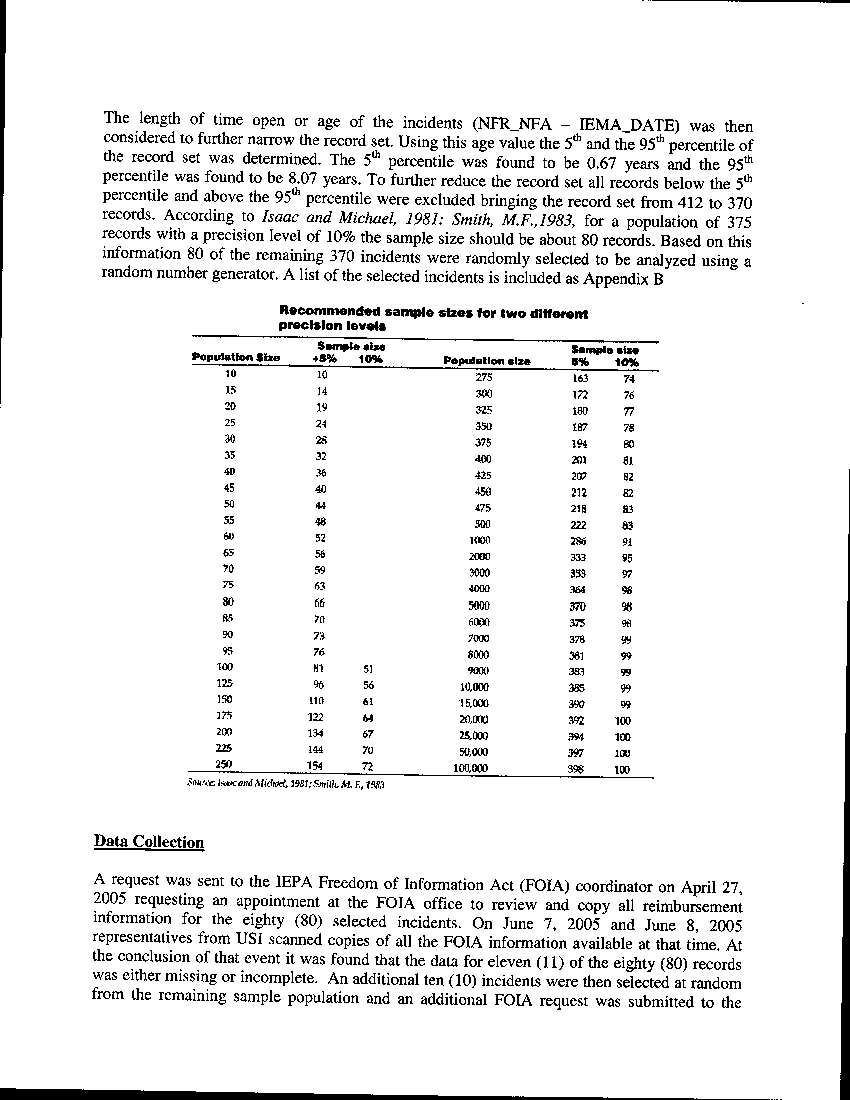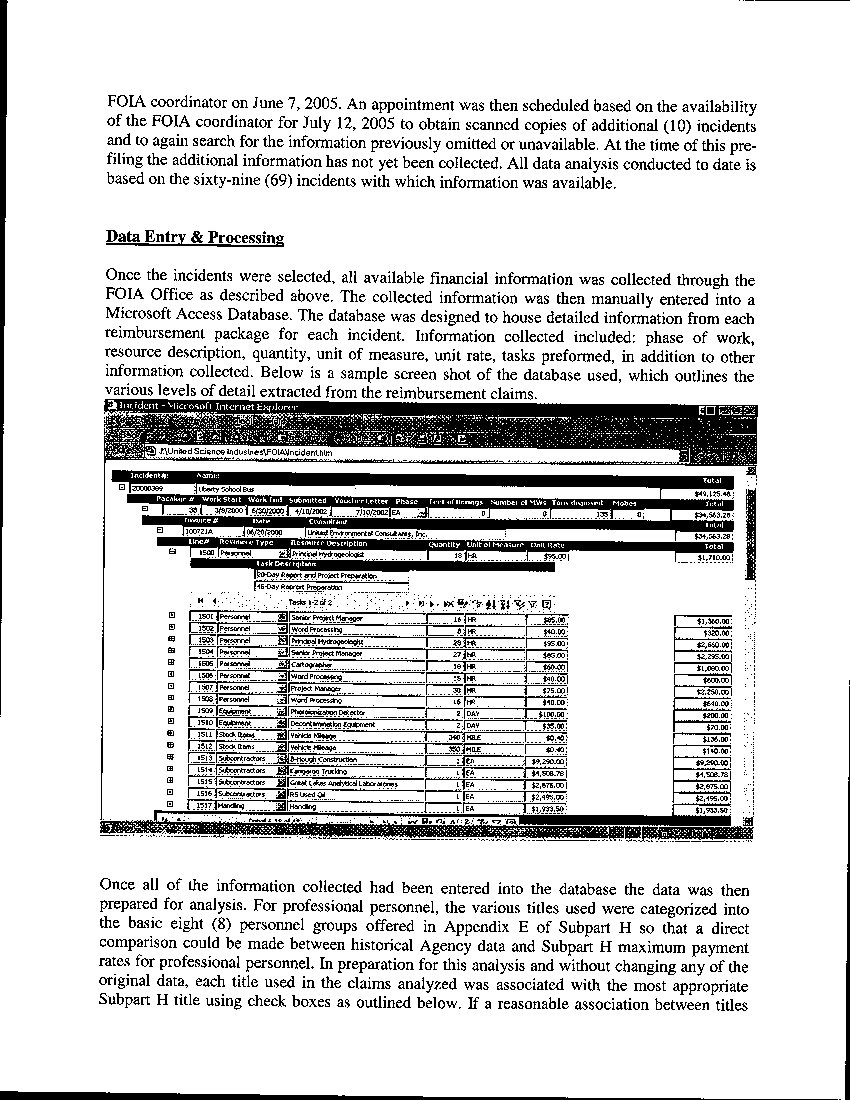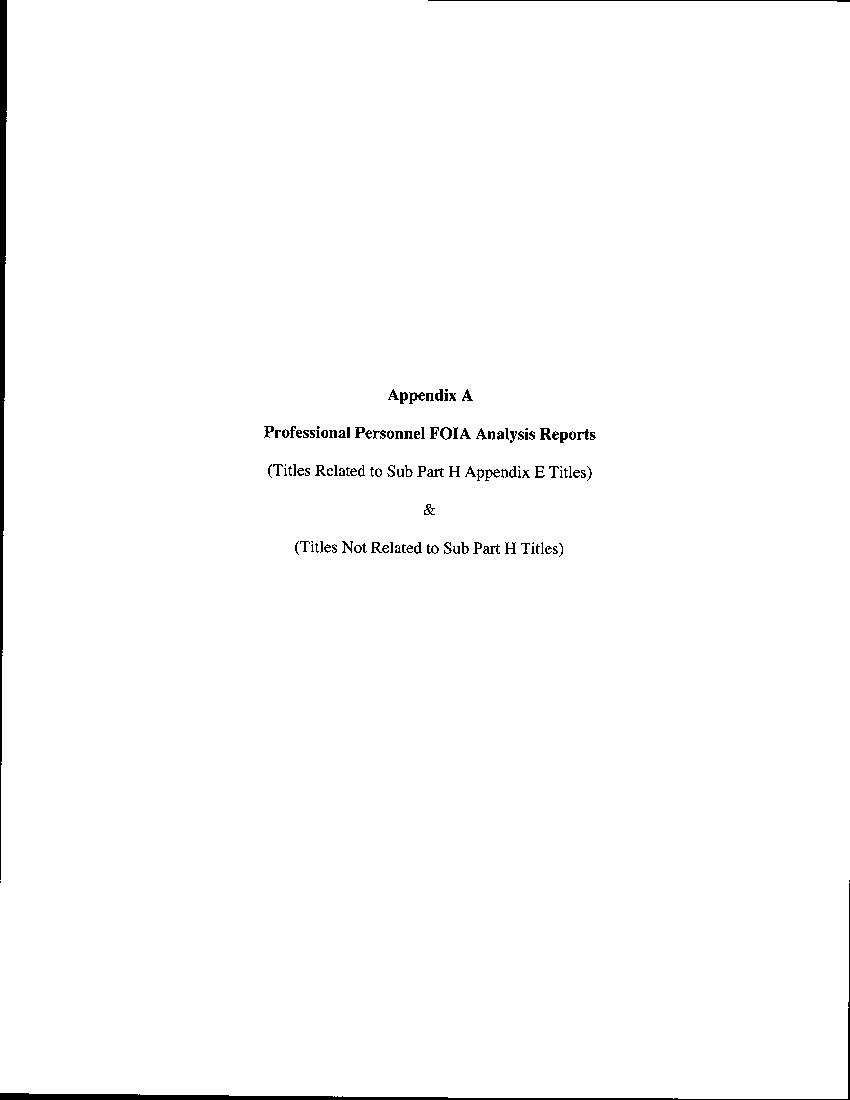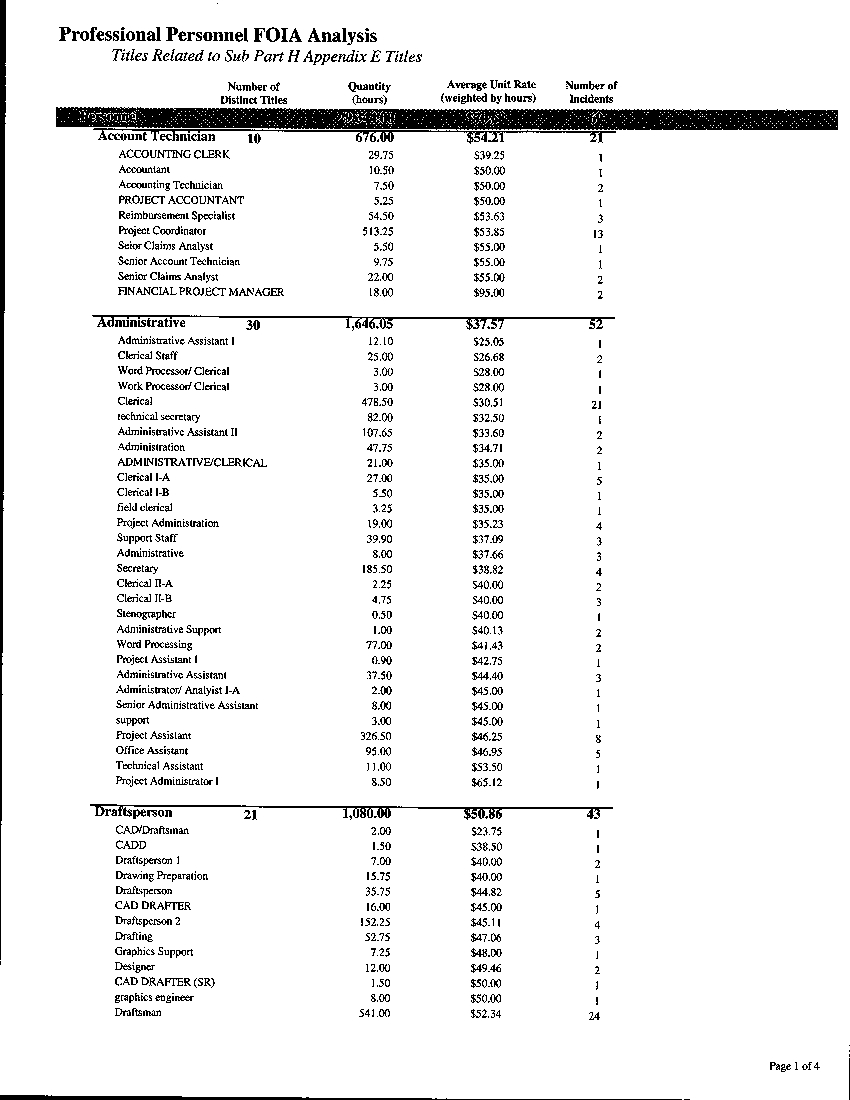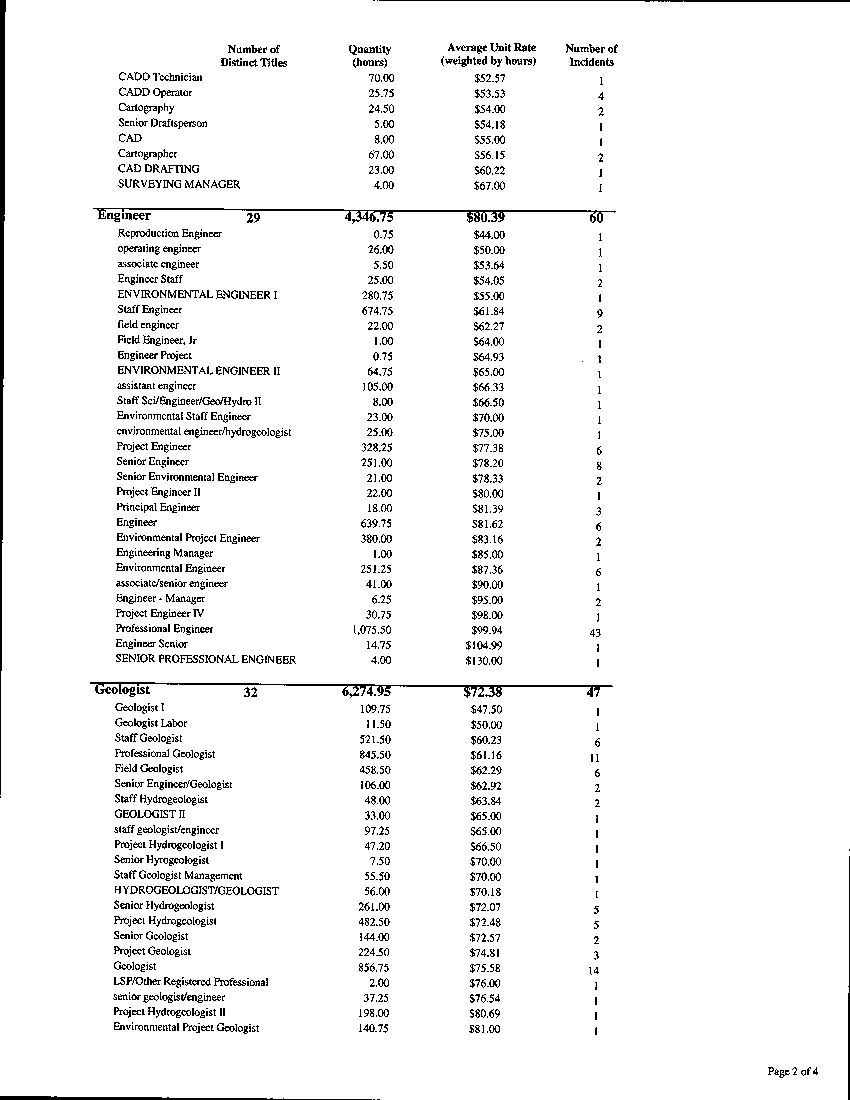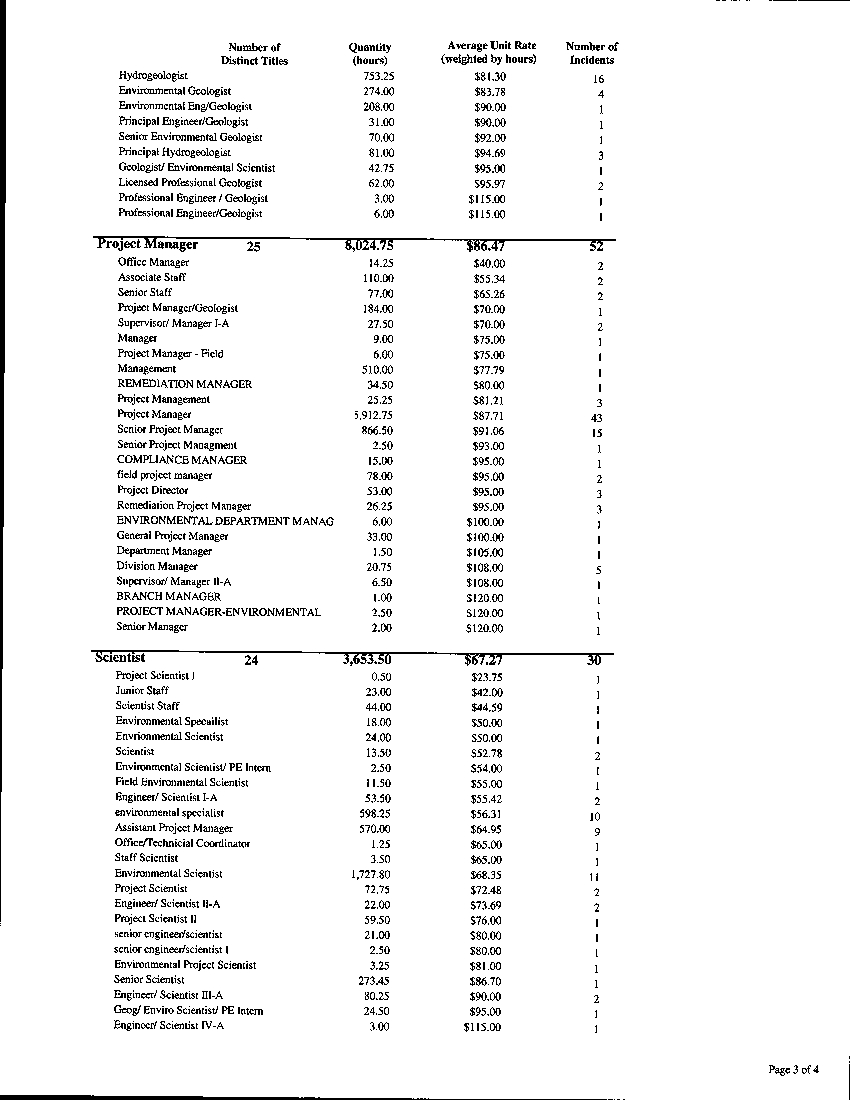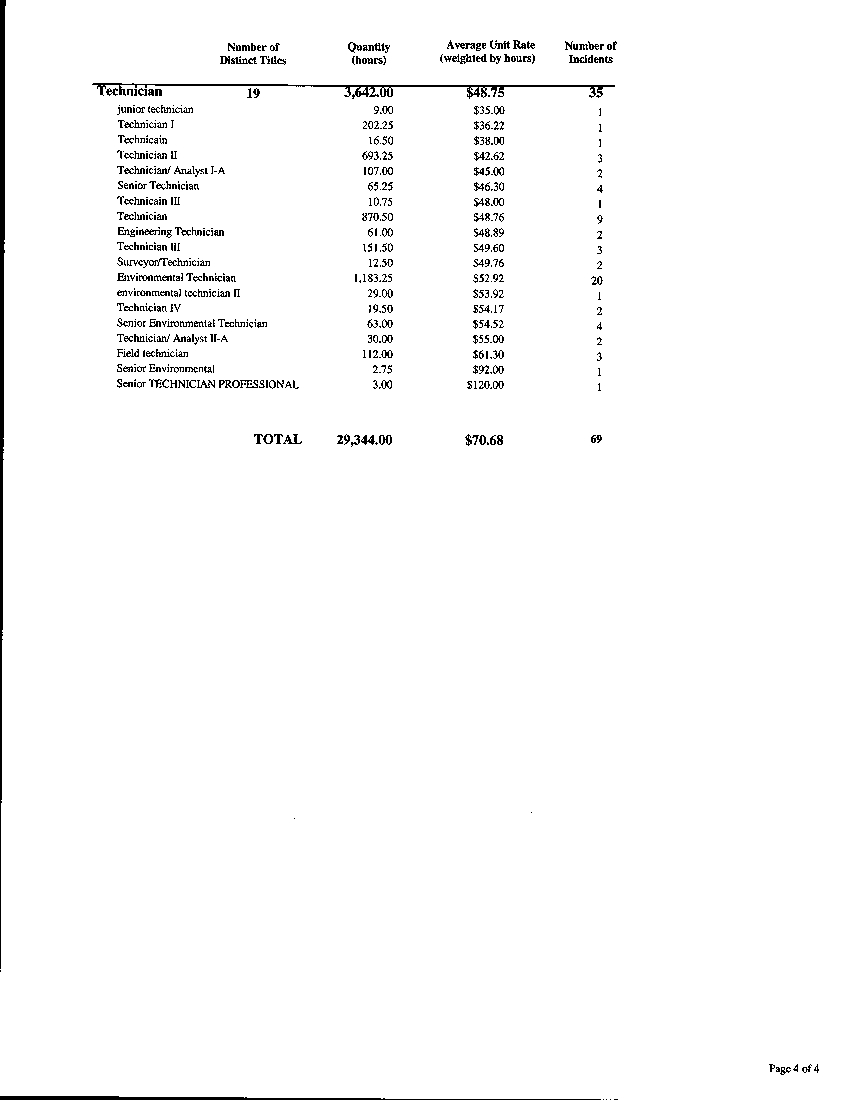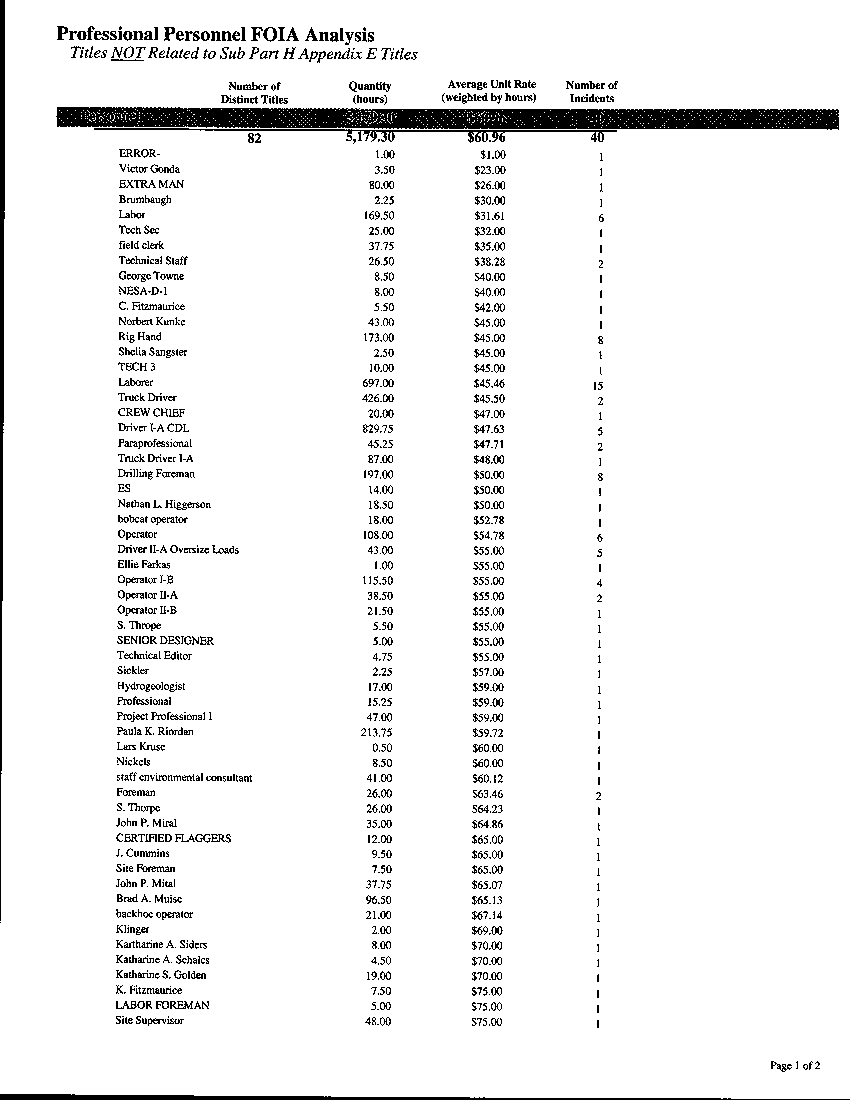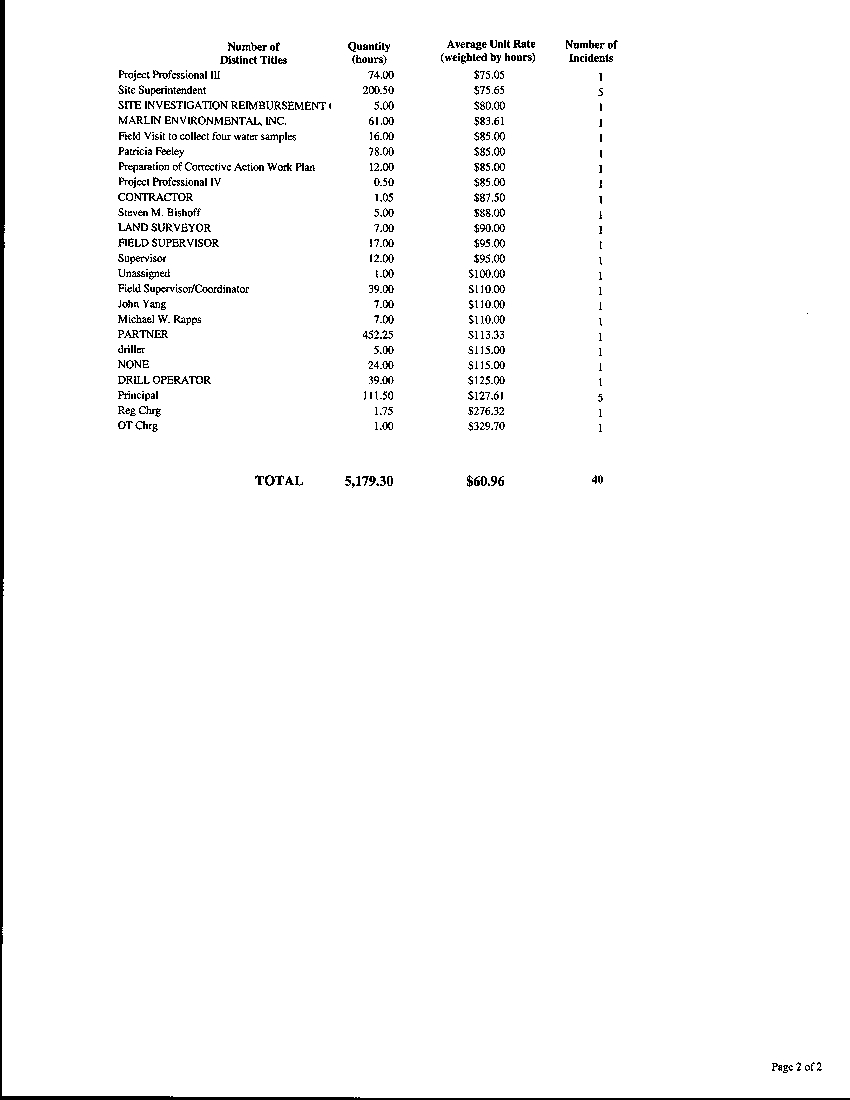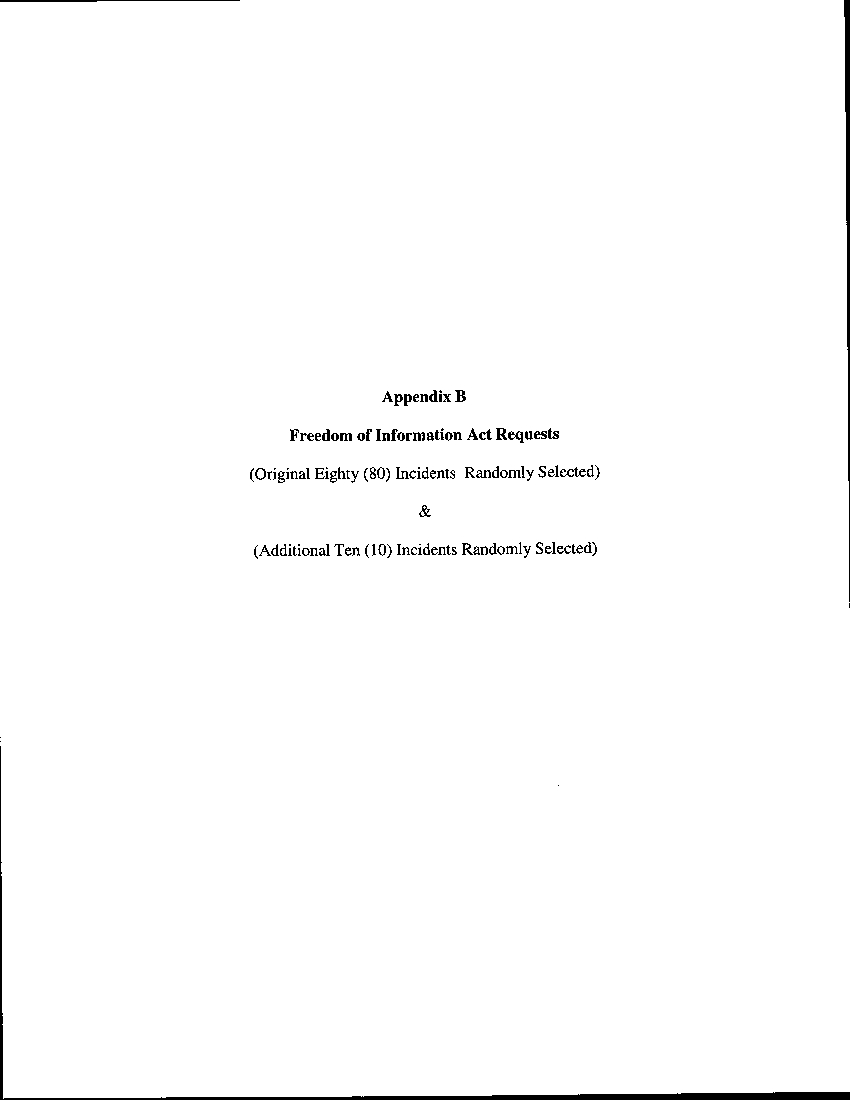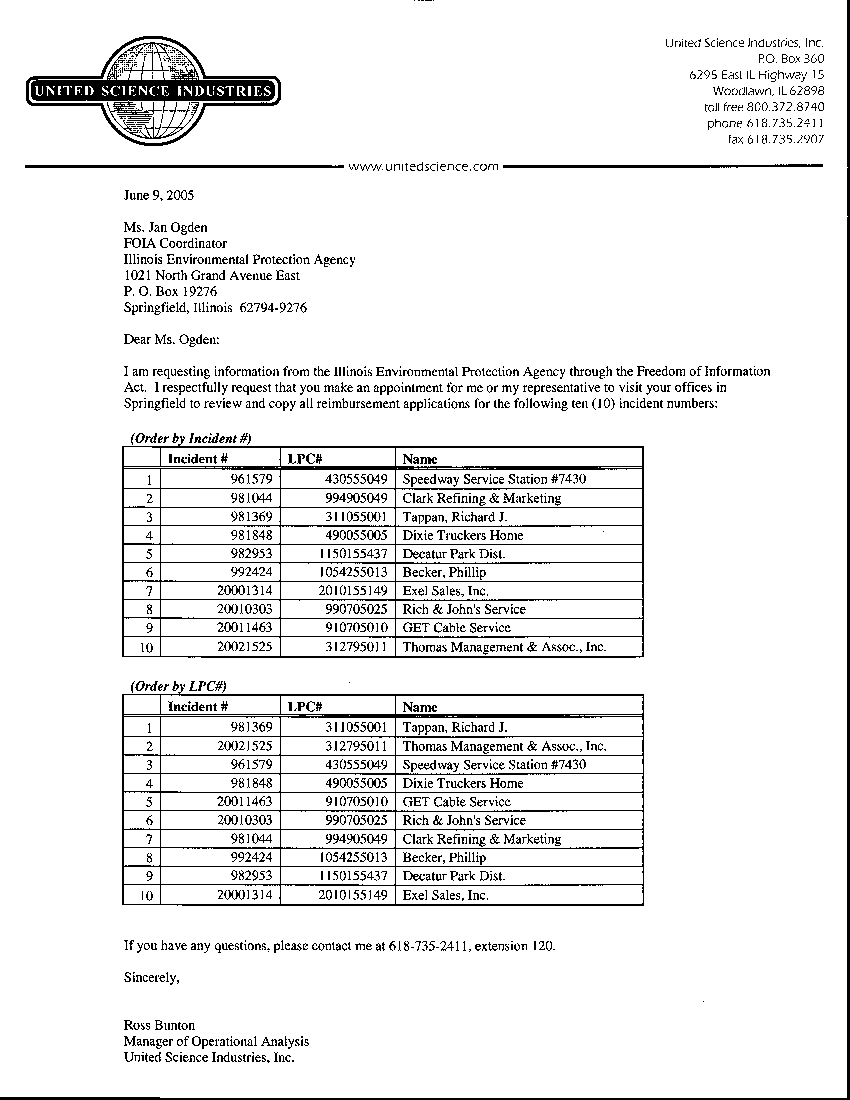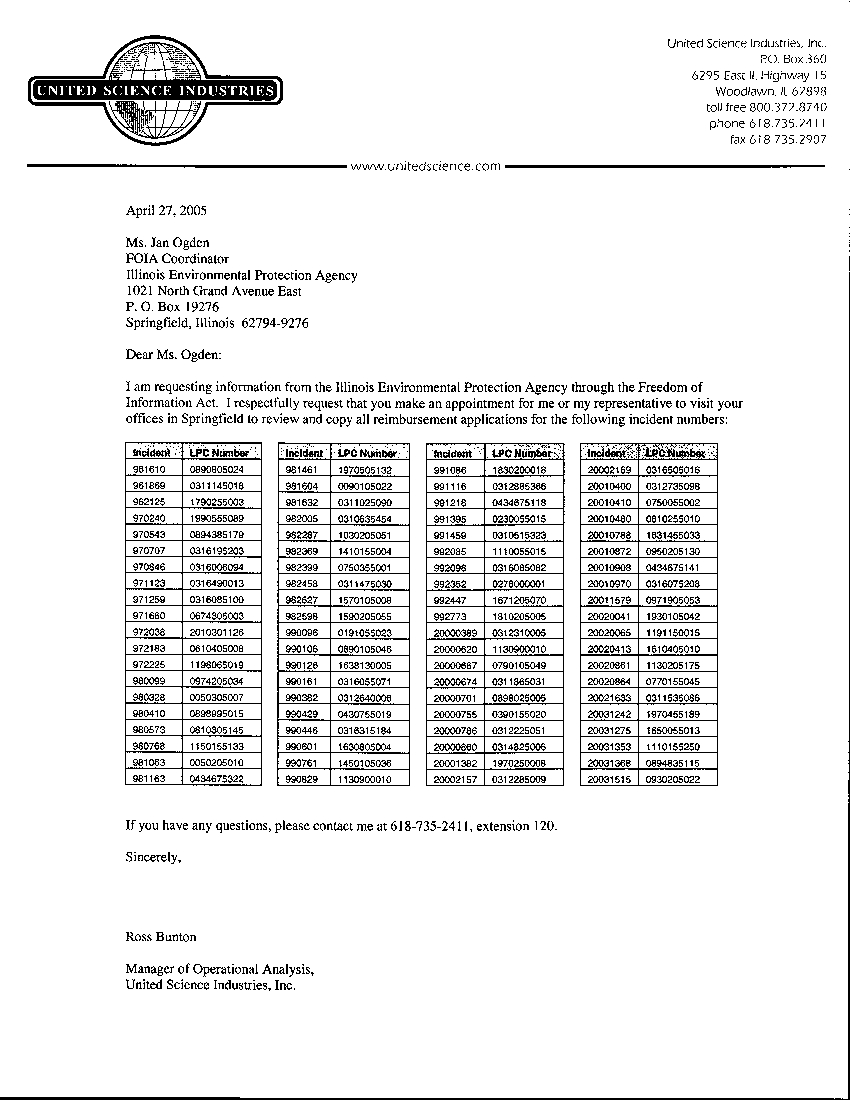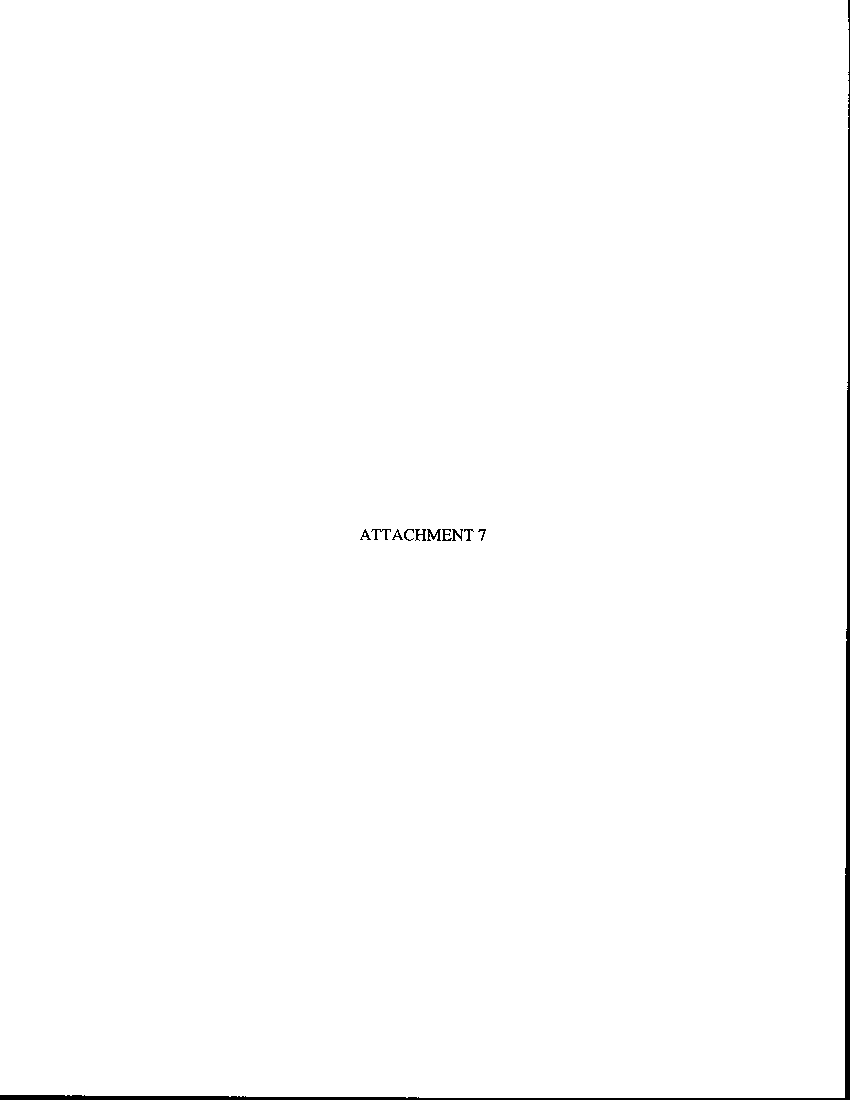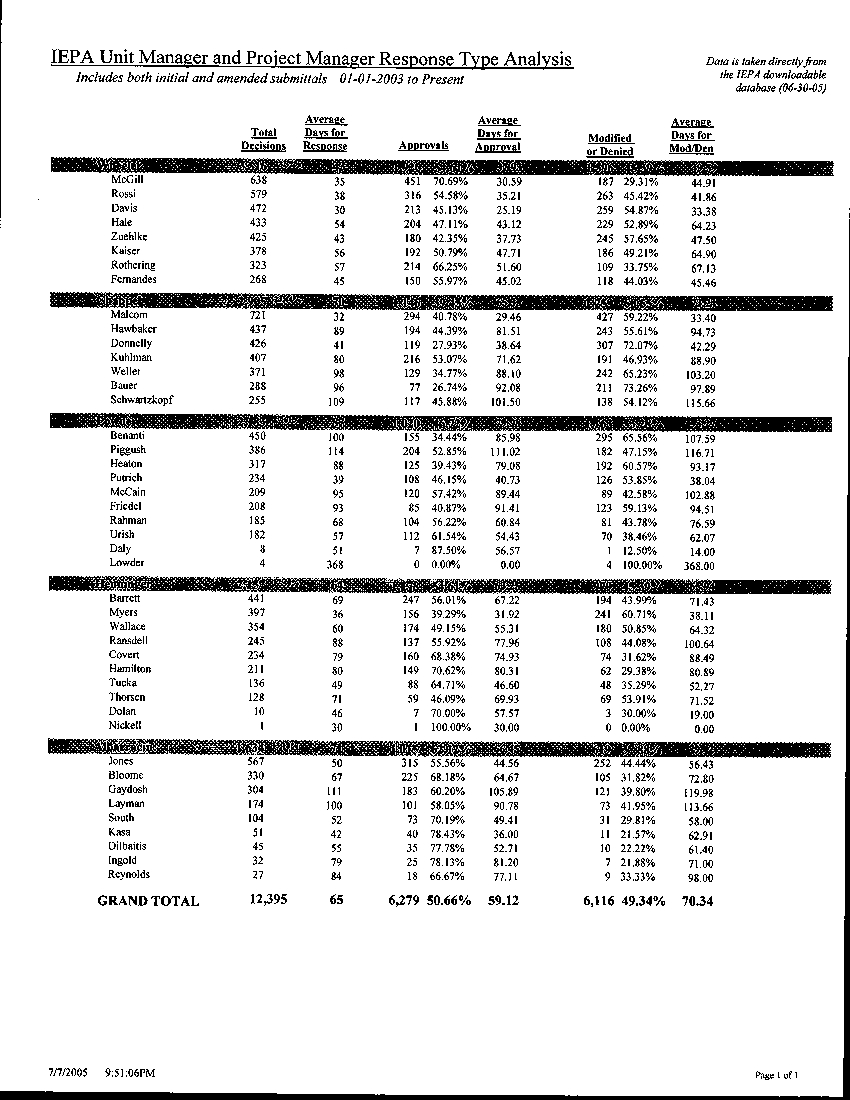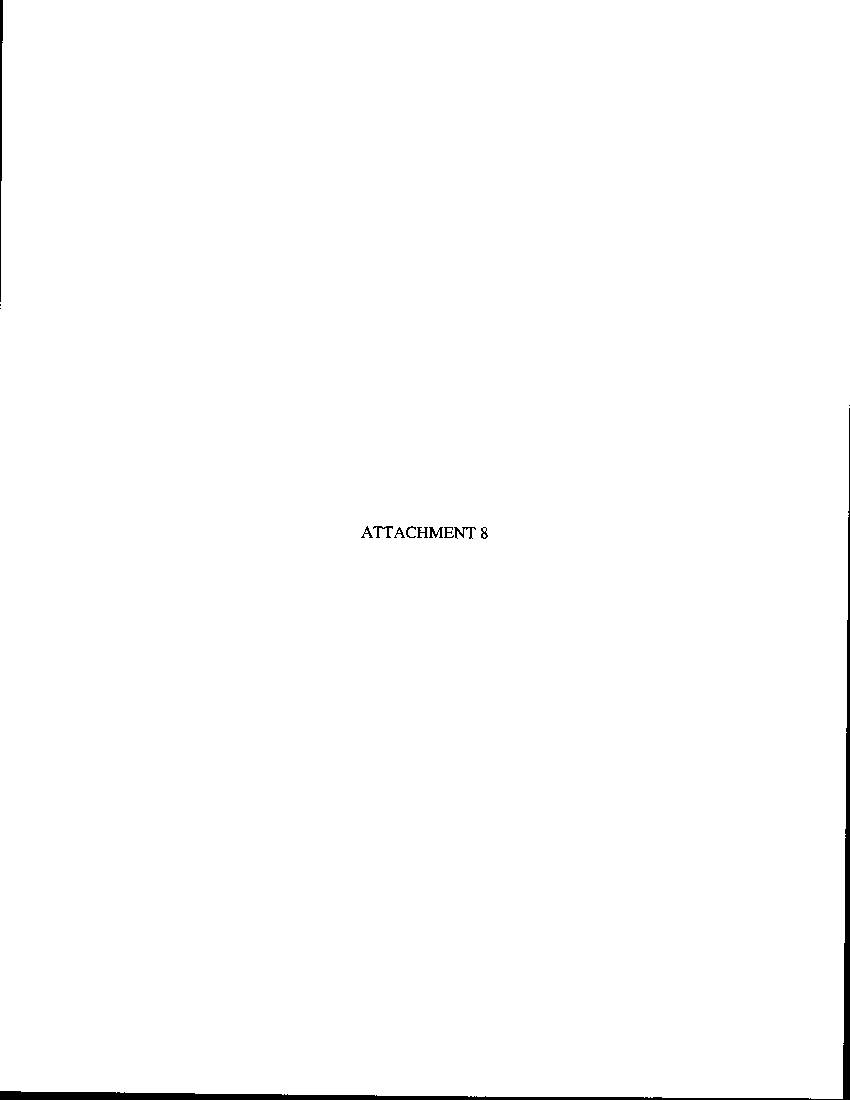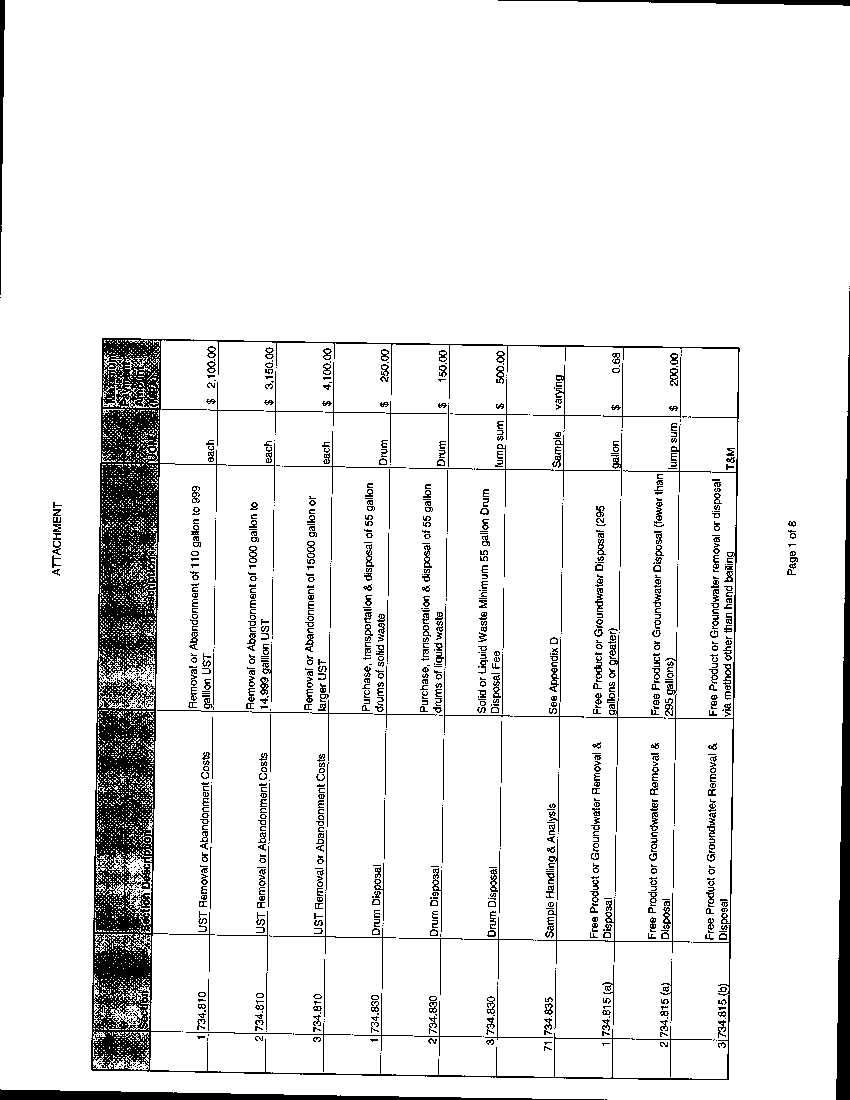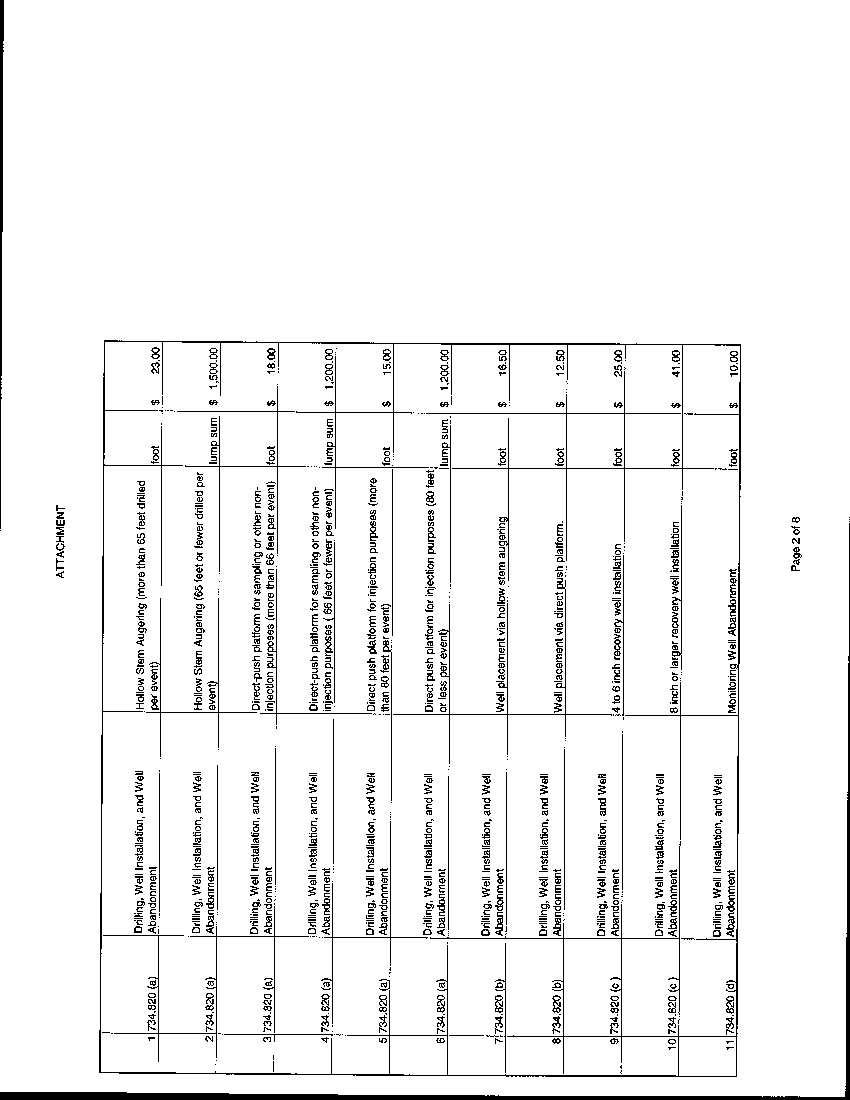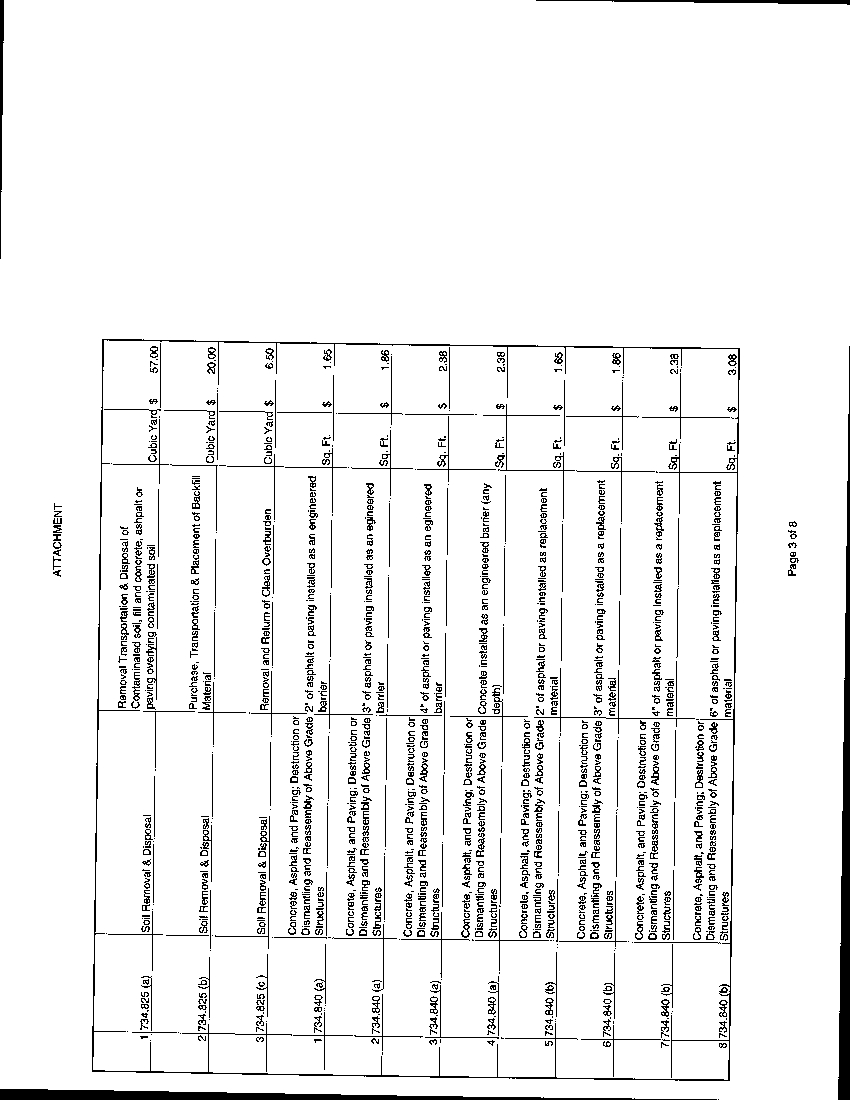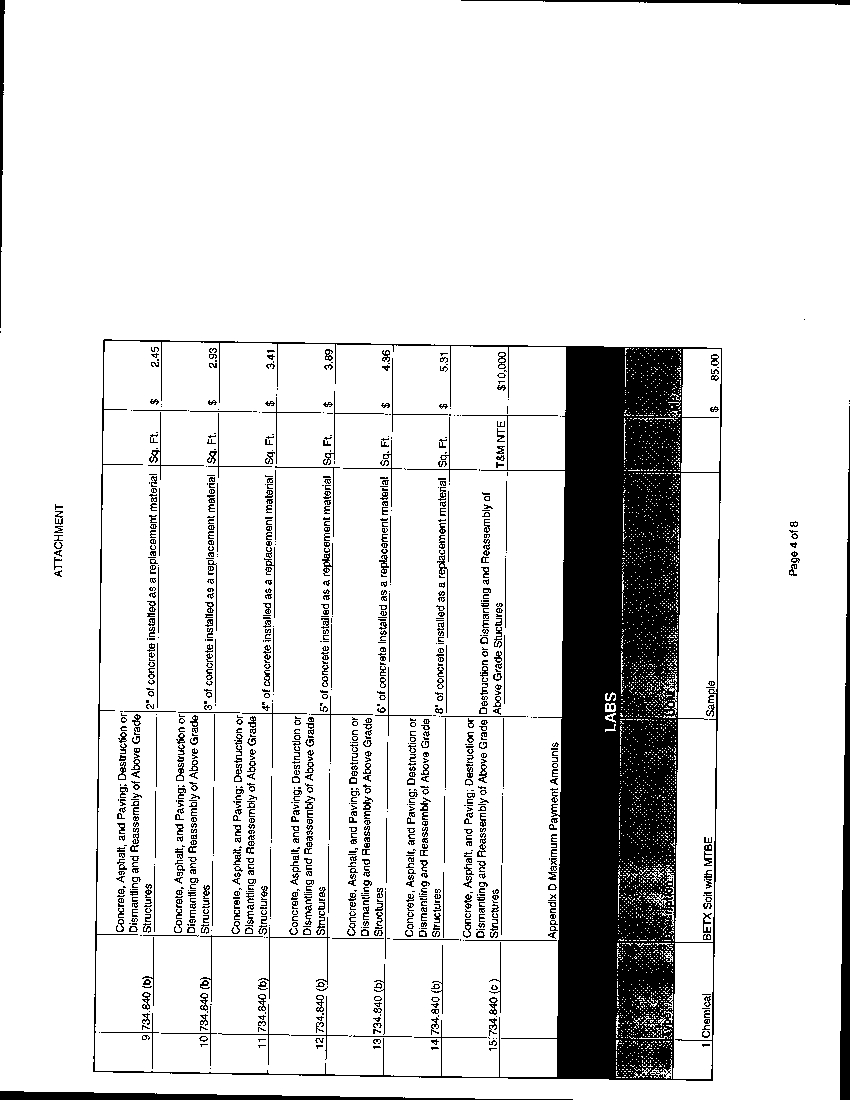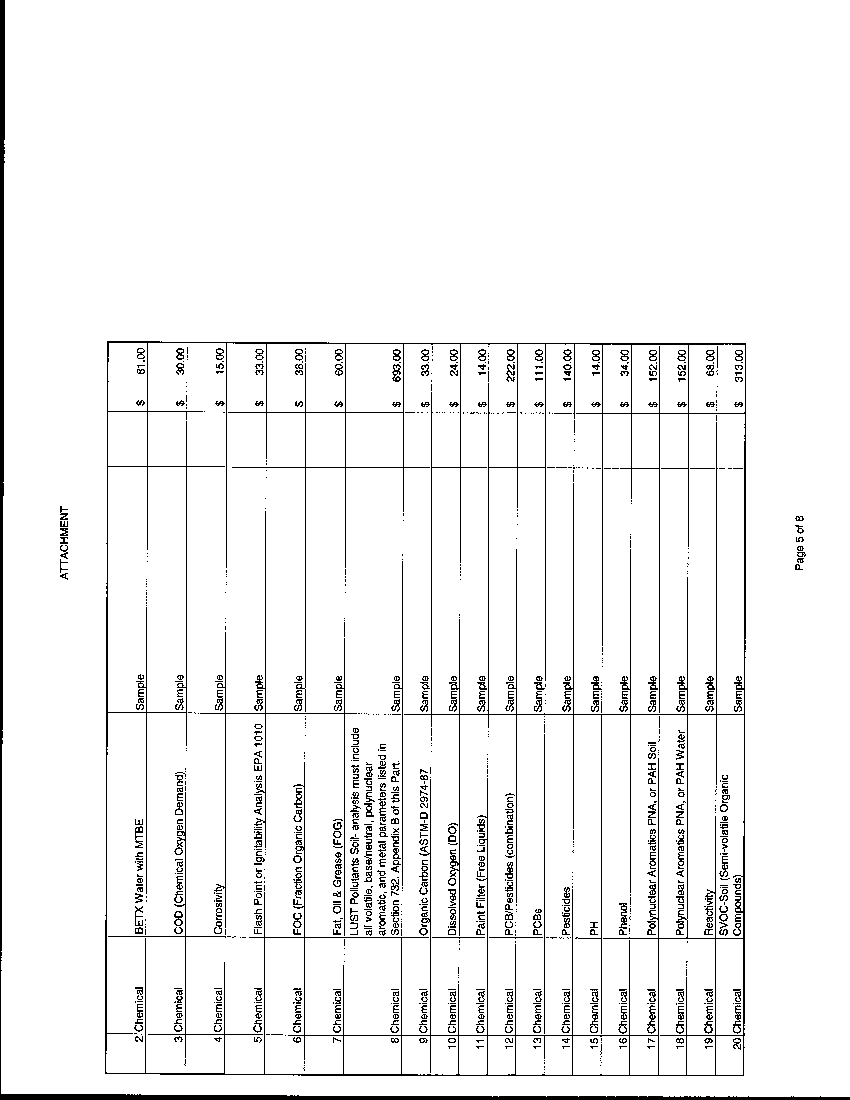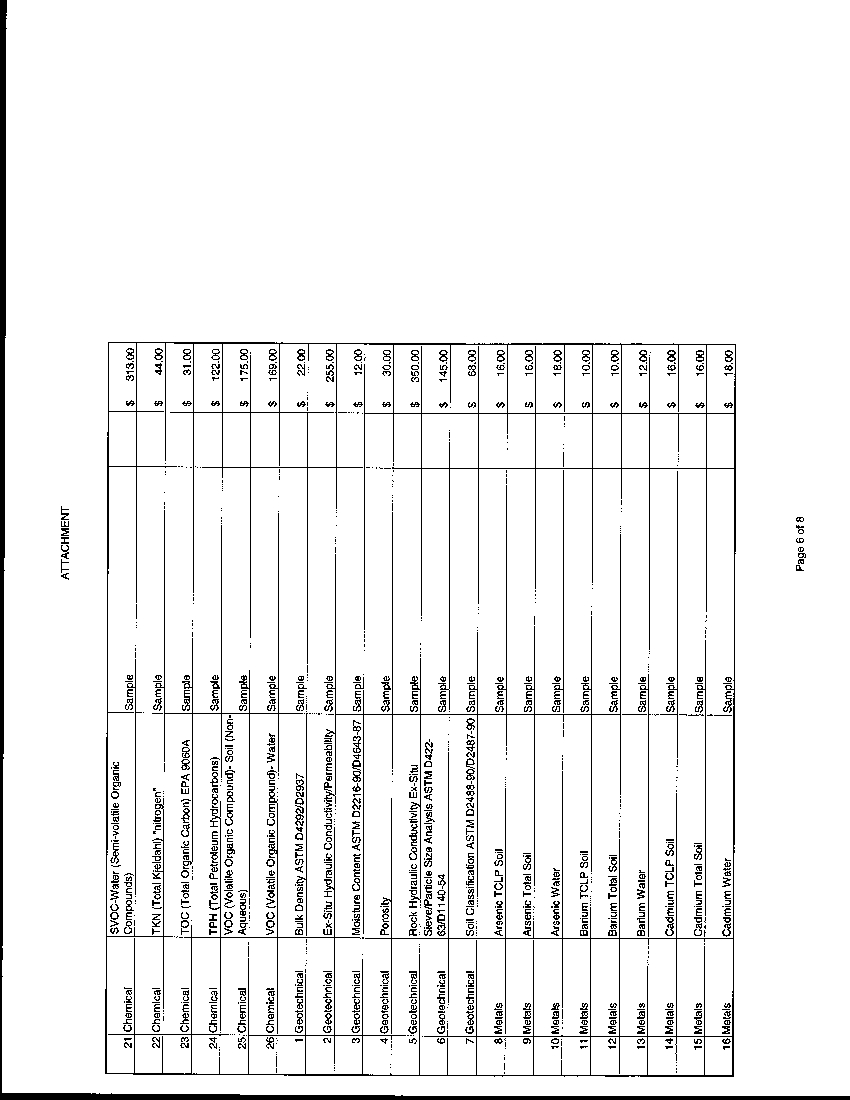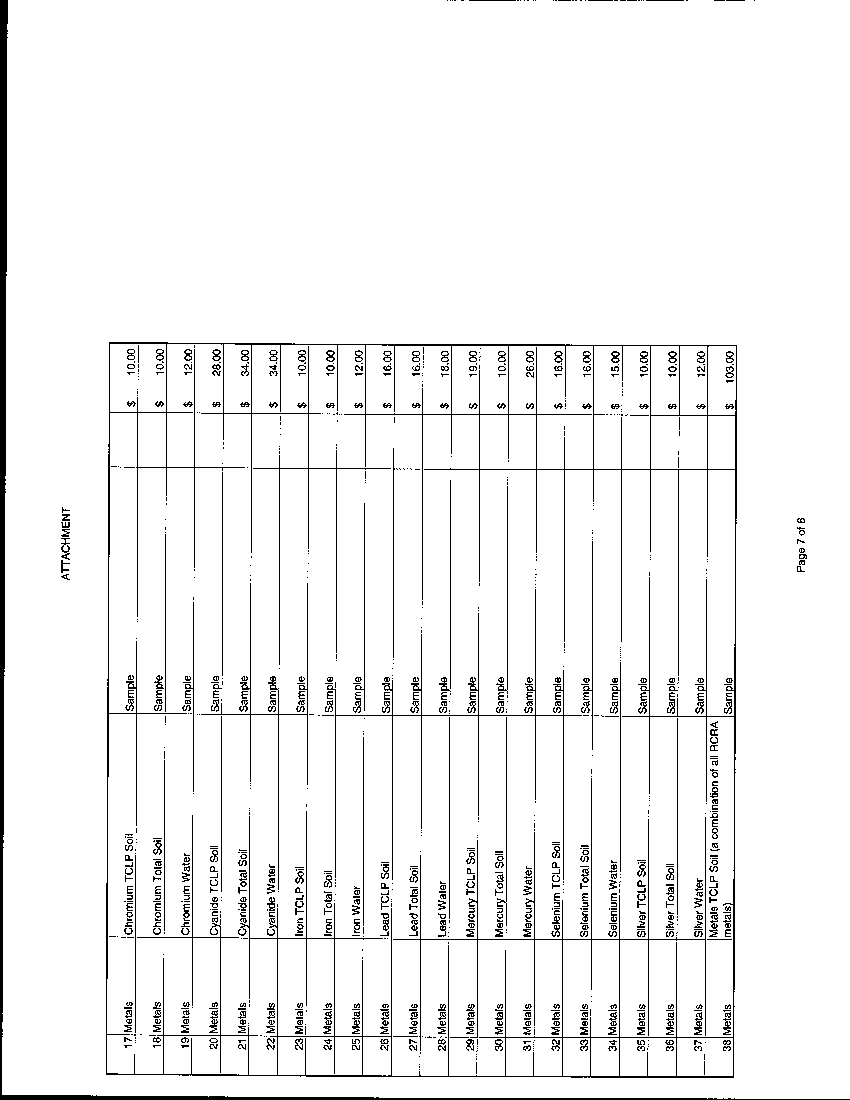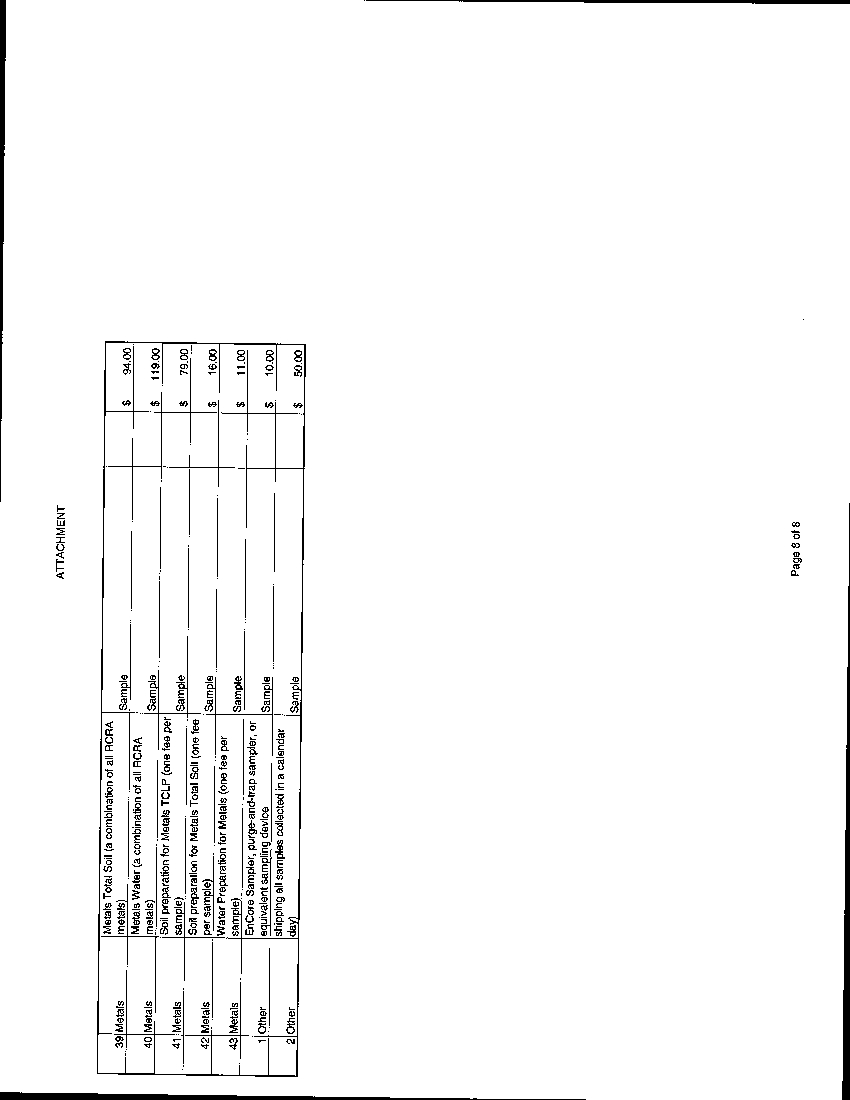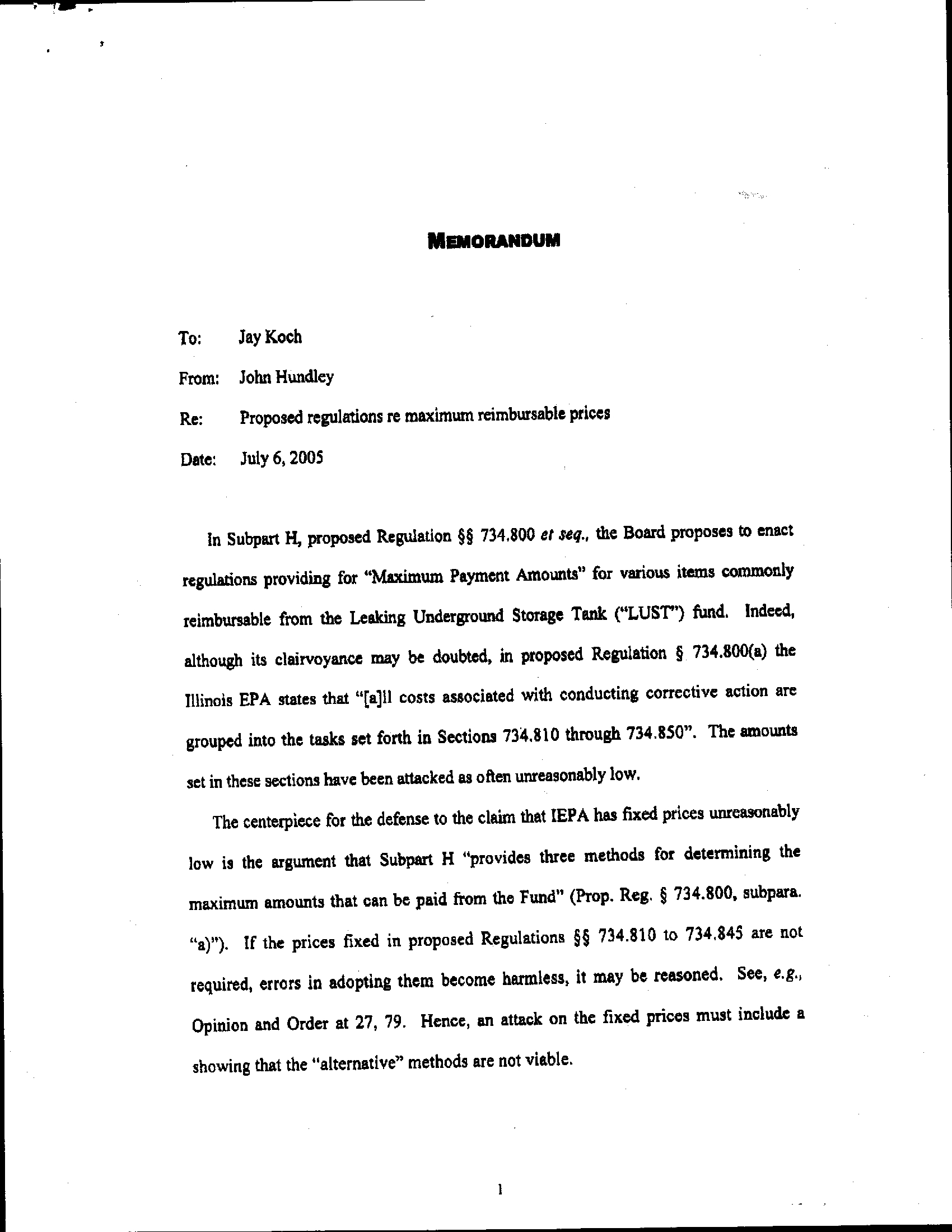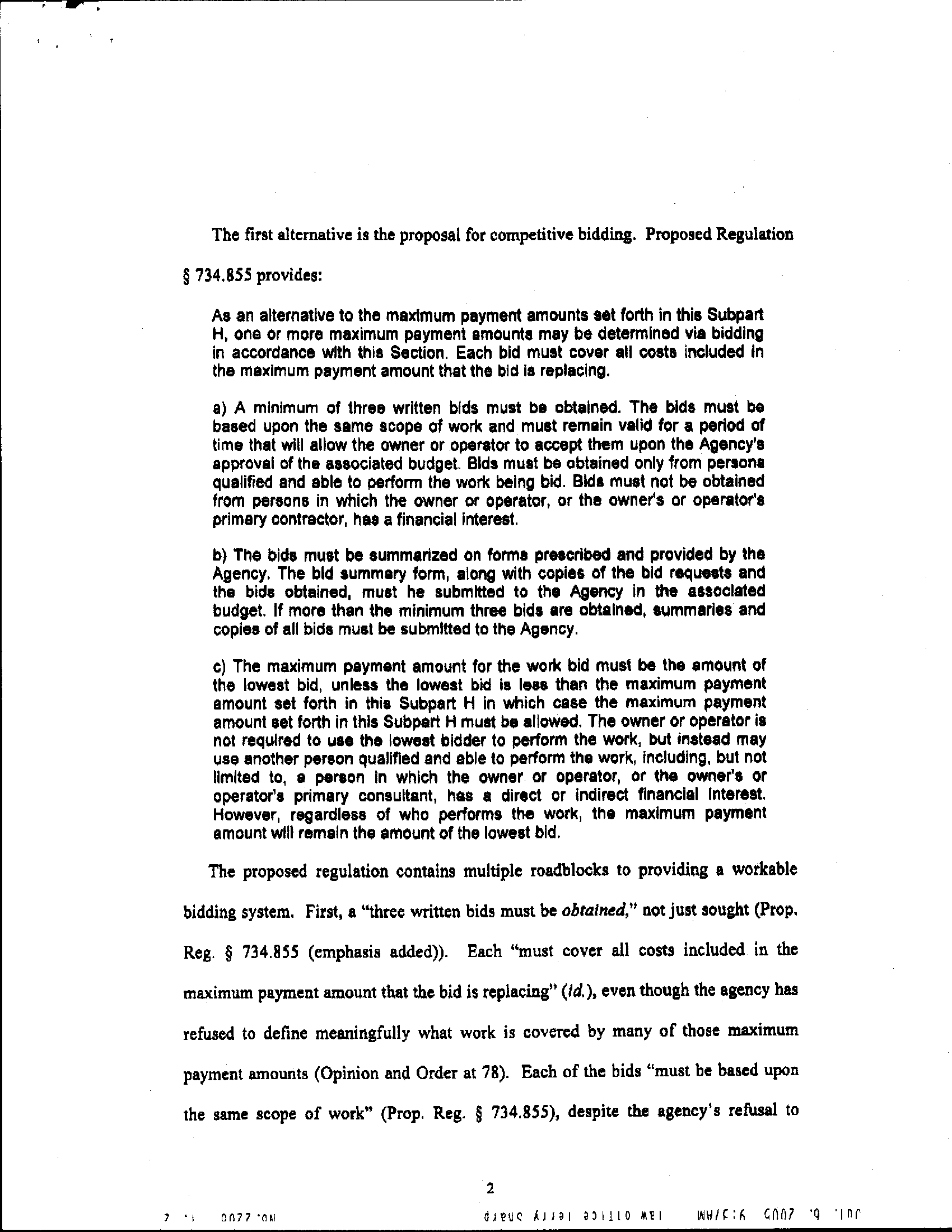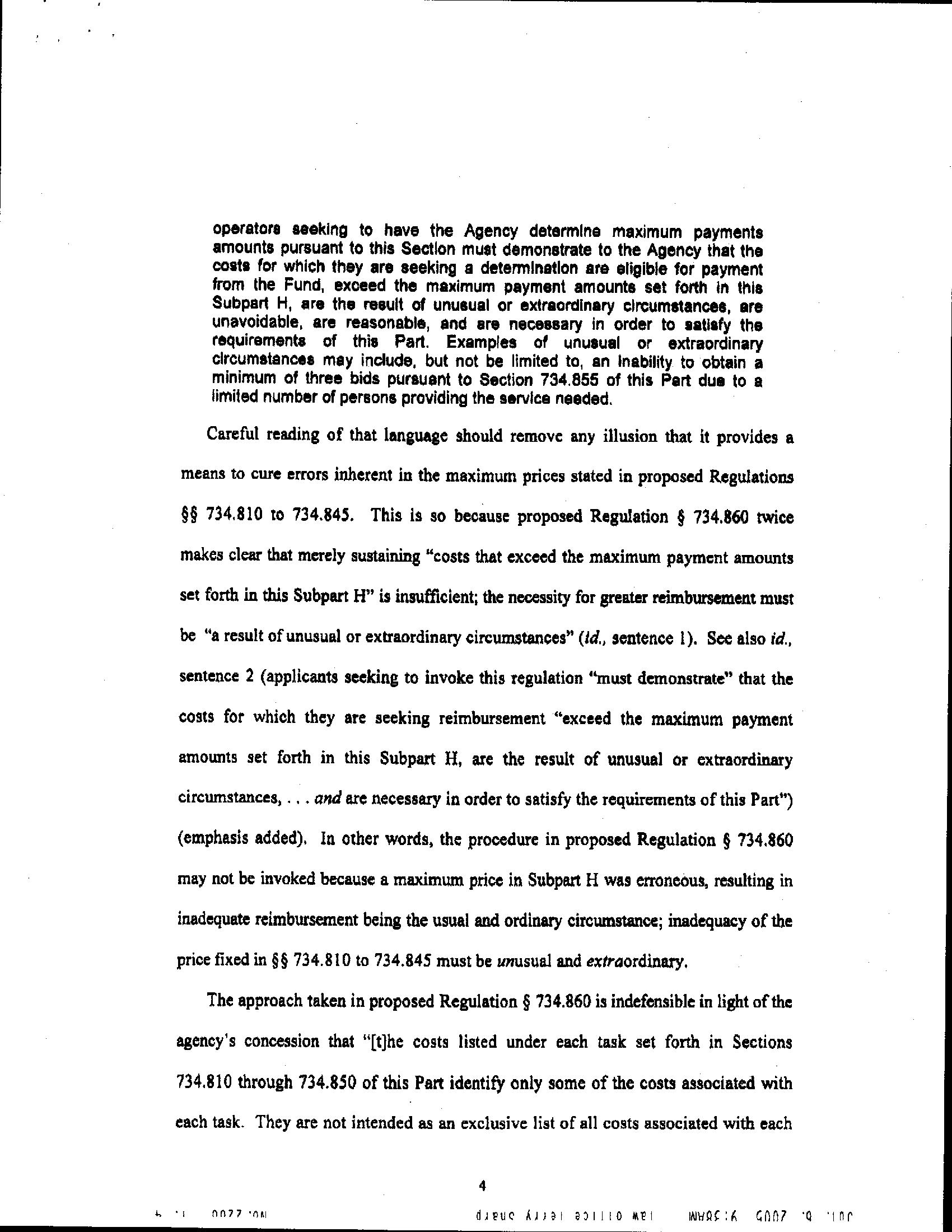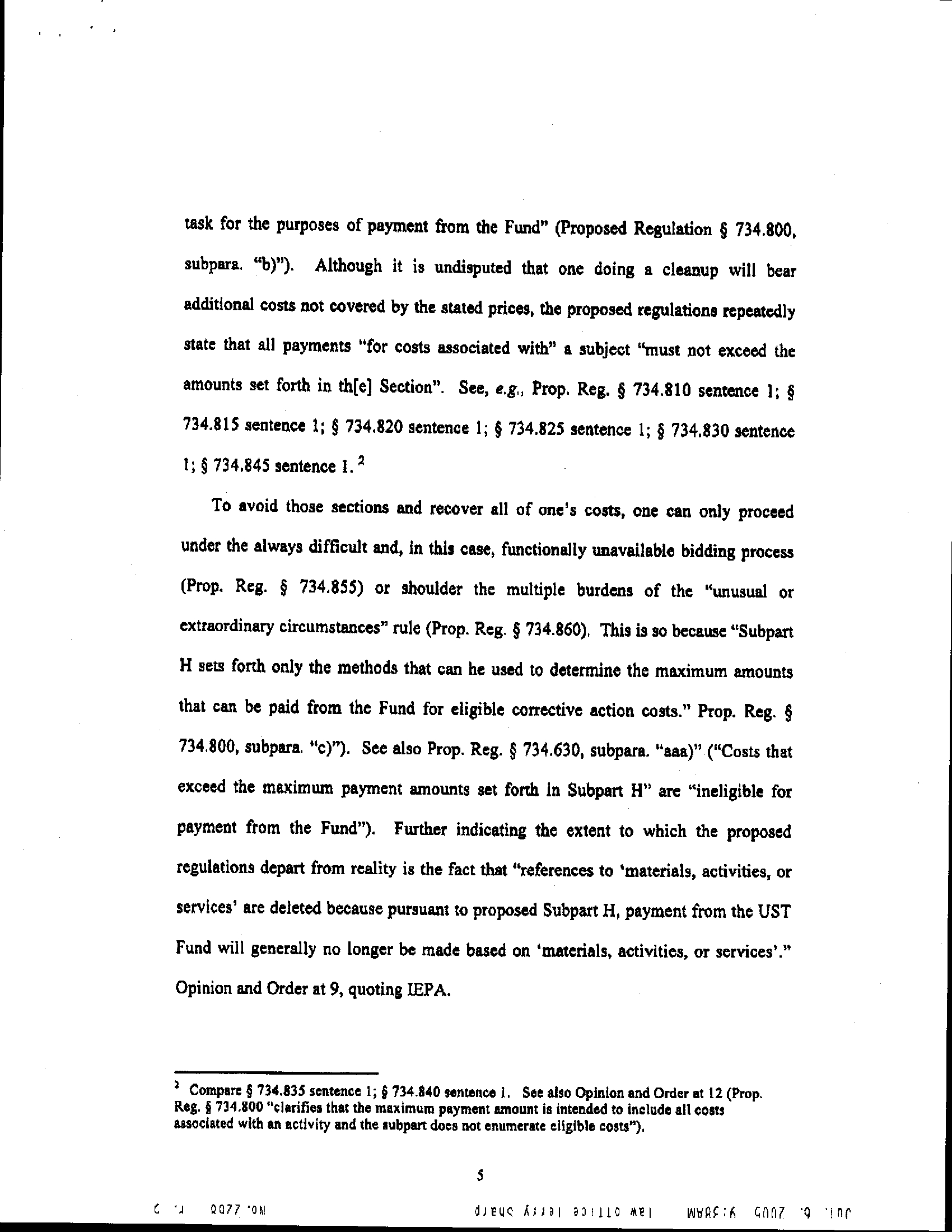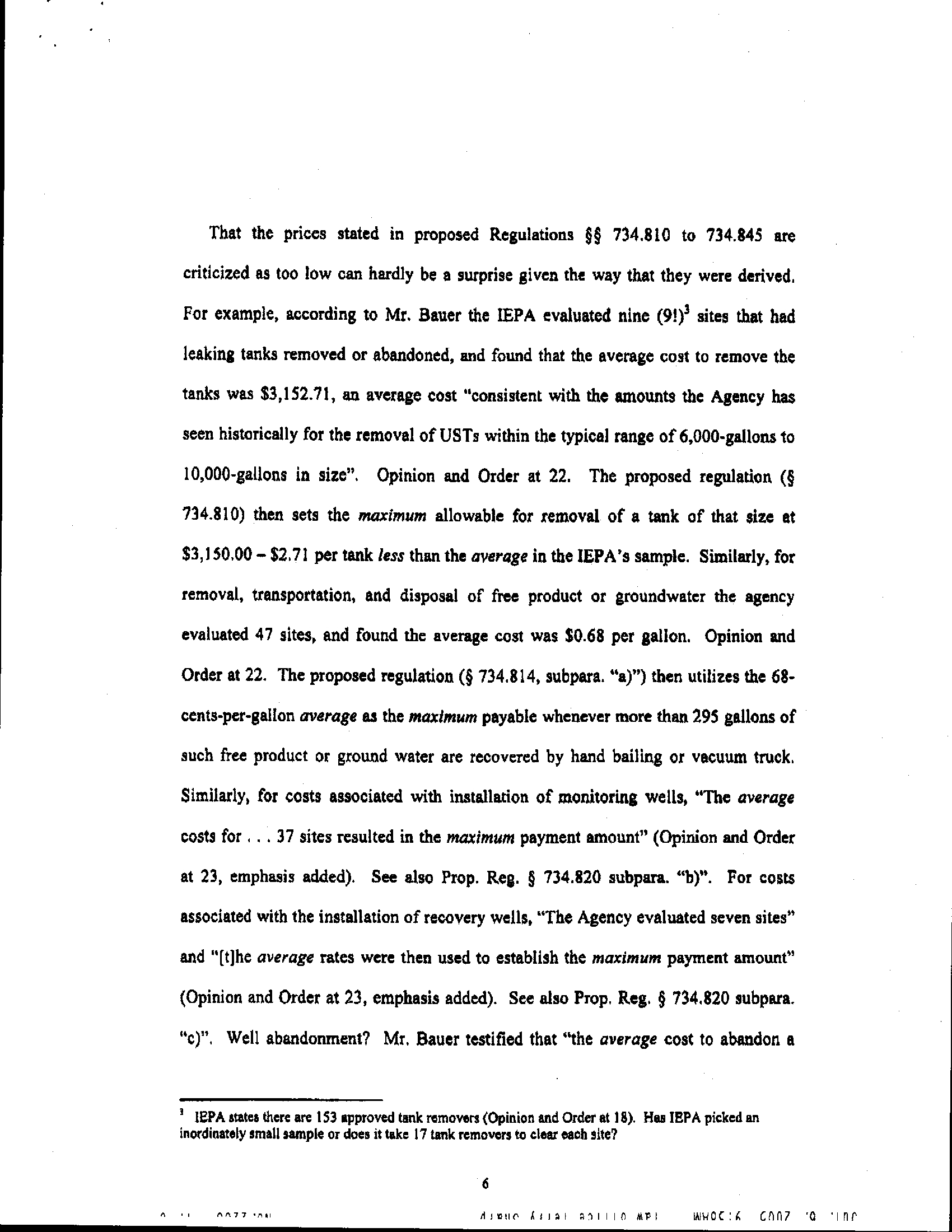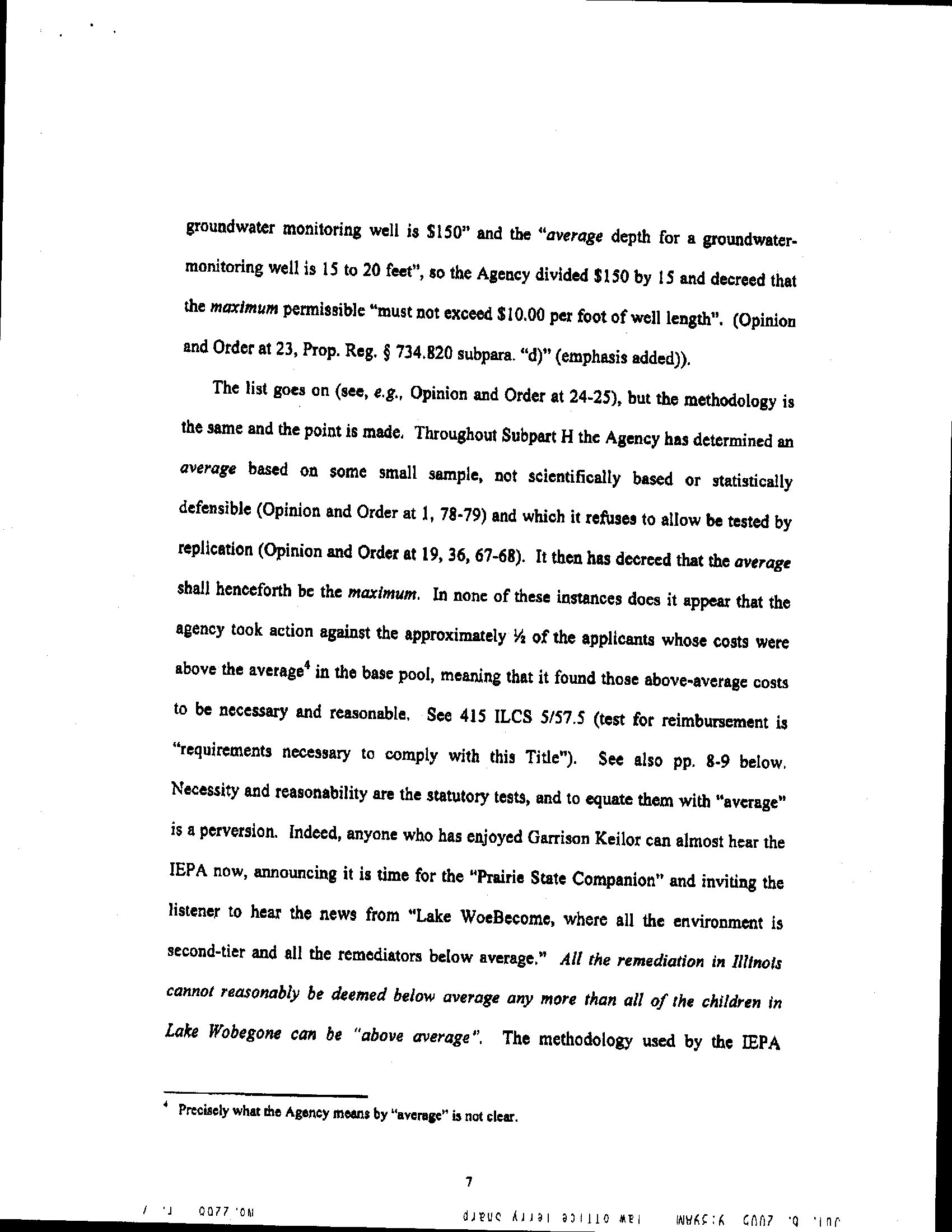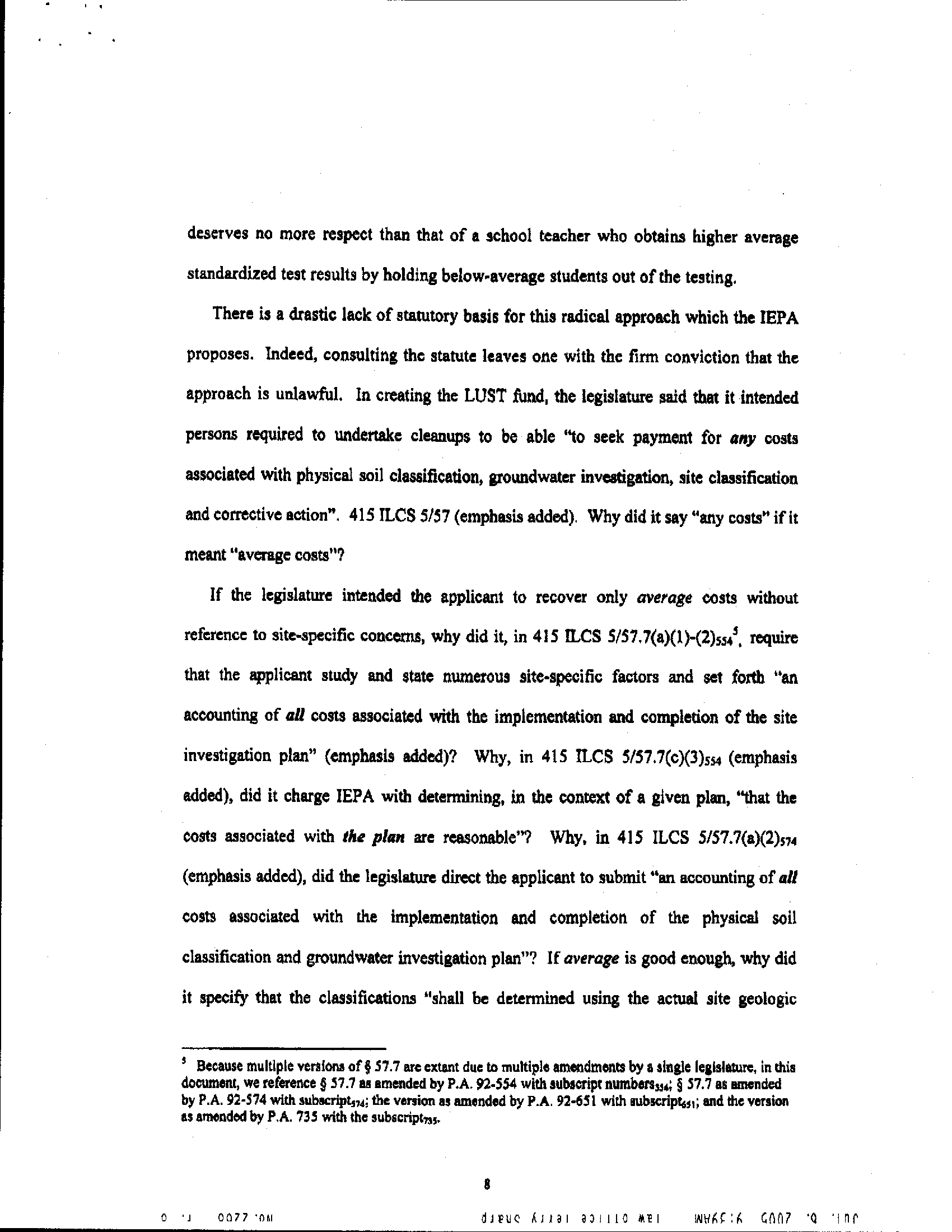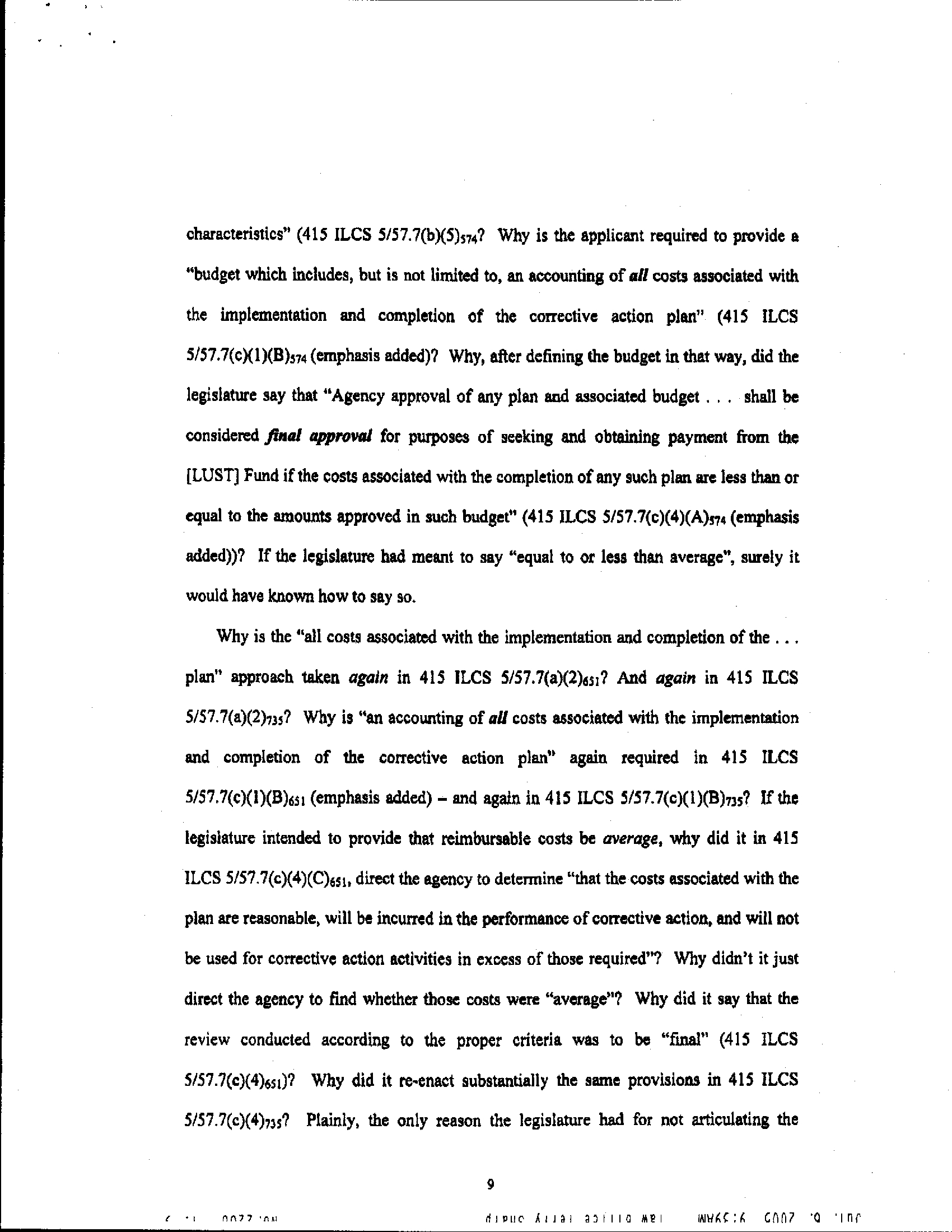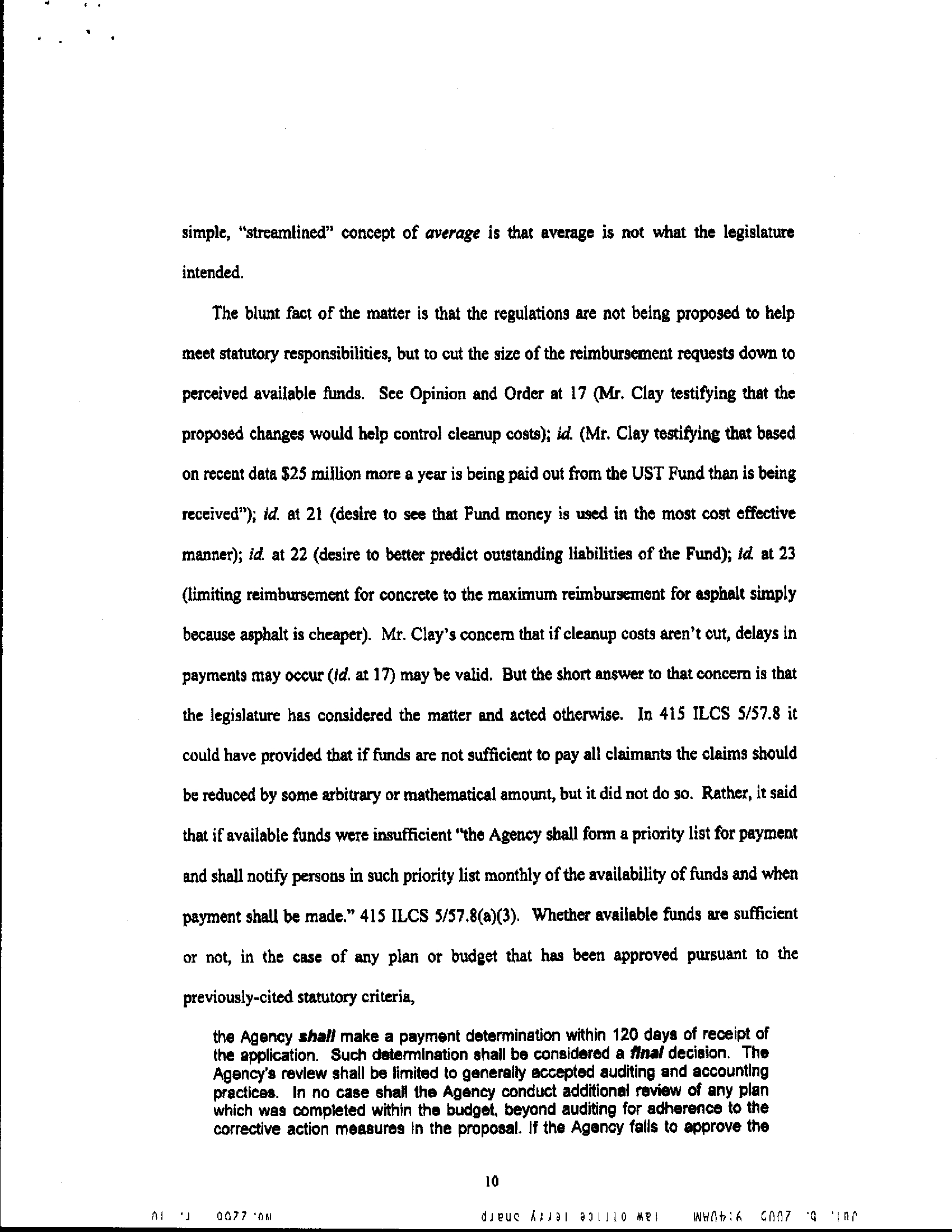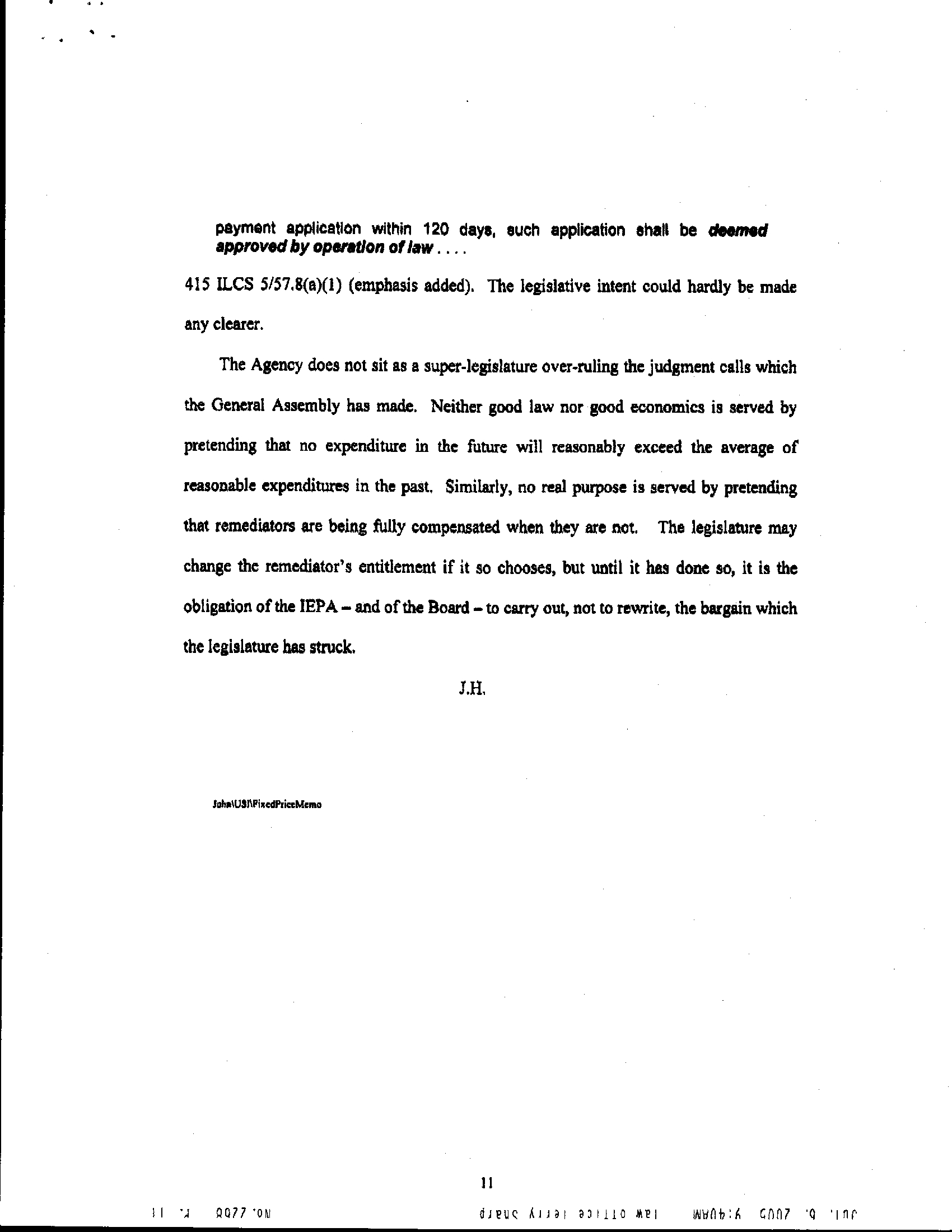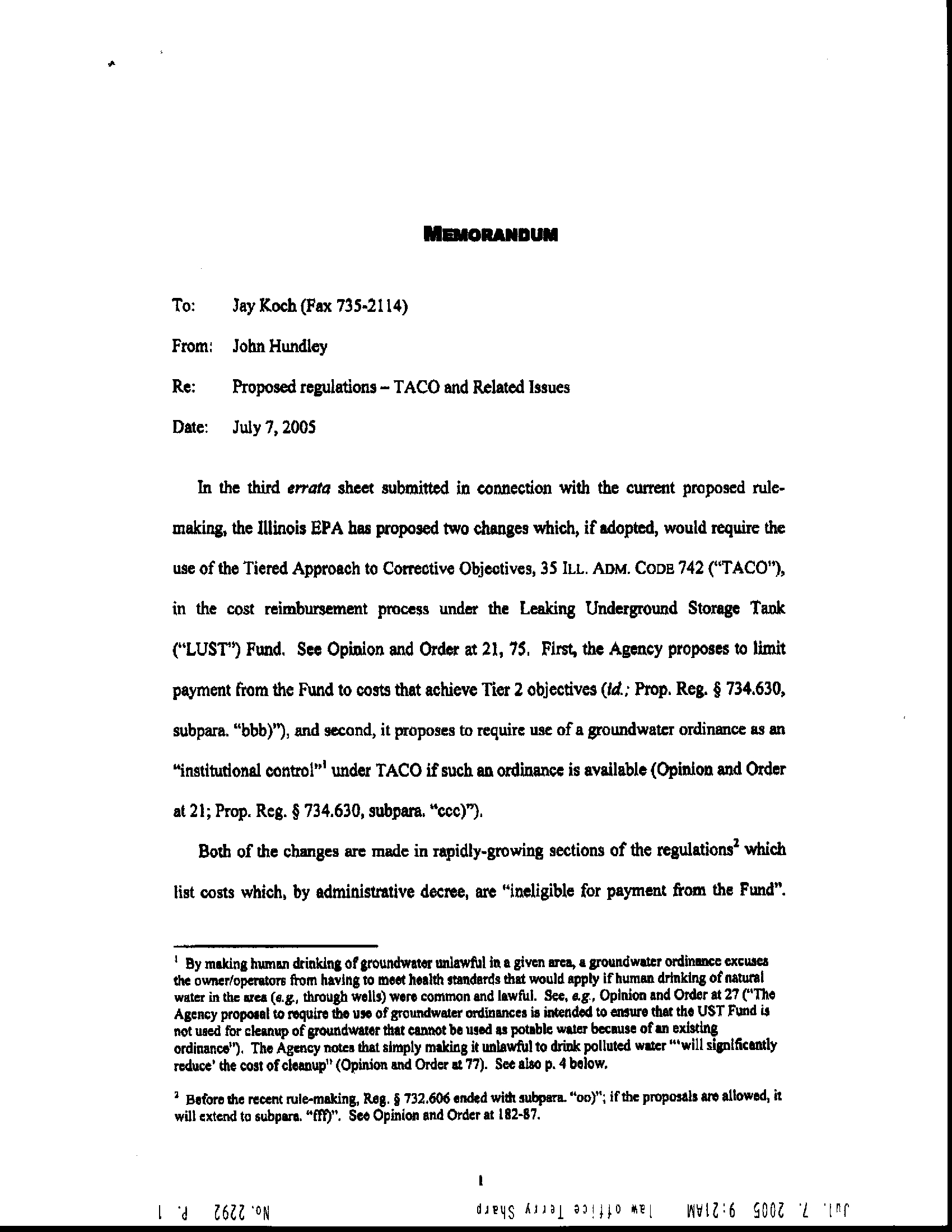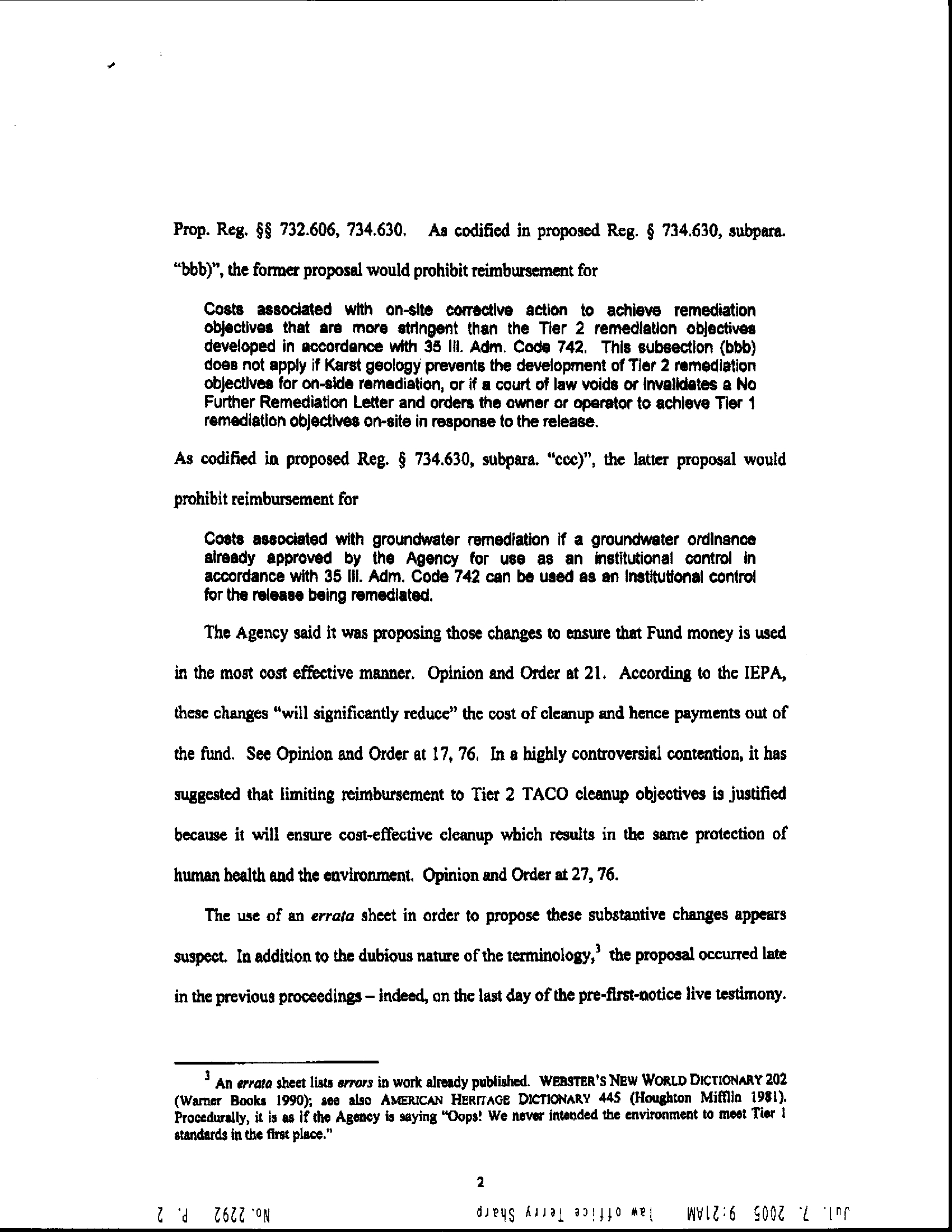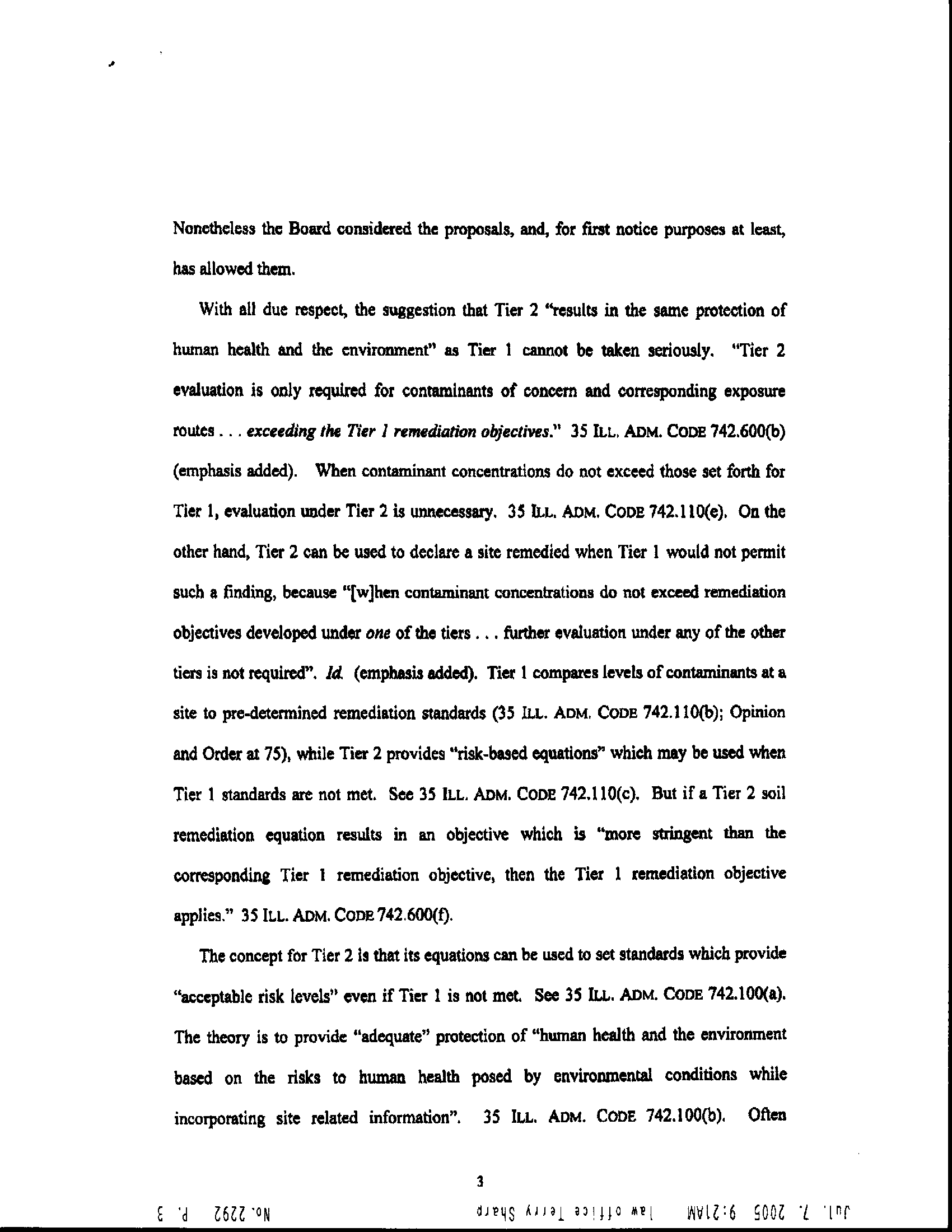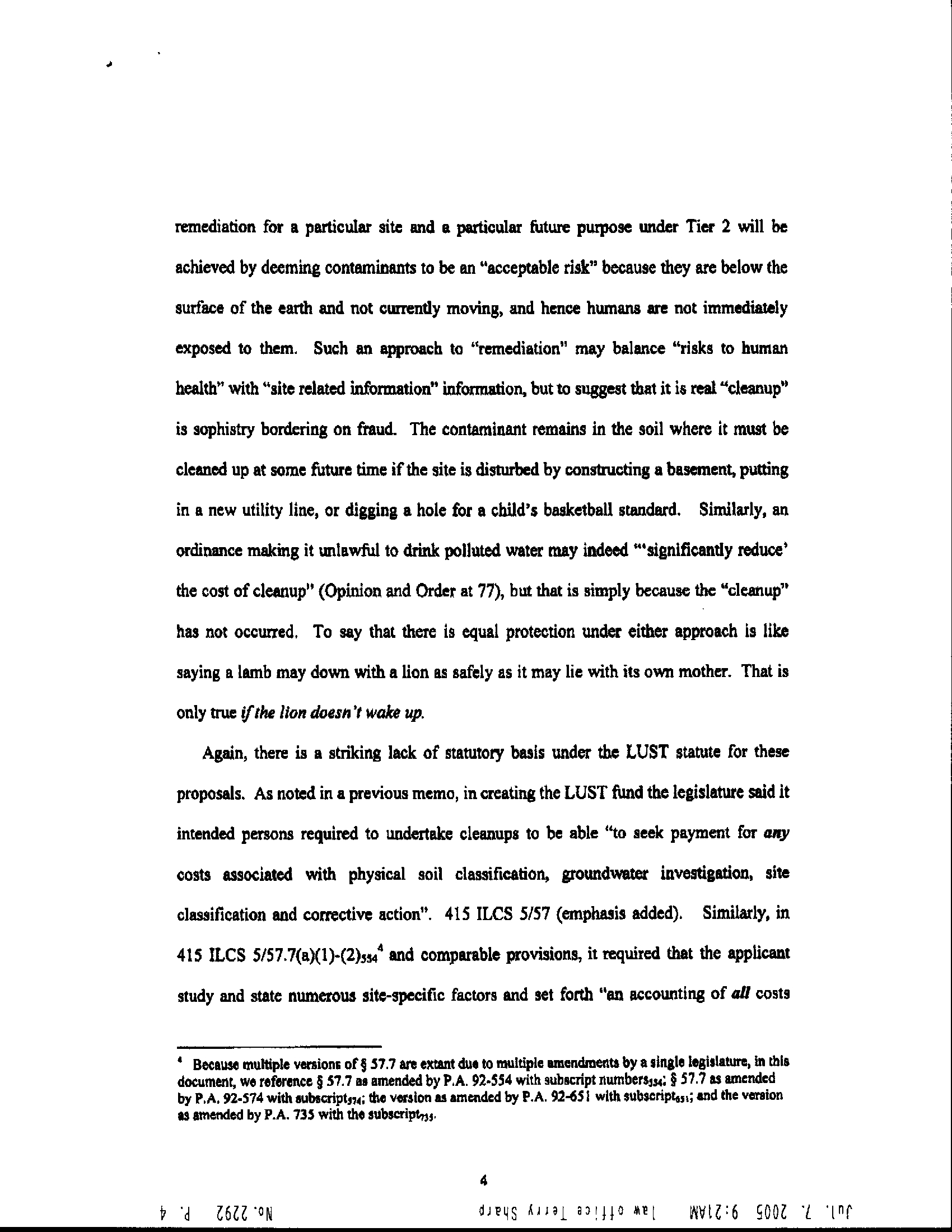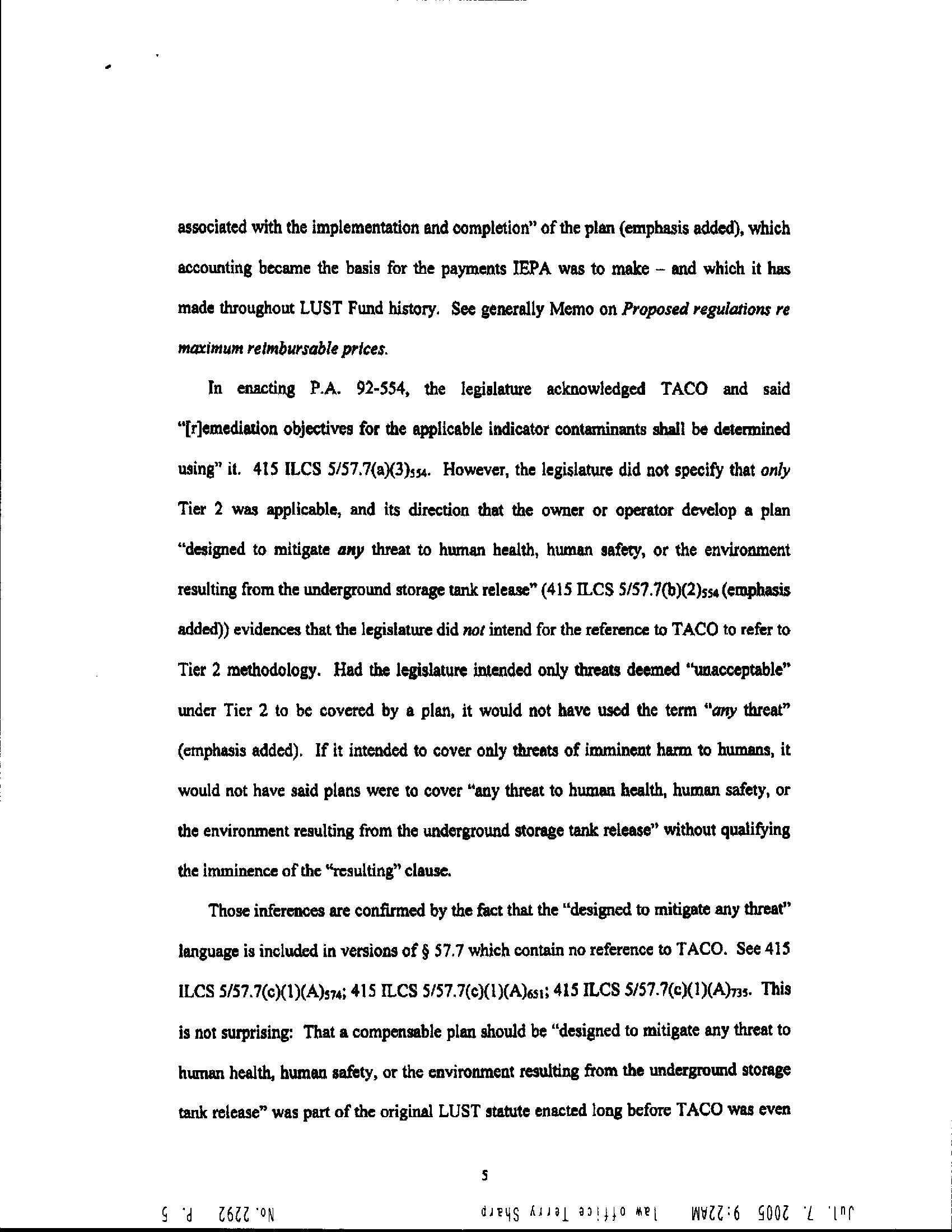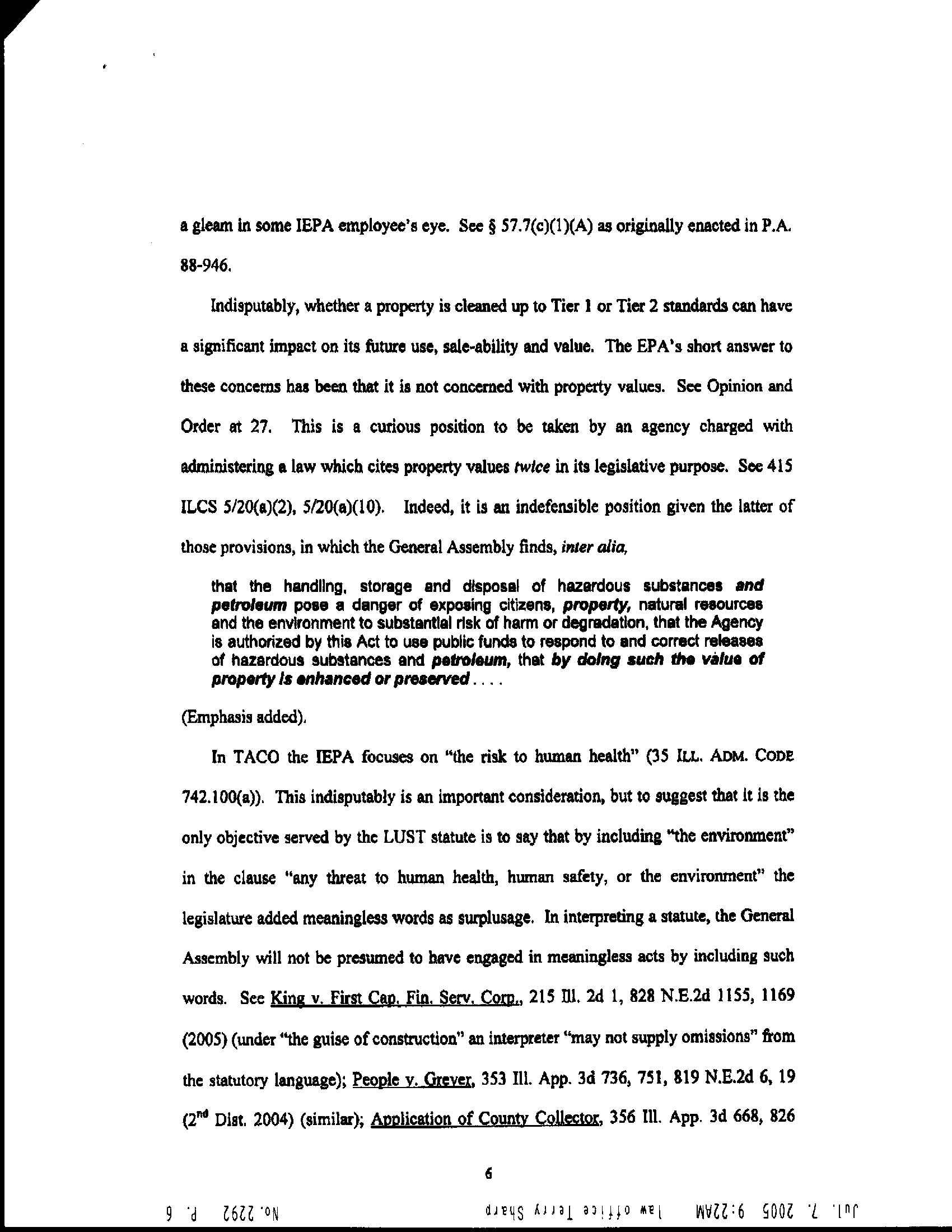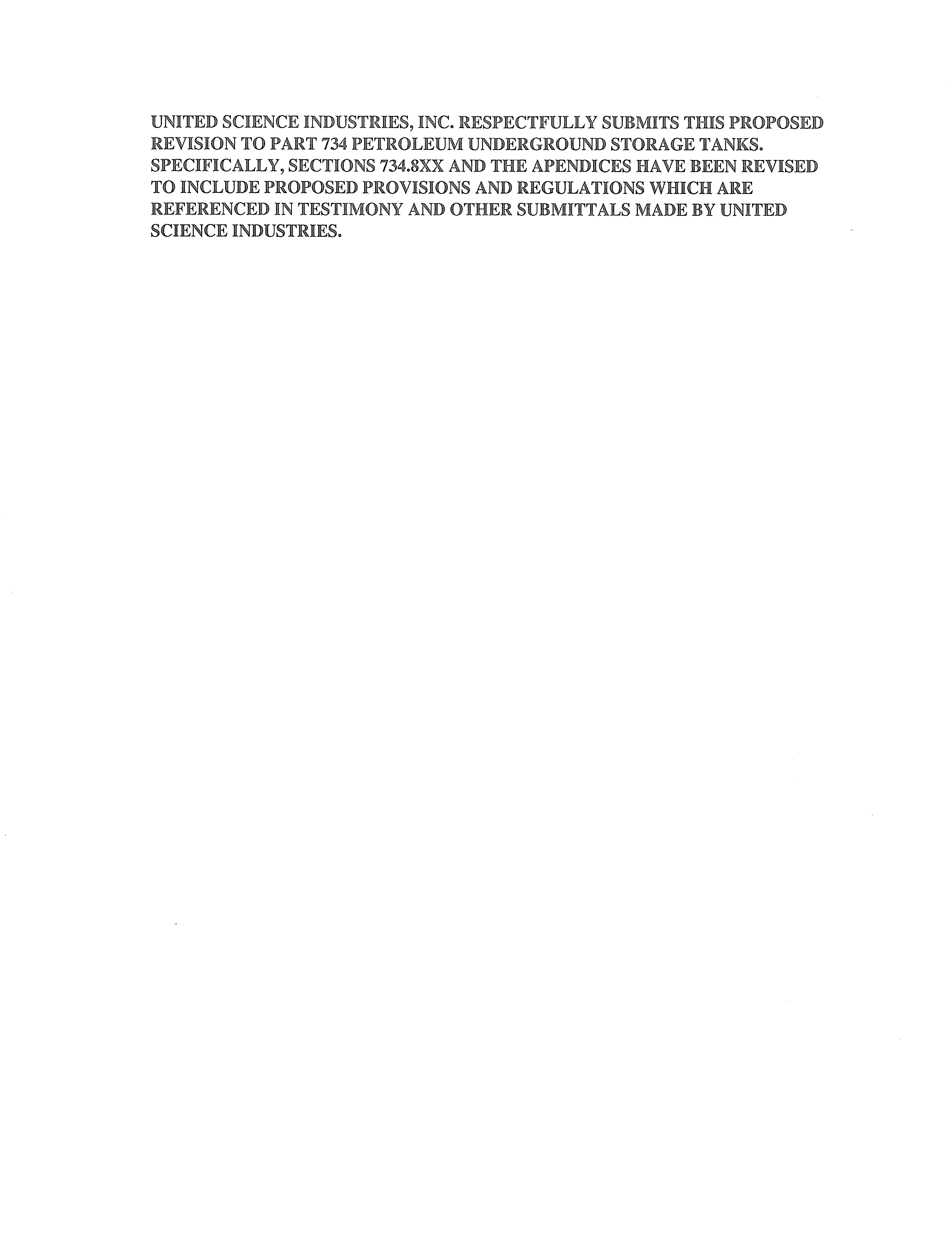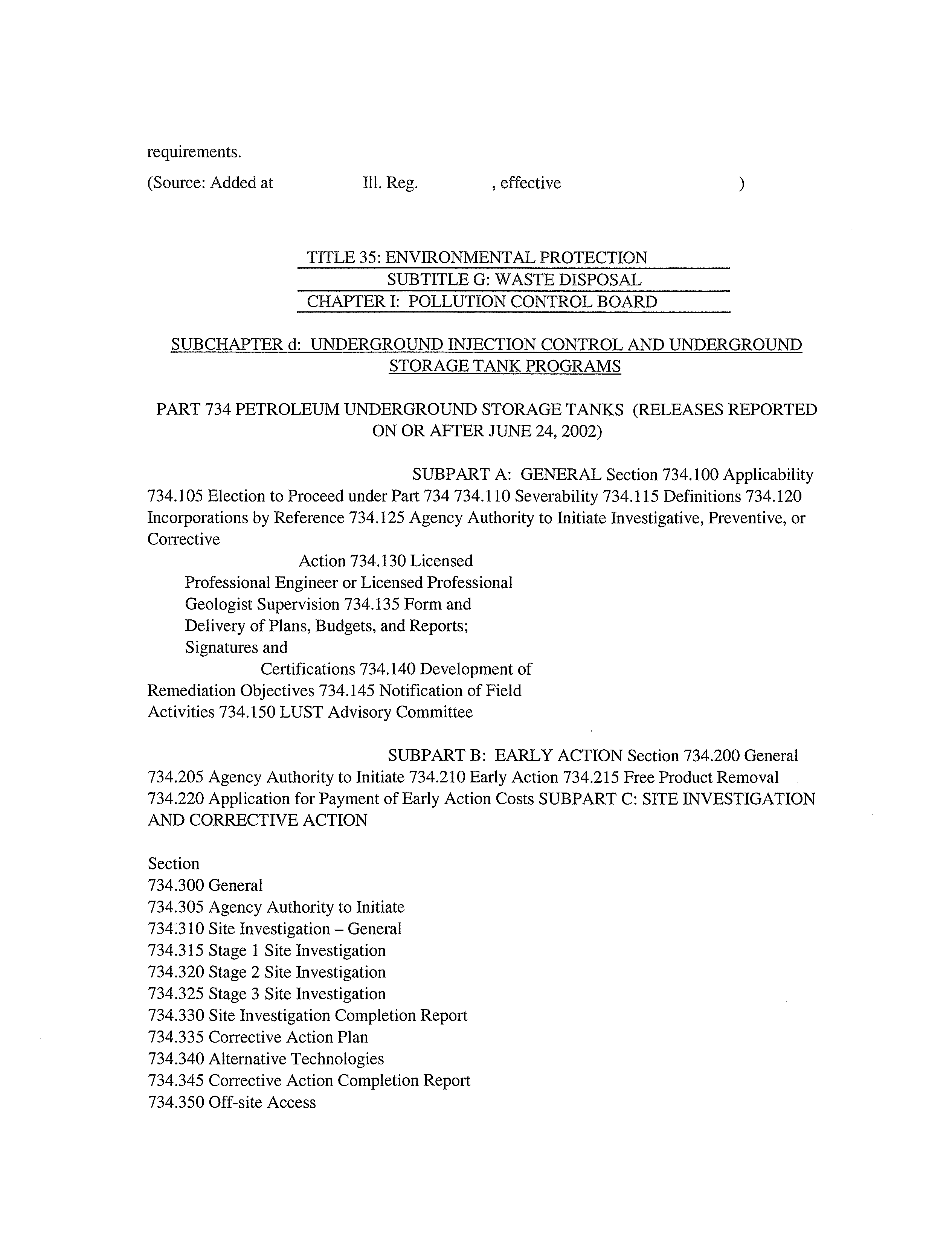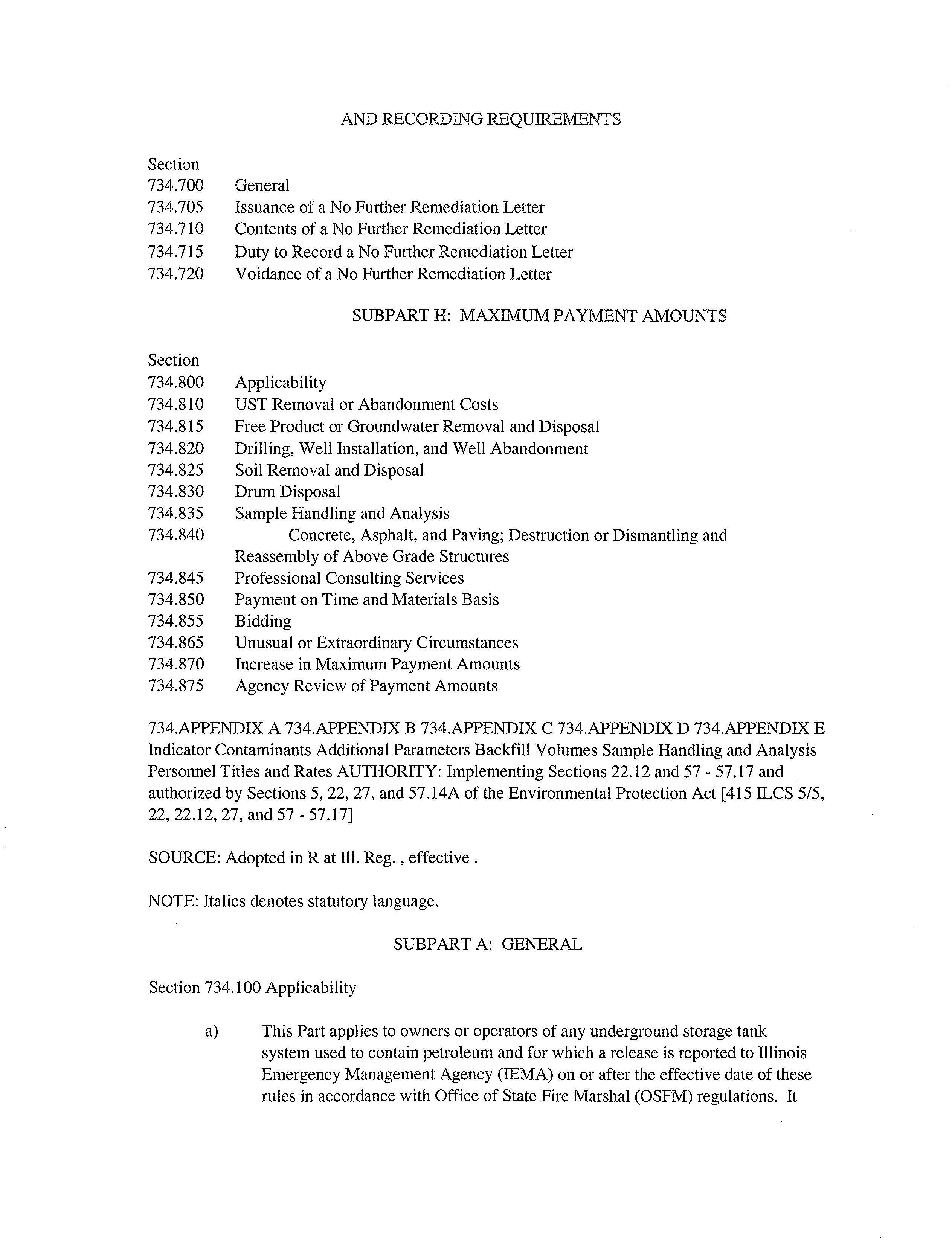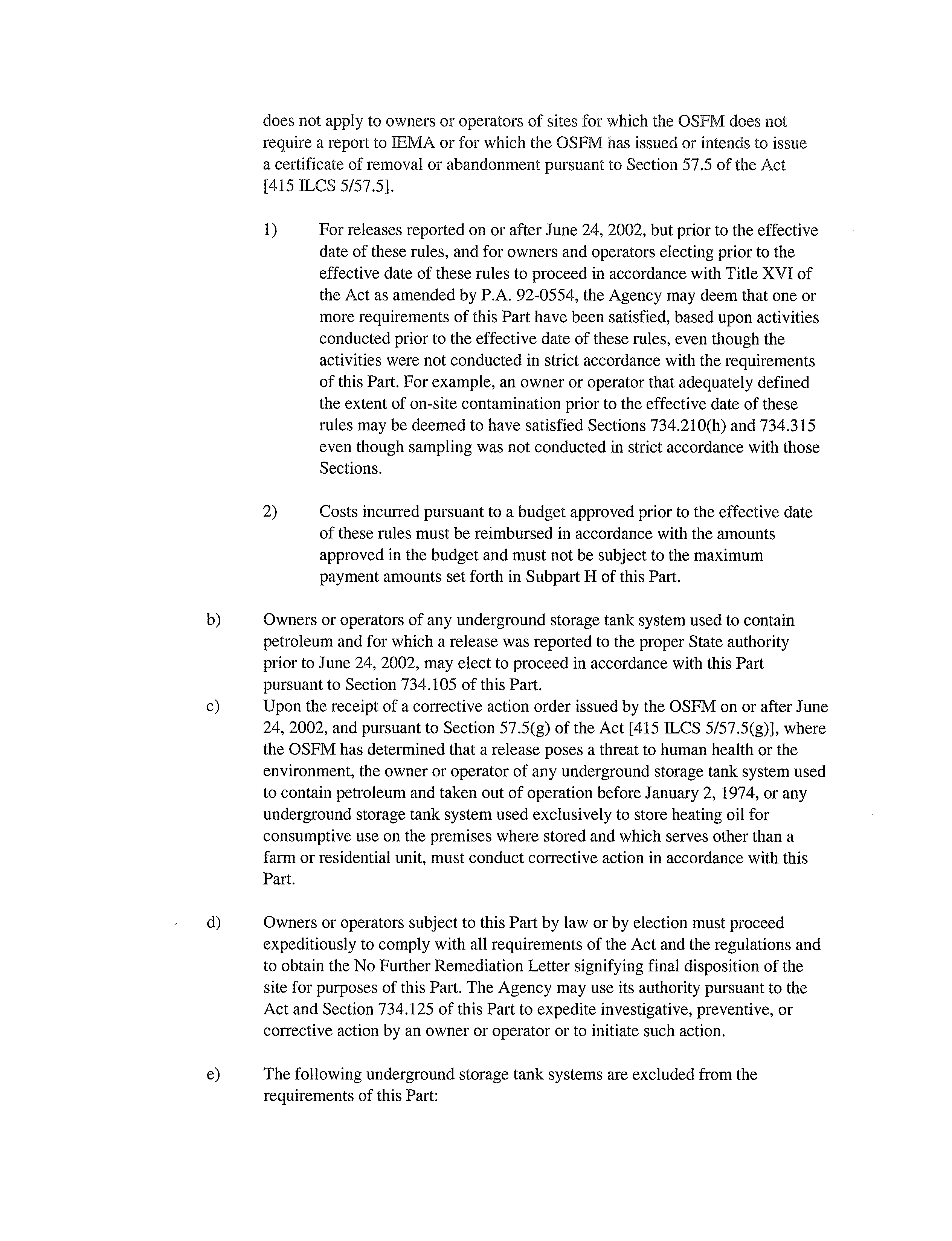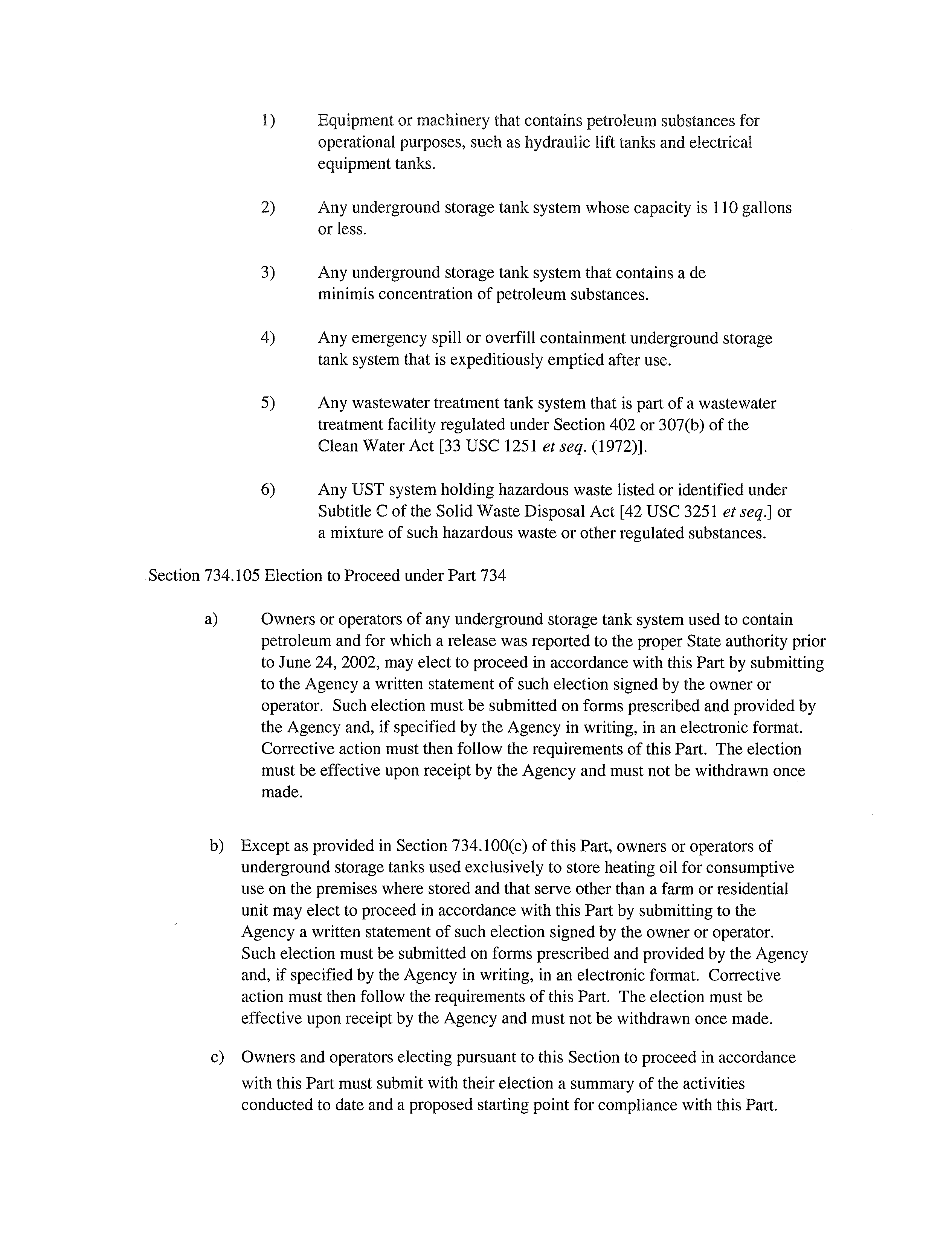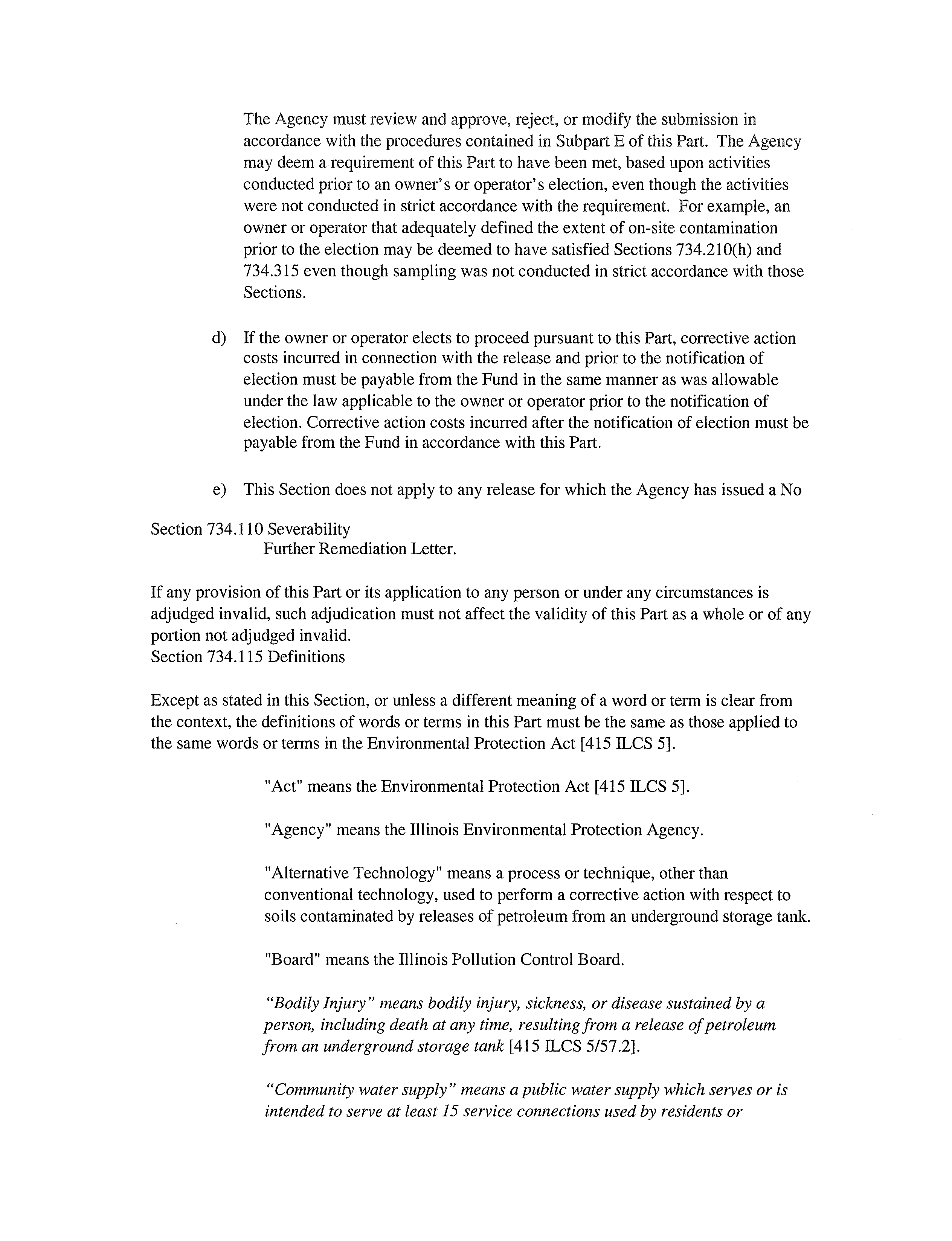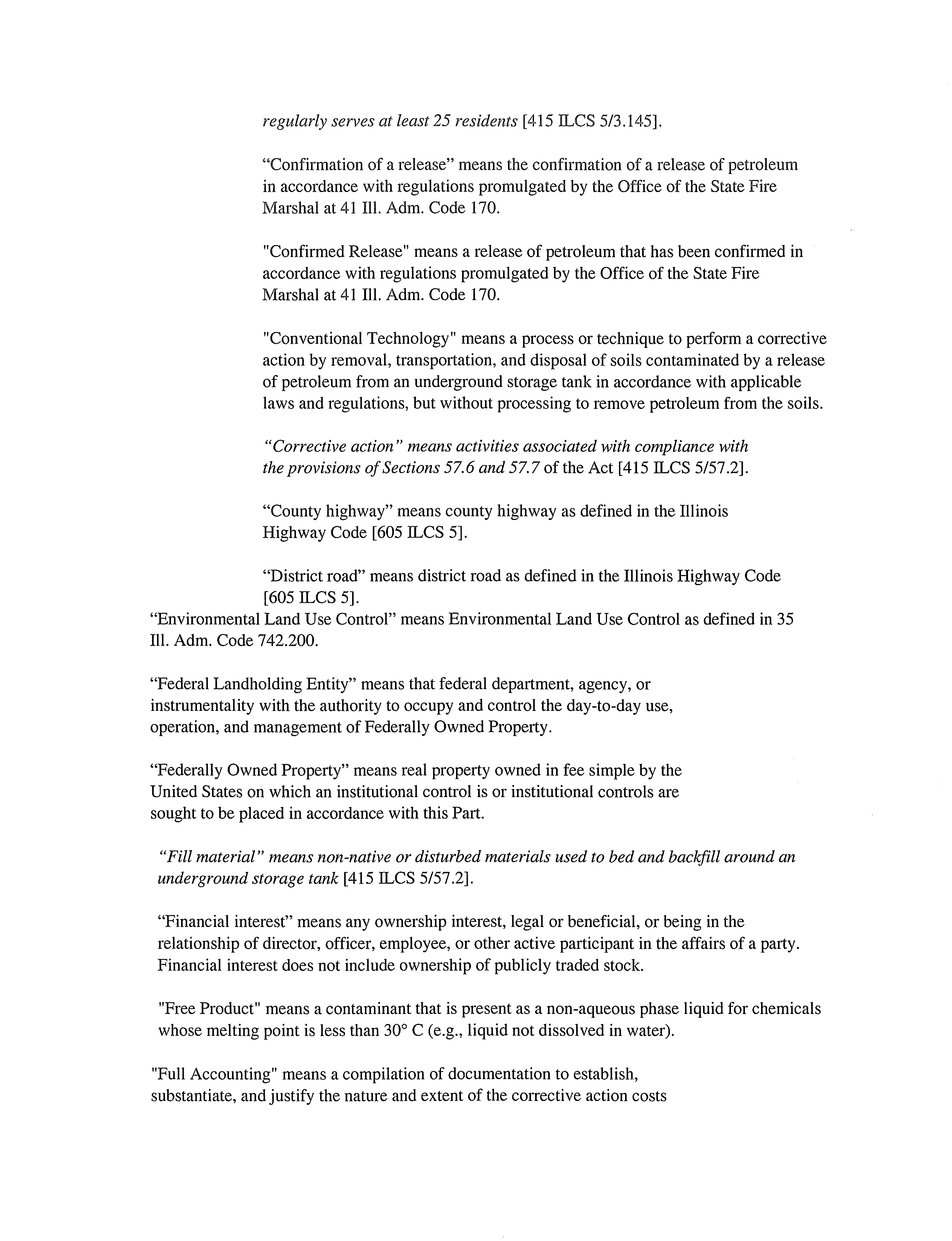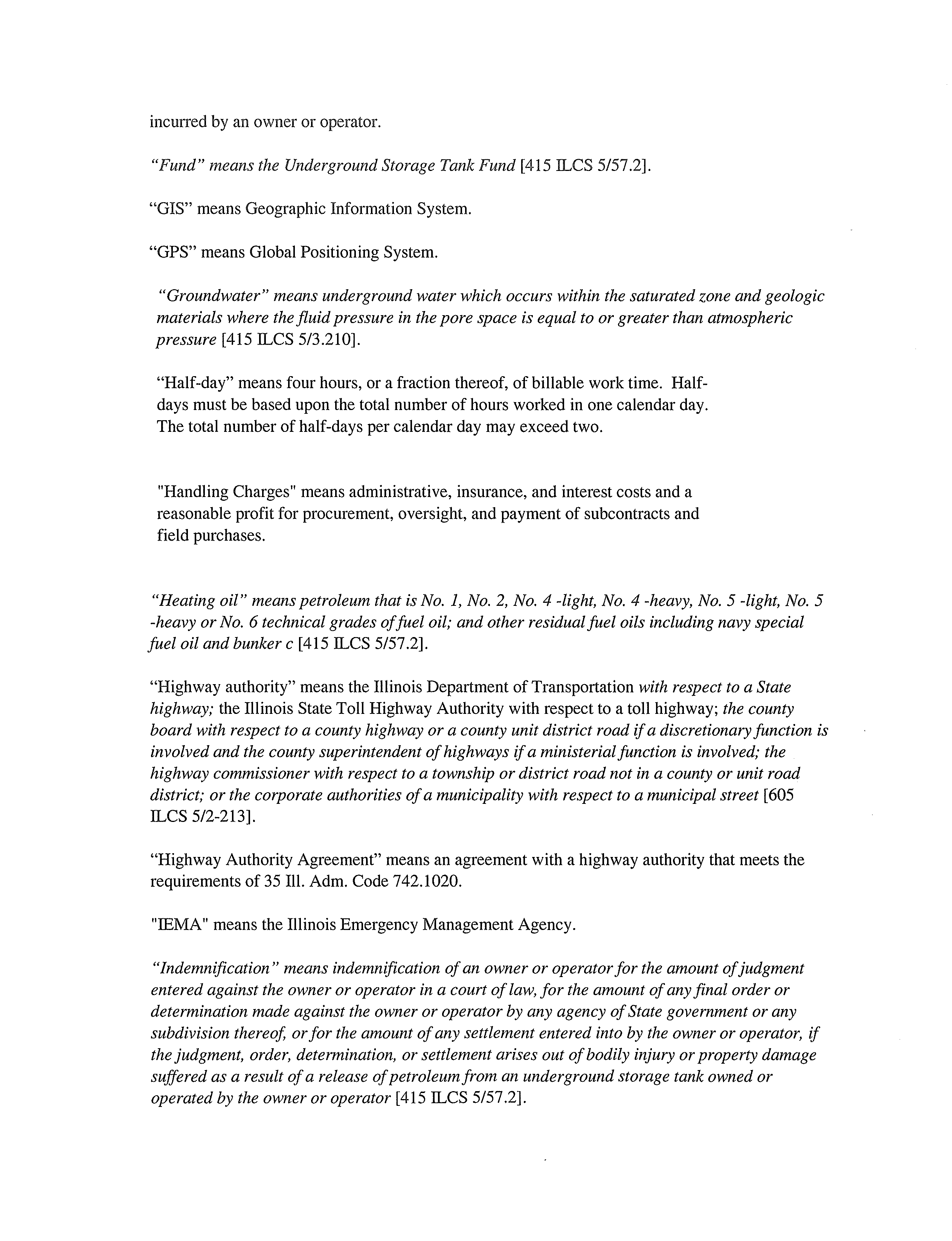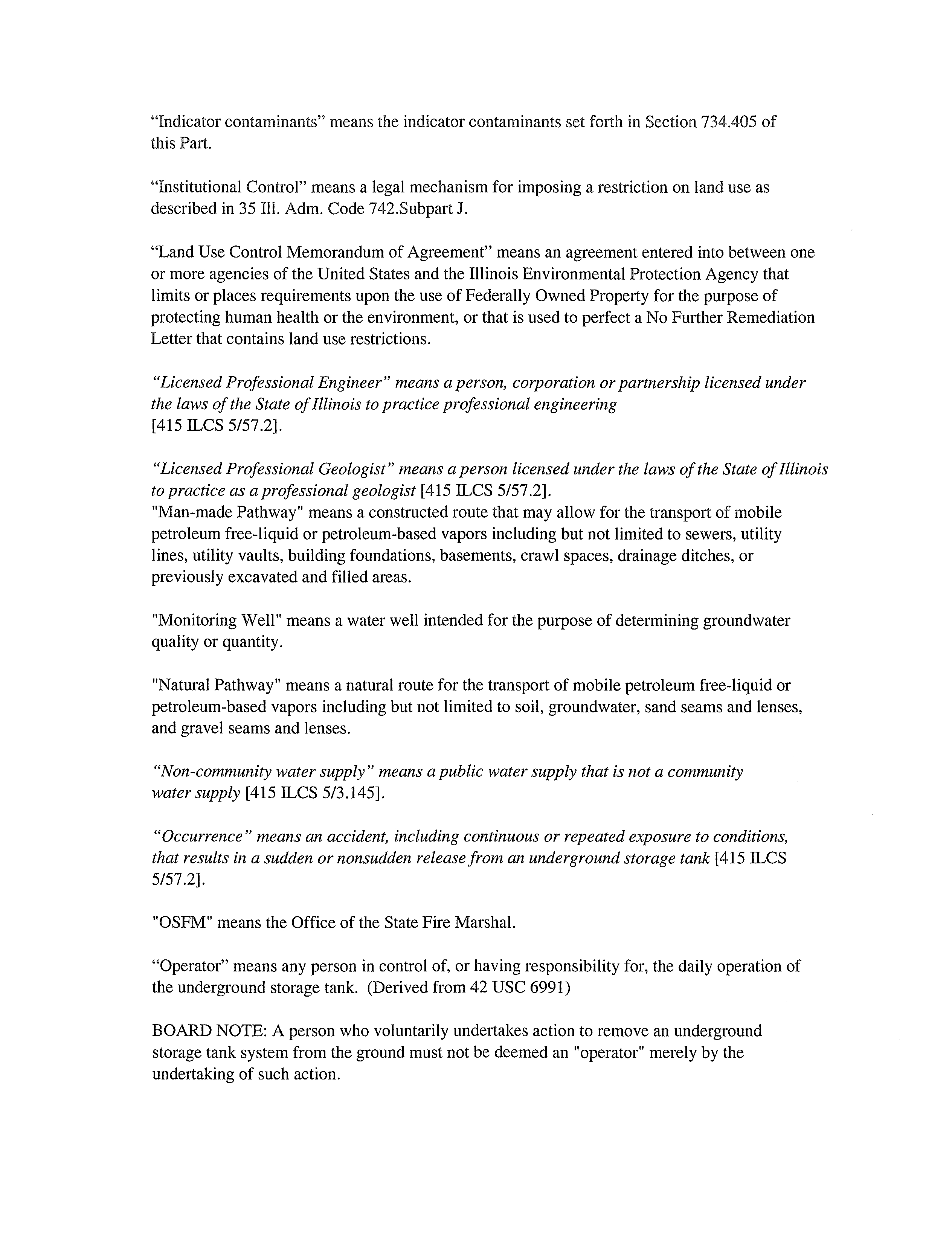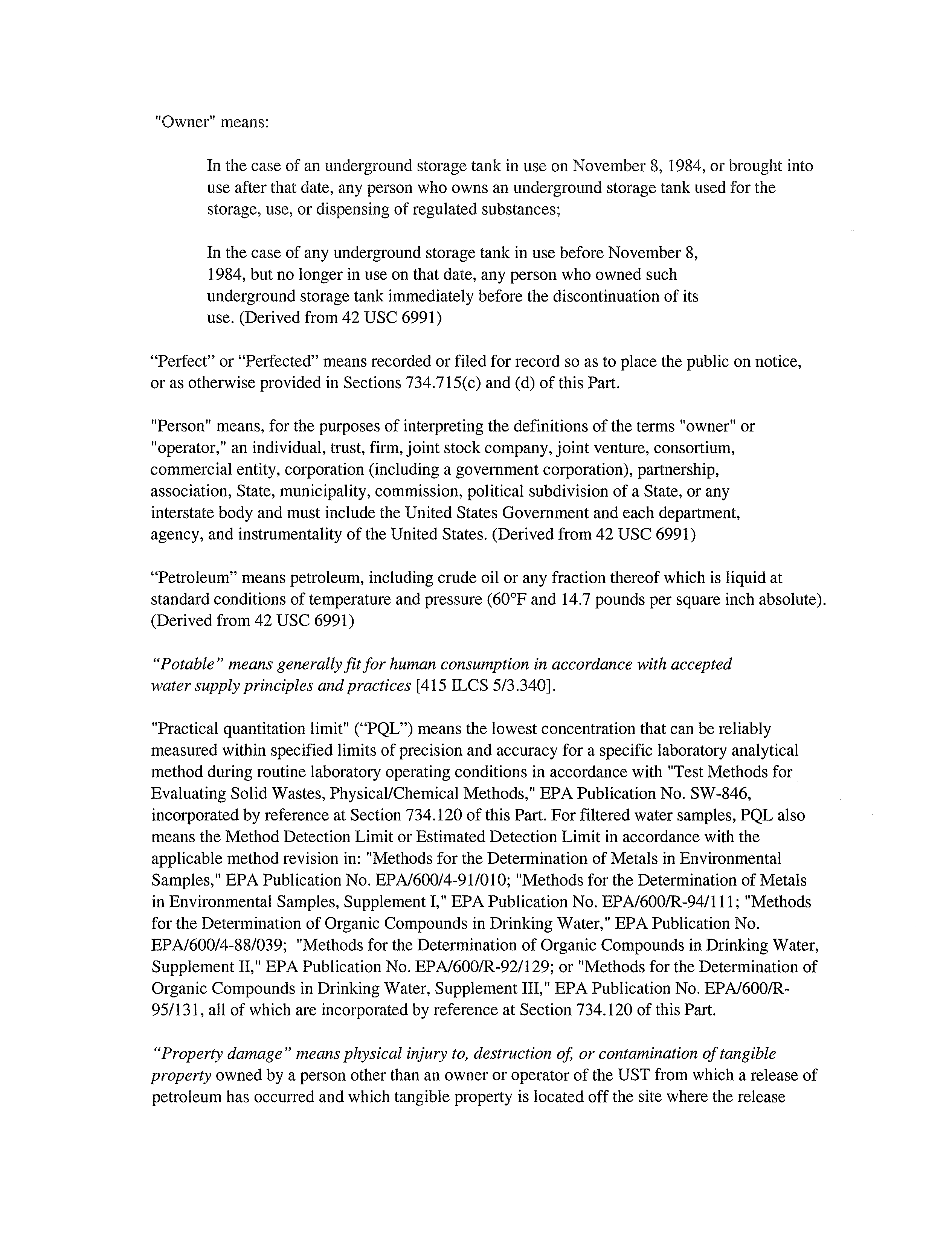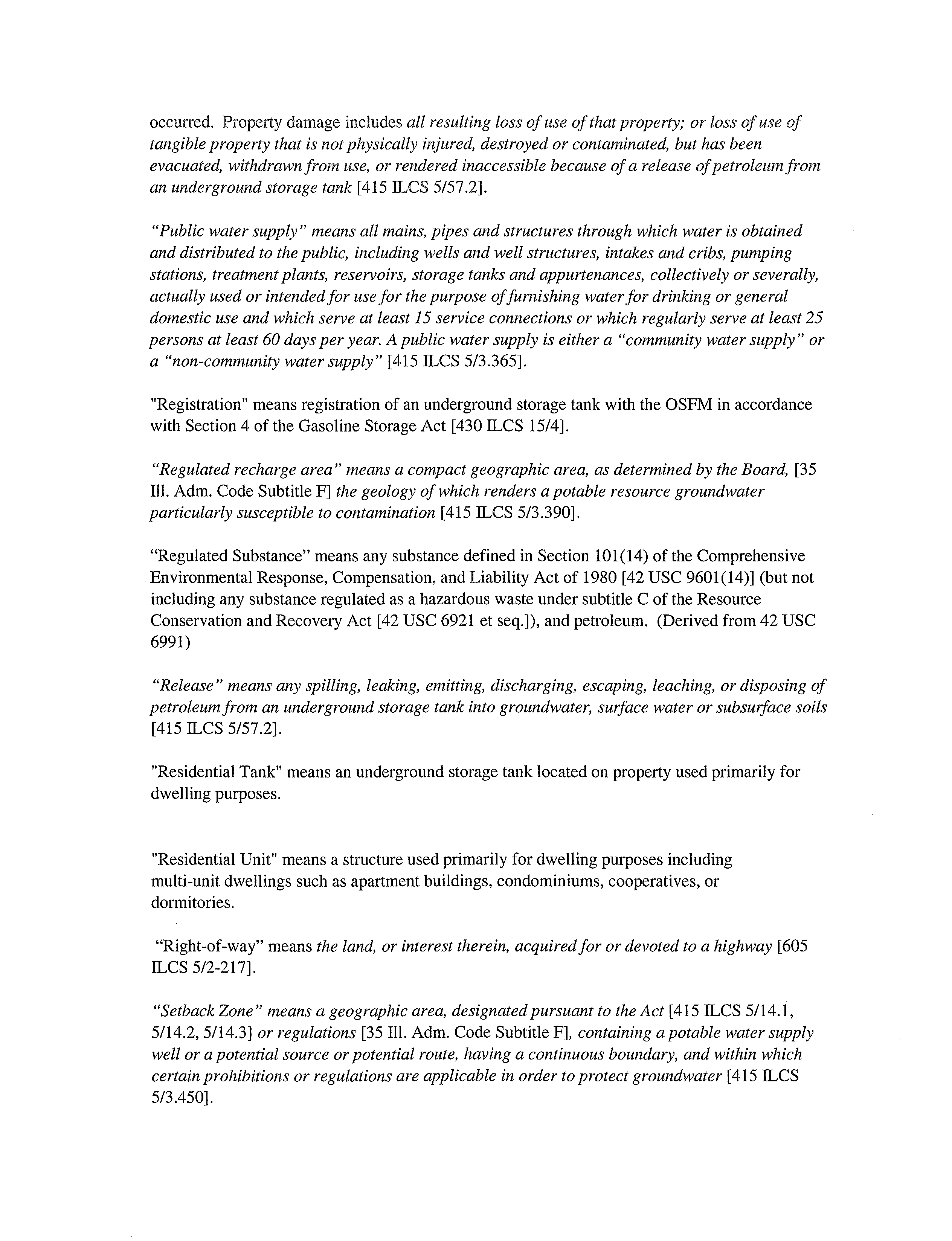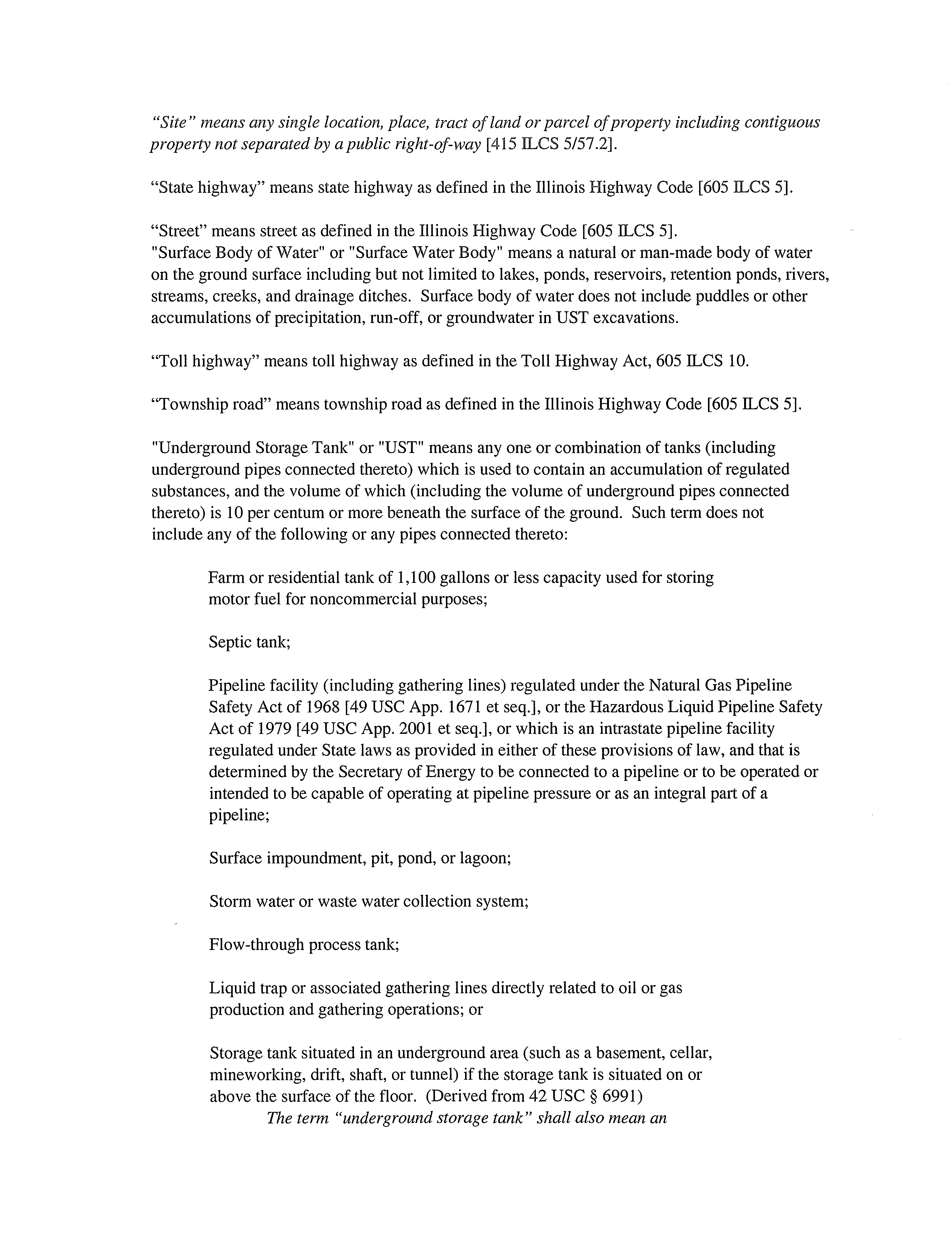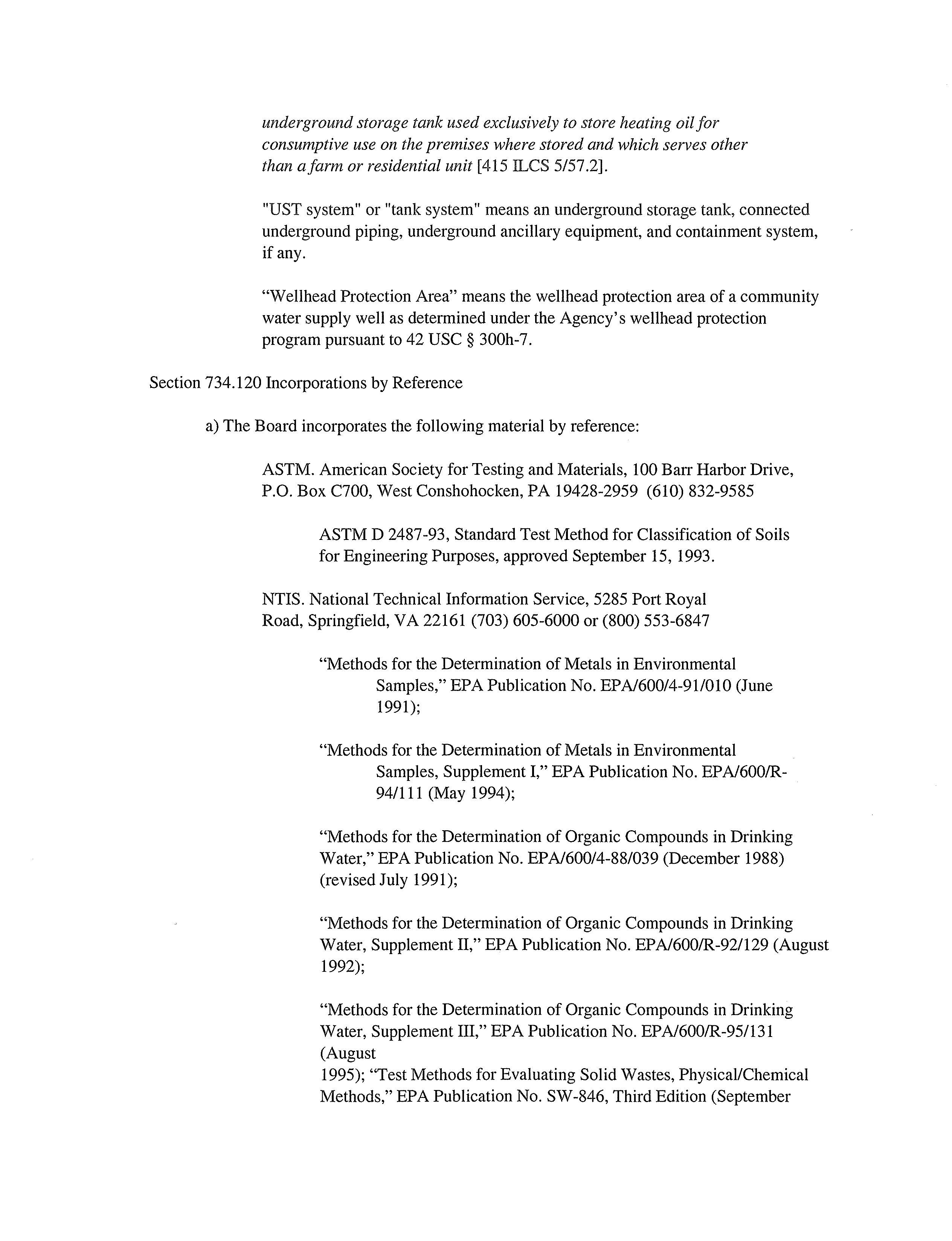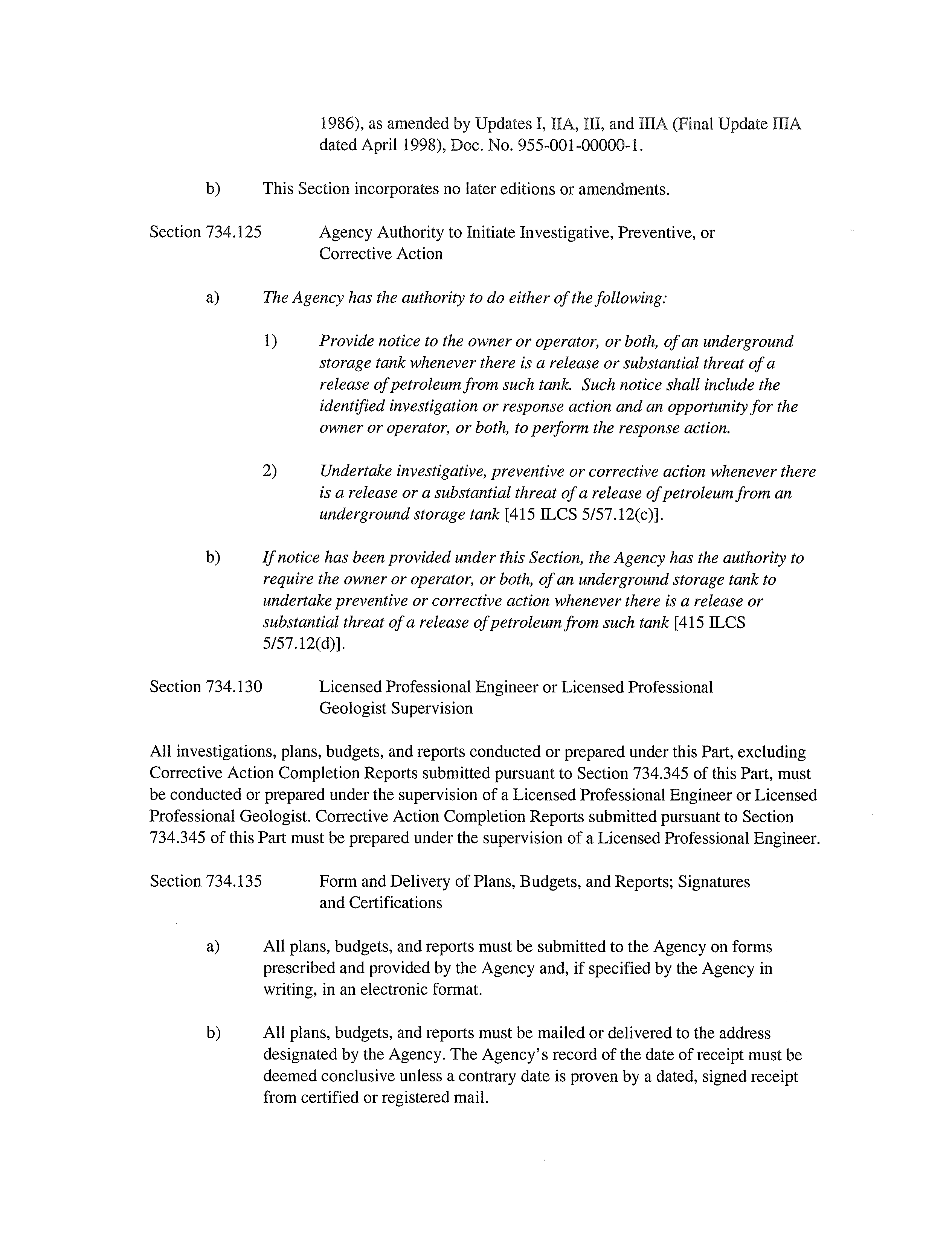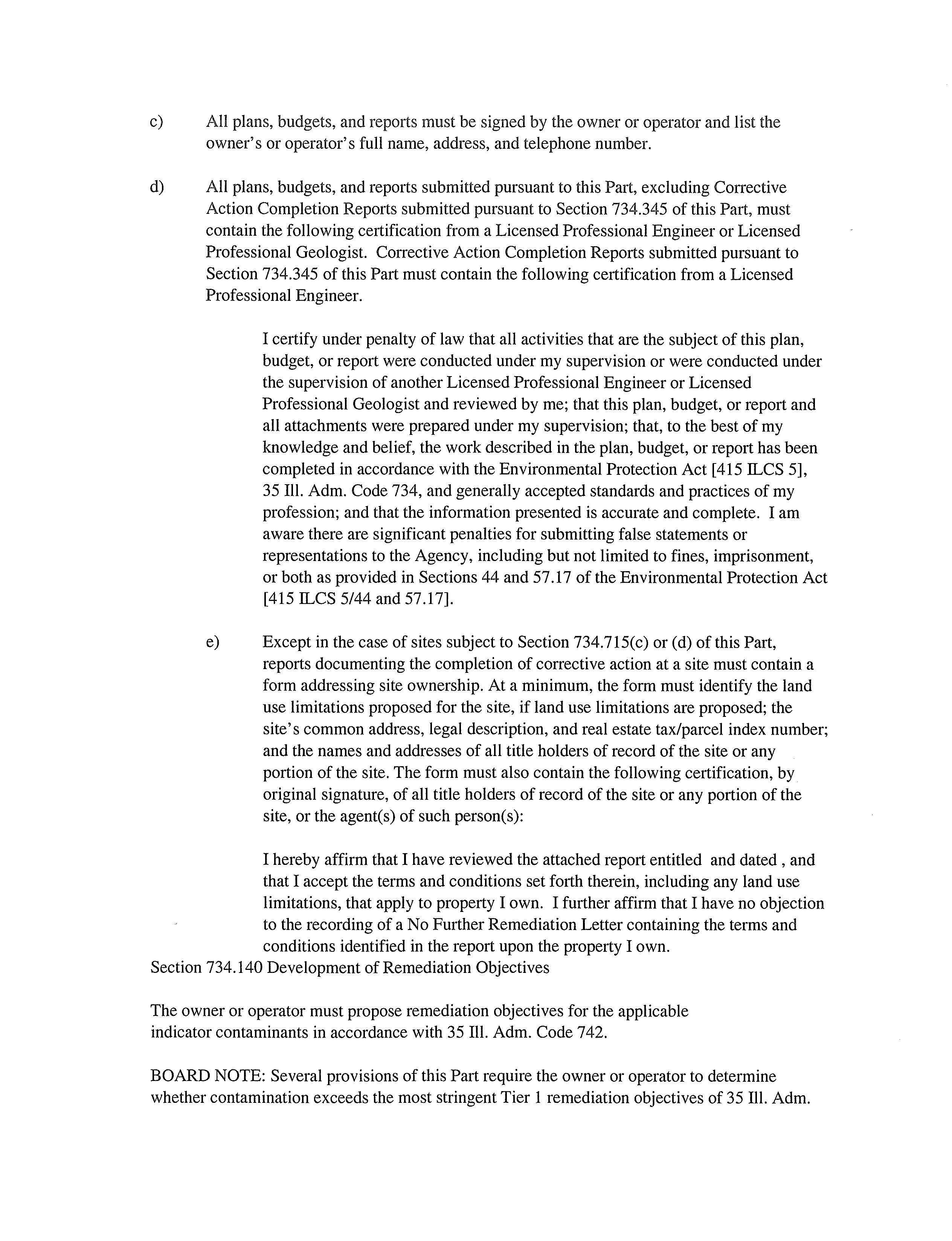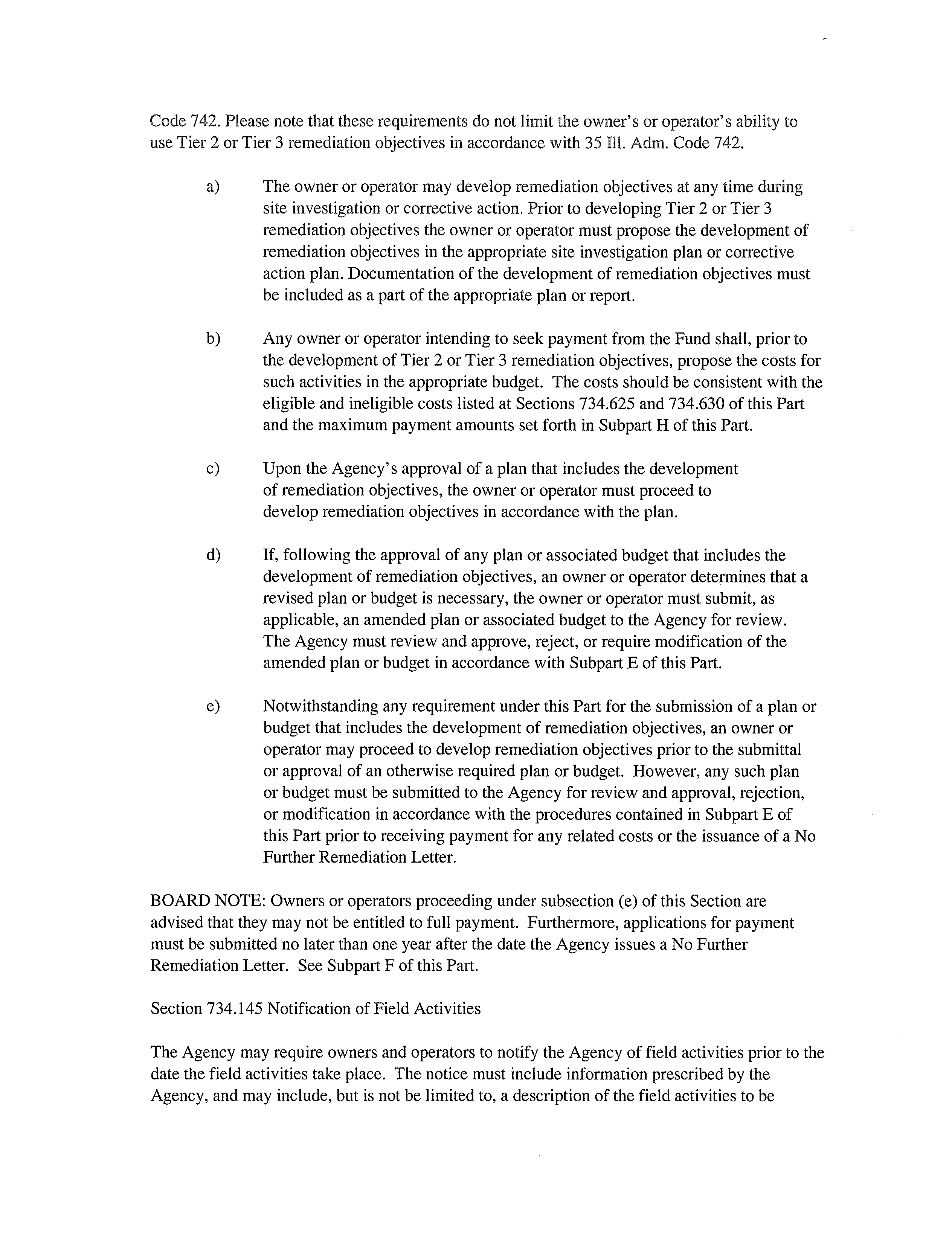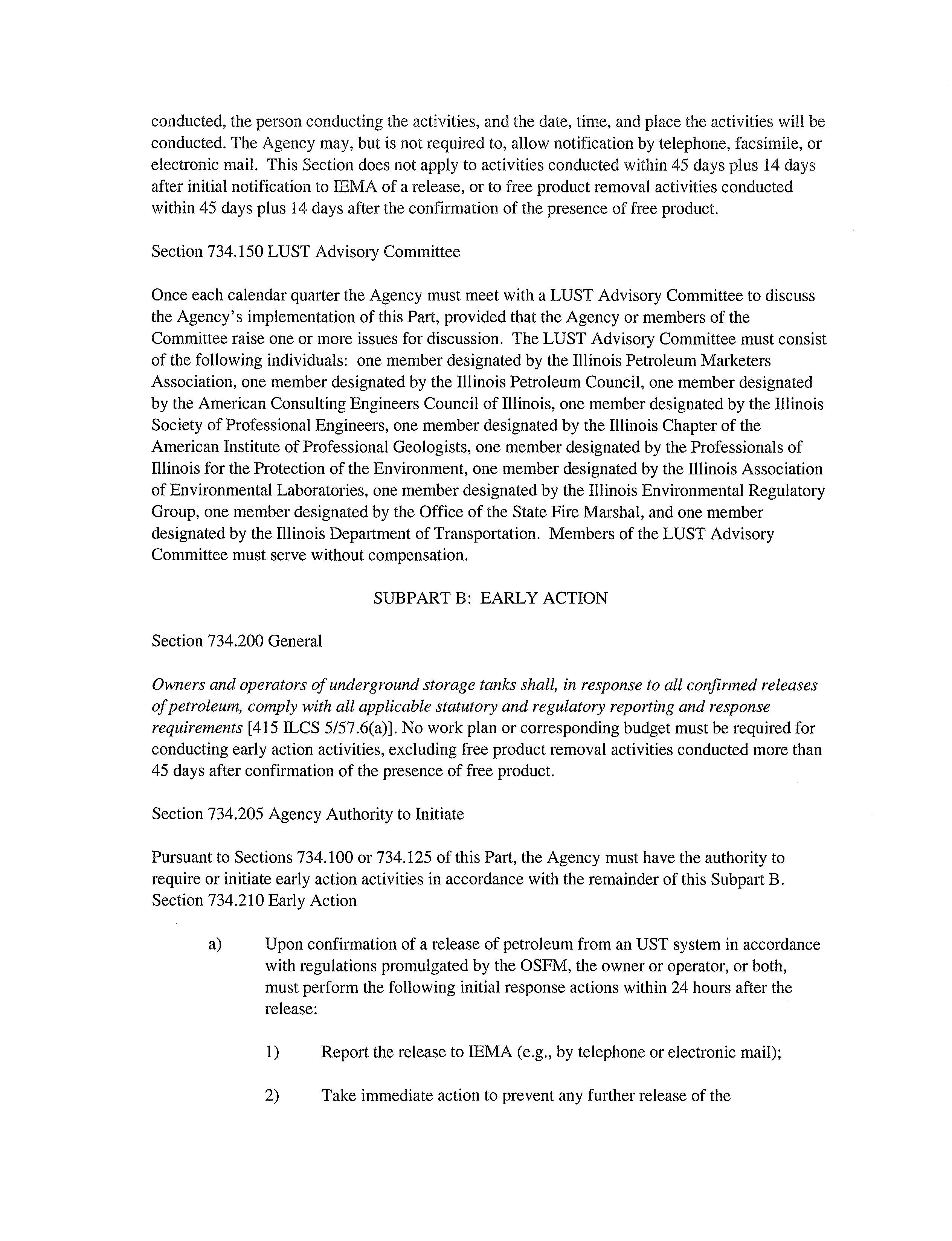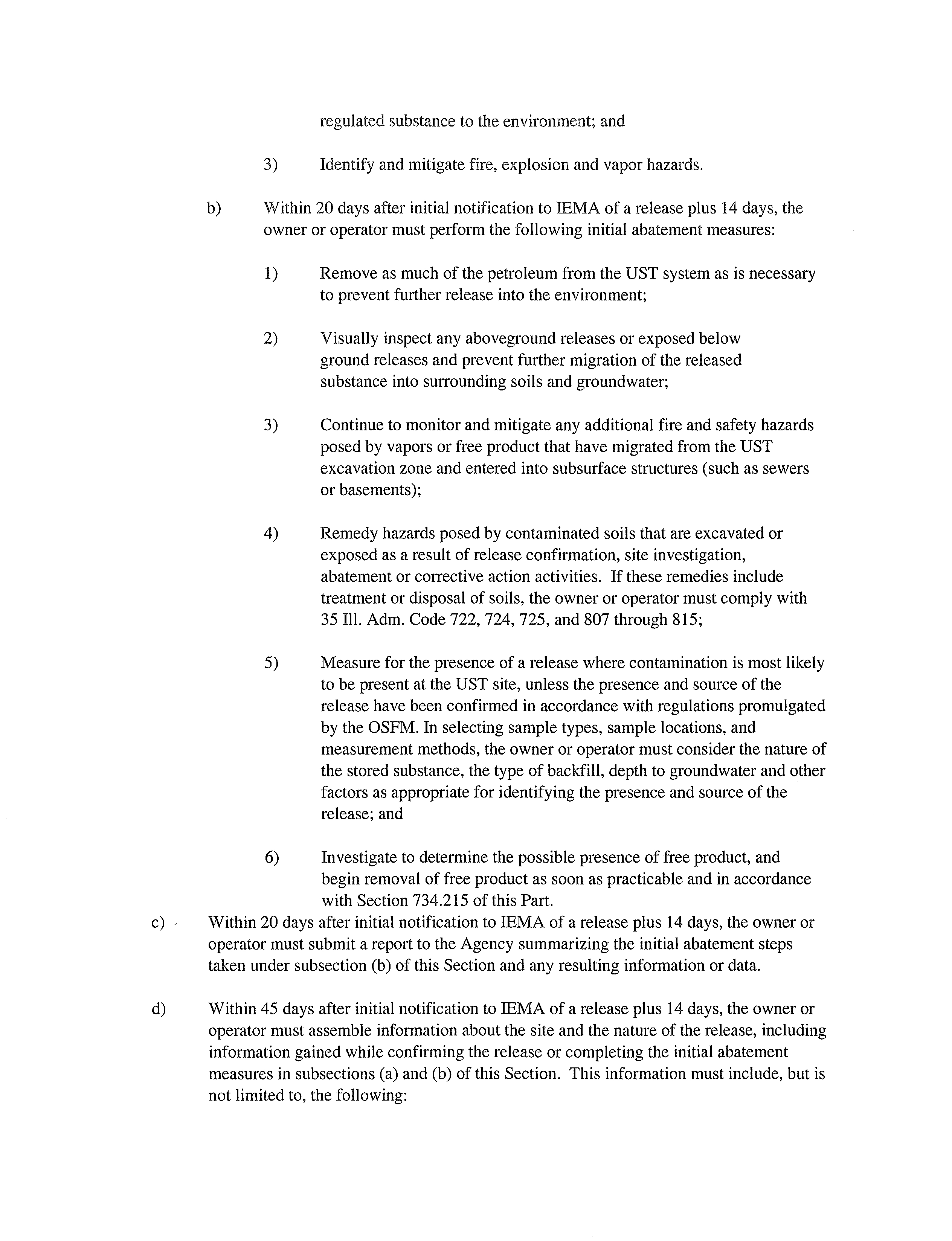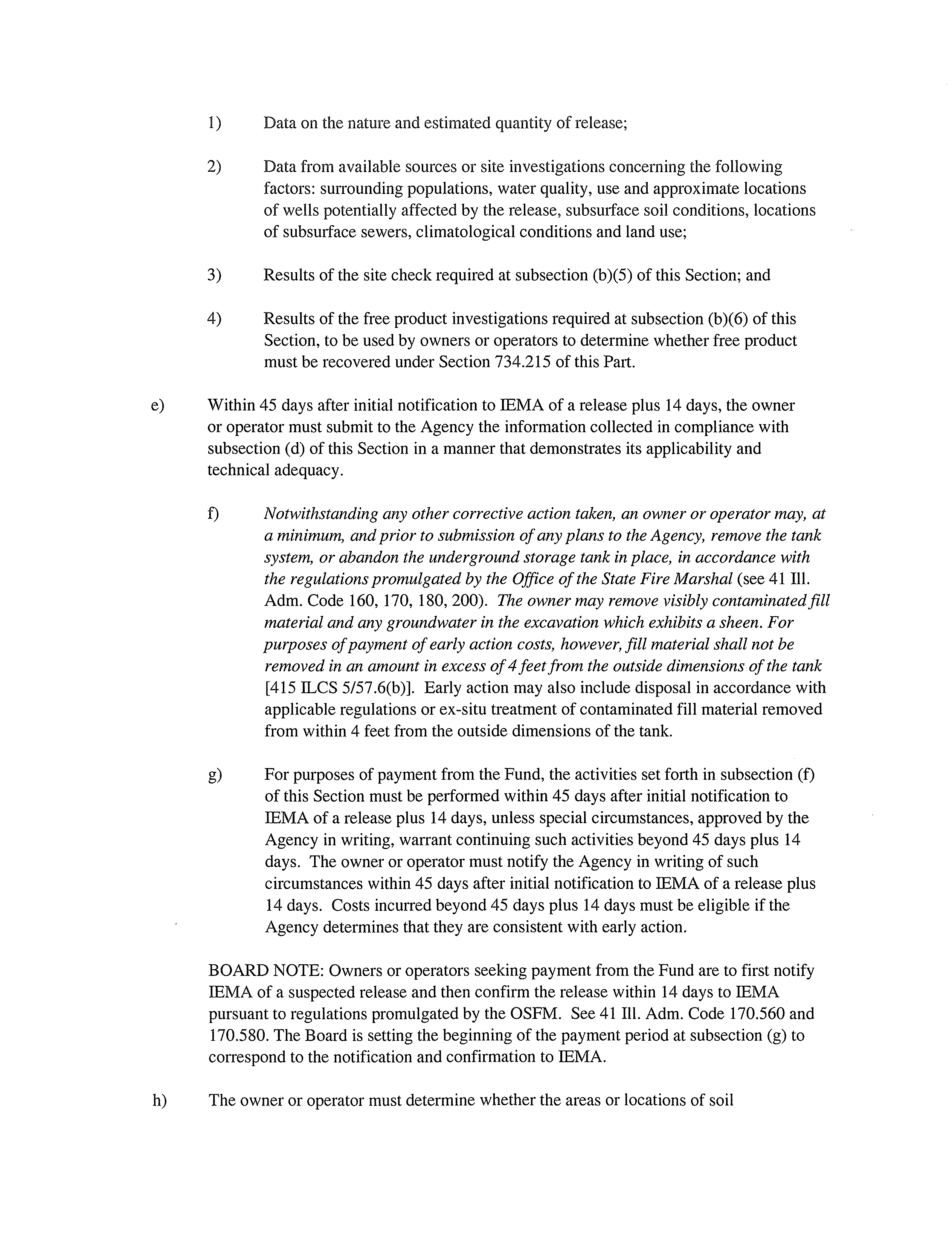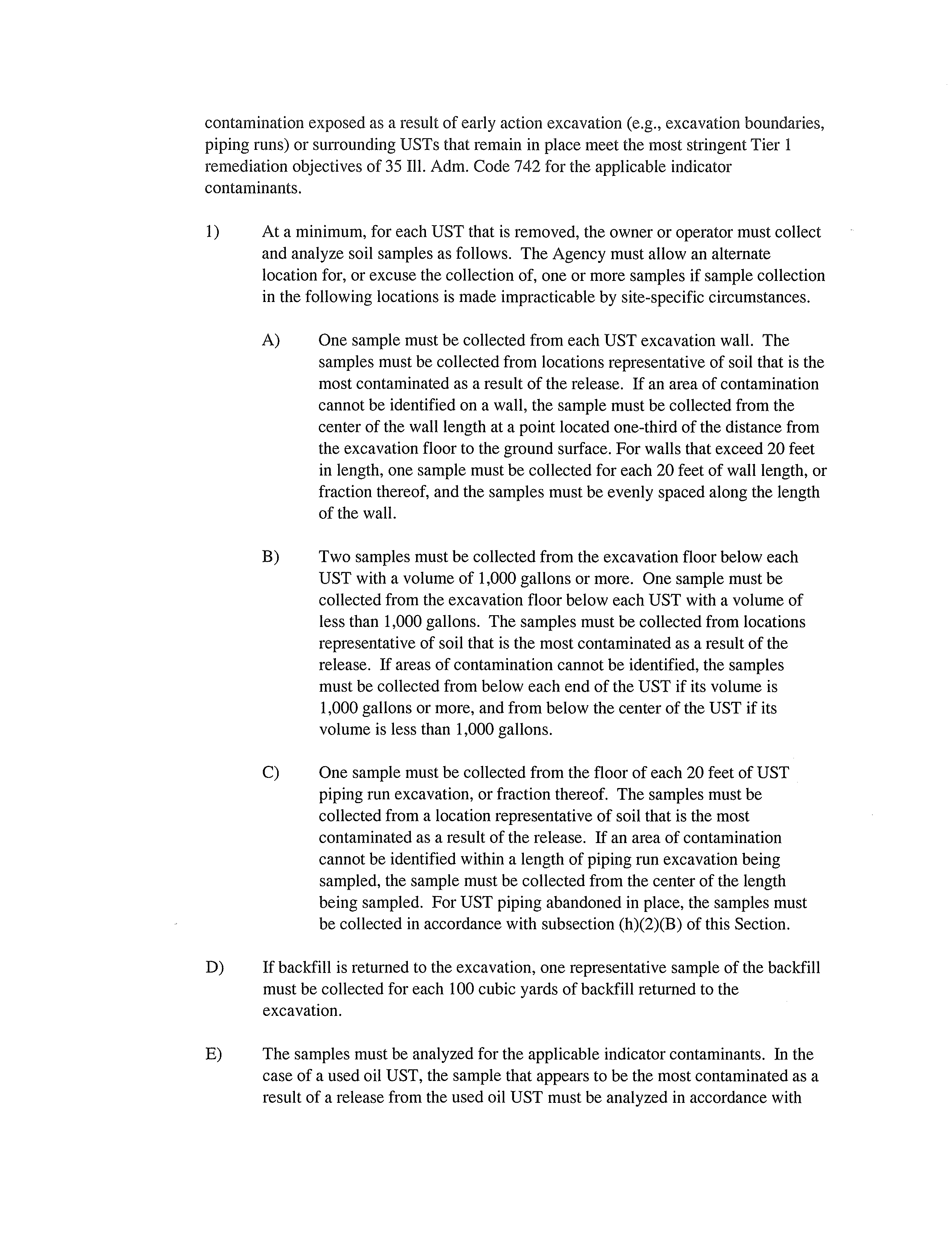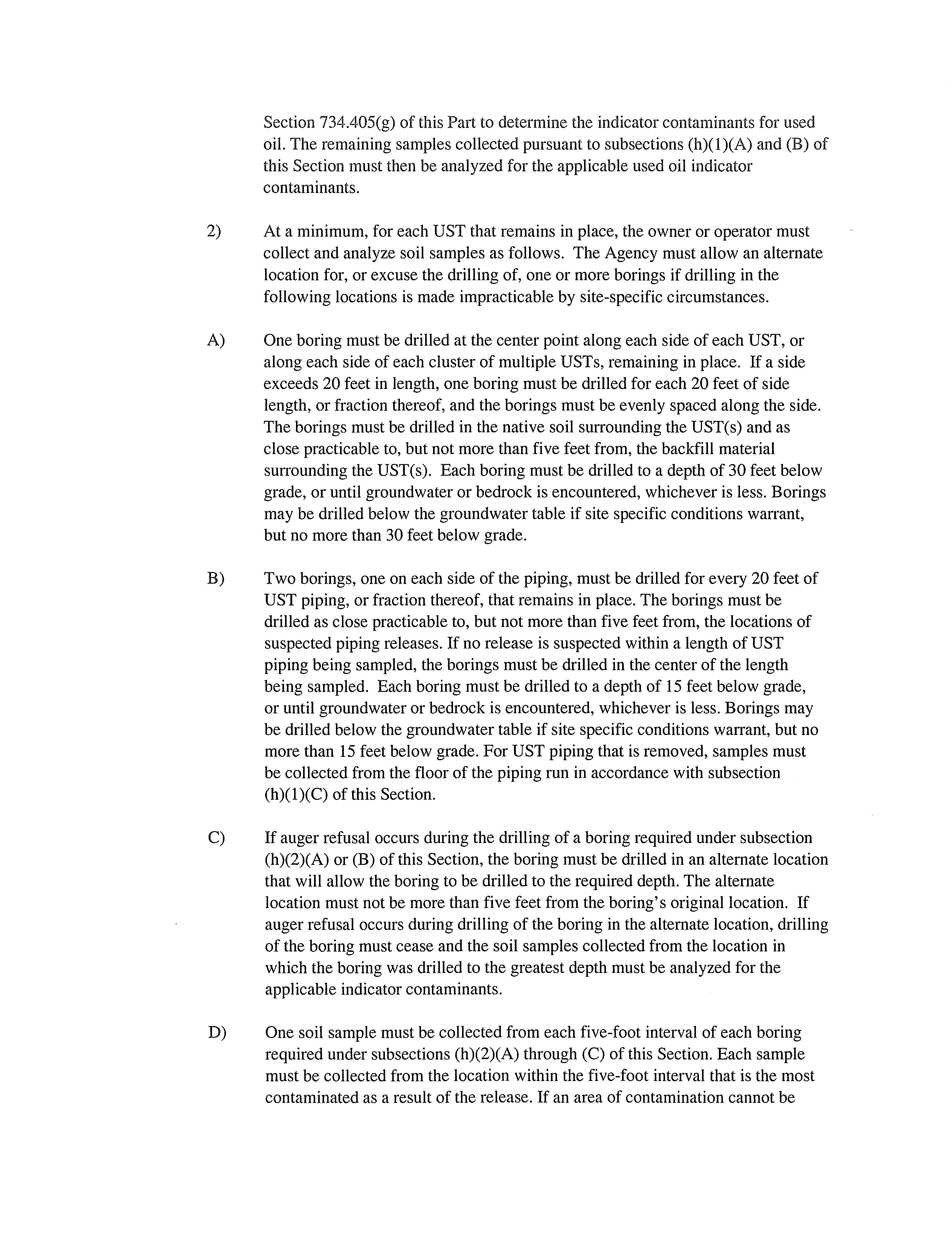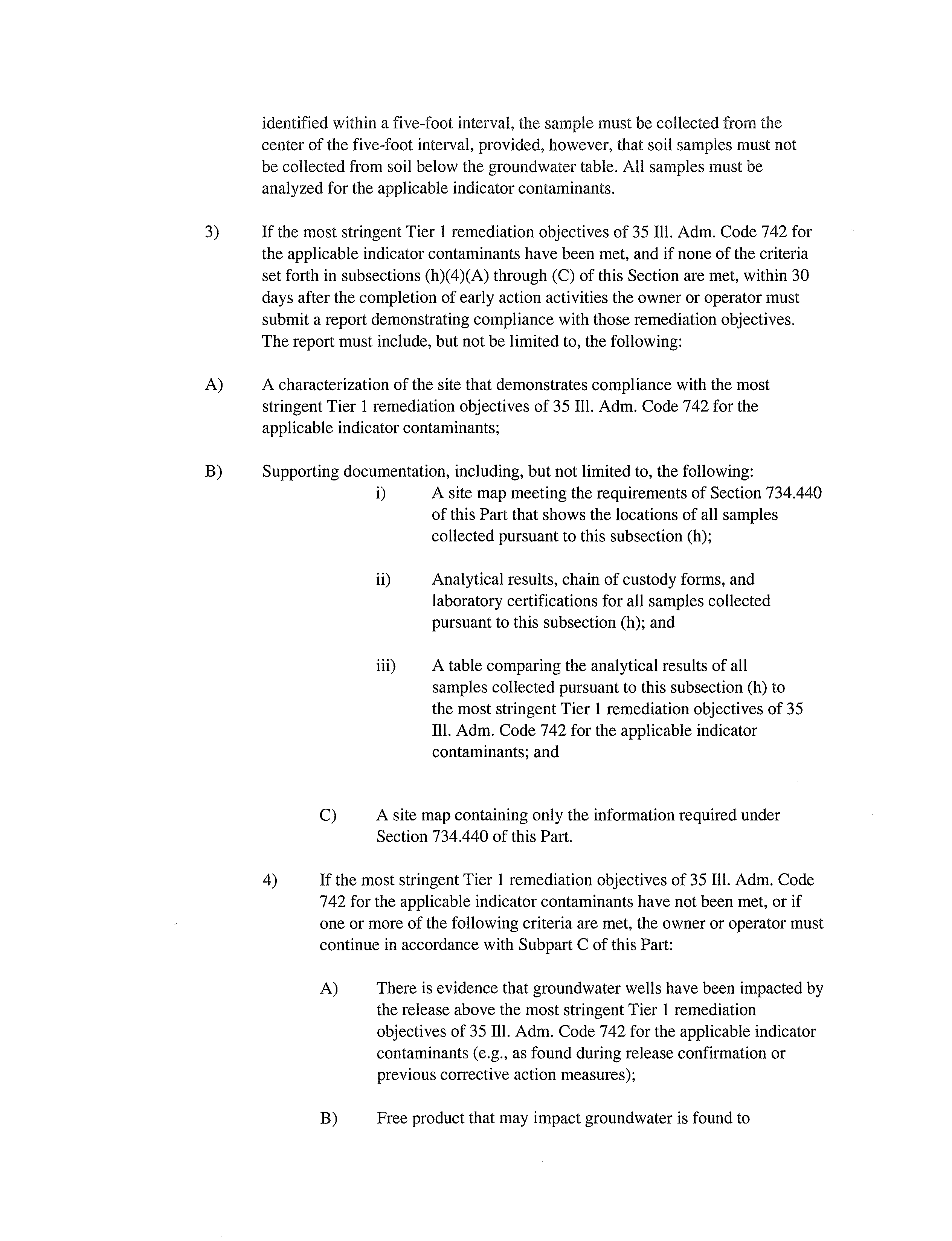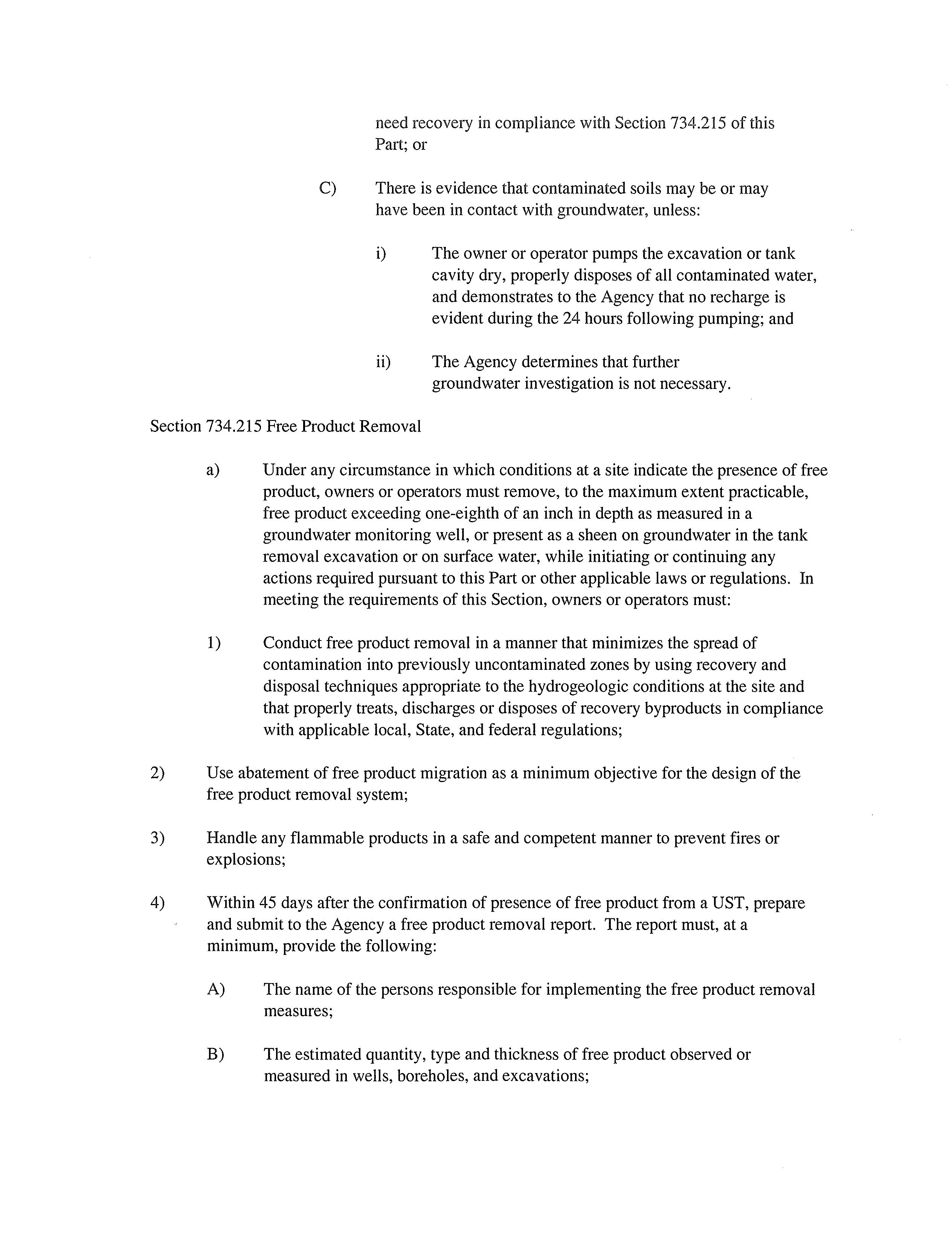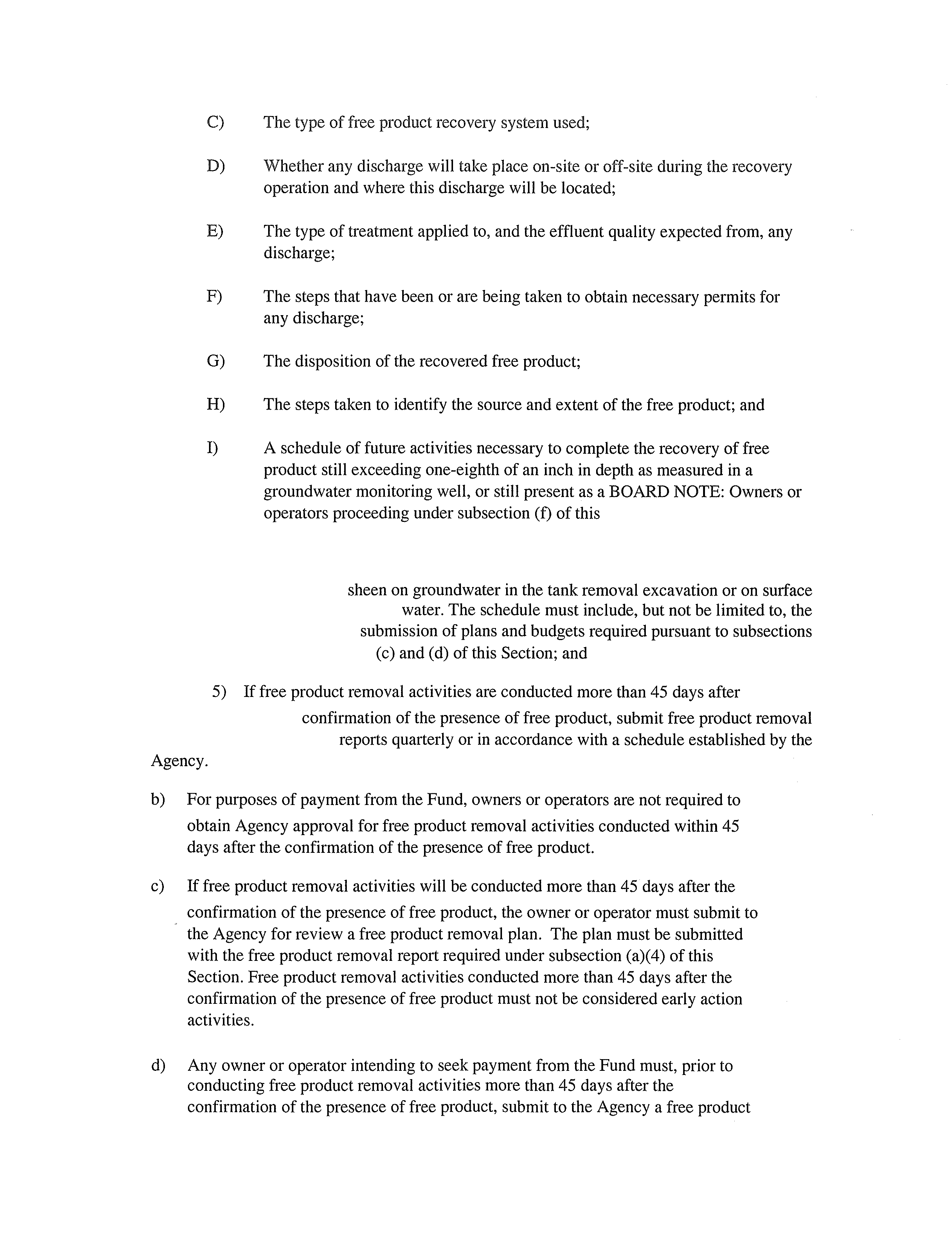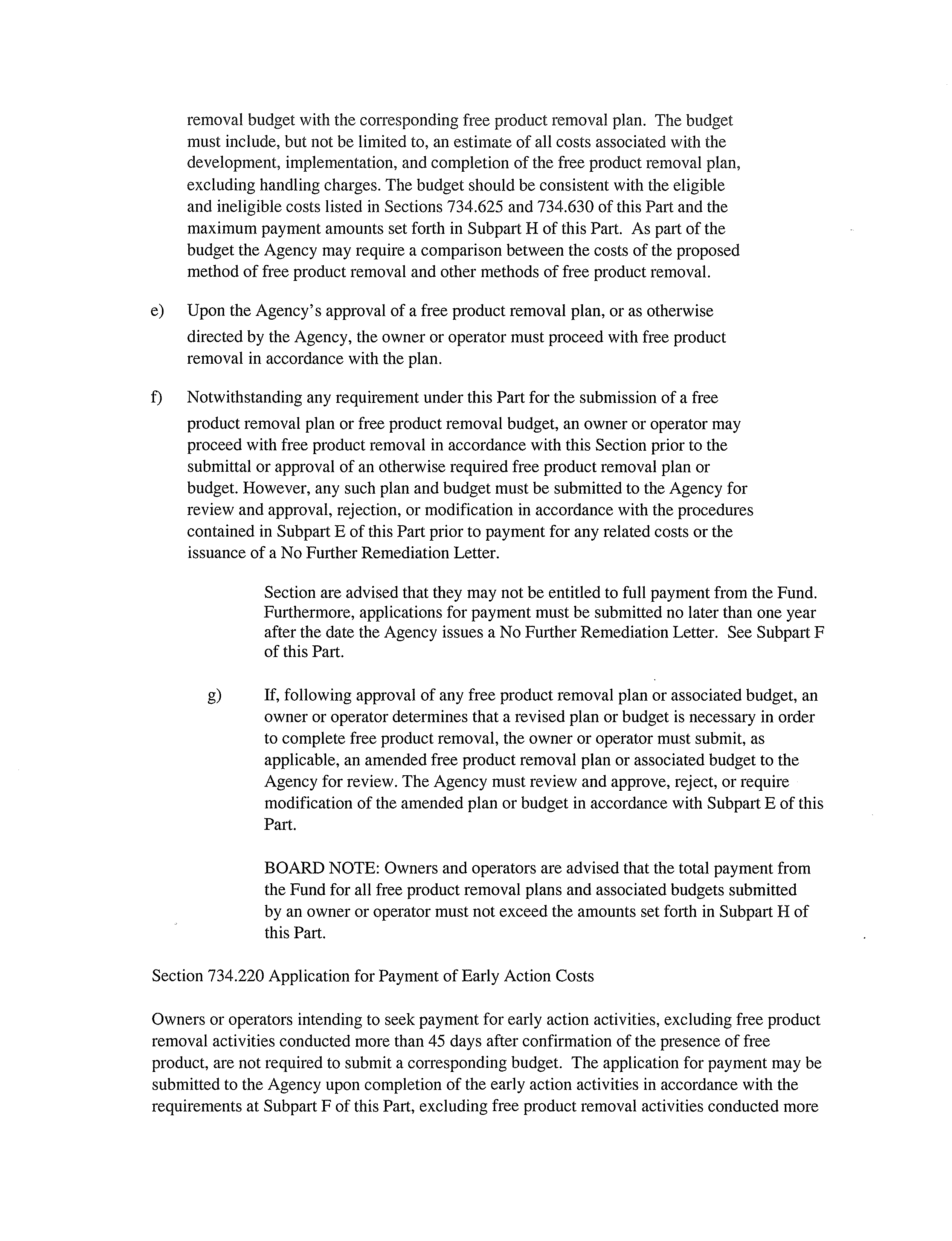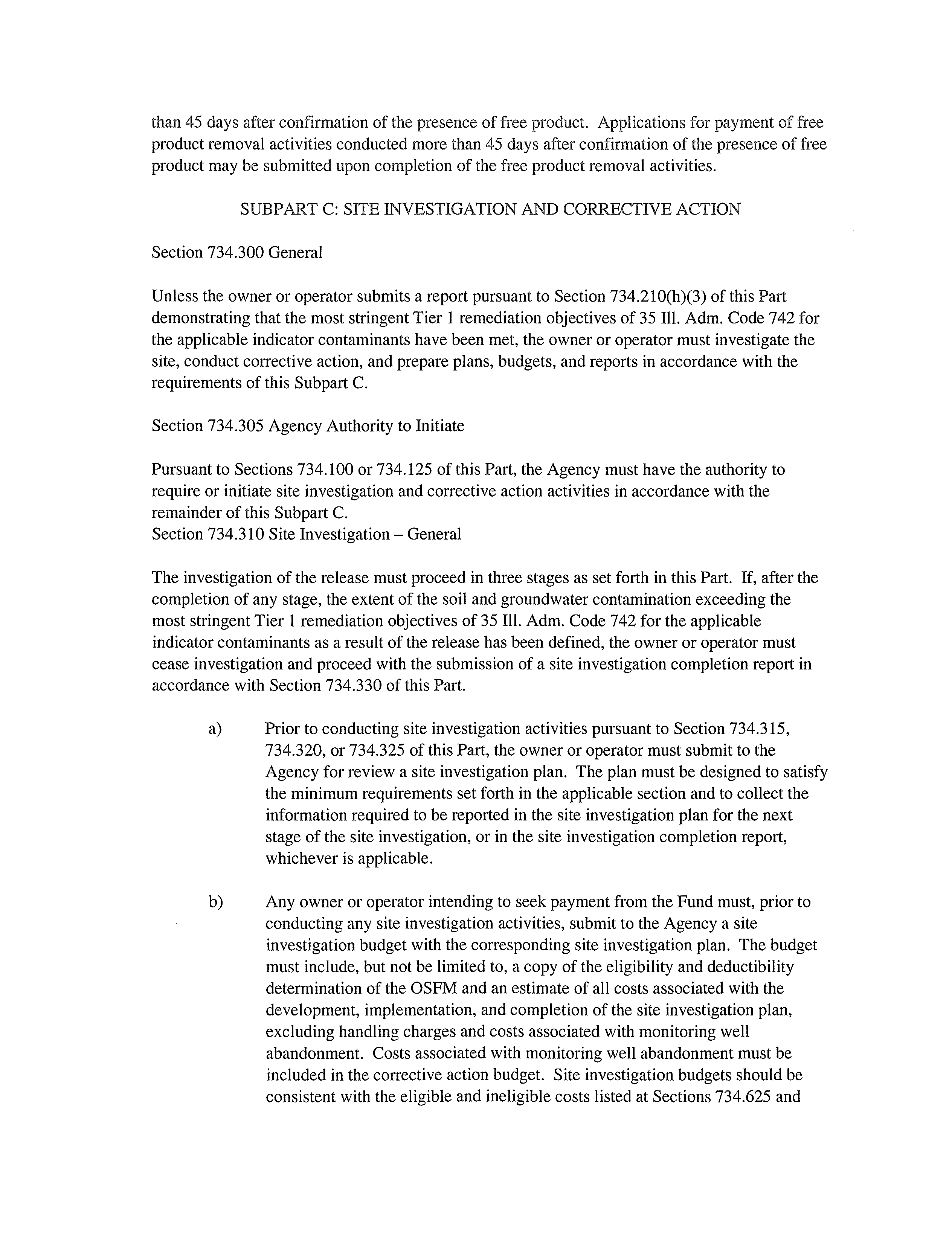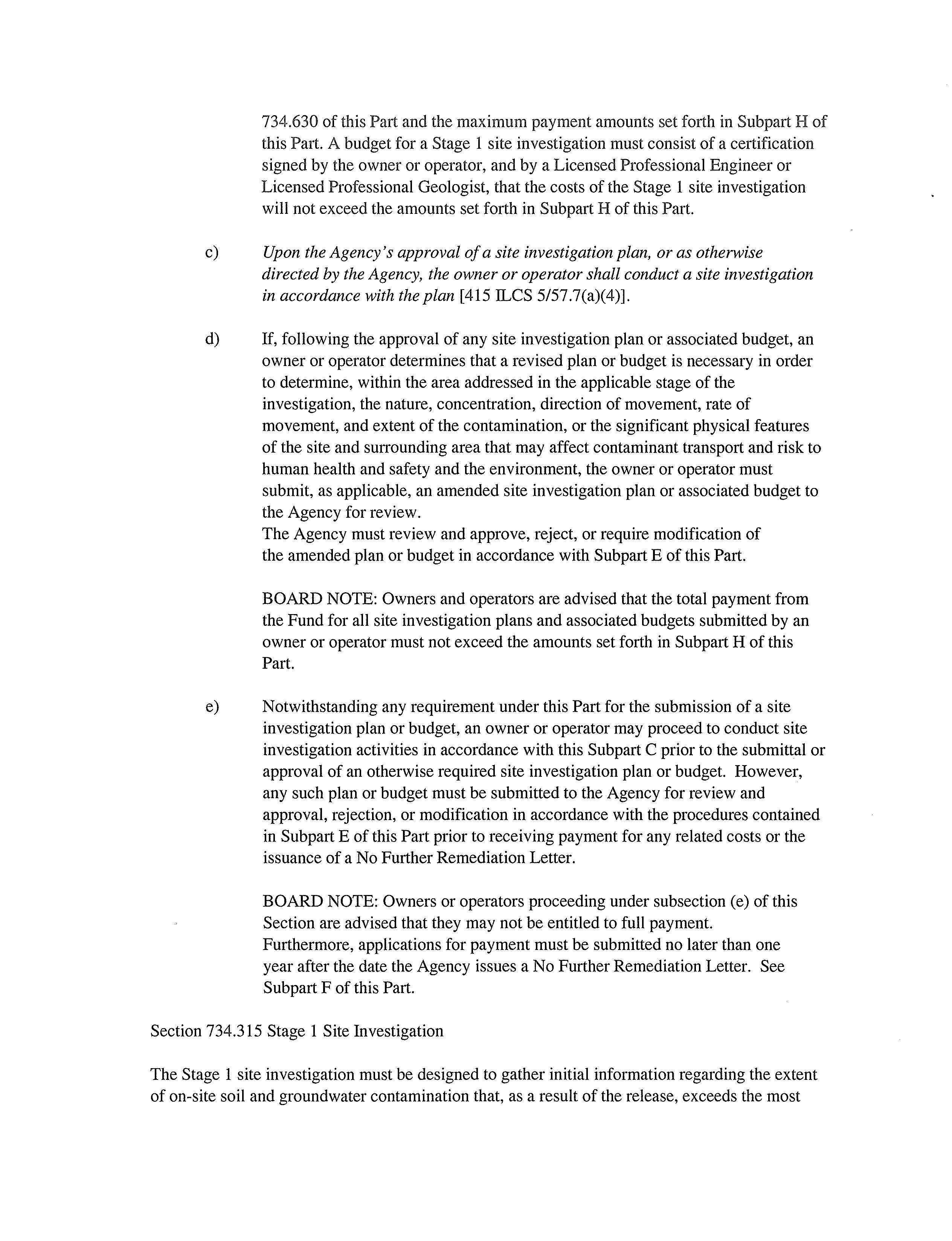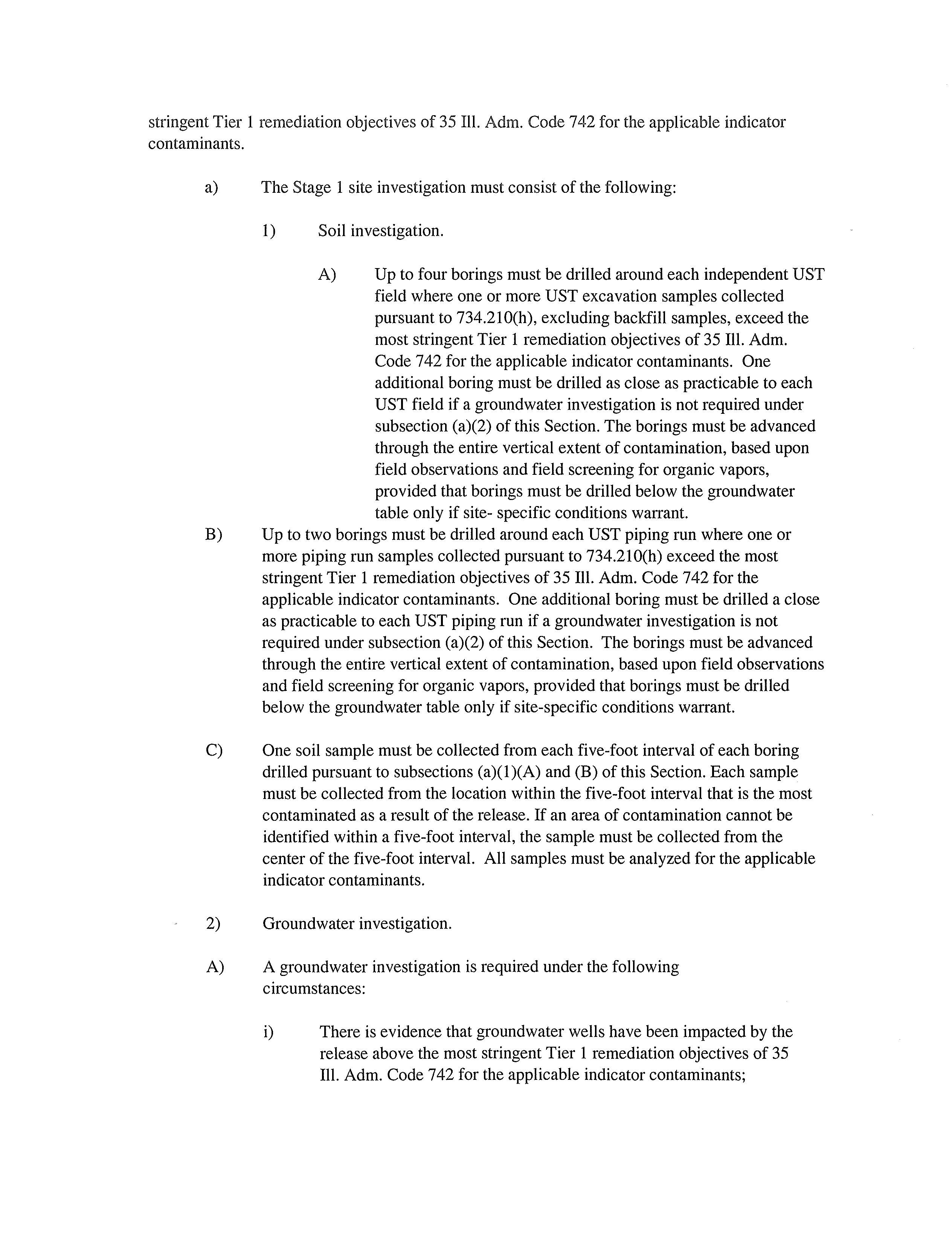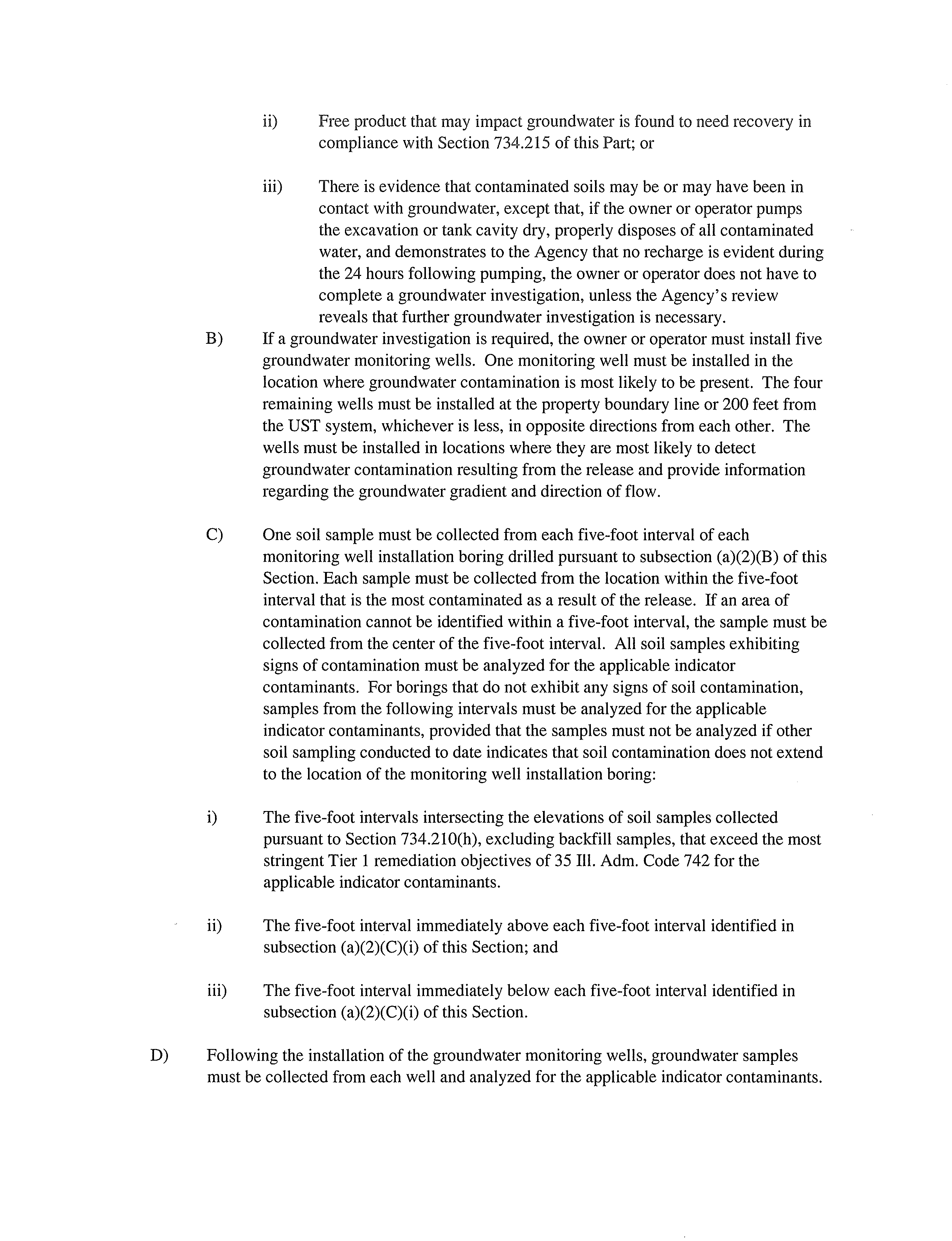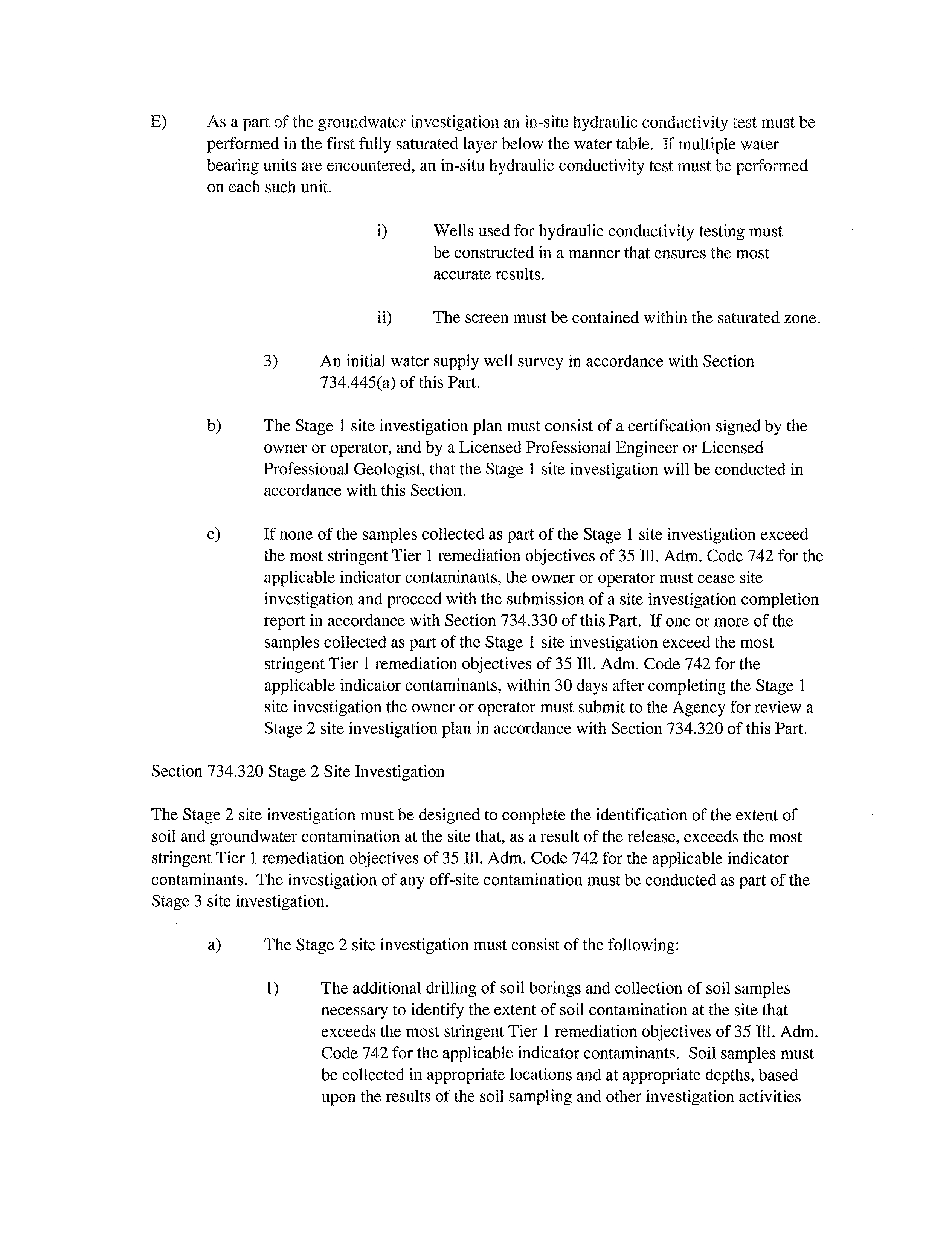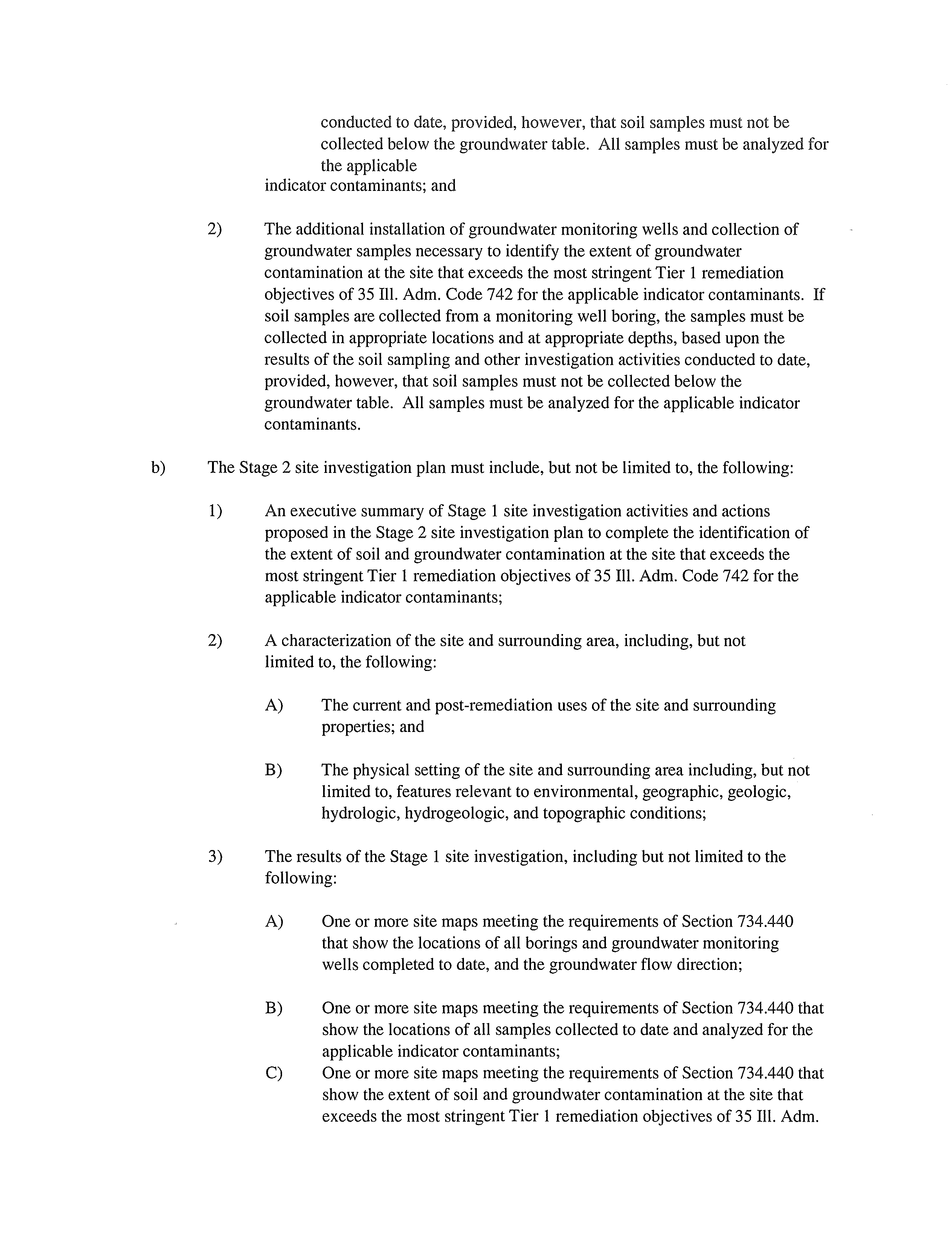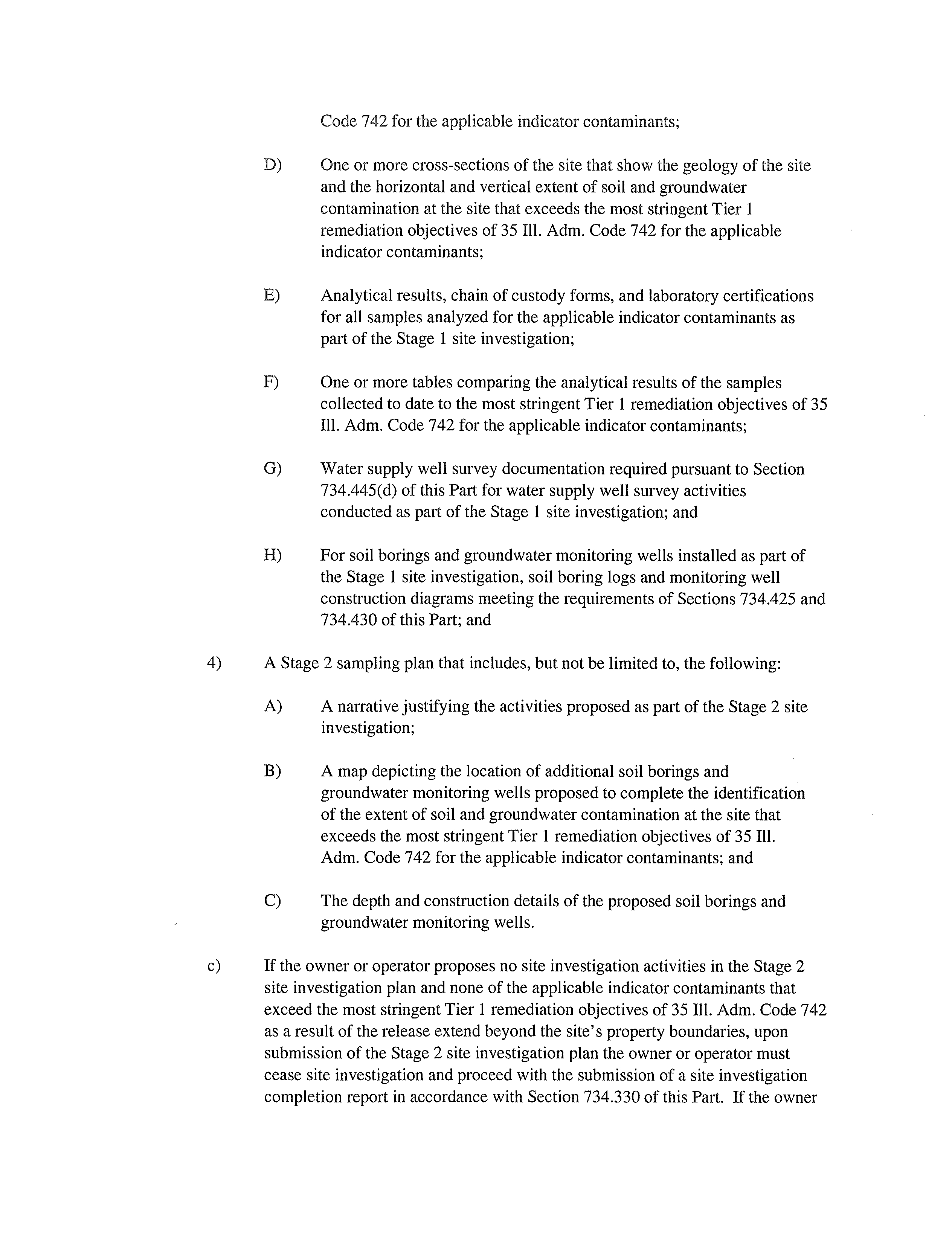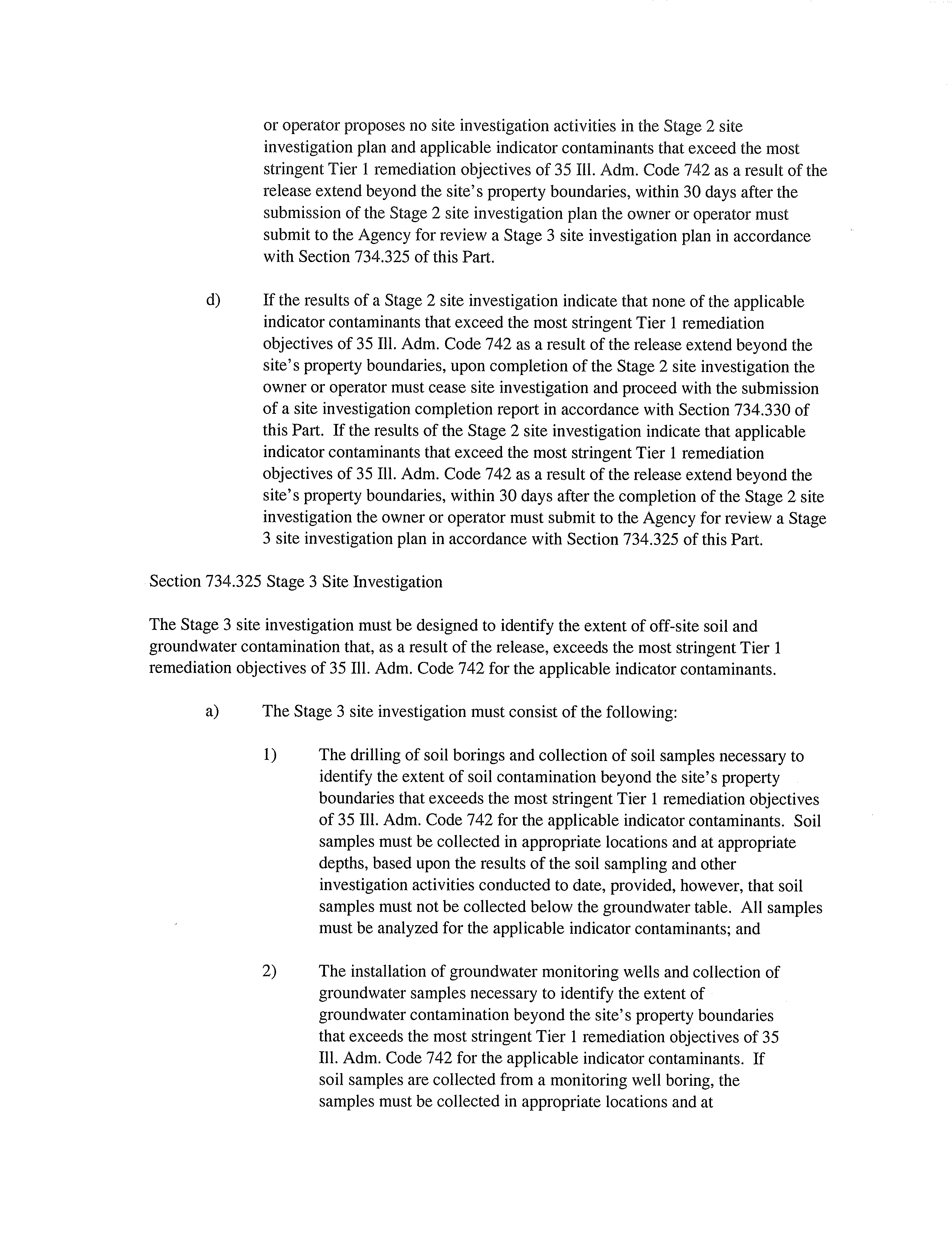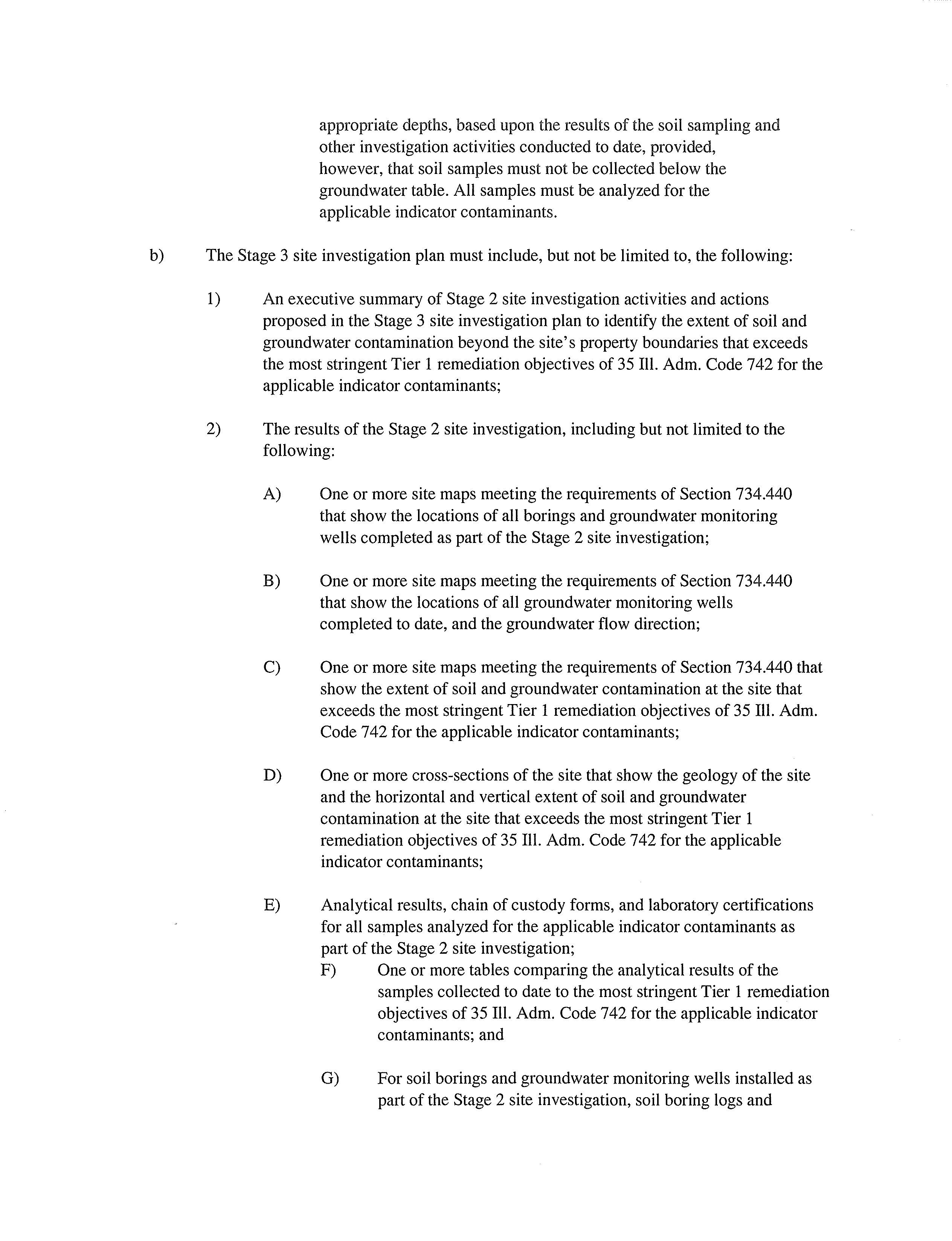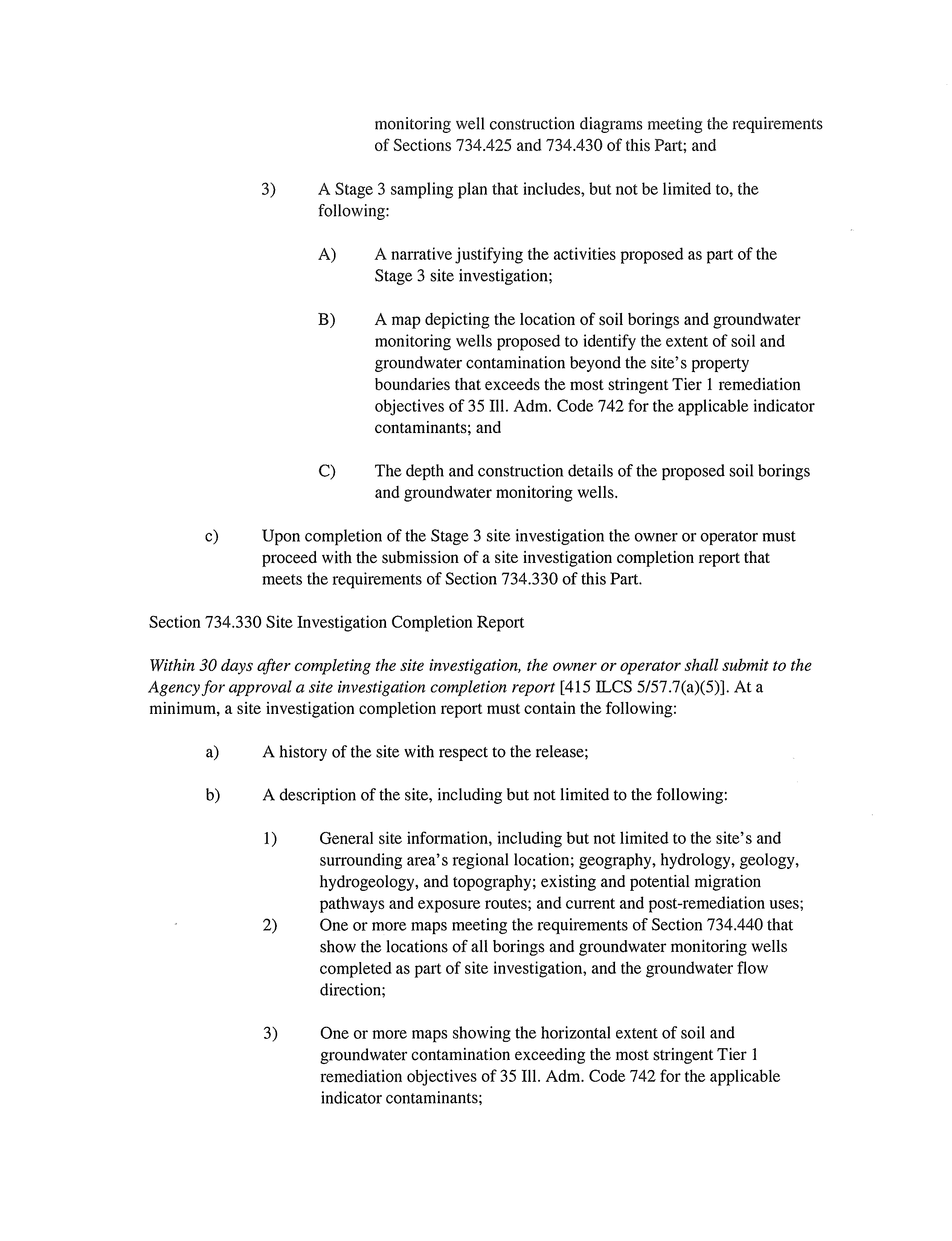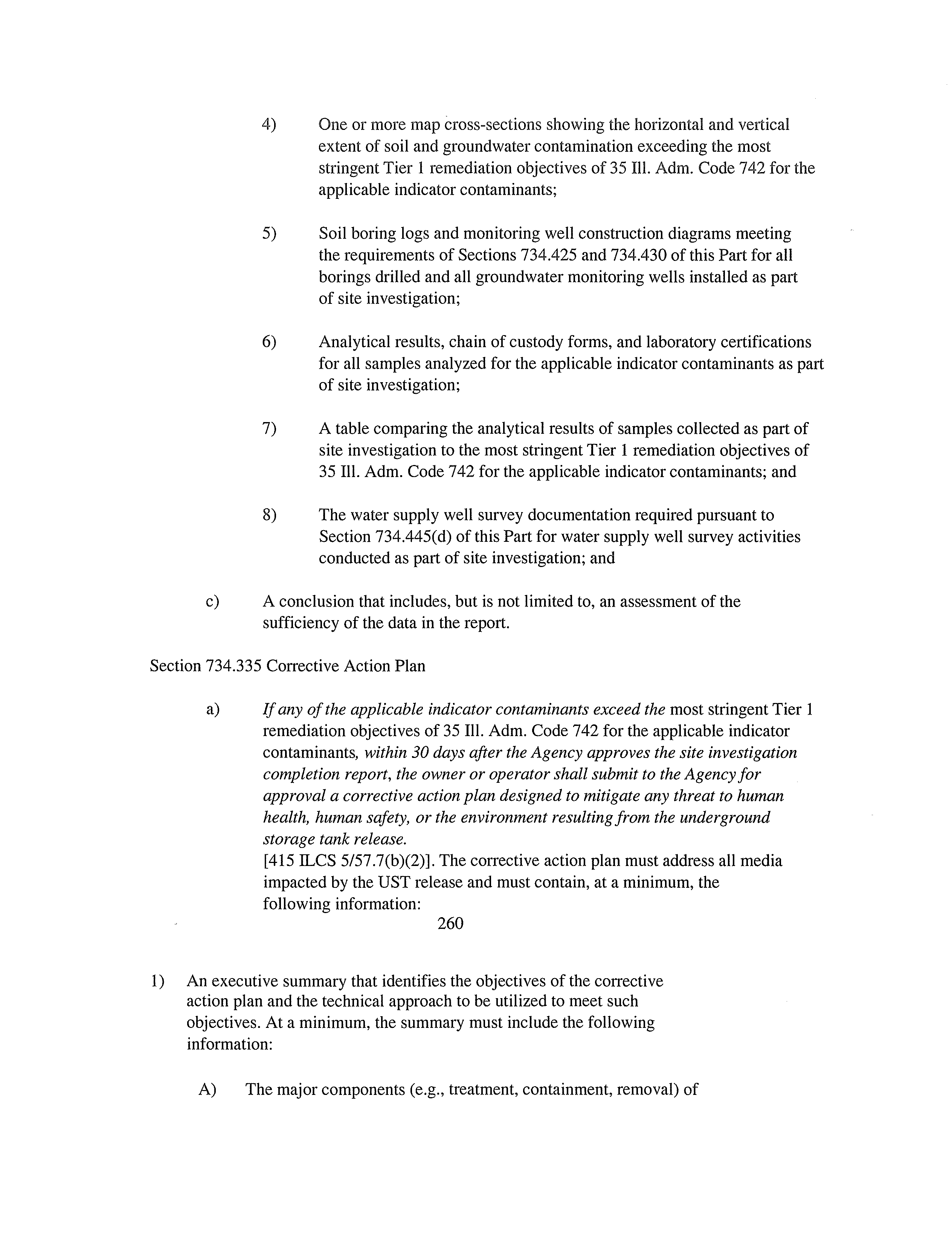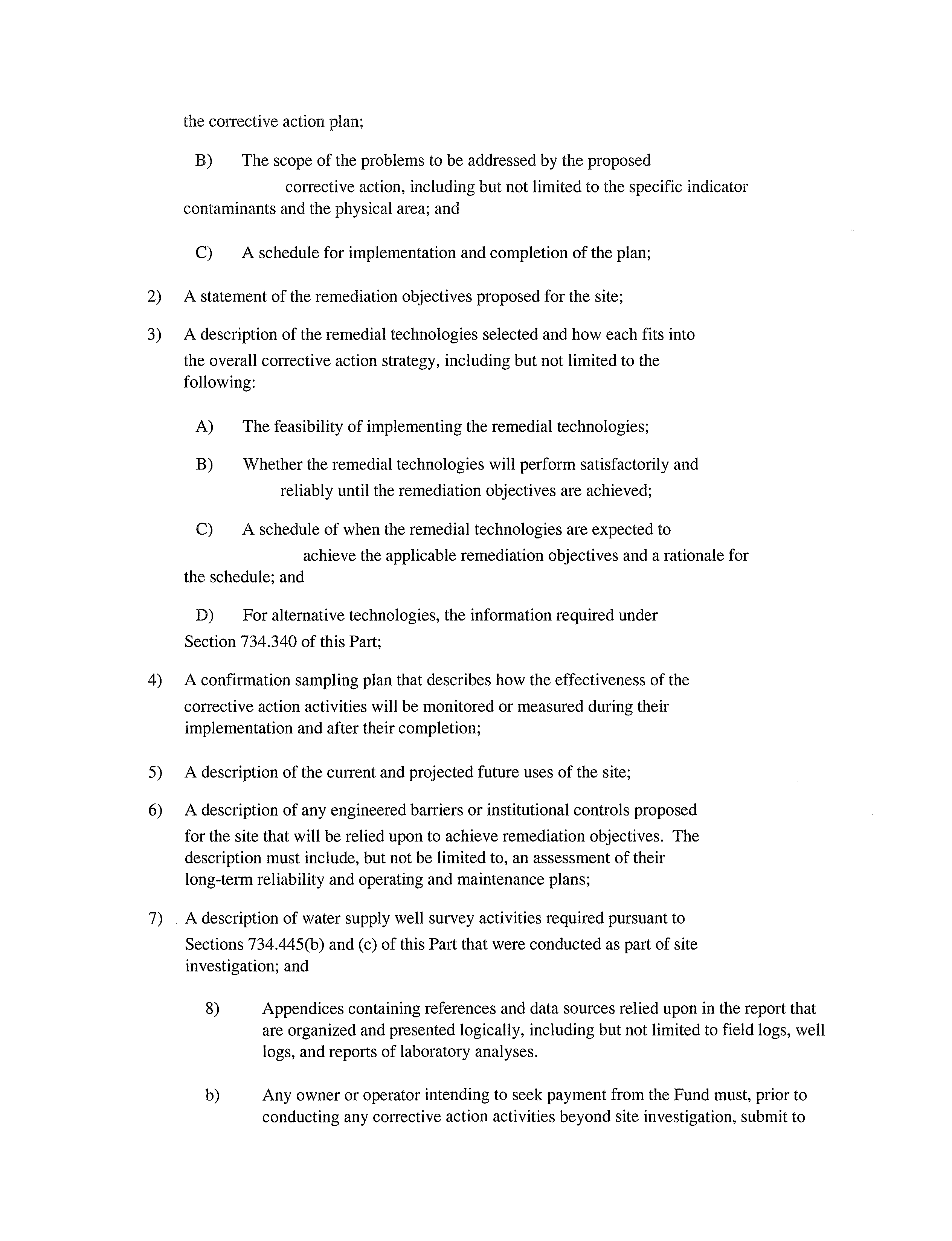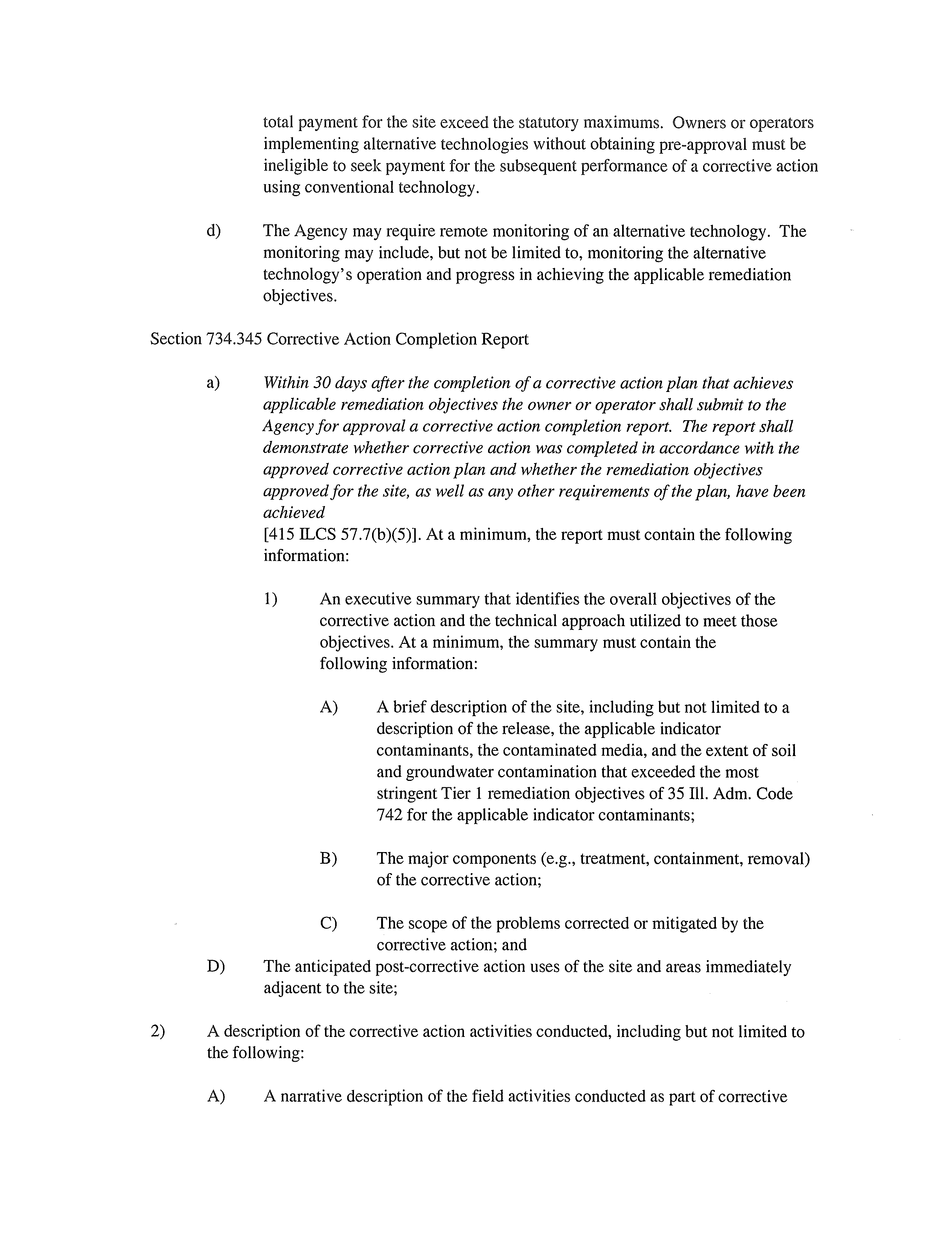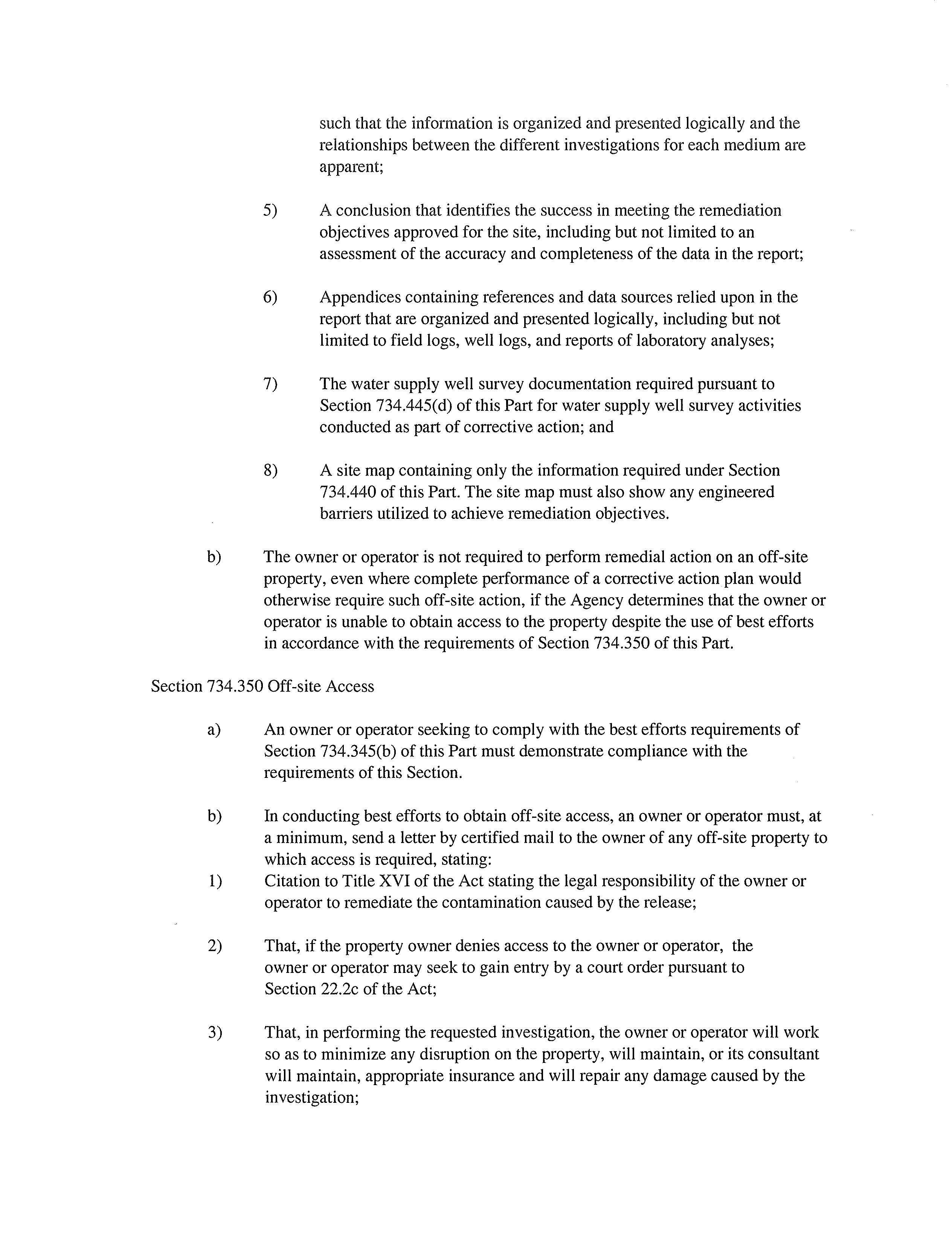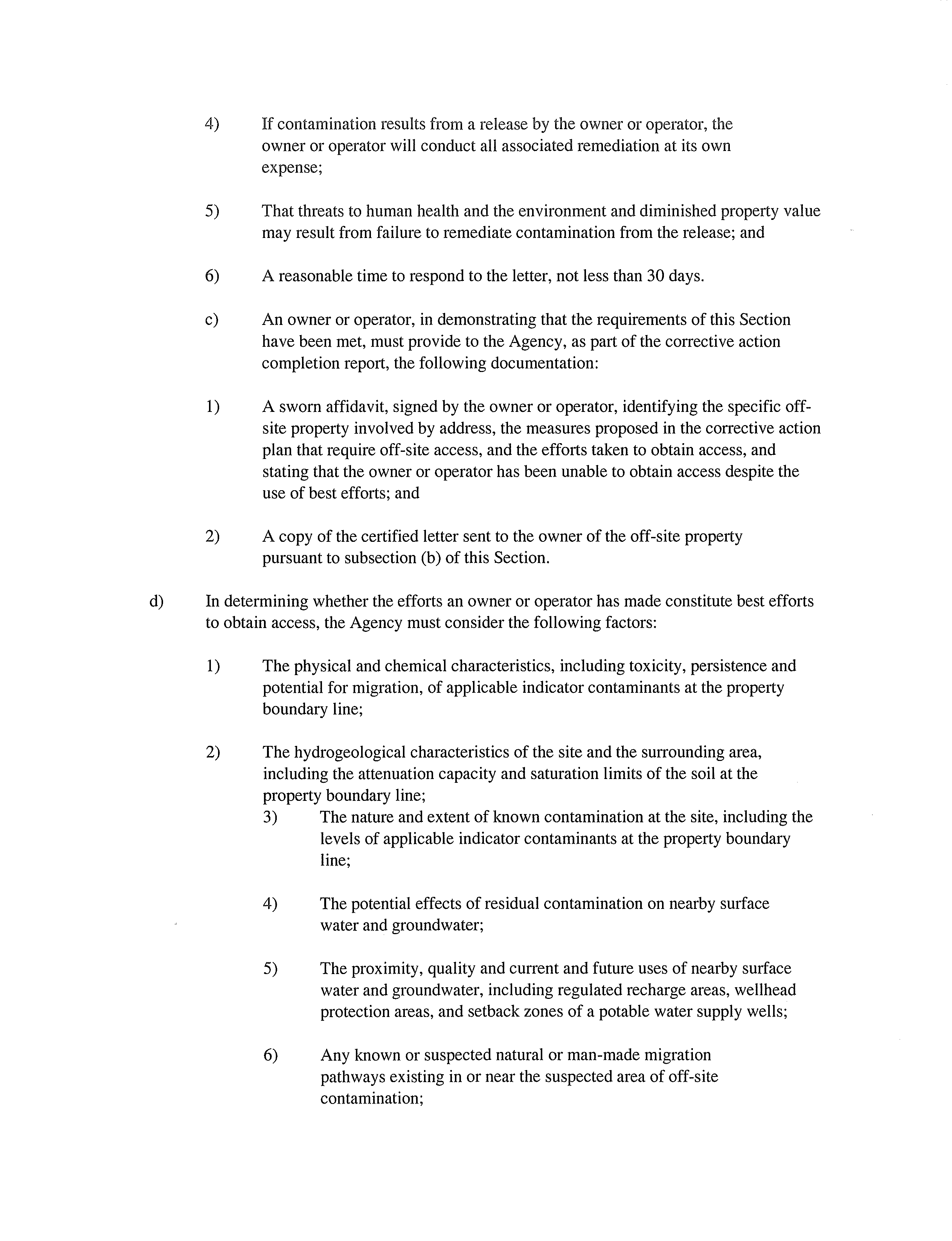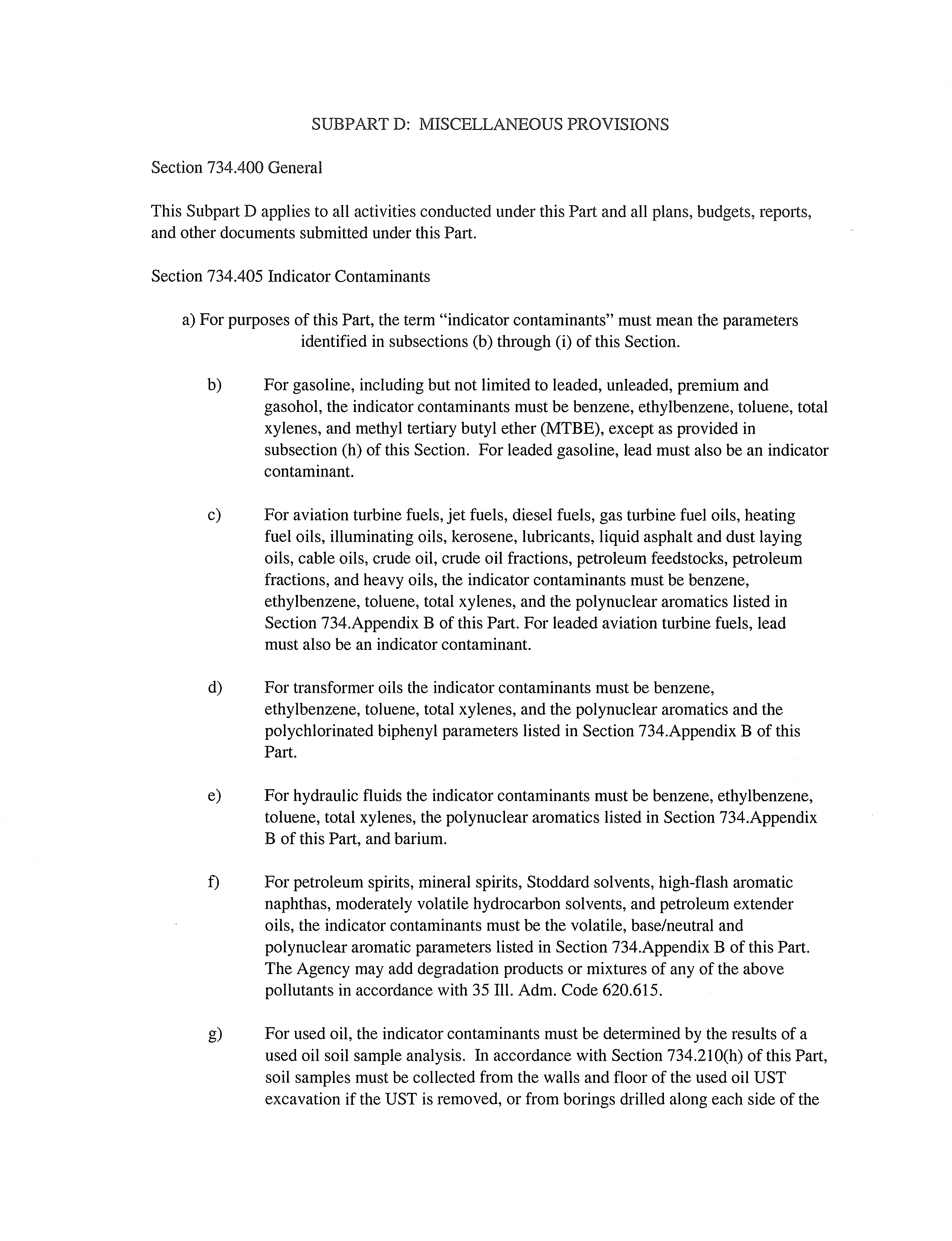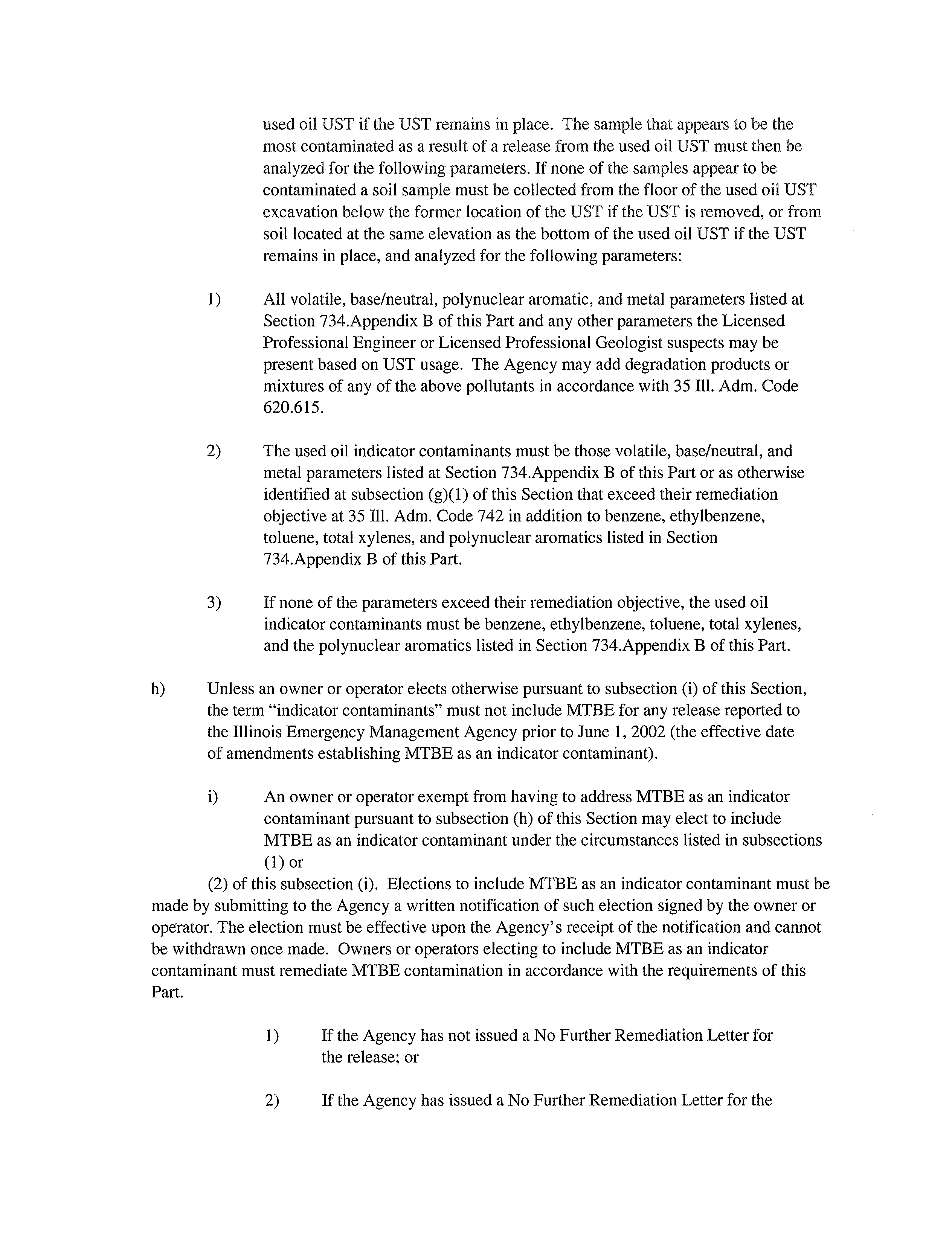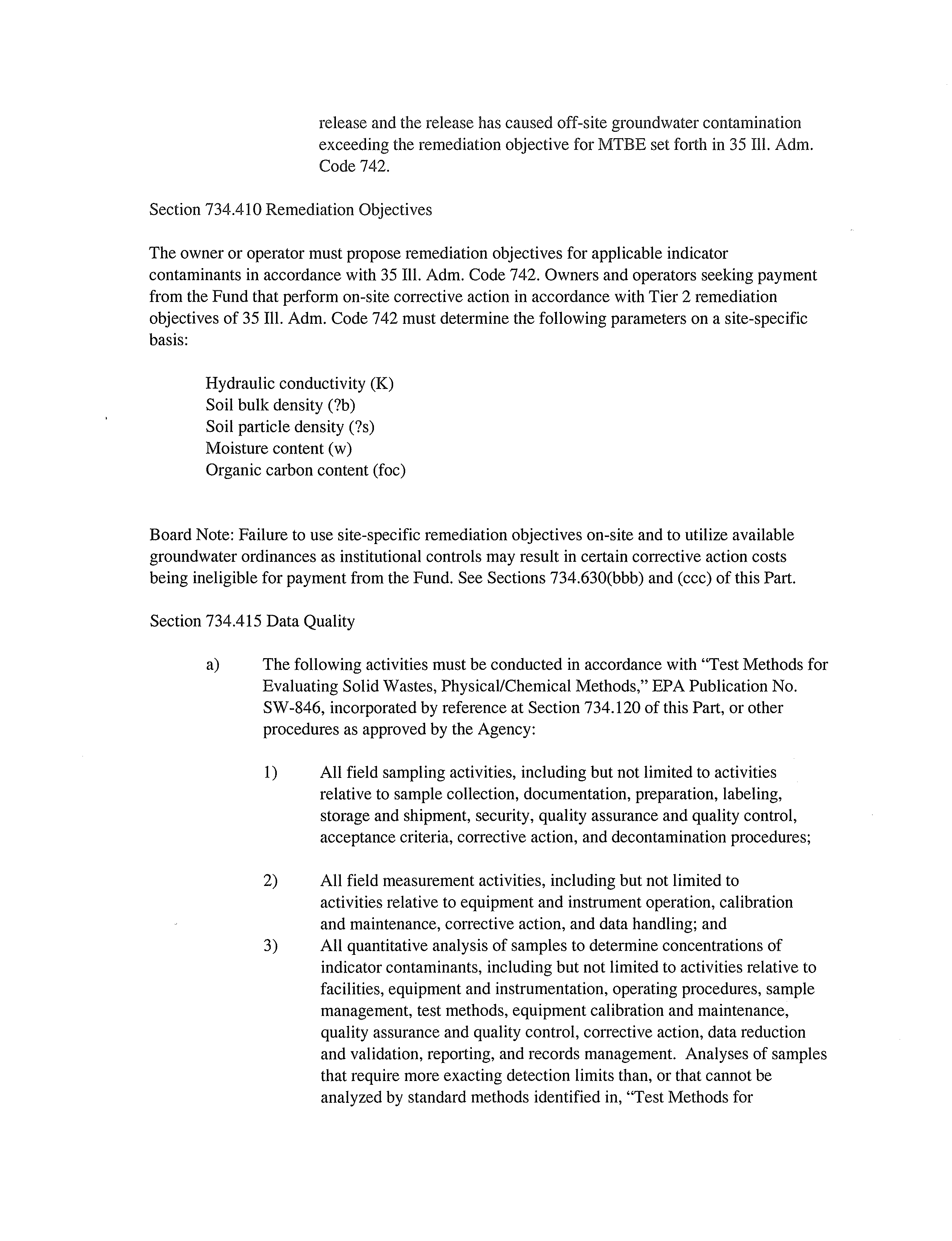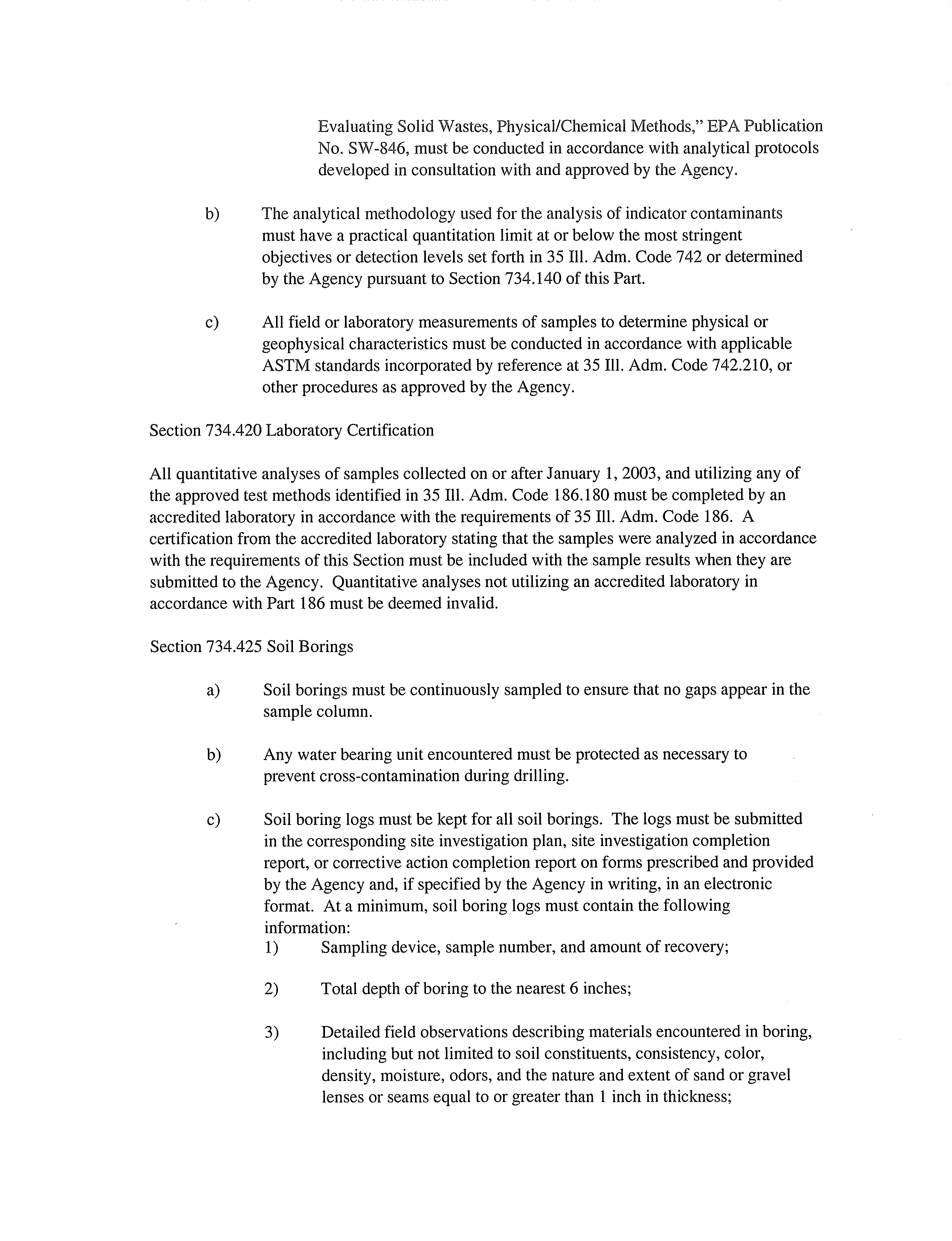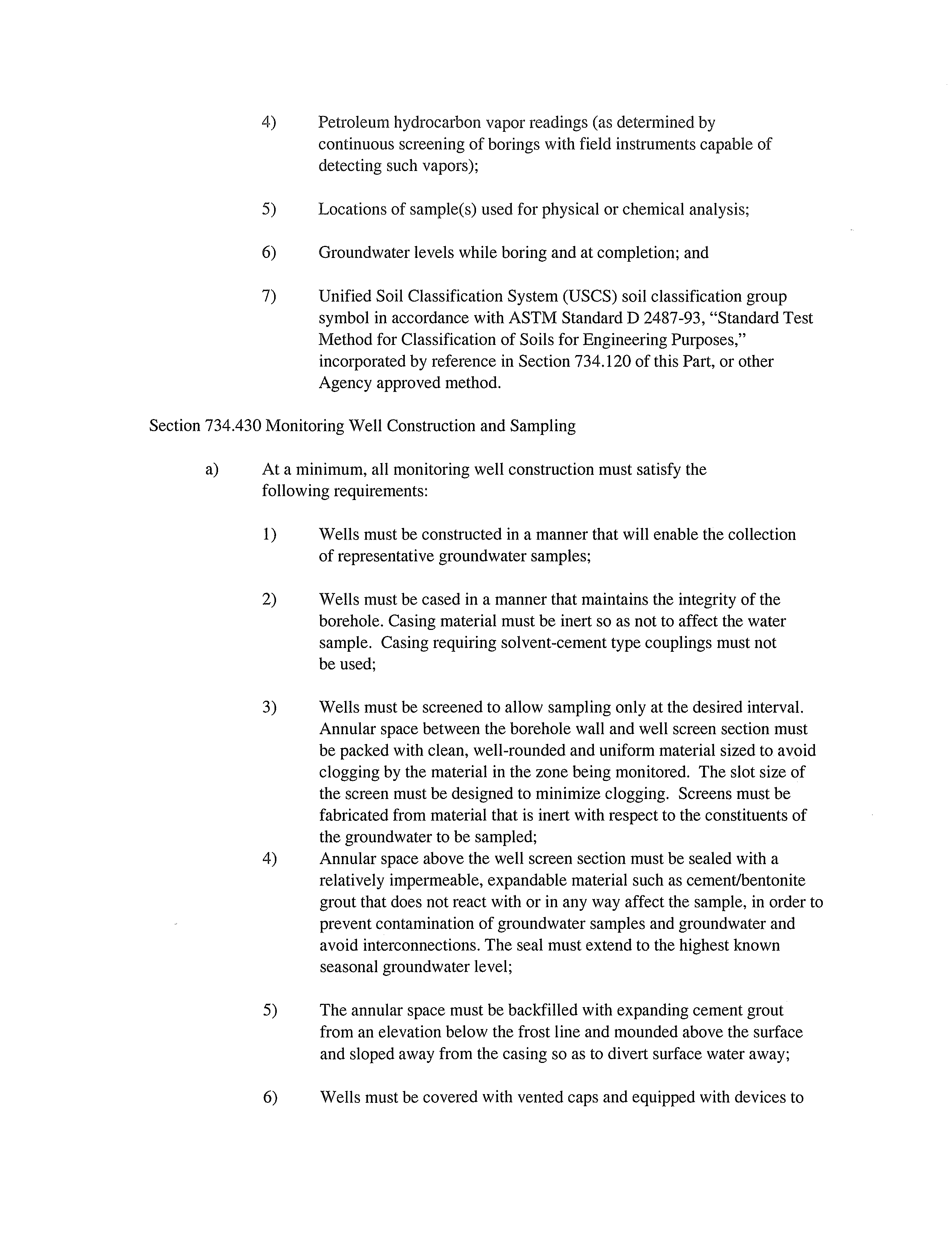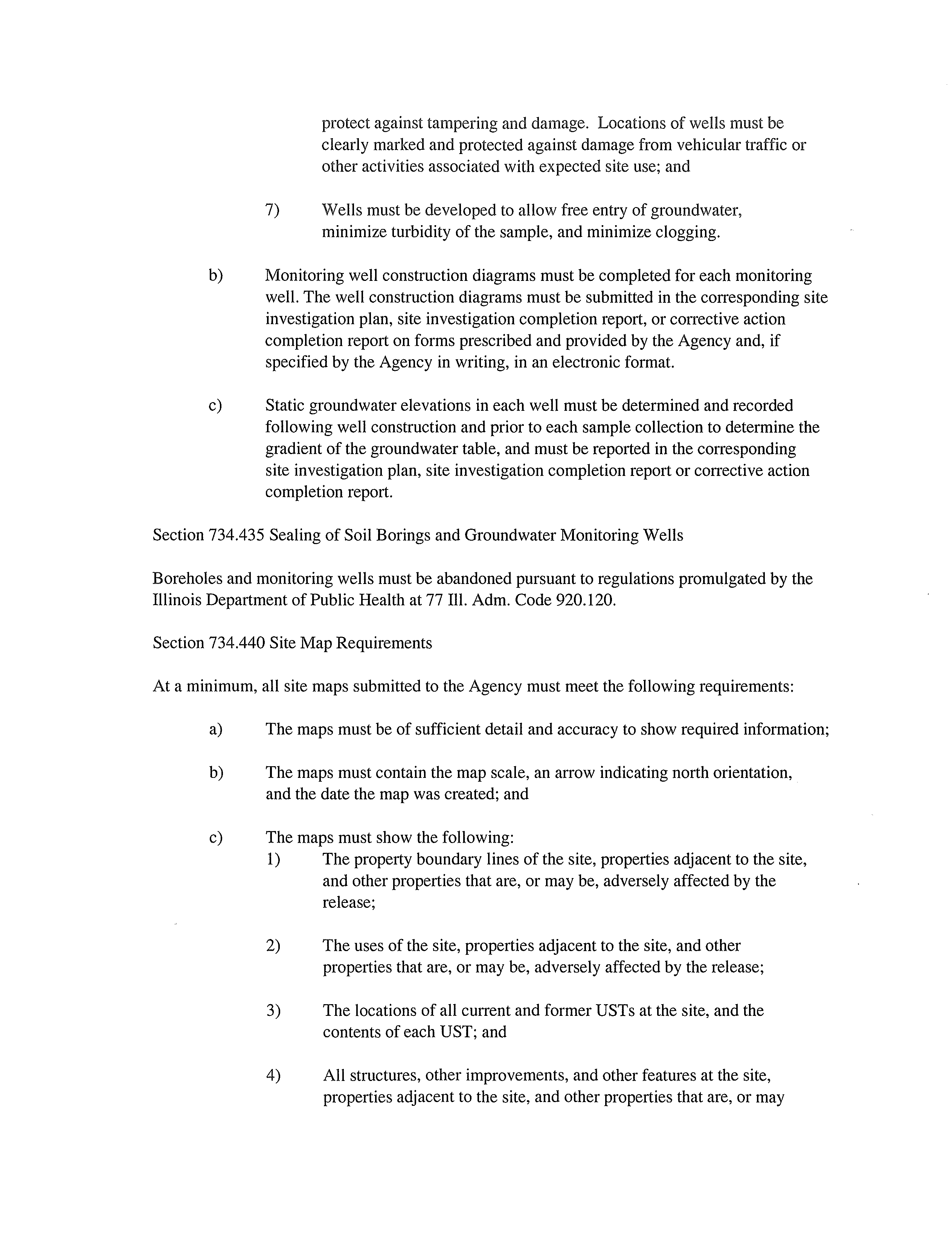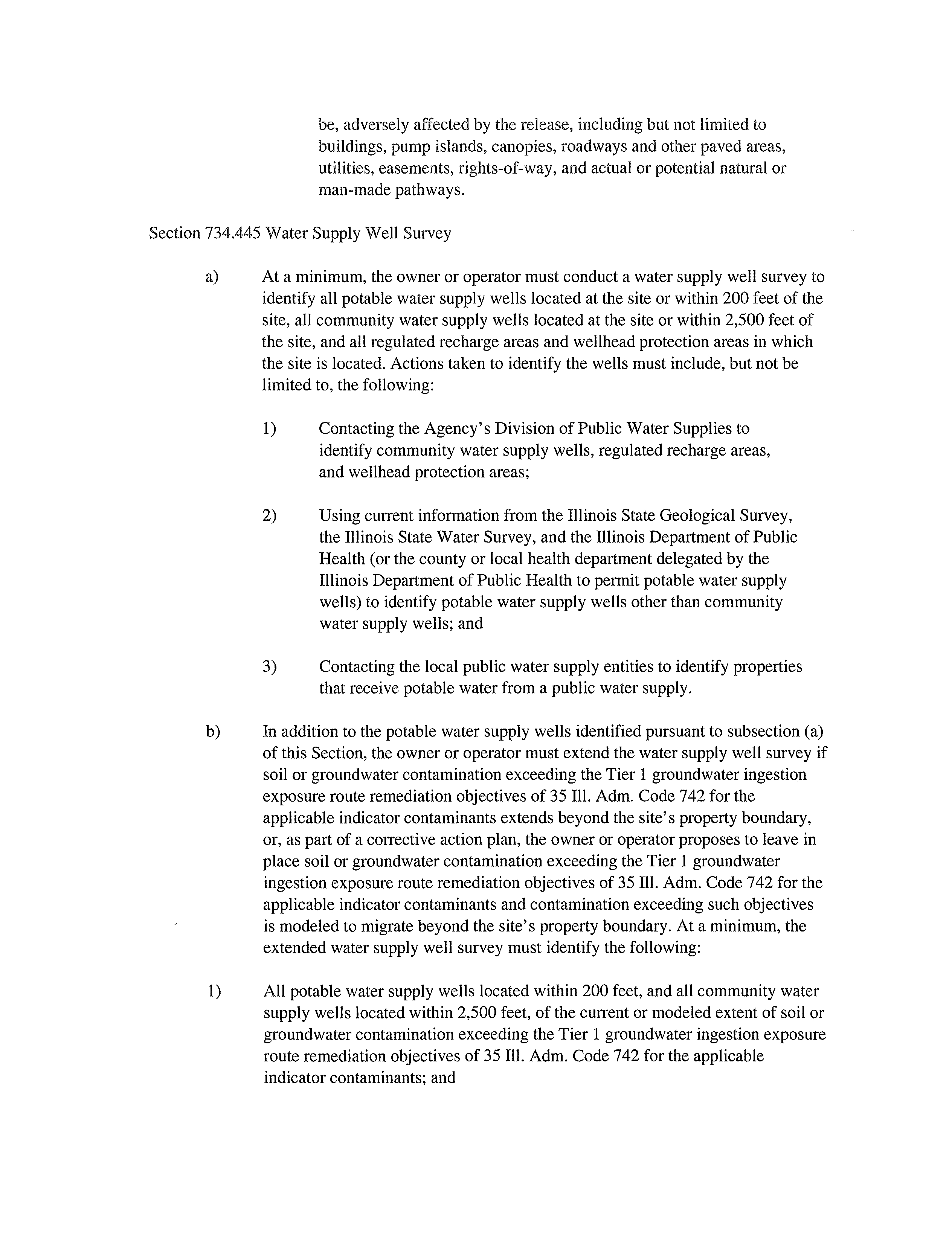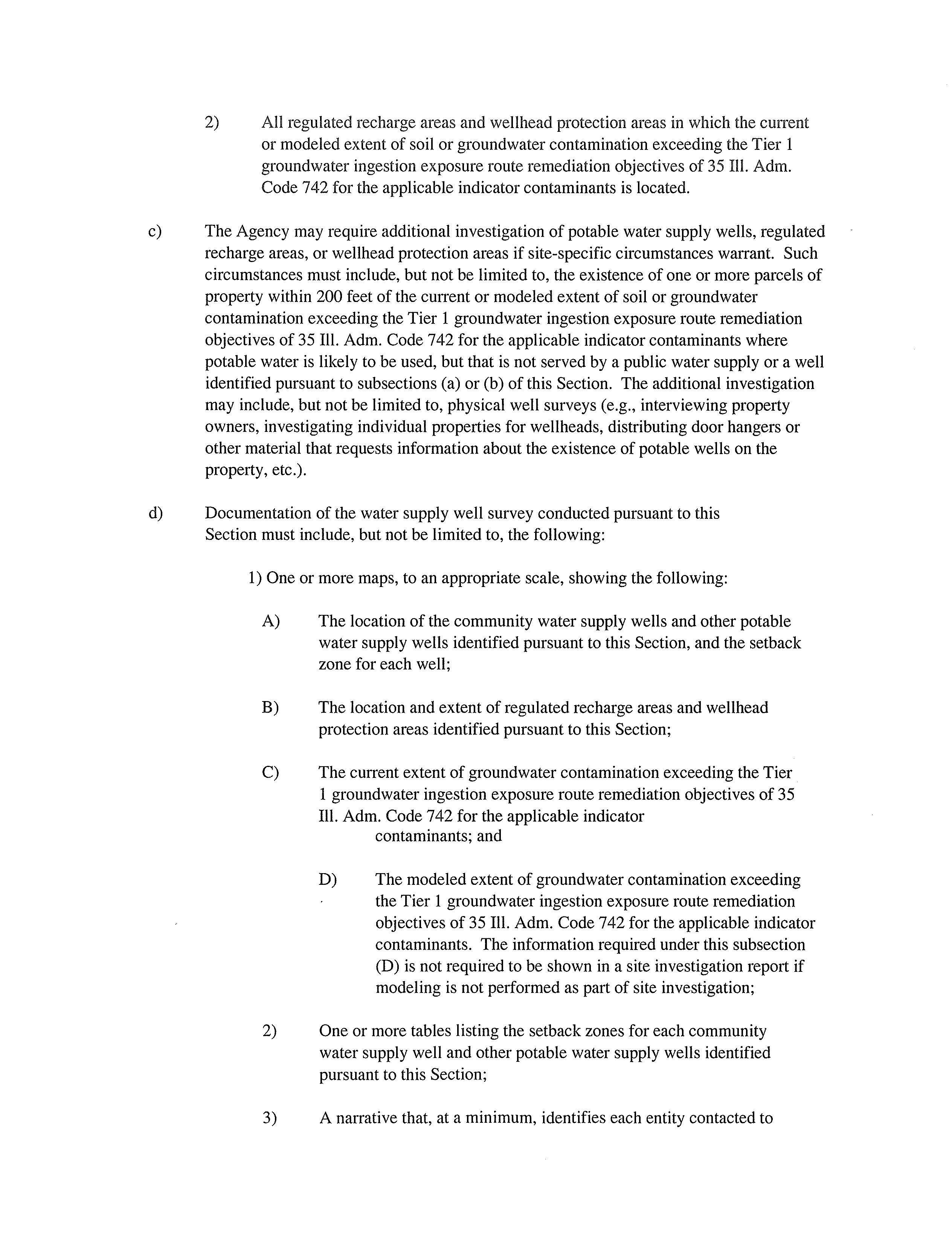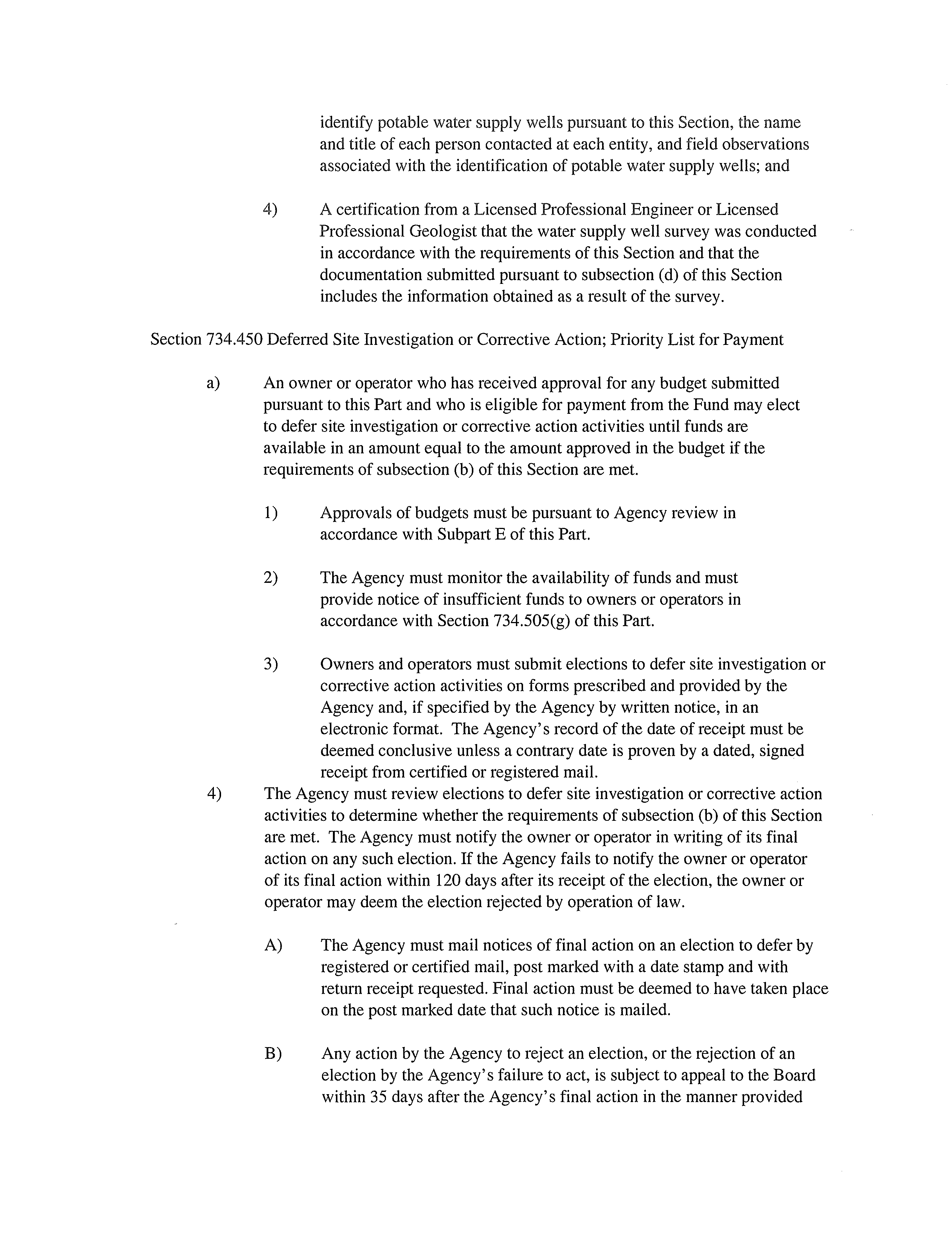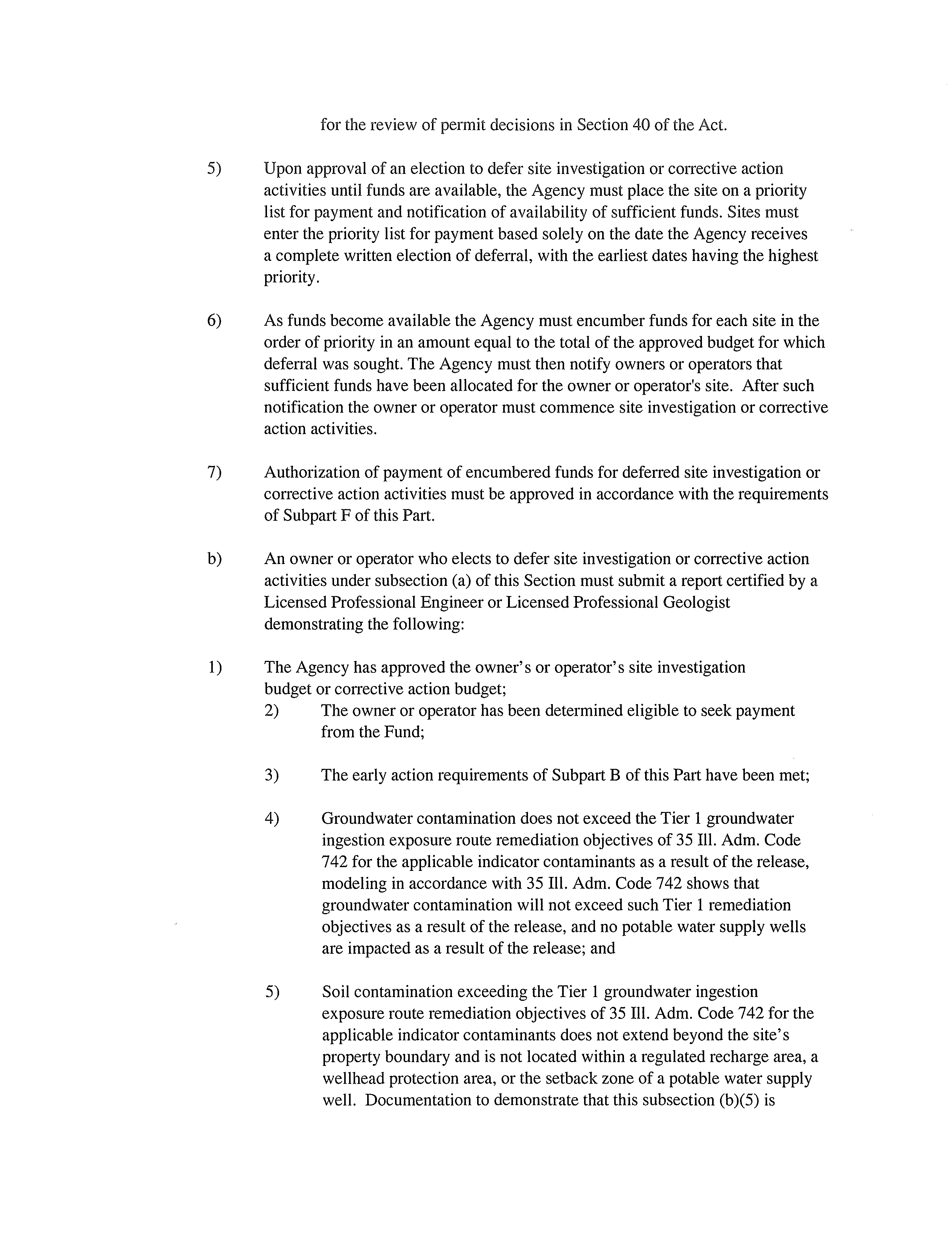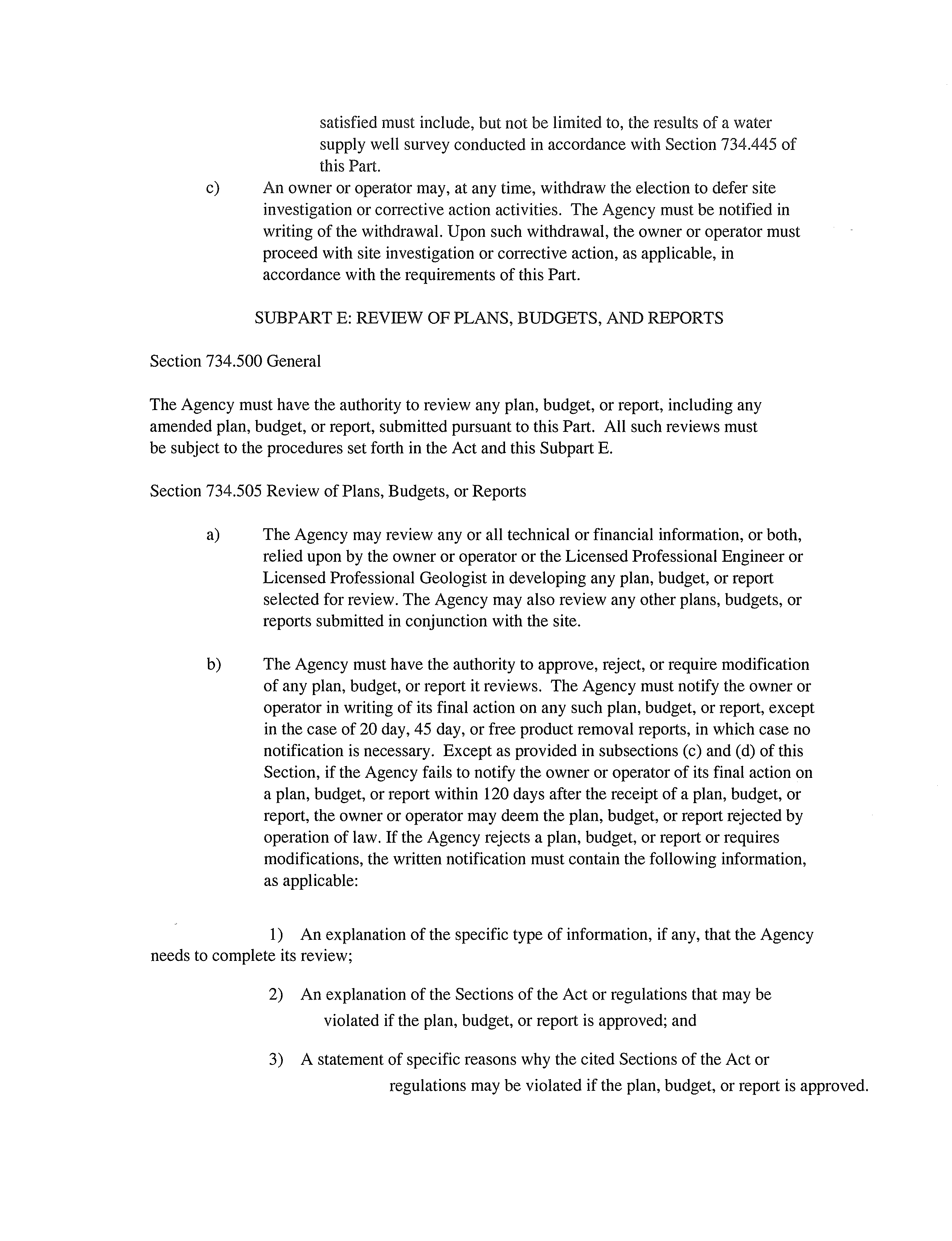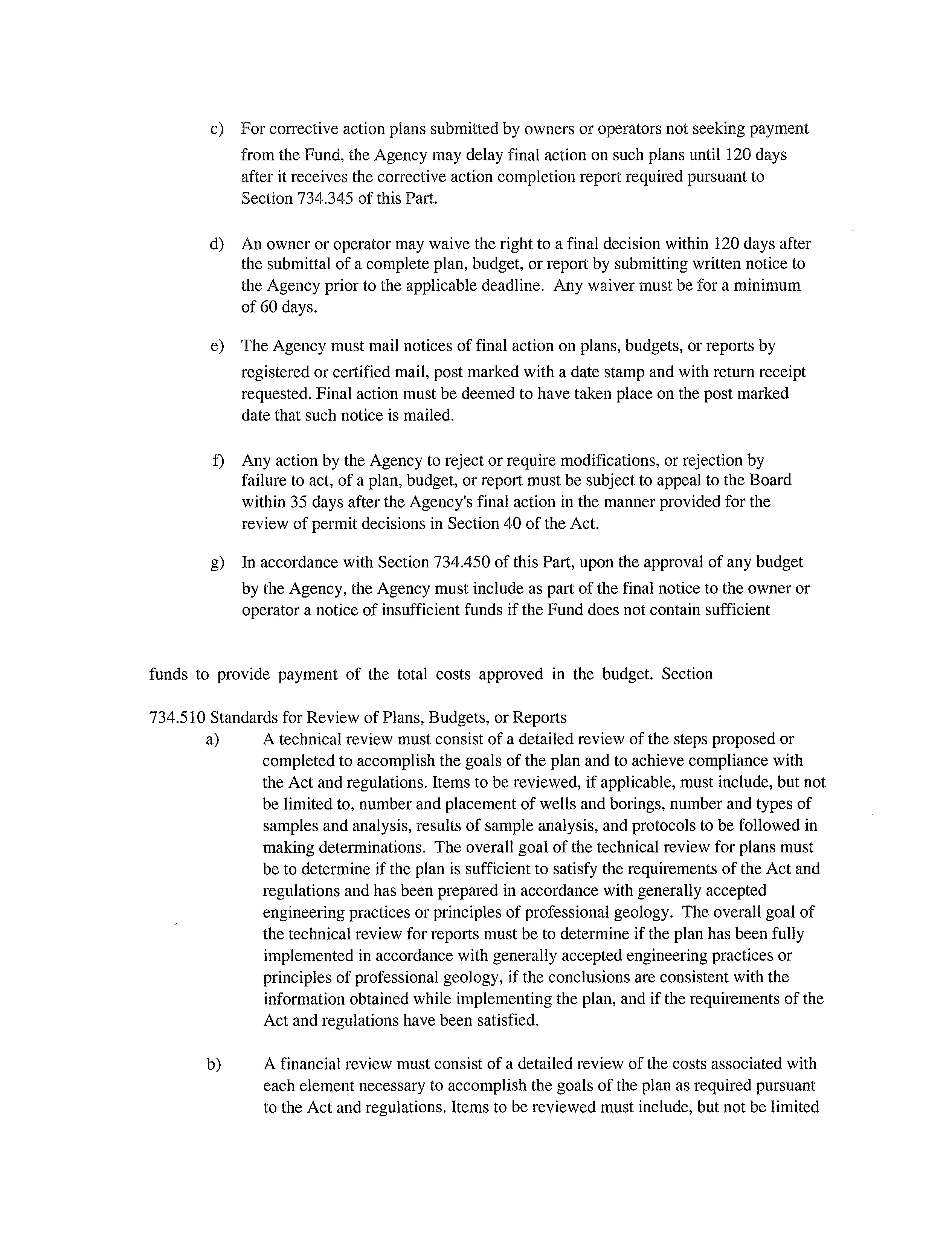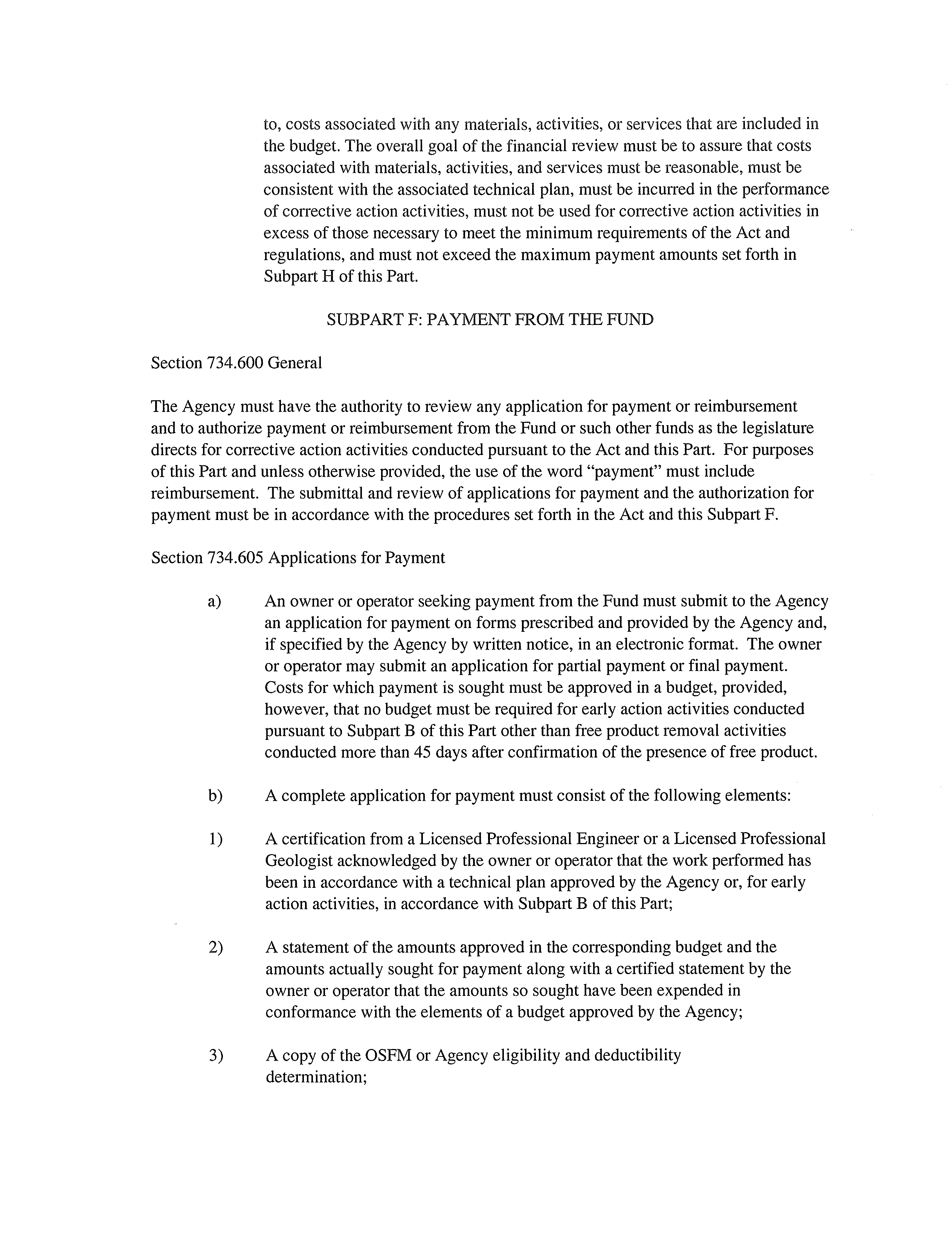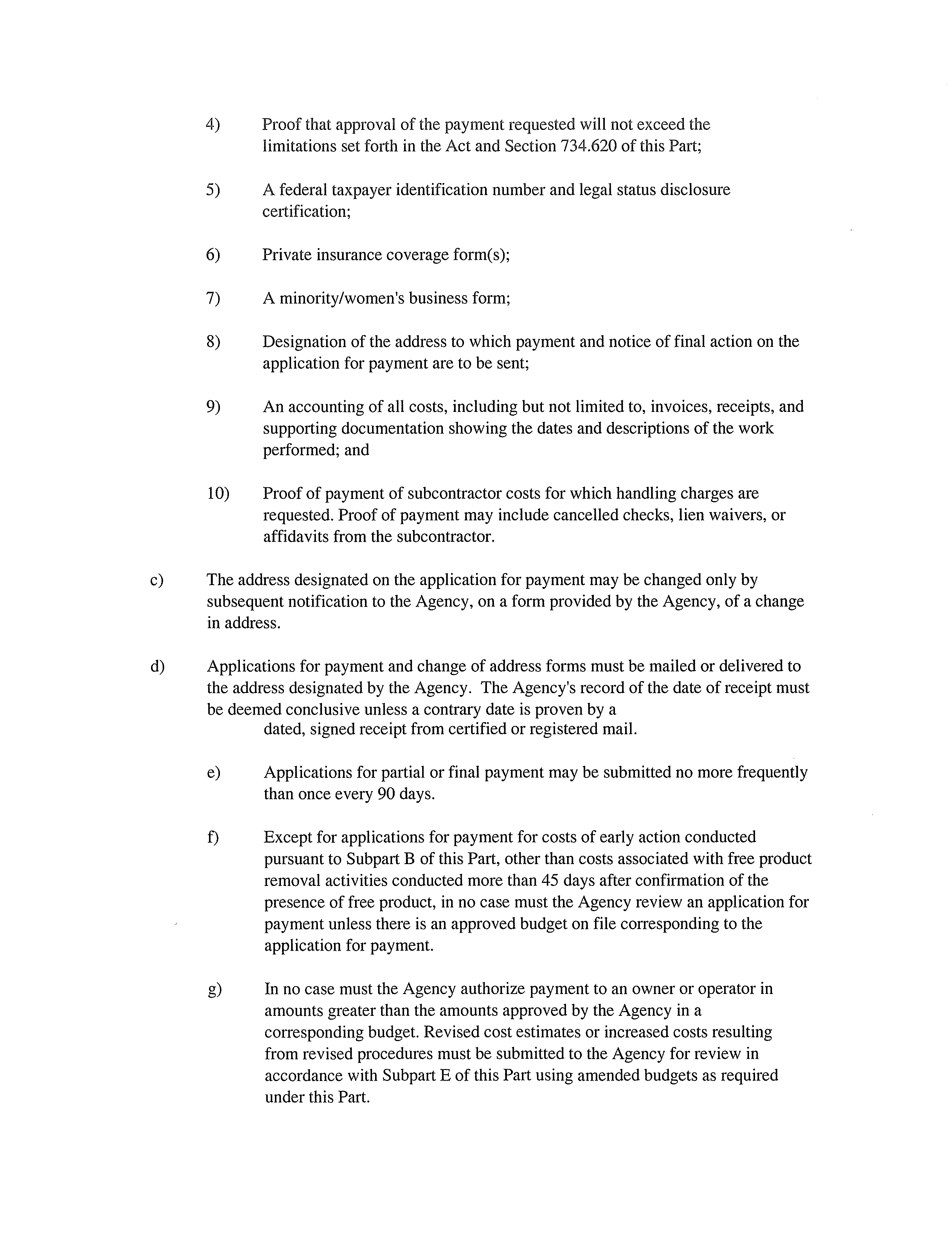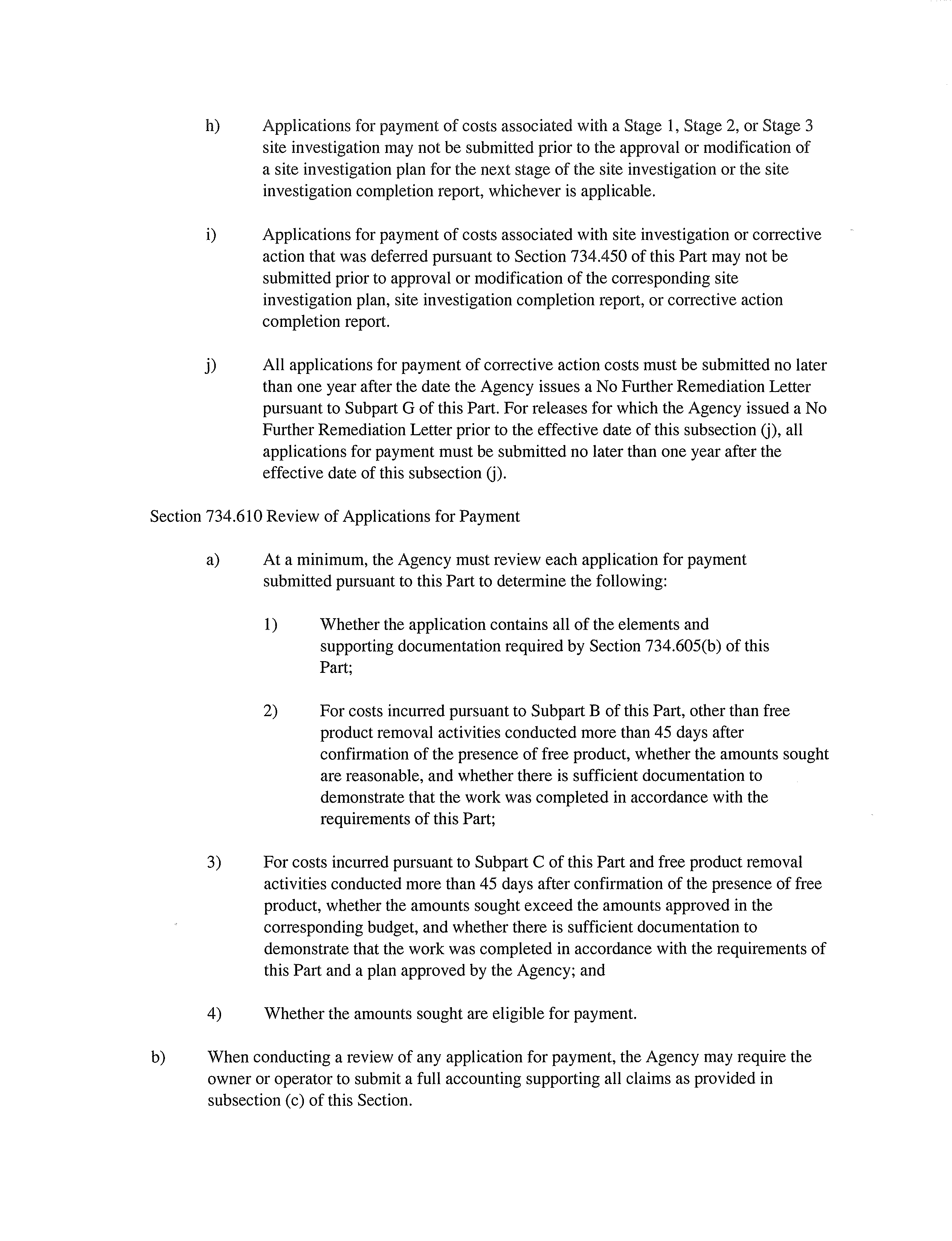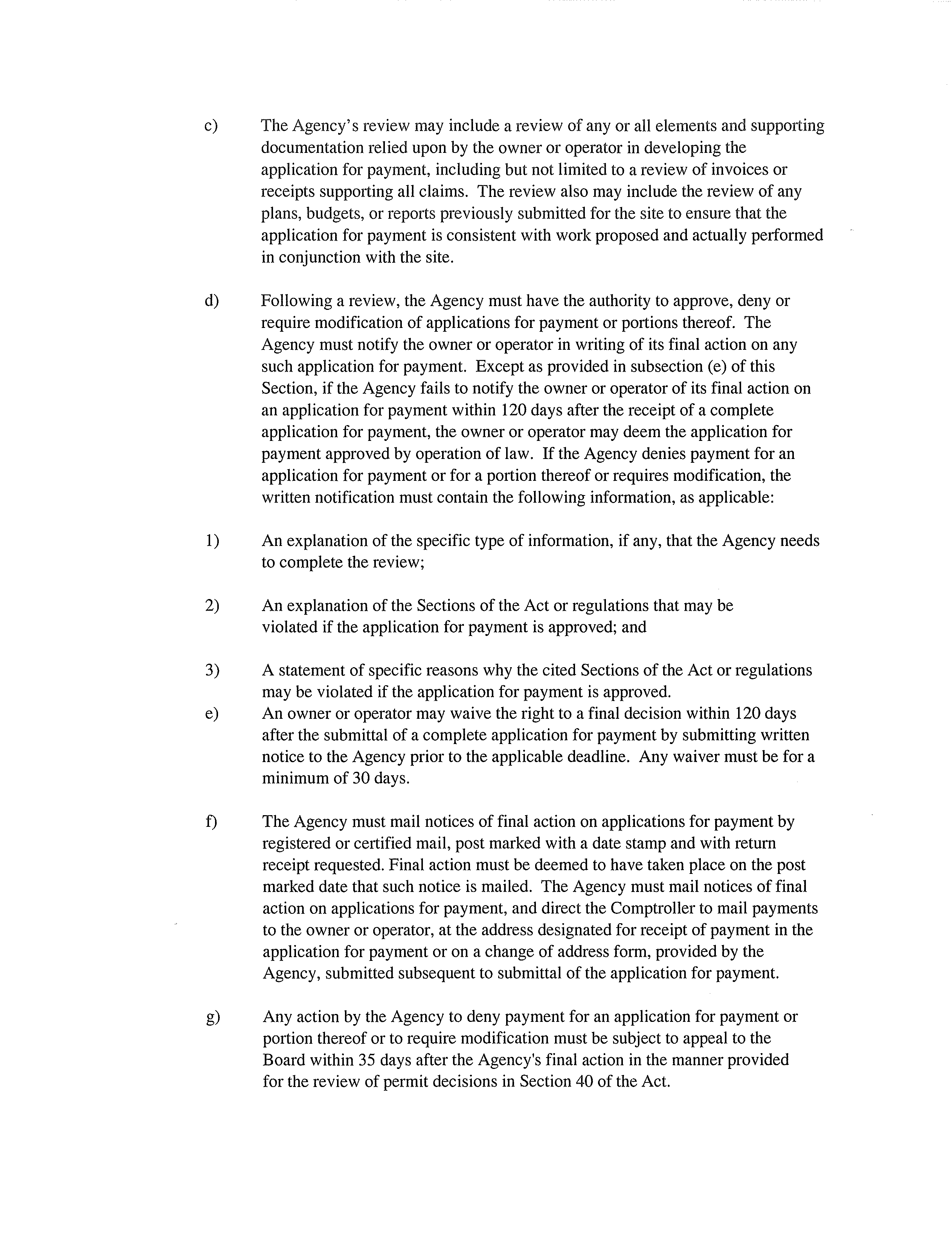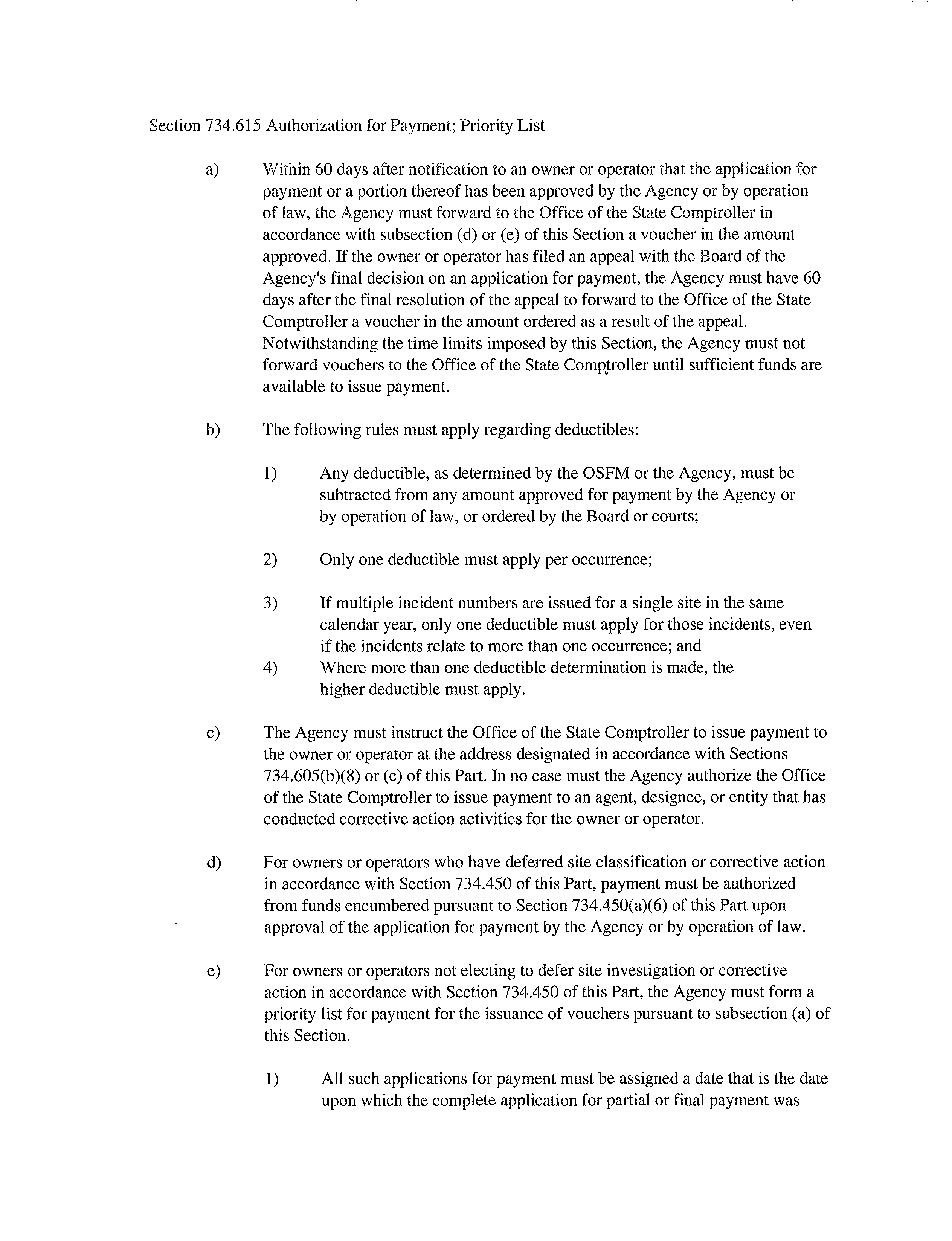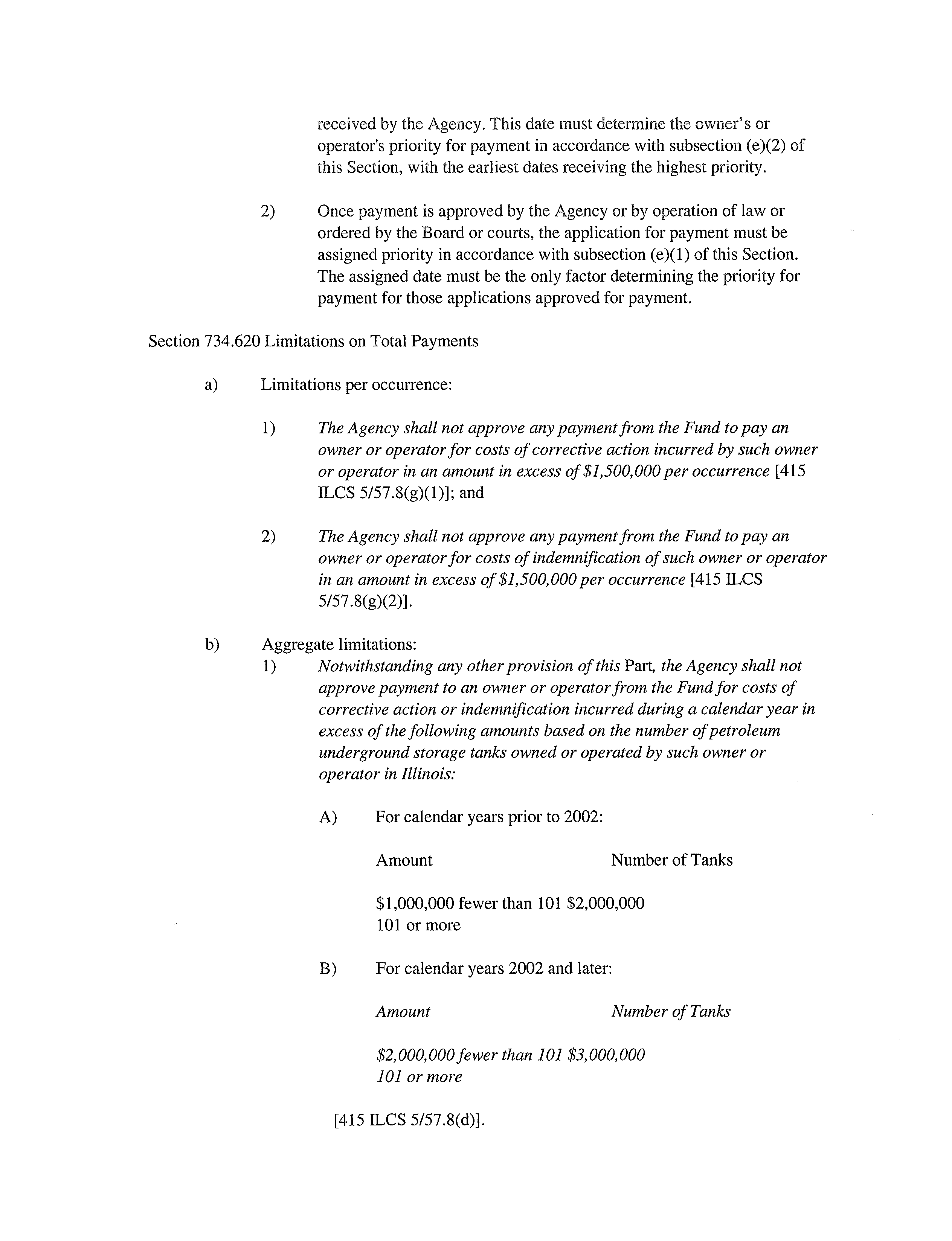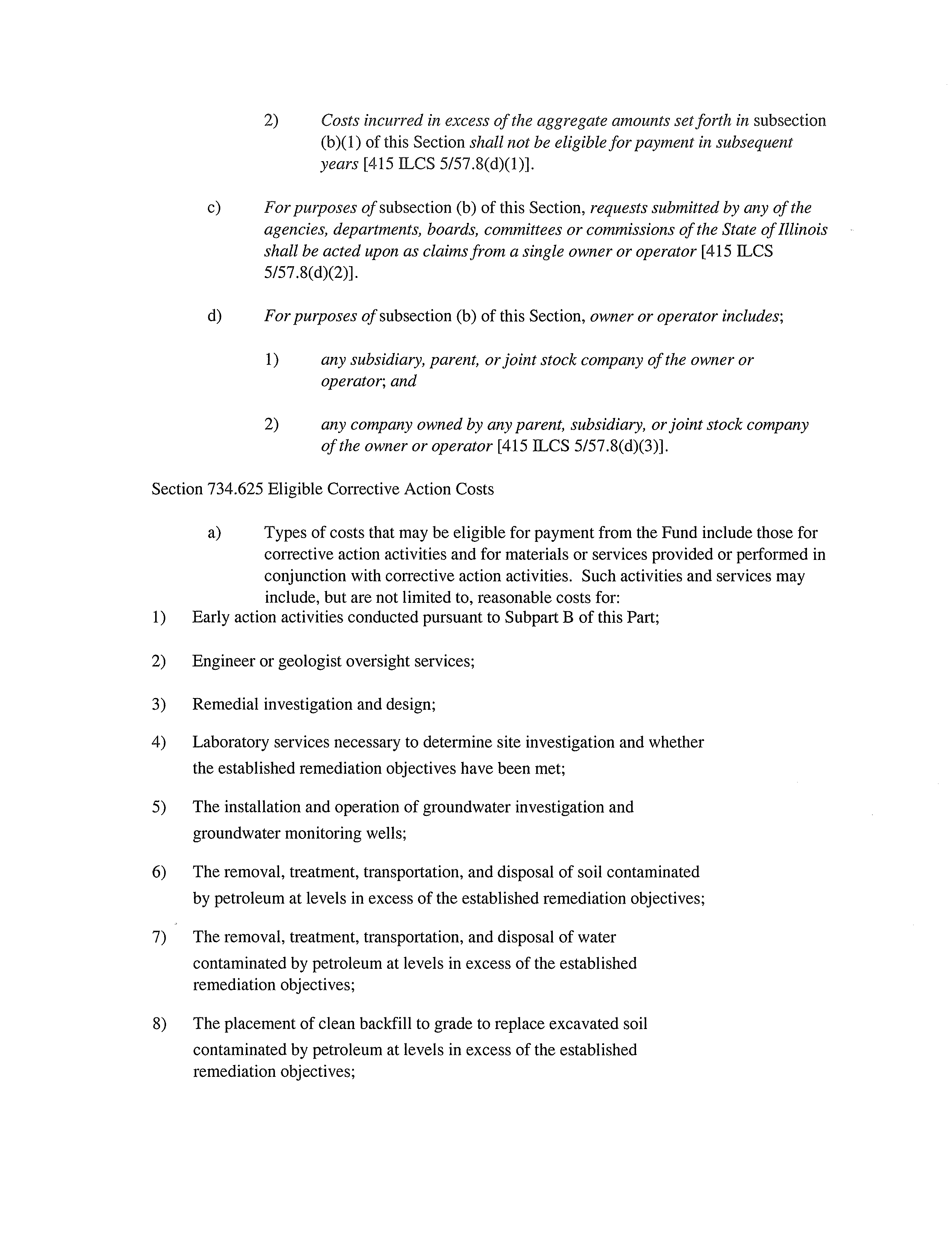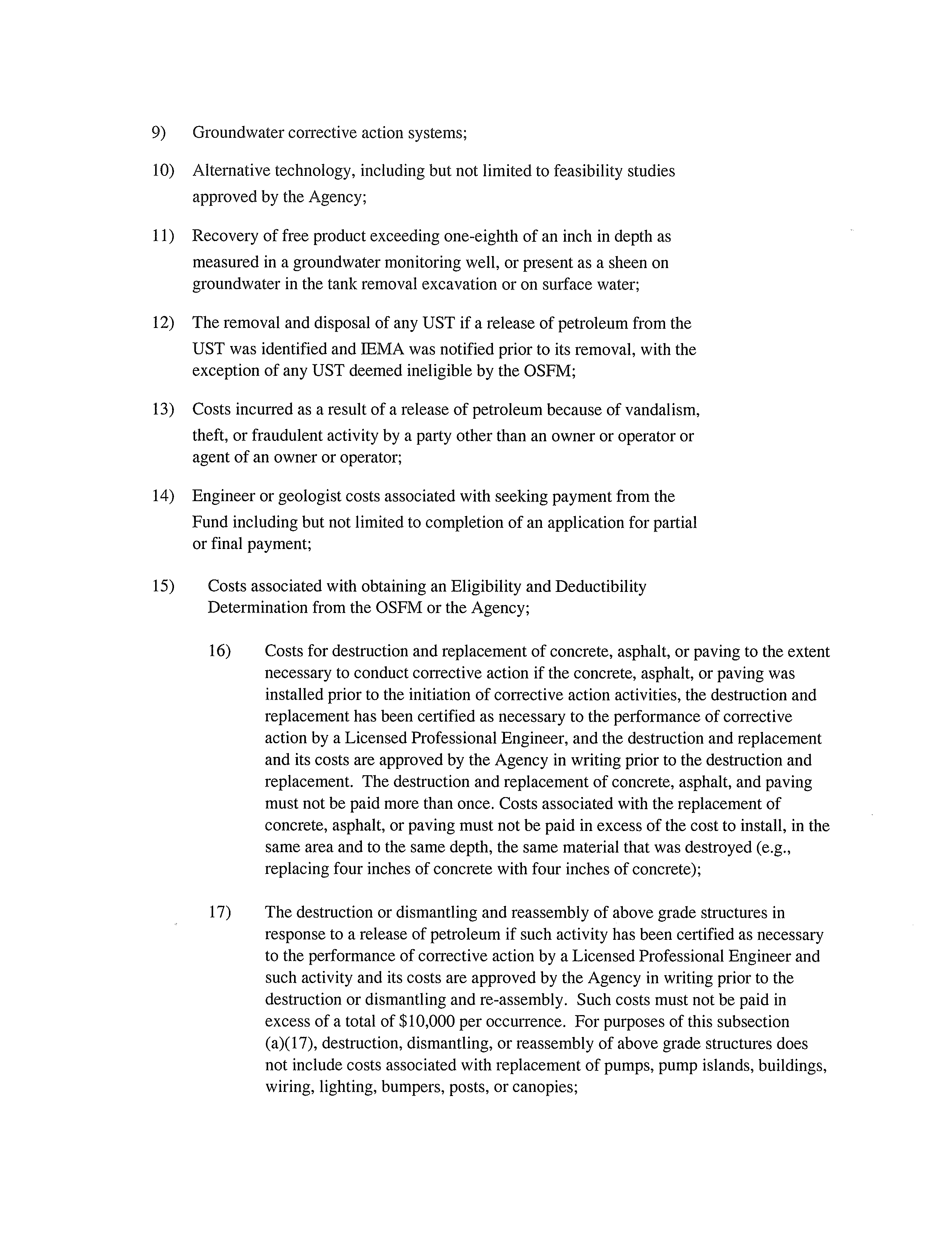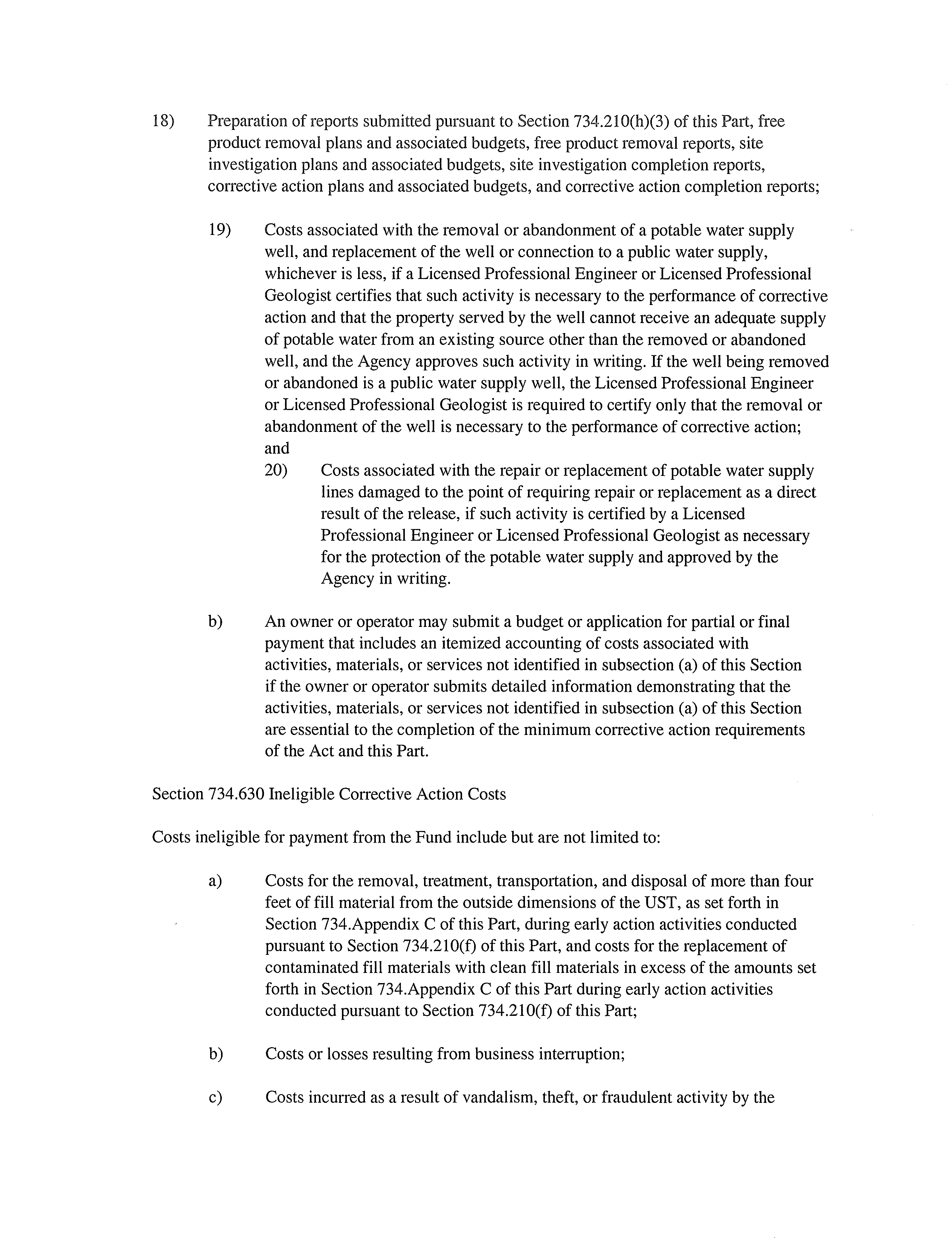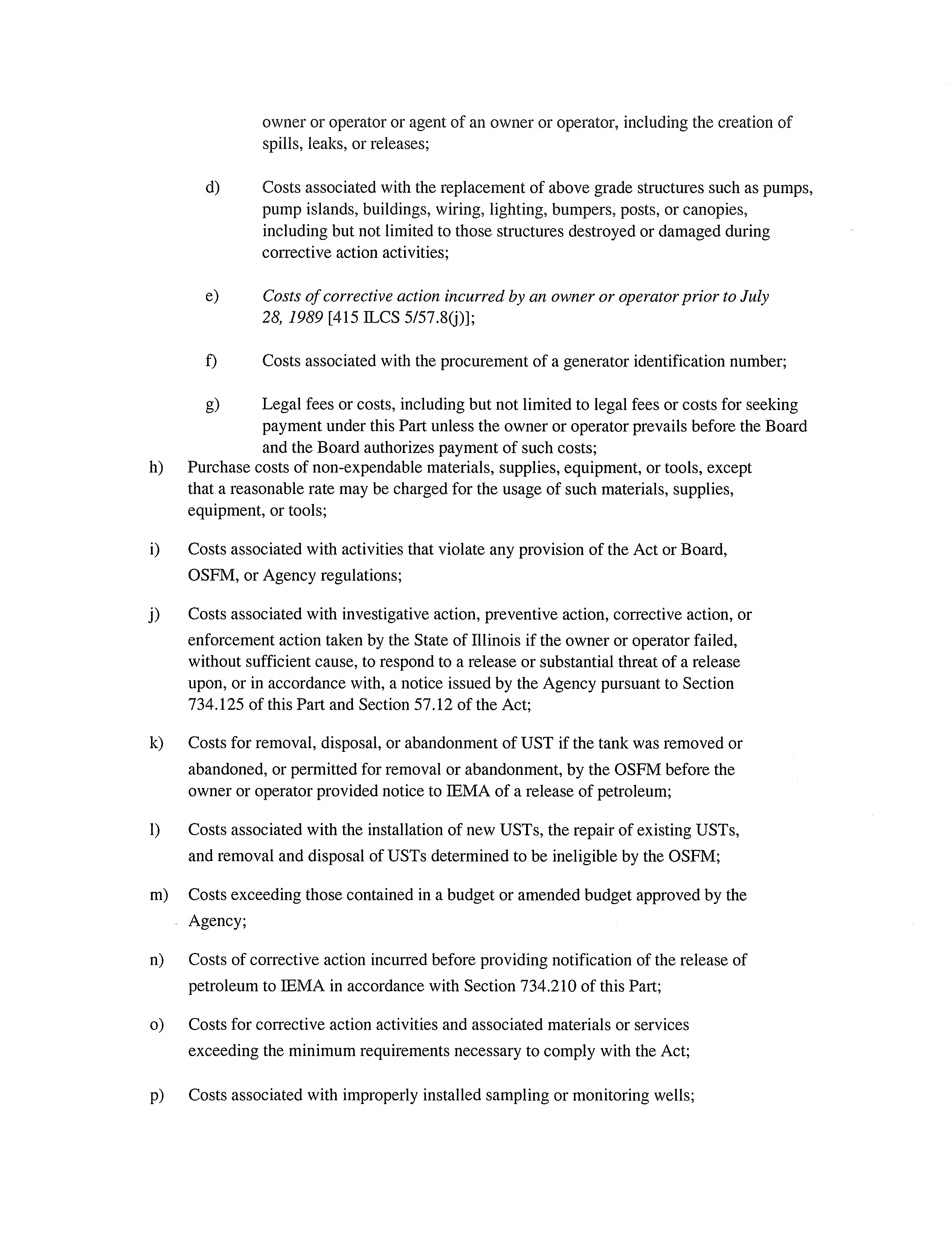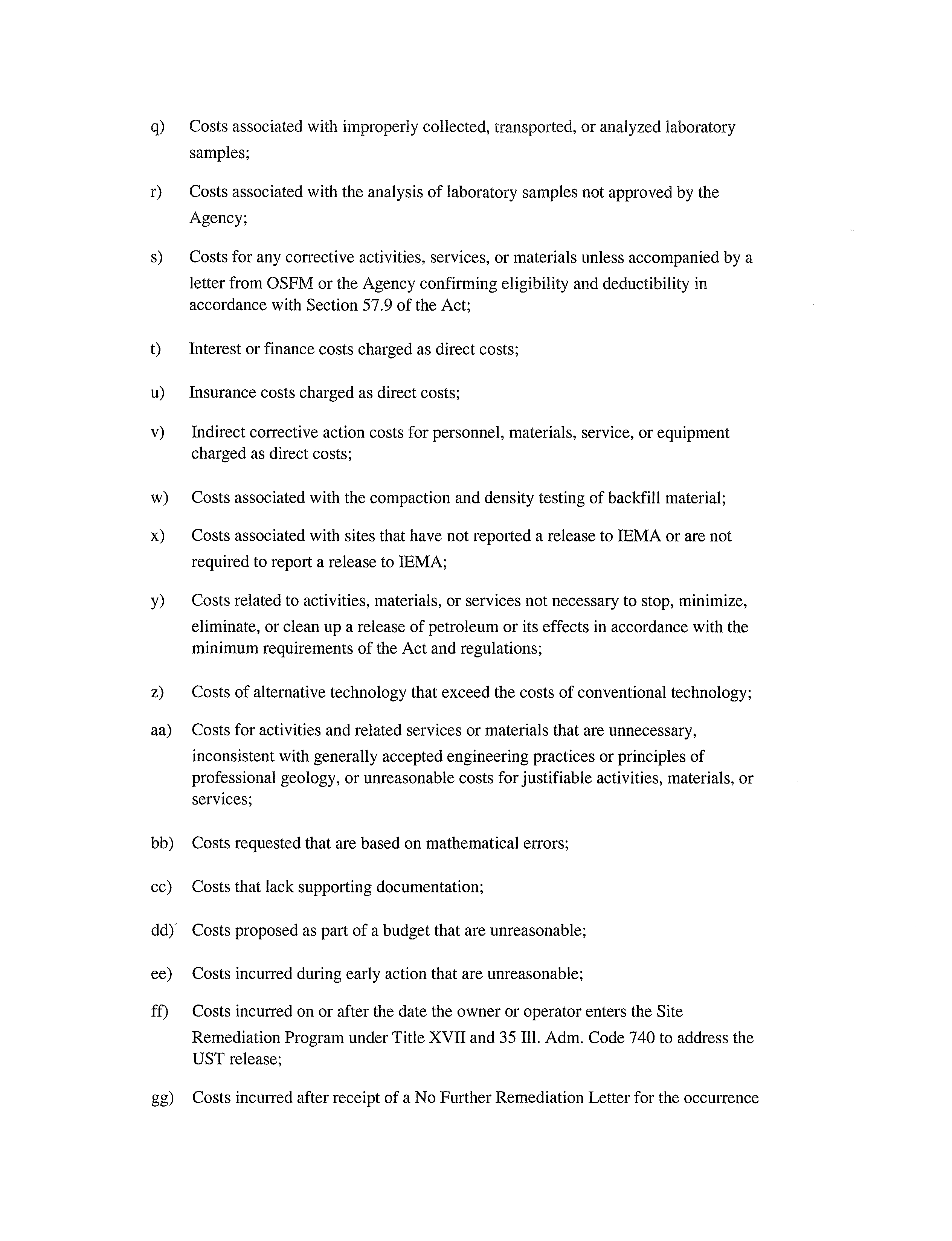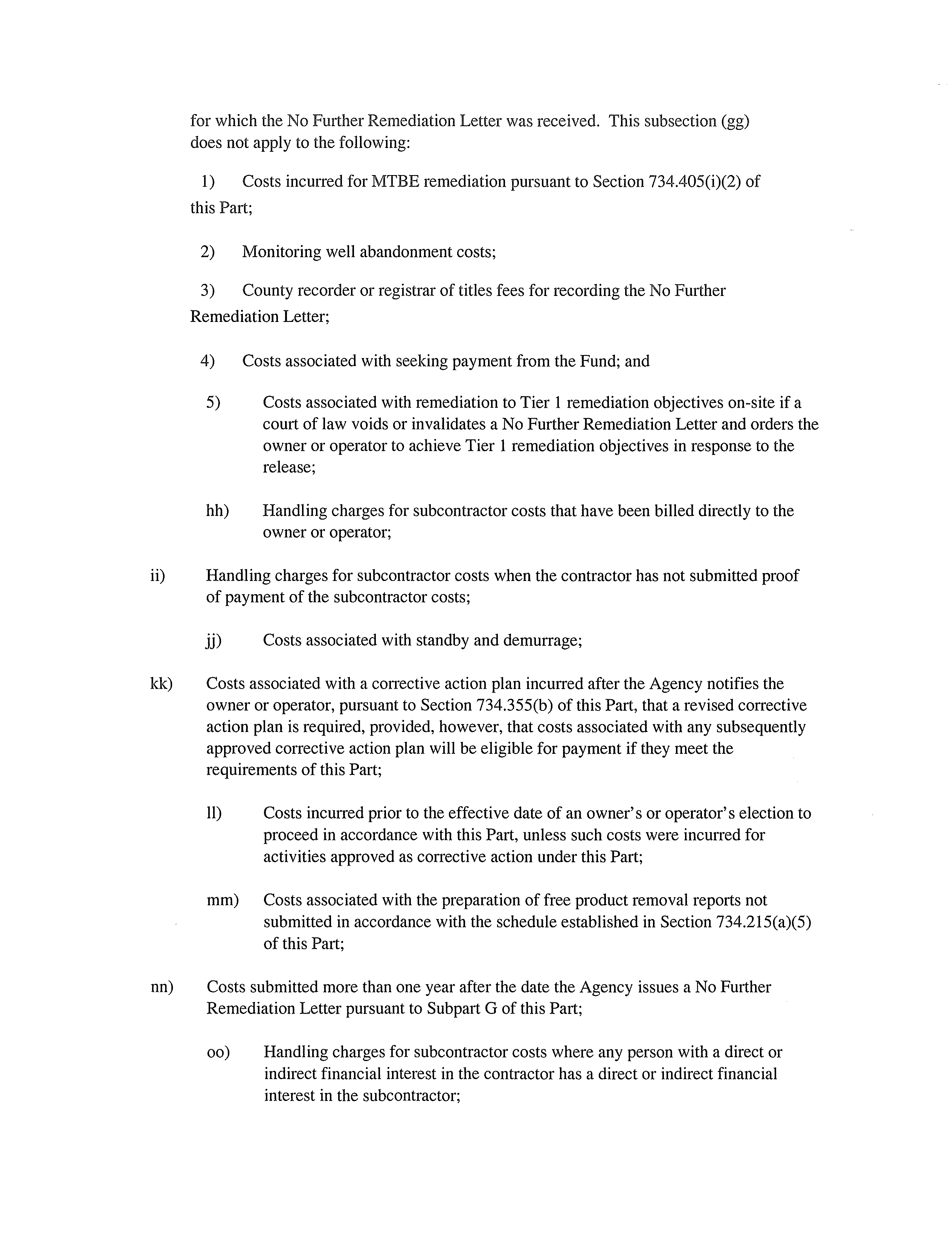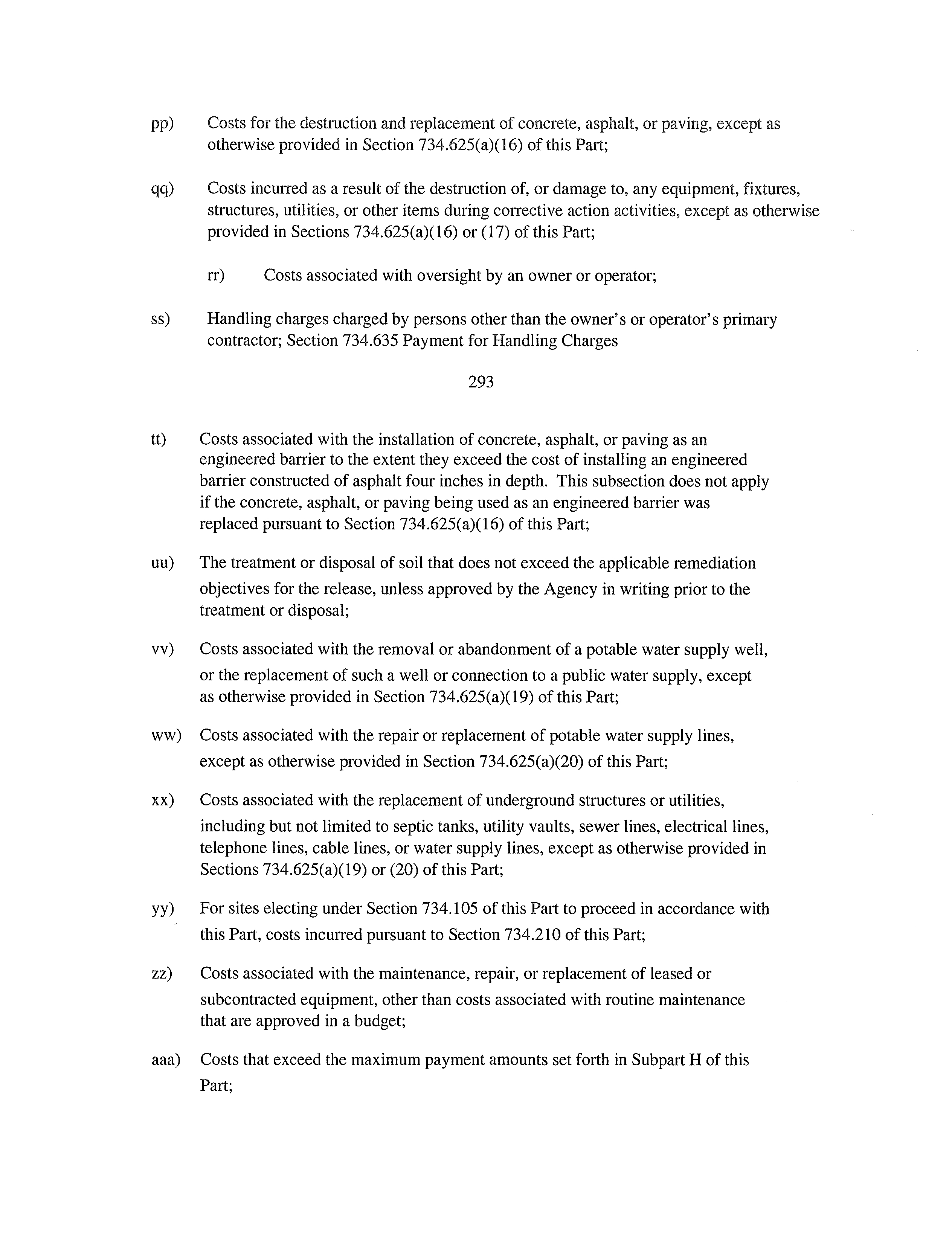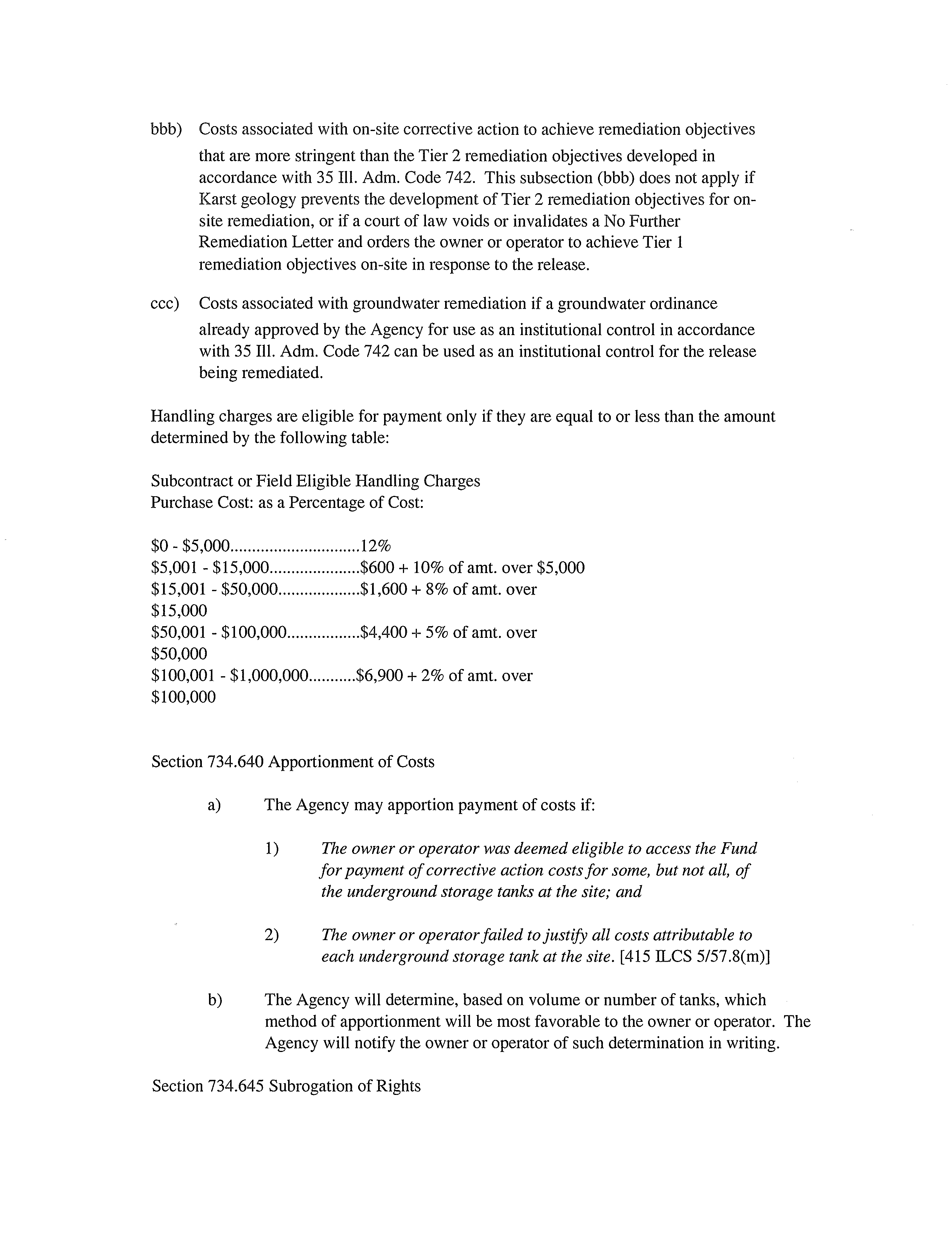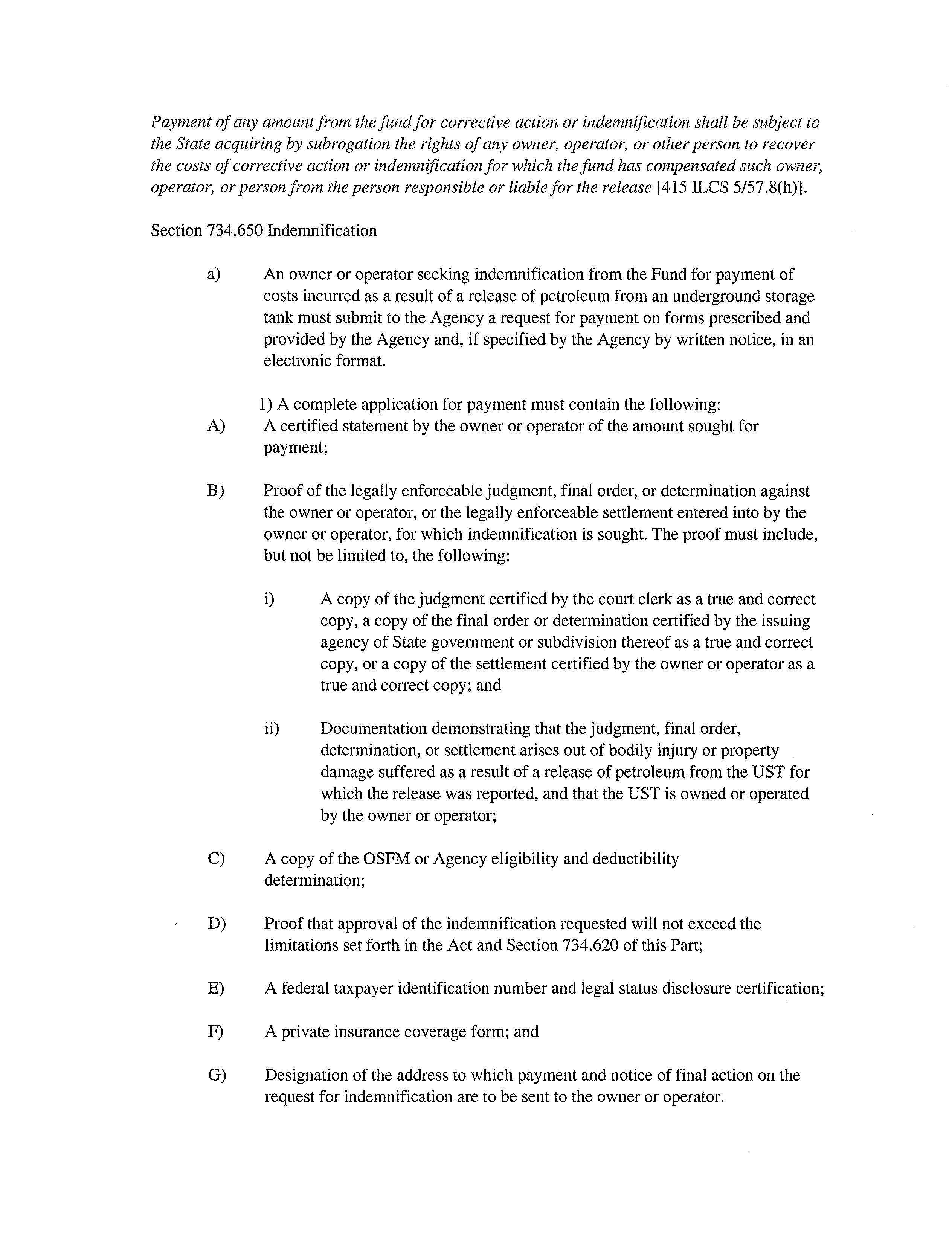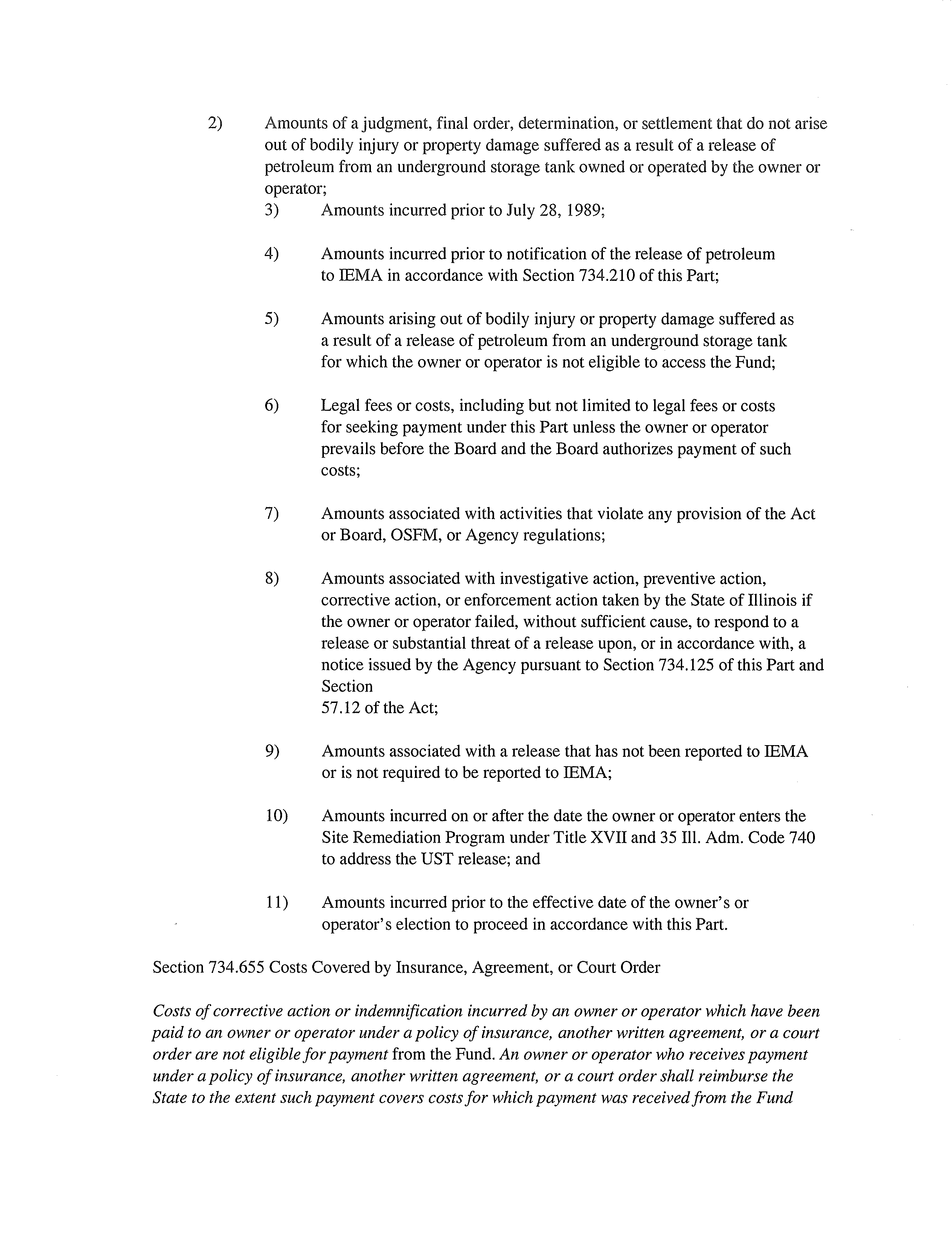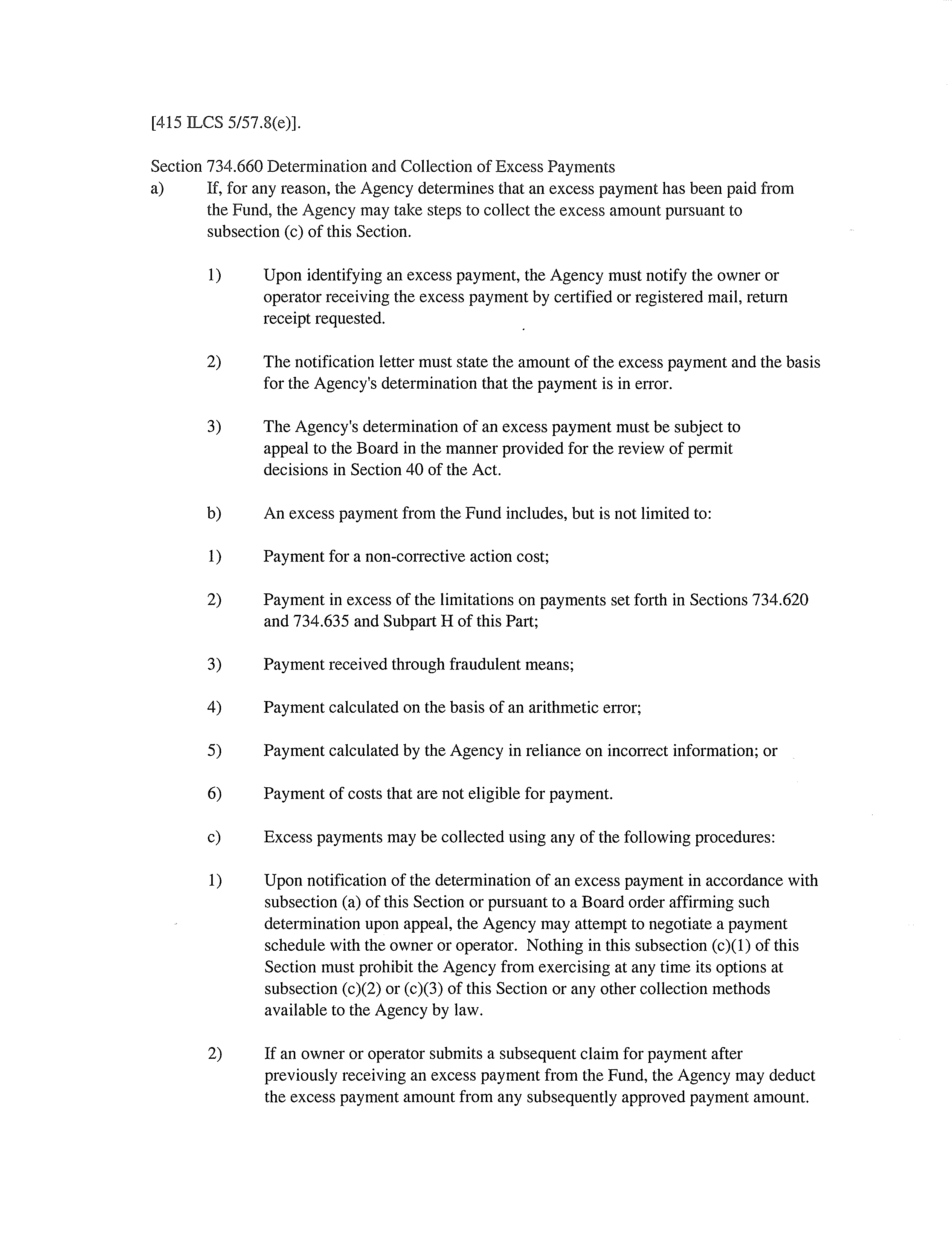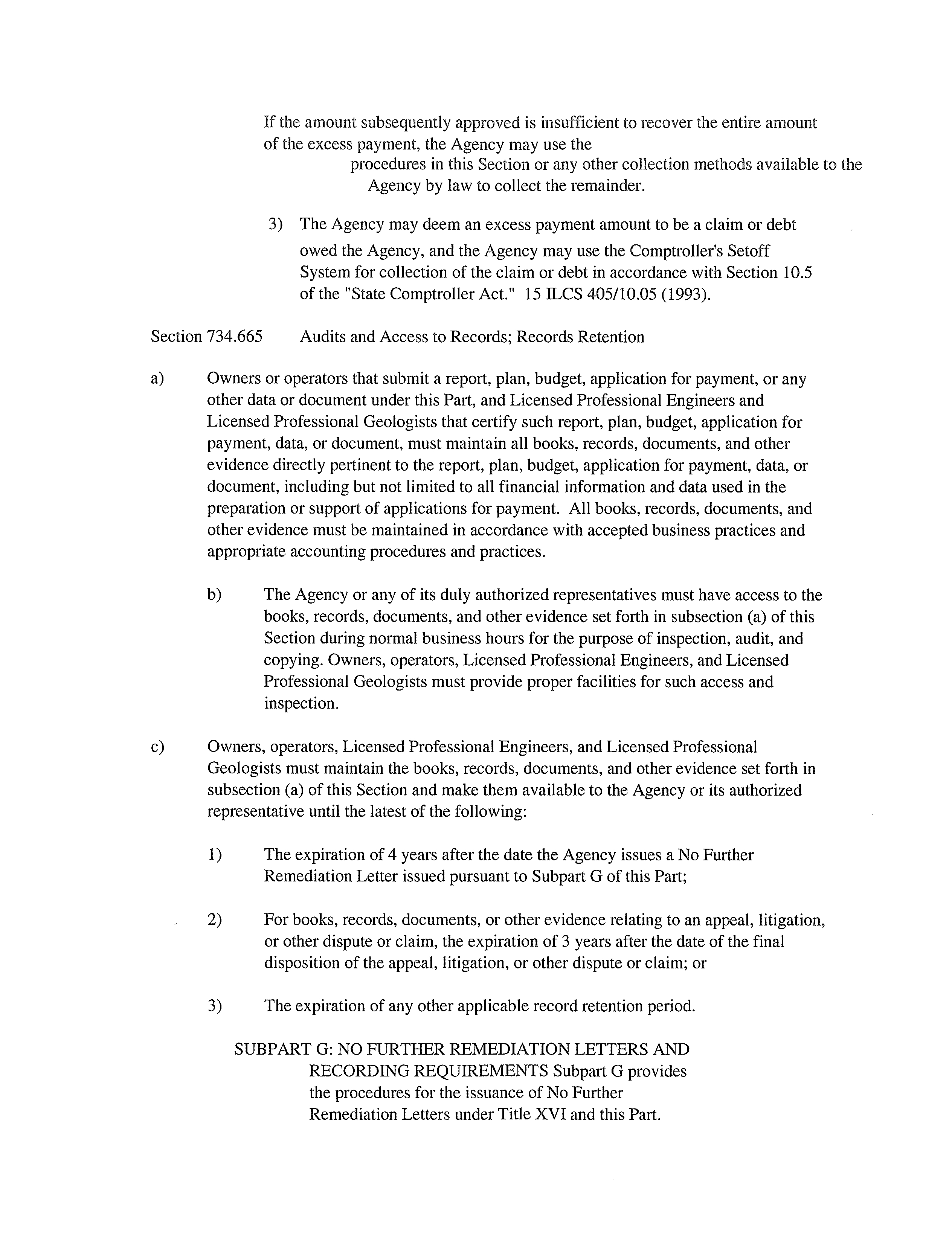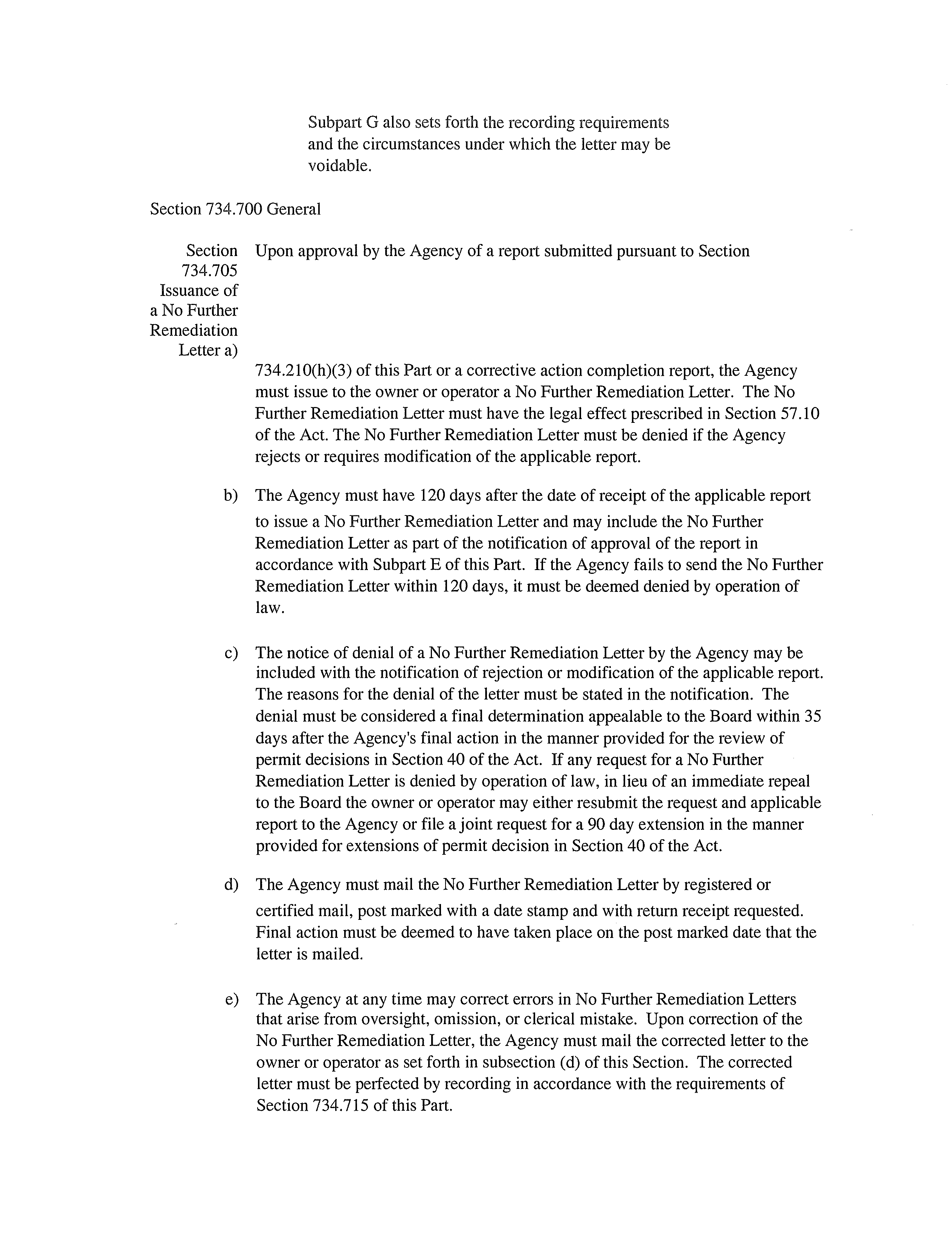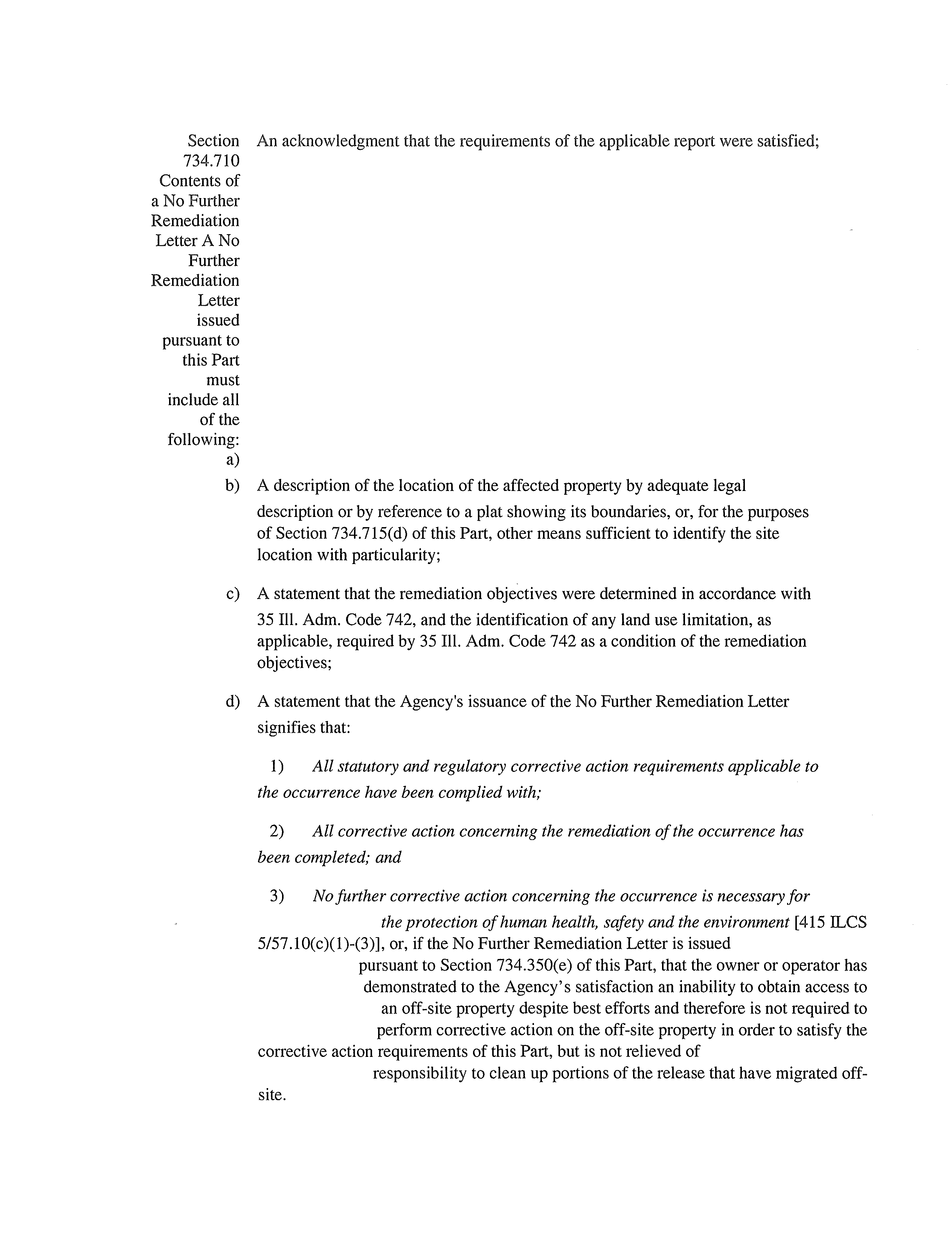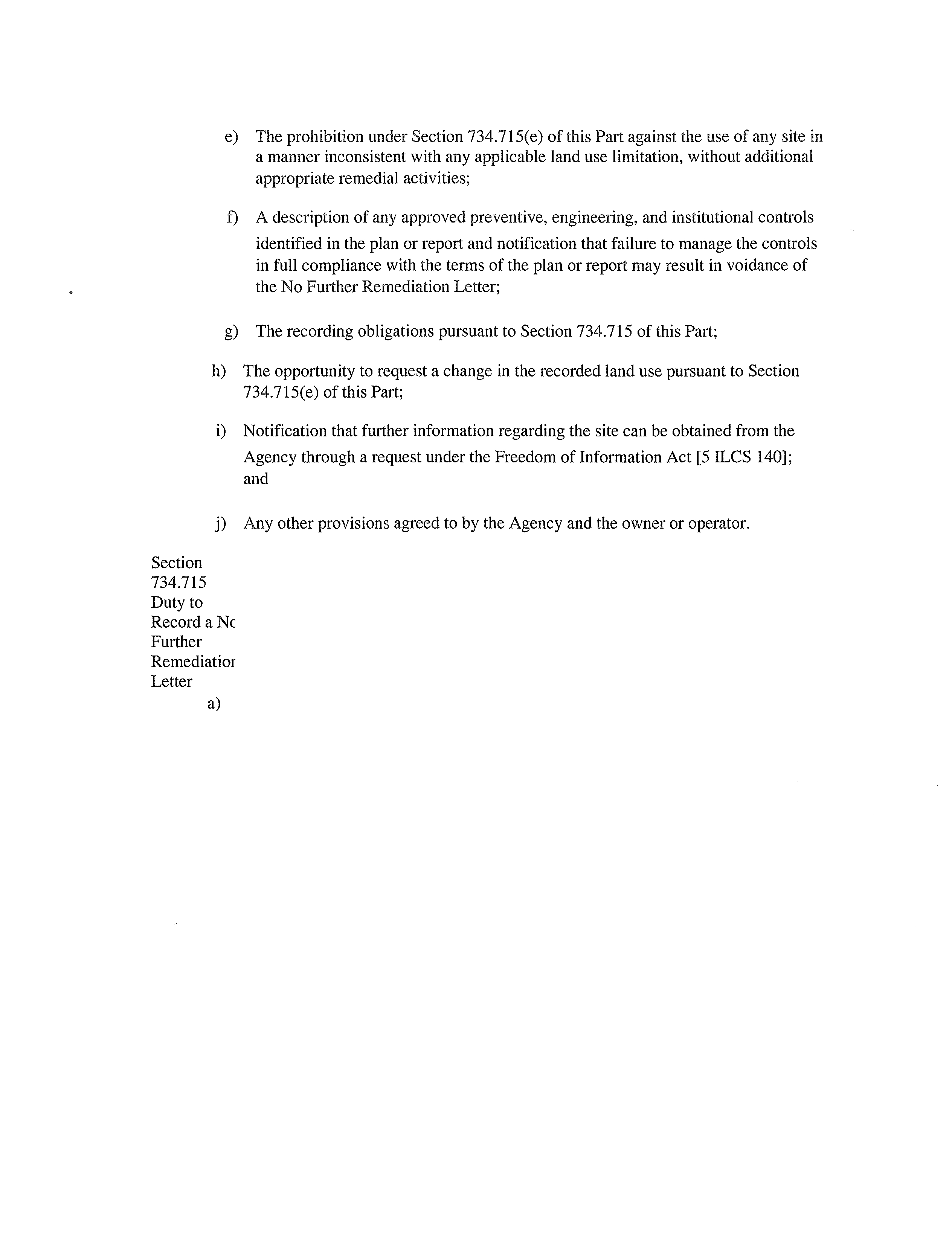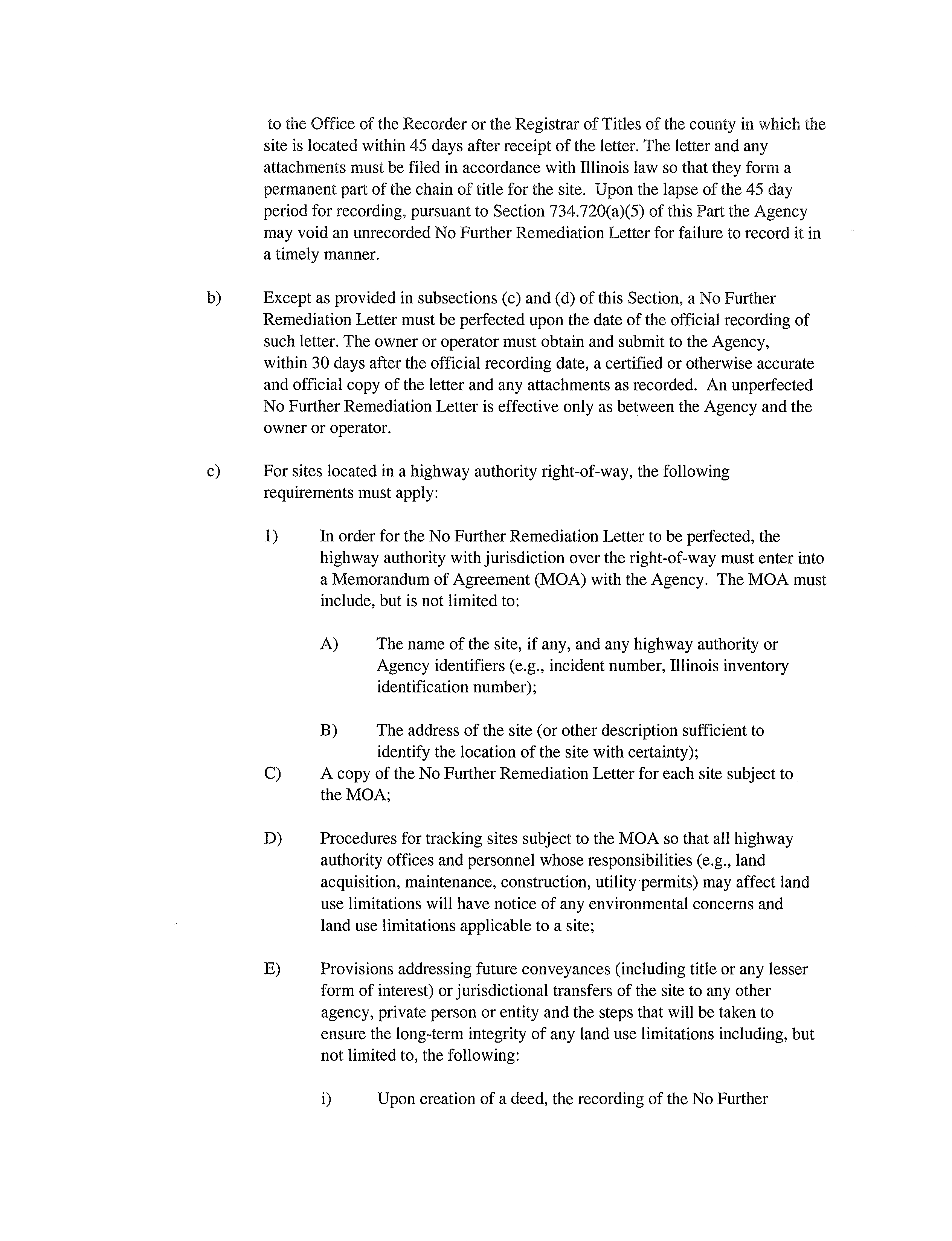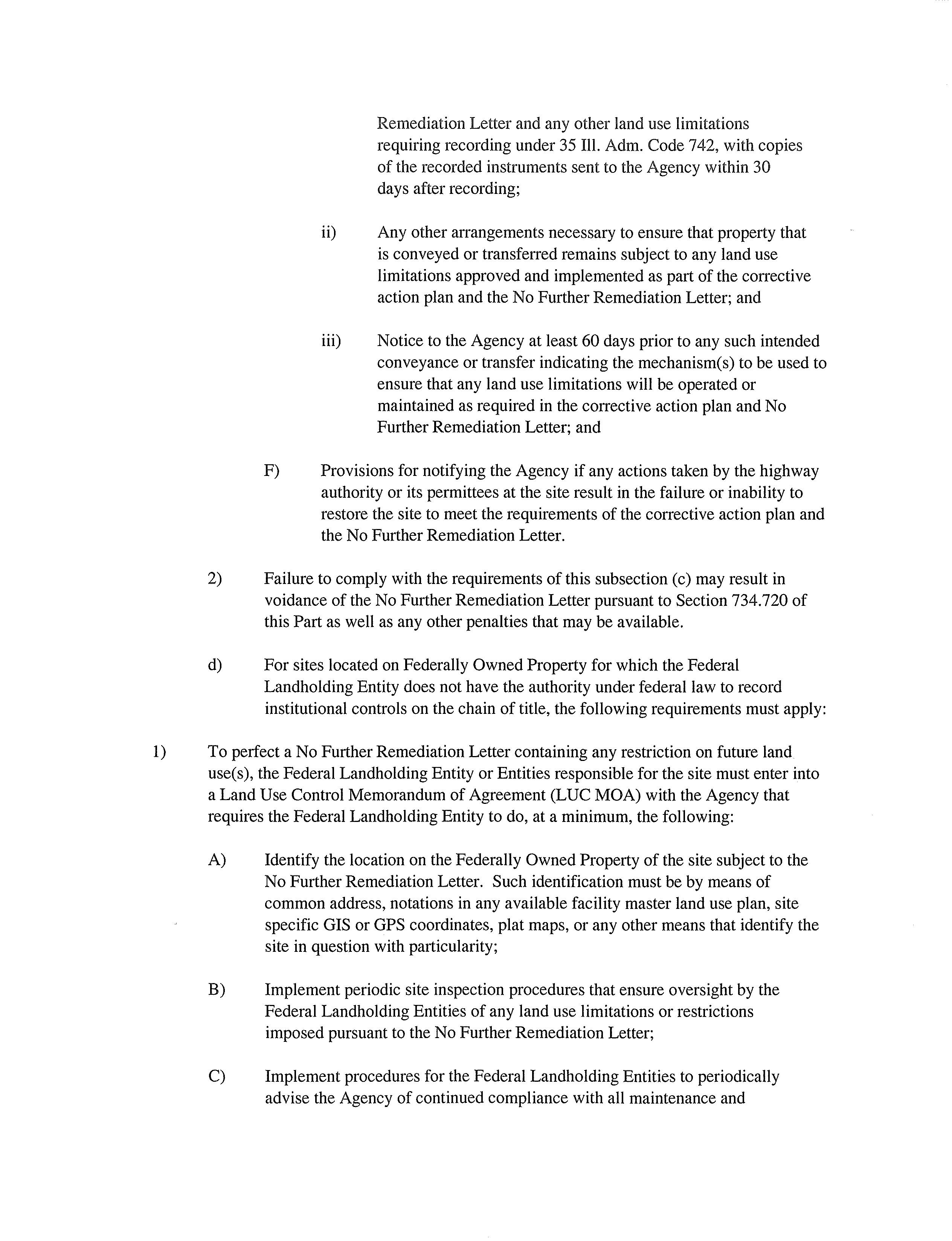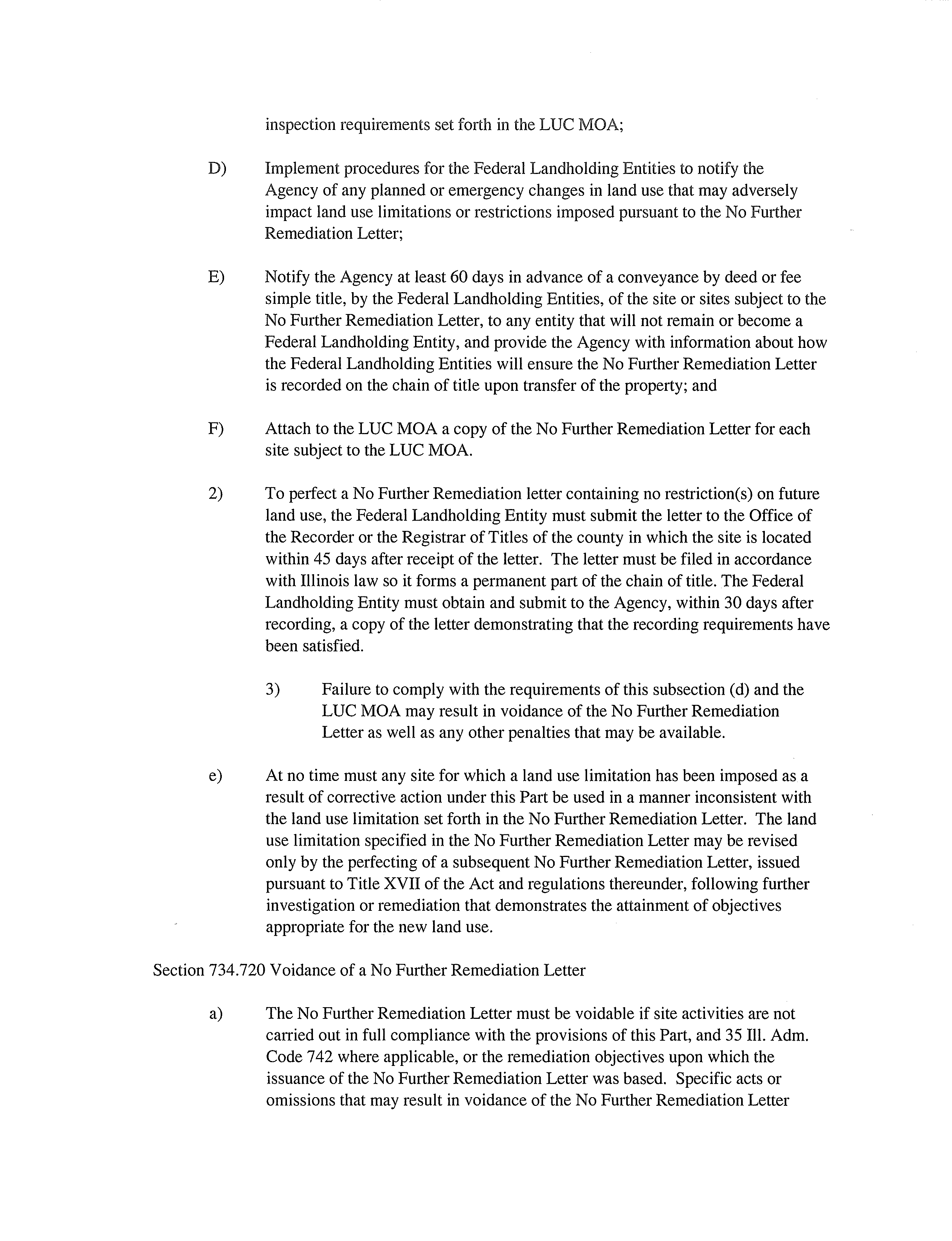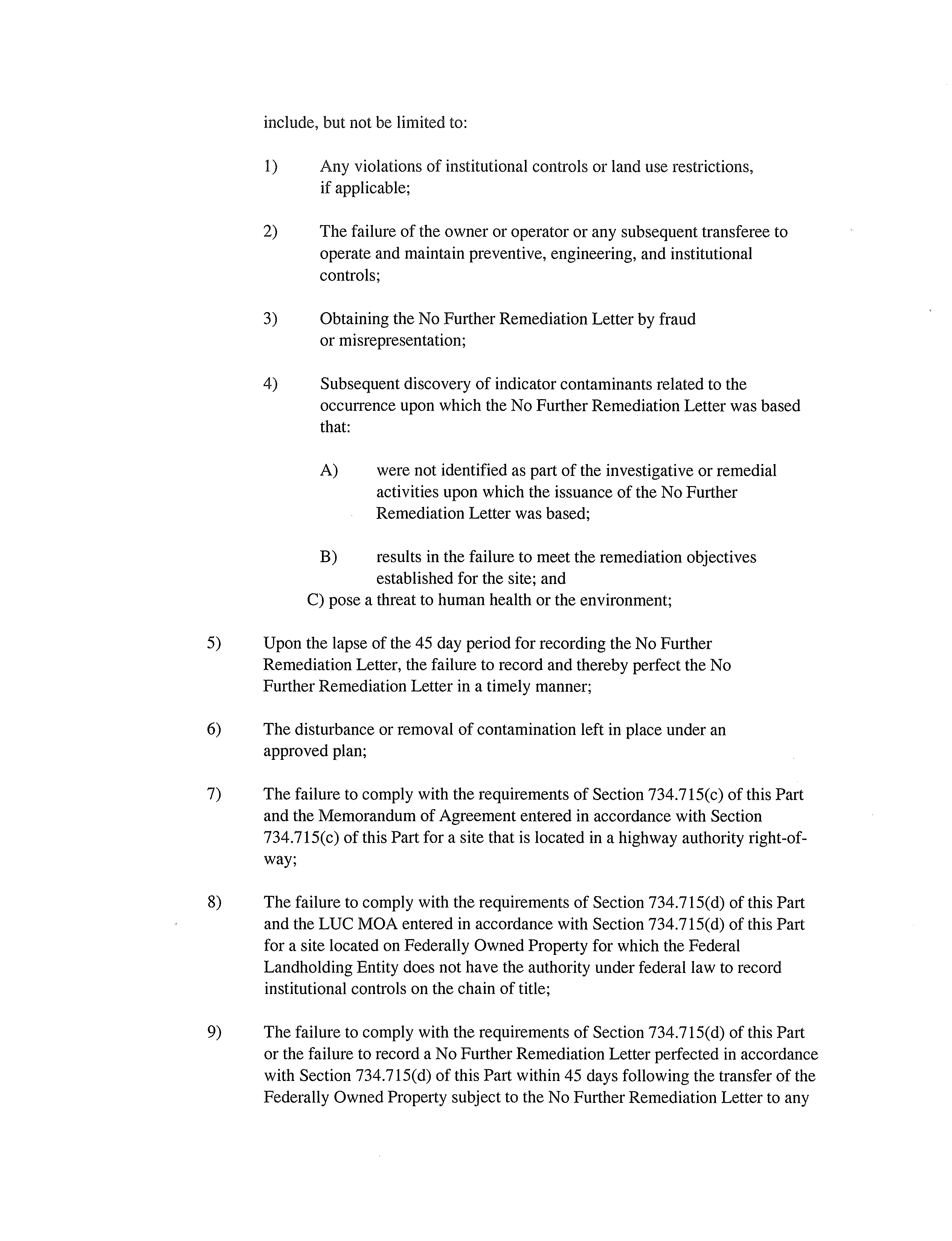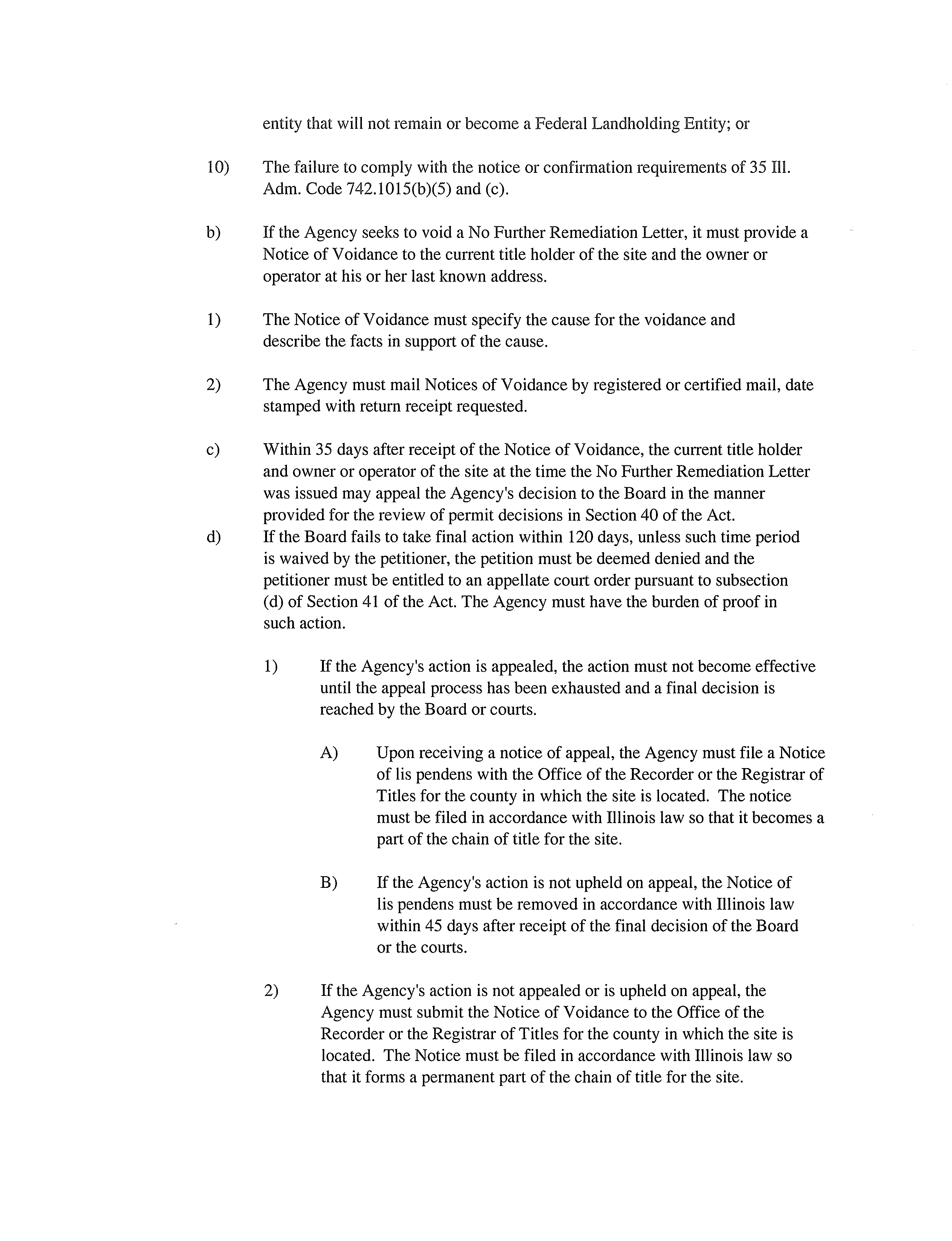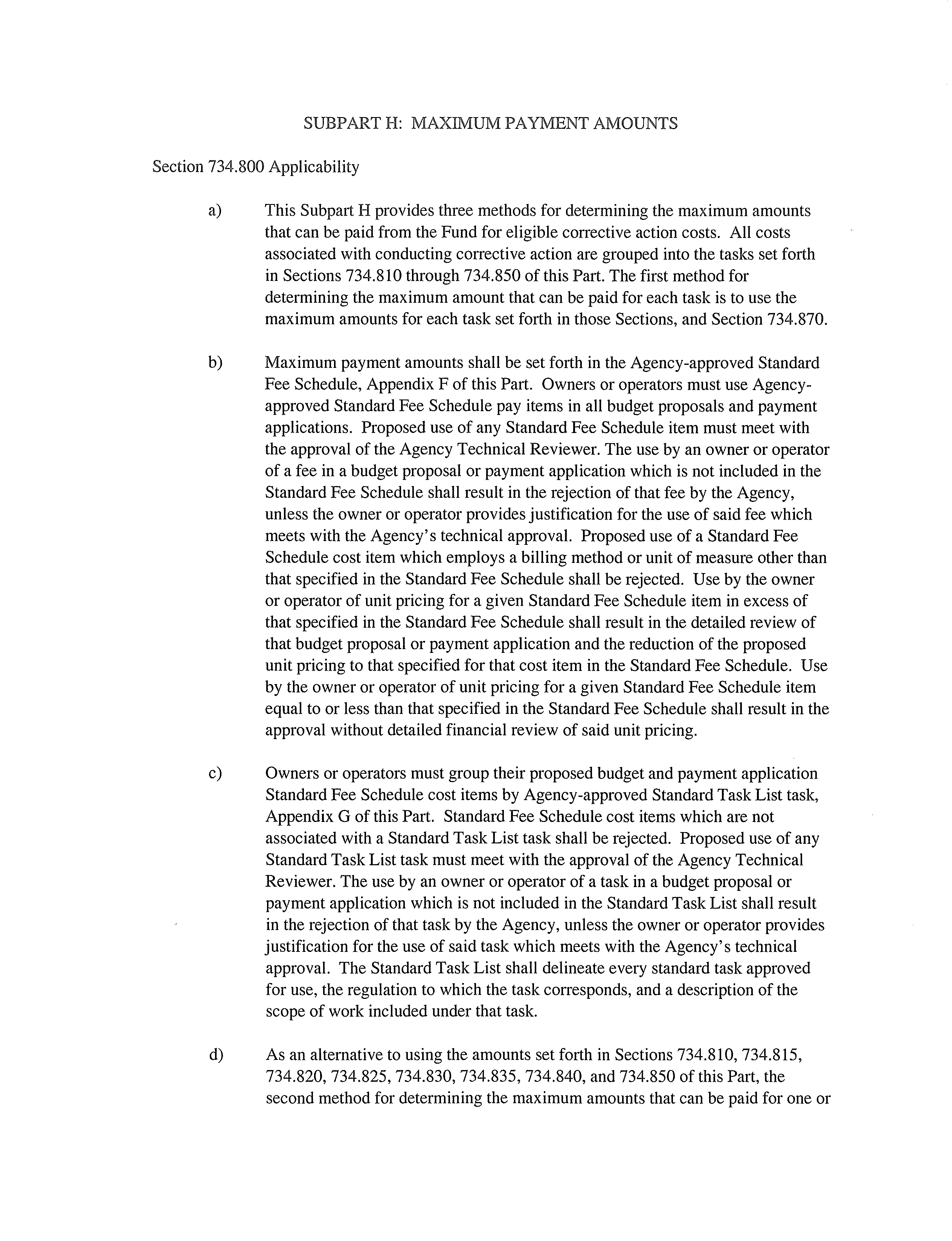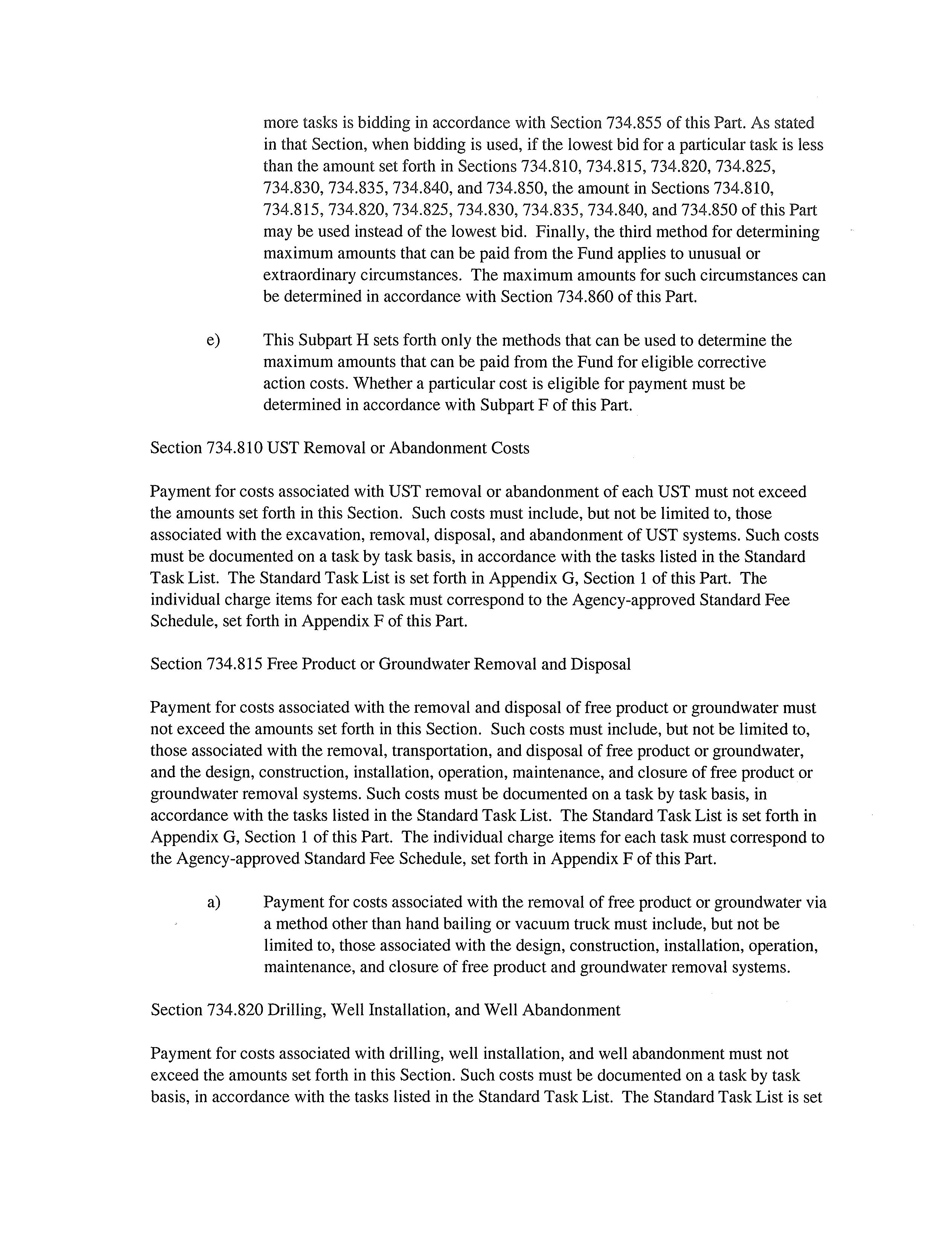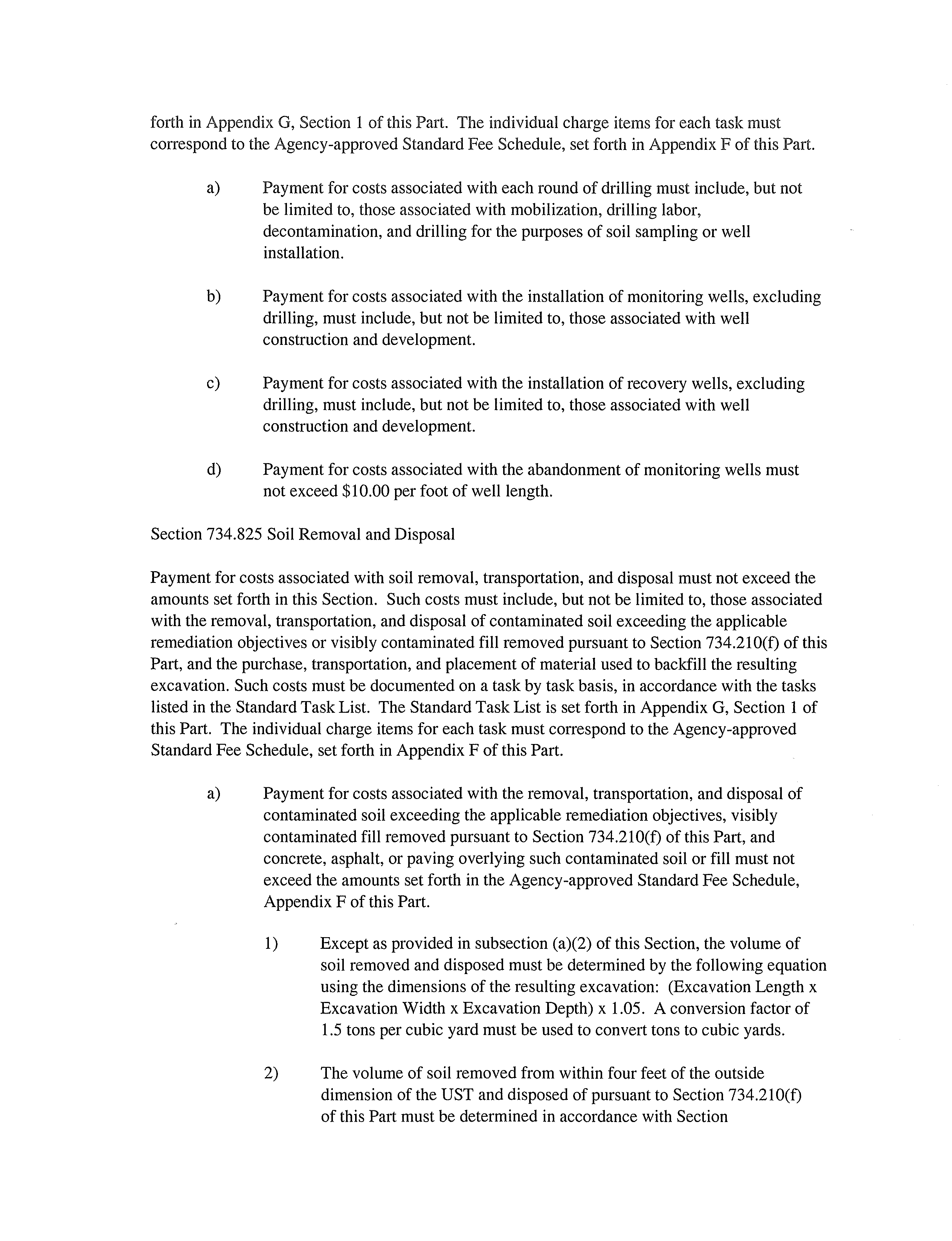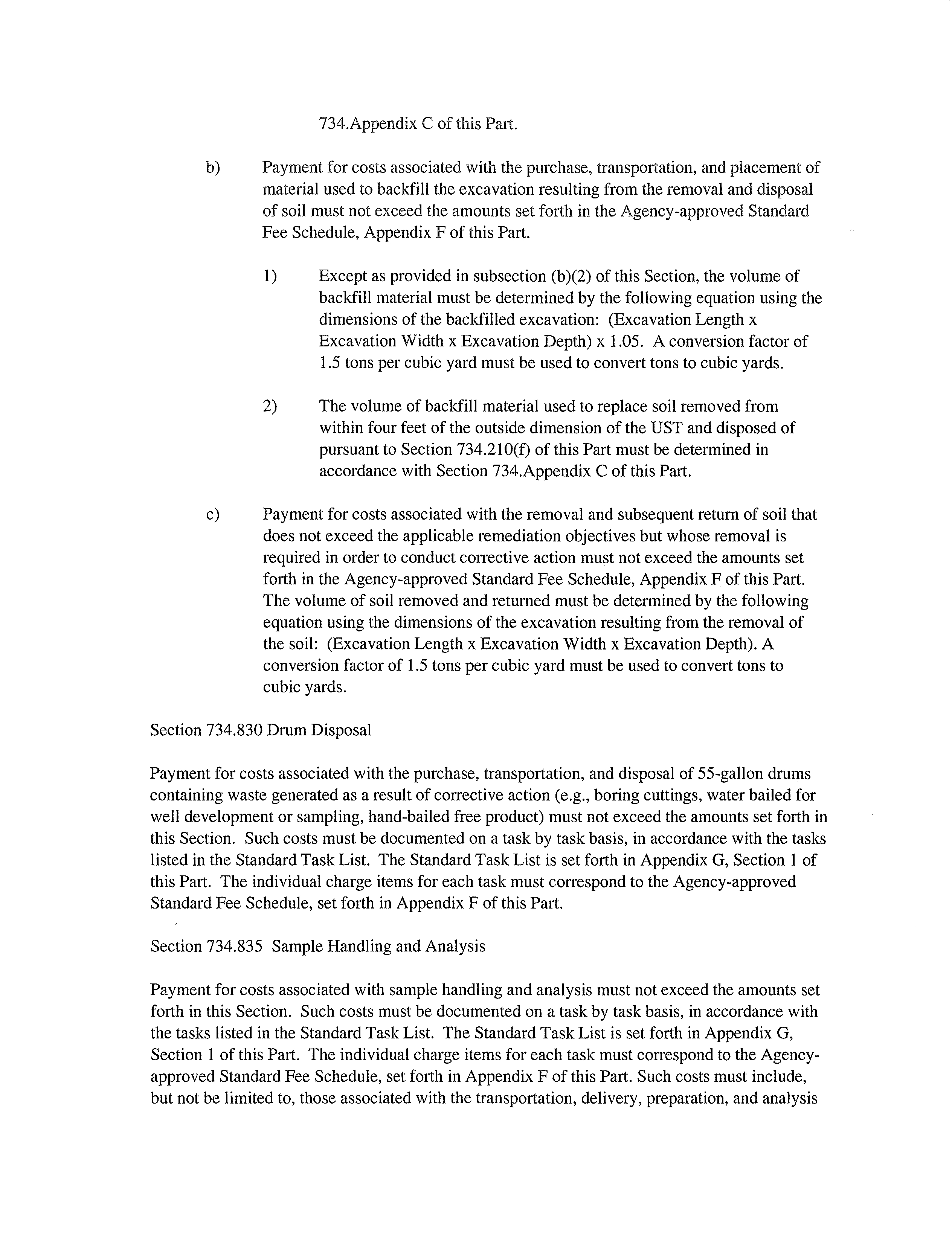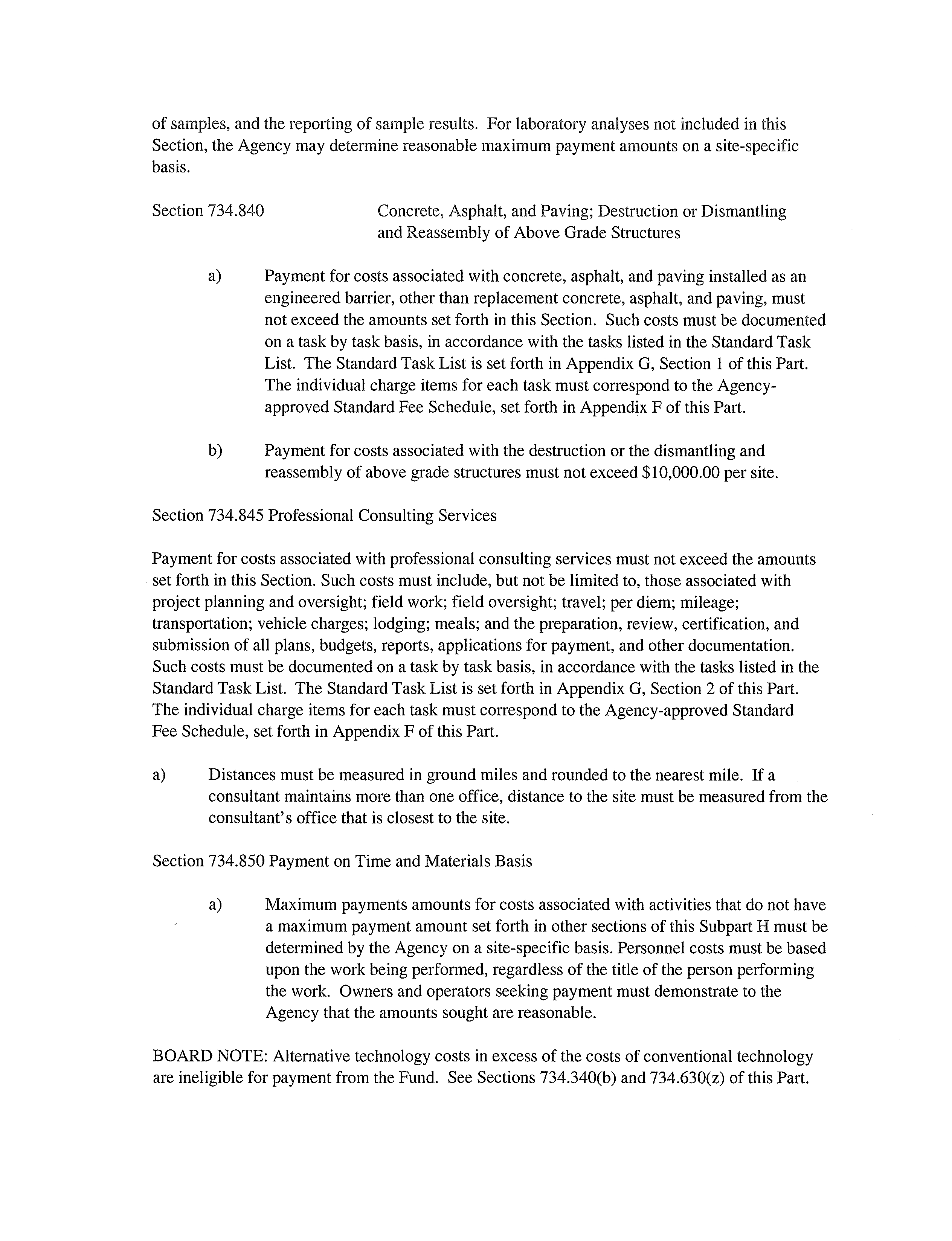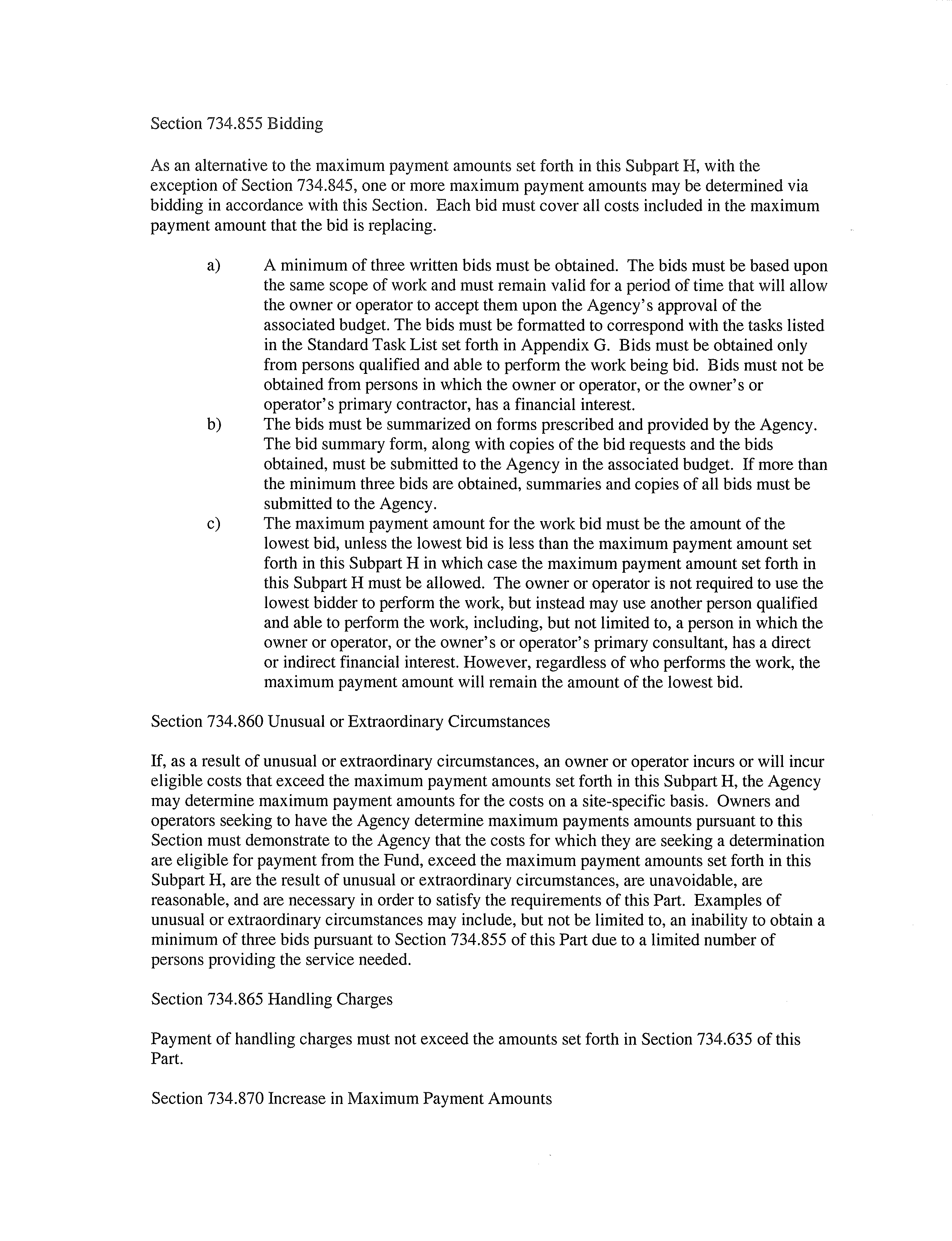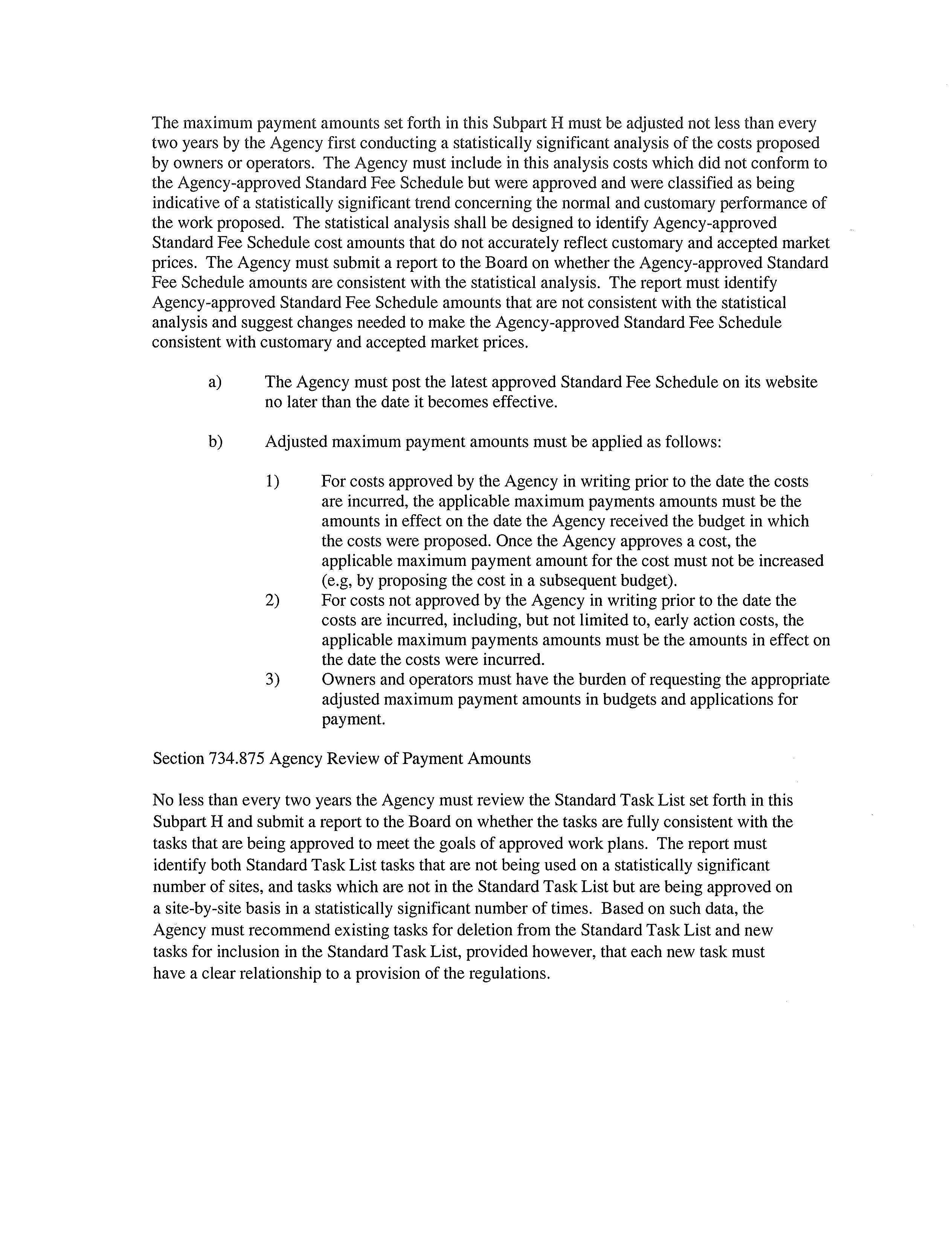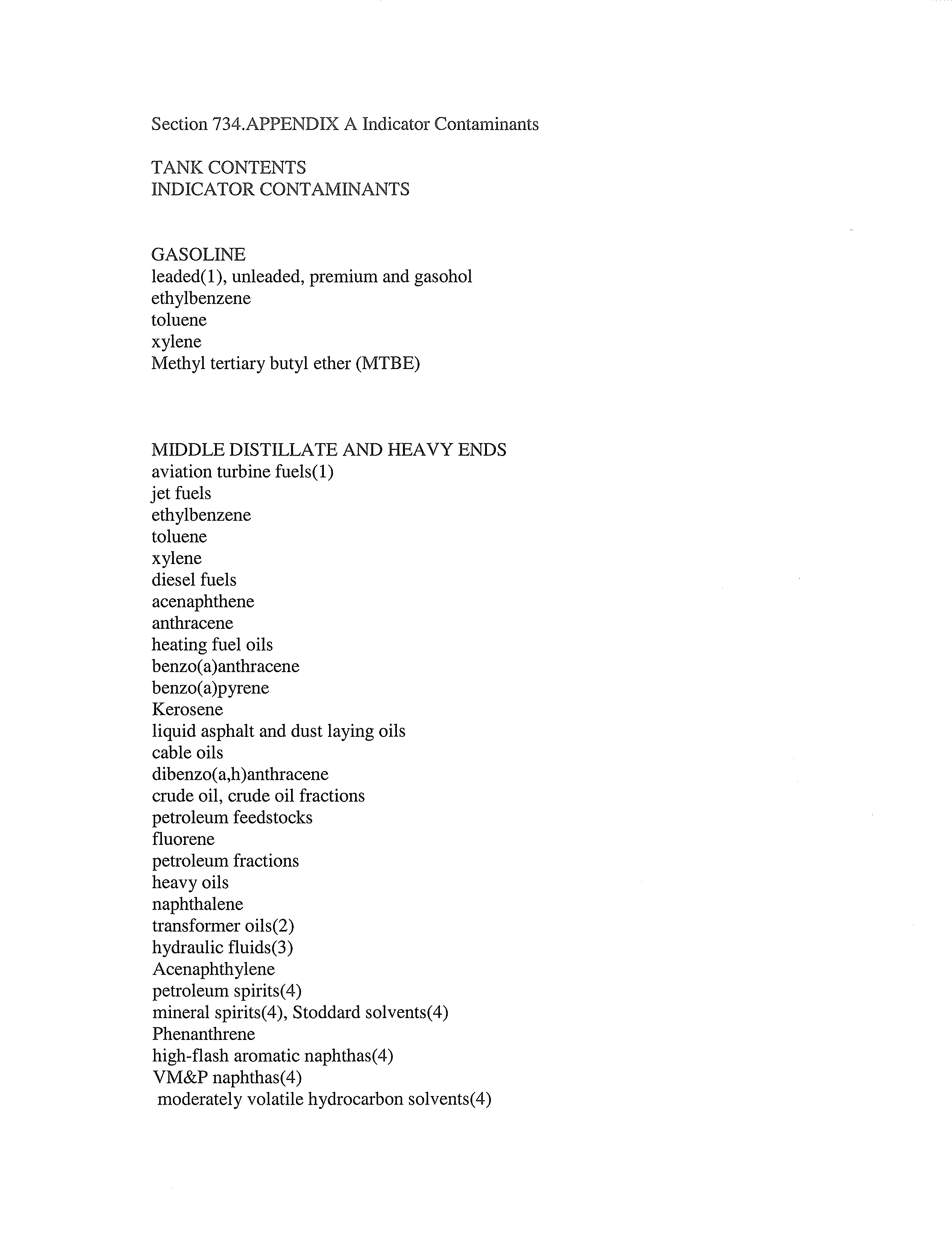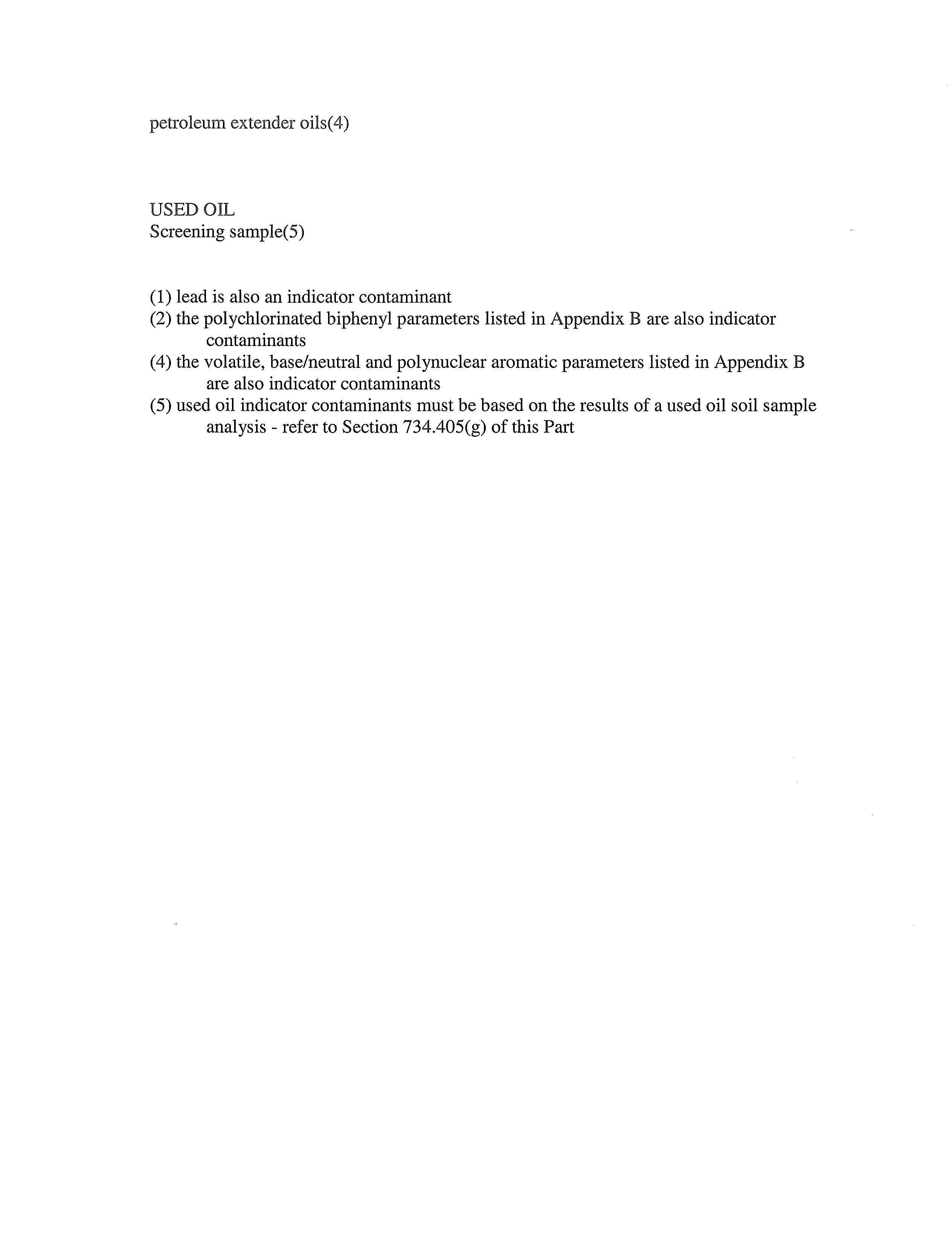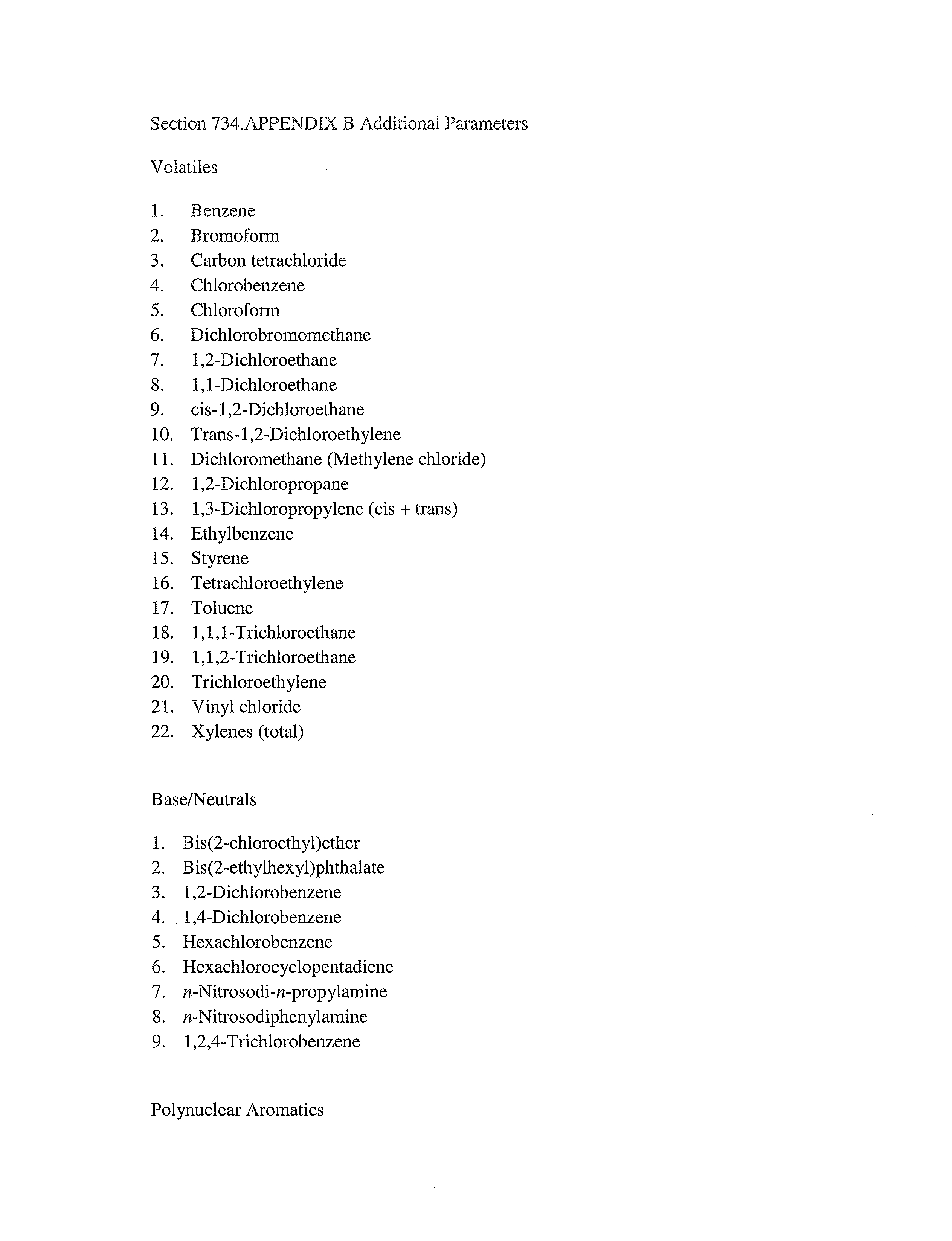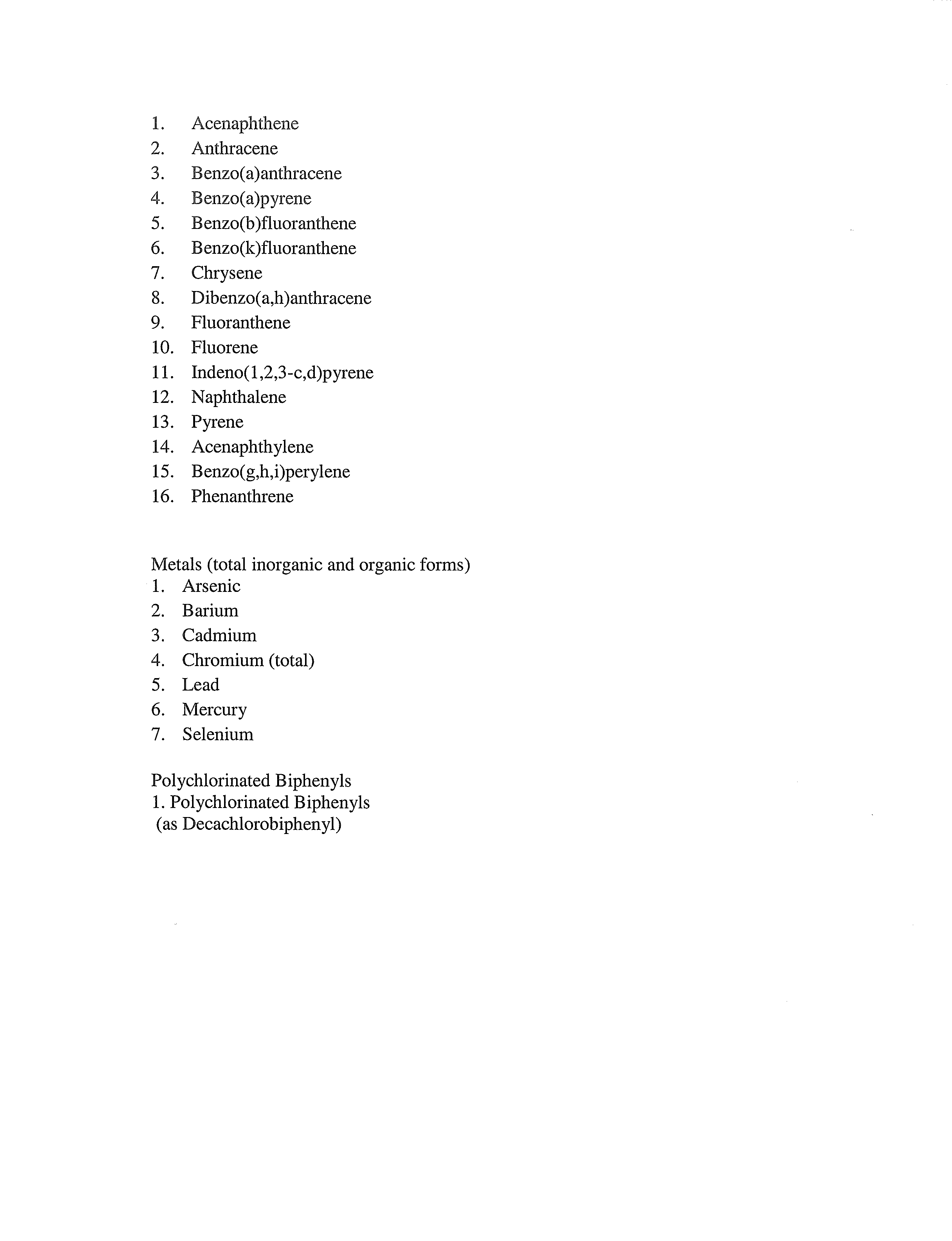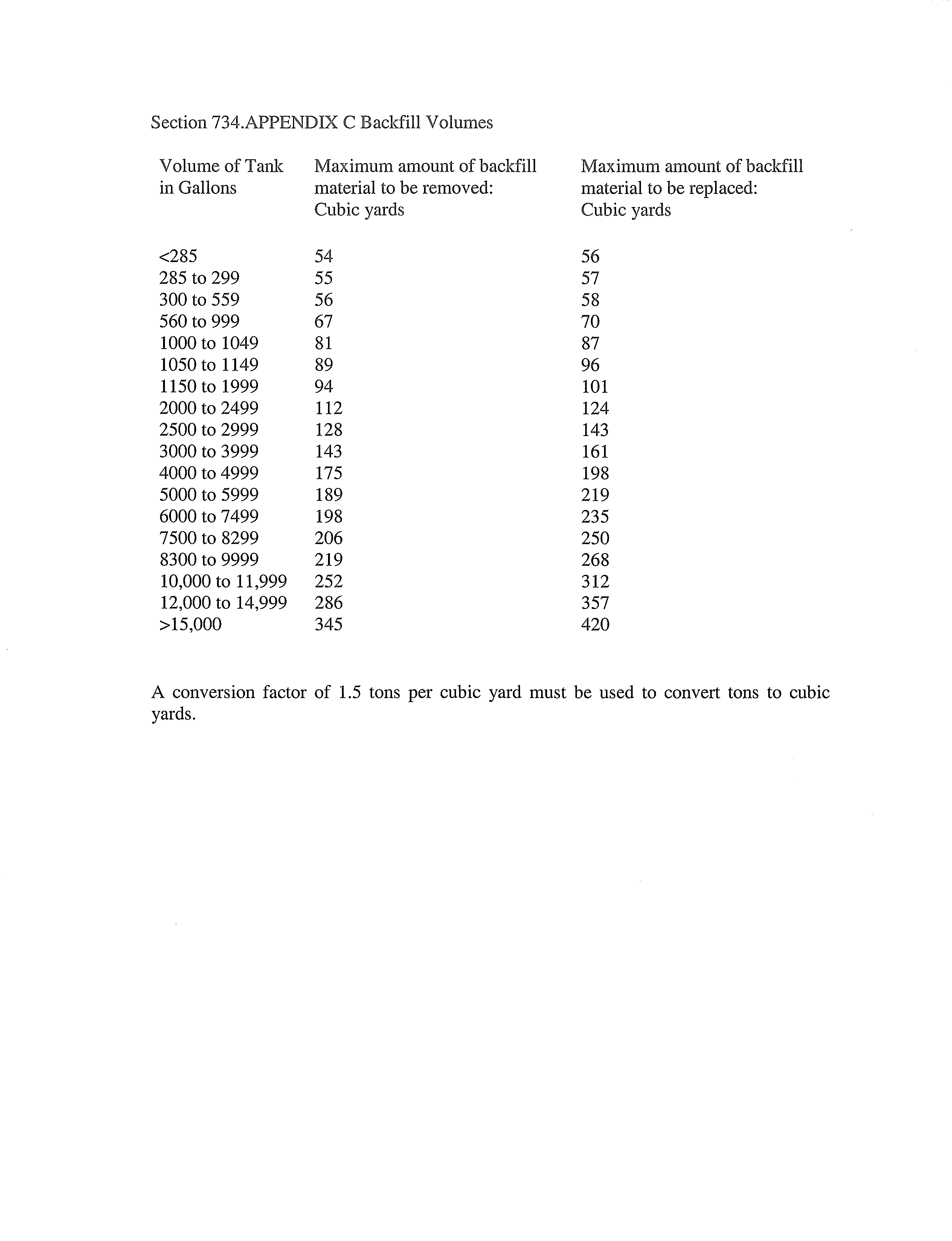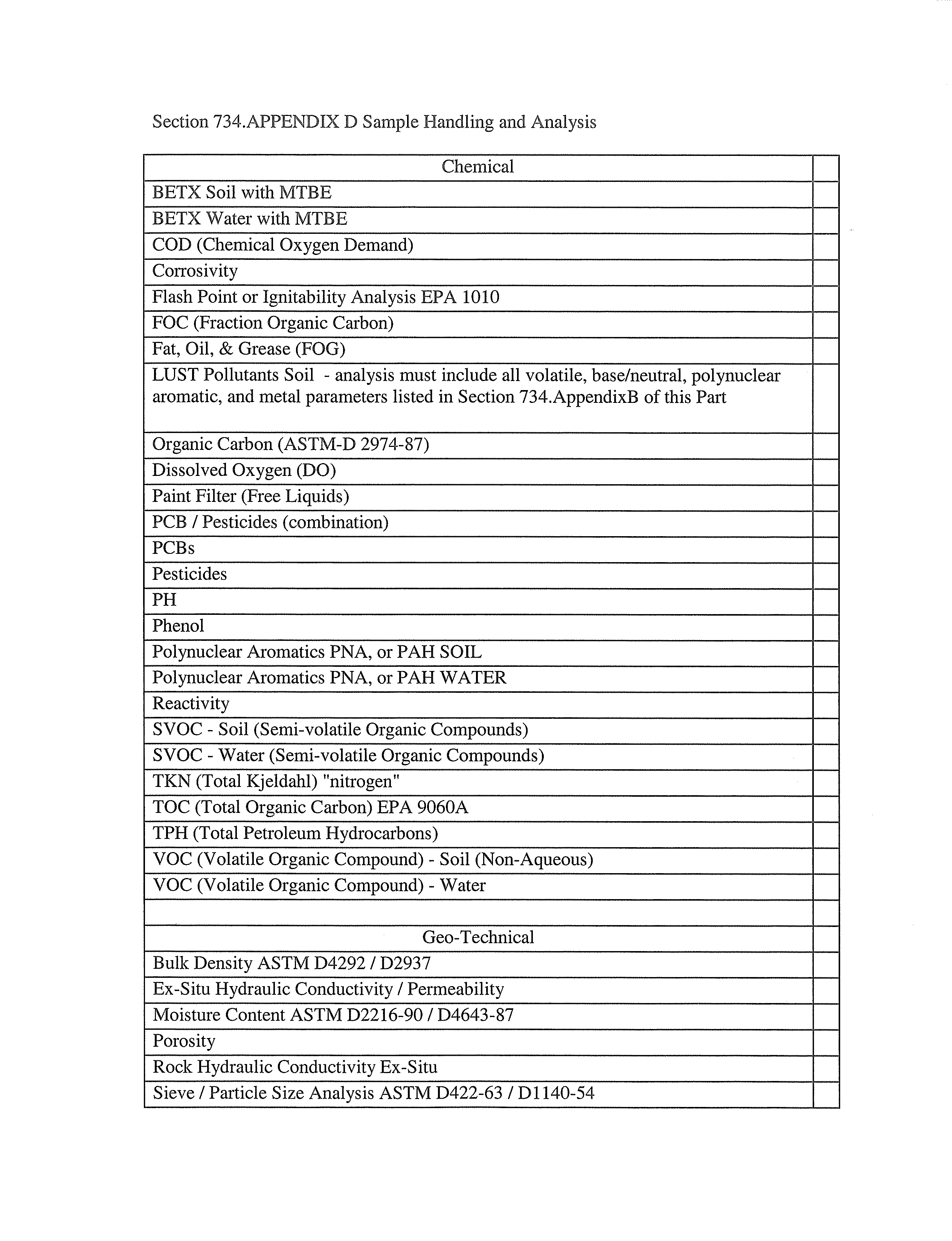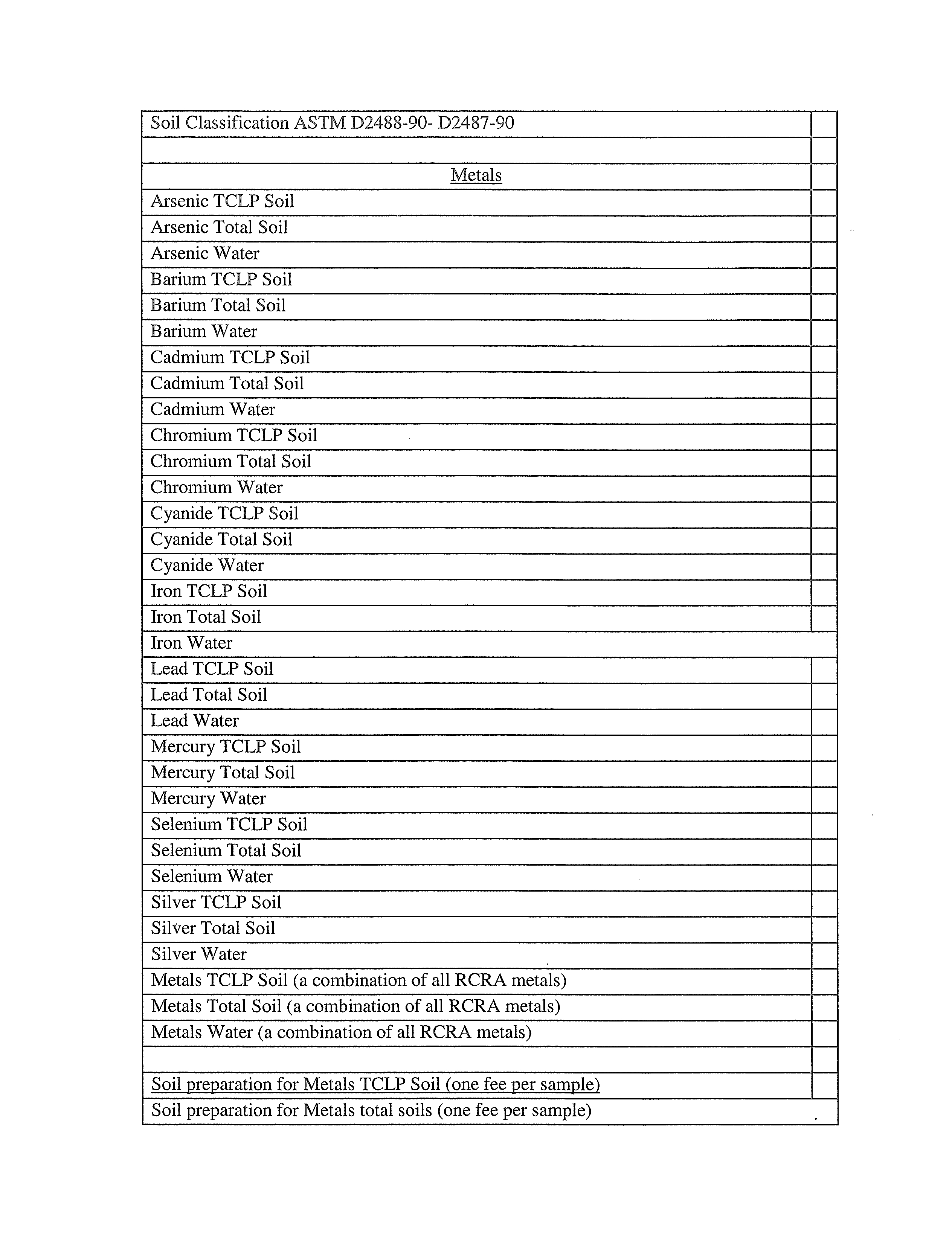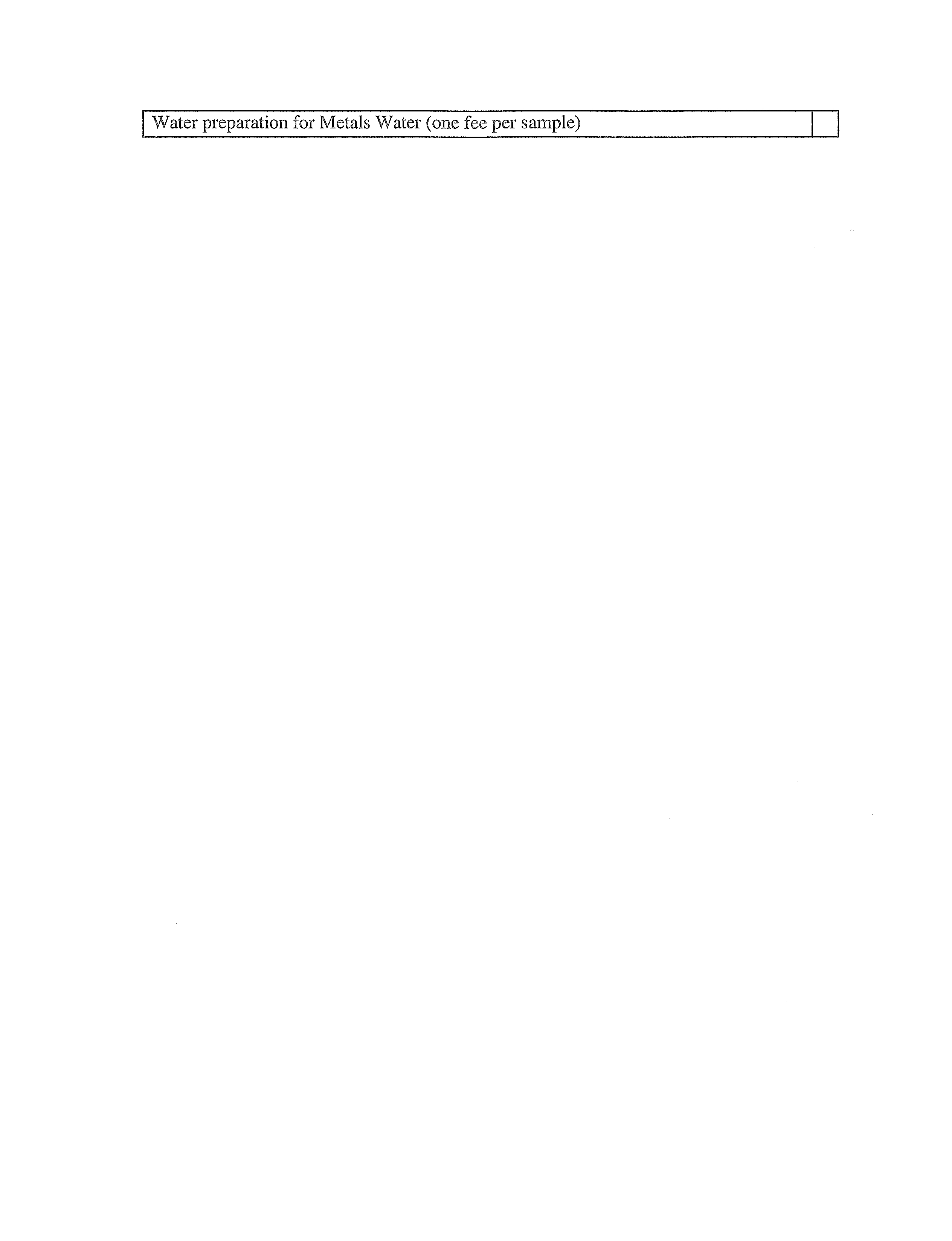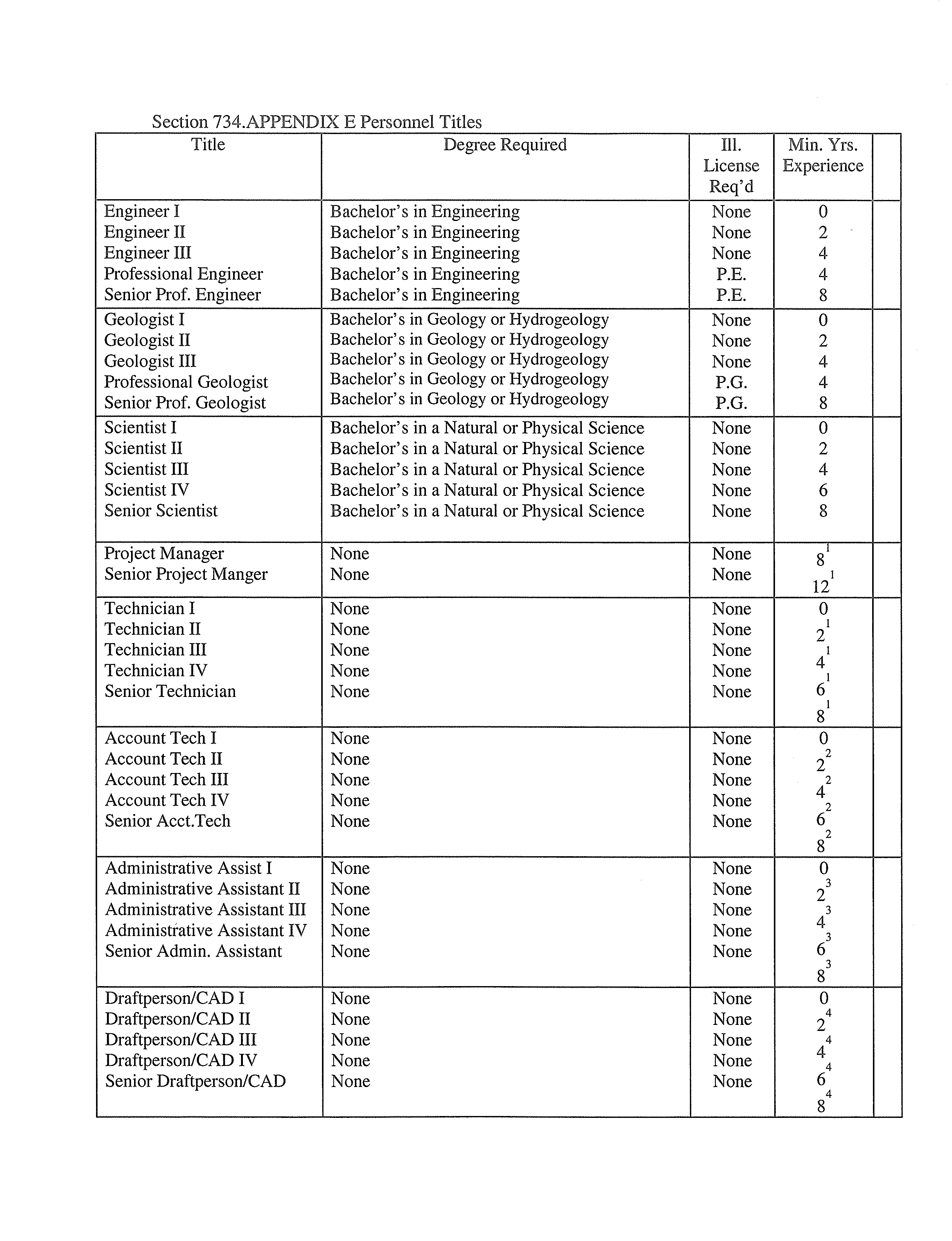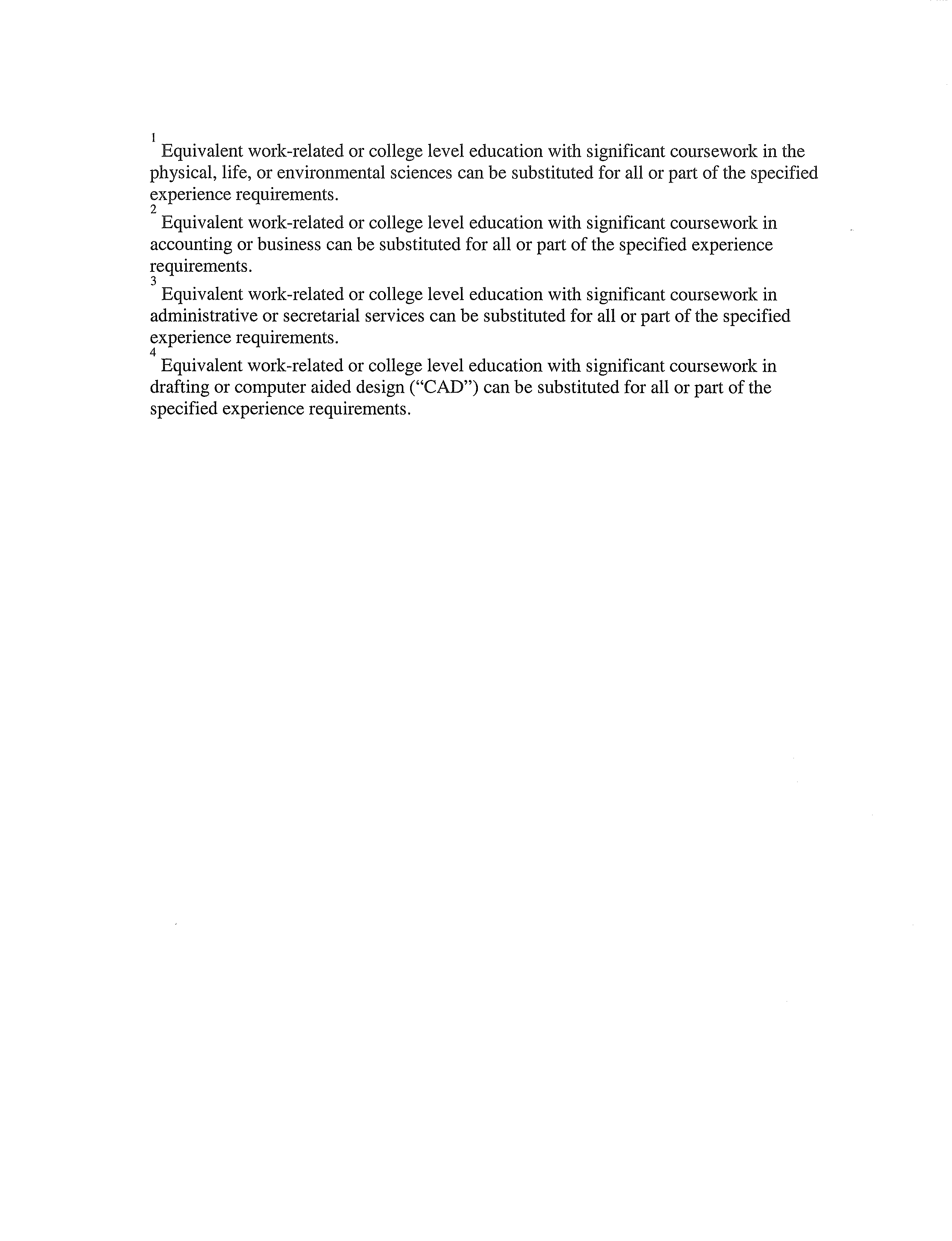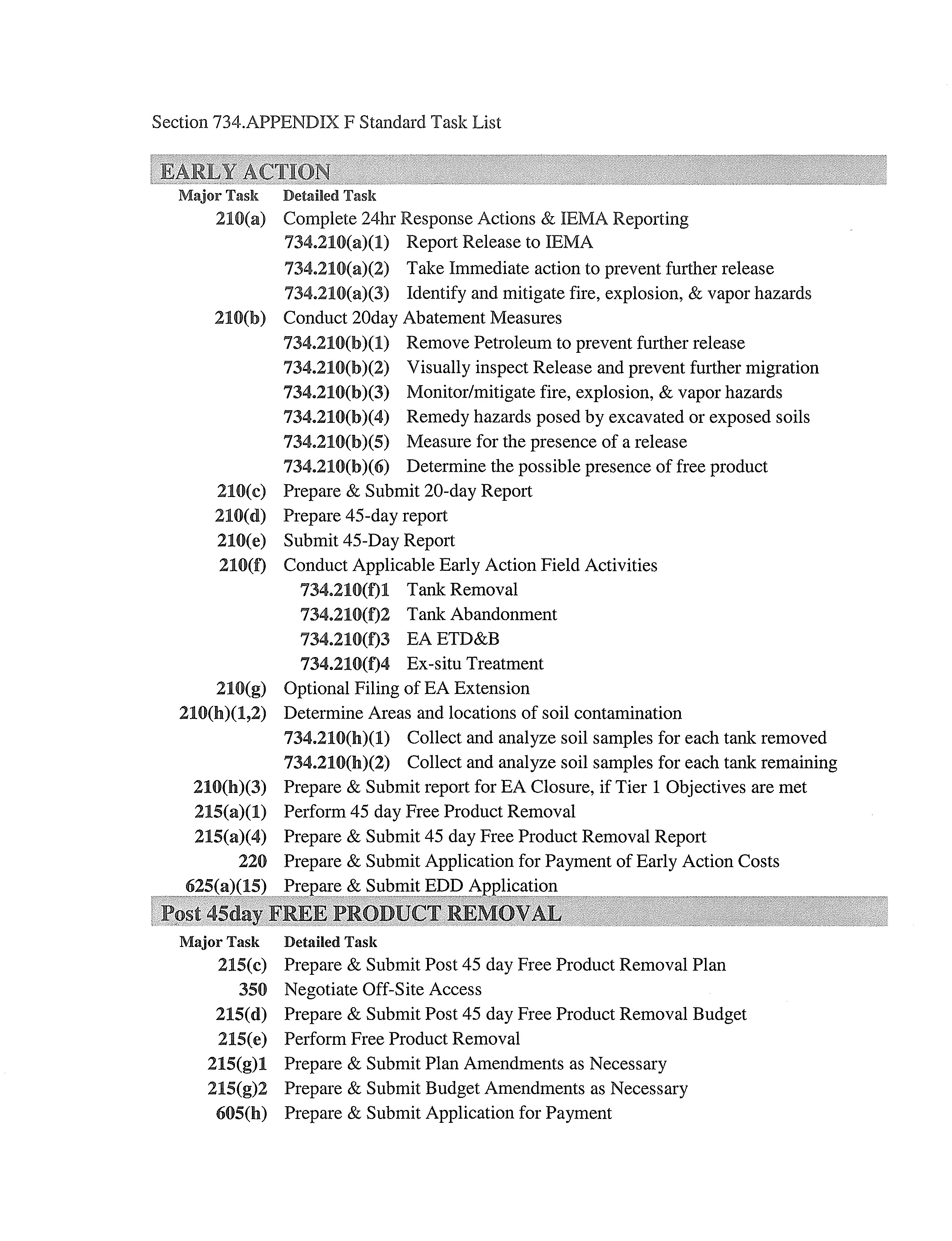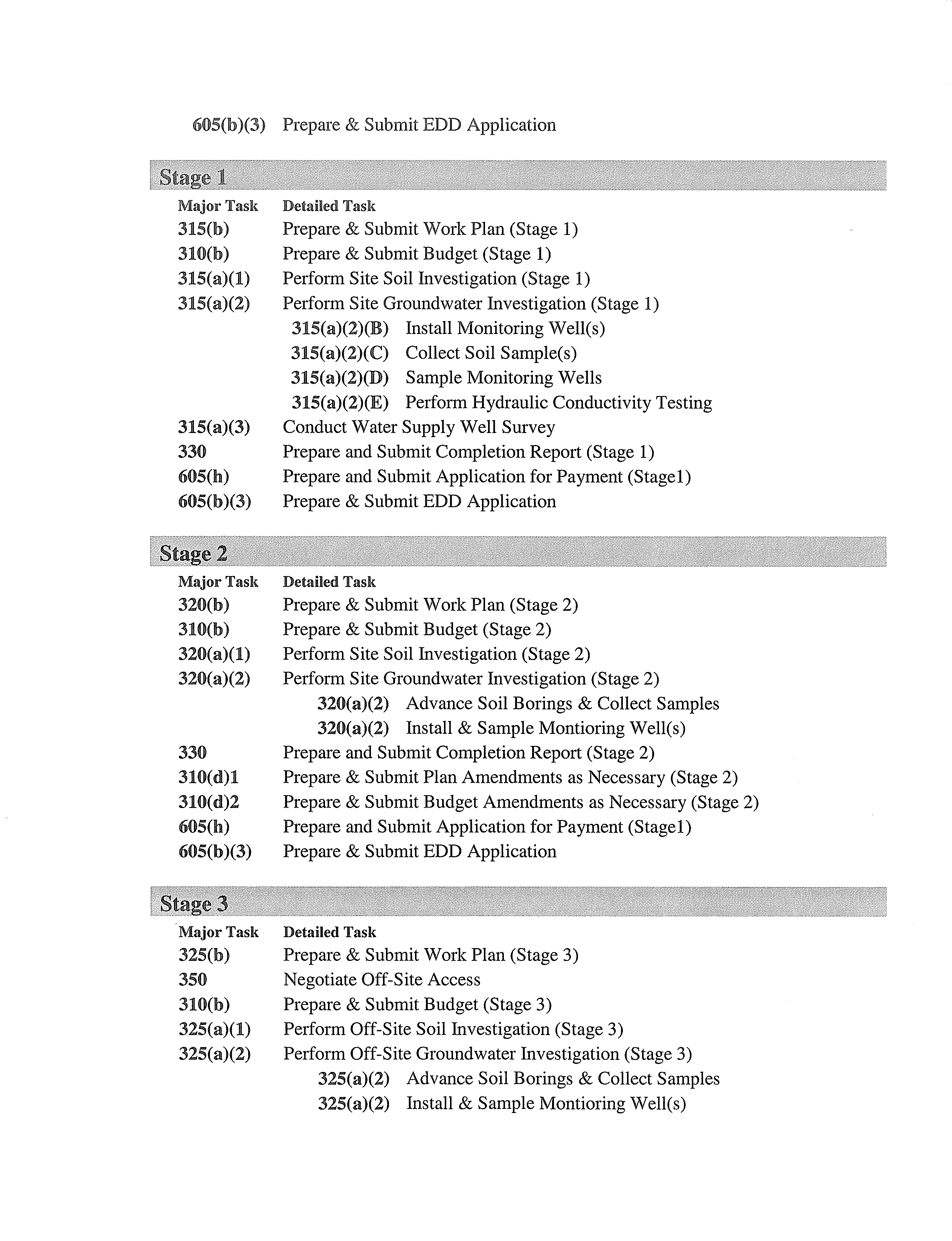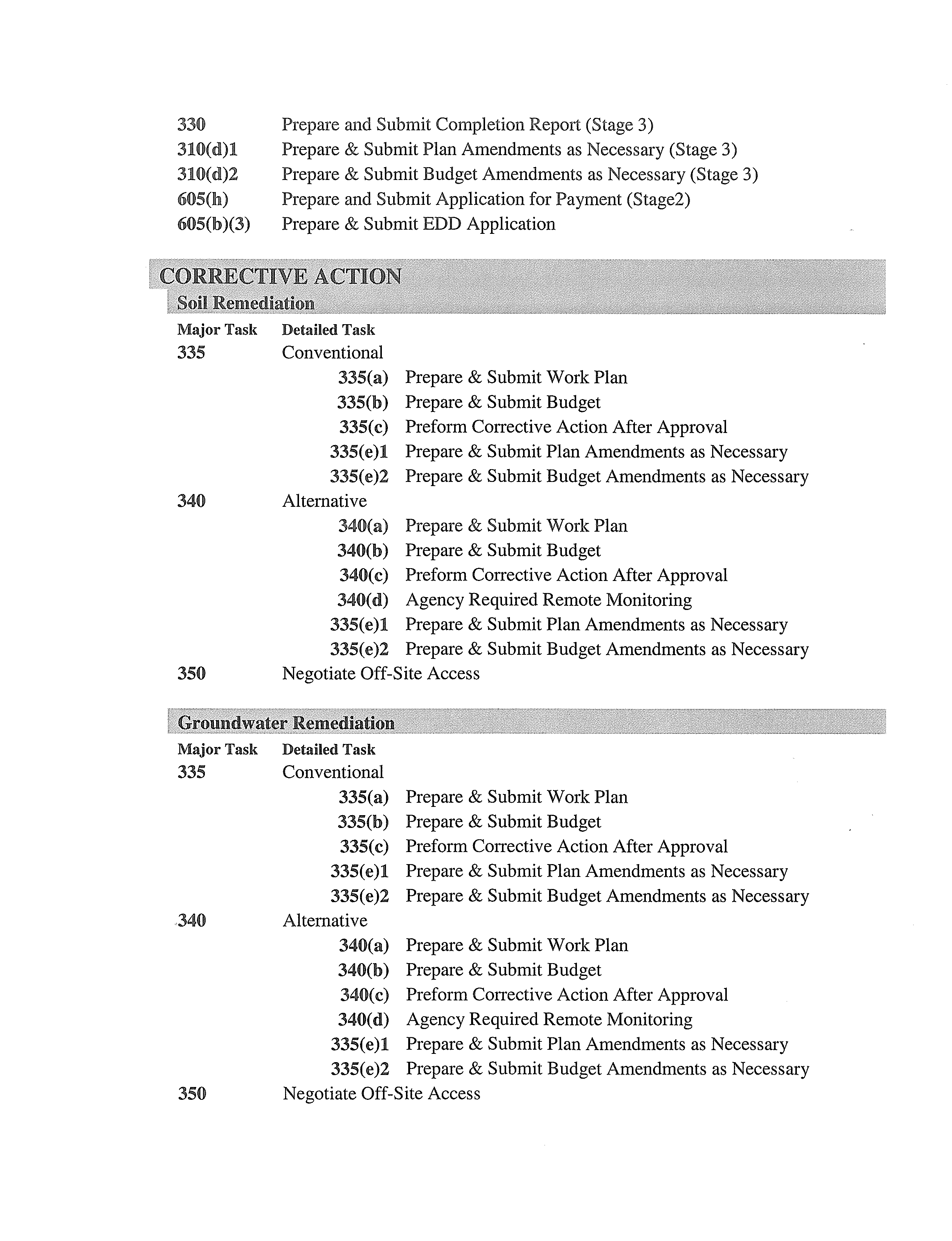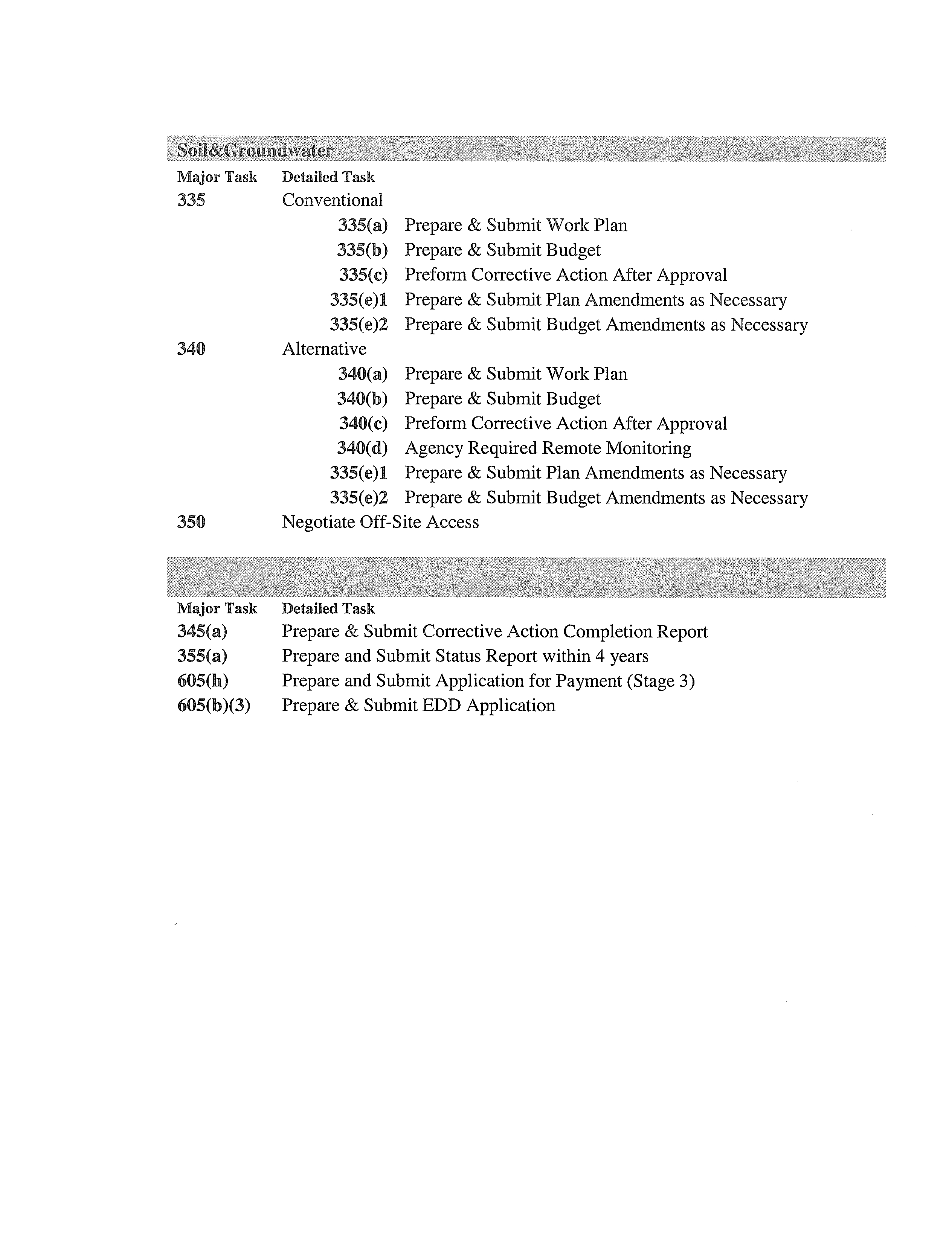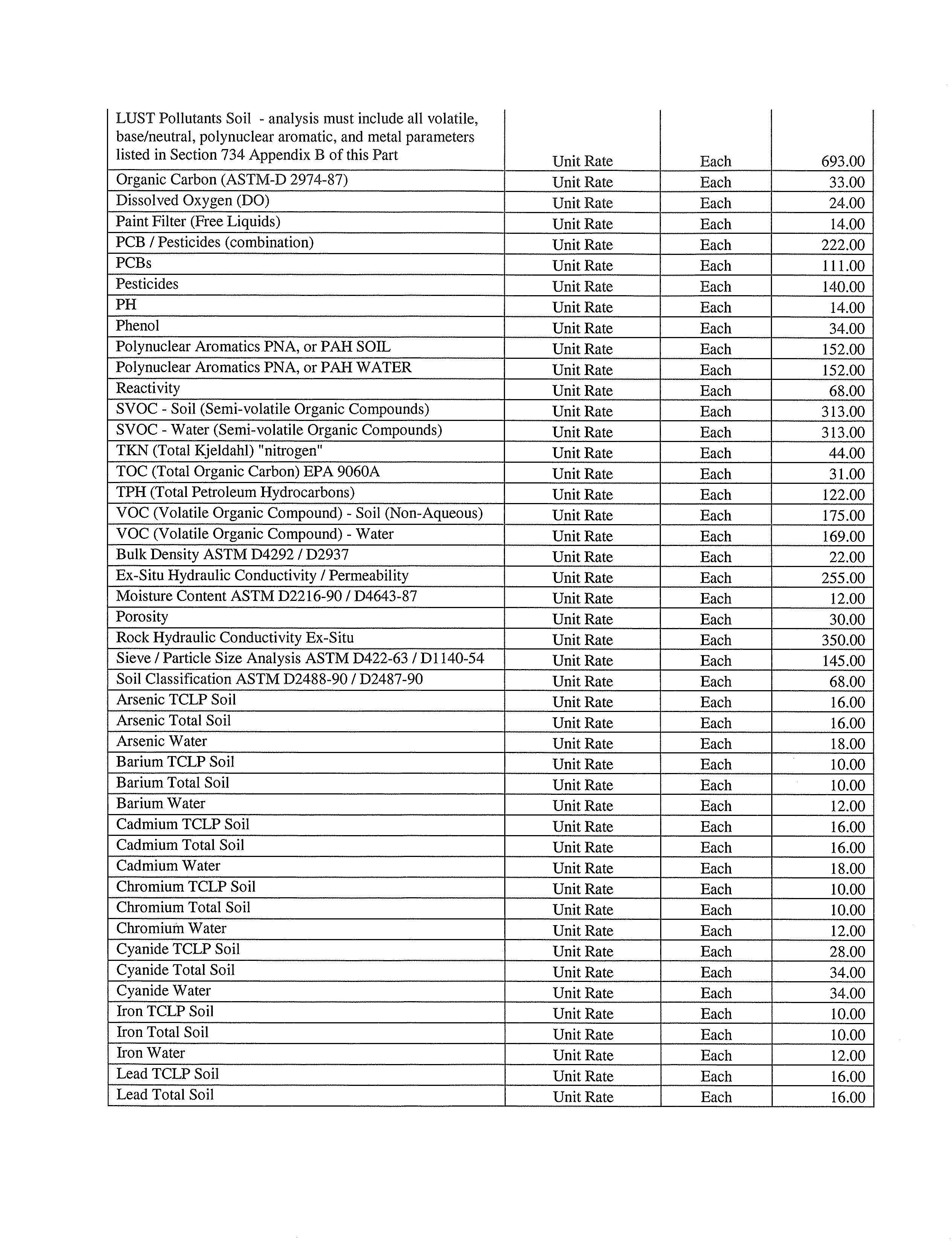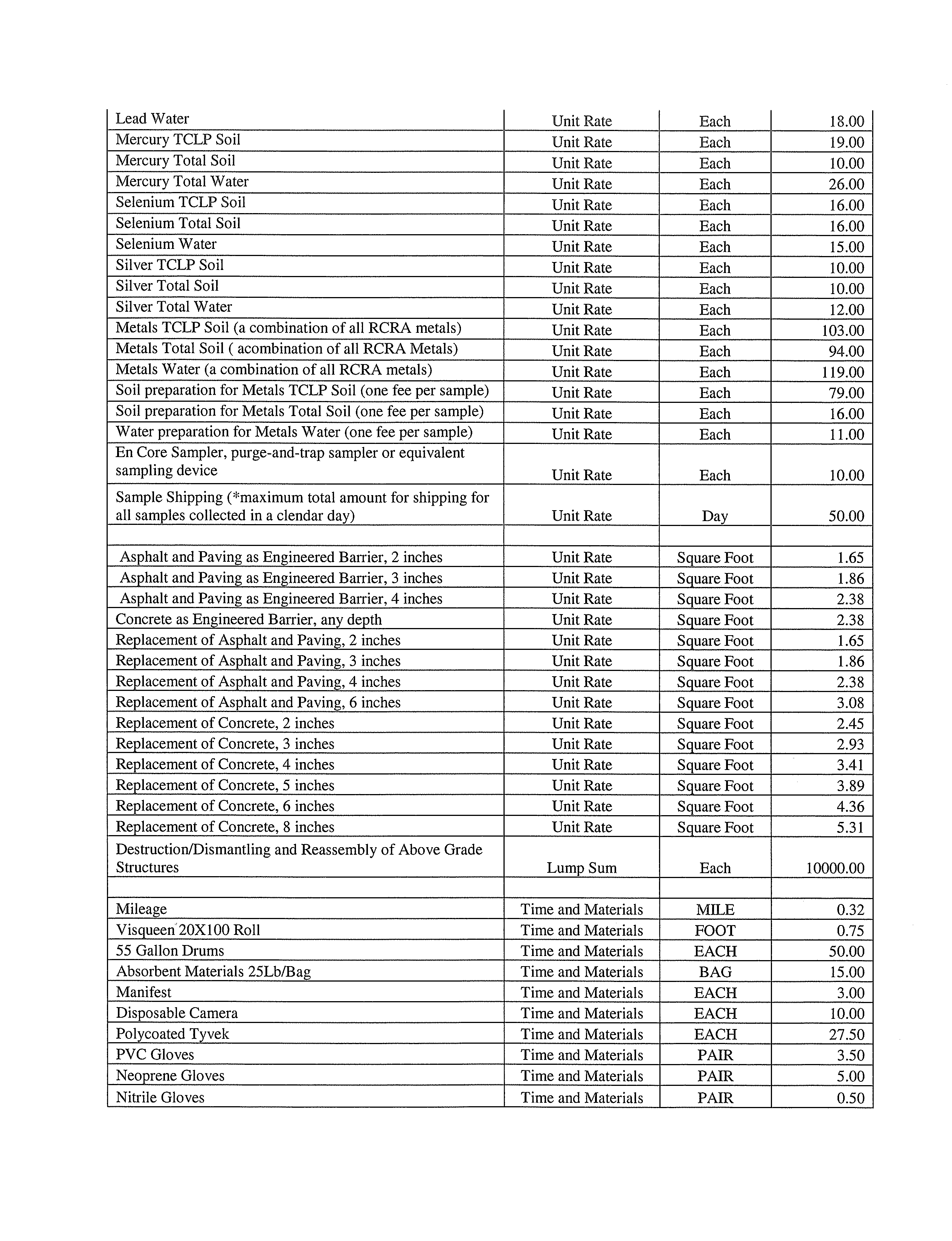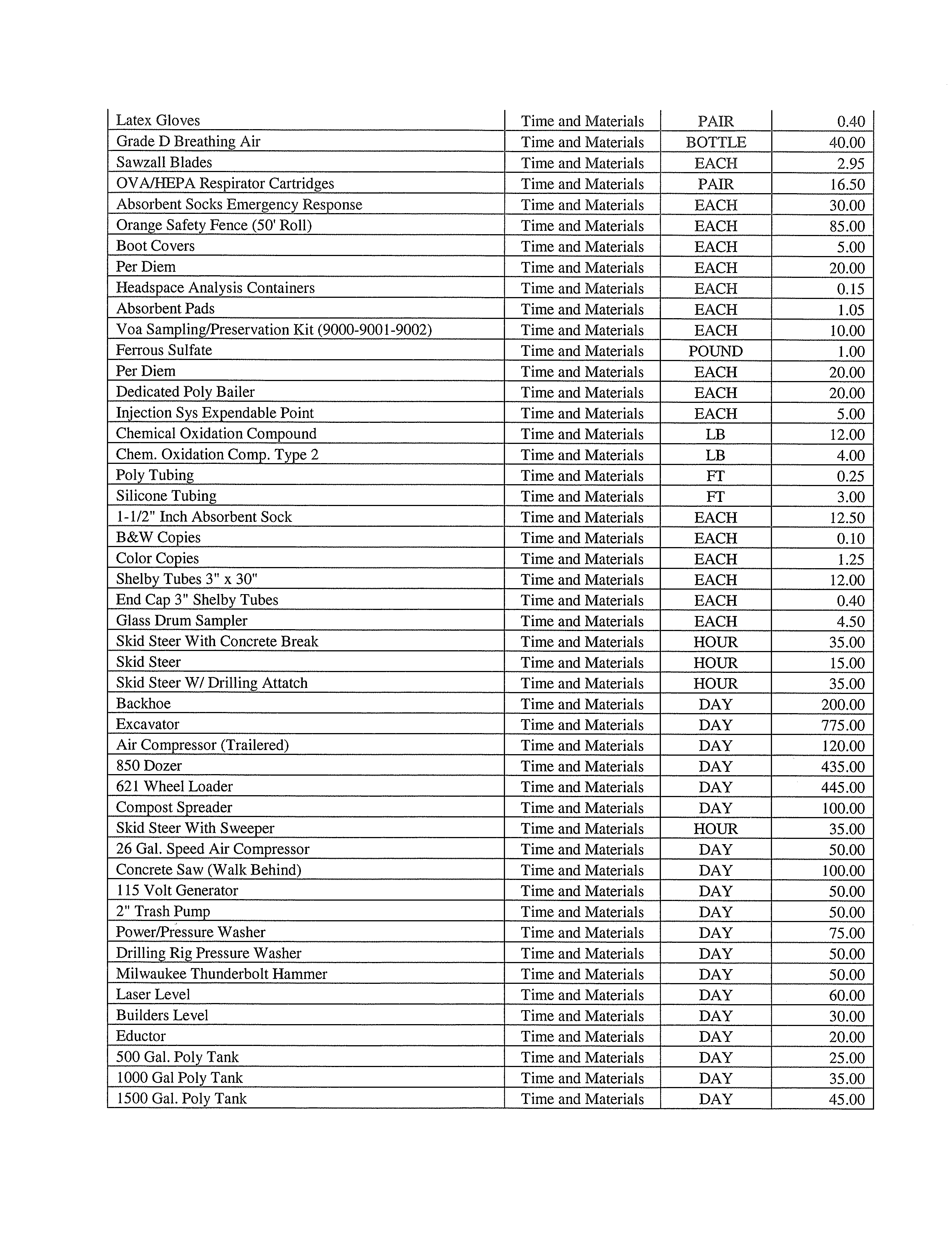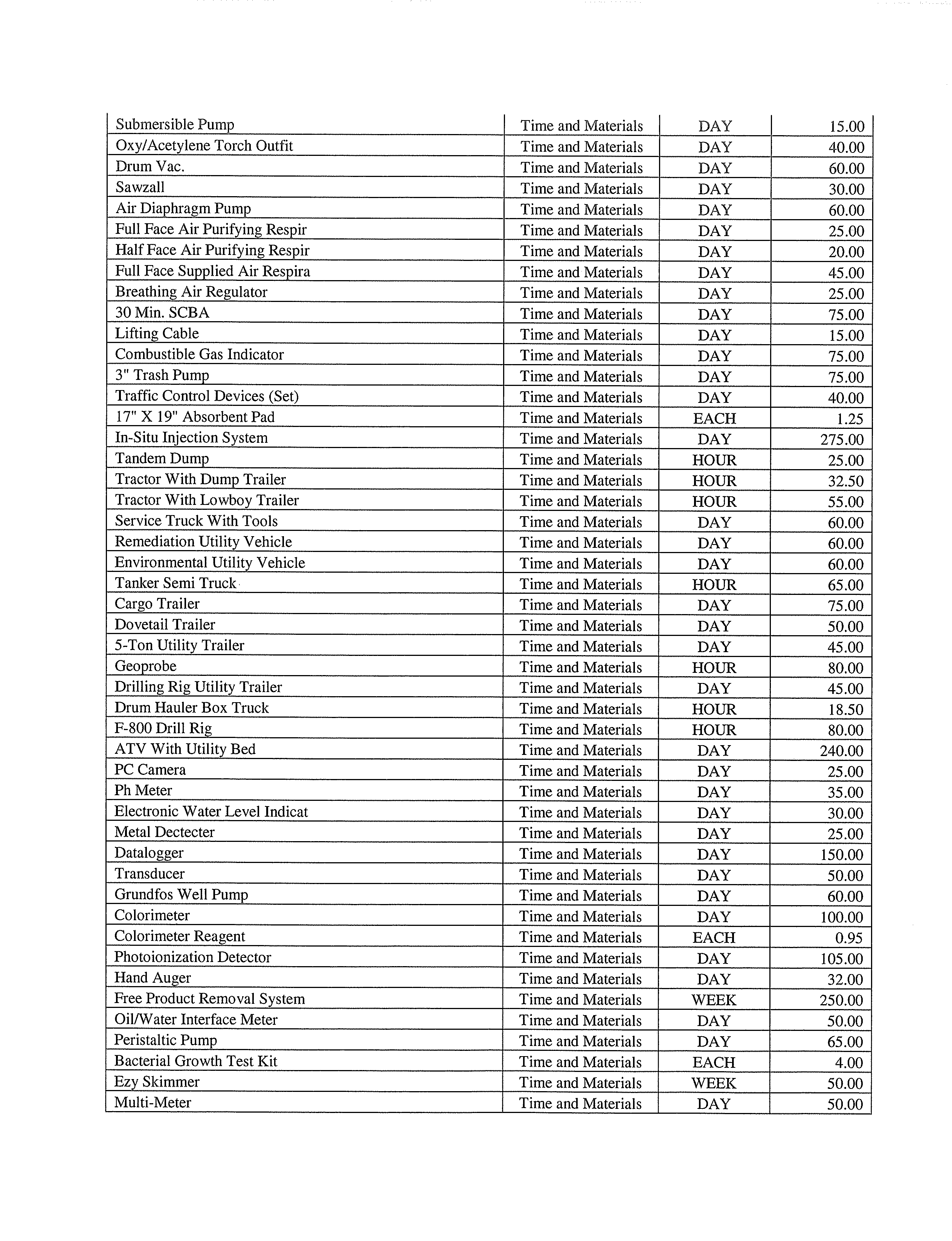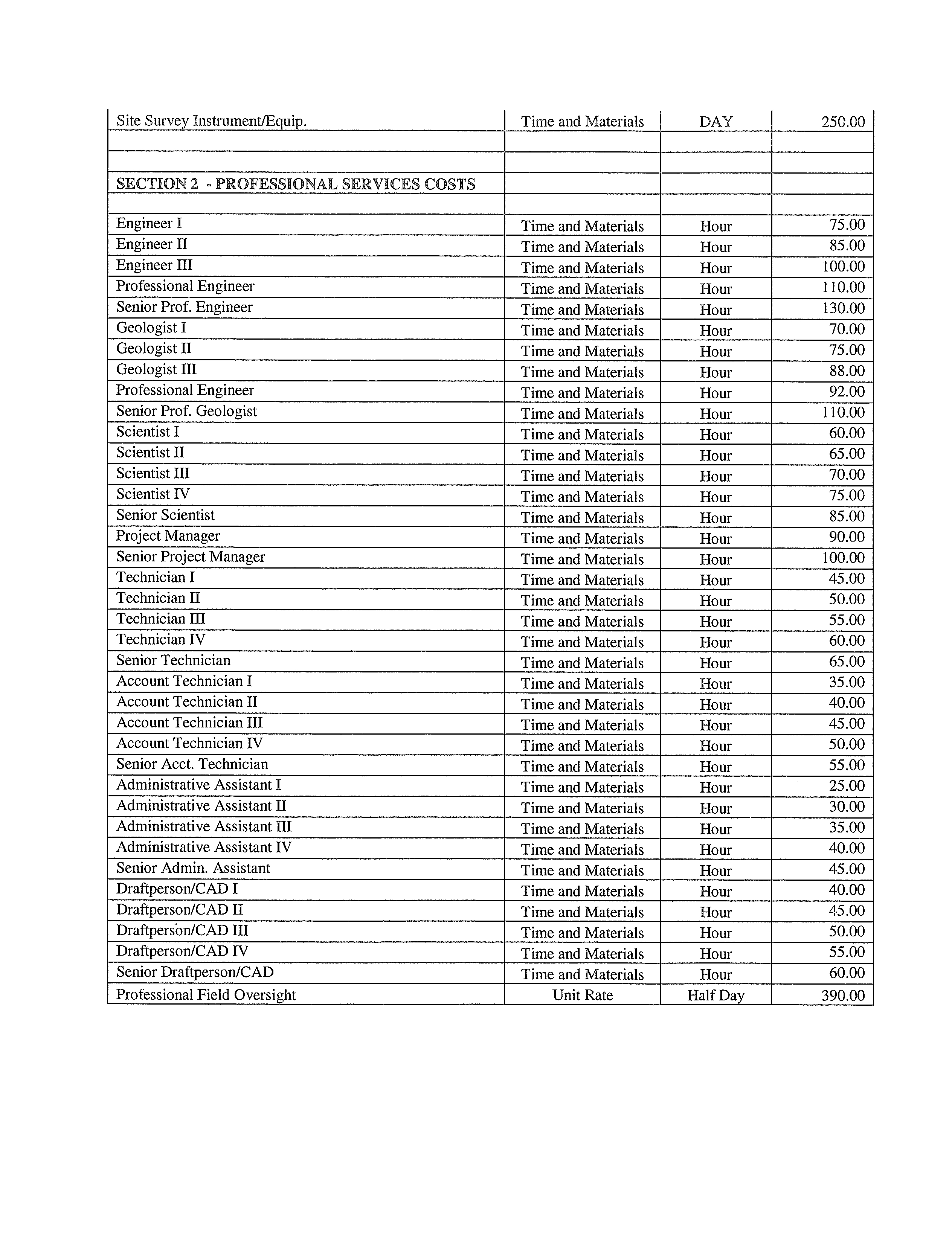BEFORE THE ILLINOIS POLLUTION CONTROL BOARD
IN THE MATTER OF:
)
)
PROPOSED AMENDMENTS TO:
)
R04-022
REGULATION OF PETROLEUM
)
(UST Rulemaking)
LEAKING UNDERGROUND STORAGE )
TANKS (35 ILL.ADM.CODE 732)
)
)
IN THE MATTER OF:
)
)
PROPOSED AMENDMENTS TO:
)
R04-023
REGULATION OF PETROLEUM
)
(UST Rulemaking)
LEAKING UNDERGROUND STORAGE )
Consolidated
TANKS (35 ILL.ADM.CODE 734)
)
TESTIMONY OF UNITED SCIENCE INDUSTRIES, INC. TO ALTER THE ILLINOIS
ENVIRONMENTAL PROECTION AGENCY’S PROPOSAL TO AMEND 35 ILL.
ADM. CODE 732 AND 35 ILL. ADM. CODE 734
My name is Jay P Koch. I am President & CEO of United Science Industries,
Inc. (USI) located in, Woodlawn, Illinois. In one means or another I have been involved
with the Illinois Leaking Underground Storage Tank (LUST) Program since founding
USI in the fall of 1989.
Like many individuals that have been affiliated with the Illinois LUST program
since its formative days, I have witnessed the trials, tribulations and triumphs of its
evolution. Over the course of the past fifteen years, the LUST program has endured at
least two funding crises and several legislative and regulatory changes. Nearly every
crisis and legislative/regulatory change has been memorable. Countless companies have
entered and left this industry for a variety of reasons, but those that are truly dedicated to
this industry and their mission always seem to endure. We are experienced, strong, well
managed, adaptive and dedicated to this industry and to our mission.
Page 1 of 49
ELECTRONIC FILING, RECEIVED, CLERK'S OFFICE JULY 8, 2005
I am here today not only on behalf of United Science Industries, Inc., our
employees and our clients but also to speak for a class of underground storage tank
owner/operator that, to my knowledge, has been absent from these proceedings to this
point. This class of owner/operator typically consists of the small business person, the
retiree, the estate, the widow, the school district, the church, the agricultural cooperative,
etc. that has from one to two incidents to remediate. These owners/operators are not
large corporations or wealthy endowments. They are everyday law-abiding citizens and
small businesses. They are our neighbors, our friends and our clients and they live in
communities from Cairo to Chicago, from the Indiana state line to the Mississippi River.
In fact, as a group, they comprise the ownership of approximately 88% of all
owner/operators of all leaking underground storage tank sites in the State. They also
represent nearly 62.4 percent of the incidents that remain to be remediated. These
citizens and small businesses are typically not well capitalized and they are not well
represented. Unlike the major oil companies, large petroleum distributors and
convenience store chains that are represented by groups such as the Illinois Petroleum
Council, the Illinois Petroleum Marketer’s Association/Illinois Association of
Convenience Stores and the Illinois State Chamber of Commerce, I am not aware of a
single trade organization or special interest group that serves the collective interest of this
class of owner/operator. These owners/operators are the “silent majority”. And, as I
have stated previously, I am not aware that anyone has testified on behalf of these
owner’s/operators during the proceedings in this rulemaking. USI is well versed in the
needs of this class of underground storage tank owners/operators. In fact, USI’s in-house
marketing statistics and the statistics published on the Illinois Environmental Protection
Page 2 of 49
Agency’s web site both indicate that United Science Industries, Inc. serves more of this
class of underground storage owner/operator than any other environmental consultant in
the State of Illinois. I, and several of the employees of United Science Industries, Inc.,
am here today not only to represent our organization, but to also speak to the needs of the
“silent majority”; the needs of the thousands of owners/operators that have one or two
incidents that they must remediate (hereinafter referred to as the “small owner/operator”).
The small owner/operator has a number of special needs, but most immediately
they need three things:
First, they need the record in this proceeding to be set straight.
Secondly, they need you, the Illinois Pollution Control Board, to listen closely
today. They need you to listen to testimony that will question the IEPA’s stated motives
in this rulemaking. They need you to listen to the numerous conceptual flaws that make
key portions of the currently proposed rule un-workable and intolerable. They need you
to listen to testimony that will show that the Illinois EPA has over-stepped its scope of
administrative authority in proposing certain key portions of the proposed rule that are
contrary to the legislative intent of the Public Acts that define public policy on matters
that are at the heart of this rule. They need you to listen; not to the speculation,
conjecture, and highly inaccurate estimations that clutter, confuse and mislead the record
in this proceeding, but instead to the facts and statistics as they really exist within the
files and historical practices of the Illinois Environmental Protection Agency. These
facts will be presented today. They will be based upon a survey of the IEPA’s own data
and files. They will present statistically significant findings and the means and methods
used during this survey will be provided at the hearings and will be transparent to all.
Page 3 of 49
These facts and statistics will establish a clear and competent record; one that can be
relied upon. The small owner/operator also needs the Board to listen to and consider the
proposed solutions to those conceptual flaws contained within this rule.
Finally, the small owner/operator, who is clearly the real beneficiary of a properly
crafted rule, or the collateral victim of a poorly or casually crafted one, wants you to
understand and to act. They want you to understand that they have long suffered the
many contrary, unpopular and bureaucratic requirements of this Agency. They want you
to understand that through the protections and services historically afforded by their
consultants they have been able and willing to tolerate and suffer through the process.
They want you to understand that they consider a threat to the well-being of their
consultants to be a threat to their own well-being. They also want you to act. They want
you to act based upon the adjusted record. They want you to act to alter the existing rule
by modifying it to provide an objective rule based upon sound and transparent
methodologies. They want the rule to be fair, easy to understand and they want it to be
administered fairly and uniformly. They want the rule to represent a true process that
ensures their protection into the future, not just the first engagement in a series of rate
adjustment confrontations. They want you to act now. They want you to act to protect
their safety and welfare. They want you to instill their faith in good government. They
want to avoid an unworkable and intolerable rule moving to second notice. They want to
avoid the need for legislative or judicial intervention. They want you to know that they
are proud and independent, and they want you to know, hopefully unnecessarily, that if
the key provisions of this rule remain so fundamentally flawed, they will quickly and
loudly arise from their silence to right themselves and protect their welfare.
Page 4 of 49
Before moving into the heart of our testimony today, on behalf of the employees
of USI, I want you to know that we are with the small owner/operator. We always have
been and we always will be. Inherent to our mission is the protection of their interest,
their well-being, their property values and their peace of mind, and we are devoted to that
mission. See Attachment I which shows a Petition signed by 100 Owners and Operators
which clearly outlines for the board some of the needs of the owners and operators.
During its testimony today, United Science Industries, Inc. will do the following:
1.
Demonstrate that the class of underground storage tank owner/operator
described above represents the majority of owners/operators across the
state, and provide the Board with a more thorough understanding of
the characteristics, traits and needs of these small owners/operators.
2.
Review the Agency’s originally stated reasons for this rulemaking.
Compare the Agency’s stated reasons to the record and provide
suggestions as to what the industry believes the Agency’s real motives
may be.
3.
Provide factual information that will set the record straight as to the
historical reimbursement practices of the Agency in regard to the
reimbursement/payment of professional services and approval of work
plans and budgets. This testimony will establish that, at least in the
case of professional services, the Agency’s previous testimony
claiming that the rates proposed in Subpart H are “generally
consistent” with the rates the Agency currently approves (Opinion and
Page 5 of 49
Order; page 15, reference to testimony of Doug Clay) is inaccurate and
cannot be relied upon.
4.
Provide a synopsis of the areas within the proposed Subpart H, that are
not objectionable as written, or that are acceptable with minor
modification; noting proposed alternate language, if any, for each such
provision.
5.
Identify the key portions of the rule that are conceptually flawed,
unworkable and intolerable and explain why each such provision is
unworkable.
6.
Provide proposed modifications to the conceptually flawed portions of
the rule based upon simple and fundamentally sound management
practices that will allow this rulemaking to be fair, uniform, and
transparent and that will allow it to serve as a solid foundation for long
term cost containment.
7.
Provide other miscellaneous comments.
Section 1-
Importance of 1-2 Incident PRPs and their Consultants
The following testimony is being presented to quantify and highlight the critical
importance and unique characteristics of a distinct class of open incident potentially
responsible parties (PRP). That class is comprised of the PRPs responsible for only 1-2
open incidents (PRP 1s or Small Owner/Operators). During this testimony we will
present evidence that validates the importance and need of:
Page 6 of 49
•
Small Owner/Operators relevant to reducing overall LUST liabilities in the State
of Illinois;
•
The Illinois Pollution Control Board (IPCB) and Illinois Environmental
Protection Agency (IEPA) promulgating LUST regulations that address the
specialized needs of Small Owner/Operators and the potential severe
consequences if those needs are not addressed; and
•
The unique role of consultants in managing Small Owner/Operators sites and the
need to maintain the integrity of that role.
This testimony is based upon the information obtained from the IEPA Lust database
and other relevant sources during July of 2005.
Total Incident/PRP Data
The attached charts 1 and 2 provide a breakdown of total incidents and related PRP
information segregated into the three categories of:
•
PRPs with 1-2 open incidents (Small Owner/Operators);
•
PRPs with 3-20 open incidents (PRP 3); and
•
PRPs with >20 open incidents (PRP 21).
Although each class of PRPs exhibits its own unique characteristics, the focus of this
testimony will concentrate on Small Owner/Operators.
In evaluating the data, several key points are as follows:
•
There is a total of 8566 open incidents with a PRP listed;
•
There is a total of 5620 PRPs responsible for one or more open incidents
;
and
Page 7 of 49
•
There is a total of 4991 Small Owner/Operators responsible for 5342 open
incidents.
This is equal to 88.8% of all PRPs and 62.4% of all remaining
open incidents.
Small Owner/Operators is the largest single group of PRPs remaining in the
program and are responsible for the majority of all remaining LUST environmental
liabilities in the state of Illinois. They are also, as we will demonstrate later in this
testimony, the group most highly dependent on the LUST funding, the efficiency and
efficacy of the regulatory process and the integrity of their consultant relationship.
They are the single largest group to be impacted by the new LUST regulations
, yet
t
hey
are also the most under-represented group of PRPs.
Small Owner/Operators Characteristics
Small Owner/Operators has numerous distinctive characteristics. Although these
characteristics are intuitively understood by anyone with a working knowledge of the
LUST market in Illinois, the characteristics are quantitatively validated by the data
outlined in the attached Chart 3
.
Distinctive Small Owner/Operators characteristics are as follows:
•
Over 19% are listed as individuals;
•
The majority, a total of 67% are businesses. Based on a review of business names
and a sampling of business information, we estimate that the majority are small
to medium sized business owners;
•
The remainder are school districts, government, church and small to medium
sized communities; and
Page 8 of 49
•
For the most part Small Owner/Operators are not represented by key Illinois
organizations. For example, only 1% of Small Owner/Operators are represented
by IPMA.
USI has extensive experience working with Small Owner/Operators. During the past
15 years we have provided services to hundreds of Small Owner/Operators and are
currently assigned 328 open incidents. Some additional key characteristics of Small
Owner/Operators based on our experience include:
•
Their financial resources are typically limited. They are typically unable to meet
financial liabilities above the LUST deductible and oftentimes struggle to meet
the deductible;
•
Their LUST site property is a considered a valuable and oftentimes substantial
component of their assets;
•
They typically have limited management and technical resources, oftentimes
limited to the owner, or more difficult yet, a trustee; and
•
They are proud and responsible individuals who would like to address their
environmental liabilities.
Small Owner/Operators is comprised primarily of individuals, small businesses and
institutions that make up the backbone of our rural and small-medium community
infrastructure. What Small Owner/Operators is NOT, and this is absolutely critical to
understanding the impact of the LUST regulations on them, is they are NOT typically
big business, do NOT have deep pockets, and do NOT have extensive management and
technical resources
.
Addressing their open incident responsibilities places them at
significant financial, legal and resource risk!
Page 9 of 49
For comparison purposes and to better understand the unique characteristics of Small
Owner/Operators, we performed a similar analysis of the PRP 21 group. This data is
presented in the attached Chart 4 and indicates the following:
•
There are no individuals listed in the PRP 21 group;
•
The majority, a total of 74% are businesses. Most of the businesses are larger
with annual revenues in the millions of dollars;
•
The only community listed in this PRP group is the City of Chicago; and
•
Over 37% of PRP 21 are members of IPMA.
In addition, based on our working prior experience with the PRP 21s, they are several
more distinctive differences from the Small Owner/Operators group including:
•
They tend to have good financial resources. Paying the deductible is not an
overwhelming financial hardship;
•
The LUST site property is oftentimes a limited or negligible component of their
assets;
•
They have more extensive management resources. Larger companies oftentimes
have an in-house environmental manager;
•
Oftentimes they accelerate the project and pay out of pocket for activities not
covered by the LUST fund in order to achieve internal financial/management
goals; and
•
They are oftentimes willing to TACO property and minimize returns from
property sale in order to move property out of inventory.
Page 10 of 49
Although we did not go into a detailed evaluation of the PRP 3 class, it is reasonable
to assume their characteristics are somewhat a blend of the two previously discussed
classes.
In comparison to the larger PRP groups, Small Owner/Operators is highly
dependent on the financial resources provided by the IL. LUST fund. This financial
dependence includes both the need for 100% reimbursement of approved items and
also the need for timely payment. Also, the LUST site property is an important
financial asset and the regulations must allow them to preserve that asset value. And
finally, because of limited management and technical resources, they are highly
dependent on their consultant to manage all aspects of their environmental project.
The unique role of the consultant for Small Owner/Operators is discussed next in this
testimony.
Open Incident Consultant Statistics
To better understand the role of the consultant in working with Small
Owner/Operators, we first evaluated basic information concerning the number of
consultants in Illinois and their primary PRP groups. Key information is as follows:
•
The total number of consultants in IL is 375 as testified in previous hearings by
the IEPA;
•
Of the 8566 total open incidents, 2081 open incidents are currently assigned to
334 consultants
;
•
The number of consultants representing Small Owner/Operators is 321;
•
The top 5 consultants represent 26.7% of the Small Owner/Operators;
Page 11 of 49
•
The top 5 consultants represent over 24.2% of the assigned Small
Owner/Operators open incidents; and
•
Three of the five top consultants are members of PIPE.
United Science Industries is the leader among the top 5 Small Owner/Operators
consultants with a total of 328 assigned open incidents, 204 of which are Small
Owner/Operators open incidents. We have operated successfully in the IL LUST market
for over 15 years. We make this point primarily to verify that we have a deep
understanding of the LUST market and especially the Small Owner/Operators needs.
Our organization has been a leader in developing approaches that address the unique
needs of Small Owner/Operators. The role of a consultant for Small Owner/Operators is
significantly different then for the larger PRP groups.
Key components of the unique role of a Small Owner/Operators consultant include:
•
They are oftentimes sole source for the duration of the project since the Small
Owner/Operators has limited resources and is not able to easily procure or
manage multiple providers;
•
They typically manage all aspects of the work and discussion with the IEPA
based on the Small Owner/Operator’s limited technical expertise and
understanding of the regulations;
•
They discuss optional approaches with the Small Owner/Operators but tend to
implement approaches that help protect property value since the Small
Owner/Operators property is a key financial asset;
Page 12 of 49
•
They very carefully schedule and manage all activities within LUST fund
guidelines to achieve 100% reimbursement due to the financial hardships that
would be experienced by Small Owner/Operators if they were forced to pay
additional monies above the deductible; and
•
They typically wait on payment from the LUST fund since the Small
Owner/Operators does not have sufficient cash flow to pay on standard consulting
payment terms.
Contrast the Small Owner/Operators consultant approach with an approach more
typical to the PRP 21 group and substantial differences will be noted. For example:
•
Consultants typically report to the PRP 21 environmental manager, lawyer or
purchasing agent.
•
Consultants develop and implement approaches that meet PRP 21 overall
objectives including schedule, property disposition, asset management, fiscal year
goals and other key considerations;
•
Managing an approach within LUST fund guidelines to achieve 100%
reimbursement may be only one of multiple considerations mentioned above and
not necessarily the ultimate approach driver; and
•
Consultants typically receive payment on net 30-60 day terms direct from the PRP
21.
PRP 21 has significant internal resources and the open incident site is oftentimes not a
critical part of their asset base. Although they rely on their consultants to achieve
regulatory compliance in a cost effective and technically correct manner, their approach
to site closure is driven more by overall goals as compared to site specific considerations.
Page 13 of 49
In comparison to larger PRP groups, Small Owner/Operators is highly dependent
on their consultant of choice. Oftentimes the relationship is significantly trust based
with Small Owner/Operators relying on the consultant to ensure they meet regulatory
requirements in a manner where they are not faced with legal liabilities, are not
required to pay monies in addition to the deductible, and where their long-term
property values are protected.
In order for the consultant to accomplish these goals, the regulatory process must
recognize the unique needs of Small Owner/Operators and the necessity to maintain
the integrity of the consultant/owner relationship. In addition, the reimbursement
process must provide timely payments to ensure the Small Owner/Operators and their
consultants are able to move forward with the work at a reasonable pace without
suffering devastating cash flow drains.
Conclusions
Small Owner/Operators is the single largest PRP group responsible for the
majority of the open incident sites in Illinois. As a group they have definite and unique
needs that must be addressed if they are to be successful in achieving environmental
compliance on their sites.
We feel it is imperative that the IPCB and the IEPA take action to provide regulations
that address the special needs of Small Owner/Operators, their largest group of
customers. Those actions include:
•
Providing a streamlined and efficient LUST program that ensures 100%
timely payment for all approved activities above the applicable deductible.
A
program that continuously delays payments and places payment amounts in
Page 14 of 49
jeopardy based on arbitrary and unsubstantiated requirements can bankrupt the
Small Owner/Operators.
•
Providing an efficient and functional LUST program that recognizes and
maintains the stability of their unique owner/consultant relationship
. Dealing
with regulations and payment “catch 22s” that necessitate ongoing competitive
bidding and potential consulting changes is beyond the management resources of
the Small Owner/Operators.
•
Providing regulations that recognize and address the critical need of Small
Owner/Operators to maintain long-term property value
. Regulations that
force Small Owner/Operators to close sites at contaminant levels that reduce or
eliminate property value can be financially devastating.
Ignoring these needs in form or substance is basically ignoring a class of individuals,
businesses, and public entities that are at the heart of our American culture. These are
truly the entities that helped build our great state and nation and should be the primary
recipients of the benefits and value of the LUST program funding. Ignoring these needs
places Small Owner/Operators at significant financial risk and jeopardizes the majority of
the LUST environmental work to be completed in Illinois. Although the larger PRP
groups probably have the resources to survive poorly crafted, indifferent and bureaucratic
regulations, under those circumstances Small Owner/Operators must either not perform
the work and face legal liabilities or perform the work with the risk of significant
financial losses and excruciating drains on internal resources.
This unique class of PRP deserves your comprehensive attention to the details that
will make the program work for them. They are at the heart of the Illinois LUST
Page 15 of 49
program and it is incumbent upon us as consultants and you as regulators to respond to
their needs.
Final Remarks
The information and conclusions provided in this testimony is further
corroborated and supported by the 100 signed petitions from PRPs and testimony from
selected PRPs all requesting a fair, equitable and statistically sound approach to the new
regulations that take into account the unique characteristics of the Small
Owner/Operators-group.
It should also be stated that addressing the unique needs of the Small
Owner/Operators group can and should be accomplished without comprising in any
fashion the need for the IEPA to manage a LUST program that is efficient and effective,
incorporates reasonable cost controls and achieves environmental regulatory compliance.
More information concerning this is provided in other sections of this testimony.
Page 16 of 49
Chart 1
5342, 63%
1473, 17%
1751, 20%
PRP 1
PRP 3
PRP 21
Note:
Total number of
Open Incidents is
8566.
Open Incident Data by PRP Group
Note:
Chart 1 outlines
open incident
data obtained
from the IEPA
database in July
of 2005.
Page 17 of 49
Chart 2
4991, 89%
578, 10%
51, 1%
PRP 1
PRP 3
PRP 21
Note:
Total Number
of PRPs is
5620.
Total PRP Data by PRP Category
Note:
Chart 2 outlines
PRP information
obtained from the
IEPA database in
July of 2005.
Page 18 of 49
Chart 3
Individual, 104, 20%
Businesses, 354, 67%
Government, 11, 2%
Community, 25, 5%
Church, 7, 1%
School, 29, 5%
Note:
Chart 3 quantifies various characteristics of the PRP
1 group. To prepare Chart 3 we utilized a random
number generator program to select approximately
10% of the PRP 1 group. We then separated the
final list of approximately 530 PRPs into the
categories of individuals, churches, government,
schools, municipalities and businesses using
naming conventions. After the initial categorization
PRP we performed an additional analysis of the
business and community categories using
demographic and other information obtained ESRI
Business Analyst and InfoUSA, a nationally
recognized consumer/business database. We also
compared this list to the Illinois Petroleum Marketers
(IPMA) 2005 membership list. During this process
we discovered numerous data gaps (e.g., lack of
addresses, companies out of business, duplicate
names) so the data should be considered
approximate rather than absolute. However, the
data patterns were more than sufficient to
understand the basic trends and characteristics
outlined in this testimony.
PRP 1 Characteristics
Page 19 of 49
Chart 4
Businesses, 38, 74%
Government, 12, 24%
Community, 1, 2%
Note:
Total number
of PRP 21 is
51.
PRP 21 Characteristics
Note:
Chart 4 was prepared
in a similar fashion to
Chart 3.
Page 20 of 49
Section 2-
Review of Reasons for this Rulemaking
Background Information
:
Unlike the technical aspects of their proposal, the Subpart H portion of the
proposed rules were developed by the Agency, not as the result of a legislative mandate,
but rather through the Agency’s motivation to create rules. Although the Agency has
stated a number of reasons behind the Subpart H portion of the proposed rule, several
participants in this process have publicly questioned and privately commented about the
real motives of the Illinois EPA relating to Subpart H.
The Agency has publicly stated that the “most notable” reason behind their
proposal is a need to reform the budgeting and reimbursement procedures. (Opinion and
Order; page 15, page 22, and, page 24, ). The Agency’s statement begs two questions:
1. What is driving this need?; and, 2.) What types of reforms are needed?
The Agency
has sold the Board on the concept that these reforms are needed:
1.) So that the Agency can “streamline the preparation and review of budgets and
applications for payment”. (Opinion and Order; page 15, reference to testimony of Doug
Clay);
2.) To make the program more cost effective (Opinion and Order: page 26,
reference to testimony of Gary King);
3.) To reduce the amount of time spent by Agency personnel on the review of
budget and reimbursement issues (Opinion and Order; page 26, reference to testimony of
Gary King);
4.) To improve consistency in Agency decisions; (Opinion and Order; page 17,
reference to testimony of Doug Clay);
Page 21 of 49
5.) To control clean-up expenses (Opinion and Order; page 17, reference to
testimony of Doug Clay);
6.) To expedite clean-ups; (Opinion and Order; page 17, reference to testimony of
Doug Clay)
7.) To reimburse owners/operators in a more timely and efficient fashion.
(Opinion and Order; page 17, reference to testimony of Doug Clay);
8.) To reduce the amount of time that will be needed for consultants to prepare
budgets and payment applications. (Opinion and Order; page 17, reference to testimony
of Doug Clay) and;
9.) To reduce the level of incidence of what the Agency believes are “abuses of
the system”. (Opinion and Order page 26, reference to testimony of Gary King)
On the surface, the reasons for reform stated by the Agency seem reasonable.
Taking each of their declared motives at face value, and assuming that they are genuine
in their desire to achieve their above stated goals, one would easily surmise that the
Agency would be open to suggestions that were consistent with their stated goals. Of the
items stated above, items 1, 3, 5, 6, 7 and 8 all have to do with the goal of either
streamlining, creating efficiency, expediting or reducing processing time. Actions speak
much louder than words. The genuineness of the Agency’s stated motives listed above
are called into question when one considers the numerous proposals that have been made
by the parties in this proceeding to reduce processing times and streamline processes.
The Agency’s response to these various proposals has always been consistent. In each
instance they have rejected the proposal. Specific examples of such instances include:
Page 22 of 49
1.
The Agency’s rejection of the proposal by PIPE that a database needs
to be developed to assure accuracy in the maximum payment amounts
(Opinion and Order; page 69);
2.
The Agency’s rejection of the suggestion by PIPE of a reduction in the
amount of time allowed for reviews of plans and budgets to less than
120 days (Opinion and Order; page 69) (please note that in this instance
the Agency suggested that any such changes would have to be statutory
in nature. However, the applicable statute only sets forth the maximum
timeframe that the Agency has to perform such reviews. If the Agency
was genuine in its desires to “streamline” and “expedite” the process
nothing in the statute would prohibit the Agency from decreasing its
internal timeframes for review);
3.
The proposal by PIPE of a “draft denial letter” to be entered (Opinion
and Order; page 69) into the Agency’s process in order to help resolve
disputes before such disputes must go to the Board on appeal;
4.
Anyone with knowledge or experience in the process of bid
specification preparation, bid solicitation, contract management and
administration, knows that the Agency’s introduction, in the third
errata
sheet, of a competitive bidding process into their program will
add levels of complexity and administration that will certainly not
permit for the “streamlining” or “expediting” of the LUST program that
they have declared they desire;
Page 23 of 49
5.
Finally, the blasé approach that the Agency used in the development of
many of the rates proposed in Subpart H, is not indicative of a party
truly interested in streamlining and efficiencies. The LUST section is a
scientifically oriented organization consisting of scientists and
engineers.
Scientists and engineers are trained to hypothesize, test,
study, analyze, plan and design and are typically motivated more by
getting things right than merely “throwing something together”. It is
highly suspect that a group trained in these disciplines would use such a
nonchalant approach if their interest were truly genuine. Please see
Attachment 2 for a list of all those that testified that a scope of work
was needed for each maximum payment amount.
One can hardly conclude from the record, that the Agency’s motives are to
streamline, create efficiencies, expedite, or reduce processing times.
Item two above provides that one of the Agency’s stated motives for this
rulemaking is “to make the program more cost effective”. When questioned as to the
level of cost savings that are likely to be achieved if this proposal is implemented, the
Agency admitted that it had not performed an analysis of the anticipated cost savings.
(Opinion and Order; page 17, referencing testimony of Doug Clay). It seems reasonable
that if one has a genuine desire to cut costs, if for no other reason than to satisfy one’s
own curiosity with regard to their contemplated actions, one would want to analyze and
forecast the cost savings that might be generated. It also seems reasonable that if one was
genuinely concerned about cost reduction, it would want to be in a position to properly
defend its proposals. The Agency’s failure to predict the cost savings of their proposal
Page 24 of 49
calls into question whether they genuinely want to achieve that goal or whether there is
some other motive behind their proposal.
While, the Agency’s failure to analyze the costs savings of this proposal
calls into question whether cost reduction is the true objective, the Agency’s outright
rejection of the request by PIPE, the ad hoc group, and nearly every consultant that
testified in this proceeding, to define a scope of work, when taken in the context of the
competitive bidding process proposed by the Agency in the third
errata
sheet, is an
absolute formula for financial disaster for the LUST program. Anyone with any business
savvy whatsoever, understands that increasing levels of risks will serve to increase the
costs of products and services. For instance, the state of Illinois is currently involved in
a serious medical malpractice crisis. The costs for physicians doing business in Illinois to
obtain medical malpractice insurance is significantly higher than in many other states.
This is due to the increased risks of lawsuits in Illinois. It is only logical to believe that
the Illinois EPA’s refusal to define a scope of work for each maximum payment amount
increases the level of uncertainty and risks and will drive bid prices higher. As a result
the total costs to the fund will escalate and the Agency will have no choice but to pay the
higher prices because their own regulation will require them to do so. Additionally, the
fact that the Agency has refused to standardized a scope of work means that each
consultant that prepares a bid specification will do so uniquely, thereby increasing the
Agency’s cost of review. The Agency’s refusal to define a scope of work for each
maximum payment amount along with their proposal to add a competitive bidding
process to establish alternatives to maximum payment amounts for which they have
Page 25 of 49
refused to define a scope of work is not only inconsistent with their stated goal of making
their program more cost-effective, it is actually counter-productive to that goal.
Similarly, the Agency’s refusal to define a scope does not even scarcely support
their stated goal of “improving consistency in their decisions” as they have alleged is a
goal in item number four above. Imagine how “straightforward” it will be for an agency
reviewer to evaluate and compare a competitive bid price obtained pursuant to a “scope
of work” prepared by a consultant in a competitive bid specification to a maximum
payment amount that has no defined scope of work. The only consistency in a system so
poorly designed will be consistent chaos and consistent appeal. As long as the Agency
maintains that a defined scope of work is not needed for each task for which there is a
maximum payment amount they cannot claim that they desire more consistency in their
decisions.
With the above stated motives in this rulemaking being refuted, one is left to
consider the Agency’s stated concern about alleged increases in the incidence of
perceived abuses of the system. This comment, included in Gary King’s testimony pg
26, is almost akin to a distress signal, and is a baffling comment to be made by a senior
level manager of the very organization that, pursuant to statute, has been granted not only
the authority but also the responsibility to oversee the UST program and determine the
reasonableness of reimbursement (Opinion and Order; page 20) and more specifically the
responsibility to review all submittals for consistency with the Act and Board regulations.
(Opinion and Order; page 68). Considering the fact that the program requires pre-
approvals of budgets and work plans before reimbursement claims may be processed, and
the fact that the Agency has already been granted the broad authority by the Illinois
Page 26 of 49
legislature to audit all data, reports, plans, documents and budgets submitted to the
Agency (Opinion and Order; page 66), it is almost impossible to conclude that the
Agency does not already have the ability to thwart any abuses that might be perpetrated
against the system. This conclusion is crystallized in view of Gary King’s March 15,
2004 testimony that states that the Agency has never been accused of operating a give-
away-program” and that the Agency is constantly aware that the Agency is responsible
for reimbursing the “reasonable costs” of remediation. (Opinion and Order; page 26).
Finally, the Agency’s argument in response to PIPE’s proposal to rely upon the
certification of a number of licensed professional engineers or geologists makes the
Agency’s power and authority in making decisions related to LUST reimbursements
quite clear. In that argument, the Agency stated that neither Section 57.7 of the Act (415
ILCS 5/57.7(2002)) or the regulations are intended to grant licensed professional
engineers or geologist with a final decision making authority that supercedes the Agency.
The Board concurred with the Agency’s position on this matter and so does USI.
(Opinion and Order; page 68)
Because of the Agency’s actions and testimony during this proceeding, it is
difficult if not impossible to rationalize any of the motives that the Agency declared when
they first proposed Subpart H in early 2004.
One additional motive that was stated by the Agency during the proceedings is
that the LUST Fund is operating at a deficit of approximately $25 million per year and
that if this difference is not reduced delays in payment could occur. (Opinion and Order;
page 17). All parties in this proceeding know that in recent years the LUST Fund has
been the subject of statutory transfers to other programs so this testimony should not be
Page 27 of 49
weighted too heavily.
Additionally, if a true funding crisis actually exist, why has the
Agency not notified owners/operators pursuant to 732.503(h) and 734.505(g)?
In addition to the IEPA’s declared motives, there are a number of other motives
that have been discussed within industry circles during the course of the past year and
one half. One is that the IEPA has been asked to reduce expenses so LUST Fund monies
can be siphoned off to other state programs as a result of the fiscal problems that the state
has been experiencing in other programs. One is that the regulators view the LUST
Fund as their “cash cow” and want to protect balances in the Fund to protect their own
jobs. One is that a current IEPA employee who is a former competitor to Illinois LUST
consultants is driving these changes as means of settling a vendetta against his former
competitors. Another is that the Agency is adamantly opposed to the business practices
of some consultants that “defer payment” for their services until such time that their
clients are reimbursed and/or guaranteed that their services will be reimbursable and that
the Agency wants to use this rule as a means to diminish them.
The real motives are
never likely to be stated publicly but whatever the true motive, the Agency needs to keep
the needs of the small owner/operator at the forefront.
Section 3. Historical Administration of the Illinois LUST Program
.
In the Board’s Opinion and Order the Board states “Although the Agency’s
methodology for determining the maximum rates is not statistically defensible, the
Agency’s data is from actual applications for reimbursement for sites in Illinois. The
Agency’s testimony is that the rates as developed will be inclusive of ninety percent of
the sites remediated in Illinois (see Tr.3 at 54-56). Therefore, the Board finds that the
Page 28 of 49
Agency’s method for developing the maximum payment amounts is primarily based on
the Agency’s experience in administering the UST program in Illinois. The Board further
finds that the rates are reasonable. Any deficiencies in the maximum rates are obviated
by the language dealing with extraordinary circumstances and the addition of the bidding
process.” (Opinion and Order; page 79)
In the immediately preceding paragraph the Board states, “The participants
questioned the Agency extensively on the procedures used to develop the rates. The
comments and testimony before the Board demonstrated real concerns with how the rates
were developed. However, other than certain specific areas, alternative rates were not
offered.” (Opinion and Order; page 78).
A close examination of the Board’s language on these two pages, and elsewhere
within the Opinion and Order, leaves little doubt that, in the absence of a competitive
bidding process (734.855) and the unusual and extraordinary circumstances provisions
(734.860), the Board would have been extremely hesitant and probably unwilling to
accept the maximum payment amounts proposed by the Agency in Section 734.810
through 734.850. The likelihood that the maximum payment amounts proposed by the
Agency are insufficient is clearly on the board’s mind when they state that “Any
deficiencies in the maximum rates are obviated by the language dealing with
extraordinary circumstances and the addition of the bidding process”.
The Board’s
language explaining why the Board changed the payment unit of measure for the task of
preparing competitive bid specifications from “lump sum” to “time and materials” is
understandably to address the Board’s concern that the maximum payment amounts may
be too low. In that portion of the Opinion and Order the Board states that “The Board is
Page 29 of 49
especially concerned given that bidding is an alternative to any of the lump sum
payments in Subpart H and the Board is not convinced that the maximum rate of $160
would be sufficient for the preparation of a request for bids and review of bids for all of
the tasks in Subpart H.” In this passage, the Board indirectly acknowledges the potential
insufficiency of the maximum payment amounts proposed in Sections 734.810 through
734.850 by helping to assure the sanctity of the alternative means of establishing
maximum payment amounts. Perhaps even more importantly in this instance, the Board
disqualifies, as insufficient, the maximum payment amount for the preparation of bid
request and review of bids. Interestingly enough, when utilizing the approach that the
Board elected to publish at First Notice, which is the use of competitive bidding and the
extraordinary circumstances provision as an alternate means of establishing maximum
payment amounts, the only truly critical rate in the entire structure is the rate associated
with bid preparation and review. The fact that the Board chose to disqualify the
Agency’s proposed rate for those activities speaks volumes.
The Board’s statement on page 78 (Opinion and Order) indicates that the Board
would have been willing to consider alternative rates if they were presented. As a point
of clarification, it is important to note that USI and other PIPE members were cautioned
prior to the 2004 hearings to not discuss rates amongst one another for legal reasons. As
a result, PIPE and its members refrained from providing alternative rates. In order to
avoid these legal issues other solutions, such as RS Means, were offered by PIPE.
USI agrees with the Board when they state that the rates should be based upon
actual experience in the UST program in Illinois. (Opinion and Order; page 79). RS
Means and other sources that do not specifically track costs associated with the Illinois
Page 30 of 49
UST program are not likely to reflect the requirements and costs unique to the Illinois
Leaking Underground Storage Tank Program.
The Agency has testified that they have developed the rates from their experience
in administering the LUST program in Illinois and that they believe that the rates that
they have presented will be inclusive of ninety percent of the sites in Illinois. (Opinion
and Order; page 79) Given the methods that the Agency used to develop the rates and
USI’s experience in UST work in Illinois which includes extensive experience in both
consulting and contracting work, USI is not-objectionable to most of the maximum
payment amounts provided in Section 734.810 through 734.840. Please see Section 4 of
this testimony for additional discussion of this topic.
However, USI is confident that the record is significantly in error as it pertains to
the consistency of the maximum payment amounts provided in Section 734.845
compared to the Agency’s historical and current reimbursement practices. USI that other
than with regard to the labor rates provided in Appendix E, the Agency’s experience in
administering the UST program is of little use. This statement will be explained in more
detail later.
USI’s experience in dealing with the UST program is significant. In each of
2003 and 2004, on behalf of our clients, USI submitted over fourteen percent of all
reimbursement claims submitted to the UST program. (see Attachment 3)
.
Our
historical reimbursement percentage is well above the sate-wide average. (see
Attachment 4) USI’s fee schedule items are routinely and consistently approved by the
Agency in budget proposals and reimbursement requests and they have been for years
based on our own experience at the sites we represent. USI has observed numerous
Page 31 of 49
examples where the Agency’s proposed maximum payment amounts deviate from the
rates that the Agency currently and historically considers to be reasonable. USI submits
its fee schedule as Attachment 5. This fee schedule provides rates that are currently
being reimbursed in Illinois for professional services. USI would like to emphasize that
this fee schedule provides charges for professional instrumentation, equipment and
materials and supplies that the Agency has omitted from Subpart H. In light of the fact
that numerous professional service oriented time and materials tasks are provided in
Subpart H, and the fact that instrumentation, equipment and materials and supplies are
resources that are just as critical and necessary to the completion of a corrective action as
is professional labor, it would only be wise to include in Subpart H, time and materials
maximum payment amounts for the instrumentation, equipment and materials and
supplies that are routinely used by professionals.
In order to evaluate the current and historical reimbursement practices of the
Agency on projects other than just USI’s client’s sites, USI performed a review of the
professional service costs associated with sixty-nine (69) randomly selected incidents.
These records were obtained via a Freedom of Information Act that was submitted to the
Agency earlier this year. (The methods that were used to select these incident numbers
along with a list of the incident numbers for each of the sixty-nine sites selected for the
sample is provided in Attachment 6) The results of the survey were very revealing and
prove that the maximum payment amount for professional services that have been
proposed by the Agency are not even close to being consistent with the costs that the
Agency currently approves. Most notably, the results of the survey showed that the
maximum payment amounts proposed by the Agency in Subpart H would have the effect
Page 32 of 49
of dramatically reducing the number of professional service hours and the costs that the
Agency currently considers reasonable and necessary.
The data collected as part of this survey is reported by total professional service
hours and total charges per phase of a project (i.e. Early Action, Site
Classification/Investigation, Corrective Action) rather than on a task by task basis. This
is due to the fact that a task-by-task analysis would be statistically meaningless and
highly inaccurate due to the fact that the Agency has never implemented a standardized
task structure against which costs must be reported by owners/operators and their
consultants. Instead owners/operators and their consultants have historically been
permitted to group varying work activities into task that are arbitrarily established and
completely inconsistent across the Agency’s files. In fact, USI’s survey found 145
different task conventions associated with the Early Action Phase, 386 different task
conventions associated with the Site Classification Phase and 534 different task
conventions associated with the Corrective Action phase.
The effect of this lack of
standardization at the task level is that the only accurate means of assessing professional
service cost are either to assess them at the project level or on a phase by phase level.
Since the Agency’s current regulations are written utilizing a phase by phase approach
and the Agency’s budget and billing forms require budgets per phase, USI elected to
utilize a phase by phase approach in its review of the data. This is appropriate in light of
the fact that the Agency elected to use a phase by phase approach for professional
consulting services maximum payment amounts provided under Subpart H. It should be
noted that in Subpart H the Agency provides 32 tasks (maximum payment items) for all
phases of a UST project. USI is not suggesting that a consolidation and standardization
Page 33 of 49
of tasks is not a concept without merit, rather only that the methods that the Agency used
to accomplish this consolidation were horribly flawed, highly inaccurate and far from
being consistent with current Agency reimbursement practices.
The summarized results of this survey are follows.
Professional Consulting Services Cost- Early Action
USI found that the average cost per hour for professional services plus one
standard deviation multiplied times the average number of hours for professional
consulting services for the Early Action Phase plus one standard deviation, yielded a total
cost of approximately $12,400. USI found that the average cost per hour for professional
services plus two standard deviations multiplied times the average number of hours for
professional consulting services for the Early Action Phase plus two standard deviations,
yielded a total cost of approximately $20,200.
Professional Consulting Services Cost- Site Classification/Site Investigation
USI found that the average cost per hour for professional services plus one
standard deviation multiplied times the average number of hours for professional
consulting services for the Site Classification/Investigation Phase plus one standard
deviation, yielded a total cost of approximately $17,300. USI found that the average cost
per hour for professional services plus two standard deviations multiplied times the
average number of hours for professional consulting services for the Site
Classification/Investigation Phase plus two standard deviations, yielded a total cost of
approximately $26,400.
Professional Consulting Services Cost- Corrective Action
Page 34 of 49
USI found that the average cost per hour for professional services plus one
standard deviation multiplied times the average number of hours for professional
consulting services for the Corrective Action Phase plus one standard deviation, yielded a
total cost of approximately $31,900. USI found that the average cost per hour for
professional services plus two standard deviations multiplied times the average number
of hours for professional consulting services for the Corrective Action Phase plus two
standard deviations, yielded a total cost of approximately $49,800.
USI will provide at the July 27
th
hearing, a detailed description of the means and
methods that were used to collect and analyze this data as well as all of the supporting
documentation and details and other relevant statistics.
The Agency has attempted to portray that many of the tasks associated with the
maximum payment amounts provided in Sections 734.845 require similar levels of effort
from one project to the next. This is generally not the case. USI intends to supplement
this written testimony with visual aids that will be provided at the hearing. These visual
aids will help clarify the record on this matter. Secondly, the Agency has attempted to
portray that, as an organization, it is uniform and consistent in its reviews, and that the
actions of its reviewers have little impact on the level of professional services and costs
that are required to be incurred in order to comply with its regulations. This is evidenced
in the Agency’s testimony when they state that the amount of time that the Agency takes
in reviewing a submittal is largely based on the quality of the submittal. (Opinion and
Order at 17). It is also evidenced when they state that the “The Agency has always
strived to maintain uniformity consistency and objectivity in its reviews and will continue
to do so in the future.” (IEPA June 15, 2005 Answer to Jay Koch’s Question 33). USI
Page 35 of 49
does not agree that the Agency is uniform and consistent in its reviews and submits as
Attachment 7 report summarizing information taken from the Agency’s own web site that
shows that their reviews on a statewide basis are highly erratic. This also serves as a
strong indication that the decisions of individual Agency reviewers have an impact on the
total costs of professional services relative to a particular underground storage tank site.
Section 4
Synopsis of Non-Objectionable Provisions
USI has reviewed Sections 734.810 through 734.840 of the proposed rule to
determine separately whether USI has any objections to the language of those provisions
and whether USI has any objection to the maximum payment amounts proposed in each
Section. USI is not objectionable in concept to the language of any of those provisions.
In evaluating the appropriateness of the maximum payment amounts proposed in
each Section USI applied several tests to determine the adequacy of the maximum
payment amount. If the maximum payment amount published in Section 734.810
through 734.840 passed all of these tests, then USI does not object to the maximum
payment amounts published in that Section. The test criteria utilized are as follows:
1.
Test 1- Unit of Measure Test
. For this test USI asked is the “unit of measure”
assigned to the work activity (task) appropriate? In answering this question
USI considered whether the task was likely to be highly variable in scope of
work or have a well defined scope of work. If the scope of work appeared to
be well defined then USI considers a lump sum or unit price “unit of measure”
to be appropriate. On the other hand, if the scope of work is undefined or is
defined but likely to be the type of work that is inherently unpredictable, then
Page 36 of 49
USI’s opinion would be that the “unit of measure” assigned to the task should
be scalable so that as the work increases or decreases the total compensation
would be adjusted accordingly. A task in this category would not be
expected to be assigned a “lump sum” unit of measure. To illustrate how USI
applied this test the following example is provided. In Section 734.820 a
maximum payment amount is provided for “hollow stem auguring”. The
assigned “unit of measure” for hollow stem auguring is “per foot”. USI
determined that this was an appropriate unit of measure due to the facts that
the number of feet drilled during any investigation could vary significantly. A
“per foot” unit of measure is scalable and therefore seems appropriate.
Test 2
-
Competitive Bidding Test
- The competitive bidding provisions provided
in Section 734.855 are intended to provide the owner operator with a means of
establishing an alternative maximum payment amount if the owner operator believes that
the published maximum payment amount is not sufficient. In order to effectively utilize
the competitive bidding provisions of Section 734.855 as a means of establishing an
alternative maximum payment amount its is necessary to demonstrate pursuant to
734.855 that the cost will “…cover all of the costs included in the maximum payment
amount that the bid is replacing” (Order at 316) The only way to be certain that a bid
request and its corresponding bids “covers all of the costs included in the maximum
payment amount that the bid is replacing” is to mirror, in the bid specification, the scope
of work published in the regulations for the applicable maximum payment amount.
Therefore, the second test that USI used to evaluate the appropriateness of the maximum
payment amount was to consider if the regulations in Sections 734.810 through 734.840
Page 37 of 49
provided sufficient detail to allow a scope of work to be authored in a way that accurately
matches the scope of work provided in Sections 734.810 through 734.840. If, in USI’s
opinion, the scope of work described in the regulations provided enough definition for a
bid specification to be authored to the standard prescribed in Section 734.855, then the
maximum payment amount passed this test. If the scope of work provided in the
regulations did not provide sufficient detail, then the maximum payment amount would
be disqualified as conceptually flawed. [please note that USI used its experience in
contracting and the following definition of “scope of work” when applying this test.
Definition: A scope of work is a detailed description of the work specifying the task and
activities that are reasonably contemplated by the parties prior to the initiation of the
work, including measurable objectives useful for determining successful completion.]
Test 3- Accuracy and Reasonableness of Price
The third and final test that USI used to evaluate the appropriateness of the
maximum payment amounts published in Sections 734.810 through 734.840 is
whether or not USI believes the price accurately reflects prevailing market
prices and is reasonable and inclusive of the conditions that are likely to be
encountered at most LUST sites in Illinois. It is obviously important to the
Illinois EPA and the Board that the prices not be set too high. However, given
the fact that significant costs are likely to be associated with the competitive
bidding process required in Section 734.855 it is equally important that the
maximum payment amount not be set too low. If the price is set too low, the
effect is likely to be the creation of countless bid specifications and request
and all of this additional work will come at a cost. Maximum payment
Page 38 of 49
amounts that are set too low only invite additional costs to be accrued against
the UST program and are not in anyone’s best interest.
Sections 734.810 through 734.840 are generally related to investigatory or
remedial field services and analytical work. These Sections of the regulations create 109
maximum payment amounts (including as a separate payment amount the price for each
sample type specified in Appendix D). As a result of performing the above described test
on the 109 maximum payment amounts provided in Sections 734.810 through 734.840,
and with the exception that USI disagrees with the Agency’s omission of a maximum
payment amount for mobilization for the drilling activities provided in Section 734.820,
USI believes the maximum payment amounts are appropriate and has no objection to
their implementation. A detailed list of the maximum payment amounts created in each
Subpart H Section from 734.810 through 734.840 is provided in Attachment 8.
Section 5-
Conceptually Flawed & Intolerable Provisions
Conceptually Flawed and Intolerable Provisions
Although several financial aspects of the proposed regulations are notably flawed
and inappropriate, the majority of concern is centralized around one primary subject: the
lack of a defined scope of work associated with Subpart H and lump sum Professional
Service payment items for professional services. Even within Subpart H Section 734.800
Applicability, eight (8) references are made to “tasks” which are present throughout
Sections 734.845. The term “task” is utilized within Section 734.800 to denote activities
which must be completed as a part of applicable Subpart H pay items. However, upon
review of all pay items listed within Section 734.845, the specific listing of any of the
Page 39 of 49
aforementioned “tasks” cannot be found. Furthermore, the term “task” in Section
734.800, which implicitly references “tasks” which are to be completed as a part of
applicable Subpart H Professional Service pay items, is not referenced in any subsequent
sections.
It is understood that the intent of Section 734.800 is to provide owner/operators
with two (2) alternative means for determining applicable “maximum” payment amounts
when standardized rates cannot be met. Unfortunately, however, this process is erred in
concept and is certain to create undue financial and administrative stress on the
owner/operators. The premise behind this argument resides in the description of what a
“scope of work” is. By definition, the phrase “scope of work” denotes a detailed
description of the work (inclusive of a substantive task breakdown), including measurable
objectives useful for determining successful completion. As stated within this testimony,
specific tasks have not been included or delineated throughout professional service
Subpart H pay items whereby one might ascertain what measurable objectives were in
fact completed. This point was alluded to in several questions submitted by Daniel King
of USI which were vaguely answered with blatant disregard to the regulated community
and their representatives.
The primary intent of USI’s line of questioning was to
determine the applicable Subpart H payment items (or lack thereof) associated with
required scopes of work required by 734 regulations. For example, Section 734.210(a)
requires that:
“Upon confirmation of a release of petroleum from an UST system in accordance
with regulations promulgated by the OSFM, the owner or operator, or both, must
perform the following initial response actions with 24 hours after the release:
1)
Report the release to IEMA (e.g., by telephone or electronic mail);
2)
Take immediate action to prevent any further release of the
regulated substance to the environment; and
Page 40 of 49
3)
Identify and mitigate fire, explosion and vapor hazards.”
USI’s Question #1 (Please refer to Daniel King’s questions submitted, May 3 on behalf
of USI) merely asked if the Agency would be willing to address the completion of this
scope of work through an additional maximum pay amount or if the Agency intended for
costs associated with 734.210(a) to be completed under a current Subpart H pay item and
if so, which
specific
pay item should be utilized. As noted in Response #1 on page 2 of
the Agency’s June 14, 2005 response to Mr. King’s questions, all associated activities
were accounted for “throughout Subpart H”. A detailed review of all Subpart H
Professional Service pay items clearly reveals the lack of the aforementioned tasks. The
Agency’s response purposefully skirted the question at hand by addressing other Early
Action field activities (such as tank removal, free product removal, soil removal, etc).
The environmental industry, in addition to the regulated community, are aware that the
scope of work in 734.210(a) obviously includes remarkably different activities, including
such things as emergency response and spill oversight, none of which are specifically
included in any Subpart H pay item. This lack of the regulating authority to openly
address issues between required technical scopes of work without adequate compensatory
measures for the owner/operator undermines the intent of the LUST program and thus the
ability of UST owners and operators to meet their financial obligation. Further neglect
upon the Agency’s behalf in addressing required scopes of work which are
not
compensated under Subpart H occurs numerous times throughout the proposed
rulemaking. The continued discussion hereafter will focus on how the inability to define
and delineate any scope of work within 734 affects any alternative proposal for pricing
variances.
Page 41 of 49
The first alternative to utilizing the Subpart H maximum payment amounts, as
noted in Section 734.800(a), is the process of competitive bidding. These provisions,
provided in Section 734.855, are intended to provide the owner/operator with a means of
establishing an alternative maximum payment amount if the owner/operator believes that
the published maximum payment amount is not sufficient. This concept requires that a
minimum of three (3) bids be obtained with award given to the low bidder and that bids
“must include all costs
included in the maximum payment amount that the bid is
replacing” and “be based upon the same scope of work”
(Opinion and Order; pg. 316).
As noted above, specific tasks and scopes of work are not listed in which to prepare
adequate bid specifications for subcontractor’s to bid on. To assume that all costs must
be included within bidding documentation without providing an adequate description of
the tasks associated with those costs is ambiguous in nature. The only way to be certain
that a bid request and its corresponding bids “covers all of the costs included in the
maximum payment amount that the bid is replacing” is to mirror, in the bid specification,
the scope of work published in the regulations for the applicable maximum payment
amount. Therefore, the second test that USI used to evaluate the appropriateness of the
maximum payment was to consider if the regulations in Sections 734.845 provided
sufficient detail to allow a scope of work to be created in a bid specification that
accurately matches the scope of work provided in Sections 734.845. If the scope of work
described in the regulations provided enough definition for a bid specification to be
prepared to the standard prescribed in Section 734.855, then the maximum payment
amount would pass this test. If the scope of work provided in the regulations did not
Page 42 of 49
provide sufficient detail, then the maximum payment amount would be disqualified as
conceptually flawed.
Another visible trend within the Agency’s answers to Mr. King’s questions is the
arbitrary grouping of items within applicable Subpart H payment amounts. In this,
specific regulatory tasks listed throughout the regulations are nonchalantly lumped into
the most relative Subpart H pay item. Additionally, the costs associated with various
regulatory requirements may be divided amongst multiple phases of work prior to being
lumped into non-specific pay items. The Agency's answer to Mr. King's question number
20 provides an excellent example of this arbitrary grouping and why a defined scope of
work is necessary if competitive bidding is to be used as an alternative to the maximum
lump sum payment amounts for professional services. The Agency answered Mr. King's
question by stating that some of the costs of a well survey conducted pursuant to 445 (b)
were included in the maximum payment amount for 20 and 45 day reports 734.845 (a) (3)
and that the balance (the labor cost only) is covered by 734.845 (b) (7). 734.845 (a) lists
the maximum payment amounts for professional services associated with Early Action
activities and 734.845 (b) lists the maximum payment amounts associated with Site
Investigation activities. To complicate matters further, the IEPA suggested that the costs
for the professional engineer's review and certification of the well surveys be included
within 734.845 (b) (relating to Site Investigation) and 734.845 (c) (relating to Corrective
Action). Obviously, with this level of complexity in the formulation of the maximum
payment amounts and the fact that none of this has been communicated to the regulated
community, it will be impossible to: 1.) obtain competitive bids that match the scope of
work contemplated by the IEPA in section 732.845/734.845 or 2.) determine if any bid
Page 43 of 49
obtained meets or exceeds the maximum payment amount provided in Sections
732.845/734.845. It would not have been reasonable for a member of the regulated
community to know that this water supply well survey should have been included as part
of the maximum payment amount found in 734.845 (a) (3) and this certainly
demonstrates that without a well defined and published scope of work for each
professional service maximum payment amount, the competitive bidding and unusual or
extraordinary provisions of Subpart H are of no utility.
The Board has indicated that “the inclusion of bidding in the proposal will assist
in achieving the Agency's stated goals to streamline the UST remediation process, clarify
remediation requirements, determine market rates for costs and "most notably" reform the
budget and reimbursement process" in its Opinion and Order; pg 67. What is obvious to
individuals within the industry, however, is the inflammatory affect competitive bidding
will have on rates within environmental compliance work. Upon first glance, one would
assume that competitive bidding would effectually reduce costs within a specific task.
Without the requisite specificity in the bidding process, subcontractors are forced to
inflate bids to cover unforeseen expenditures not listed in the available specifications.
This conceptual flaw, pertaining specifically in this case to report submittal, was
addressed in Mr. King’s question #46 (Daniel King’s Questions submitted on behalf of
USI; pg. 10) which asked “pursuant to 734.845 Professional Consulting Services, how
many submittals are included in each unit rate reporting pay item?” In the Agency’s
answer to Mr. King's question #46, the Agency states that their maximum payment
amounts for professional services consider the submission of all plans and reports
irrespective of the number of times a particular plan or report must be submitted.
The
Page 44 of 49
number of times that the Agency may request an additional report is highly erratic and
unpredictable and without a defined number of submissions in relation to each maximum
payment amount it will be impossible to compare a bid to the maximum payment amount
and determine if the true costs is greater than or less than the maximum payment amount.
Thus, the process of competitive bidding, based on bidding unknown scopes of work, will
only serve to further diminish funding available to owner/operators. This renders the
competitive bidding provision of Subpart H useless as an alternative means of
establishing maximum payment amounts for professional services under Subpart H.
The third alternative the Agency proposes for payment of costs in excess of the
proposed Subpart H payment amounts is through the designation of “unusual or
extraordinary circumstances” (Opinion and Order; pg. 317, Section 734.860 Unusual or
Extraordinary Circumstances). The Agency's comment which reads: "Please note that
the unusual or extraordinary circumstances provisions focus on the circumstances present
at a site, not on particular tasks," demonstrates that the Agency intends to administer this
rule in a fashion that will prohibit the owner/operator from using the extraordinary
circumstances provision of 734.860 as a means to establish alternative maximum
payment amounts unless the entire site is somehow characterized as "unusual or
extraordinary". It’s clear, however, in 734.800 that the maximum payment amounts are
intended to be utilized on a task by task basis. It was also clearly the intent that an
owner/operator need only demonstrate that the circumstances with regard to a particular
task were unusual or extraordinary; not that some condition exists that would qualify the
entire site as unusual or extraordinary.
Page 45 of 49
The arbitrary nature of this option provides only minor support to the regulated
community given the inability to provide a definitive scope of work for each of the pay
items. By definition, the antonym of extraordinary and unusual is ordinary; however, as
noted earlier, “ordinary” is in no way defined or demonstrated throughout Subpart H.
Furthermore, the perception of ordinary vs. extraordinary will be based upon the
Agency’s tenure in office without substantive influence from the regulated community or
even other State agencies. An example of the ensuing conflict is referenced in the
questions submitted by Daniel King on behalf of USI. In question #6 (pg. 2), Mr. King
asks:
“taking into consideration that a waiver of the removal requirements set forth by
the OSFM to allow abandonment-in-place may only be granted when unusual
situations, determined by OSFM, are present that make it infeasible to remove the
UST(s), and as such, no typical situation exists, should all tank abandonment
activities be considered as extraordinary circumstances?”
In their reply to Mr. King’s question (Agency’s Responses; pg. 6), the Agency indicates:
“the Illinois EPA does not envision the unusual or extraordinary circumstances
provisions (Section 734.860) applying to a tank abandonment merely because the
Office of the State Fire Marshal has determined that an unusual situation makes
removal of the tank infeasible.”
As noted above, blatant disregard is given not only to the complexity of the task at hand,
but also to an additional regulatory agency within the State of Illinois with substantial
field experience. With this in mind, in addition to the issue that “ordinary” cannot be
determined without a defined scope of work and task structure, one might ascertain the
difficulties an owner/operator might have in utilizing the extraordinary circumstances
approach.
Section 6-
Proposed Modifications
Page 46 of 49
United Science Industries, Inc. has provided detailed proposals for revision of the
regulations.
These proposals are based on two different options we offer for
consideration. Option 1 is to establish a standardized task list. Individual standardized
tasks will be tied directly to specific requirements under the regulations. This will
establish clear and unambiguous scopes of work for each task. Recognizing that the
application of lump sum pricing to such tasks is a purely arbitrary exercise, United
Science Industries proposes the creation of a Standardized Fee Schedule, which will
delineate individual costs that may be proposed for each Standard Task. Each Standard
Fee Schedule item will have an associated Maximum Payment Amount. This will
provide IEPA the ability to control costs but not create artificial charge ceilings for the
performance of work which will naturally vary in content and quantity from site to site.
Option 1 proposes to use actual reimbursement costs to determine, at the task level, what
the costs are to perform given scopes of work. The standardization of tasks and costs will
enable meaningful, reliable and statistically sound analysis to be performed on the cost
data. As an alternative to Option 1, United Science Industries offers Option 2, a similar
arrangement of standard tasks and fee schedule items, but with cost accounting for done
at the phase level rather than the fee schedule item level. Option 2 does not deliver the
same detailed information as Option 1, but it does have the advantage of allowing IEPA
to make phase-level comparisons with existing historical data, since IEPA can currently
only deliver somewhat reliable cost data at that level.
United Science Industries further proposes the use of a database management
system to administer the processes described above. Options 1 and 2, managed in a
manual manner, would represent considerable leaps in efficiency, consistency and
Page 47 of 49
reliability as compared to the present program or the proposed new regulations.
However, implementation of modern technology in the form of a database management
system would represent a monumental improvement in IEPA operations, quality of
service, and reliability of data.
Section 7-
Miscellaneous
Included as Attachment ______ are two memorandums prepared by John
Hundley, Law Office of Terry Sharp, Mt. Vernon, Illinois. Mr. Hundley’s July 6, 2005
memorandum addresses proposed regulations regarding maximum reimbursable prices.
The second memorandum, dated July 7, 2005, addresses proposed regulations regarding
TACO and related issues. The memorandums identify several concerning issues relative
to the practicality and feasibility of the Agency’s proposal. One of the most notable of
Mr. Hundley’s concerns appears to be the concern that the Agency’s proposal does not
adequately satisfy the legislative intent of the Act. As a result, it appears to be
questionable if the Agency is attempting to alter the legislation’s original intent of
various sections of the Act without the authority to do so. If it is indeed proven that the
Agency has or is attempting to step beyond the boundaries of its authority, such action
will not be tolerated. USI and the tank owners and operators we represent will accept
nothing short of a fair and transparent rule moving to 2
nd
Notice.
Page 48 of 49
ELECTRONIC FILING, RECEIVED, CLERK'S OFFICE JULY 8, 2005
ELECTRONIC FILING, RECEIVED, CLERK'S OFFICE JULY 8, 2005
ELECTRONIC FILING, RECEIVED, CLERK'S OFFICE JULY 8, 2005
ELECTRONIC FILING, RECEIVED, CLERK'S OFFICE JULY 8, 2005
ELECTRONIC FILING, RECEIVED, CLERK'S OFFICE, JULY 8, 2005
ELECTRONIC FILING, RECEIVED, CLERK'S OFFICE, JULY 8, 2005
